Leptospermum amboinense
Leptospermum arachnoides
Leptospermum benwellii
Leptospermum brachyandra
Leptospermum brevipes
Leptospermum flavesencs
Leptospermum gregarium
Leptospermum juniperinum
Leptospermum laevigatum
Leptospermum leuhmannii
Leptospermum liversidgei
Leptospermum madidum
Leptospermum microcarpum
Leptospermum minutifolium
Leptospermum novaeangliae
Leptospermum petersonii
Leptospermum polygalifolium
Leptospermum rotundifolium
Leptospermum scoparium
Leptospermum semibaccatum
Leptospermum speciosum
Leptospermum squarrosum
Leptospermum trinervium
Leptospermum variabile
Leptospermum whitei
Lepyrodia anathria
Lepyrodia imitans
Lepyrodia scariosa
Lespedeza juncea
Leucochrysum albicans
Leucopogon biflorus
Leucopogon deformis
Leucopogon ericoides
Leucopogon esquamatus
Leucopogon juniperinus
Leucopogon lanceolatus
Leucopogon leptospermioides
Leucopogon margarodes
Leucopogon melaleucoides
Leucopogon neoanglicus
Leucopogon parviflorus
Leucopogon recurvisepalus
Leucopogon rodwayi
Leucopogon trichostylus
Leucopogon virgatus
Linospadix monostachya
Liparophyllum exaltatum
Lipocarpha microcephala
Leucopogon parviflorus
Leucopogon recurvisepalus
Leucopogon rodwayi
Leucopogon trichostylus
Leucopogon virgatus
Linospadix monostachya
Liparophyllum exaltatum
Lipocarpha microcephala
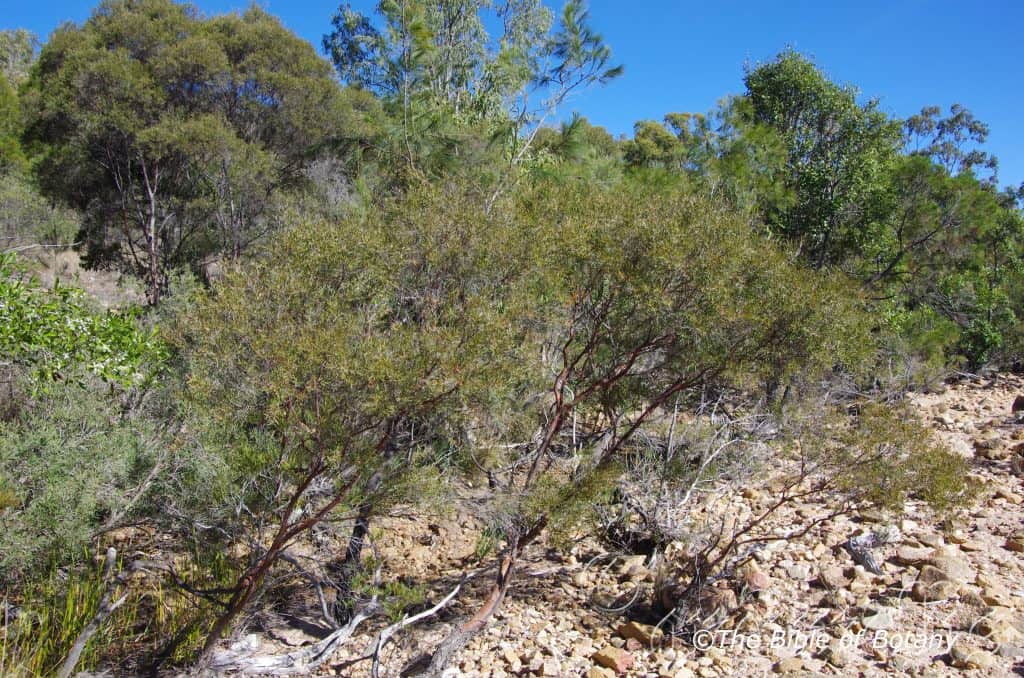
Hidden Valley Paluma Range Qld.
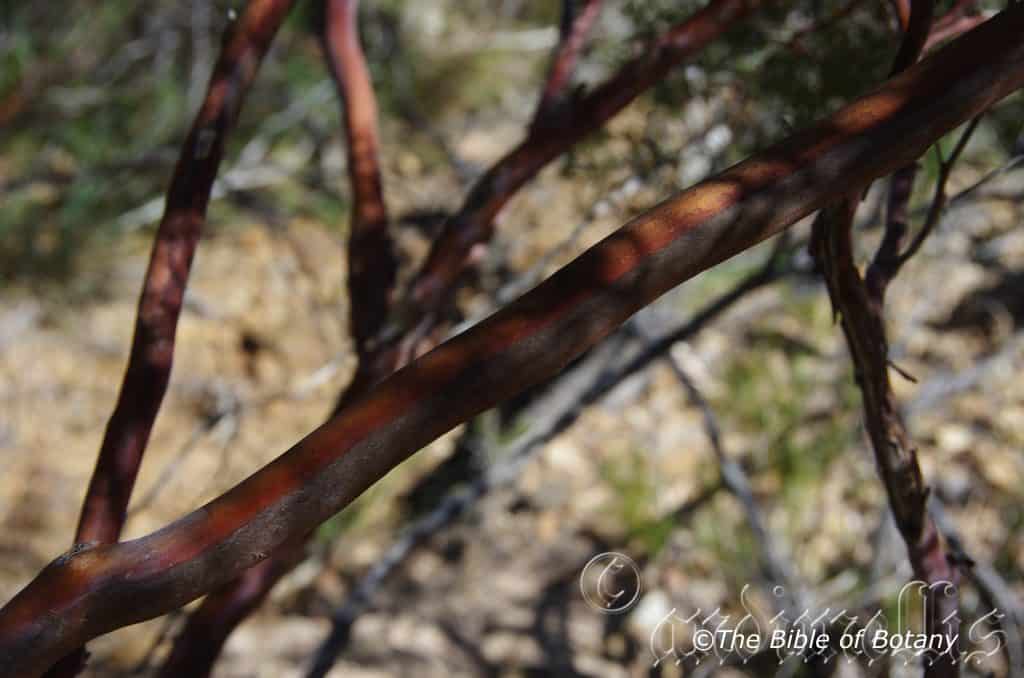
Hidden Valley Paluma Range Qld.
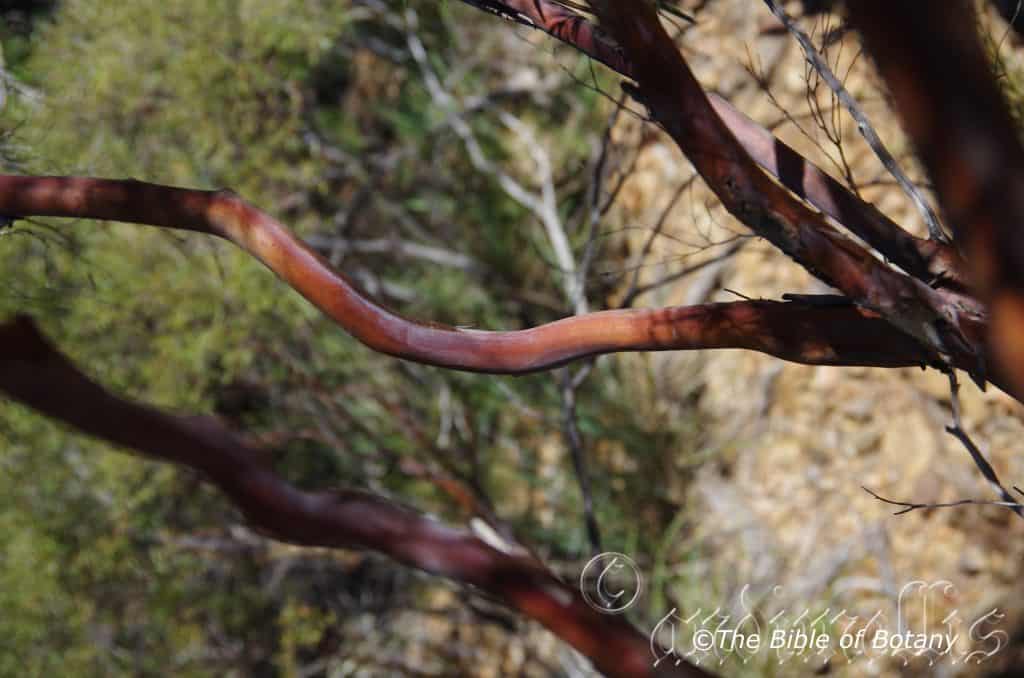
Hidden Valley Paluma Range Qld.
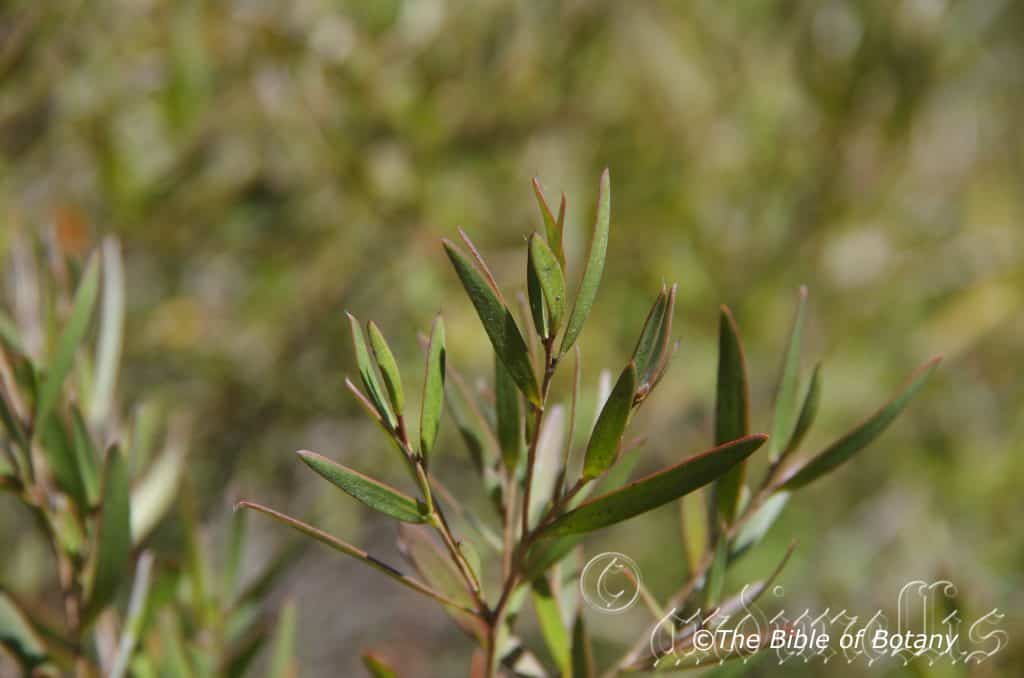
Hidden Valley Paluma Range Qld.
Leptospermum amboinense
Classification:
Unranked: Magnoliophyta
Class: Magnoliopsida
Order: Myrtales
Family: Myrtaceae
Genus: From Leptós, which is Ancient Greek for delicate, fine or slender and Spérma, which is Ancient Greek for a seed. It refers to seeds, which are rather fine and slenderer than other genus in the family.
Specie: From Ambon, which is Latinized for an island in the Moluccas, Indonesia and Anum/Ensis/Ense, which is Latin for originating from. It refers to plants, which were first discovered on in Island of Ambon in Indonesia.
Sub species:
Common Name:
Distribution:
Leptospermum amboinense is found south from Hope Vale to Bowen in far north eastern Queensland. It is found on and east of the Great Dividing Range.
It is also found in Indonesia, New Guinee and Papua.
https://avh.ala.org.au/occurrences/search?taxa=Leptospermum+amboinense#tab_mapView
Habitat Aspect Climate:
Leptospermum amboinense prefers light dappled shade to full sun. It grows in moist or dry schlerophyll forests, woodlands and open riparian zones. The altitude ranges from 5 meter ASL to 550 meters ASL.
The temperatures range from 6 degrees in August to 44 degrees in January.
The rainfalls range from lows of 900mm to an average of 3200mm.
Soil Requirements:
Leptospermum amboinense prefer to grow on sandy loams to light gravelly clays often associated with dry creek beds with subterrain water and ephemeral creeks. The soils are usually derived from decomposed granites or accumulated sands or at times screes. The soils pH ranges from 5pH to 6pH. It does not tolerate waterlogged soils however soils with capillary action that keeps the soils moist or where the roots can penetrate to deeper water reserves. Non saline soils to slightly saline soils are tolerated are as salt laden winds.
Height & Spread:
Wild Plants: 2m to 3m by 1.5m to 2.5m.
Characteristics:
Leptospermum amboinense has a fibrous rough bark that is persistent near the base of the trunk. The juvenile stems are bronze to deep reddish-brown and glabrous following the decortication of the previous season’s bark. The new growth is green and sparsely covered in fine, white tomentose hairs.
The new growth is bronze-coloured and sparsely covered in fine, white tomentose hairs. The alternate leaves of Leptospermum amboinense are narrow elliptical and measure 18mm to 30mm in length by 3.5mm to 6mm in width. The bases taper to a subsessile terete petiole, while the apexes are acute with a short needle like, pungent tip. The concolourous laminas are olive-green to grey-green and sparsely covered in long, white tomentose hairs. The laminas are flat, while the entire margins are often red to purplish. The mid vein is slightly prominent on the lower lamina and with the lateral veins are inconspicuous.
The inflorescence of Leptospermum amboinense are born solitary or at times in bundles of 2, 3, or 4 from the leaf axis. The terete pedicel measures 1mm in length. The mid yellow-green hypanthium is glabrous and measure 5mm to 6mm in diameter. The 5 pale pink, deltoid sepals are moderately covered in white ciliate hairs and measure 1mm to 1.5mm in length. The 5 glabrous, white, ovate, glabrous petals measure 5.5mm to 7mm in length by 5mm to 6mm in width. The flowers appear from late November to late January.
The 30 or 35 white filaments are fused to the rim of the hypanthia and measure 2.2mm to 2.5mm in length, while the small pinkish basifixed anthers are spherical. The pale greenish-yellow style is centrally located on the bright glossy glabrous disc. The ovary has 4 or 5 locules usually 5. The flowers appear from November to January.
Leptospermum amboinense fruit is a woody capsule that measures 3mm to 4mm in length by 4mm to 5.5mm diameter with a conical or conspicuously domed top.
Wildlife:
Leptospermum amboinense flowers are fed upon by numerous small butterflies, native bees, native beetles, wasps and flies.
Cultivation:
Leptospermum amboinense is a beautiful semi weeping to weeping small tree that grows particularly well on moisture retentive soils. It is suitable for small, medium and large gardens close to the coast or high in the mountains in warm temperate, sub-tropical or tropical gardens. As garden subjects it will grow from 3 meters to 3.5 meters in height by 2 meters to 2.5 meters in diameter. It is cold tolerant to temperatures at least as low as 4 degrees once established. It can be tip pruned if a smaller bushier shrub is required.
It is best used adjacent to small areas of bush as the fill in plant or close to paths or the house so their white flowers can be viewed regularly. It is great in larger rockeries as the feature. Here it can be planted in small groups of 2 or 3 as a standalone plant to create a harsher more barren look with other arid plants. If it is surrounded by shorter plants with fine foliages and red flowers it will dominate at the center giving an expansive look to the bed especially when it is in flower. This is one plant that benefits highly from being mass planted or planted in scattered clumps. There small size enables this to be achieved even in small and medium size gardens.
It is good for breaking up hard fence lines and walls where the foliage and semi weeping habit are a distinct advantage. Mass planted at 1.5 meter centres will form a good screen.
It is to work, long lived and therefore would make a good bonsai plant.
Propagation:
Seeds: Leptospermum amboinense seeds can be sown directly into a seed raising mix. Cover the seeds with 1mm to 2mm of fine weed free mulch and keep moist. Place the tray in a warm sunny position. When the seedlings are 20mm to 30mm tall, prick them out and plant them into 50mm native tubes using a good organic mix.
Once the seedlings reach 100mm to 150mm in height; nip the growing tips out and plant them into their permanent position.
Cuttings: Use 80mm to 120mm long semi hardwood material should be used when growing from cuttings from the present season’s growth. Take them in warmer months of the year. Remove half the leaves from the bottom section being careful not to tear the bark. Take a 10mm slice off the bark from the bottom of the cutting on one side.
1 Prepare the cutting mix by adding one third sharp clean river sand, one third peat and one third perlite. These ingredients are sterilize,
2 Select good material from non diseased plants,
3 Select semi green stems for cuttings. Look for a stem with two or three nodes,
4 Place the cutting on a flat, hard surface, and make a clean cut down one side of the cutting at the base for 10mm with a sharp sterile knife or razor blade. – This scarification of the node will increase the chances of roots emerging from this spot. Now remove all but one or two the leaves, leaving the apex leaves in tact. If the leaves are very large in proportion to the stem, cut off the apical halves.
5 Fill a saucer with water, and place a little medium strength rooting hormone into another container like a milk bottle top. Dip the node end of the cutting into the water and then into the rooting hormone. Tap off any excess hormone,
6 Use a small dipple stick or old pencil to poke a hole into the soilless potting mix. Ensure the hole is slightly larger than the stem diameter and be careful not to wipe the rooting hormone off the cuttings base, place the cuttings in a pattern ensuring the cuttings are not touching each other,
7 I like to place the pots in Plastic bags to help maintain temperature and moisture. Place in a semi shaded place like under 50mm shade cloth.
8 When the cuttings have struck, open the bag to allow air circulation for a few days to a week,
9 Once hardened off remove the cuttings from the bag and allow to further hardening for a few more days,
10 Transplant into a good potting mix to grow on.
Fertilize using seaweed, fish emulsion or organic chicken pellets soaked in water on an alternate basis. Fertilize every two months until the plants are established then twice annually in early September or March to maintain health, vitality and better flowering.
Further Comments from Readers:
Hi reader, it seems you use The Bible of Botany a lot. That’s great as we have great pleasure in bringing it to you! It’s a little awkward for us to ask, but our first aim is to purchase land approximately 1,600 hectares to link several parcels of N.P. into one at The Pinnacles NSW Australia, but we need your help. We’re not salespeople. We’re amateur botanists who have dedicated over 30 years to saving the environment in a practical way. We depend on donations to reach our goal. If you donate just $5, the price of your coffee this Sunday, We can help to keep the planet alive in a real way and continue to bring you regular updates and features on Australian plants all in one Botanical Bible. Any support is greatly appreciated. Thank you.
In the spirit of reconciliation we acknowledge the Bundjalung, Gumbaynggirr and Yaegl and all aboriginal nations throughout Australia and their connections to land, sea and community. We pay our respect to their Elders past, present and future for the pleasures we have gained.
Leptospermum arachnoides
Classification:
Unranked: Magnoliophyta
Class:Magnoliopsida
Order: Myrtales
Family: Myrtaceae
Genus: From Leptós, which is Ancient Greek for delicate, fine or slender and Spérma, which is Ancient Greek for a seed. It refers to seeds, which are rather fine and slenderer than other genus in the family.
Specie: From Aráchnē, which is Ancient Greek or Arachnida, which is Latin for a spider’s web and Eîdos/Oides, which is Ancient Greek for alike or similar to. It refers to fronds, leaves or at times other structures, which are covered in or appear as they are covered in a spider’s web.
Sub species:
Common Name:
Distribution:
Leptospermum arachnoides is found south from Stanthorpe on the Granite belt in far southern Queensland to Round Hill in the Bega Valley in far southern New South Wales. It is found on and east of the Great Dividing Range except for a small population between Parkes and Forbes.
https://avh.ala.org.au/occurrences/search?taxa=Leptospermum+arachnoides#tab_mapView
Habitat Aspect Climate:
Leptospermum arachnoides prefers light dappled shade to full sun. It grows in moist schlerophyll forests, moist Eucalyptus forests moist woodlands, heaths in shallow depressions along drainage lines or seepages. The altitude ranges from 20 meter ASL to 1150 meters ASL.
The temperatures range from minus 4 degrees in August to 38 degrees in January.
The rainfalls range from lows of 900mm to an average of 1600mm.
Soil Requirements:
Leptospermum arachnoides prefer to grow on sandy loams to light gravelly clays associated with skeletal rocky terrain. The soils are usually derived from decomposed granites or sandstones. The soils pH ranges from 5pH to 6pH. It does not tolerate waterlogged soils. Non saline soils to moderately saline soils are tolerated are as salt laden winds.
Height & Spread:
Wild Plants: 1m to 2.5m by 1.5m to 2.5m.
Characteristics:
It grows as a medium shrub with rough, flaky bark that is grey-brown and often peels in flaky layers and is closely appressed on the trunk and lower branches. The bark decorticates annually. The mid green to deep carmine-pink new growth is covered in white caduceous puberulent hairs.
Leptospermum arachnoides’s clustered growing out to alternate, narrow elliptical, narrow lanceolate or narrow oblanceolate leaves measure 10mm to 20mm in length by 1mm to 3.5mm in width. The bases taper to a broad flattened short petiole to 0.5mm in length while the apexes taper to a narrow acute pungent tip. The concolourous laminas are olive-green and sparsely covered in caduceous, white puberulent hairs. The laminas are flat or gently recurve upwards slightly from the mid vein to the margins, decurve slightly on the apical third and are spirally twist while the margins are entire. The mid vein is slightly prominent on the lower lamina and is not visible on the upper lamina.
The inflorescence are born solitary from the leaf axis and measure 9mm to 11mm in diameter. The mid green hypanthium is covered in white puberulent hairs and measure 2mm to 2.5mm in length. The pedicels are usually sessile or at times measure 0mm to 0.5mm in length. The 5 greenish-maroon sepals are covered in white puberulent hairs and measure 2mm to 2.4mm in length. The 5 glabrous, white broad spathulate petals measure 2.5mm to 4mm in length by 2.5mm to 4mm in width.
The 25 white filaments are fused to the rim of the rim of the hypanthia and measure 2mm to 2.2mm in length. The green style is centrally located on the bright glossy green disc. The ovary has 4 or 5 locules usually 5.The flowers appear from November to January.
The fruit is a small conical capsule. The 5 valve capsules measure 5mm to 8mm in diameter at the rim. The mid green capsules are covered in white puberulent hairs which eventually peel off to reveal the grey woody. The exserted valves are spreading.
Wildlife:
The flowers are fed upon by numerous small butterflies, native bees, native beetles, wasps and flies.
Cultivation:
Leptospermum arachnoides are beautiful semi weeping to weeping medium shrubs that grow particularly well on moisture problem soils. It is suitable for small, medium and large gardens close to the coast or high in the mountains in warm temperate, sub-tropical or tropical gardens. As garden subjects they will grow from 1.5 meters to 2 meters in height by 1.5 meters to 2.5 meters in diameter. It is cold tolerant to temperatures at least as low as minus 4 degrees once established. They can be tip pruned if a smaller bushier shrub is required.
It is best used adjacent to small areas of bush as the fill in plant or close to paths or the house so their white flowers can be viewed regularly. It is great in larger rockeries as the feature. Here they can be planted in small groups of 2 or 3 as a standalone plant to create a harsher more barren look with other arid plants. If it is surrounded by shorter plants with fine foliages and red flowers they will dominate at the center giving an expansive look to the bed especially when it is in flower. This is one plant that benefits highly from being mass planted or planted in scattered clumps. There small size enables this to be achieved even in small and medium size gardens.
It makes a good bonsai plant and is easy to work with and long lived.
Propagation:
Seeds: The seeds with chaff can be sown directly into a seed raising mix. Cover the seeds with 1mm to 2mm of fine weed free mulch and keep moist. Place the tray in a warm sunny position. When the seedlings are 20mm to 30mm tall, prick them out and plant them into 50mm native tubes using a good organic mix.
Once the seedlings reach 100mm to 150mm in height; nip the growing tips out and plant them into their permanent position.
Cuttings: Use 100mm to 120mm long semi hardwood cuttings from the present season’s growth. Take them in warmer months of the year. Remove half the leaves from the bottom section being careful not to tear the bark.
1 Prepare the cutting mix by adding one third sharp clean river sand, one third peat and one third perlite. These ingredients are sterilize,
2 Select good material from non diseased plants,
3 Select semi green stems for cuttings. Look for a stem with two or three nodes,
4 Place the cutting on a flat, hard surface, and make a clean cut down one side of the cutting at the base for 10mm with a sharp sterile knife or razor blade. – This scarification of the node will increase the chances of roots emerging from this spot. Now remove all but one or two the leaves, leaving the apex leaves in tact. If the leaves are very large in proportion to the stem, cut off the apical halves.
5 Fill a saucer with water, and place a little medium strength rooting hormone into another container like a milk bottle top. Dip the node end of the cutting into the water and then into the rooting hormone. Tap off any excess hormone,
6 Use a small dipple stick or old pencil to poke a hole into the soilless potting mix. Ensure the hole is slightly larger than the stem diameter and be careful not to wipe the rooting hormone off the cuttings base, place the cuttings in a pattern ensuring the cuttings are not touching each other,
7 I like to place the pots in Plastic bags to help maintain temperature and moisture. Place in a semi shaded place like under 50mm shade cloth.
8 When the cuttings have struck, open the bag to allow air circulation for a few days to a week,
9 Once hardened off remove the cuttings from the bag and allow to further hardening for a few more days,
10 Transplant into a good potting mix to grow on.
Fertilize using seaweed, fish emulsion or organic chicken pellets soaked in water on an alternate basis. Fertilize every two months until the plants are established then twice annually in early September or March to maintain health, vitality and better flowering.
Further Comments from Readers:
Hi reader, it seems you use The Bible of Botany a lot. That’s great as we have great pleasure in bringing it to you! It’s a little awkward for us to ask, but our first aim is to purchase land approximately 1,600 hectares to link several parcels of N.P. into one at The Pinnacles NSW Australia, but we need your help. We’re not salespeople. We’re amateur botanists who have dedicated over 30 years to saving the environment in a practical way. We depend on donations to reach our goal. If you donate just $5, the price of your coffee this Sunday, We can help to keep the planet alive in a real way and continue to bring you regular updates and features on Australian plants all in one Botanical Bible. Any support is greatly appreciated. Thank you.
In the spirit of reconciliation we acknowledge the Bundjalung, Gumbaynggirr and Yaegl and all aboriginal nations throughout Australia and their connections to land, sea and community. We pay our respect to their Elders past, present and future for the pleasures we have gained.
Leptospermum benwellii
Classification:
Unranked: Eudicots
Class:Rosids
Order: Myrtales
Family: Myrtaceae
Genus: From Leptós, which is Ancient Greek for delicate, fine or slender and Spérma, which is Ancient Greek for a seed. It refers to seeds, which are rather fine and slenderer than other genus in the family.
Specie: Is named in honour of Andrew Benwell, who is an Australian botanist and expert in seed generation under variable conditions including drought, fire, and habitat with various plant colonies. He discovered the species while on research.
Sub species:
Common Name:
Distribution:
Leptospermum benwellii is restricted to a small area on Mount Munningyundo in the Nymboidea National Park in New South Wales.
https://avh.ala.org.au/occurrences/search?taxa=Leptospermum+benwellii#tab_mapView
Habitat Aspect Climate:
Leptospermum benwellii prefers light dappled shade to full shade. It grows on steep slopes in open scrubland communities with Acacia falciformis, Eucalyptus campanulata and Eucalyptus notabilis. The altitude ranges from 950 meter ASL to 1000 meters ASL.
The temperatures range from minus 2 degree in August to 38 degrees in January.
The rainfalls range from lows of 1600mm to an average of 2035mm.
Soil Requirements:
Leptospermum benwellii prefers light gravelly clays and skeletal rocky loams. The soils are usually derived from partially decomposed brown basalt. The soils pH ranges from 5pH to 5.5pH. It tolerates seasonal waterlogged soils. Non saline soils to moderately saline soils are tolerated.
Height & Spread:
Wild Plants: 2m to 3m by 3m to 4m.
Characteristics: s grows as a medium to tall erect shrub with grey-brown bark that decorticates
Leptospermum benwellii’ annually in long ribbons revealing an orange-green layer beneath the outer bark. The branchlets are covered with conspicuous stem flanges. The new growth is sparsely covered in white puberulent hairs especially along the stem flanges.
Leptospermum benwellii’s alternate, narrow elliptical leaves measure 18mm to 25mm in length by 2.7mm to 5mm in width. The bases taper to the rather indistinguishable petioles which are sessile or measure 0.5mm in length while the apexes are obtuse or mucronate. The concolourous laminas are olive-green and covered in caduceous, soft, white puberulent hairs. The laminas are flat while the margins are entire.
The inflorescences of Leptospermum benwellii are born in small clusters from the leaf axils. There are 1 to 4 flowers in a cluster. The mid green hypanthium measure 3mm to 3.5mm in length. The pedicels measure 1mm to 1.3mm in length. There are 1 to 3 monad bracts. The caduceous floral bracts are shed prior to anthesis. The 5 obtuse sepals are sparsely covered in white puberulent hairs and covered in white ciliate hairs and measure 1.2mm to 1.4mm in length. The 5 white petals are circular and measure 2.6mm to 2.7mm in length. The bracts, sepals and petals are covered in minute oil glands.
The 20 white versatile stamens are fused to the rim of the hypanthia and measure 1.5mm to 2mm in length. The green capitate style is centrally located on the bright glossy green disc. The flowers appear in November.
Leptospermum benwellii’s fruits are small, thin walled, campanulate to hemispherical capsules. The 3 locular capsules measure 2.5mm to 4.7mm in diameter at the rim. The mid olive-green capsules turn grey when ripe. The sepals are persistent on the ripe fruits. The pale brown seeds are obovoid to ellipsoidal, reticulate and measure 0.8mm to 0.9 mm in length.
Wildlife:
Leptospermum benwellii’s is unknown to the author.
Cultivation:
Leptospermum benwellii are beautiful semi weeping to weeping medium shrubs that grow particularly well on moisture problem soils. It is suitable for small, medium and large gardens close to the coast or high in the mountains in warm temperate, sub-tropical or tropical gardens. As garden subjects they will grow from 2 meters to 2.5 meters in height by 2.5 meters to 4 meters in diameter. It is cold tolerant to temperatures at least as low as minus 4 degrees once established. They can be tip pruned if a smaller bushier shrub is required.
It is best used adjacent to small areas of bush as the fill in plant or close to paths or the house so their white flowers can be viewed regularly. It is great in larger rockeries as the feature. Here they can be planted in small groups of 2 or 3 as a standalone plant to create a harsher more barren look with other arid plants. If it is surrounded by shorter plants with fine foliages and red flowers they will dominate at the center giving an expansive look to the bed especially when it is in flower. This is one plant that benefits highly from being mass planted or planted in scattered clumps. There small size enables this to be achieved even in small and medium size gardens.
It makes a good bonsai plant and is easy to work with and long lived.
Propagation:
Seeds: Leptospermum benwellii seeds can be sown directly into a seed raising mix. Cover the seeds with 1mm to 2mm of fine weed free mulch and keep moist. Place the tray in a warm sunny position. When the seedlings are 20mm to 30mm tall, prick them out and plant them into 50mm native tubes using a good organic mix.
Once the seedlings reach 100mm to 150mm in height; nip the growing tips out and plant them into their permanent position.
Cuttings: Use 100mm to 120mm long semi hardwood cuttings from the present season’s growth. Take them in warmer months of the year. Remove half the leaves from the bottom section being careful not to tear the bark.
1 Prepare the cutting mix by adding one third sharp clean river sand, one third peat and one third perlite. These ingredients are sterilize,
2 Select good material from non diseased plants,
3 Select semi green stems for cuttings. Look for a stem with two or three nodes,
4 Place the cutting on a flat, hard surface, and make a clean cut down one side of the cutting at the base for 10mm with a sharp sterile knife or razor blade. – This scarification of the node will increase the chances of roots emerging from this spot. Now remove all but one or two the leaves, leaving the apex leaves in tact. If the leaves are very large in proportion to the stem, cut off the apical halves.
5 Fill a saucer with water, and place a little medium strength rooting hormone into another container like a milk bottle top. Dip the node end of the cutting into the water and then into the rooting hormone. Tap off any excess hormone,
6 Use a small dipple stick or old pencil to poke a hole into the soilless potting mix. Ensure the hole is slightly larger than the stem diameter and be careful not to wipe the rooting hormone off the cuttings base, place the cuttings in a pattern ensuring the cuttings are not touching each other,
7 I like to place the pots in Plastic bags to help maintain temperature and moisture. Place in a semi shaded place like under 50mm shade cloth.
8 When the cuttings have struck, open the bag to allow air circulation for a few days to a week,
9 Once hardened off remove the cuttings from the bag and allow to further hardening for a few more days,
10 Transplant into a good potting mix to grow on.
Fertilize using seaweed, fish emulsion or organic chicken pellets soaked in water on an alternate basis. Fertilize every two months until the plants are established then twice annually in early September or March to maintain health, vitality and better flowering.
Further Comments from Readers:
Hi reader, it seems you use The Bible of Botany a lot. That’s great as we have great pleasure in bringing it to you! It’s a little awkward for us to ask, but our first aim is to purchase land approximately 1,600 hectares to link several parcels of N.P. into one at The Pinnacles NSW Australia, but we need your help. We’re not salespeople. We’re amateur botanists who have dedicated over 30 years to saving the environment in a practical way. We depend on donations to reach our goal. If you donate just $5, the price of your coffee this Sunday, We can help to keep the planet alive in a real way and continue to bring you regular updates and features on Australian plants all in one Botanical Bible. Any support is greatly appreciated. Thank you.
In the spirit of reconciliation we acknowledge the Bundjalung, Gumbaynggirr and Yaegl and all aboriginal nations throughout Australia and their connections to land, sea and community. We pay our respect to their Elders past, present and future for the pleasures we have gained.
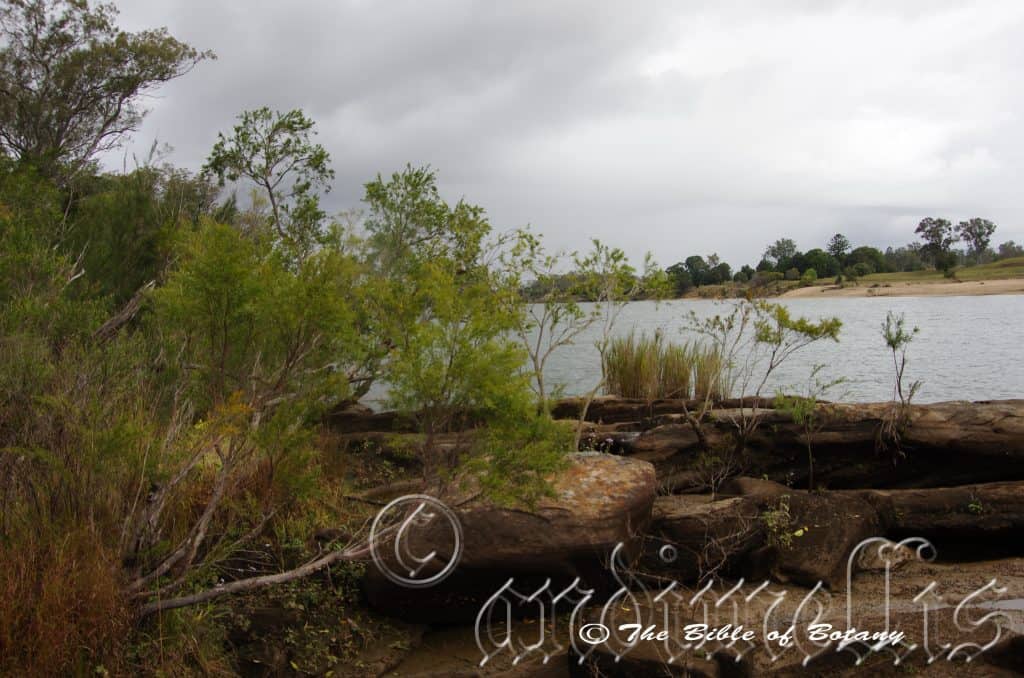
Clarence River Molle Rocks NSW
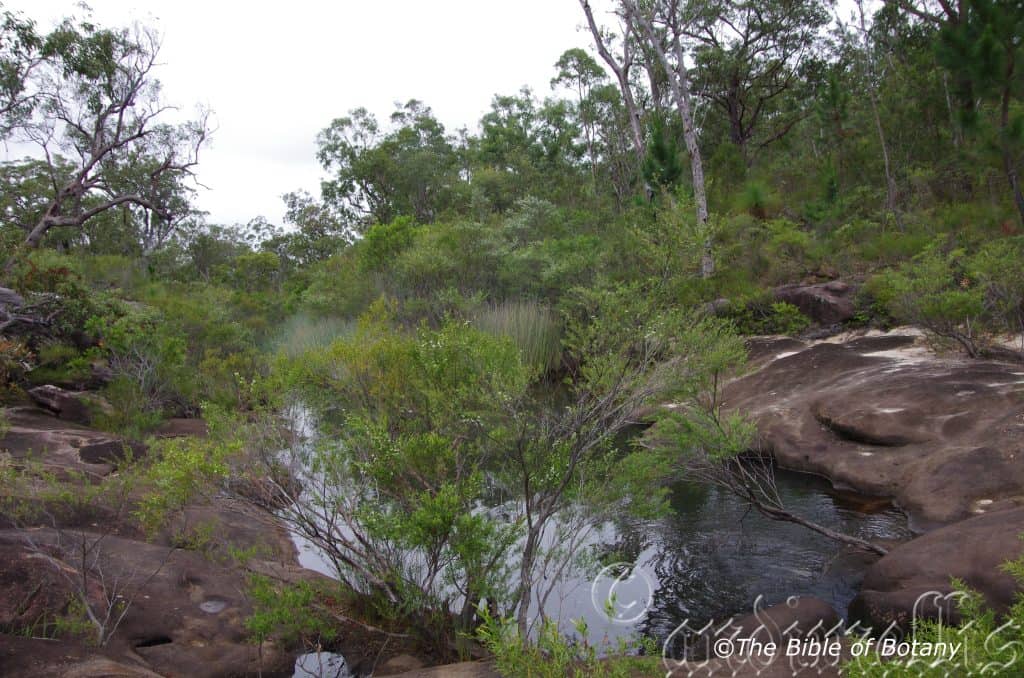
Rocky Creek NSW
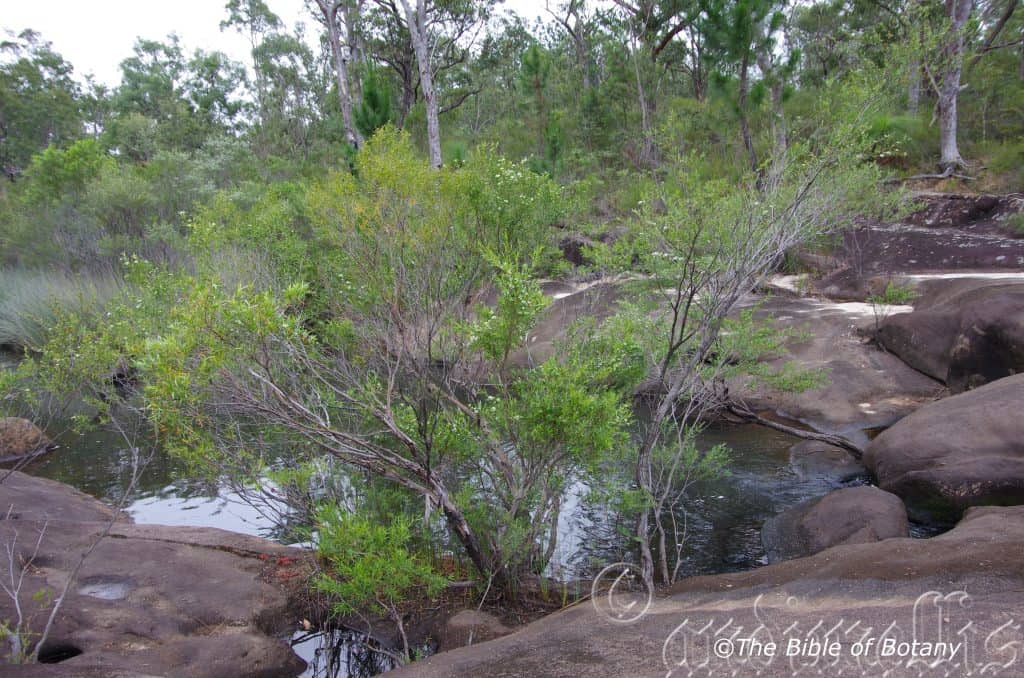
Rocky Creek NSW
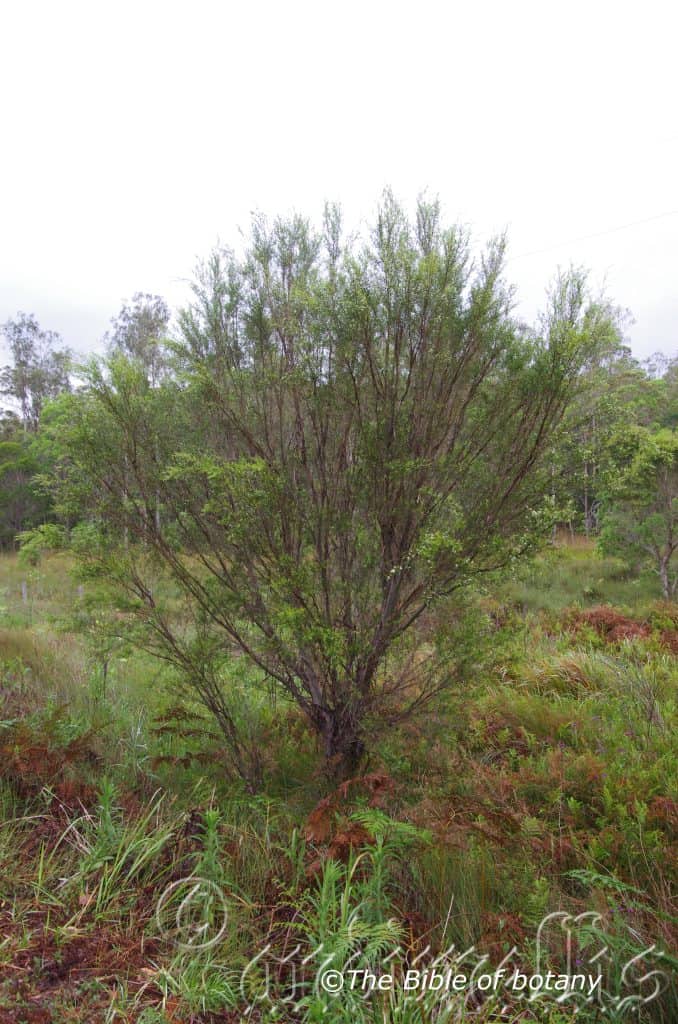
The Pinnacles NSW
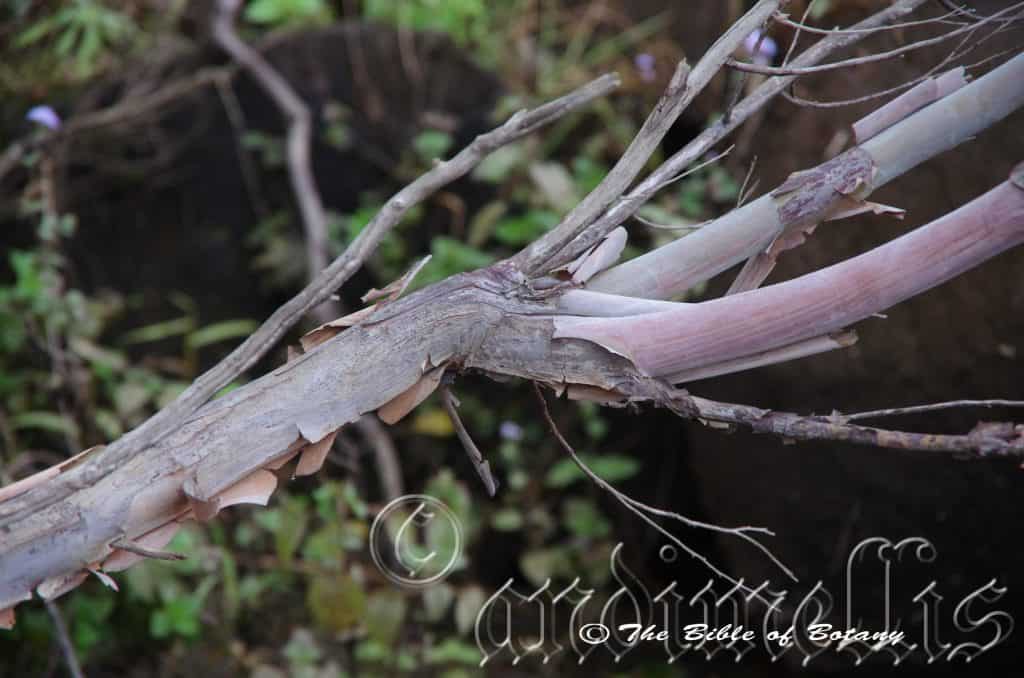
Clarence River Molle Rocks NSW
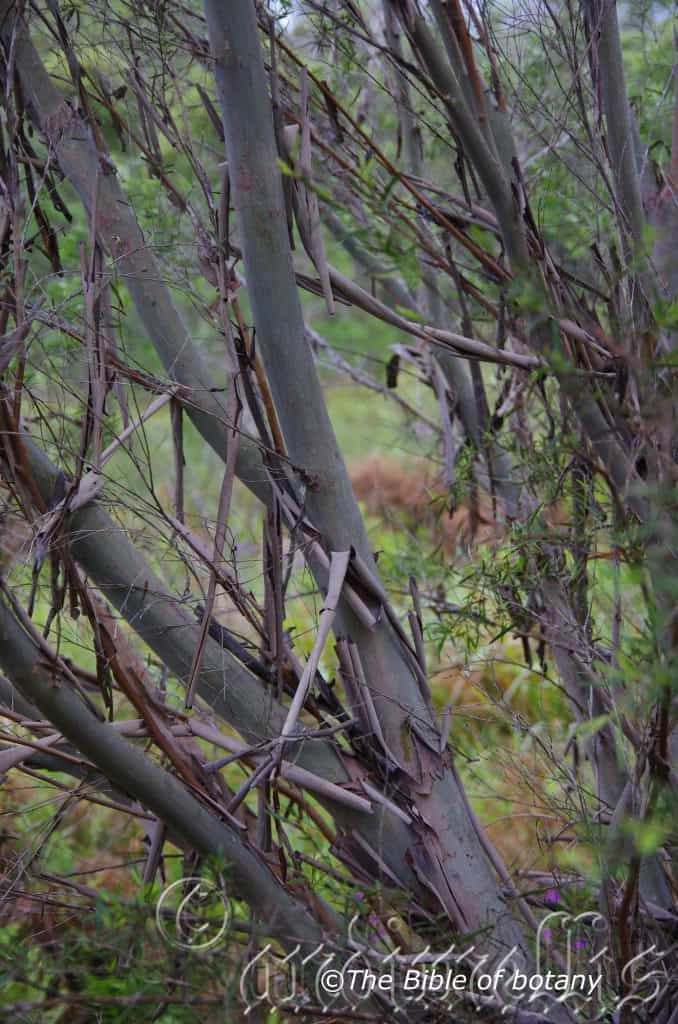
The Pinnacles NSW
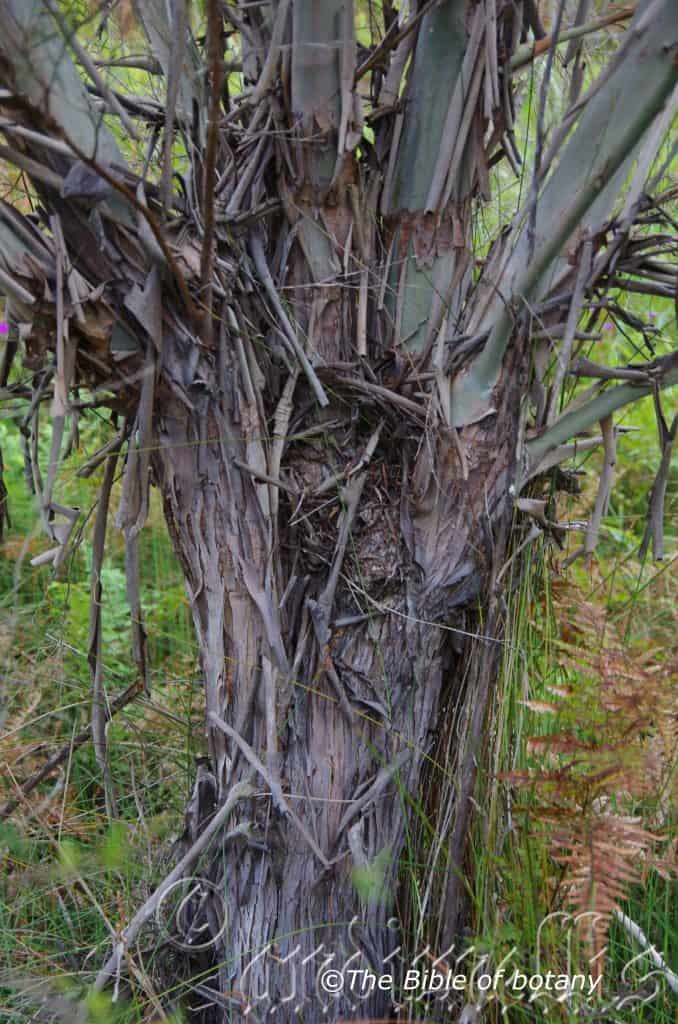
The Pinnacles NSW
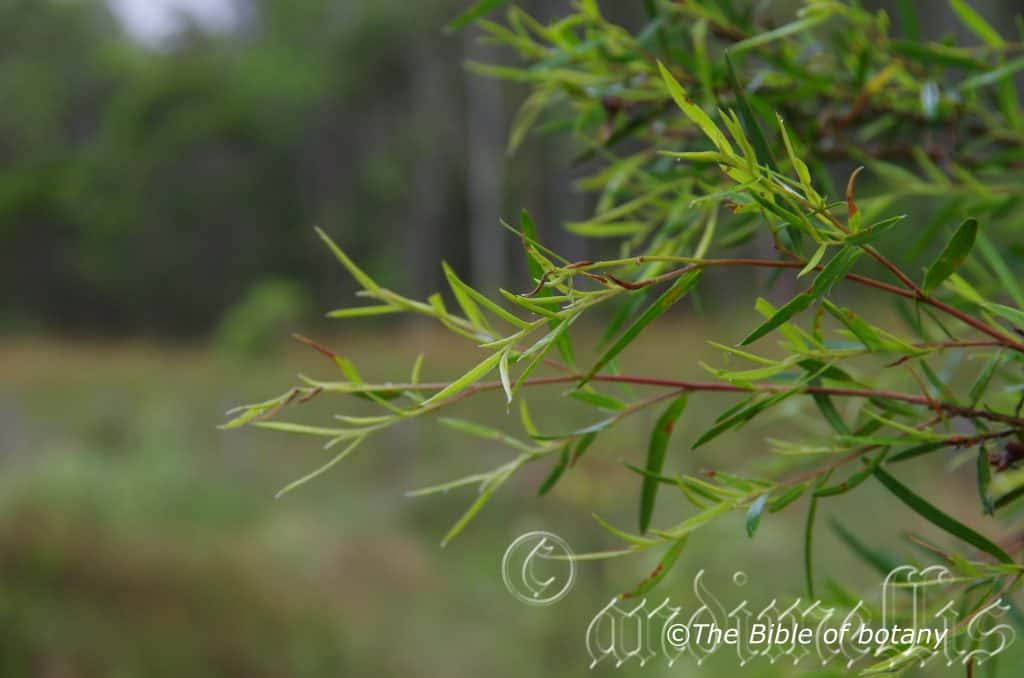
Rocky Creek NSW
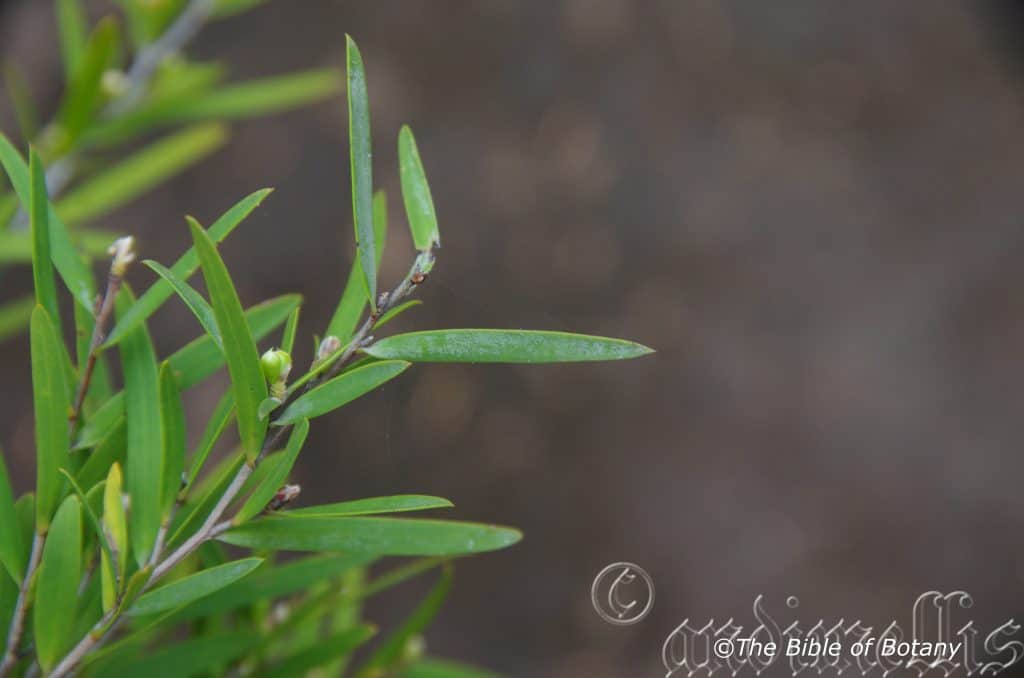
Rocky Creek NSW
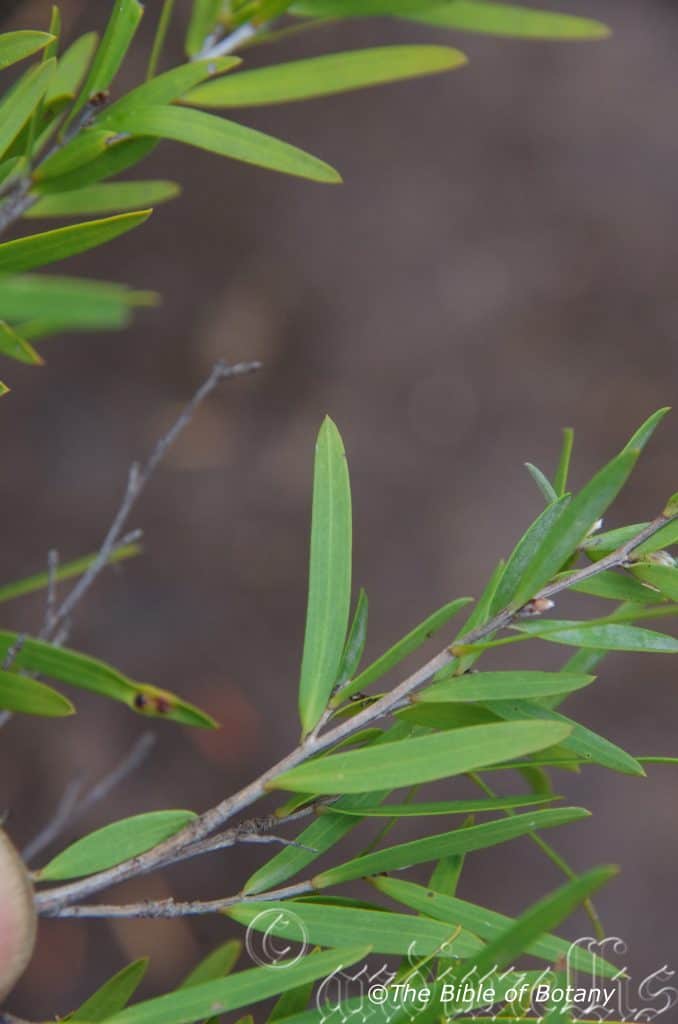
Rocky Creek NSW
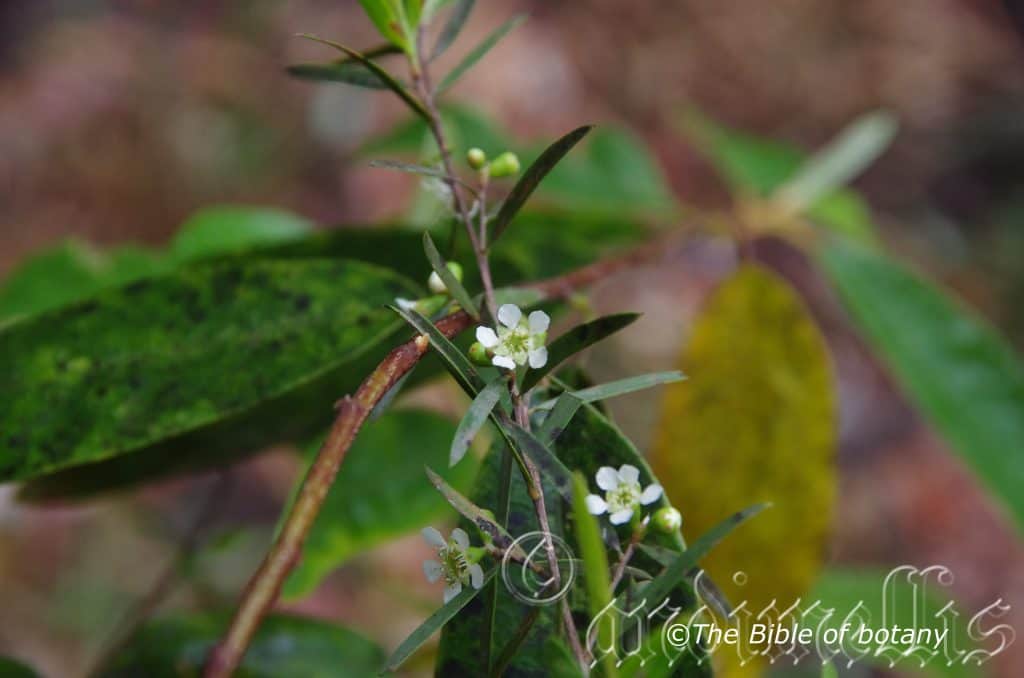
The Pinnacles NSW
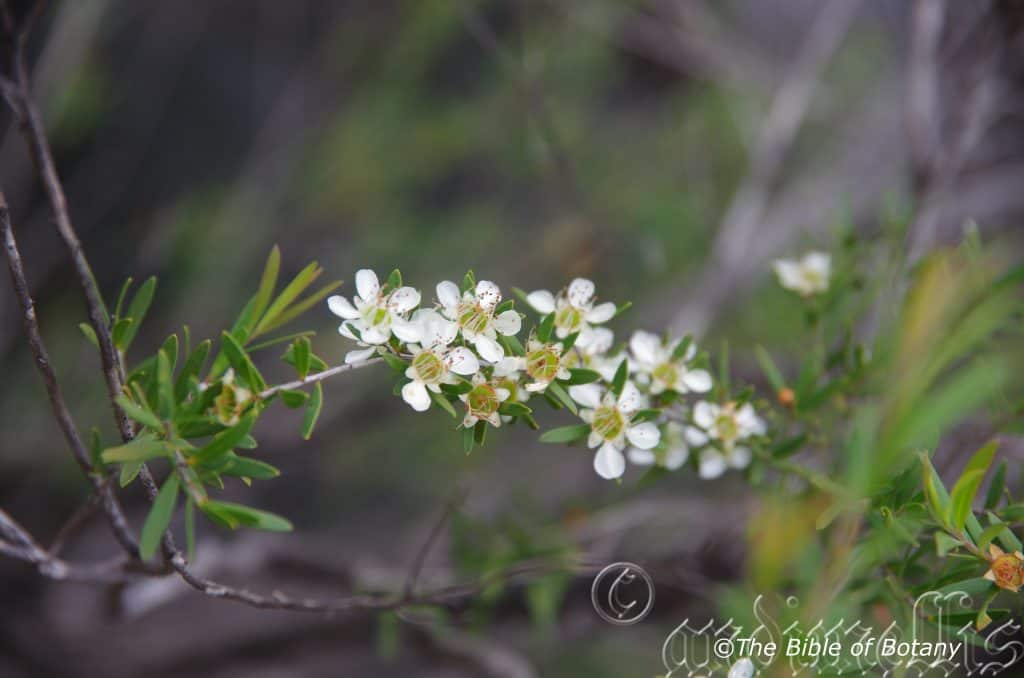
Rocky Creek NSW
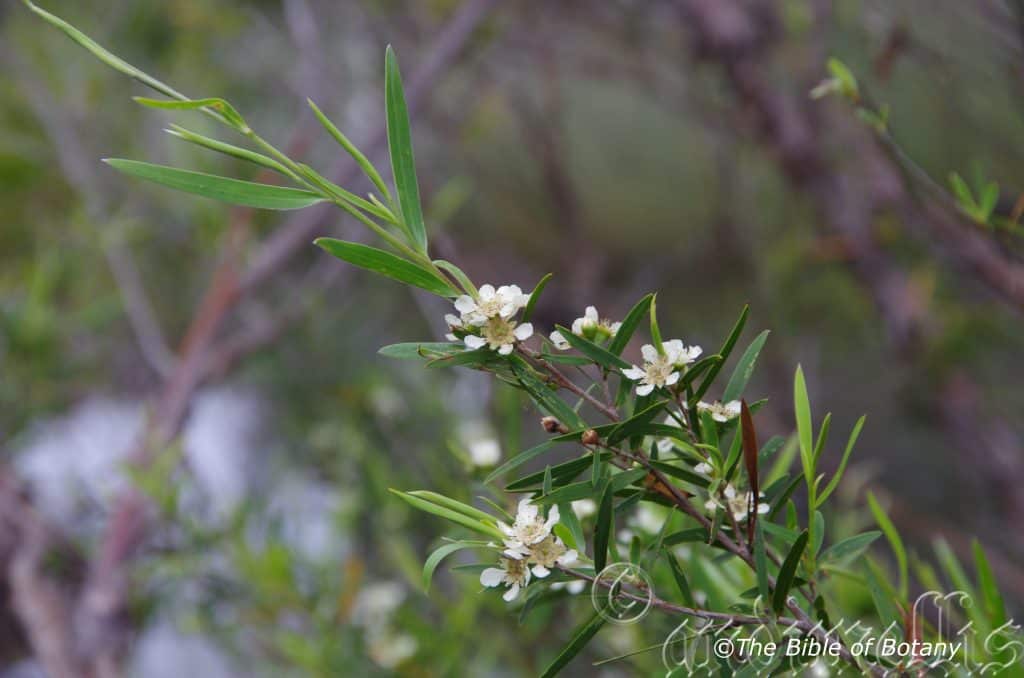
Rocky Creek NSW
Leptospermum brachyandra
Classification:
Unranked: Magnoliophyta
Class:Magnoliopsida
Order: Myrtales
Family: Myrtaceae
Genus: From Leptós, which is Ancient Greek for delicate, fine or slender and Spérma, which is Ancient Greek for a seed. It refers to seeds, which are rather fine and slenderer than other genus in the family.
Specie: From Brachus, which is Ancient Greek for short and Andros, which is Ancient Greek for a man. It refers to the stamens, which are much shorter when compared to the other species in the genus.
Sub species:
Common Name: Weeping Tea Tree.
Distribution:
Leptospermum brachyandra is found south from Cairns in north eastern Queensland to Port Macquarrie in central coastal New South Wales
.https://avh.ala.org.au/occurrences/search?taxa=Leptospermum+brachyandra#tab_mapView
Habitat Aspect Climate:
Leptospermum brachyandra prefers light dappled shade to full shade. It grows in dry schlerophyll forests to wet Eucalyptus forests along creek beds. The altitude ranges from 10 meter ASL to 960 meters ASL.
The temperatures range from 2 degree in August to 38 degrees in January.
The rainfalls range from lows of 500mm to an average of 1300mm however this is of little consequence as the plants derive most their moisture from the creeks or streams they grow along.
Soil Requirements:
Leptospermum brachyandra prefers to grow on better quality sandy loams to light gravelly clays and skeletal rocky terrain. The soils are usually derived from decomposed granites. The soils pH ranges from 5pH to 6pH. It tolerates waterlogged soils. Non saline soils to moderately saline soils are tolerated.
Height & Spread:
Wild Plants: 5m to 6m by 3m to 4.5m.
Characteristics:
Leptospermum brachyandra’s grows as a small tree with green-brown to greenish-grey flaky often hangs on the trunk and lower branches in long strips. The bark decorticates annually. The pale green to creamy green or pink branchlets are densely covered in caduceous white pubescent hairs at the apex.
Leptospermum brachyandra’s alternate, linear to narrow lanceolate leaves measure 25mm to 50mm in length by 2mm to 4mm in width. The bases taper to a short petiole which measure0mm to 0.5mm in length while the apexes are acute to acuminate and slightly pungent. The concolourous laminas are sea-green and covered in caduceus, white puberulent hairs. The margins are entire and curve slightly upwards from the mid vein. The mid vein is slightly prominent on the lower lamina and is not visible on the upper lamina.
The inflorescences of Leptospermum brachyandra are born in small clusters from the leaf axis and measure 7mm to 8mm in diameter. There are 3 to 7 flowers in a cluster. The pale green hypanthium measure 3mm to 3.5mm in length. The pedicels measure less than 0.5mm in length. The 5 sepals are cream to pale green and measure 1mm in length. It is covered in white ciliate hairs on the margins. The 5 glabrous petals are circular and measure 2mm to 3mm in length by 2.5mm to 3.5mm wide.
The 20 white stamens are fused to the rim of the hypanthia and measure 1mm to 1.3mm in length. It is fused to the inner rim of the hypanthia. The green style is centrally located on the bright glossy green disc. The flowers appear from November to January.
Leptospermum brachyandra’s fruit is a small conical capsule. The 3 ocular capsules measure 4mm to 4.2mm in diameter at the rim. The pale blue green capsules turn grey on ripening. The inserted valves become slightly exerted only as the seeds are being discarded.
Wildlife:
Leptospermum brachyandra’s flowers are fed upon by numerous small butterflies, native bees, native beetles, wasps and flies.
Cultivation:
Leptospermum brachyandra are beautiful semi weeping to weeping medium shrubs that grow particularly well on moisture problem soils. It is suitable for small, medium and large gardens close to the coast or high in the mountains in warm temperate, sub-tropical or tropical gardens. As garden subjects they will grow from 2 meters to 2.5 meters in height by 2.5 meters to 4 meters in diameter. It is cold tolerant to temperatures at least as low as minus 4 degrees once established. It can be tip pruned if a smaller bushier shrub is required.
It is best used adjacent to small areas of bush as the fill in plant or close to paths or the house so their white flowers can be viewed regularly. It is great in larger rockeries as the feature. Here they can be planted in small groups of 2 or 3 as a standalone plant to create a harsher more barren look with other arid plants. If it is surrounded by shorter plants with fine foliages and red flowers they will dominate at the center giving an expansive look to the bed especially when it is in flower. This is one plant that benefits highly from being mass planted or planted in scattered clumps. There small size enables this to be achieved even in small and medium size gardens.
It makes a good bonsai plant and is easy to work with and long lived.
Propagation:
Seeds: Leptospermum brachyandra seeds can be sown directly into a seed raising mix. Cover the seeds with 1mm to 2mm of fine weed free mulch and keep moist. Place the tray in a warm sunny position or beneath 30mm shade cloth.
When the seedlings are 20mm to 30mm tall, prick them out and plant them into 50mm native tubes using a good organic mix.
Once the seedlings reach 100mm to 150mm in height; nip the growing tips out and plant them into their permanent position.
Cuttings: Use 100mm to 120mm long semi hardwood cuttings from the present season’s growth. Take them in warmer months of the year. Remove half the leaves from the bottom section being careful not to tear the bark.
1 Prepare the cutting mix by adding one third sharp clean river sand, one third peat and one third perlite. These ingredients are sterilize,
2 Select good material from non diseased plants,
3 Select semi green stems for cuttings. Look for a stem with two or three nodes,
4 Place the cutting on a flat, hard surface, and make a clean cut down one side of the cutting at the base for 10mm with a sharp sterile knife or razor blade. – This scarification of the node will increase the chances of roots emerging from this spot. Now remove all but one or two the leaves, leaving the apex leaves in tact. If the leaves are very large in proportion to the stem, cut off the apical halves.
5 Fill a saucer with water, and place a little medium strength rooting hormone into another container like a milk bottle top. Dip the node end of the cutting into the water and then into the rooting hormone. Tap off any excess hormone,
6 Use a small dipple stick or old pencil to poke a hole into the soilless potting mix. Ensure the hole is slightly larger than the stem diameter and be careful not to wipe the rooting hormone off the cuttings base, place the cuttings in a pattern ensuring the cuttings are not touching each other,
7 I like to place the pots in Plastic bags to help maintain temperature and moisture. Place in a semi shaded place like under 50mm shade cloth.
8 When the cuttings have struck, open the bag to allow air circulation for a few days to a week,
9 Once hardened off remove the cuttings from the bag and allow to further hardening for a few more days,
10 Transplant into a good potting mix to grow on.
Fertilize using seaweed, fish emulsion or organic chicken pellets soaked in water on an alternate basis. Fertilize every two months until the plants are established then twice annually in early September or March to maintain health, vitality and better flowering.
Further Comments from Readers:
Hi reader, it seems you use The Bible of Botany a lot. That’s great as we have great pleasure in bringing it to you! It’s a little awkward for us to ask, but our first aim is to purchase land approximately 1,600 hectares to link several parcels of N.P. into one at The Pinnacles NSW Australia, but we need your help. We’re not salespeople. We’re amateur botanists who have dedicated over 30 years to saving the environment in a practical way. We depend on donations to reach our goal. If you donate just $5, the price of your coffee this Sunday, We can help to keep the planet alive in a real way and continue to bring you regular updates and features on Australian plants all in one Botanical Bible. Any support is greatly appreciated. Thank you.
In the spirit of reconciliation we acknowledge the Bundjalung, Gumbaynggirr and Yaegl and all aboriginal nations throughout Australia and their connections to land, sea and community. We pay our respect to their Elders past, present and future for the pleasures we have gained.
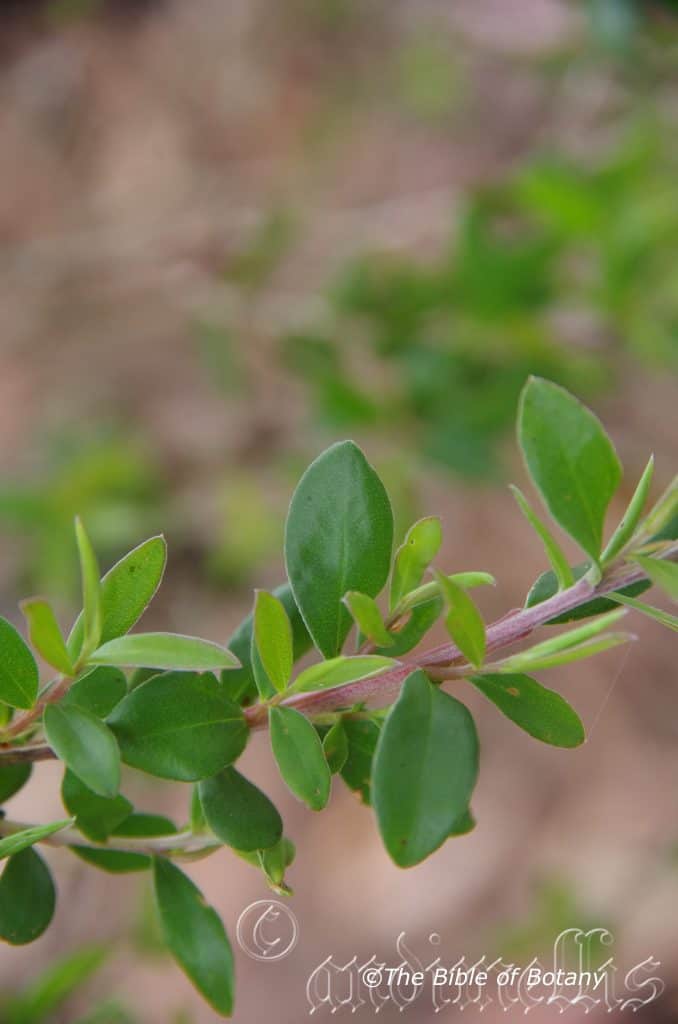
Ebor National Park’s Depot NSW
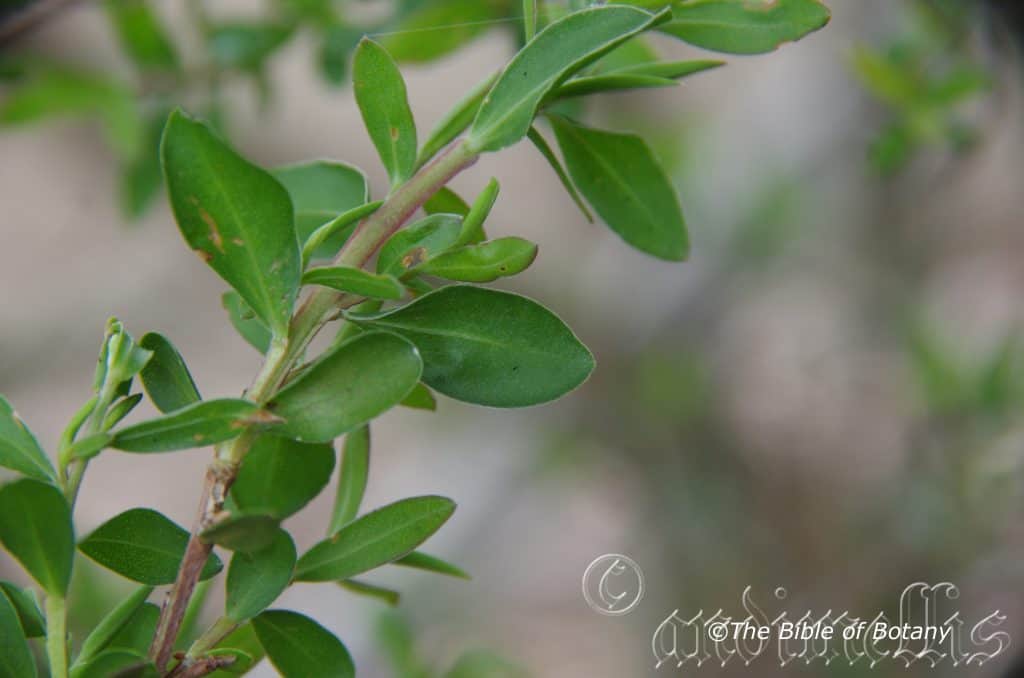
Ebor National Park’s Depot NSW
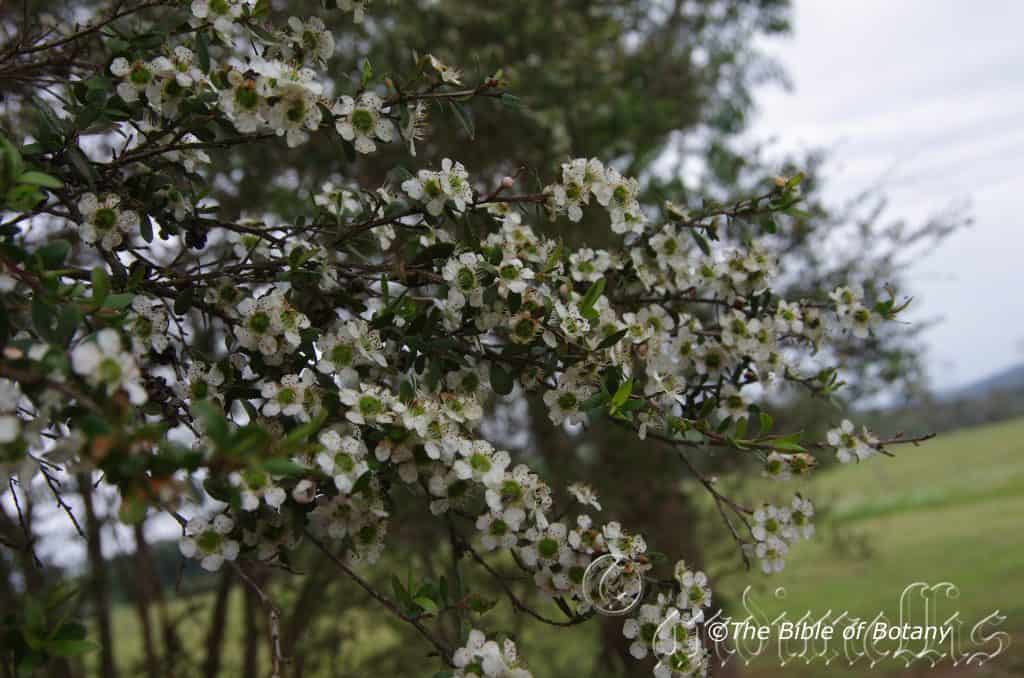
Ebor National Park’s Depot NSW
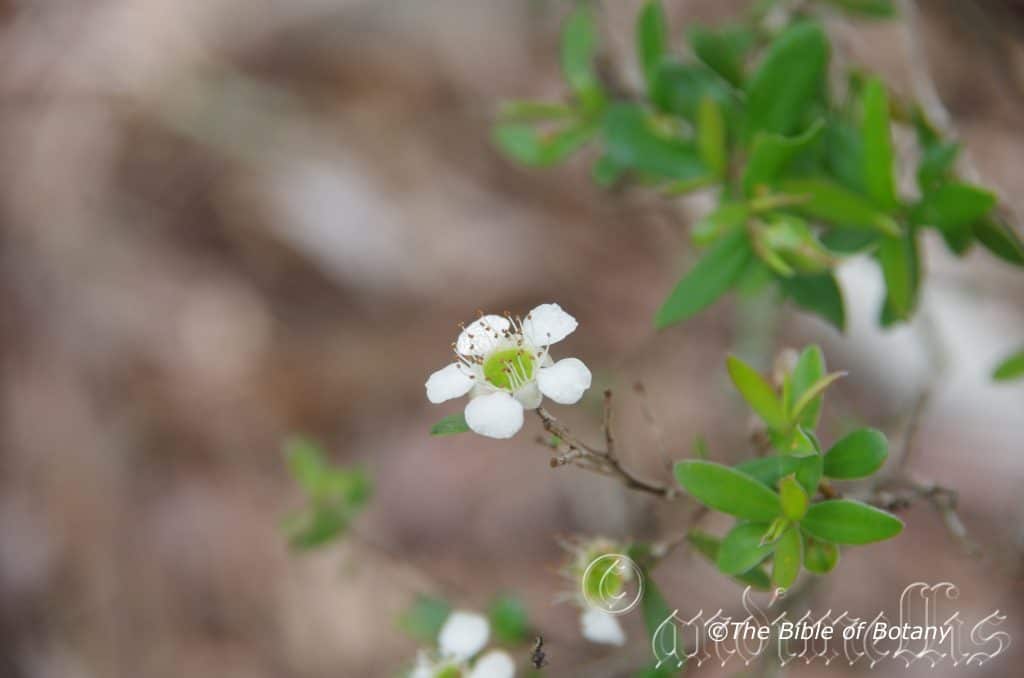
Ebor National Park’s Depot NSW
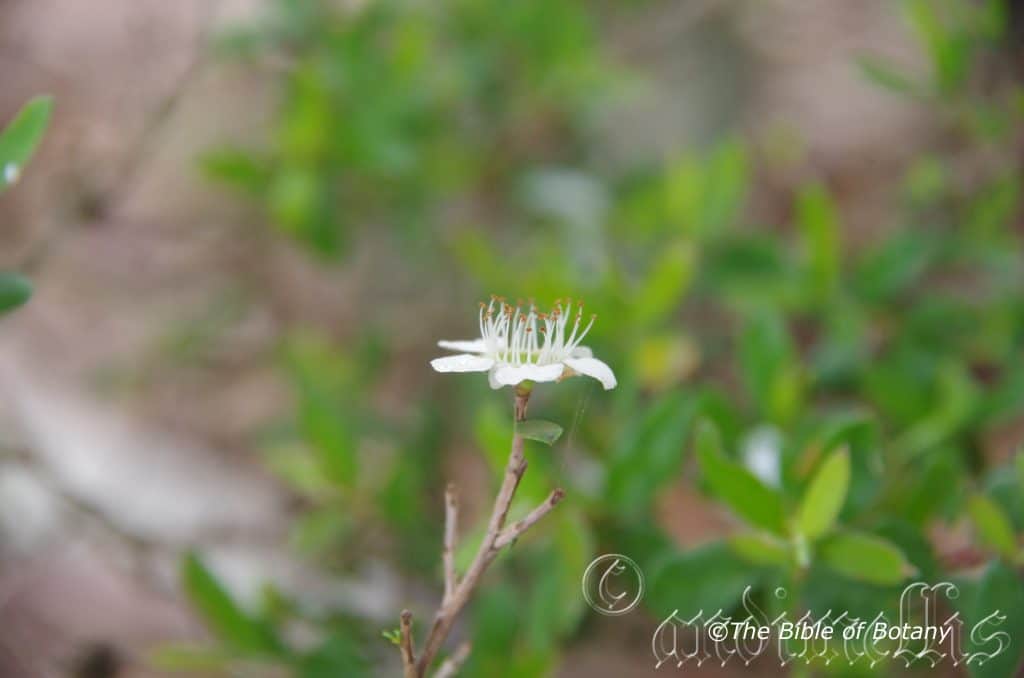
Ebor National Park’s Depot NSW
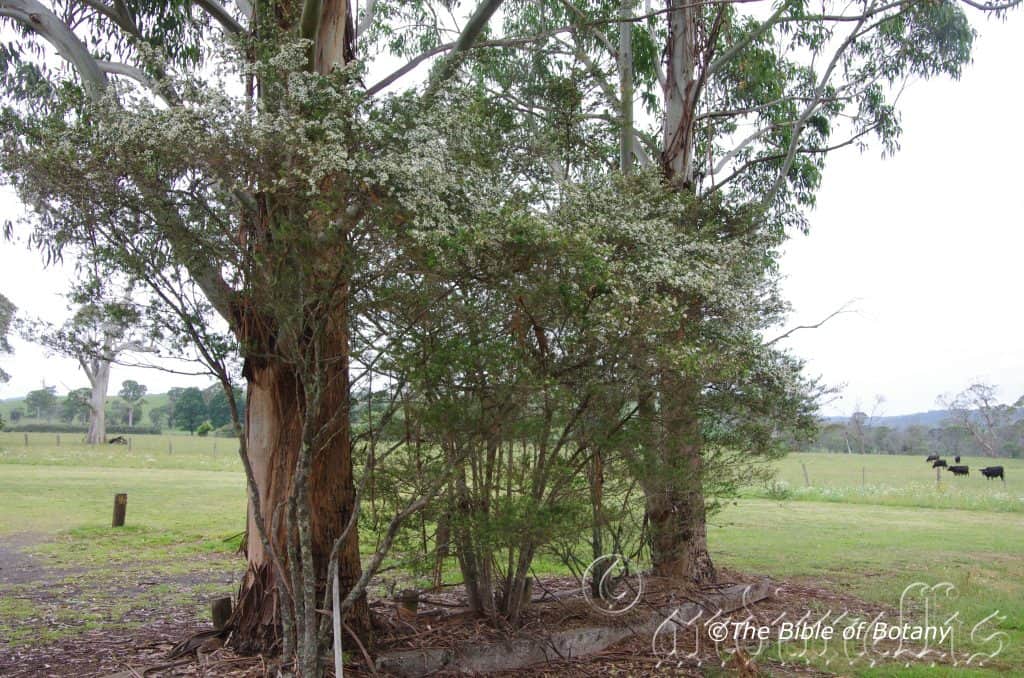
Ebor National Park’s Depot NSW
Leptospermum brevipes
Classification:
Unranked: Magnoliophyta
Class:Magnoliopsida
Order: Myrtales
Family: Myrtaceae
Genus: From Leptós, which is Ancient Greek for delicate, fine or slender and Spérma, which is Ancient Greek for a seed. It refers to seeds, which are rather fine and slenderer than other genus in the family.
Specie: From Brevis, which is Latin for short and Pous which is Ancient Greek or Pedi/Pedis, which is Latin for a foot or feet. It refers to plants, which creep across the ground for only short distances.
Sub species:
Common Name: Slender Tea Tree.
Distribution:
Leptospermum brevipes is found south from Kilkivin and Perigian to Noosa Heads in southern Queensland to Jameison and west of Sale in eastern Victoria. It is mainly found on and east of the Great Dividing Range.
https://avh.ala.org.au/occurrences/search?taxa=Leptospermum+brevipes#tab_mapView
Habitat Aspect Climate:
Leptospermum brevipes prefers light dappled shade to full sun. It grows in dry schlerophyll forests, dry Eucalyptus forests or dry woodlands. The altitude ranges from 30 meter ASL to 1400 meters ASL.
The temperatures range from minus 6 degrees in August to 38 degrees in January.
The rainfalls range from lows of 500mm to an average of 1500mm.
Soil Requirements:
Leptospermum brevipes prefers to grow on better quality sandy loams to light gravelly clays and skeletal rocky terrain. The soils are usually derived from decomposed granites or rarely sandstone. The soils pH ranges from 5pH to 6pH. It does not tolerate waterlogged soils. Non saline soils to moderately saline soils are tolerated.
Height & Spread:
Wild Plants: 3m to 4.5m by 2.5m to 4m.
Characteristics:
Leptospermum brevipes’s grey-brown bark is closely appressed to the trunk and lower branches. The yellow-green to deep orange or orange-red branchlets are sparsely covered in caduceous white puberulent hairs.
Leptospermum brevipes’s crowded eventually becoming alternate, elliptic to narrow oblanceolate or obovate leaves measure 10mm to 20mm in length by 2mm to 5mm in width. The bases taper to short, sub terete petioles which measures 0.5mm to 1.5mm in length. The apexes are acuminate with a recurved pungent tip. The concolourous laminas are deep green, glabrous or sparsely covered in caduceous, white puberulent hairs. The laminas are flat or slightly recurve upwards from the mid vein to the margins while the margins are entire. The mid vein is slightly prominent on the lower lamina and is not visible on the upper lamina.
The inflorescence of Leptospermum brevipes are born in small clusters from the leaf axis and measure 6mm to 8mm in diameter. There is usually 1 or 2 or rarely 3 individual flowers in a cluster. The deep burgundy hypanthium measure 4mm to 7mm in length. The pedicels are sparsely covered in soft white puberulent hairs and measure 2mm to 8mm in length. The 5 green to greenish-purple sepals are sparsely covered in white puberulent hairs and measure 1mm to 1.5mm in length. The 5 circular, glabrous petals measure 3mm to 3.5mm in length by 3mm to 3.5mm wide.
The 15 white stamens are fused to the rim of the hypanthia and measure 1mm to 1.2mm in length. The red to reddish-orange style is centrally located on the bright glossy deep burgundy disc. The flowers appear from October to November.
Leptospermum brevipes’s fruits are small conical capsule. The 5 locular capsules measure 3mm to 4mm in diameter at the rim. The pale blue green capsules turn grey on ripening. The exserted valves are circular. The pedicels are covered in soft, white pulverulent hairs and measure 2mm to 10mm in length.
Wildlife:
Leptospermum brevipes’s flowers are attractive to numerous small butterflies, native bees, native beetles, wasps and flies.
Cultivation:
Leptospermum brevipes are beautiful semi weeping to weeping small trees that grow particularly well on moisture problem soils. It is suitable for small, medium and large gardens close to the coast or high in the mountains in warm temperate, sub-tropical or tropical gardens. As garden subjects they will grow from 3 meters to 3.5 meters in height by 2 meters to 3 meters in diameter. It is cold tolerant to temperatures at least as low as minus 4 degrees once established. They can be lightly tip pruned if a smaller bushier shrub is required.
It is best used adjacent to small areas of bush as the fill in plant or close to paths or the house so their white flowers can be viewed regularly. It is great in larger rockeries as the feature. Here they can be planted in small groups of 2 or 3 as a standalone plant to create a harsher more barren look with other arid plants. If it is surrounded by shorter plants with fine foliages and red flowers they will dominate at the center giving an expansive look to the bed especially when it is in flower. This is one plant that benefits highly from being mass planted or planted in scattered clumps. There small size enables this to be achieved even in small and medium size gardens.
It makes a good bonsai plant and is easy to work with and long lived.
Propagation:
Seeds: Leptospermum brevipes seeds can be sown directly into a seed raising mix. Cover the seeds with 1mm to 2mm of fine weed free mulch and keep moist. Place the tray in a warm sunny position. When the seedlings are 20mm to 30mm tall, prick them out and plant them into 50mm native tubes using a good organic mix.
Once the seedlings reach 100mm to 150mm in height; nip the growing tips out and plant them into their permanent position.
Cuttings: Use 100mm to 120mm long semi hardwood cuttings from the present season’s growth. Take them in warmer months of the year. Remove half the leaves from the bottom section being careful not to tear the bark.
1 Prepare the cutting mix by adding one third sharp clean river sand, one third peat and one third perlite. These ingredients are sterilize,
2 Select good material from non diseased plants,
3 Select semi green stems for cuttings. Look for a stem with two or three nodes,
4 Place the cutting on a flat, hard surface, and make a clean cut down one side of the cutting at the base for 10mm with a sharp sterile knife or razor blade. – This scarification of the node will increase the chances of roots emerging from this spot. Now remove all but one or two the leaves, leaving the apex leaves in tact. If the leaves are very large in proportion to the stem, cut off the apical halves.
5 Fill a saucer with water, and place a little medium strength rooting hormone into another container like a milk bottle top. Dip the node end of the cutting into the water and then into the rooting hormone. Tap off any excess hormone,
6 Use a small dipple stick or old pencil to poke a hole into the soilless potting mix. Ensure the hole is slightly larger than the stem diameter and be careful not to wipe the rooting hormone off the cuttings base, place the cuttings in a pattern ensuring the cuttings are not touching each other,
7 I like to place the pots in Plastic bags to help maintain temperature and moisture. Place in a semi shaded place like under 50mm shade cloth.
8 When the cuttings have struck, open the bag to allow air circulation for a few days to a week,
9 Once hardened off remove the cuttings from the bag and allow to further hardening for a few more days,
10 Transplant into a good potting mix to grow on.
Fertilize using seaweed, fish emulsion or organic chicken pellets soaked in water on an alternate basis. Fertilize every two months until the plants are established then twice annually in early September or March to maintain health, vitality and better flowering.
Further Comments from Readers:
Hi reader, it seems you use The Bible of Botany a lot. That’s great as we have great pleasure in bringing it to you! It’s a little awkward for us to ask, but our first aim is to purchase land approximately 1,600 hectares to link several parcels of N.P. into one at The Pinnacles NSW Australia, but we need your help. We’re not salespeople. We’re amateur botanists who have dedicated over 30 years to saving the environment in a practical way. We depend on donations to reach our goal. If you donate just $5, the price of your coffee this Sunday, We can help to keep the planet alive in a real way and continue to bring you regular updates and features on Australian plants all in one Botanical Bible. Any support is greatly appreciated. Thank you.
In the spirit of reconciliation we acknowledge the Bundjalung, Gumbaynggirr and Yaegl and all aboriginal nations throughout Australia and their connections to land, sea and community. We pay our respect to their Elders past, present and future for the pleasures we have gained.
Leptospermum gregarium
Classification:
Unranked: Magnoliophyta
Class:Magnoliopsida
Order: Myrtales
Family: Myrtaceae
Genus: From Leptós, which is Ancient Greek for delicate, fine or slender and Spérma, which is Ancient Greek for a seed. It refers to seeds, which are rather fine and slenderer than other genus in the family.
Specie: From Grex, which is Ancient Greek and later Gregārium, which is Latin for a flock, herd or mob. It refers to plants, which naturally grow in dense clusters often dominating a habitat.
Sub species:
Common Name: Hillside May or Wild May.
Distribution:
Leptospermum gregarium is found south from Elbow valley in far south east Queensland to Nundle in New South Wales. It is restricted to a narrow range along the top of the Great Dividing Range.
https://avh.ala.org.au/occurrences/search?taxa=Leptospermum+gregarium#tab_mapView
Habitat Aspect Climate:
Leptospermum gregarium prefers full sun to dappled sunlight. It grows in highland swampy rocky creeks, streams and seepages adjacent to highland swamps in wet woodland heaths or open Eucalyptus forests. The altitude ranges from 600 meter ASL to 1050 meters ASL.
The temperatures range from minus 4 degree in August to 30 degrees in January.
The rainfalls range from lows of 650mm to an average of 1000mm however this is of little consequence as the plants grow adjacent to or in permanent water.
Soil Requirements:
Leptospermum gregarium prefer to grow on better quality sands, sandy loams to fatty sands. The soils are usually derived from decomposed granites. The soils pH ranges from 5pH to 6.5pH. It tolerates waterlogged soils. Non saline soils to moderately saline soils are tolerated.
Height & Spread:
Wild Plants: 1.5m to 2.5m by 1m to 2m.
Characteristics:
Leptospermum gregarium’s bark is loose, grey, flaky and fibrous, often with short persistent ribbons hanging from the trunk and lower branches. The bark decorticates annually in short ribbons or flakes. The pale grey-green to blue-green branchlets are sparsely covered in white pubescent hairs near the apex.
Leptospermum gregarium’s alternate, broad obovate to broad lanceolate leaves measure 5mm to 10mm in length by 2.5mm to 4mm in width. The base is cuneate while the apex is obtuse to broad acute with a short mucronate point. The concolourous laminas are pale green to deep green and sparsely covered in white to pale grey puberulent hairs. It is incurved towards the apex of the branchlets. The margins are entire and flat. The mid vein is slightly prominent on the lower lamina and is not visible on the upper lamina. The thickened petiole measuring 0.5mm to 1mm in length
The inflorescences of Leptospermum gregarium are born solitary from the leaf axils and measure 8mm to 10mm in diameter. The green hypanthium is covered in white pulverulent hairs and measures 3mm to 3.5mm in length. The pedicels measure 0.5mm to 1mm in length. The 5 obtuse sepals are pale green and are sparsely to moderately covered in white pubescent hairs while the margins have white ciliate hairs. The sepals measure 1.5mm to 2mm in length. The 5 glabrous, circular white petals measure 3mm to 4mm in length by 3mm to 4mm wide.
The 20 to 25 white stamens are fused to the rim of the hypanthia and measure 1.5mm to 2mm in length. The green style is centrally located on the bright glossy green disc and measures 3mm in length. The flowers appear from early November to mid-December.
Leptospermum gregarium’s fruit is a small thin walled conical capsule. The style is persistent on the capsules. The 5 ocular capsules measure 5mm to 8mm in diameter at the rim. The pale pubescent green capsules turn pale grey and glabrous on ripening. The triangular, dome shape, valves are exerted and occasionally spread beyond the rim of the hypanthium. The seeds are deep brown.
Wildlife:
The flowers are fed upon by numerous small butterflies, native bees, native beetles, wasps and flies. Small nectar feeding birds are also attracted to the flowers.
Cultivation:
Leptospermum gregarium are beautiful upright small shrubs that grow particularly well on most loamy soils. It is suitable for small, medium and large gardens close to the coast or it will grow from 2 meters to 2.5 meters in height by 1 meter to 1.5 meters in diameter when grown in the open. It is cold tolerant to temperatures at least as low as minus 6 degrees once established.
It can be lightly tip pruned if a smaller bushier shrub is required.
It is best used where the trees trunk can be featured as they often develop a twisted gnarled shape that can easily be trained in to grotesque shapes. Here the leaves play a very important role in softening the cliff scene. Use the trunk and canopy like a heath scene, with short trunks and large spreading canopies they make the perfect plant for emphasizing a harsh environment in a small area.
Use a single shrub or scatter 3 or 4 around near old stumps and roots to make the stumps or roots look larger and more gnarled. The grey bark and short twisted trunks will contrast both the horizontal gnarled logs and stumps with a typical heath scene. To achieve this trim some of the lower branches so the canopy looks larger and more rounded. Some training of the trunk in the early stages maybe necessary, to gain certain weird shapes that may be desired. Sparingly use other plants when planting and remember that heath scenes are flat places that are wind swept not steep hills so it is best to use a gentle slope or a basin with a small pool near the bottom.
A waterfall or cascade are very difficult to blend in but can be done. The important thing to remember is balance and size of the plants. When using this plant as a feature only grow small plants that do not reach more than 400mm in height and have a compact habit with blue, grey or bright green fine foliages. Be careful that these plants do not steal the stage or detract from the balance that is being created. Large leaf plants are out of the question.
Annuals and perennials would really compliment the scene as would small ground covers and procumbent plants. Try Blandfordia and other small flaxes or Lomandra with Hibertia linearis, Hibertia obtusifolia or Grevillea masonii to add colour. Cram the plants at their maximum spreads when planting to gain a swamp headland heath scene. That is if a plants maximum spread is 1 meter then plant it at a meter from its neighbours. Only use Leptospermum gregarium as the tall plant and use a large number of different varieties and leaf types throughout the section.
In a barren rocky terrain use the above but plant sparingly and make the rocks the second most important feature.
Select an area of ground and let your hair down and be imaginative but remember it is the trunk, the stumps or rocks that are the feature and the very small ground covers are the extras.
Either way you will be very happy experimenting with Leptospermum gregarium
It is also very good bonsai plants where the gnarled trunk can be highlighted.
Propagation:
Seeds: Leptospermum gregarium seeds can be sown directly into a seed raising mix after roughing the sides with fine sandpaper to assist in germination. Cover the seeds with 15mm to 20mm of fine weed free mulch and keep moist. Place the tray in a warm sunny position. When the seedlings are 20mm to 30mm tall, prick them out and plant them into 50mm native tubes using a good organic mix.
Once the seedlings reach 100mm to 150mm in height they can be planted out into their permanent position.
Cuttings: Use 100mm to 120mm long semi hardwood cuttings from the present season’s growth. Take them in warmer months of the year. Remove half the leaves from the bottom section being careful not to tear the bark.
1 Prepare the cutting mix by adding one third sharp clean river sand, one third peat and one third perlite. These ingredients are sterilize,
2 Select good material from non diseased plants,
3 Select semi green stems for cuttings. Look for a stem with two or three nodes,
4 Place the cutting on a flat, hard surface, and make a clean cut down one side of the cutting at the base for 10mm with a sharp sterile knife or razor blade. – This scarification of the node will increase the chances of roots emerging from this spot. Now remove all but one or two the leaves, leaving the apex leaves in tact. If the leaves are very large in proportion to the stem, cut off the apical halves.
5 Fill a saucer with water, and place a little medium strength rooting hormone into another container like a milk bottle top. Dip the node end of the cutting into the water and then into the rooting hormone. Tap off any excess hormone,
6 Use a small dipple stick or old pencil to poke a hole into the soilless potting mix. Ensure the hole is slightly larger than the stem diameter and be careful not to wipe the rooting hormone off the cuttings base, place the cuttings in a pattern ensuring the cuttings are not touching each other,
7 I like to place the pots in Plastic bags to help maintain temperature and moisture. Place in a semi shaded place like under 50mm shade cloth.
8 When the cuttings have struck, open the bag to allow air circulation for a few days to a week,
9 Once hardened off remove the cuttings from the bag and allow to further hardening for a few more days,
10 Transplant into a good potting mix to grow on.
Fertilize using seaweed, fish emulsion or organic chicken pellets soaked in water on an alternate basis. Fertilize every two months until the plants are established then twice annually in early September or March to maintain health, vitality and better flowering.
Further Comments from Readers:
Hi reader, it seems you use The Bible of Botany a lot. That’s great as we have great pleasure in bringing it to you! It’s a little awkward for us to ask, but our first aim is to purchase land approximately 1,600 hectares to link several parcels of N.P. into one at The Pinnacles NSW Australia, but we need your help. We’re not salespeople. We’re amateur botanists who have dedicated over 30 years to saving the environment in a practical way. We depend on donations to reach our goal. If you donate just $5, the price of your coffee this Sunday, We can help to keep the planet alive in a real way and continue to bring you regular updates and features on Australian plants all in one Botanical Bible. Any support is greatly appreciated. Thank you.
In the spirit of reconciliation we acknowledge the Bundjalung, Gumbaynggirr and Yaegl and all aboriginal nations throughout Australia and their connections to land, sea and community. We pay our respect to their Elders past, present and future for the pleasures we have gained.
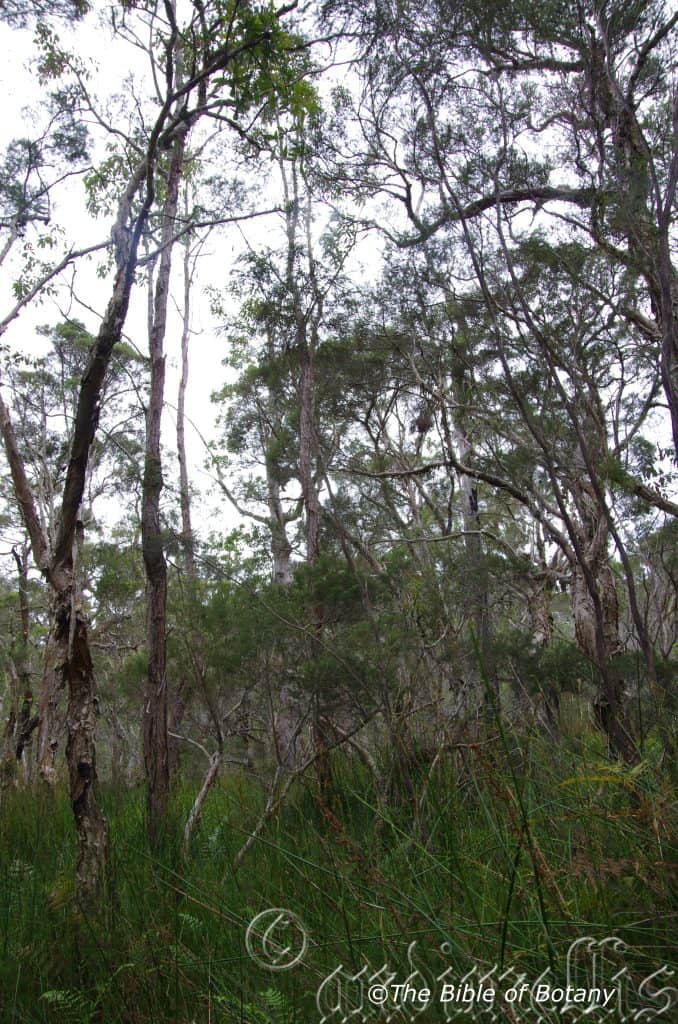
The Pinnacles NSW
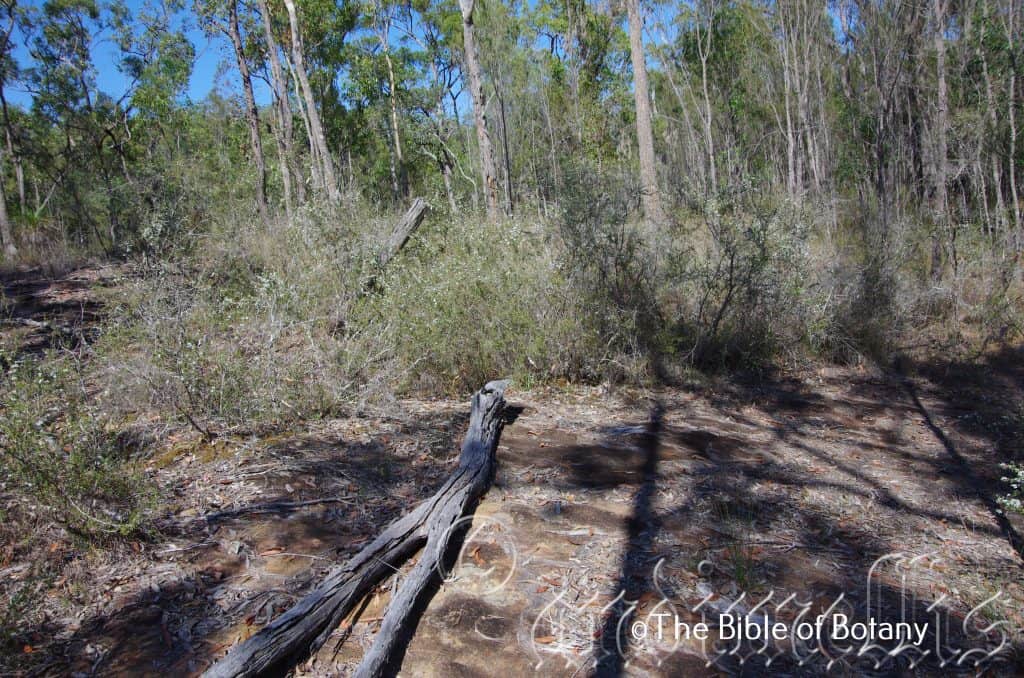
The Pinnacles NSW
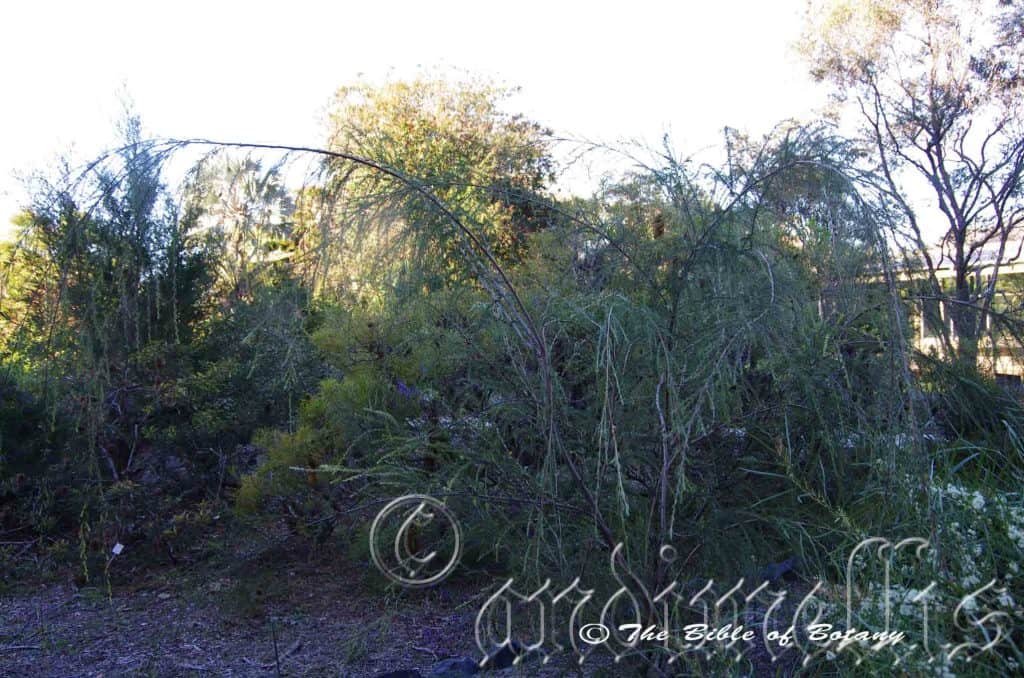
NCBG Coffs Harbour NSW
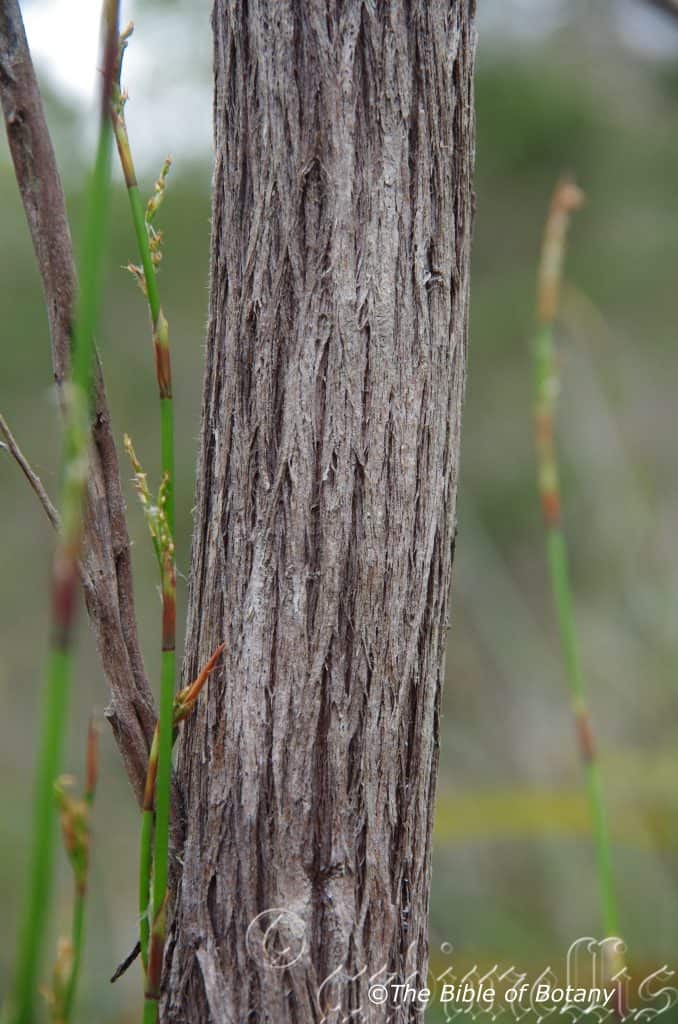
The Pinnacles NSW
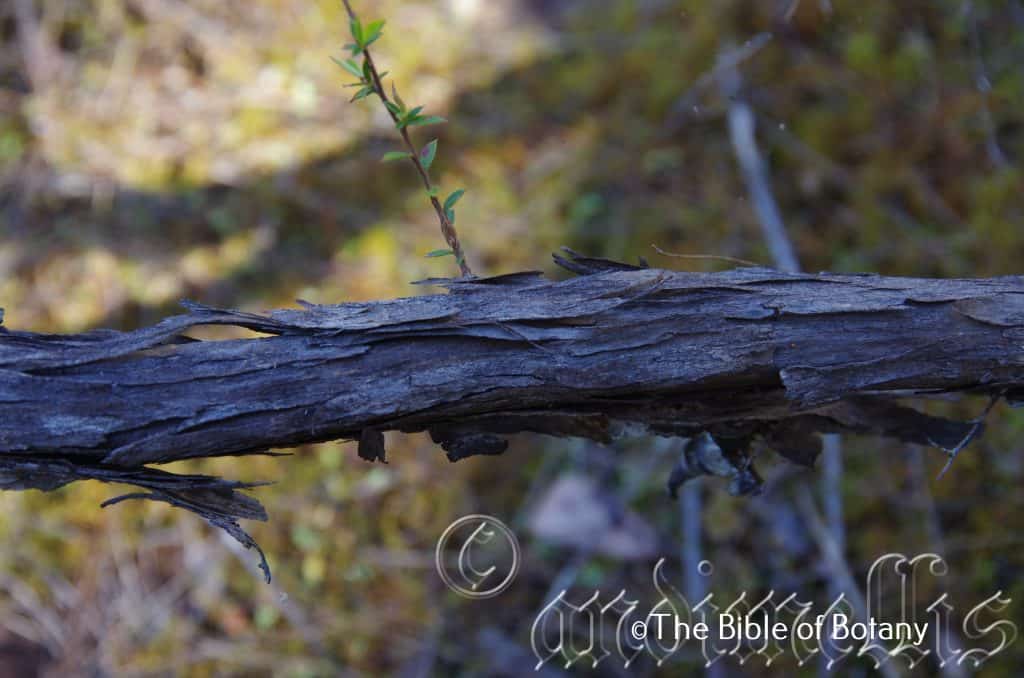
The Pinnacles NSW
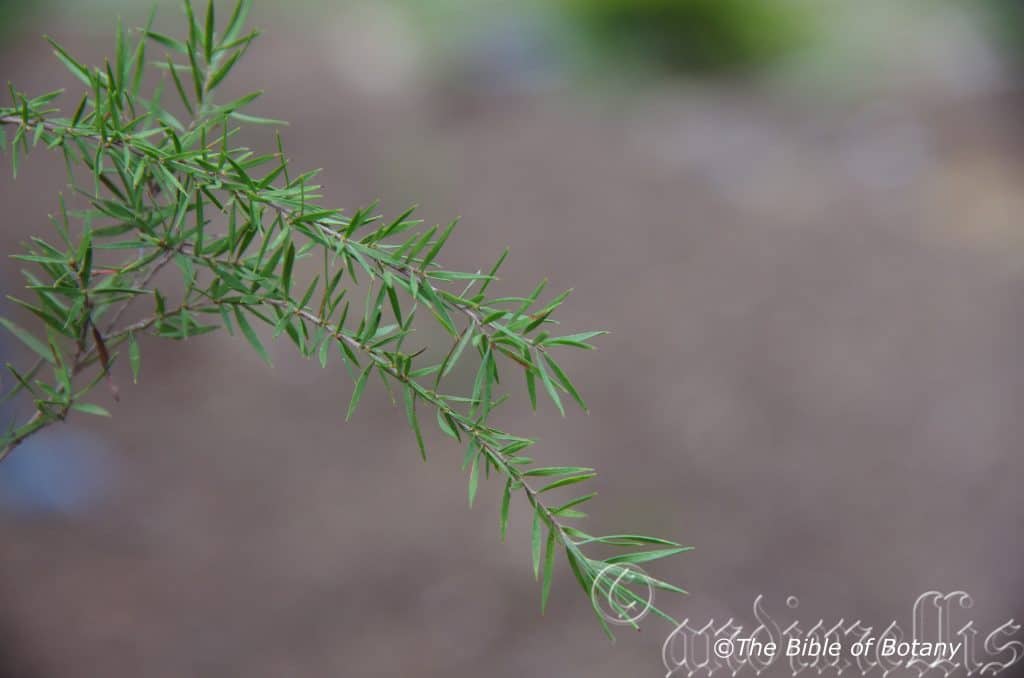
The Pinnacles NSW
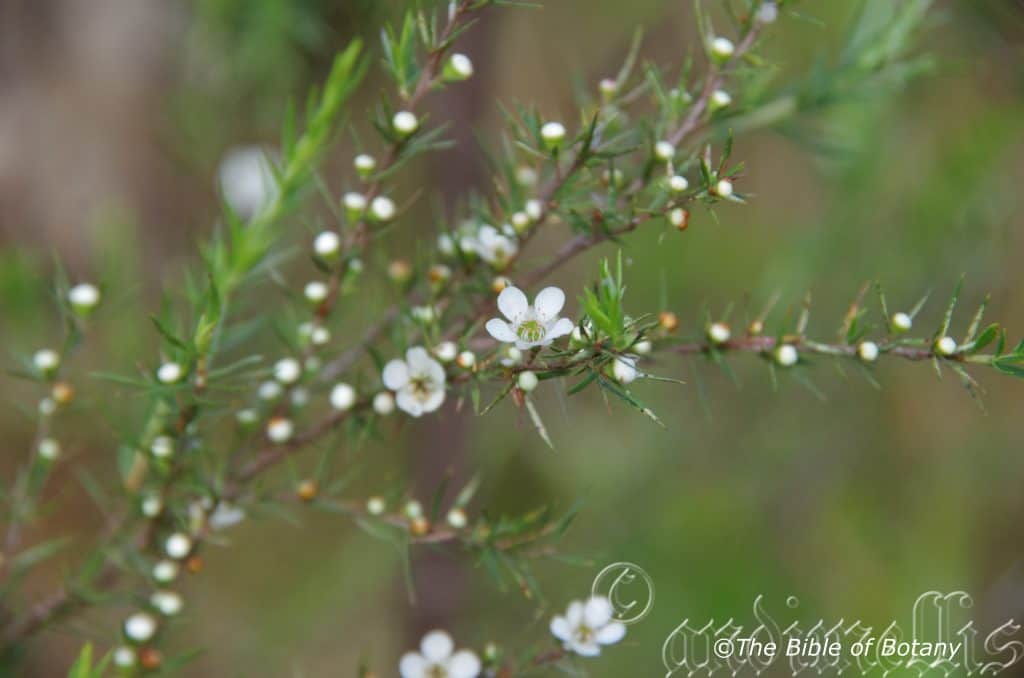
The Pinnacles NSW
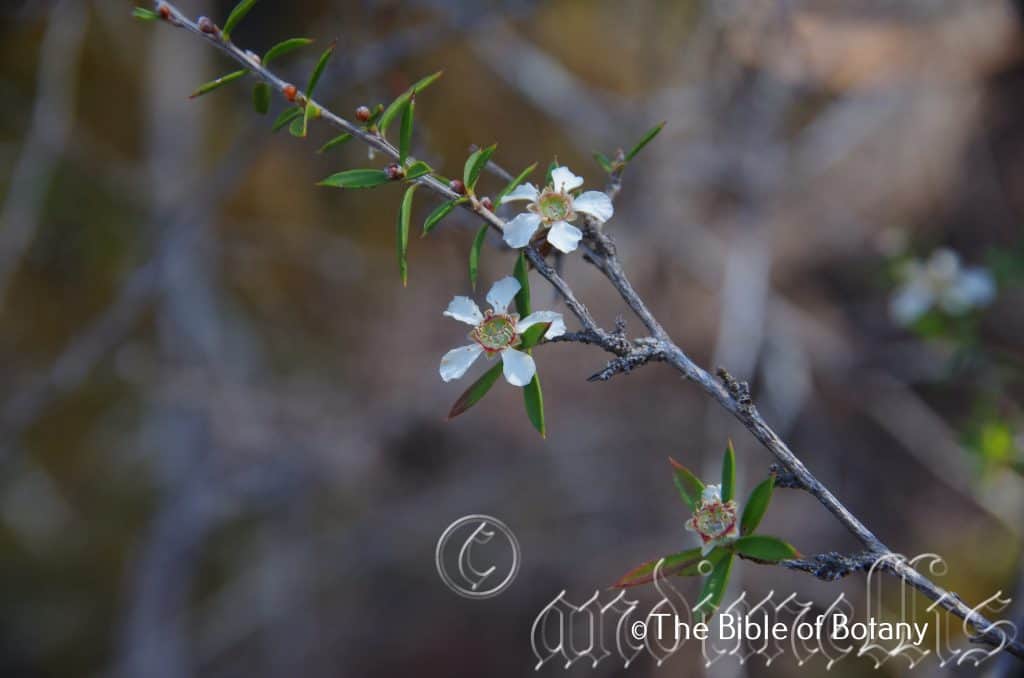
The Pinnacles NSW
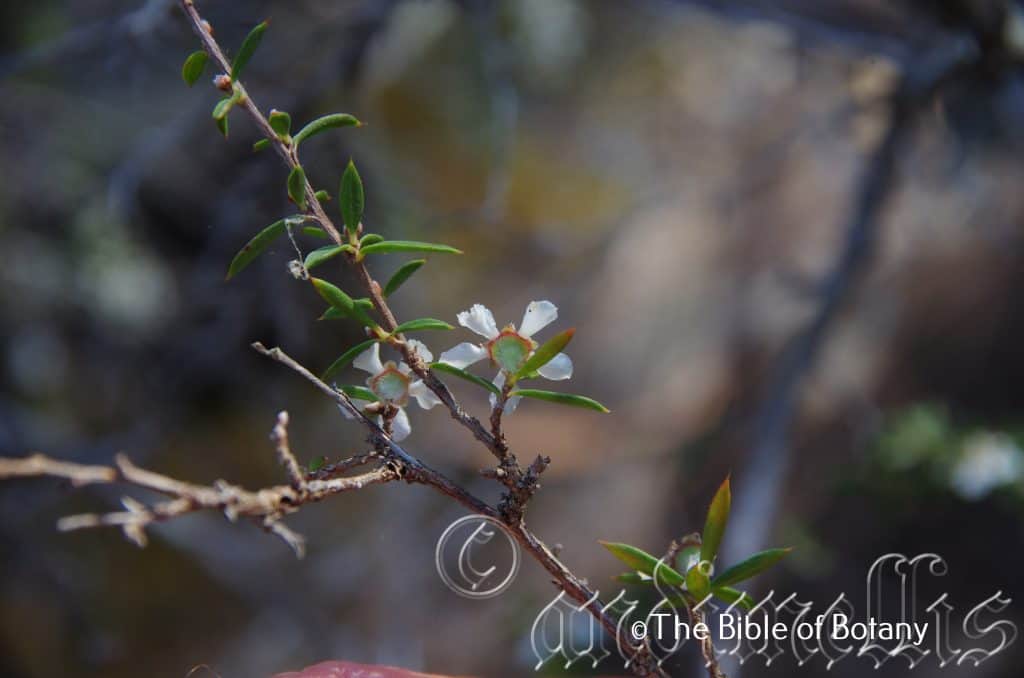
The Pinnacles NSW
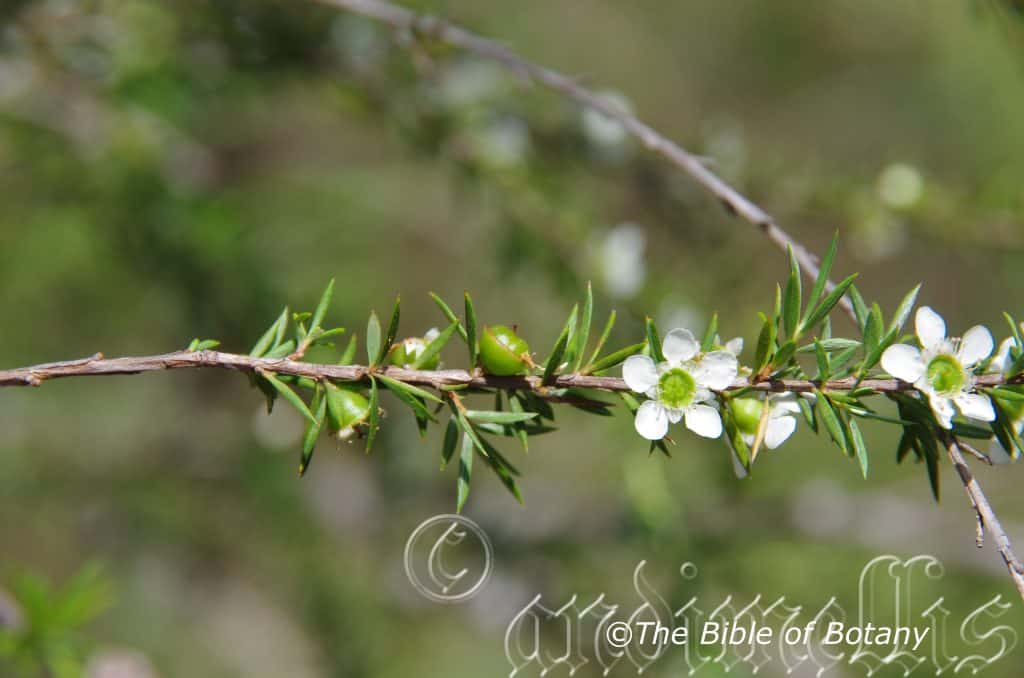
The Pinnacles NSW
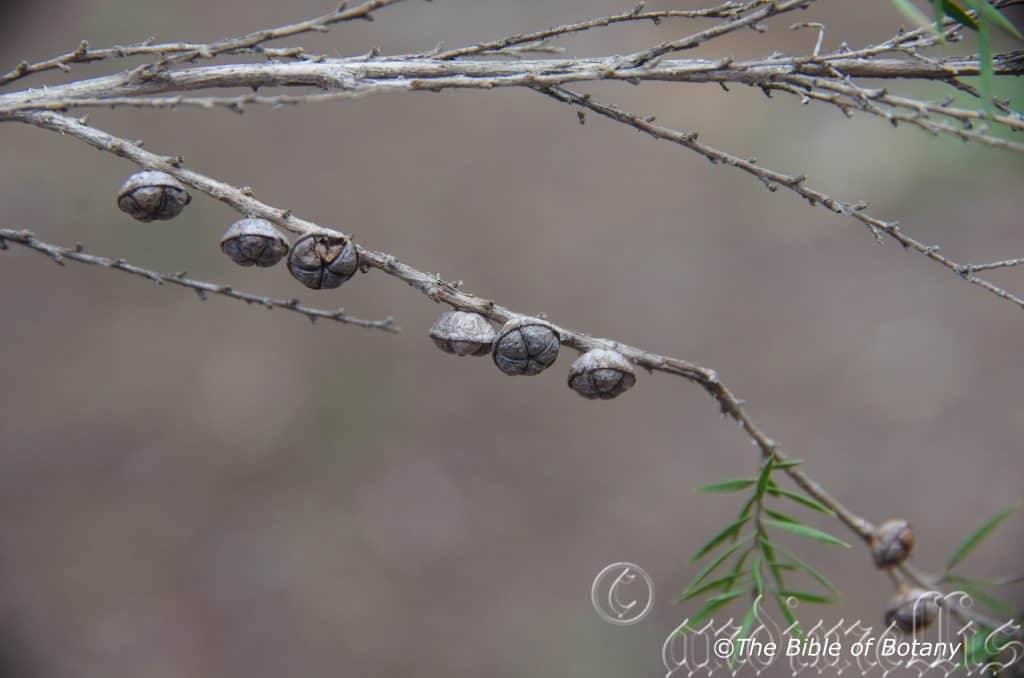
The Pinnacles NSW
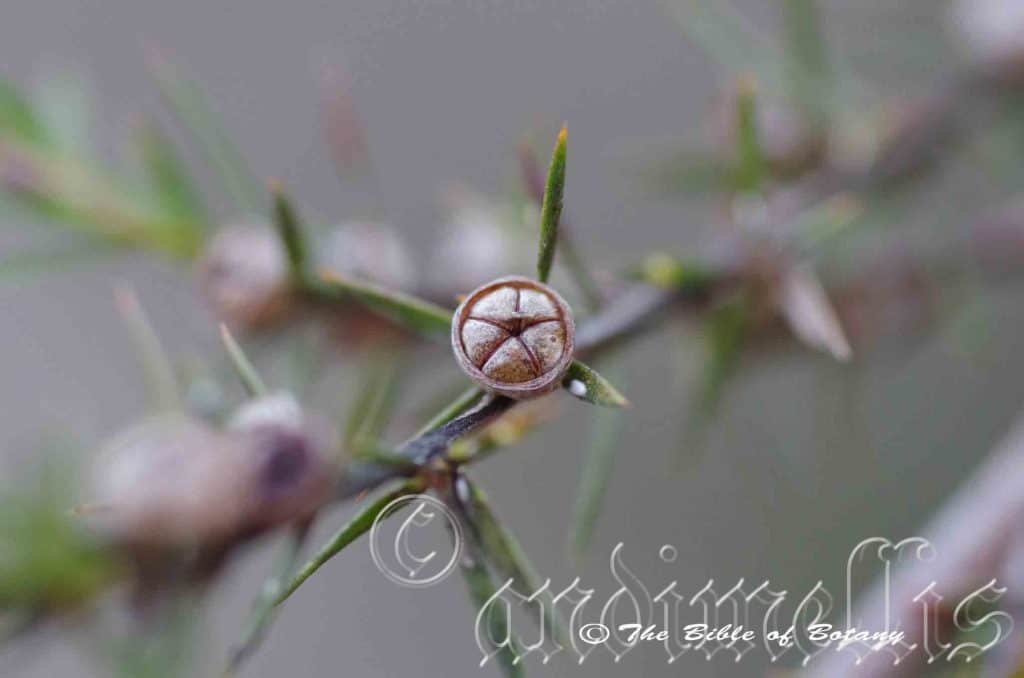
The Pinnacles NSW
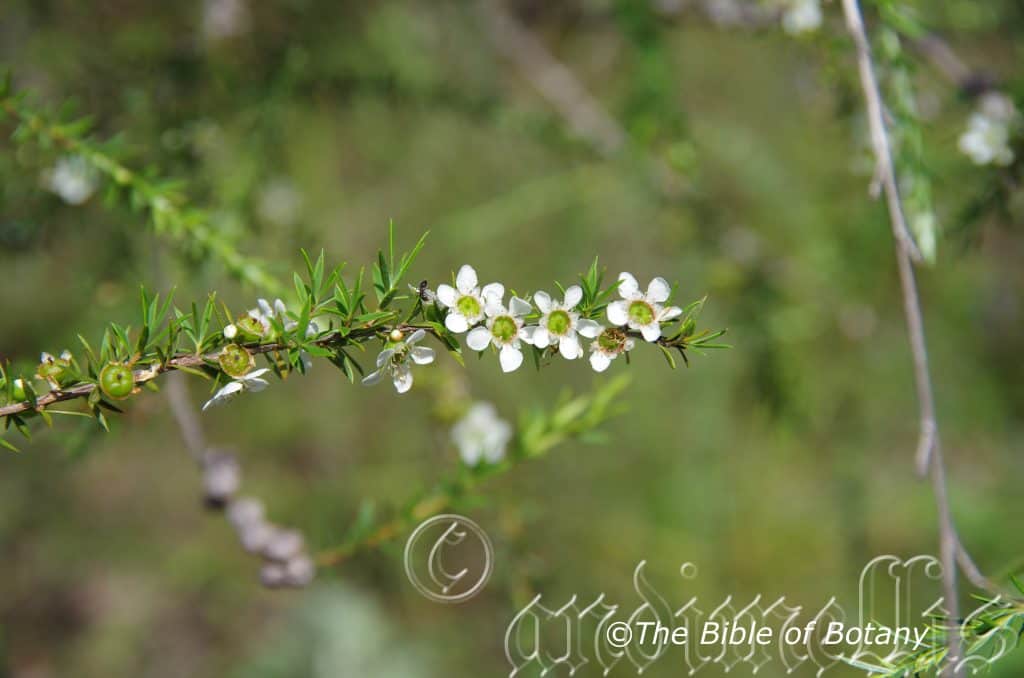
NCBG Coffs Harbour NSW
Leptospermum juniperinum
Classification:
Unranked: Magnoliophyta
Class:Magnoliopsida
Order: Myrtales
Family: Myrtaceae
Genus: From Leptós, which is Ancient Greek for delicate, fine or slender and Spérma, which is Ancient Greek for a seed. It refers to seeds, which are rather fine and slenderer than other genus in the family.
Specie: From Juniperus, which is Latin for a pine tree. It refers to plants, which more closely resemble a pine tree or conifer than other species in the genus.
Sub species:
Common Name: Prickly Tea Tree.
Distribution:
Leptospermum juniperinum is found south from Fraser Island in southern coastal Queensland to the Bega Valley in far southern New South Wales on the eastern side of the Great Dividing Range. Further south it is found in disjunct populations from Kosciusko National Park and Buchan to Mount Gambier and Kangaroo Island in South Australia including several populations along the Murray River.
In Queensland it is found further north around Shoalwater Bay and west at Taroom while in New South Wales there is an isolated population near Bourke.
https://avh.ala.org.au/occurrences/search?taxa=Leptospermum+juniperinum#tab_mapView
Habitat Aspect Climate:
Leptospermum juniperinum prefers light dappled shade to full sun. It grows in swampy heaths, sedge lands and on wet escarpment heaths. The altitude usually ranges from 5 meter ASL to 350 meters ASL however it is found as high as 1750 meters ASL in the Mount Kosciusko National Park.
The temperatures range from minus 8 degrees in August to 36 degrees in January.
The rainfalls range from lows of 500mm to an average of 1700mm.
Soil Requirements:
Leptospermum juniperinum prefers better quality peaty sandy loams to light gravelly clays on skeletal rocky terrain. The soils are usually derived from partially decomposed to decomposed granites or at times on reddish sandstone escarpment heaths. The soils pH ranges from 5pH to 6pH. It tolerates waterlogged soils. Non saline soils to moderately saline soils are tolerated.
Height & Spread:
Wild Plants: 2m to 3m by 2m to 3m.
Characteristics:
Leptospermum juniperinum’s bark is brown to greyish-tan and closely appressed to the trunk and lower branches. The pale green to creamy green branchlets are densely covered in fine, soft, caduceous white pubescent hairs.
Leptospermum juniperinum’s crowded eventually becoming alternate, narrow elliptic narrow lanceolate leaves measure 5mm to 18mm in length by 1mm to 2mm in width. The bases taper slightly to the stems while the apexes are acute to acuminate and slightly pungent. The discolourous laminas are sea-green and sparsely to moderately covered in fine, soft white, caduceous pubescent hairs on the upper laminas while the lower laminas are paler and densely covered in fine, soft white, caduceous pubescent hairs. The laminas recurve upwards slightly from the mid vein to the margins and decurve slightly on the apical third while the margins are entire.
The inflorescences of Leptospermum juniperinum are usually solitary and are born from the leaf axils. The flowers measure 6mm to 10mm in diameter. The pale green hypanthium measure 2mm to 2.5mm in length. The pedicels measure less than 0.5mm in length. The 5 white, glabrous sepals measure 1mm to 1.2mm in length by 1.2mm to 1.5mm in width. The 5 white, glabrous petals are circular and measure 2.5mm to 3mm in length by 2.5mm to 3.5mm wide.
The 15 or 20 white stamens are fused to the rim of the hypanthia and measure 1mm to 1.5mm in length. The dull, green style is centrally located on the flat to slightly concave disc. The flowers appear sporadically throughout the year with a peak in November.
Leptospermum juniperinum’s fruit is a small conical capsule. The 5 locular capsules measure 5mm to 7mm in diameter at the rim. The pale blue-green capsules turn grey on ripening. The domed, exserted valves are spreading to equal or exceed the hypanthia’s rim.
Wildlife:
Leptospermum juniperinum’s flowers are attractive to numerous small butterflies, native bees, native beetles, wasps and flies.
Cultivation:
Leptospermum juniperinum are beautiful semi weeping to weeping medium shrubs that grow particularly well on moisture problem soils. It is suitable for small, medium and large gardens close to the coast or high in the mountains in warm temperate, sub-tropical or tropical gardens. As garden subjects they will grow from 2 meters to 2.5 meters in height by 2.5 meters to 3 meters in diameter. It is cold tolerant to temperatures at least as low as minus 4 degrees once established. They can be tip pruned if a smaller bushier shrub is required.
It is best used adjacent to small areas of bush as the fill in plant or close to paths or the house so their white flowers can be viewed regularly. It is great in larger rockeries as the feature. Here they can be planted in small groups of 2 or 3 as a standalone plant to create a harsher more barren look with other arid plants. If it is surrounded by shorter plants with fine foliages and red flowers they will dominate at the center giving an expansive look to the bed especially when it is in flower. This is one plant that benefits highly from being mass planted or planted in scattered clumps. There small size enables this to be achieved even in small and medium size gardens.
It makes a good bonsai plant and is easy to work with and long lived.
Propagation:
Seeds: Leptospermum juniperinum seeds can be sown directly into a seed raising mix. Cover the seeds with 1mm to 2mm of fine weed free mulch and keep moist. Place the tray in a warm sunny position.
When the seedlings are 20mm to 30mm tall, prick them out and plant them into 50mm native tubes using a good organic mix.
Once the seedlings reach 100mm to 150mm in height; nip the growing tips out and plant them into their permanent position.
Cuttings: Use 100mm to 120mm long semi hardwood cuttings from the present season’s growth. Take them in warmer months of the year. Remove half the leaves from the bottom section being careful not to tear the bark.
1 Prepare the cutting mix by adding one third sharp clean river sand, one third peat and one third perlite. These ingredients are sterilize,
2 Select good material from non diseased plants,
3 Select semi green stems for cuttings. Look for a stem with two or three nodes,
4 Place the cutting on a flat, hard surface, and make a clean cut down one side of the cutting at the base for 10mm with a sharp sterile knife or razor blade. – This scarification of the node will increase the chances of roots emerging from this spot. Now remove all but one or two the leaves, leaving the apex leaves in tact. If the leaves are very large in proportion to the stem, cut off the apical halves.
5 Fill a saucer with water, and place a little medium strength rooting hormone into another container like a milk bottle top. Dip the node end of the cutting into the water and then into the rooting hormone. Tap off any excess hormone,
6 Use a small dipple stick or old pencil to poke a hole into the soilless potting mix. Ensure the hole is slightly larger than the stem diameter and be careful not to wipe the rooting hormone off the cuttings base, place the cuttings in a pattern ensuring the cuttings are not touching each other,
7 I like to place the pots in Plastic bags to help maintain temperature and moisture. Place in a semi shaded place like under 50mm shade cloth.
8 When the cuttings have struck, open the bag to allow air circulation for a few days to a week,
9 Once hardened off remove the cuttings from the bag and allow to further hardening for a few more days,
10 Transplant into a good potting mix to grow on.
Fertilize using seaweed, fish emulsion or organic chicken pellets soaked in water on an alternate basis. Fertilize every two months until the plants are established then twice annually in early September or March to maintain health, vitality and better flowering.
Further Comments from Readers:
Hi reader, it seems you use The Bible of Botany a lot. That’s great as we have great pleasure in bringing it to you! It’s a little awkward for us to ask, but our first aim is to purchase land approximately 1,600 hectares to link several parcels of N.P. into one at The Pinnacles NSW Australia, but we need your help. We’re not salespeople. We’re amateur botanists who have dedicated over 30 years to saving the environment in a practical way. We depend on donations to reach our goal. If you donate just $5, the price of your coffee this Sunday, We can help to keep the planet alive in a real way and continue to bring you regular updates and features on Australian plants all in one Botanical Bible. Any support is greatly appreciated. Thank you.
In the spirit of reconciliation we acknowledge the Bundjalung, Gumbaynggirr and Yaegl and all aboriginal nations throughout Australia and their connections to land, sea and community. We pay our respect to their Elders past, present and future for the pleasures we have gained.
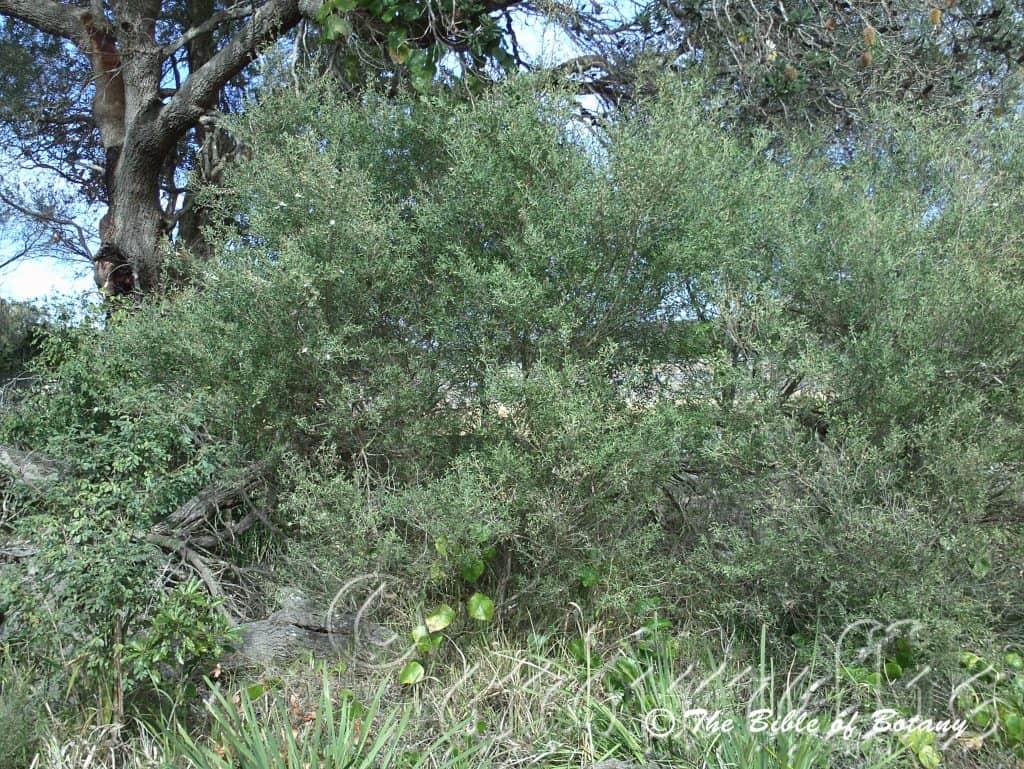
Lake Cathie NSW
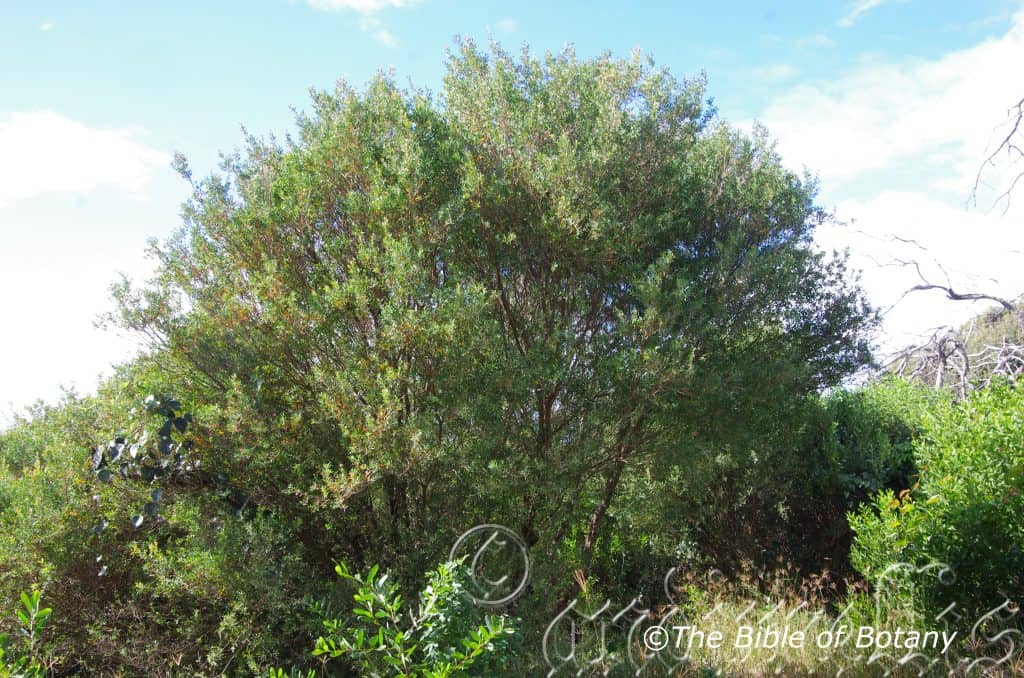
Boorkoom Yuraigir National Park NSW
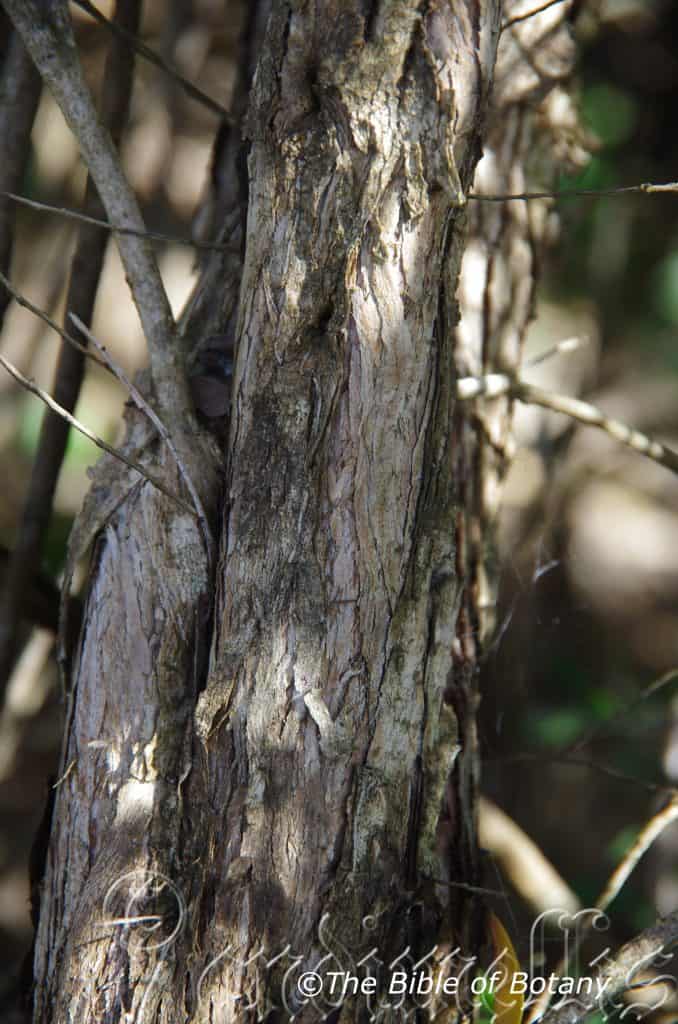
Boorkoom Yuraigir National Park NSW
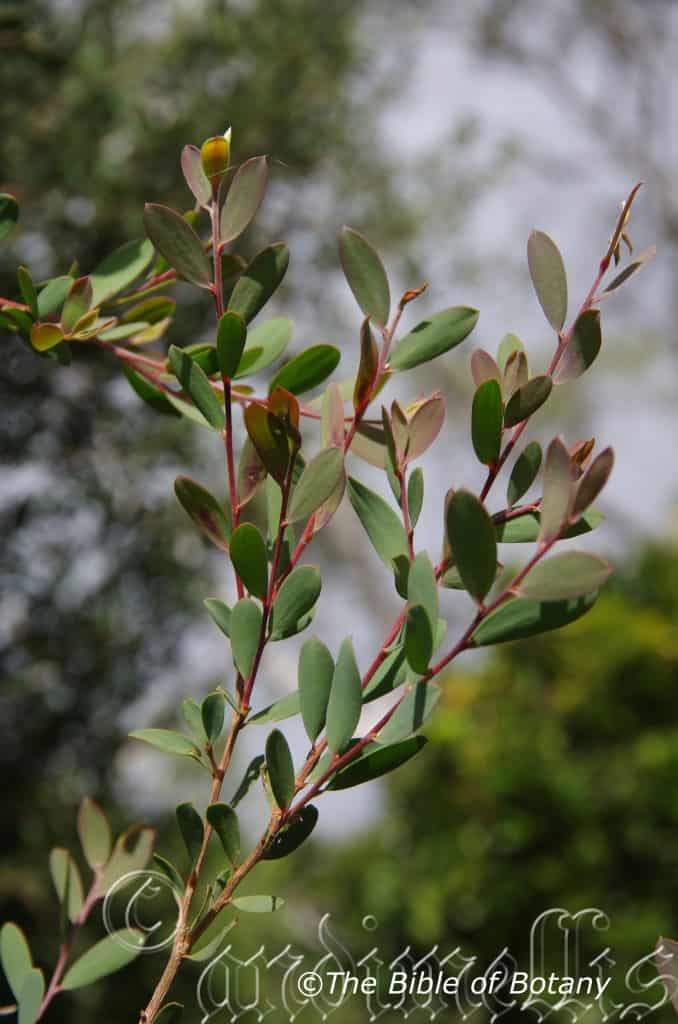
Boorkoom Yuraigir National Park NSW
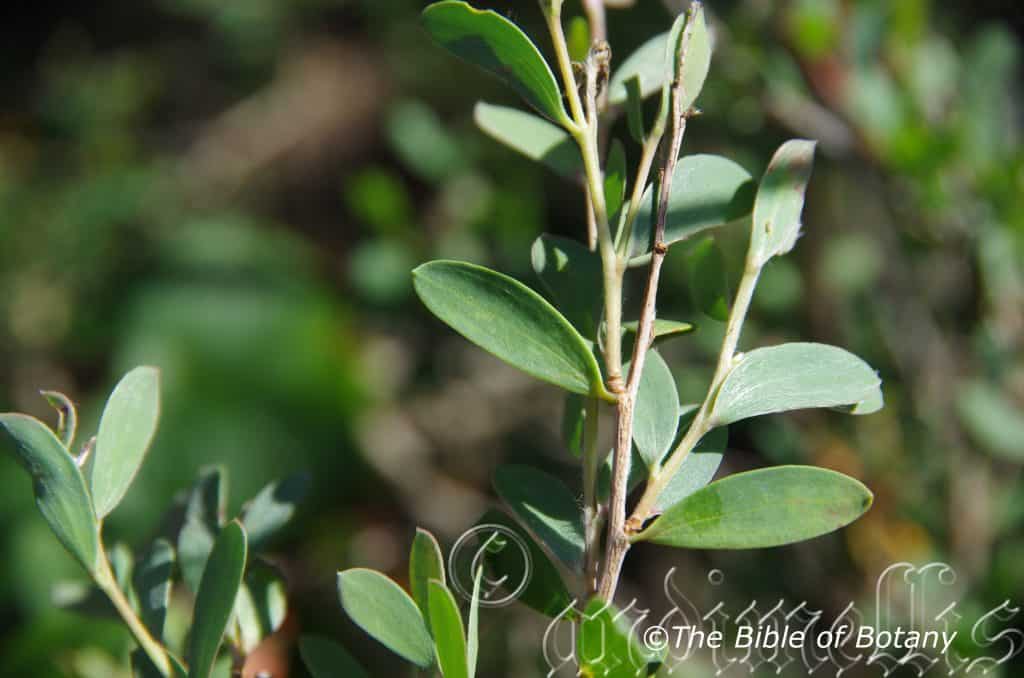
Boorkoom Yuraigir National Park NSW
Leptospermum laevigatum
Classification:
Unranked: Magnoliophyta
Class:Magnoliopsida
Order: Myrtales
Family: Myrtaceae
Genus: From Leptós, which is Ancient Greek for delicate, fine or slender and Spérma, which is Ancient Greek for a seed. It refers to seeds, which are rather fine and slenderer than other genus in the family.
Specie: From Elaphrós/Elakhús, which is Ancient Greek or Levis, which is Latin for swift, light weight, slick or smooth. It refers to the leaves or other organs, which are really smooth.
Sub species:
Common Name: Coastal Tea Tree.
Distribution:
Leptospermum laevigatum is found south from Nambucca Heads in the north to Wilsons Promontory in Victoria.
It is found on the Bass Strait Islands including King Island and the Flinders Island Group and the northern and eastern beaches of Tasmania.
It is also found in South Australia on Kangaroo Island north of Adelaide near the border with Victoria.
Plants found north of Nambucca Heads and in Queensland and in the south west corner of Western Australia were introduced by mining companies doing restoration work or escapees.
https://avh.ala.org.au/occurrences/search?taxa=Leptospermum+arachnoides#tab_mapView
NOTE: Leptospermum laevigatum is well established north to Fraser Island and in Western Australia from north of Perth to east of Esperance. Its growth and expansion has mainly been as a result of the sand mining industries disastrous attempts at regeneration of the coastline following mining activities. While it is a magnificent small tree it is not native to Western Australia or Queensland and it is out competing local native species in those locations with bitou bush, paddy’s lucern, green cestrum, wild tobacco, micky mouse plant and indian cassia are just a few of the introduced weeds I can mention. The legacy from sand mining, of which a few benefitted handsomely, is costing Australian tax payers over $38,000,000 million dollars a year in weed control plus the thousands of hours of volunteer work.
Habitat Aspect Climate:
Leptospermum laevigatum prefers full sun. It grows in dry sclerophyll forests, beach woodlands close to the coast on the back dunes, frontal dunes or headland heaths. The altitude usually ranges from 2 meter ASL to 30 meters ASL but it has been recorded at 350 meters ASL.
The temperatures range from 2 degree in August to 38 degrees in January.
The rainfalls range from lows of 500mm to an average of 1600mm.
Soil Requirements:
Leptospermum laevigatum prefers deep sands, peaty sands or light fatty gritty clays. The soils are usually derived from pumice stone and accumulated beach sands. The soils pH ranges from 5pH to 6.5pH. It usually does not tolerate waterlogged soils. Non saline soils to the very saline soils are tolerated as are salt laden winds.
Height & Spread:
Wild Plants: 3m to 6m by 3m to 6m.
Characteristics:
Leptospermum laevigatum’s grows as a small tree with loose, grey, fibrous to flaky bark often hanging on the upper trunk and lower branches. The bark decorticates annually in long longitudinal strips but often remains attached to the tree. The pale green to creamy-green branchlets is glabrous or moderately to densely covered in silky, smooth, white sericeous hairs.
Leptospermum laevigatum’s alternate, narrow-obovate leaves measure 15mm to 30mm in length by 5mm to 8mm in width. The base is tapering asymmetrical while the apex is obtuse often with a small mucronate point. The concolourous laminas are dull, blue-green to grey-green and glabrous. The margins are entire and flat. The mid vein is slightly prominent on the lower lamina and is not visible on the upper lamina. The broadly flattened petioles measure 1mm to 1.5mm in length.
The inflorescences of Leptospermum laevigatum are born in pairs from the leaf axils and measure 15mm to 20mm in diameter. The pale blue-green hypanthia measure 3.5mm to 4mm in length. It is blue-green or grey-green and glabrous. The pedicels measure 1mm to 1.5mm in length. The 5 sepals are white or cream and measure 1.5mm to 2.2mm in length and are glabrous or very sparsely covered in white puberulent hairs. The 5 white, glabrous petals are circular with an undulating margin. They measure 5mm to 8mm in length by 5mm to 8mm in width.
The 15 or 20 white stamens are fused to the upper rim of the hypanthia and measure 1.5mm to 2.5mm in length. Anthers fawn to pale brown. The white style is centrally located on the bright glossy green disc or rarely pink disc. The flowers appear from August to October.
Leptospermum laevigatum’s fruit is a small conical capsule. The 6 to 11 ocular capsules measure 7mm to 8mm in diameter at the rim. The pale blue green capsules turn grey on ripening. The valves are slightly exerted. The brown seeds have a small wing.
Wildlife:
The flowers of Leptospermum laevigatum are fed upon by numerous small nectar eating birds, butterflies, native bees, native beetles, wasps and flies. The leaves and flowers are a staple diet for ring tail possums (Pseudocheirus peregrinus) and possibly the common brush tail possum as well (Trichosurus vulpecula).
Cultivation:
Leptospermum laevigatum are beautiful erect small trees that grow particularly well on skeletal sands and headland heaths. It is suitable for small, medium and large gardens close to the coast in temperate, sub-tropical or tropical gardens. As garden subjects they will grow from 4 meters to 5 meters in height by 3 meters to 6 meters in diameter when grown in the open. It is cold tolerant to temperatures at least as low as minus 2 degrees once established.
It can be lightly tip pruned if a smaller bushier shrub is required.
It makes an excellent hedge, screen and wildlife corridors because of their upright bushy growth habit and their abundance of flowers.
It is best used as a small park tree, placed in the background or planted centrally as a small feature tree in small gardens surrounded by other small native shrubs. Placed at the rear of a bush garden their striking display of flowers will draw your attention so that you will want to investigate further. Plants with small red flowers and large or fine green leaves can be used in the mid ground while small red flowering prostrate shrubs are used in the front. Whether it is in flower or not these trees will catch your attention because of the proliferation of flowers, and pale beautiful and interesting bark.
Use a single tree or scatter 3 or 4 around near old stumps and roots to make the stumps or roots look larger and more gnarled. The deep grey gnarled trunk will blend both the horizontal gnarled logs and stumps with the vertical gnarled trunks. To achieve this all the lower branches and stems must be pruned and some training of the trunk in the early stages maybe necessary. Sparingly use other plants when planting and remember that deserted beach scenes are rolling flat barren places, not steep hills so it is best to use a gentle slope or a basin with a small pool in the bottom comer if water is to be added. Do not use a waterfall or cascades as they will be very difficult to blend in and look out of place. When using this plant as a feature only grow small plants that do not reach more than 400mm in height and have a compact habit with either blue or grey leaves, but be careful that these plants do not steal the stage. Use them sparingly. Annuals and perennials would really compliment the scene as would small ground covers and procumbent plants. You could start with Carpobrotus edulis, Hibertia linearis, Hibertia obtusifolia or Grevillea masonii. Select an area of ground and let your hair down and be imaginative but remember it is the trunk, the stumps or rocks that are the feature and the very small ground covers are the extras.
Another method is to plant 2 trees close together trimming all the lateral branches off and as they reach 2 meters in height pull the trunks together so that they cross over and grow horizontally for several meters. Vigilance maybe required in pruning any vertical growth until the desired horizontal length is reached.
It is also very good bonsai plants or are very affective when highlighting the gnarled trunk.
Propagation:
Seeds: Leptospermum laevigatum seeds can be sown directly into a seed raising mix after roughing the sides with fine sandpaper to assist in germination. Cover the seeds with 15mm to 20mm of fine weed free mulch and keep moist. Place the tray in a warm sunny position. When the seedlings are 20mm to 30mm tall, prick them out and plant them into 50mm native tubes using a good organic mix.
Once the seedlings reach 100mm to 150mm in height they can be planted out into their permanent position.
Cuttings: Use 100mm to 150mm long hardened material when growing from cuttings from the present season’s growth. Take them in warmer months of the year. Remove half the leaves from the bottom section being careful not to tear the bark. Take a 10mm slice off the bark from the bottom of the cutting on one side.
1 Prepare the cutting mix by adding one third sharp clean river sand, one third peat and one third perlite. These ingredients are sterilize,
2 Select good material from non diseased plants,
3 Select semi green stems for cuttings. Look for a stem with two or three nodes,
4 Place the cutting on a flat, hard surface, and make a clean cut down one side of the cutting at the base for 10mm with a sharp sterile knife or razor blade. – This scarification of the node will increase the chances of roots emerging from this spot. Now remove all but one or two the leaves, leaving the apex leaves in tact. If the leaves are very large in proportion to the stem, cut off the apical halves.
5 Fill a saucer with water, and place a little medium strength rooting hormone into another container like a milk bottle top. Dip the node end of the cutting into the water and then into the rooting hormone. Tap off any excess hormone,
6 Use a small dipple stick or old pencil to poke a hole into the soilless potting mix. Ensure the hole is slightly larger than the stem diameter and be careful not to wipe the rooting hormone off the cuttings base, place the cuttings in a pattern ensuring the cuttings are not touching each other,
7 I like to place the pots in Plastic bags to help maintain temperature and moisture. Place in a semi shaded place like under 50mm shade cloth.
8 When the cuttings have struck, open the bag to allow air circulation for a few days to a week,
9 Once hardened off remove the cuttings from the bag and allow to further hardening for a few more days,
10 Transplant into a good potting mix to grow on.
Fertilize using seaweed, fish emulsion or organic chicken pellets soaked in water on an alternate basis. Fertilize every two months until the plants are established then twice annually in early September or March to maintain health, vitality and better flowering.
Further Comments from Readers:
Hi reader, it seems you use The Bible of Botany a lot. That’s great as we have great pleasure in bringing it to you! It’s a little awkward for us to ask, but our first aim is to purchase land approximately 1,600 hectares to link several parcels of N.P. into one at The Pinnacles NSW Australia, but we need your help. We’re not salespeople. We’re amateur botanists who have dedicated over 30 years to saving the environment in a practical way. We depend on donations to reach our goal. If you donate just $5, the price of your coffee this Sunday, We can help to keep the planet alive in a real way and continue to bring you regular updates and features on Australian plants all in one Botanical Bible. Any support is greatly appreciated. Thank you.
In the spirit of reconciliation we acknowledge the Bundjalung, Gumbaynggirr and Yaegl and all aboriginal nations throughout Australia and their connections to land, sea and community. We pay our respect to their Elders past, present and future for the pleasures we have gained.
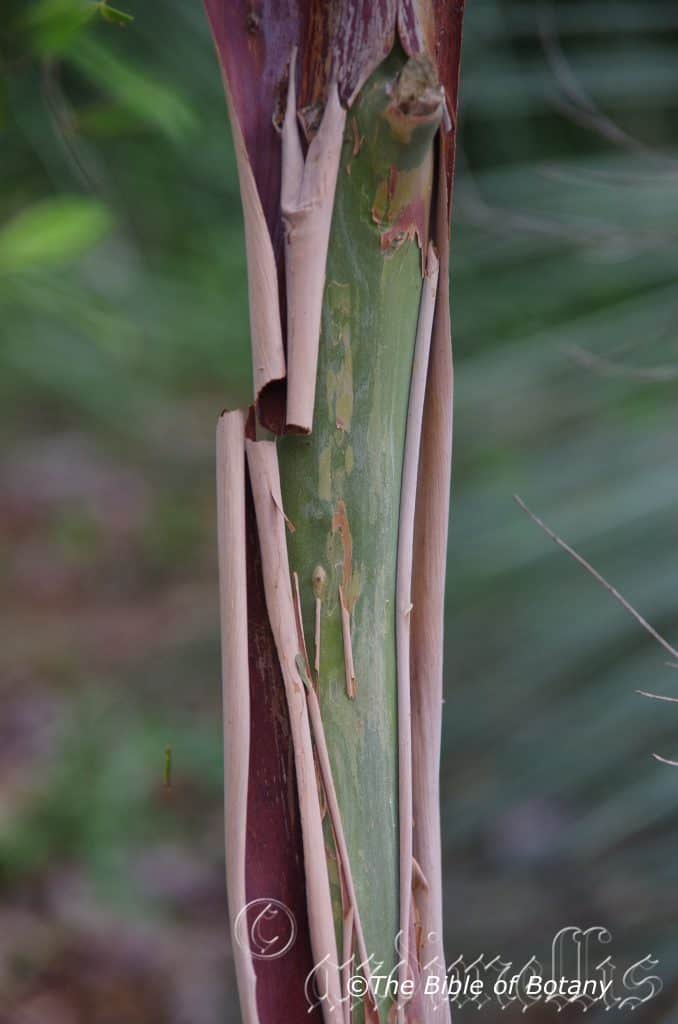
Logan River Qld.
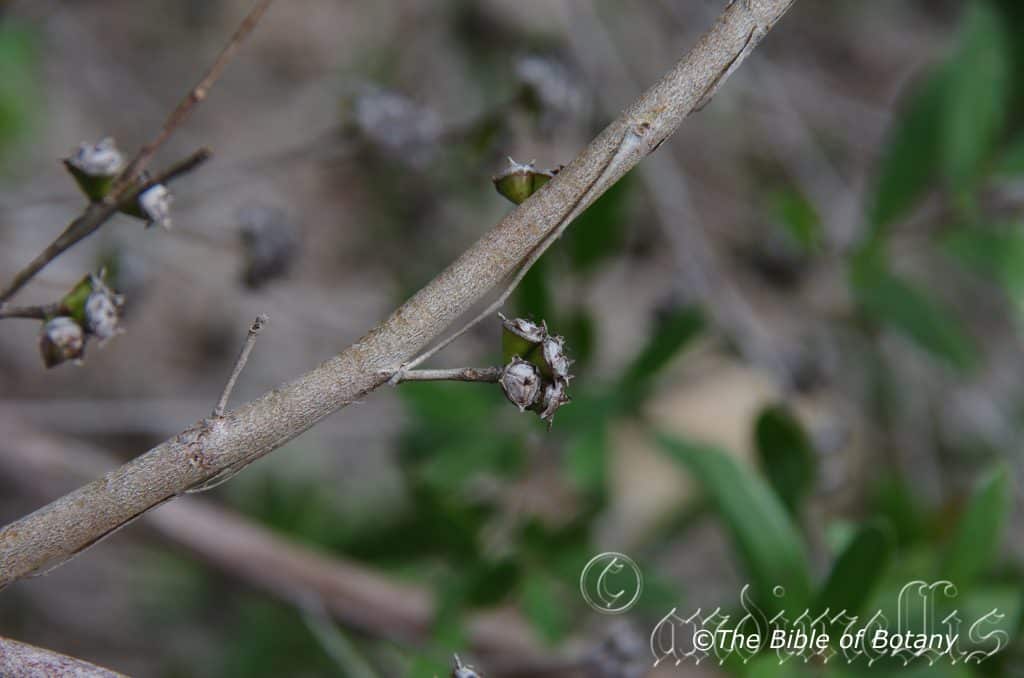
Logan River Qld.
Leptospermum leuhmannii
Classification:
Unranked: Magnoliophyta
Class:Magnoliopsida
Order: Myrtales
Family: Myrtaceae
Genus: From Leptós, which is Ancient Greek for delicate, fine or slender and Spérma, which is Ancient Greek for a seed. It refers to seeds, which are rather fine and slenderer than other genus in the family.
Specie: Is probably named in honour of Johanne George Christian Lehmann 1792-1860, who was a German botanist who directed work on Australian flora.
Sub species:
Common Name: Hillside May or Wild May.
Distribution:
Leptospermum leuhmannii is found around the Glasshouse Mountains in Queensland and a very small area between Grafton and Glen Innes, with a small population in Nana Glen in New South Wales. The New South Wales plants may prove to be a different species when DNA or further testing is done.
https://avh.ala.org.au/occurrences/search?taxa=Leptospermum+leuhmannii#tab_mapView
Habitat Aspect Climate:
Leptospermum leuhmannii prefers full sun. It grows in dry schlerophyll forests along ridges and steep slopes. The altitude ranges from 50 meter ASL to 250 meters ASL.
The temperatures range from 2 degree in August to 38 degrees in January.
The rainfalls range from lows of 1000mm to an average of 1550mm.
Soil Requirements:
Leptospermum leuhmannii prefer to grow on better quality medium clays. The soils are usually derived from decomposed black basalt. The soils pH ranges from 5pH to 6pH. It does not tolerate waterlogged soils. Non saline soils to moderately saline soils are tolerated.
Height & Spread:
Wild Plants: 1.5m to 4m by 2m to 4m.
Characteristics:
Leptospermum leuhmannii’s grows as a small tree to large shrub with green and fawn glabrous bark that sheds in short ribbons hanging from the trunk and lower branches. The bark decorticates annually revealing a pale orange or green trunk and lower branches. The pale green to creamy green branchlets are glabrous and sparsely covered in white puberulent hairs near the apex. The branchlets flange distinctively at the main stem axils. The plants at Nana Glen sucker readily along the dry creek bank.
Leptospermum leuhmannii’s alternate, linear to narrow-elliptical leaves measure 18mm to 40mm in length by 3mm to 5mm in width. The glabrous petiole measures 0.5mm to 1mm in length. The bases are cuneate while the apexes are obtuse to mucronate. The discolourous laminas are pale green to pale olive green and sparsely covered in caduceus white puberulent hairs on the upper lamina while the lower lamina is slightly paler. The margins are entire, flat and slightly recurved. The mid vein is slightly prominent on the lower lamina and is not visible on the upper lamina.
The inflorescences of Leptospermum leuhmannii are born singularly or in small groups of up to 3 from the leaf axils. They measure 10mm to 12mm in diameter. The pale glabrous olive green hypanthium measure 3mm to 3.5mm in length. The pedicels measure 1mm to 1.4mm in length at anthesis. The 5 obtuse sepals are pale green, measure 1.2mm to 1.4mm in length. The sepals are glabrous while the margins are covered in white ciliate hairs. The 5 glabrous obovate or orbicular petals measure 2.6mm to 2.7mm in length by 2.4mm to 2.7mm wide.
The 20 white stamens are fused to the rim of the hypanthia and measure 1.5mm to 2mm in length. It is fused to the inner rim of the hypanthia. The green style is centrally located on the bright glossy green disc. The flowers appear from late October to mid-November
Leptospermum leuhmannii’s fruit is a small thin walled conical capsule. The sepals are persistent on the 3 ocular capsules which measure 2.5mm to 3mm length by 4mm to 4.7mm in diameter at the rim. The pale olive green capsules turn pale grey-brown and glabrous on ripening.
Wildlife:
The flowers of Leptospermum leuhmannii are fed upon by numerous small butterflies, native bees, native beetles, wasps and flies.
Cultivation:
Leptospermum leuhmannii is a beautiful small tree or medium shrub that grows particularly well on most loamy soils. It is suitable for small, medium and large gardens close to the coast or high in the mountains in warm temperate, sub-tropical or tropical gardens. As garden subjects they will grow from 3 meters to 5 meters in height by 3 meters to 4 meters in diameter when grown in the open. It is cold tolerant to temperatures at least as low as minus 5 degrees once established.
It has a particularly beautiful green and pink trunk.
It can be lightly tip pruned if a smaller bushier shrub is required or heavily pruned once fully established. Heavy pruning may induce the plants to sucker profusely. The plants we planted at Nana Glen are 6 meters tall by 4 meters to 5 meters in diameter. They have self-seeded, are following the dry creek bed along staying in the riparian zone where there was once only grass.
Propagation:
Seeds: Leptospermum leuhmannii seeds can be sown directly into a seed raising mix after roughing the sides with fine sandpaper to assist in germination. Cover the seeds with 15mm to 20mm of fine weed free mulch and keep moist. Place the tray in a warm sunny position.
When the seedlings are 20mm to 30mm tall, prick them out and plant them into 50mm native tubes using a good organic mix.
Once the seedlings reach 100mm to 150mm in height they can be planted out into their permanent position.
Cuttings: Use 100mm to 150mm long hardened material when growing from cuttings from the present season’s growth. Take them in warmer months of the year. Remove half the leaves from the bottom section being careful not to tear the bark.
1 Prepare the cutting mix by adding one third sharp clean river sand, one third peat and one third perlite. These ingredients are sterilize,
2 Select good material from non diseased plants,
3 Select semi green stems for cuttings. Look for a stem with two or three nodes,
4 Place the cutting on a flat, hard surface, and make a clean cut down one side of the cutting at the base for 10mm with a sharp sterile knife or razor blade. – This scarification of the node will increase the chances of roots emerging from this spot. Now remove all but one or two the leaves, leaving the apex leaves in tact. If the leaves are very large in proportion to the stem, cut off the apical halves.
5 Fill a saucer with water, and place a little medium strength rooting hormone into another container like a milk bottle top. Dip the node end of the cutting into the water and then into the rooting hormone. Tap off any excess hormone,
6 Use a small dipple stick or old pencil to poke a hole into the soilless potting mix. Ensure the hole is slightly larger than the stem diameter and be careful not to wipe the rooting hormone off the cuttings base, place the cuttings in a pattern ensuring the cuttings are not touching each other,
7 I like to place the pots in Plastic bags to help maintain temperature and moisture. Place in a semi shaded place like under 50mm shade cloth.
8 When the cuttings have struck, open the bag to allow air circulation for a few days to a week,
9 Once hardened off remove the cuttings from the bag and allow to further hardening for a few more days,
10 Transplant into a good potting mix to grow on.
Fertilize using seaweed, fish emulsion or organic chicken pellets soaked in water on an alternate basis. Fertilize every two months until the plants are established then twice annually in early September or March to maintain health, vitality and better flowering.
Further Comments from Readers:
Hi reader, it seems you use The Bible of Botany a lot. That’s great as we have great pleasure in bringing it to you! It’s a little awkward for us to ask, but our first aim is to purchase land approximately 1,600 hectares to link several parcels of N.P. into one at The Pinnacles NSW Australia, but we need your help. We’re not salespeople. We’re amateur botanists who have dedicated over 30 years to saving the environment in a practical way. We depend on donations to reach our goal. If you donate just $5, the price of your coffee this Sunday, We can help to keep the planet alive in a real way and continue to bring you regular updates and features on Australian plants all in one Botanical Bible. Any support is greatly appreciated. Thank you.
In the spirit of reconciliation we acknowledge the Bundjalung, Gumbaynggirr and Yaegl and all aboriginal nations throughout Australia and their connections to land, sea and community. We pay our respect to their Elders past, present and future for the pleasures we have gained.
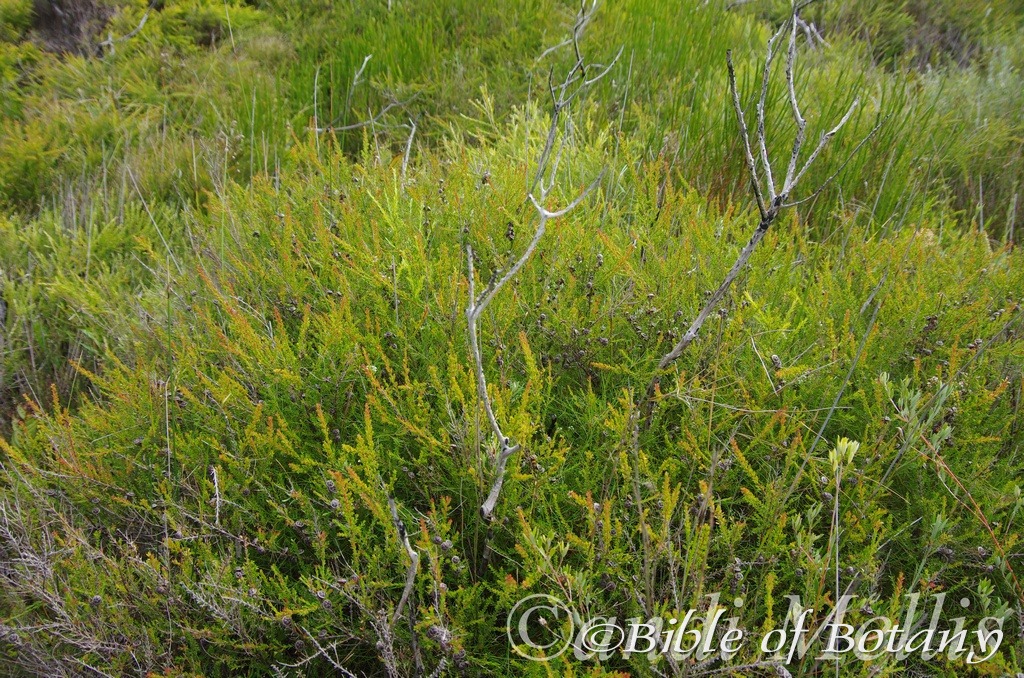
North Yuraygir National Park NSW
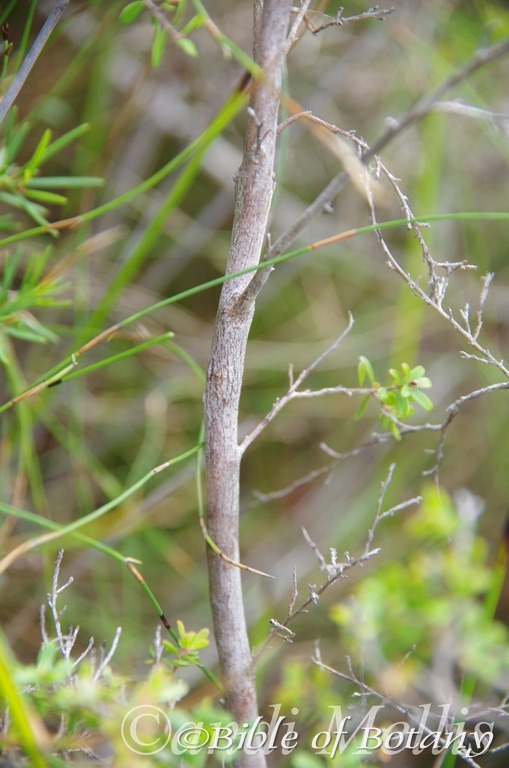
North Yuraygir National Park NSW
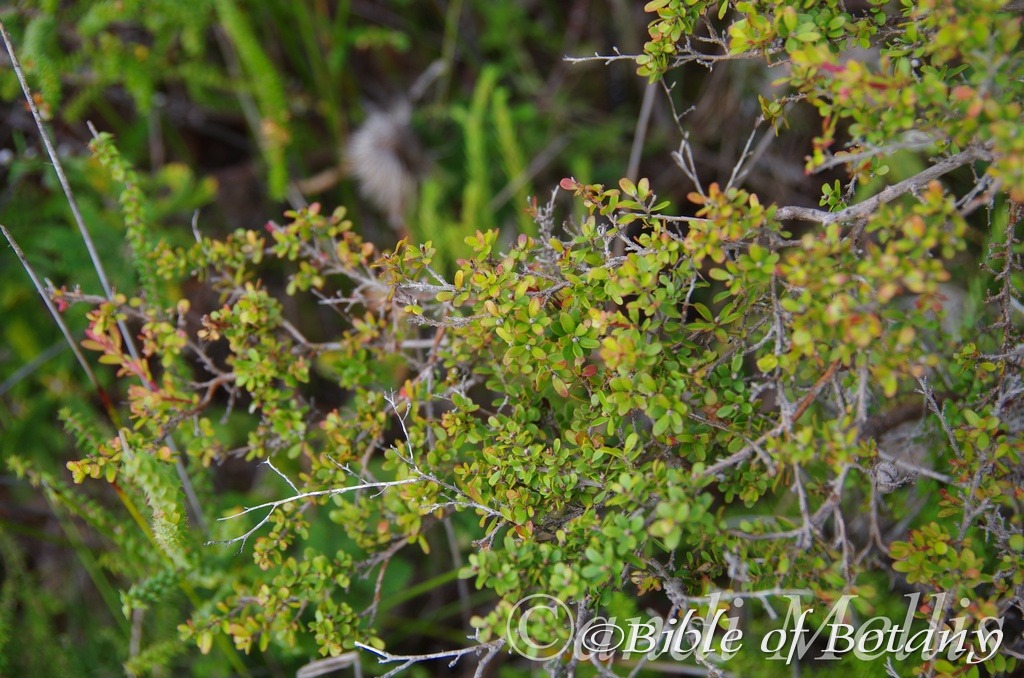
North Yuraygir National Park NSW
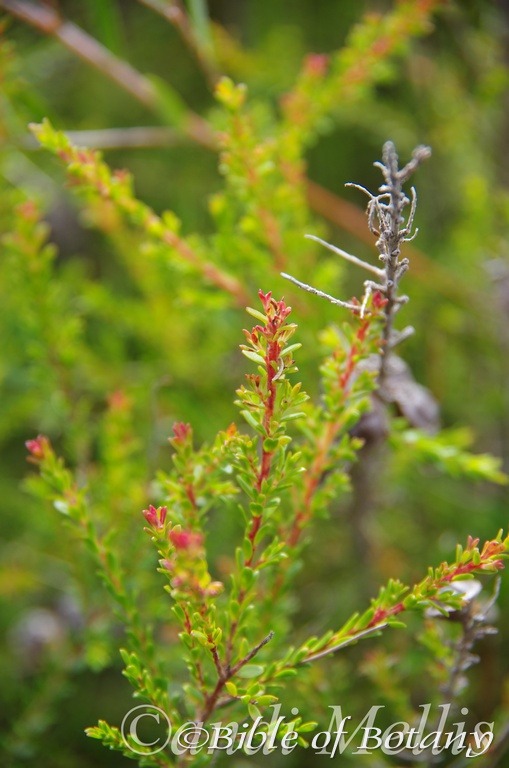
North Yuraygir National Park NSW
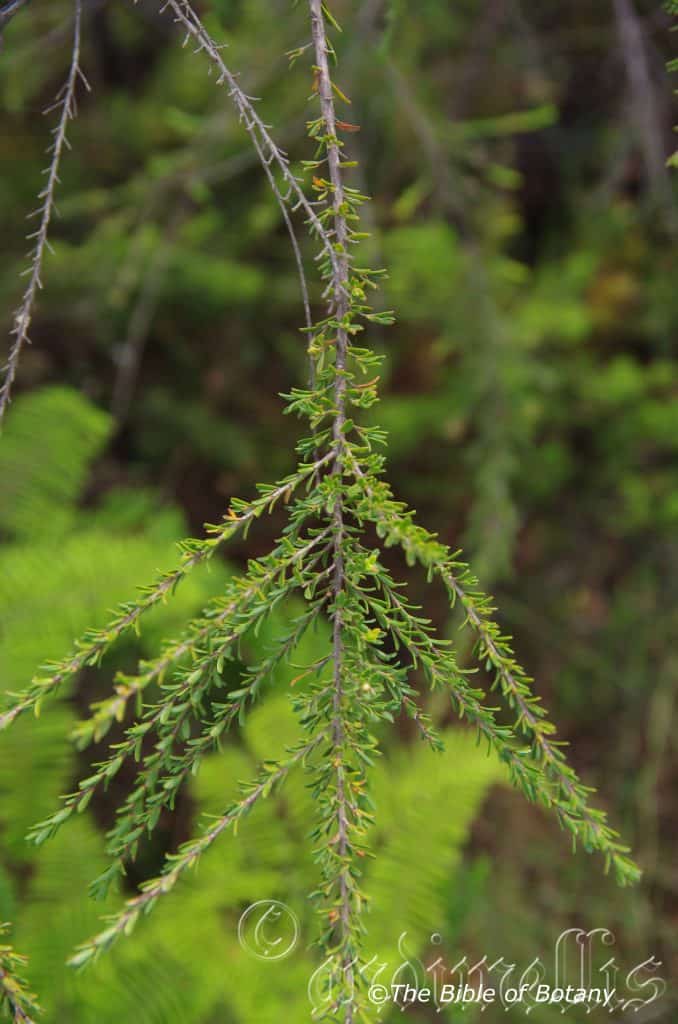
Boorkoom Yuraygir National Park NSW
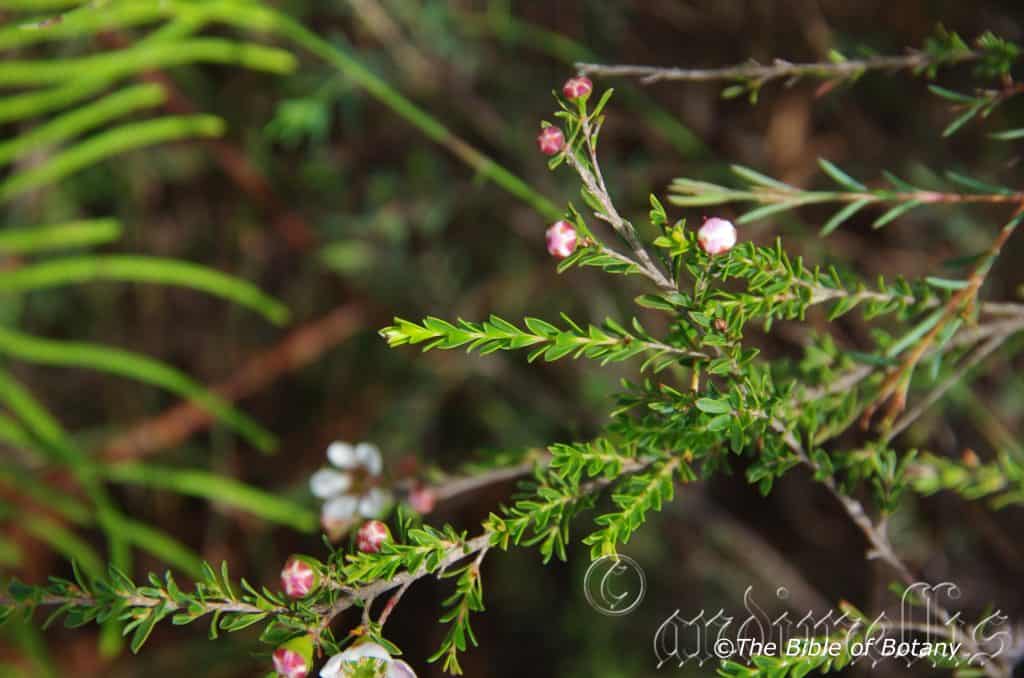
Boorkoom Yuraygir National Park NSW
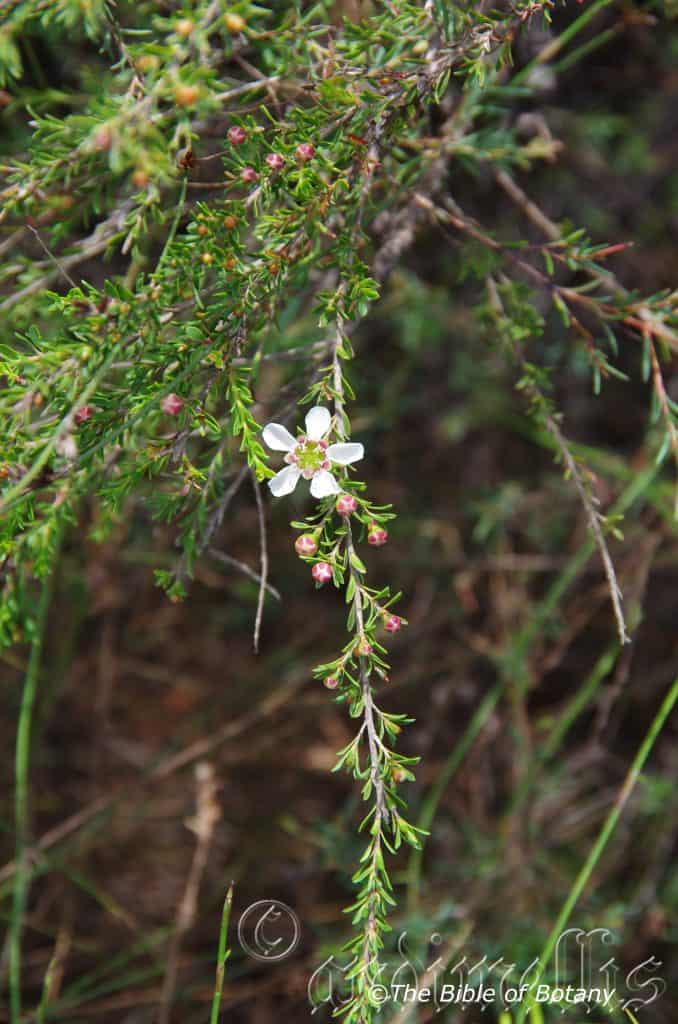
Boorkoom Yuraygir National Park NSW
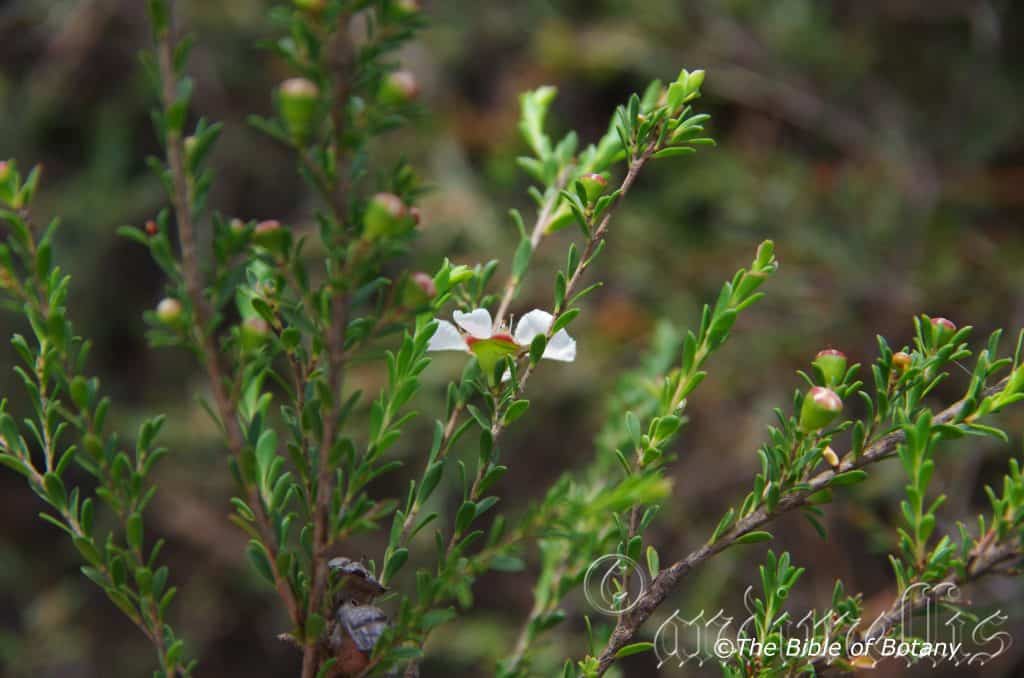
Boorkoom Yuraygir National Park NSW
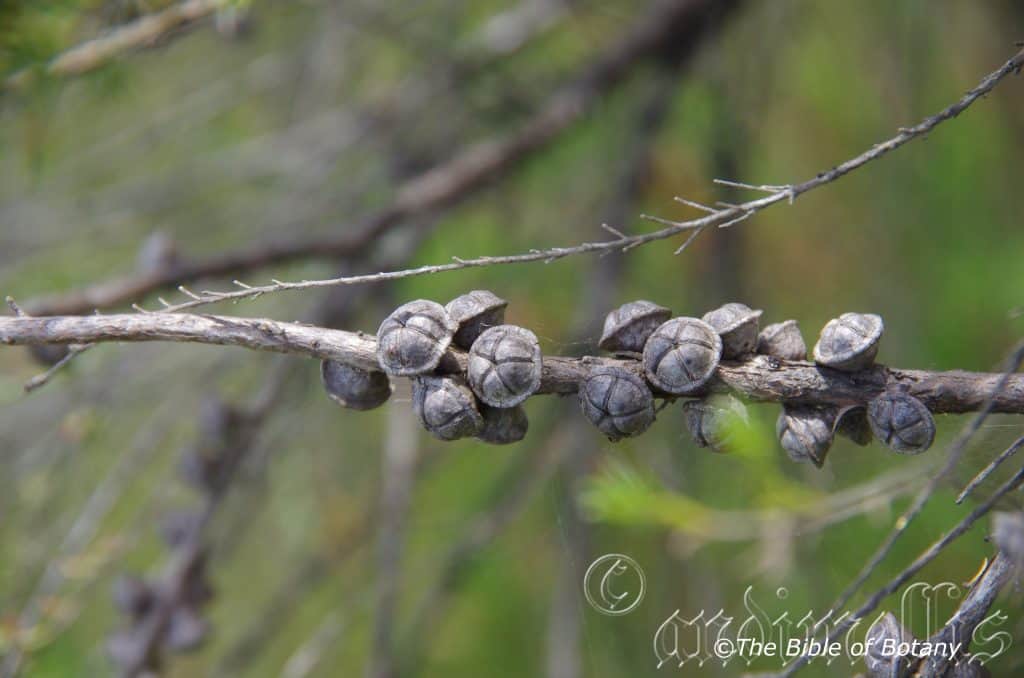
Boorkoom Yuraygir National Park NSW
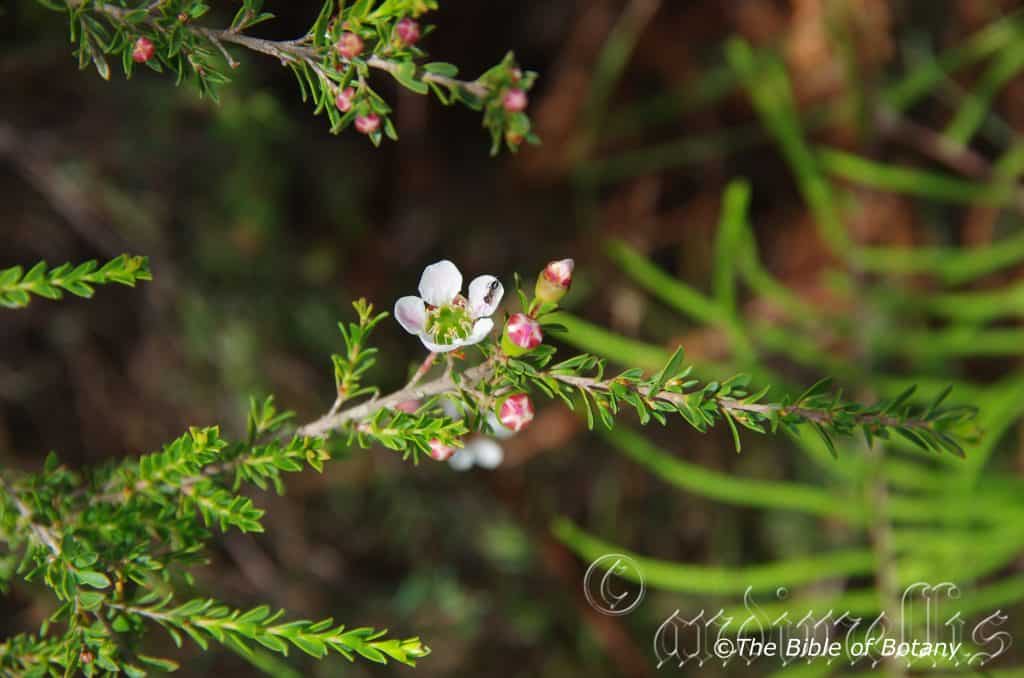
Boorkoom Yuraygir National Park NSW
Leptospermum liversidgei
Classification:
Unranked: Magnoliophyta
Class:Magnoliopsida
Order: Myrtales
Family: Myrtaceae
Genus: From Leptós, which is Ancient Greek for delicate, fine or slender and Spérma, which is Ancient Greek for a seed. It refers to seeds, which are rather fine and slenderer than other genus in the family.
Specie: Is named in honour of Archibald Liversidge; 1847-1927, who was a British Chemist and professor of geology at the Sydney University.
Sub species:
Common Name: Olive Tea Tree.
Distribution:
Leptospermum liversidgei is found south from Bundaberg and Fraser Island in southern coastal Queensland to Port Nelson in central coastal New South Wales. It is found east of the Great Dividing Range along the coastal strip.
https://avh.ala.org.au/occurrences/search?taxa=Leptospermum+liversidgei#tab_mapView
Habitat Aspect Climate:
Leptospermum liversidgei prefers to grow in full sun to light dappled shade. It grows in low lying coastal swamps, wet wallums or coastal depressions. The altitude ranges from 2 meter ASL to 30 meters ASL.
The temperatures range from 2 degree in August to 38 degrees in January.
The rainfalls range from lows of 950mm to an average of 1600mm.
Soil Requirements:
Leptospermum liversidgei prefers better quality sands or peaty sandy loams. The soils are usually derived from accumulated beach sands. The soils pH ranges from 5pH to 6pH. It tolerates waterlogged soils. Non saline soils to very saline soils are tolerated as are salt laden winds.
Height & Spread:
Wild Plants: 1.5m to 4m by 2m to 4m.
Characteristics:
Leptospermum liversidgei’s grows as a medium to large shrub with pale grey to mid grey bark that is closely appressed to the trunk and lower branches. The pale green to creamy green branchlets are moderately covered in fine, soft, caduceous white pubescent hairs.
Leptospermum liversidgei’s crowded leaves eventually become alternate. They narrow obovate coriaceous leaves measure 5mm to 7mm in length by 1mm to 2mm in width. The bases taper to the very short thick petiole which measures less than 0.5mm in length while the apexes are acute to obtuse. The discolourous laminas are deep grass-green to olive-green and glabrous. The laminas recurve upwards slightly from the mid vein to the margins while the margins are entire. The mid vein is obscure on both laminas. The leaves emit a strong citronella scent when crushed.
The inflorescences of Leptospermum liversidgei are born solitary from the leaf axils. They measure 10mm to 12mm in diameter. The pale olive-green hypanthium is glabrous or sparsely covered in white minute puberulent hairs and conspicuous oil glands. The hypanthium measure 3mm to 3.5mm in length. The pedicels measure 1mm to 1.5mm in length at anthesis. The 5 glabrous, obtuse sepals are deep pink to maroon-pink and measure 1.8mm to 2.2mm in length. The 5 glabrous obovate or circular petals are white with variable pale pink to mid pink markings to pale pink to mid pink and measure 4mm to 5mm in length by 4mm to 5mm in width.
The 25 or 30 white stamens are fused to the rim of the hypanthia and measure 1.5mm to 2mm in length. The green style is centrally located on the bright glossy green disc. The flowers appear mainly during January.
Leptospermum liversidgei’s fruits are broad, woody, conical capsules. The 5 locular capsules measure 5.5mm to 7mm length by 7mm to 11mm in diameter at the rim. The pale olive green capsules turn mid grey and glabrous on ripening. The domed valves are exserted to half the depth of base and are not wider than the rim.
Wildlife:
Leptospermum liversidgei’s flowers are attractive to numerous small butterflies, native bees, native beetles, wasps and flies.
Cultivation:
Leptospermum liversidgei are beautiful medium shrubs that grow particularly well on moisture problem soils. It is suitable for small, medium and large gardens close to the coast or high in the mountains in warm temperate, sub-tropical or tropical gardens. As garden subjects they will grow from 2 meters to 2.5 meters in height by 2.5 meters to 3 meters in diameter. It is cold tolerant to temperatures at least as low as minus 4 degrees once established. They can be tip pruned if a smaller bushier shrub is required.
It is best used adjacent to small areas of bush as the fill in plant or close to paths or the house so their white flowers can be viewed regularly. It is great in larger rockeries as the feature. Here they can be planted in small groups of 2 or 3 as a standalone plant to create a harsher more barren look with other arid plants. If it is surrounded by shorter plants with fine foliages and red flowers they will dominate at the center giving an expansive look to the bed especially when it is in flower. This is one plant that benefits highly from being mass planted or planted in scattered clumps. There small size enables this to be achieved even in small and medium size gardens.
It is also very good bonsai plants or are very affective when highlighting the gnarled trunk.
It can be used as a single trunk small tree in a medium rockery or scattered 3 or 4 around near old stumps and roots to make the stumps or roots look larger and more gnarled.
Propagation:
Seeds: Leptospermum liversidgei seeds can be sown directly into a seed raising mix. Cover the seeds with 1mm to 2mm of fine weed free mulch and keep moist. Place the tray in a warm sunny position. When the seedlings are 20mm to 30mm tall, prick them out and plant them into 50mm native tubes using a good organic mix.
Once the seedlings reach 100mm to 150mm in height; nip the growing tips out and plant them into their permanent position.
Cuttings: Use 100mm to 150mm long hardened material when growing from cuttings from the present season’s growth. Take them in warmer months of the year. Remove half the leaves from the bottom section being careful not to tear the bark.
1 Prepare the cutting mix by adding one third sharp clean river sand, one third peat and one third perlite. These ingredients are sterilize,
2 Select good material from non diseased plants,
3 Select semi green stems for cuttings. Look for a stem with two or three nodes,
4 Place the cutting on a flat, hard surface, and make a clean cut down one side of the cutting at the base for 10mm with a sharp sterile knife or razor blade. – This scarification of the node will increase the chances of roots emerging from this spot. Now remove all but one or two the leaves, leaving the apex leaves in tact. If the leaves are very large in proportion to the stem, cut off the apical halves.
5 Fill a saucer with water, and place a little medium strength rooting hormone into another container like a milk bottle top. Dip the node end of the cutting into the water and then into the rooting hormone. Tap off any excess hormone,
6 Use a small dipple stick or old pencil to poke a hole into the soilless potting mix. Ensure the hole is slightly larger than the stem diameter and be careful not to wipe the rooting hormone off the cuttings base, place the cuttings in a pattern ensuring the cuttings are not touching each other,
7 I like to place the pots in Plastic bags to help maintain temperature and moisture. Place in a semi shaded place like under 50mm shade cloth.
8 When the cuttings have struck, open the bag to allow air circulation for a few days to a week,
9 Once hardened off remove the cuttings from the bag and allow to further hardening for a few more days,
10 Transplant into a good potting mix to grow on.
Fertilize using seaweed, fish emulsion or organic chicken pellets soaked in water on an alternate basis. Fertilize every two months until the plants are established then twice annually in early September or March to maintain health, vitality and better flowering.
Further Comments from Readers:
Hi reader, it seems you use The Bible of Botany a lot. That’s great as we have great pleasure in bringing it to you! It’s a little awkward for us to ask, but our first aim is to purchase land approximately 1,600 hectares to link several parcels of N.P. into one at The Pinnacles NSW Australia, but we need your help. We’re not salespeople. We’re amateur botanists who have dedicated over 30 years to saving the environment in a practical way. We depend on donations to reach our goal. If you donate just $5, the price of your coffee this Sunday, We can help to keep the planet alive in a real way and continue to bring you regular updates and features on Australian plants all in one Botanical Bible. Any support is greatly appreciated. Thank you.
In the spirit of reconciliation we acknowledge the Bundjalung, Gumbaynggirr and Yaegl and all aboriginal nations throughout Australia and their connections to land, sea and community. We pay our respect to their Elders past, present and future for the pleasures we have gained.
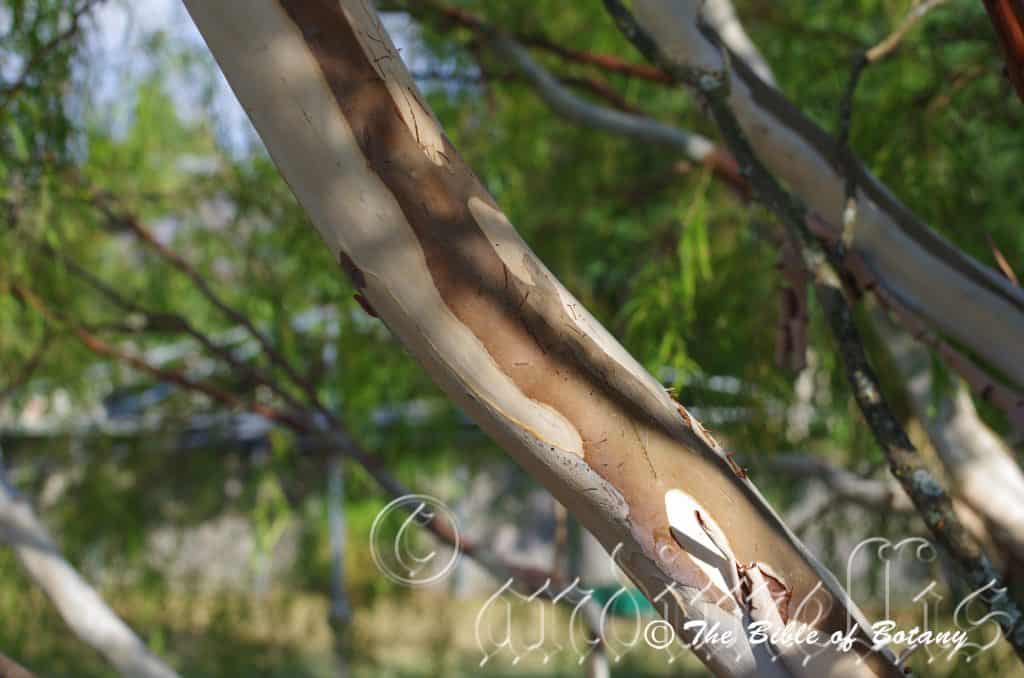
Norman Park Qld.
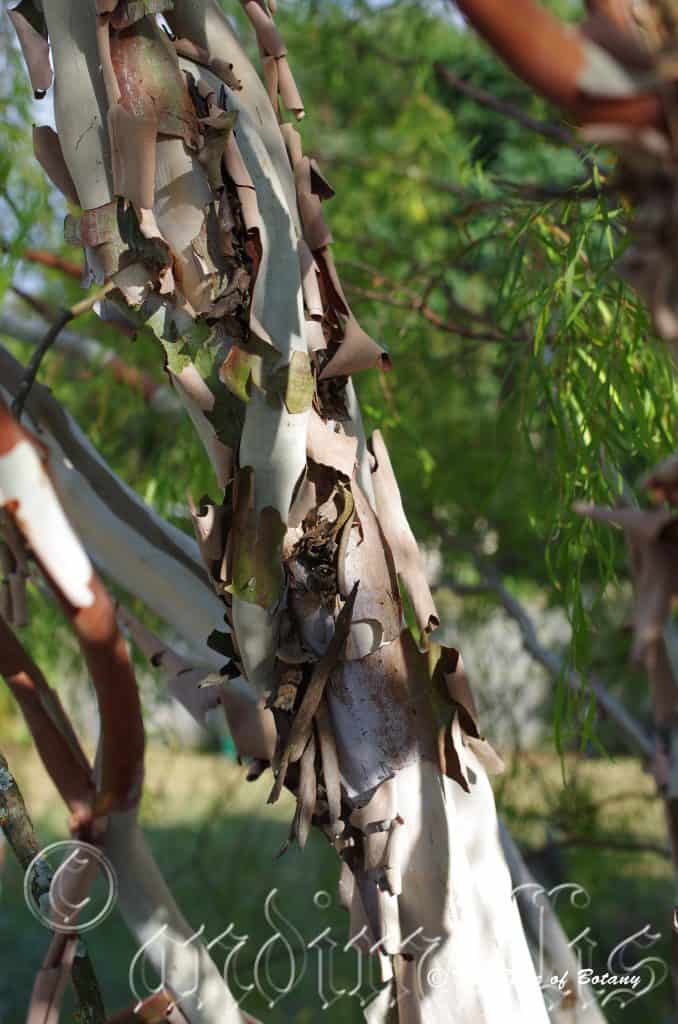
Norman Park Qld.
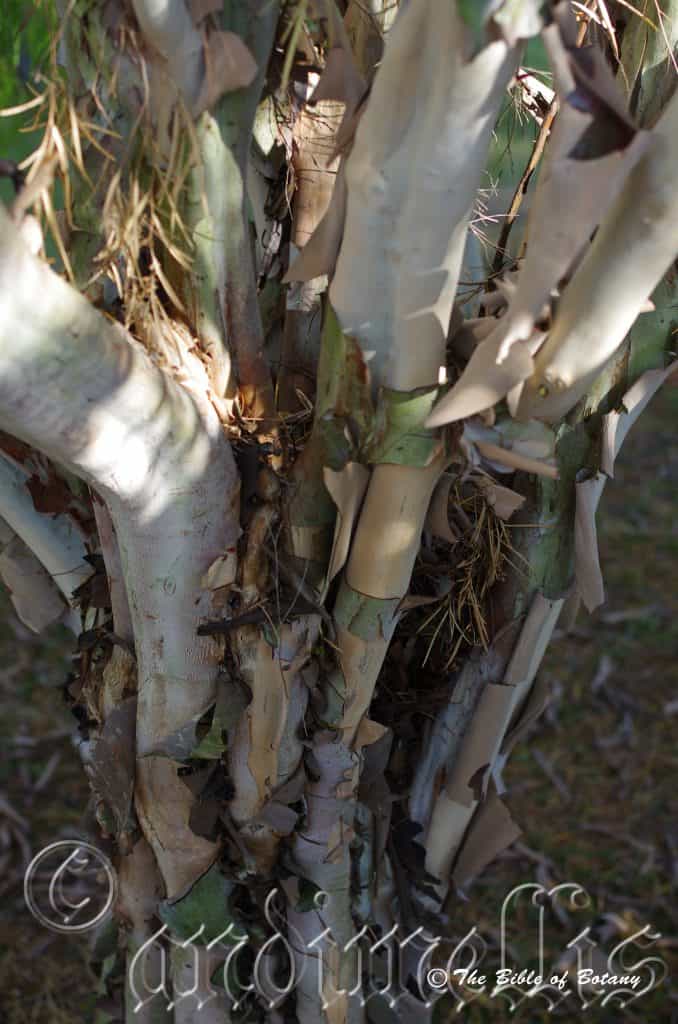
Norman Park Qld.
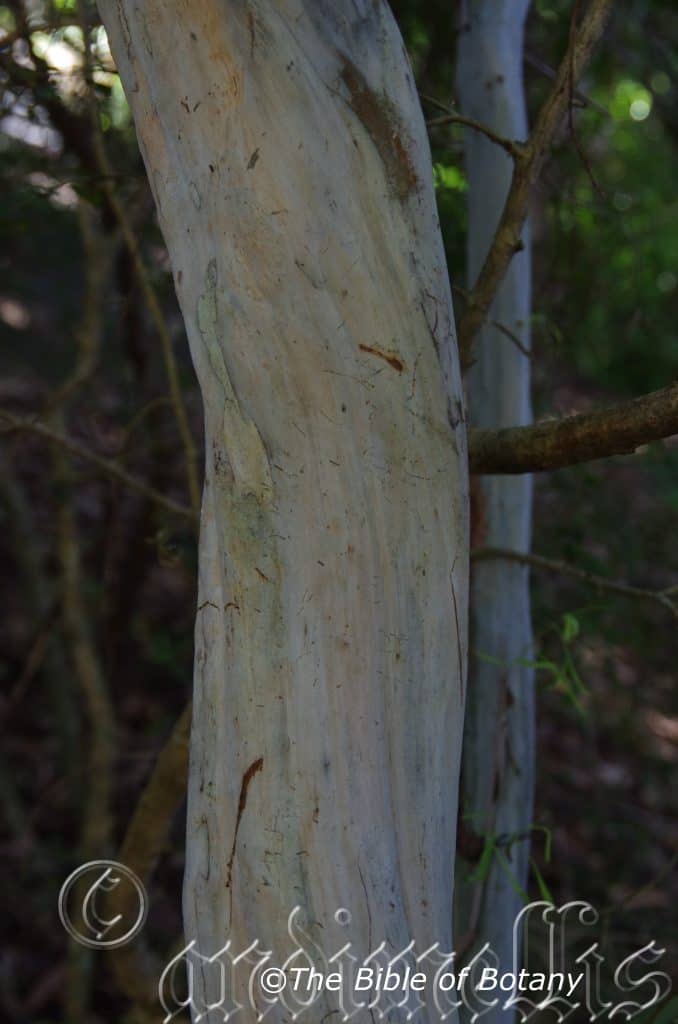
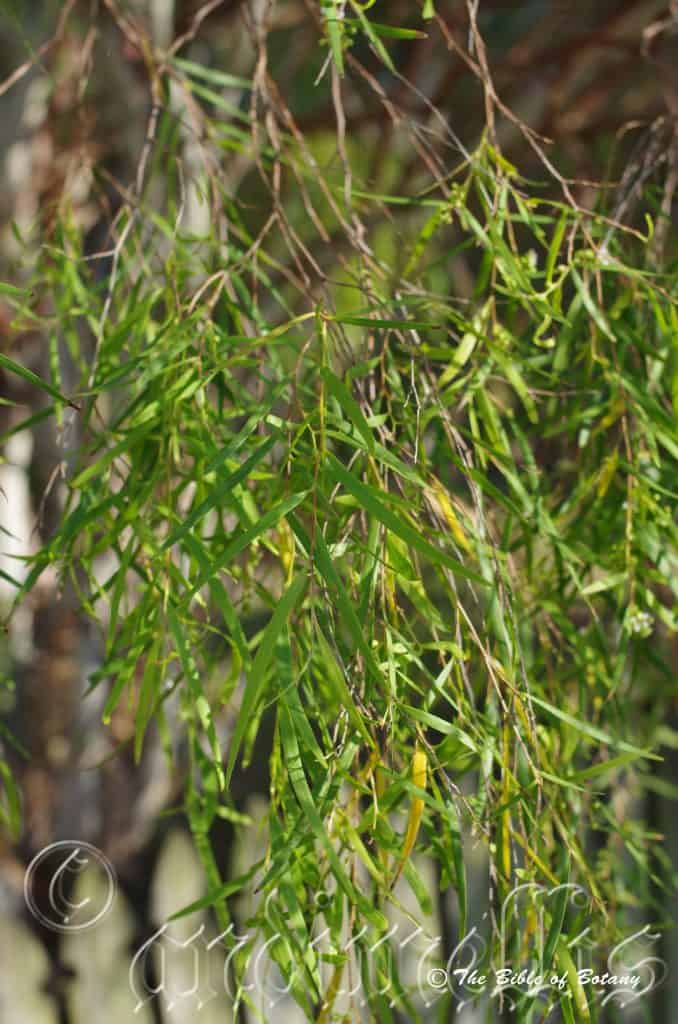
Norman Park Qld.
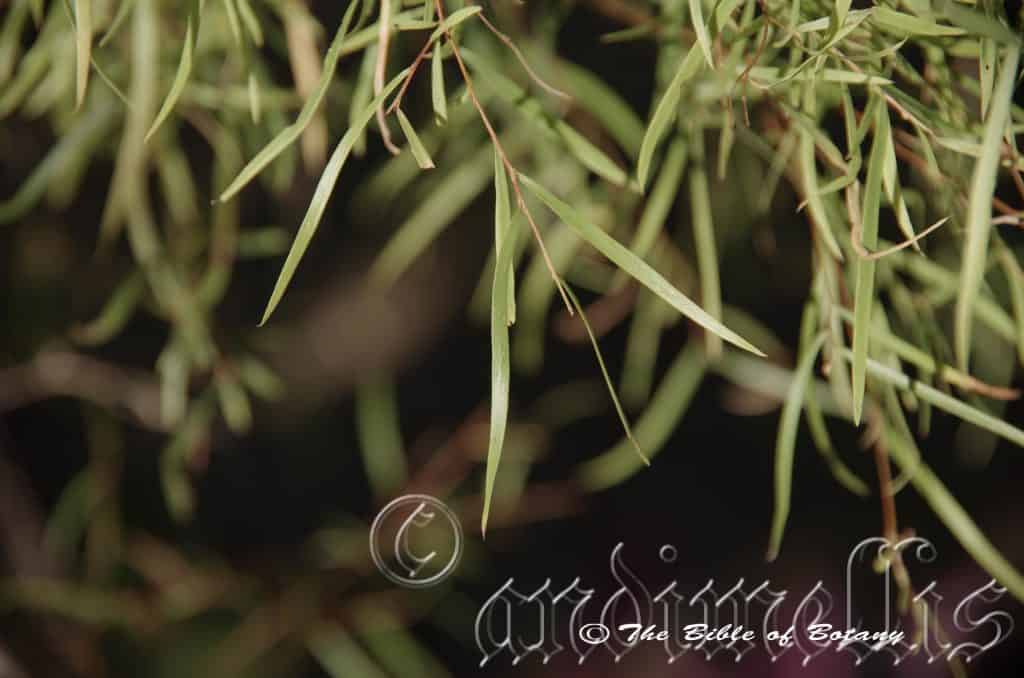
Castle Hill Qld.
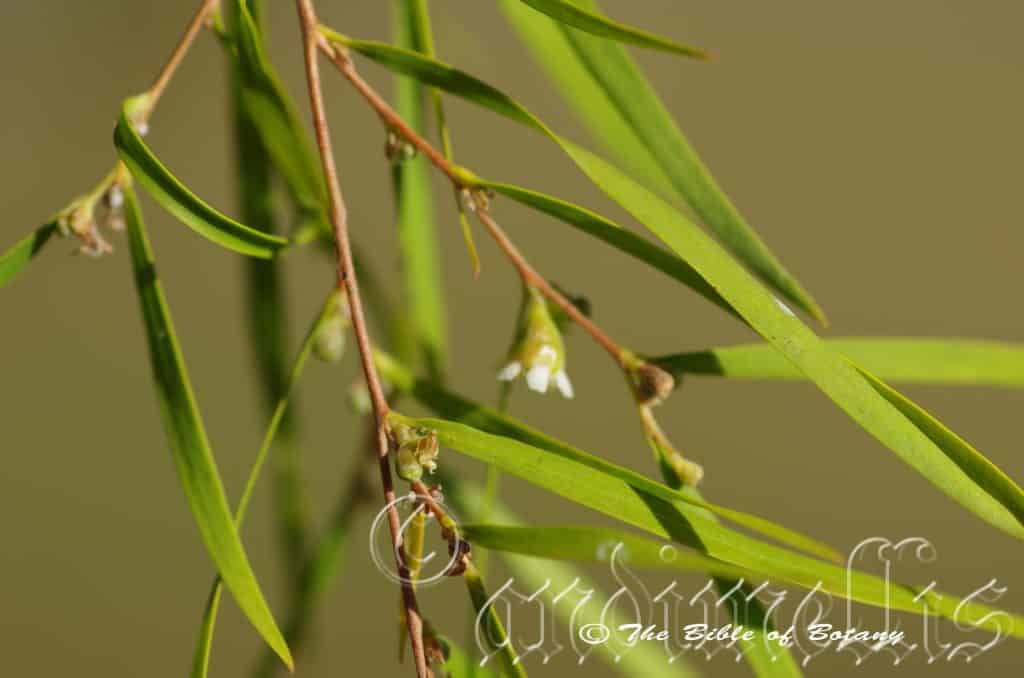
Castle Hill Qld.
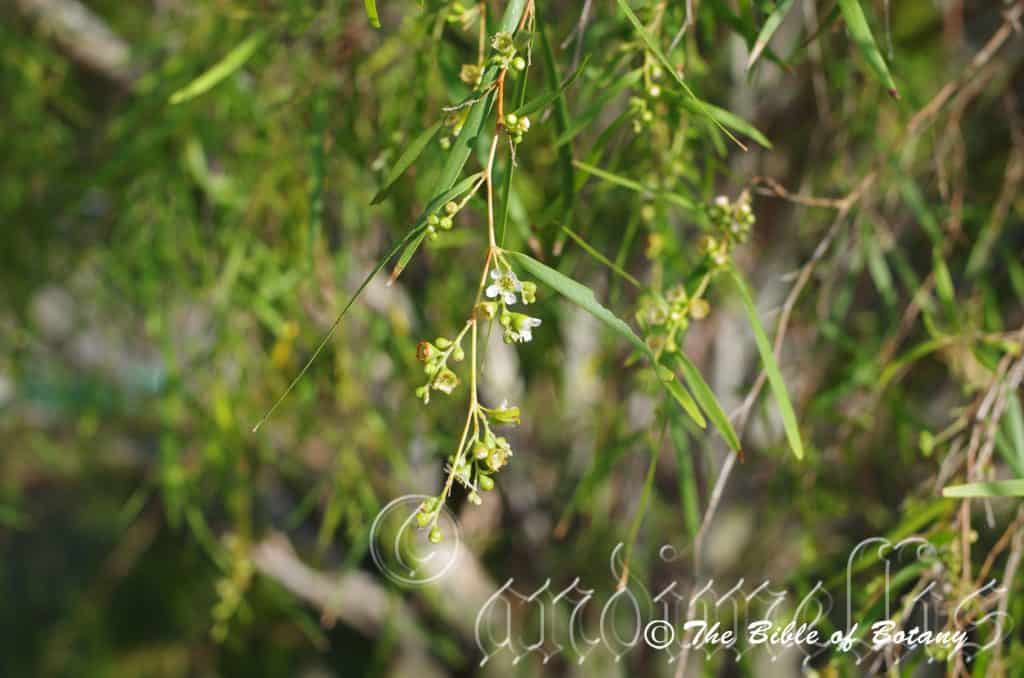
Norman Park Qld.
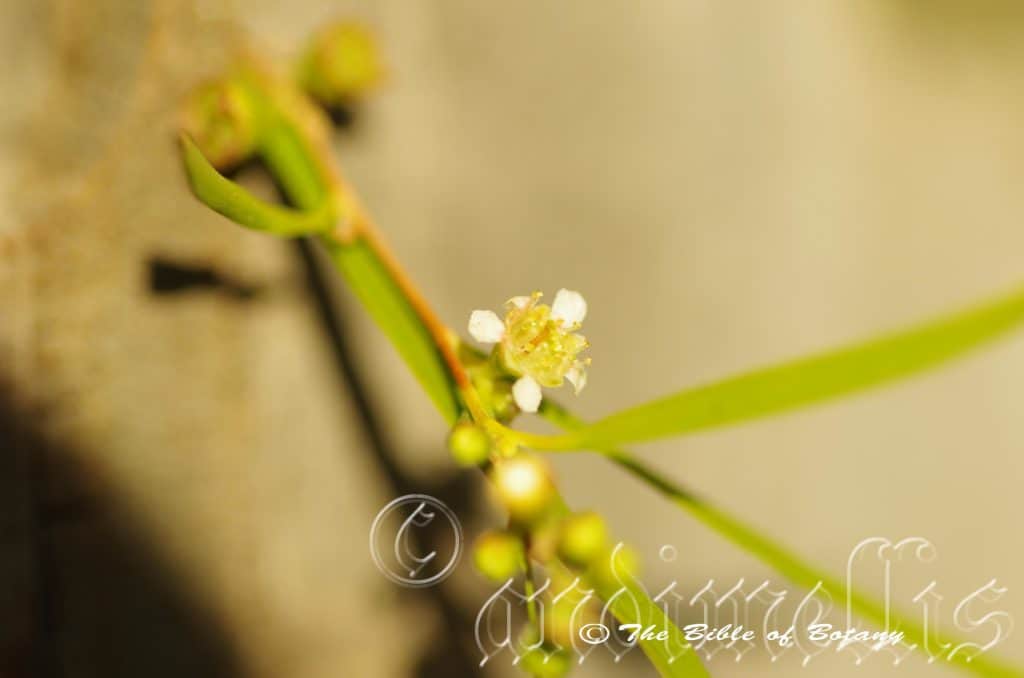
Castle Hill Qld.
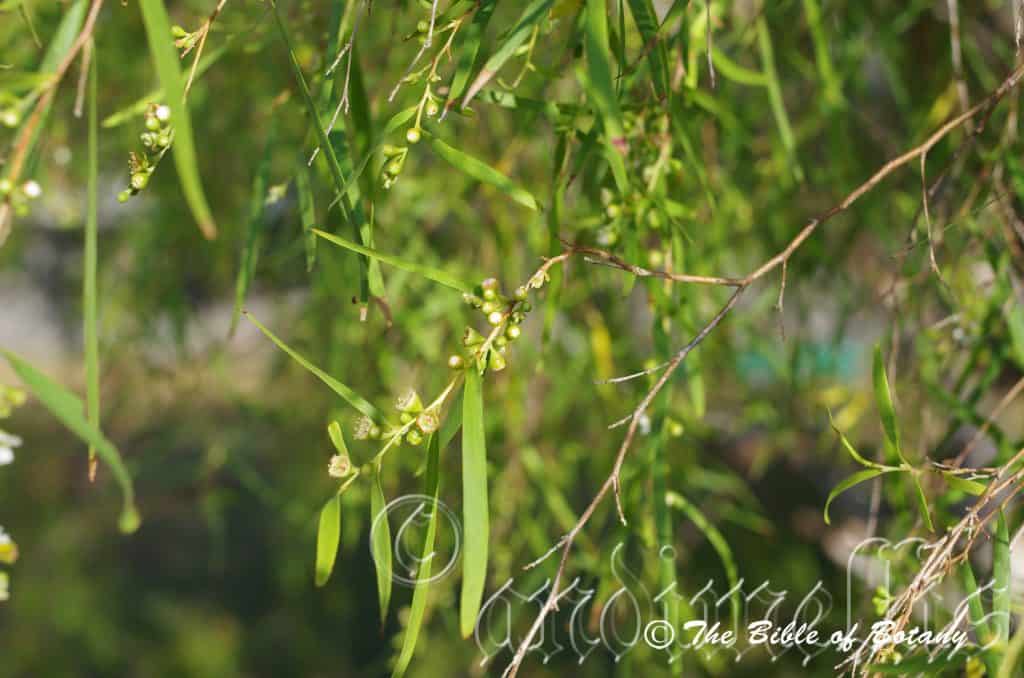
Norman Park Qld.
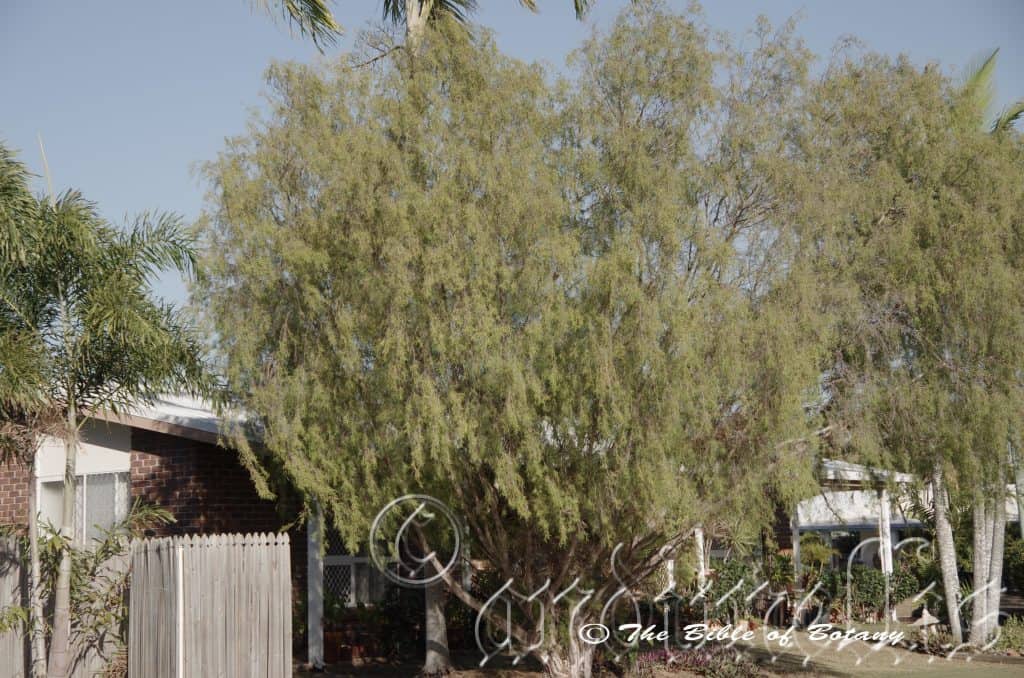
Condon Qld.
Leptospermum madidum
Classification:
Unranked: Magnoliophyta
Class:Magnoliopsida
Order: Myrtales
Family: Myrtaceae
Genus: From Leptós, which is Ancient Greek for delicate, fine or slender and Spérma, which is Ancient Greek for a seed. It refers to seeds, which are rather fine and slenderer than other genus in the family.
Specie: From Madidus, which is Latin for moist or wet. It refers to plants, which prefer moist or wet habitats like on rainforest trees in high rainfall areas, swamps or higher altitudes where continual fogs and orographic precipitation frequently occur or in wallums, marshes or along wet riparian zones.
Sub species: Leptospermum madidum subsp. madidum. From Madidus, which is Latin for moist or wet. It refers to plants, which prefer moist or wet habitats like on rainforest trees in high rainfall areas, swamps or higher altitudes where continual fogs and orographic precipitation frequently occur.
Sub species: Leptospermum Madidum subsp. sativum. From Sativa, which is Latin for cultivated. It refers to the fact that Cannabis or hemp fibre was one of the first crops cultivated for its fibre as a cash crop and can refer to other more recent plants, which were the first to be planted from their genus.
Common Name: Weeping Tea Tree.
Distribution:
Leptospermum madidum subsp. madidum is found along the rivers on Cape York Peninsula in far north Queensland.
Leptospermum Madidum subsp. sativum is found from the Ord River in north eastern, Western Australia along the rivers in the northern parts of the Northern Territory to the Peter John River near Nhulunbuy.
https://avh.ala.org.au/occurrences/search?taxa=Leptospermum+madidum#tab_mapView
Habitat Aspect Climate:
Leptospermum madidum prefers full sun to light dappled shade. It grows along creeks streams and gorges. The altitude ranges from 5 meters ASL to 280 meters ASL.
The temperatures range from 15 degree in August to 42 degrees in January.
The rainfalls range from lows of 500mm to an average of 2000mm however this is of little consequence as the plants derive most of their moisture from the creeks or streams which they grow along.
Soil Requirements:
Leptospermum madidum prefers better quality sandy loams to medium gravelly clays or light slits to heavy silts. The soils are usually derived from decomposed sandstone, granites or alluvial deposits. The soils pH ranges from 5pH to 7pH. It tolerates seasonal flooding and waterlogged soils. Non saline soils to very saline soils are tolerated.
Height & Spread:
Wild Plants: 2m to 8m by 3m to 8m.
Characteristics:
Leptospermum madidum’s trunk is white pink to pale fawn and white and papery. The pale fawn to pale grey branchlets are spongy while the new growth is pale green.
Leptospermum madidum’s alternate, linear to narrow elliptical leaves measure 30mm to 50mm in length by 3mm to 7mm in width. The bases are cunneate while the apex is acute. The laminas are concolourous with the laminas being pale green to pale olive-green and glabrous. The margins are entire and flat. The mid vein is slightly prominent on the lower lamina and is not visible on the upper lamina. The glabrous petioles measure 0.5mm to 2mm in length
The inflorescences of Leptospermum madidum are born in small clusters from the leaf axis and measure 6mm to 8mm in diameter. There are 3 to 7 flowers in a cluster. The pale green hypanthium measure 3mm to 3.5mm in length. The pedicels measure 0.5mm to 1mm in length. The 5 glabrous sepals are deep pink with white margins and measure 1mm to 2.5mm in length. The 5 white, circular, glabrous petals measure 2.5mm to 3.5mm in length by 2.5mm to 4mm wide.
The 50 white stamens are fused to the rim of the hypanthia and are free for their entire length and measure 1.5mm to 1.8mm in length. The green style is centrally located on the bright glossy green disc and measures 1mm in length. The turbinate stigma is glossy green. The flowers appear in July.
Leptospermum madidum’s fruit is a small conical capsule. The 5 locular capsules measure 3mm to 3.5mm in diameter at the rim. The pale blue-green capsules turn grey on ripening. The valves are not exerted.
Wildlife:
The flowers of Leptospermum madidum are fed upon by numerous small butterflies, native bees, native beetles, wasps and flies.
Cultivation:
Leptospermum madidum are beautiful semi weeping to weeping small trees that grow particularly well on moisture problem soils. It is suitable for small, medium and large gardens close to the coast in sub-tropical, tropical or arid gardens. As garden subjects they will grow from 6 meters to 8 meters by 5 meters to 6 meters wide. It is cold tolerant to temperatures at least as low as 0 degrees once established.
It is best used as a small park tree, placed in the background or planted centrally as a small feature tree in small gardens surrounded by other small native shrubs. Placed at the rear of a bush garden their striking willowy pendant branches and pink trunk will draw your attention so that you will want to investigate further. Plants with small red flowers and large leaves can be used in the mid ground while small red flowering prostrate shrubs are used in the front. Whether it is in flower or not these trees will catch your attention because of the proliferation of flowers, weeping habit and bark.
It is also very good bonsai plants, in which the trunk can be highlighted, made gnarled or used to show the gorgeous colour.
Propagation:
Seeds: Leptospermum madidum seeds can be sown directly into a seed raising mix after roughing the sides with fine sandpaper to assist in germination. Cover the seeds with 15mm to 20mm of fine weed free mulch and keep moist. Place the tray in a warm sunny position. When the seedlings are 20mm to 30mm tall, prick them out and plant them into 50mm native tubes using a good organic mix.
Once the seedlings reach 100mm to 150mm in height they can be planted out into their permanent position.
Cuttings: Use 100mm to 150mm long hardened material when growing from cuttings from the present season’s growth. Take them in warmer months of the year. Remove half the leaves from the bottom section being careful not to tear the bark.
1 Prepare the cutting mix by adding one third sharp clean river sand, one third peat and one third perlite. These ingredients are sterilize,
2 Select good material from non diseased plants,
3 Select semi green stems for cuttings. Look for a stem with two or three nodes,
4 Place the cutting on a flat, hard surface, and make a clean cut down one side of the cutting at the base for 10mm with a sharp sterile knife or razor blade. – This scarification of the node will increase the chances of roots emerging from this spot. Now remove all but one or two the leaves, leaving the apex leaves in tact. If the leaves are very large in proportion to the stem, cut off the apical halves.
5 Fill a saucer with water, and place a little medium strength rooting hormone into another container like a milk bottle top. Dip the node end of the cutting into the water and then into the rooting hormone. Tap off any excess hormone,
6 Use a small dipple stick or old pencil to poke a hole into the soilless potting mix. Ensure the hole is slightly larger than the stem diameter and be careful not to wipe the rooting hormone off the cuttings base, place the cuttings in a pattern ensuring the cuttings are not touching each other,
7 I like to place the pots in Plastic bags to help maintain temperature and moisture. Place in a semi shaded place like under 50mm shade cloth.
8 When the cuttings have struck, open the bag to allow air circulation for a few days to a week,
9 Once hardened off remove the cuttings from the bag and allow to further hardening for a few more days,
10 Transplant into a good potting mix to grow on.
Fertilize using seaweed, fish emulsion or organic chicken pellets soaked in water on an alternate basis. Fertilize every two months until the plants are established then twice annually in early September or March to maintain health, vitality and better flowering.
Further Comments from Readers:
Hi reader, it seems you use The Bible of Botany a lot. That’s great as we have great pleasure in bringing it to you! It’s a little awkward for us to ask, but our first aim is to purchase land approximately 1,600 hectares to link several parcels of N.P. into one at The Pinnacles NSW Australia, but we need your help. We’re not salespeople. We’re amateur botanists who have dedicated over 30 years to saving the environment in a practical way. We depend on donations to reach our goal. If you donate just $5, the price of your coffee this Sunday, We can help to keep the planet alive in a real way and continue to bring you regular updates and features on Australian plants all in one Botanical Bible. Any support is greatly appreciated. Thank you.
In the spirit of reconciliation we acknowledge the Bundjalung, Gumbaynggirr and Yaegl and all aboriginal nations throughout Australia and their connections to land, sea and community. We pay our respect to their Elders past, present and future for the pleasures we have gained.
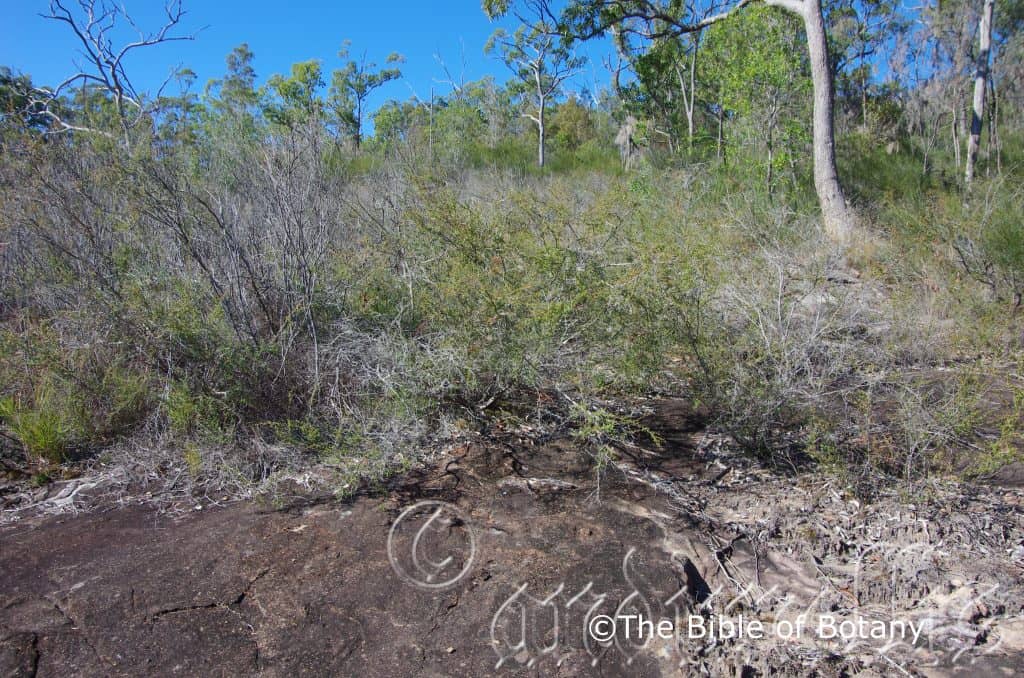
The Pinnacles NSW
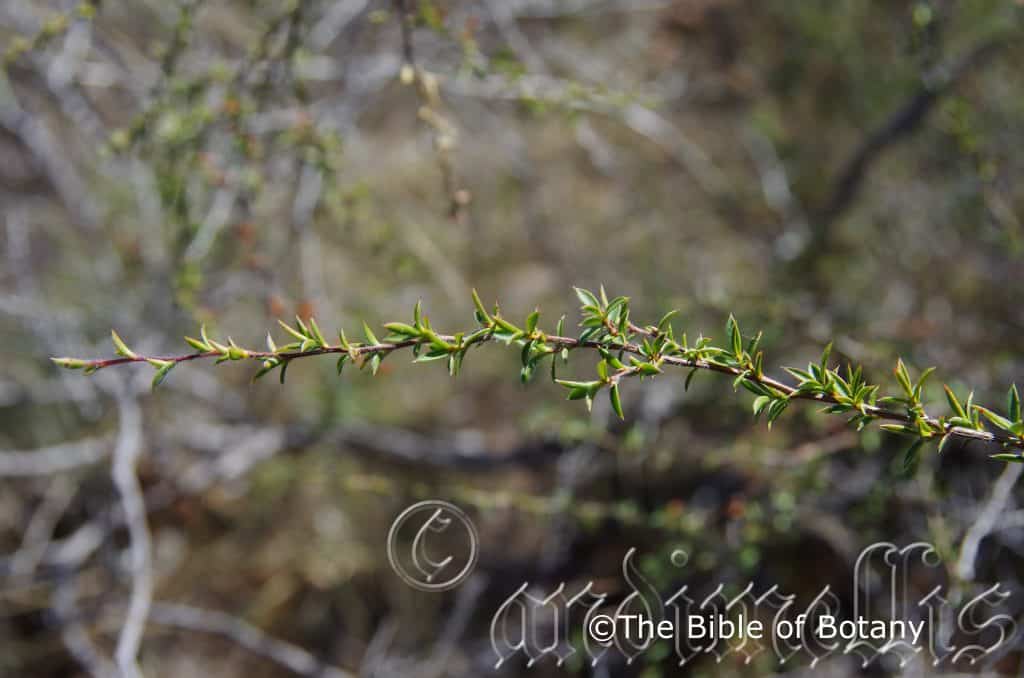
The Pinnacles NSW
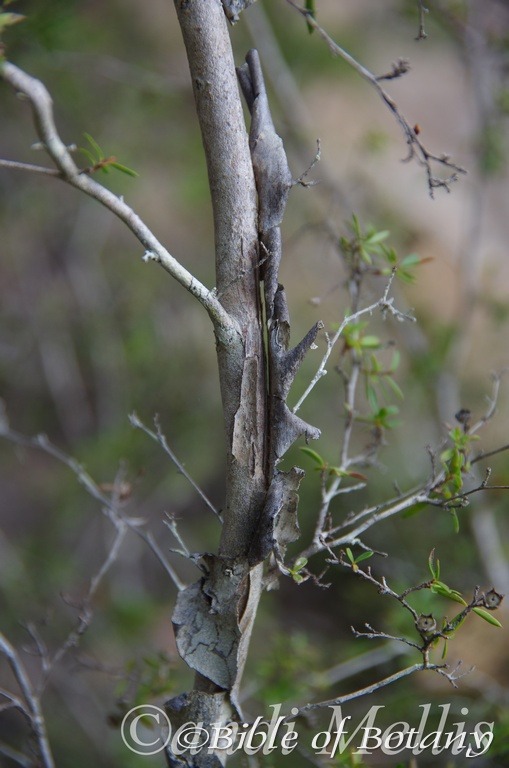
Fortis Creek National Park NSW
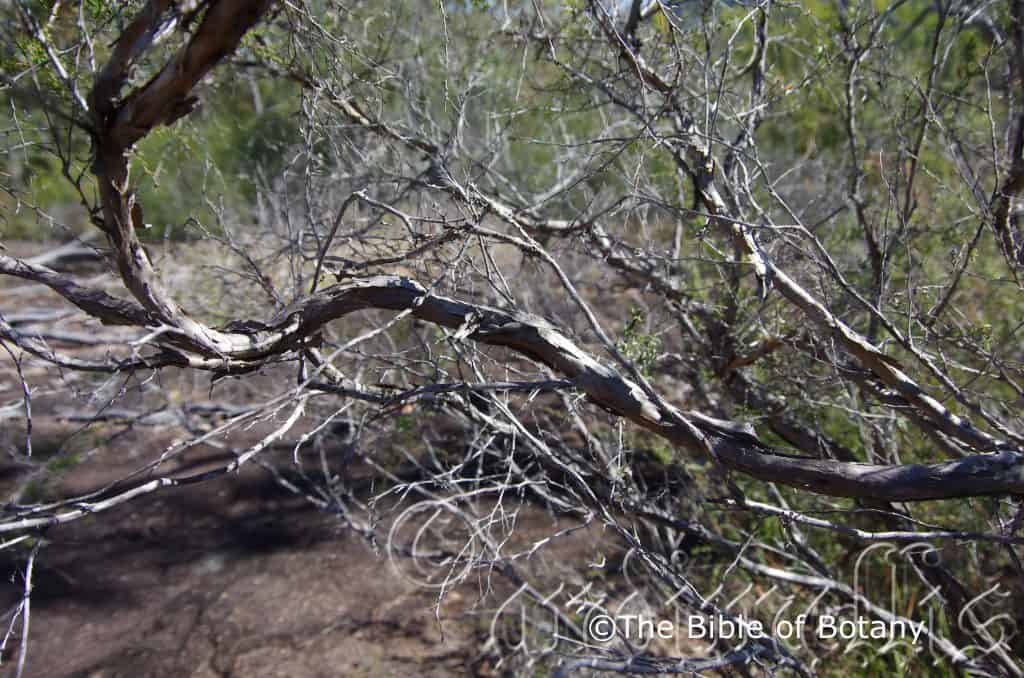
The Pinnacles NSW
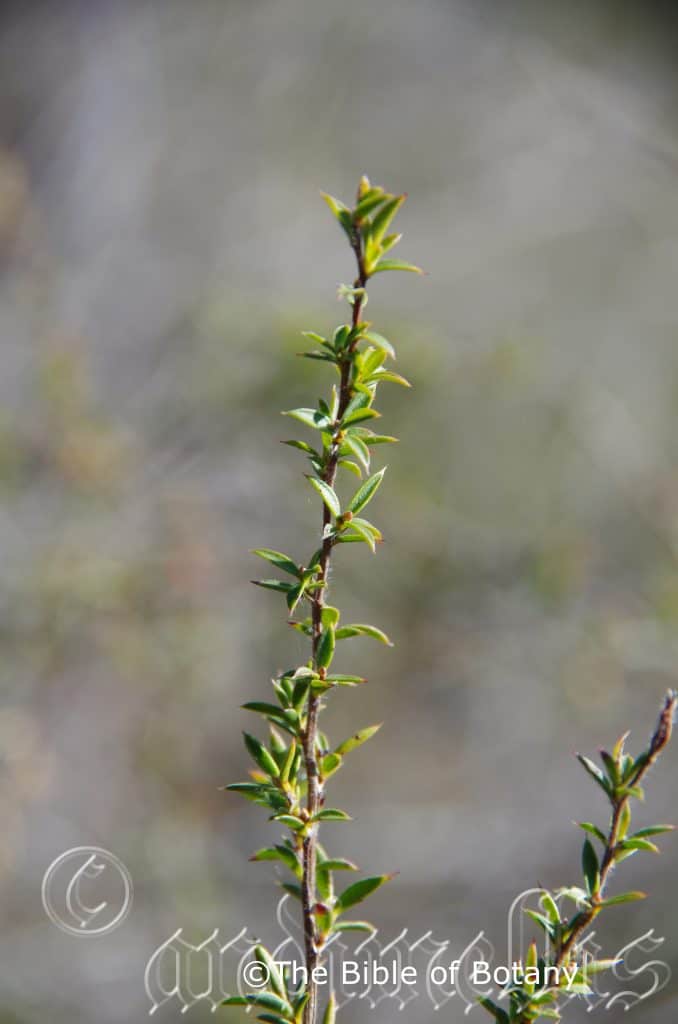
The Pinnacles NSW
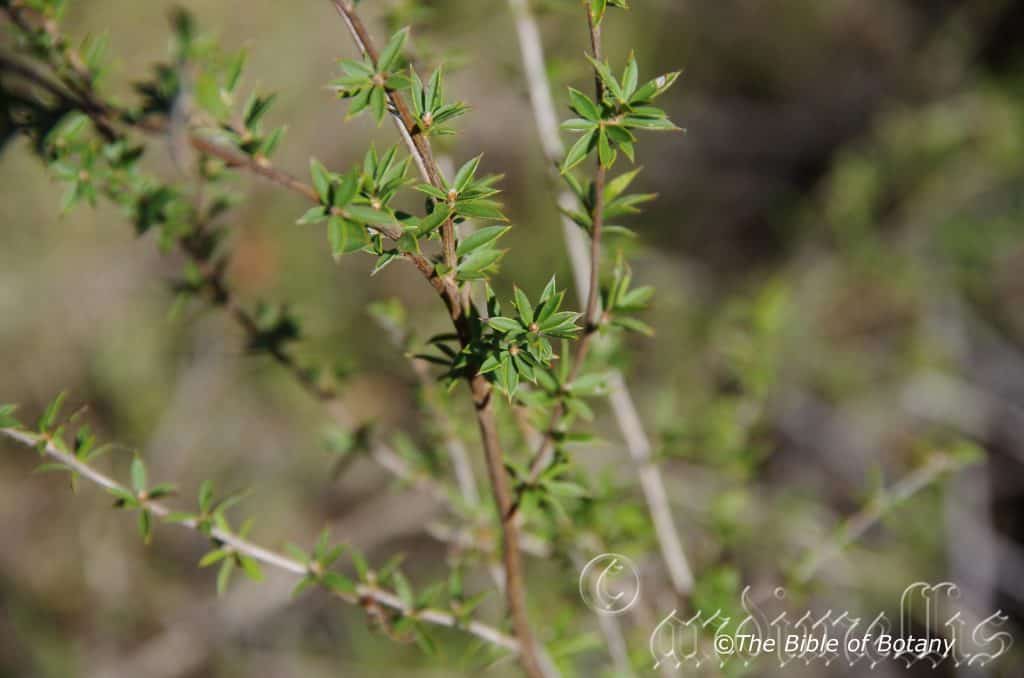
The Pinnacles NSW
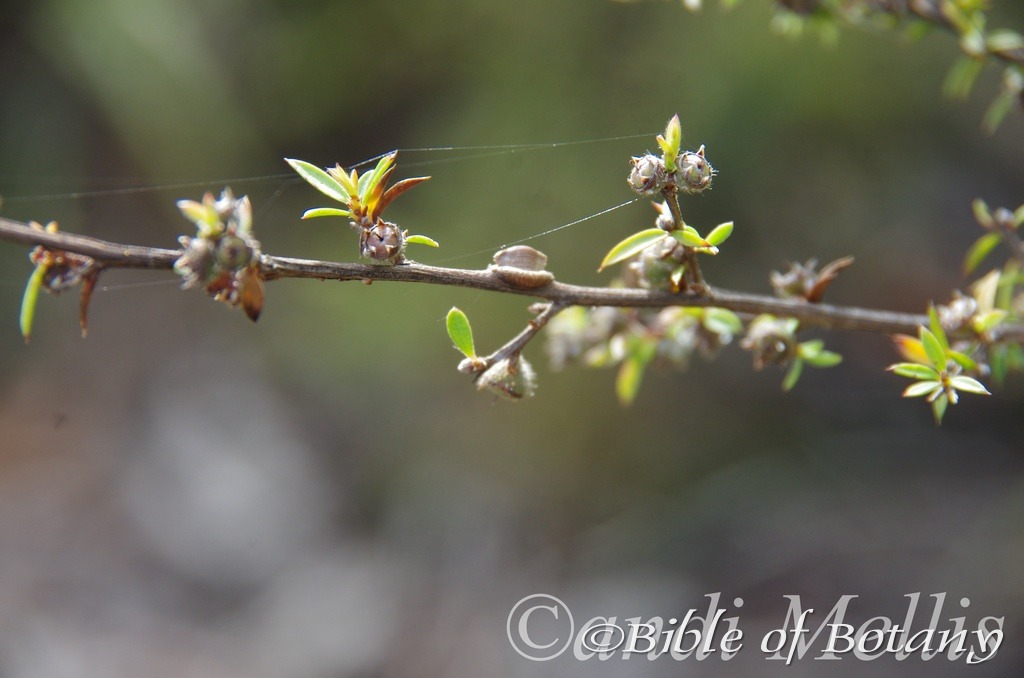
Fortis Creek National Park NSW
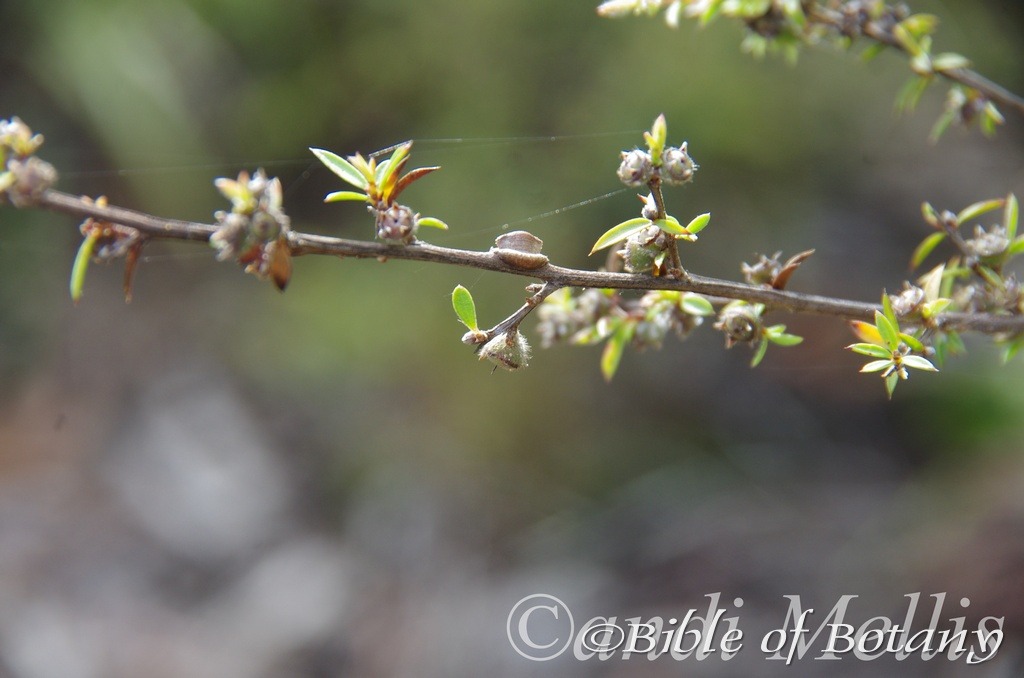
Fortis Creek National Park NSW
Leptospermum microcarpum
Classification:
Unranked: Magnoliophyta
Class: Magnoliopsida
Order: Myrtales
Family: Myrtaceae
Genus: From Leptós, which is Ancient Greek for delicate, fine or slender and Spérma, which is Ancient Greek for a seed. It refers to seeds, which are rather fine and slenderer than other genus in the family.
Specie: From Mikrós, which is Ancient Greek for small or very small and Karpós, which is Ancient Greek for a fruit. It refers to the fruits, which are rather small compared to other species in the genus.
Sub species:
Common Name:
Distribution:
Leptospermum microcarpum is found east and south of a line from Tewantin to Biggenden, Esk and Wandal Range in southern Queensland to The Lookout at Chaelundi and near the summit of Mount Werrikimbe near Port Macquarrie, in New South Wales. Plants found further south are believed to be introduced to the area or escapees.
https://avh.ala.org.au/occurrences/search?taxa=Leptospermum+microcarpum#tab_mapView
Habitat Aspect Climate:
Leptospermum microcarpum prefers full sun to light dappled shade. It grows in dry schlerophyll forests to wet Eucalyptus forests along creek beds swamps and wallums. The altitude ranges from 20 meter ASL to 900 meters ASL.
The Temperatures range from minus 4 degree in August to 38 degrees in January.
The rainfalls range from lows of 650mm to an average of 2000mm.
Soil Requirements:
Leptospermum microcarpum prefers skeletal to deep sandy loams, light sandy clays to medium clays. The soils are usually derived from decomposed sandstones, granites, brown basalts, black basalts or metamorphic rocks. The soils pH ranges from 4.5pH to 6pH. It does not tolerate waterlogged soils. Non saline soils to moderately saline soils are tolerated.
Height & Spread:
Wild Plants: 1m to 2.5m by 1m to 2m.
Characteristics:
Leptospermum microcarpum’s grows as a medium shrub with tight, grey to grey-brown or brown smooth bark. The bark decorticates in patches or short ribbons from the trunk and lower branches annually. The pale reddish-tan branchlets are covered in caduceous white hirsute hairs.
Leptospermum microcarpum’s alternate, elliptic to narrow oblanceolate leaves, measure 2mm to 20mm in length by 3mm to 4mm in width. The bases taper to a slender petiole that has thickened bases while the apexes are obtuse to accuminate and has a long 1mm pungent tip. The concolourous laminas are mid grass-green to mid olive-green and glabrous. The laminas strongly recurve upwards margins are entire or slightly recurved. The mid vein is obscure on both laminas.
The new growth is tinged bronze to deep purple. This bronzing is more noticeable in colder climates.
The inflorescences of Leptospermum microcarpum are born solitarily or in pairs from the leaf axils and measure 8mm to 12mm in diameter. The pale green hypanthium is densely covered in long, soft, white pulverulent hairs and measure 2mm to 3mm in length and is very sparsely covered in white hirtellous hairs. The pedicels are densely covered in long, soft, white pulverulent hairs and measure 0.5mm to 1.5mm in length. The 5 ovate, white, greenish-red or reddish-purple sepals measure 1mm to 1.2mm in length and are glabrous and sparsely covered with white ciliate hairs on the margins. The 5 white glabrous petals are broad spathulate and measure 3.5mm to 5mm in length by 3mm to 4.5mm in width.
The 15 white stamens are fused to the rim of the hypanthia and measure 1mm to 1.5mm in length. The anthers are white to pale fawn. The lime green pistil is centrally located on the bright, lime green disc. The ovary is covered in white puberulent hairs. The flowers appear from August to October.
Leptospermum microcarpum’s fruit is a broad conical capsule. The usually 4 or at times 5 locular capsules measure 3mm to 4mm in diameter at the rim. The pale green, puberulent, capsules turn mid grey to deep grey when ripe. The shallowly dome valves are exerted and spread as wide as the rim on the hypanthium at maturity. The capsules remain on the plants until the following flowering season before dispersing the reddish-brown seeds. The pedicels are covered in white puberulent hairs and measure 1mm to 1.5mm in length.
Wildlife:
Leptospermum microcarpum’s flowers are fed upon by numerous small butterflies, native bees, native beetles, wasps and flies.
Cultivation:
Leptospermum microcarpum are beautiful medium shrubs that grow particularly well on moisture problem soils. It is suitable for small, medium and large gardens close to the coast or high in the mountains in warm temperate, sub-tropical or tropical gardens. As garden subjects they will grow from 1.5 meters to 2 meters in height by 1.5 meters to 2 meters in diameter. It is cold tolerant to temperatures at least as low as minus 4 degrees once established. They can be tip pruned if a smaller bushier shrub is required.
It is best used adjacent to small areas of bush as the fill in plant or close to paths or the house so their white flowers can be viewed regularly. It is great in larger rockeries as the feature. Here they can be planted in small groups of 2 or 3 as a standalone plant to create a harsher more barren look with other arid plants. If it is surrounded by shorter plants with fine foliages and red flowers they will dominate at the center giving an expansive look to the bed especially when it is in flower. This is one plant that benefits highly from being mass planted or planted in scattered clumps. There small size enables this to be achieved even in small and medium size gardens.
It can be used as a single trunk small tree in a medium rockery or scattered 3 or 4 around near old stumps and roots to make the stumps or roots look larger and more gnarled.
It is also very good bonsai plants or are very affective when highlighting the gnarled trunk.
Propagation:
Seeds: Leptospermum microcarpum seeds can be sown directly into a seed raising mix. Cover the seeds with 1mm to 2mm of fine weed free mulch and keep moist. Place the tray in a warm sunny position. When the seedlings are 20mm to 30mm tall, prick them out and plant them into 50mm native tubes using a good organic mix.
Once the seedlings reach 100mm to 150mm in height; nip the growing tips out and plant them into their permanent position.
Cuttings: Use 100mm to 150mm long half ripened material when growing from cuttings from the present season’s growth. Take them in warmer months of the year. Remove half the leaves from the bottom section being careful not to tear the bark.
1 Prepare the cutting mix by adding one third sharp clean river sand, one third peat and one third perlite. These ingredients are sterilize,
2 Select good material from non diseased plants,
3 Select semi green stems for cuttings. Look for a stem with two or three nodes,
4 Place the cutting on a flat, hard surface, and make a clean cut down one side of the cutting at the base for 10mm with a sharp sterile knife or razor blade. – This scarification of the node will increase the chances of roots emerging from this spot. Now remove all but one or two the leaves, leaving the apex leaves in tact. If the leaves are very large in proportion to the stem, cut off the apical halves.
5 Fill a saucer with water, and place a little medium strength rooting hormone into another container like a milk bottle top. Dip the node end of the cutting into the water and then into the rooting hormone. Tap off any excess hormone,
6 Use a small dipple stick or old pencil to poke a hole into the soilless potting mix. Ensure the hole is slightly larger than the stem diameter and be careful not to wipe the rooting hormone off the cuttings base, place the cuttings in a pattern ensuring the cuttings are not touching each other,
7 I like to place the pots in Plastic bags to help maintain temperature and moisture. Place in a semi shaded place like under 50mm shade cloth.
8 When the cuttings have struck, open the bag to allow air circulation for a few days to a week,
9 Once hardened off remove the cuttings from the bag and allow to further hardening for a few more days,
10 Transplant into a good potting mix to grow on.
Fertilize using seaweed, fish emulsion or organic chicken pellets soaked in water on an alternate basis. Fertilize every two months until the plants are established then twice annually in early September or March to maintain health, vitality and better flowering.
Further Comments from Readers:
Hi reader, it seems you use The Bible of Botany a lot. That’s great as we have great pleasure in bringing it to you! It’s a little awkward for us to ask, but our first aim is to purchase land approximately 1,600 hectares to link several parcels of N.P. into one at The Pinnacles NSW Australia, but we need your help. We’re not salespeople. We’re amateur botanists who have dedicated over 30 years to saving the environment in a practical way. We depend on donations to reach our goal. If you donate just $5, the price of your coffee this Sunday, We can help to keep the planet alive in a real way and continue to bring you regular updates and features on Australian plants all in one Botanical Bible. Any support is greatly appreciated. Thank you.
In the spirit of reconciliation we acknowledge the Bundjalung, Gumbaynggirr and Yaegl and all aboriginal nations throughout Australia and their connections to land, sea and community. We pay our respect to their Elders past, present and future for the pleasures we have gained.
Leptospermum minutifolium
Classification:
Unranked: Magnoliophyta
Class:Magnoliopsida
Order: Myrtales
Family: Myrtaceae
Genus: From Leptós, which is Ancient Greek for delicate, fine or slender and Spérma, which is Ancient Greek for a seed. It refers to seeds, which are rather fine and slenderer than other genus in the family.
Specie: From Minuta, which is Latin for substantially smaller and Folium, which is Latin for foliage. It refers to leaves or phyllodes, which are substantially smaller than other species in the genus.
Sub species:
Common Name:
Distribution:
Leptospermum minutifolium is restricted to a small area on the Great Dividing Range to the coast bounded by Bolivia Hill, Cathedral Rock, Guyra, Walcha, and Kangaroo Flat near Kempsey with a disjunct population near Narrabri in southern Queensland and northern New South Wales.
https://avh.ala.org.au/occurrences/search?taxa=Leptospermum+minutifolium#tab_mapView
Habitat Aspect Climate:
Leptospermum minutifolium prefers full sun to light dappled shade. It grows in wet Eucalyptus forests, wet woodlands, along seasonal creek beds swamps, wallums or seepage lines at higher. The altitude ranges from 268 meters ASL to 1250 meters ASL.
The Temperatures range from minus 5 degrees in August to 38 degrees in January.
The rainfalls range from lows of 750mm to an average of 2250mm.
Soil Requirements:
Leptospermum minutifolium prefers sandy loams or light fatty, gritty clays. The soils are usually derived from granites. The soils pH ranges from 5pH to 6pH. It tolerates waterlogged soils. Non saline soils to moderately saline soils are tolerated.
Height & Spread:
Wild Plants: 1.5m to 2m by 1.5m to 2m.
Characteristics:
Leptospermum minutifolium’s grows as a medium shrub with tight, grey to grey-brown, smooth to slightly flaky bark. The bark decorticates in short oblong flakes from the trunk and lower branches. The pale reddish-brown branchlets are usually covered in white caduceous appressed hirsute hairs.
Leptospermum minutifolium’s crowded leaves eventually become alternate. The narrow obovate to broad obovate, coriaceous leaves, measure 2mm to 4mm in length by 1.5mm to 2mm in width. The bases taper to the miniscule petiole while the apexes are obtuse or acute with a small umbonate protrusion on the lower surface. The concolourous laminas are sea-green, semi glossy to glossy and glabrous. The laminas recurve slightly upwards from the mid vein to the margins while the margins are entire. The mid vein is obscure on both laminas.
The new growth is tinged bronze to deep purple. This bronzing is more noticeable in colder climates.
The inflorescences of Leptospermum minutifolium are born solitarily from the leaf axils and measure 8mm to 9mm in diameter. The pale green, glabrous hypanthium is sessile and covered in prominent oil glands and measure 2mm to 3mm in length. The 5 semi ovate, white, glabrous sepals measure 1.2mm to 2.5mm in length by 1.8mm to 2.8mm in width. The 5 white glabrous petals are circular and measure 2.5mm to 3mm in length by 2.5mm to 3mm in width.
The 20 white stamens are fused to the rim of the hypanthia and measure 3mm to 3.5mm in length. The anthers are white to pale fawn. The stout, lime green pistil is centrally located on the bright, glossy lime-green disc and measures 3mm to 3.5mm in length while the mushroom stigma measures 1.6mm to 1.8mm in diameter. The flowers appear from October to November.
Leptospermum minutifolium’s fruits are broad conical capsules. The usually 5 or at times 6 locular capsules measure 5mm to 7mm in diameter at the rim. The pale green capsules turn grey-brown and glabrous when ripe. The valves are exerted and spread as wide as the hypanthium at maturity. The seeds are red-brown.
Wildlife:
Leptospermum minutifolium’s flowers are attractive to numerous small butterflies, native bees, native beetles, wasps and flies.
Cultivation:
Leptospermum minutifolium are beautiful medium shrubs that grow particularly well on moisture problem soils. It is suitable for small, medium and large gardens close to the coast or high in the mountains in cool temperate to sub alpine or sub-tropical gardens. As a garden subject it will grow from 1.5 meters to 2 meters in height by 1.5 meters to 2 meters in diameter. It is cold tolerant to temperatures at least as low as minus 9 degrees once established. It can be tip pruned if a smaller bushier shrub is required.
It is best used adjacent to small areas of bush as the fill in plant or close to paths or the house so their white flowers can be viewed regularly. It is great in larger rockeries as the feature. Here it can be planted in small groups of 2 or 3 as a standalone plant to create a harsher more barren look with other arid plants. If it is surrounded by shorter plants with fine foliages and red flowers it will dominate at the center giving an expansive look to the bed especially when it is in flower. This is one plant that benefits highly from being mass planted or planted in scattered clumps. Its small size enables this to be achieved even in small and medium size gardens.
It can be used as a single trunk small tree in a medium rockery or scattered 3 or 4 around near old stumps and roots to make the stumps or roots look larger and more gnarled.
It is also very good bonsai plants or are very affective when highlighting the gnarled trunk.
Propagation:
Seeds: Leptospermum microcarpum seeds can be sown directly into a seed raising mix. Cover the seeds with 1mm to 2mm of fine weed free mulch and keep moist. Place the tray in a warm sunny position. When the seedlings are 20mm to 30mm tall, prick them out and plant them into 50mm native tubes using a good organic mix.
Once the seedlings reach 100mm to 150mm in height; nip the growing tips out and plant them into their permanent position.
Cuttings: Use 100mm long half ripened material when growing from cuttings from the present season’s growth. Take them in warmer months of the year. Remove half the leaves from the bottom section being careful not to tear the bark.
1 Prepare the cutting mix by adding one third sharp clean river sand, one third peat and one third perlite. These ingredients are sterilize,
2 Select good material from non diseased plants,
3 Select semi green stems for cuttings. Look for a stem with two or three nodes,
4 Place the cutting on a flat, hard surface, and make a clean cut down one side of the cutting at the base for 10mm with a sharp sterile knife or razor blade. – This scarification of the node will increase the chances of roots emerging from this spot. Now remove all but one or two the leaves, leaving the apex leaves in tact. If the leaves are very large in proportion to the stem, cut off the apical halves.
5 Fill a saucer with water, and place a little medium strength rooting hormone into another container like a milk bottle top. Dip the node end of the cutting into the water and then into the rooting hormone. Tap off any excess hormone,
6 Use a small dipple stick or old pencil to poke a hole into the soilless potting mix. Ensure the hole is slightly larger than the stem diameter and be careful not to wipe the rooting hormone off the cuttings base, place the cuttings in a pattern ensuring the cuttings are not touching each other,
7 I like to place the pots in Plastic bags to help maintain temperature and moisture. Place in a semi shaded place like under 50mm shade cloth.
8 When the cuttings have struck, open the bag to allow air circulation for a few days to a week,
9 Once hardened off remove the cuttings from the bag and allow to further hardening for a few more days,
10 Transplant into a good potting mix to grow on.
Fertilize using seaweed, fish emulsion or organic chicken pellets soaked in water on an alternate basis. Fertilize every two months until the plants are established then twice annually in early September or March to maintain health, vitality and better flowering.
Further Comments from Readers:
Hi reader, it seems you use The Bible of Botany a lot. That’s great as we have great pleasure in bringing it to you! It’s a little awkward for us to ask, but our first aim is to purchase land approximately 1,600 hectares to link several parcels of N.P. into one at The Pinnacles NSW Australia, but we need your help. We’re not salespeople. We’re amateur botanists who have dedicated over 30 years to saving the environment in a practical way. We depend on donations to reach our goal. If you donate just $5, the price of your coffee this Sunday, We can help to keep the planet alive in a real way and continue to bring you regular updates and features on Australian plants all in one Botanical Bible. Any support is greatly appreciated. Thank you.
In the spirit of reconciliation we acknowledge the Bundjalung, Gumbaynggirr and Yaegl and all aboriginal nations throughout Australia and their connections to land, sea and community. We pay our respect to their Elders past, present and future for the pleasures we have gained.
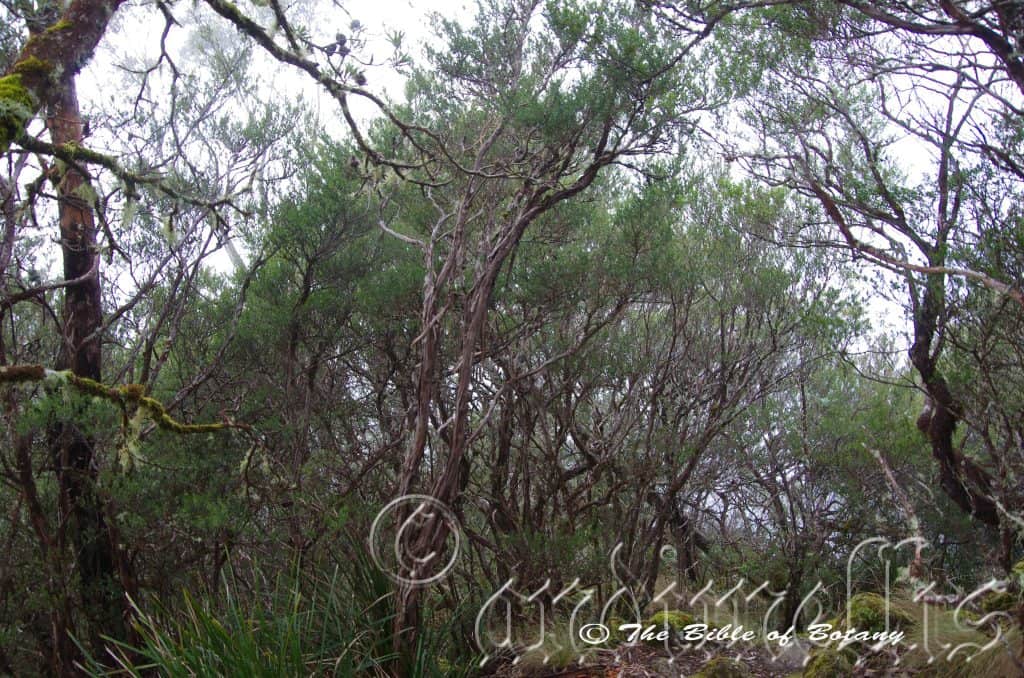
Point Lookout National Park Ebor NSW
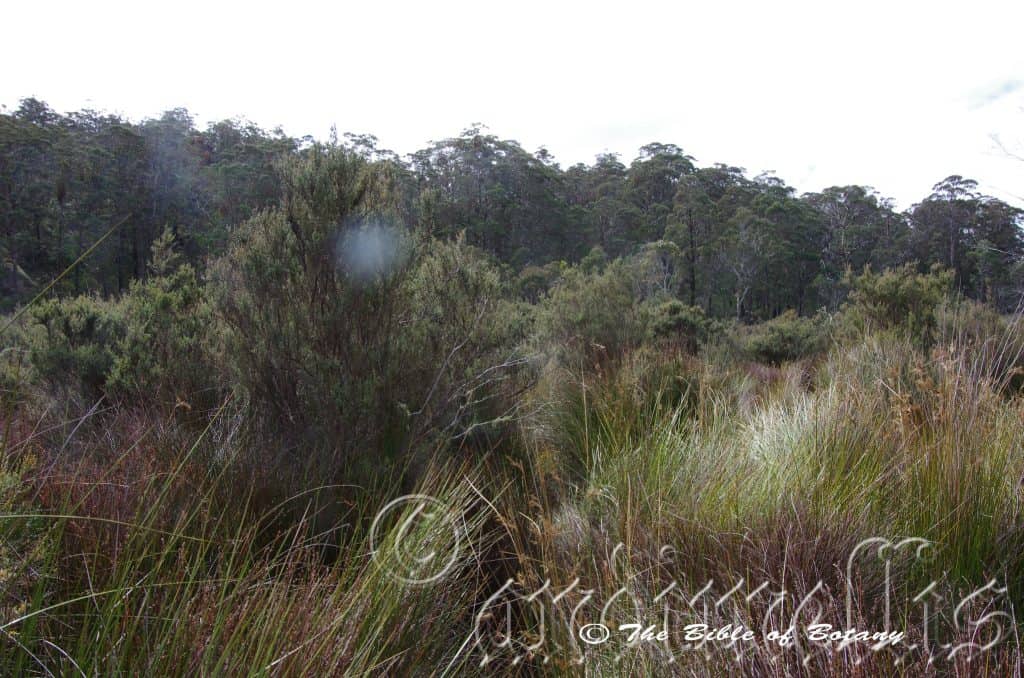
Cathedral Rocks National Park Wallums Ebor NSW
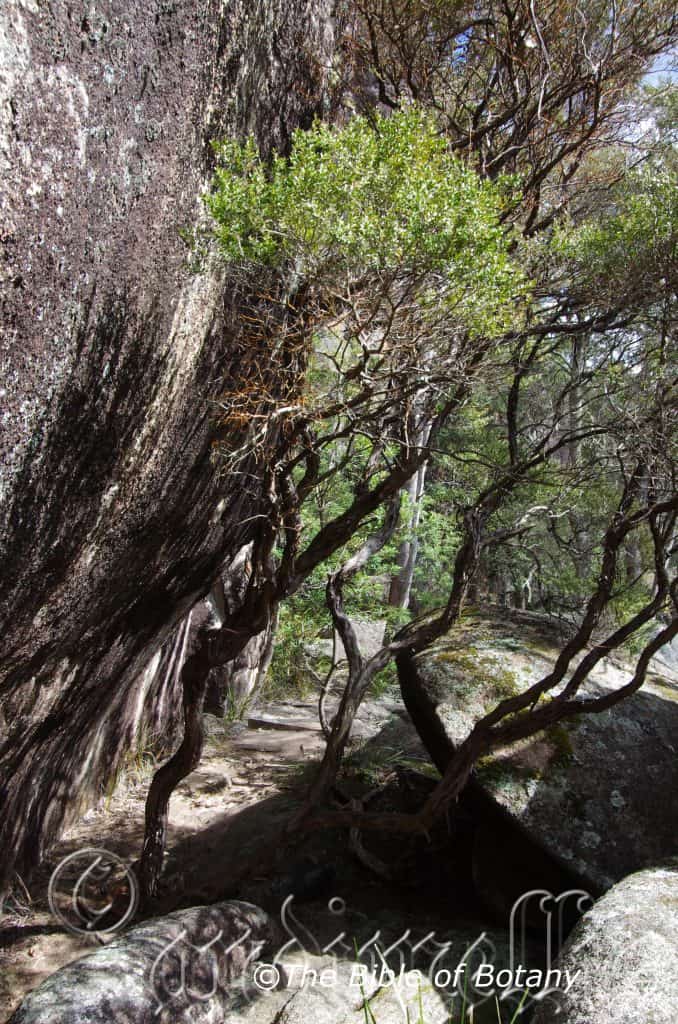
Cathedral Rocks National Park Ebor NSW
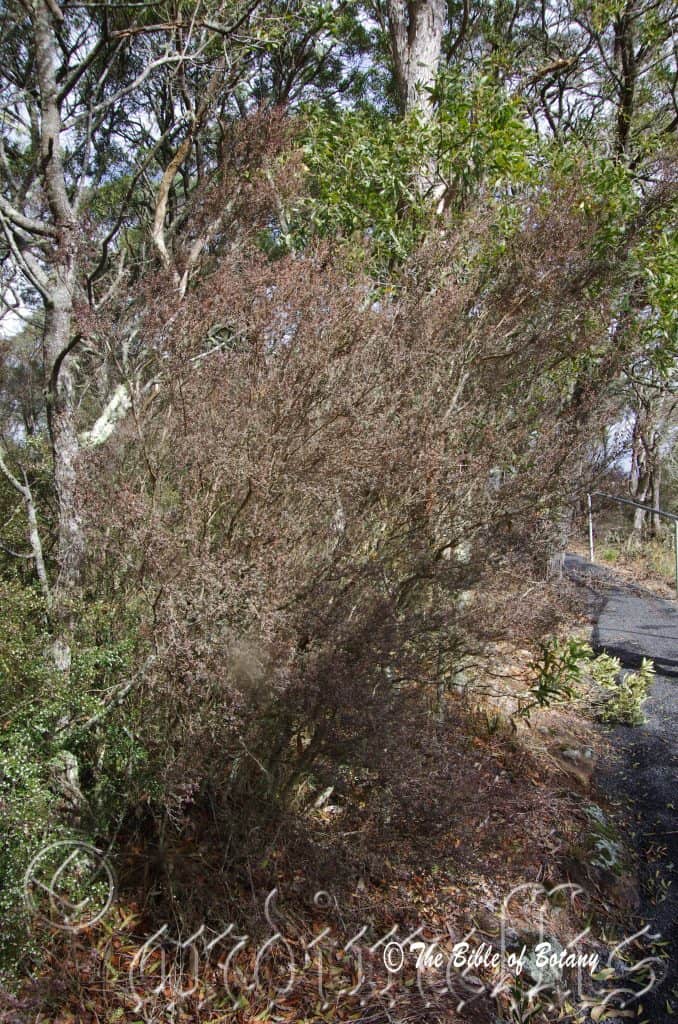
Ebor Falls National Park Ebor NSW
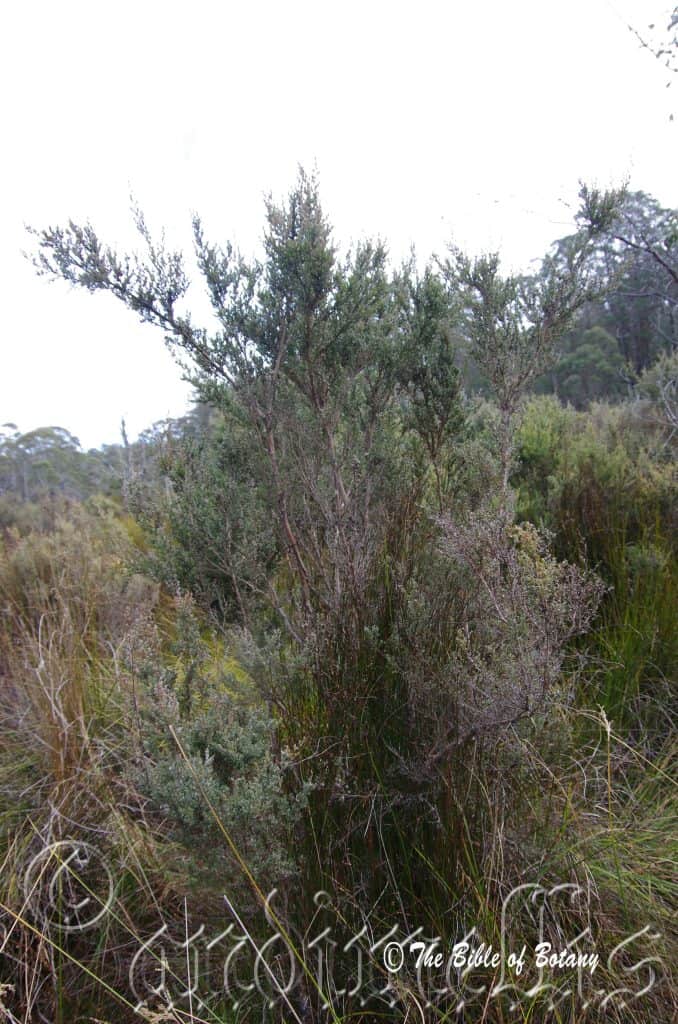
Cathedral Rocks National Park Wallums Ebor NSW
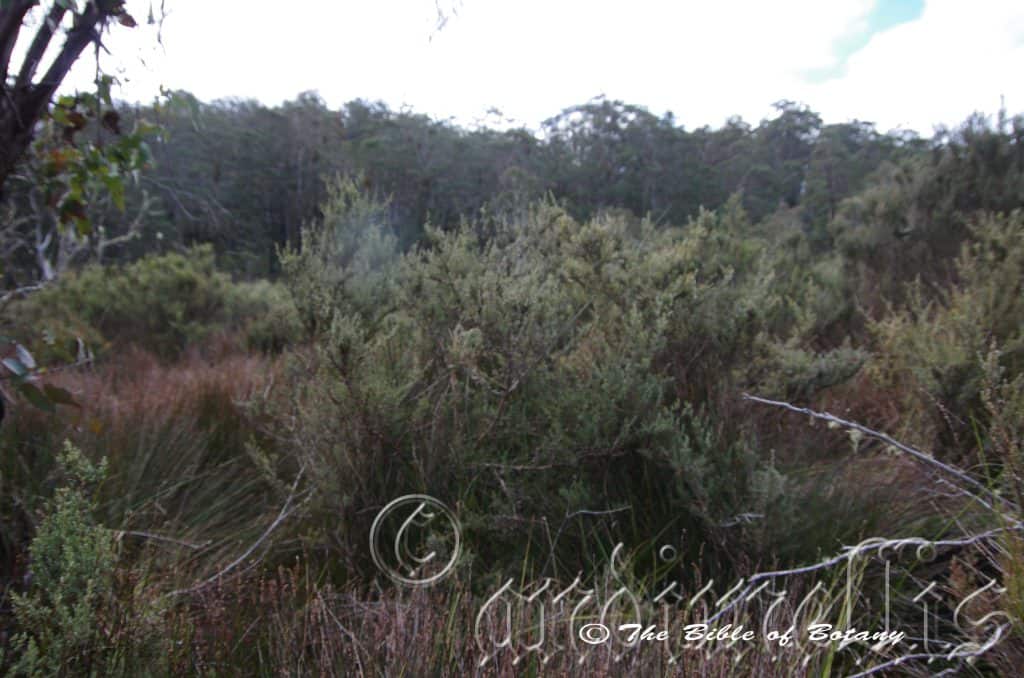
Cathedral Rocks National Park Wallums Ebor NSW
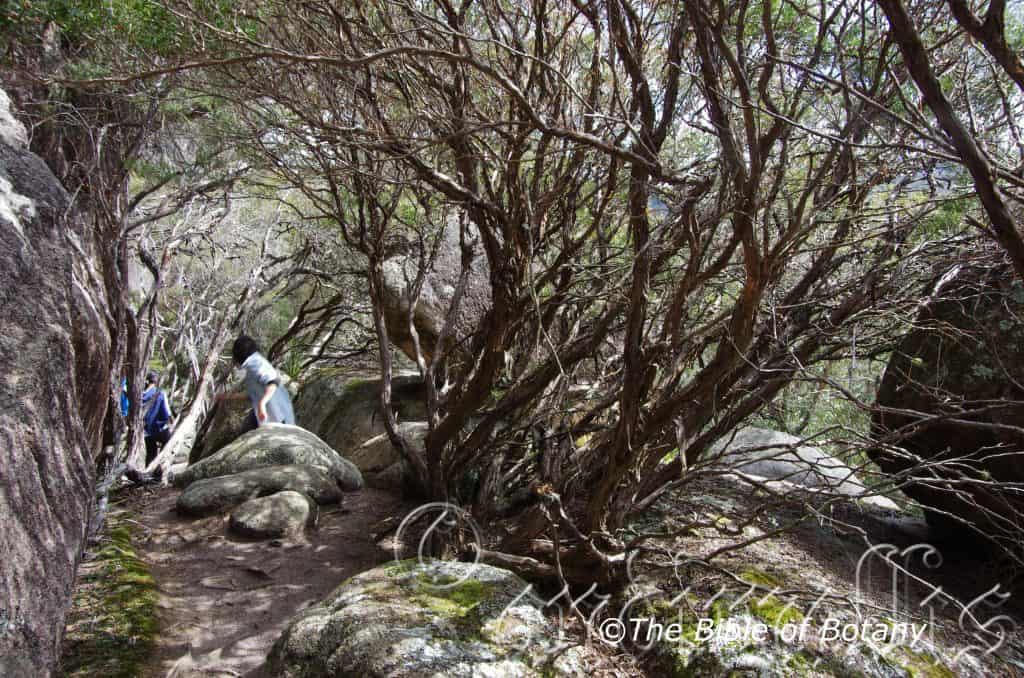
Cathedral Rocks National Park Ebor NSW
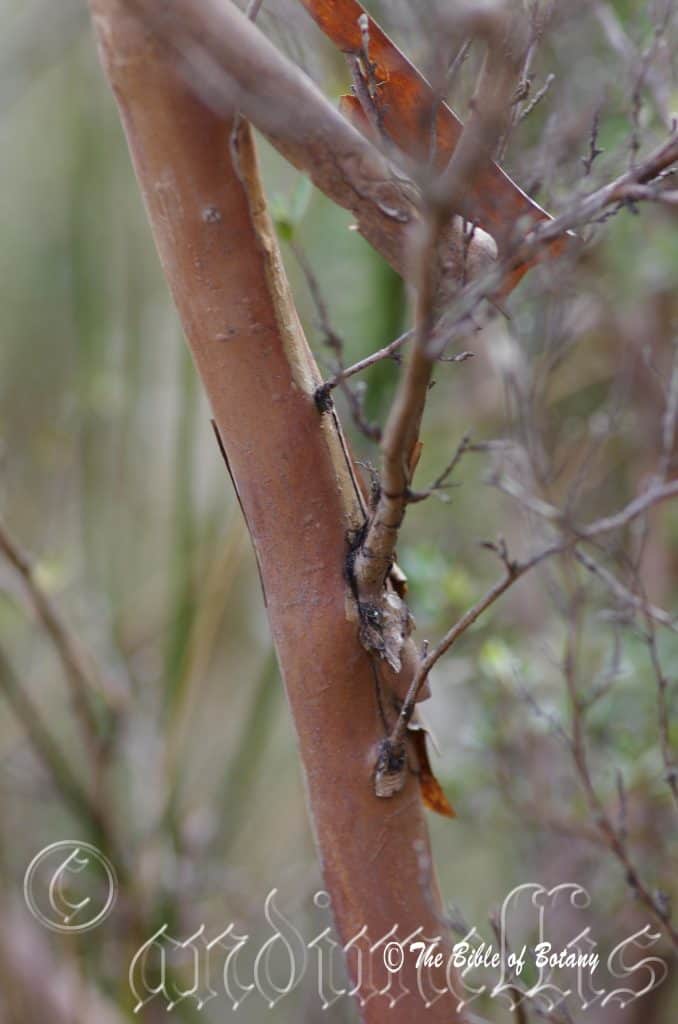
Cathedral Rocks National Park Wallums Ebor NSW
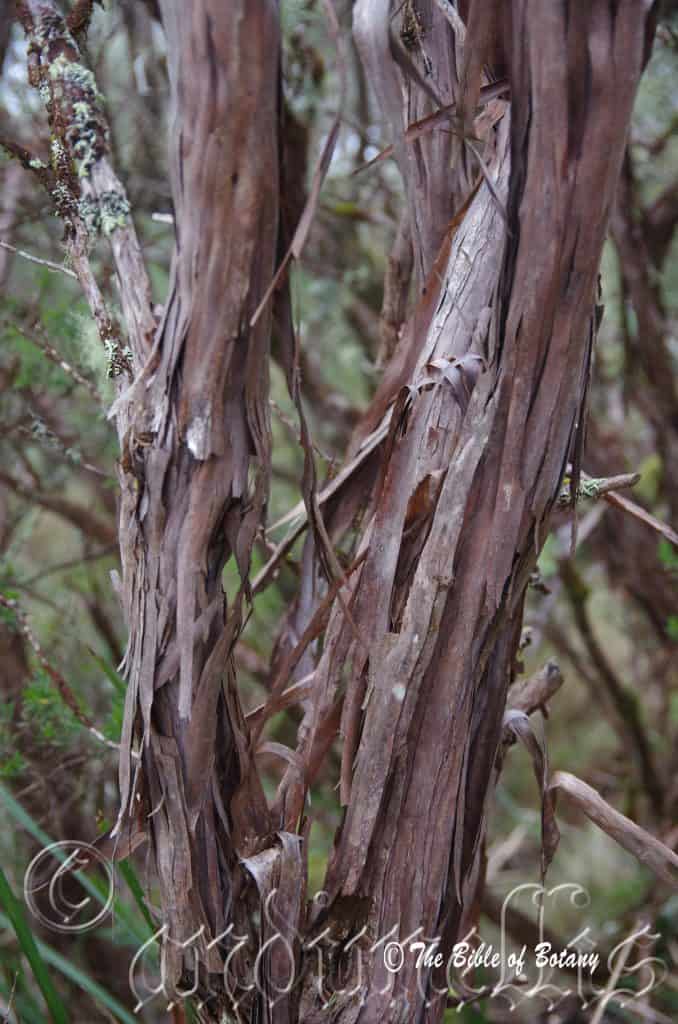
Cathedral Rocks National Park Wallums Ebor NSW
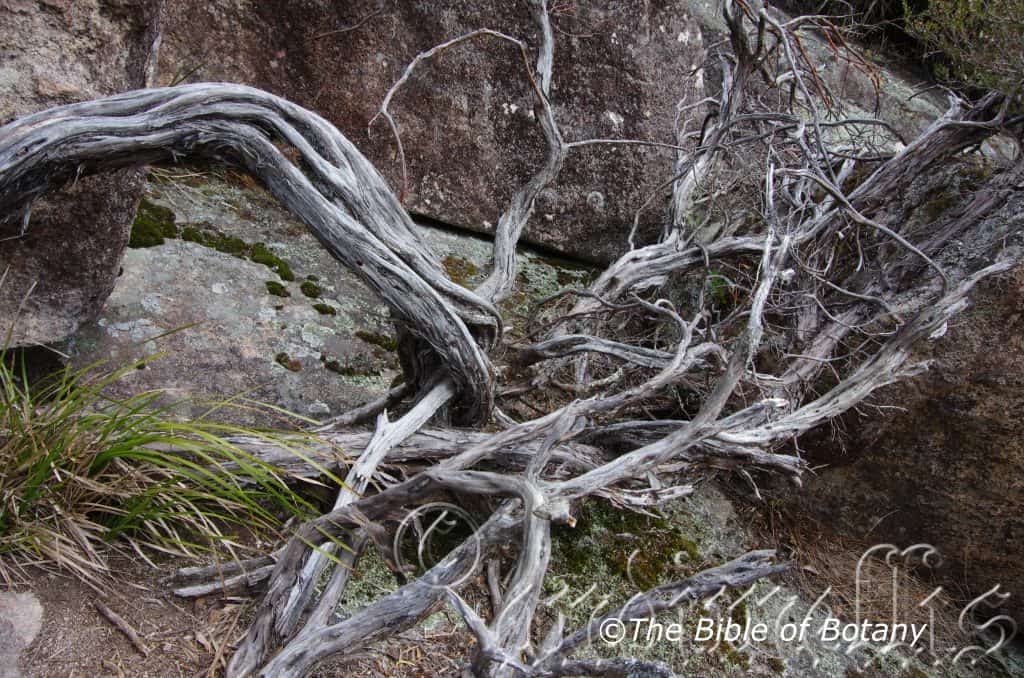
Cathedral Rocks National Park Ebor NSW
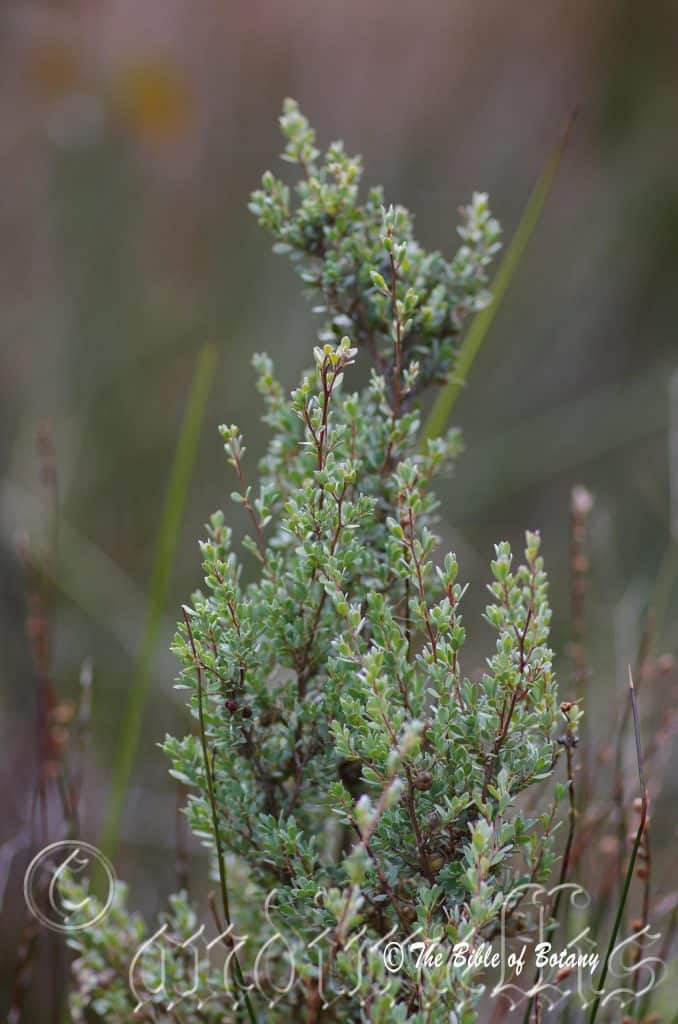
Cathedral Rocks National Park Wallums Ebor NSW
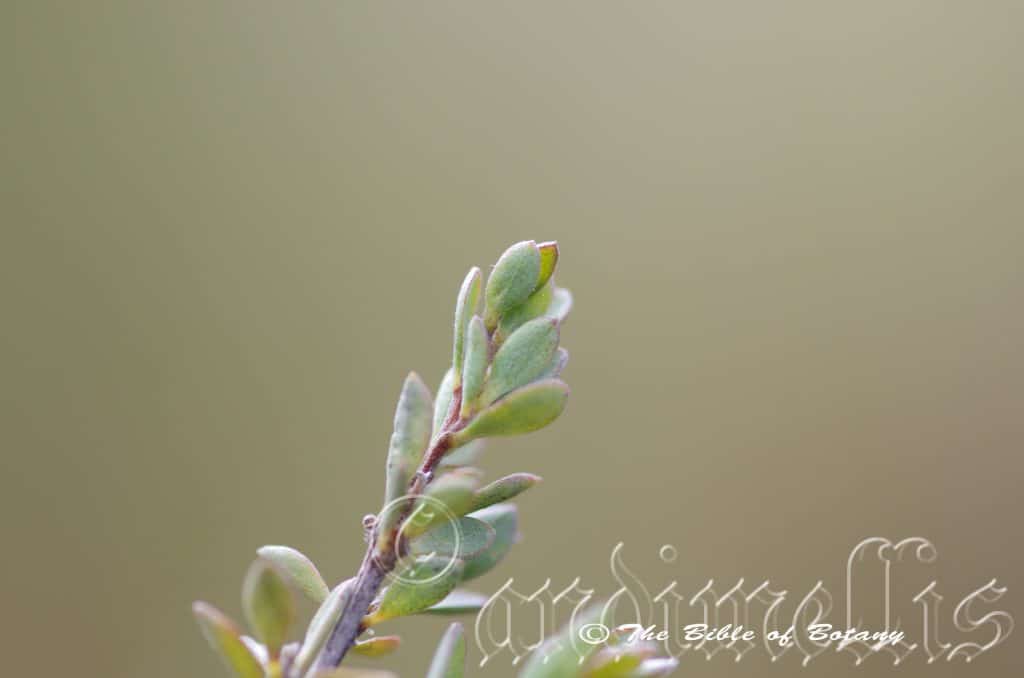
Point Lookout National Park Ebor NSW
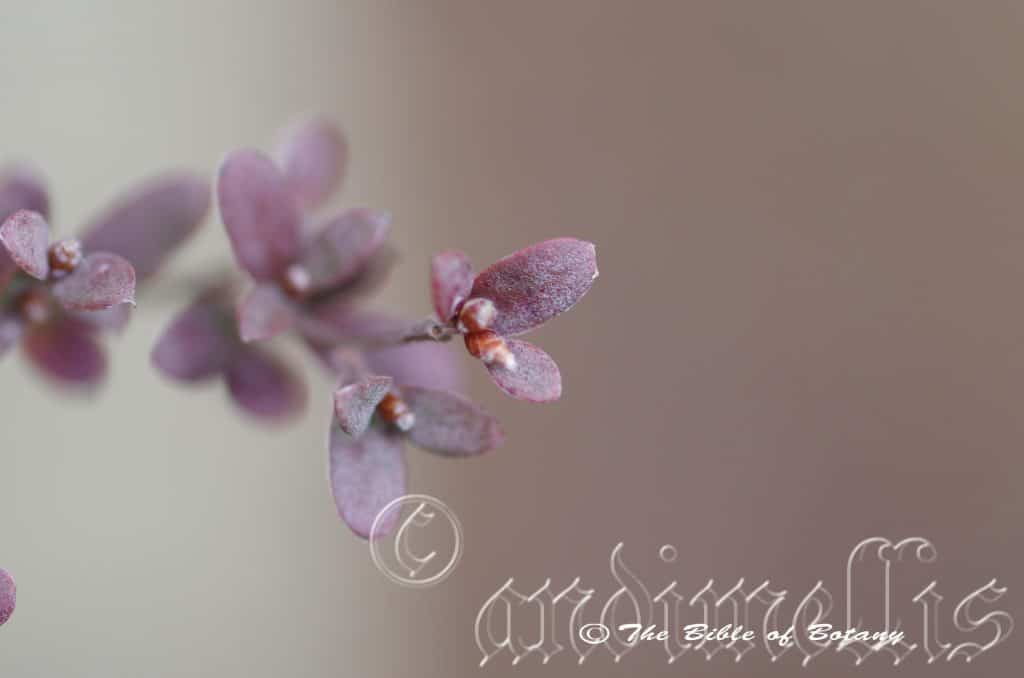
Ebor Falls National Park Ebor NSW
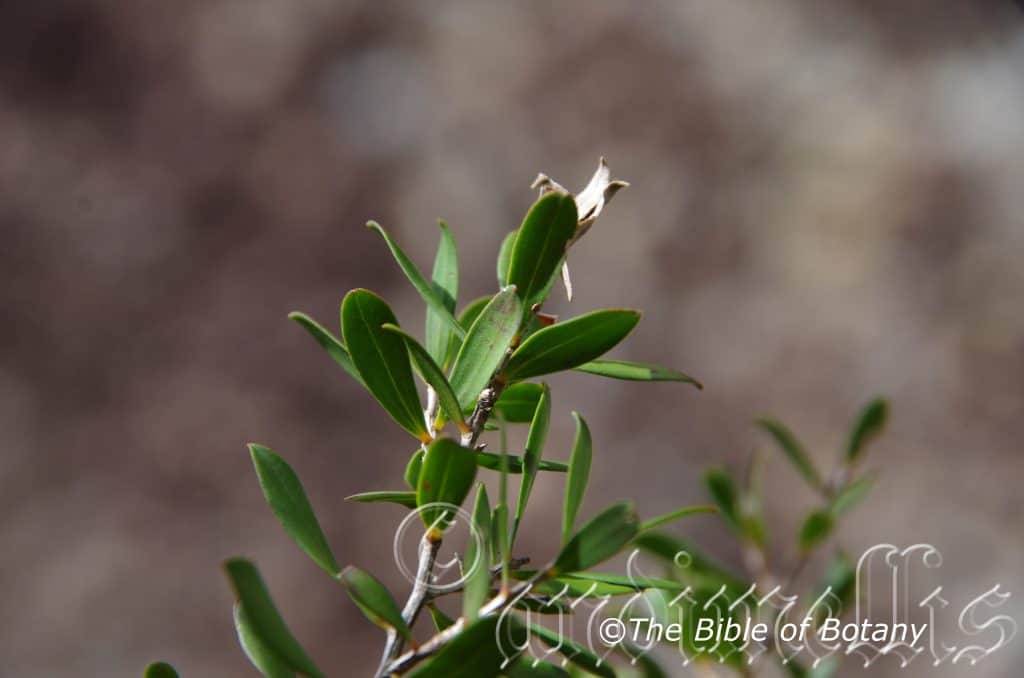
Cathedral Rocks National Park Wallums Ebor NSW
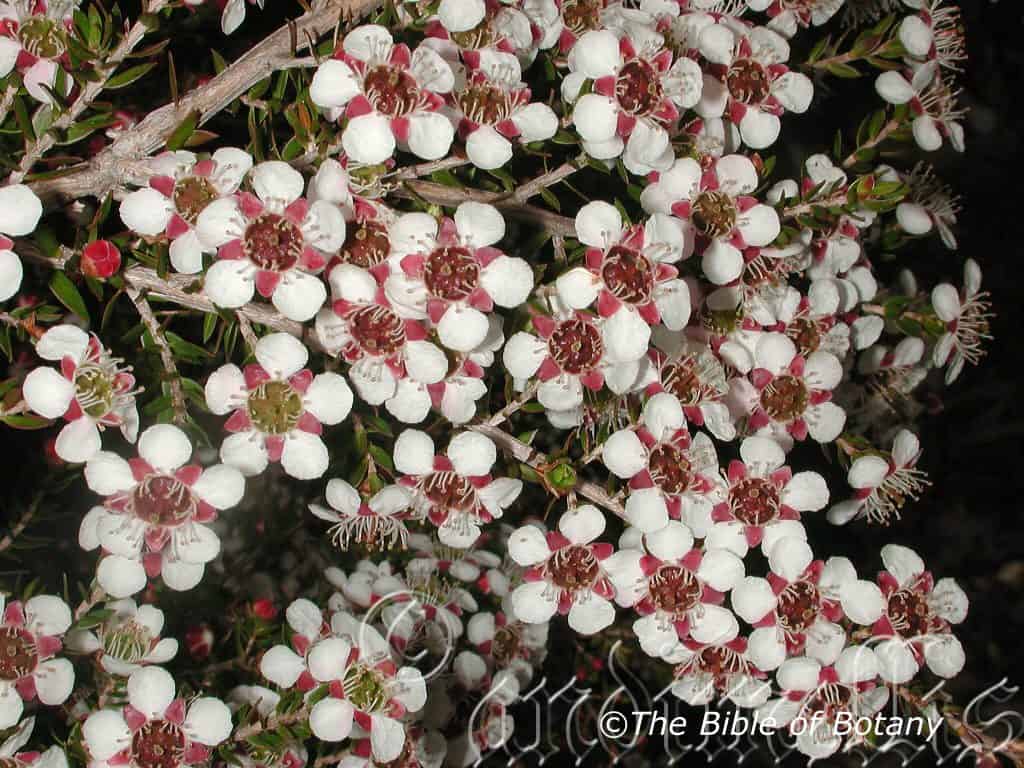
Cathedral Rocks National Park Wallums Ebor NSW
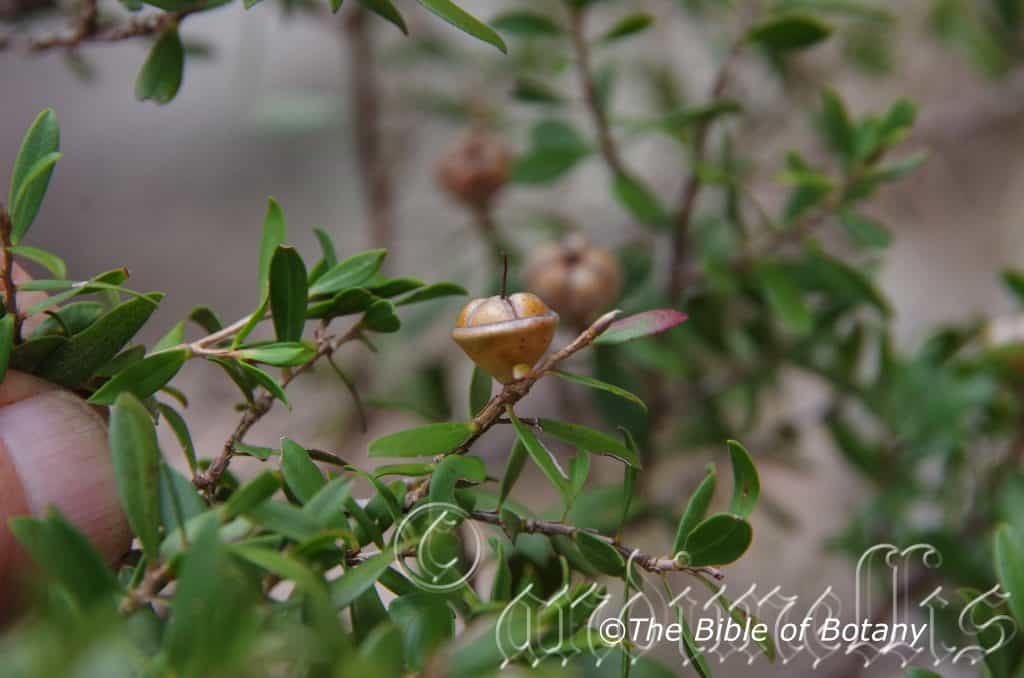
Cathedral Rocks National Park Wallums Ebor NSW
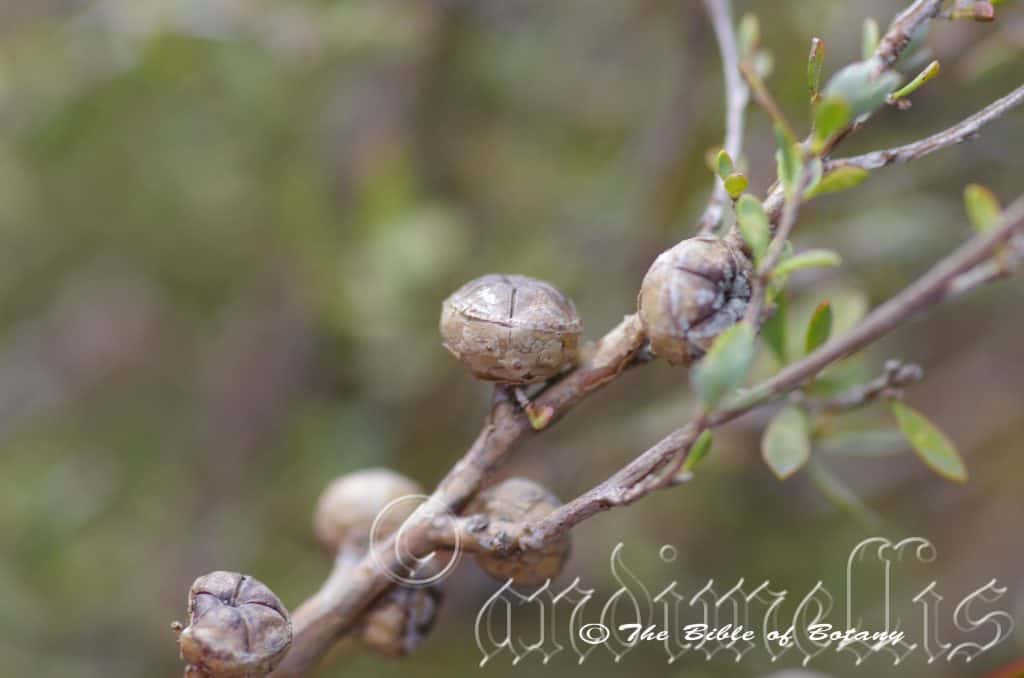
Cathedral Rocks National Park Wallums Ebor NSW
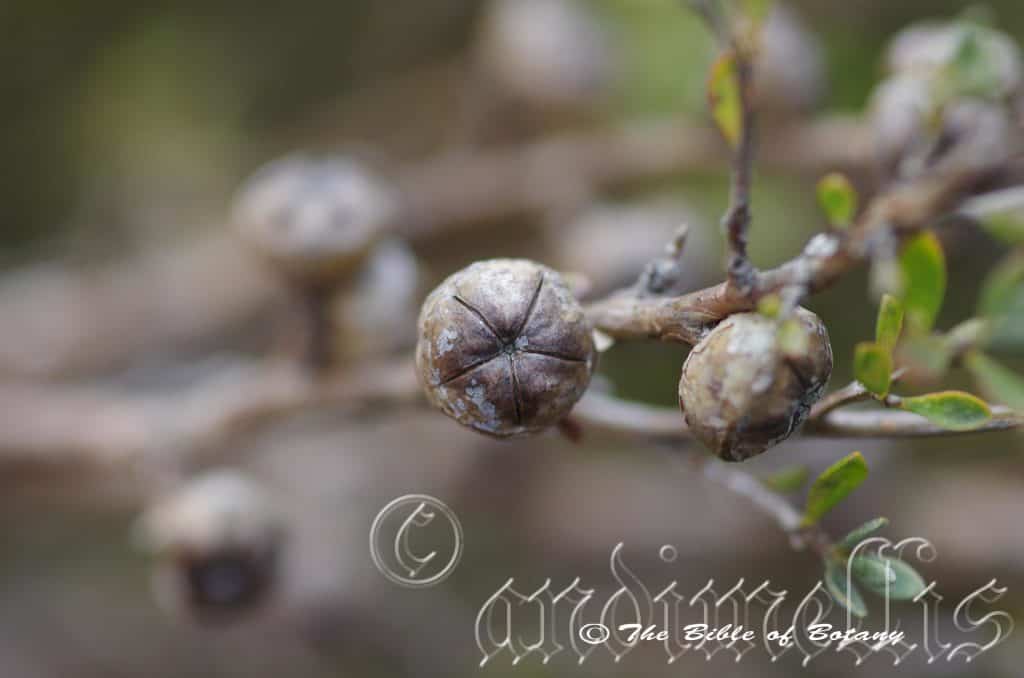
Cathedral Rocks National Park Wallums Ebor NSW
Leptospermum novaeangliae
Classification:
Unranked: Magnoliophyta
Class:Magnoliopsida
Order: Myrtales
Family: Myrtaceae
Genus: From Leptós, which is Ancient Greek for delicate, fine or slender and Spérma, which is Ancient Greek for a seed. It refers to seeds, which are rather fine and slenderer than other genus in the family.
Specie: From Novae/Novus, which is Latin for new and Anglica, which is Latin for England. It refers to many plants, which originate from the New England district in America or in the New England district in Australia.
Sub species:
Common Name:
Distribution:
Leptospermum novae-angliae is restricted to a small area on the Great Dividing Range to the coast bounded by Stanthorpe in in southern Queensland to Bornhardtia, Mount Comboyne, Bobo Creek between Dorrigo and Coramba, Dome Mountain and Jibbinbah with a disjunct population at Blackbutt Plateau near Mullumbimby in northern New South Wales.
https://avh.ala.org.au/occurrences/search?taxa=Leptospermum+novae-angliae#tab_mapView
Habitat Aspect Climate:
Leptospermum novae-angliae prefers full sun to light dappled shade. It grows in dry schlerophyll forests, dry heaths on rocky outcrops near escarpments or ridges. The altitude ranges from 300 meter ASL to 1200 meters ASL.
The Temperatures range from minus 4 degrees in August to 38 degrees in January.
The rainfalls range from lows of 750mm to an average of 2250mm.
Soil Requirements:
Leptospermum novae-angliae prefer to grow on sandy loams or light sandy clays or medium clays with shallow soils with a substratum where the bedrock is close to the surface and has pockets of loam embedded. The soils are usually derived from decomposed granites or at times brown basalts, black basalts and sandstones. The soils pH ranges from 5pH to 6pH. It does not tolerate waterlogged soils. Non saline soils to moderately saline soils are tolerated.
Height & Spread:
Wild Plants: 1m to 2m by 1m to 2.5m.
Characteristics:
Leptospermum novae-angliae’s grows as a medium shrub with tight, grey, fibrous, flaky bark. The bark separates and decorticates in long thin strips from the trunk and lower branches. The pale fawnish-brown branchlets are covered in soft, white caduceous hirsute hairs.
Leptospermum novae-angliae’s crowded leaves eventually become alternate. The irregularly broad elliptical to narrow elliptic leaves, measure 5mm to 16mm in length by 1.5mm to 5mm in width. The bases taper to short petioles which measures 0.5mm to 1mm in length while the apexes are acute to accuminate with a short pungent tip. The concolourous laminas are deep grass-green to sea-green, semi glossy and glabrous often with a purple to purple burgundy apex. The laminas are flat or recurve upwards slightly from the mid vein to the margins while the margins are entire. The mid vein is obscure on both laminas. The leaves are often covered in highly visible oil glands weakly to strongly aromatic smelling of citronella.
The new growth is tinged bronze to deep purple. This bronzing is more noticeable in colder climates.
The inflorescences of Leptospermum novae-angliae are born solitarily from the leaf axis and measure 10mm to 12mm in diameter. The pale green to deep maroon-burgundy hypanthium measure 3.5mm to 4.5mm in length and is covered in highly visible oil glands. The pedicels measure 0mm to 0.5mm in length. The 5 ovate, pale green tinged pink to deep reddish-pink, glabrous sepals measure 2.5mm to 3mm in length. The 5 white glabrous petals are circular and measure 5mm to 6mm in length by 4mm to 5mm in width.
The 25 white stamens are fused to the rim of the hypanthia and measure 2.5mm to 3mm in length. The anthers are white aging to pale fawn. The lime green pistil is centrally located on the bright, glossy lime-green to deep reddish maroon or reddish-burgundy disc and measures 2mm to 2.5mm in length. The flowers appear from October to November.
Leptospermum novae-angliae’s fruits are broad conical capsules. The 5 locular capsules measure 5.5mm to 12mm in diameter at the rim. The pale green capsules turn brown when ripe and discard the outer surface layer. The shallowly dome valves are exerted and spread as wide as the hypanthium at maturity. The seeds are red-brown.
Wildlife:
Leptospermum novae-angliae’s flowers are attractive to numerous small butterflies, native bees, native beetles, wasps and flies.
Cultivation:
Leptospermum novae-angliae is beautiful medium shrubs that grow particularly well on moisture problem soils. It is suitable for small, medium and large gardens close to the coast or high in the mountains in cool temperate to sub alpine or sub-tropical gardens. As garden subjects they will grow from 2 meters to 2.5 meters in height by 2.5 meters to 3 meters in diameter. It is cold tolerant to temperatures at least as low as minus 6 degrees once established. They can be tip pruned if a smaller bushier shrub is required.
It is best used adjacent to small areas of bush as the fill in plant or close to paths or the house so their white flowers can be viewed regularly. It is great in larger rockeries as the feature. Here they can be planted in small groups of 2 or 3 as a standalone plant to create a harsher more barren look with other arid plants. If it is surrounded by shorter plants with fine foliages and red flowers they will dominate at the center giving an expansive look to the bed especially when it is in flower. This is one plant that benefits highly from being mass planted or planted in scattered clumps. There small size enables this to be achieved even in small and medium size gardens.
It can be used as a single trunk small tree in a medium rockery or scattered 3 or 4 around near old stumps and roots to make the stumps or roots look larger and more gnarled.
It is also very good bonsai plants or are very affective when highlighting the gnarled trunk.
Propagation:
Seeds: Leptospermum microcarpum seeds can be sown directly into a seed raising mix. Cover the seeds with 1mm to 2mm of fine weed free mulch and keep moist. Place the tray in a warm sunny position. When the seedlings are 20mm to 30mm tall, prick them out and plant them into 50mm native tubes using a good organic mix.
Once the seedlings reach 100mm to 150mm in height; nip the growing tips out and plant them into their permanent position.
Cuttings: Use 80mm to 12mm semi hardwood material when growing from cuttings from the present season’s growth. Take them in warmer months of the year. Remove half the leaves from the bottom section being careful not to tear the bark. Take a 10mm slice off the bark from the bottom of the cutting on one side.
1 Prepare the cutting mix by adding one third sharp clean river sand, one third peat and one third perlite. These ingredients are sterilize,
2 Select good material from non diseased plants,
3 Select semi green stems for cuttings. Look for a stem with two or three nodes,
4 Place the cutting on a flat, hard surface, and make a clean cut down one side of the cutting at the base for 10mm with a sharp sterile knife or razor blade. – This scarification of the node will increase the chances of roots emerging from this spot. Now remove all but one or two the leaves, leaving the apex leaves in tact. If the leaves are very large in proportion to the stem, cut off the apical halves.
5 Fill a saucer with water, and place a little medium strength rooting hormone into another container like a milk bottle top. Dip the node end of the cutting into the water and then into the rooting hormone. Tap off any excess hormone,
6 Use a small dipple stick or old pencil to poke a hole into the soilless potting mix. Ensure the hole is slightly larger than the stem diameter and be careful not to wipe the rooting hormone off the cuttings base, place the cuttings in a pattern ensuring the cuttings are not touching each other,
7 I like to place the pots in Plastic bags to help maintain temperature and moisture. Place in a semi shaded place like under 50mm shade cloth.
8 When the cuttings have struck, open the bag to allow air circulation for a few days to a week,
9 Once hardened off remove the cuttings from the bag and allow to further hardening for a few more days,
10 Transplant into a good potting mix to grow on.
Fertilize using seaweed, fish emulsion or organic chicken pellets soaked in water on an alternate basis. Fertilize every two months until the plants are established then twice annually in early September or March to maintain health, vitality and better flowering.
Further Comments from Readers:
Hi reader, it seems you use The Bible of Botany a lot. That’s great as we have great pleasure in bringing it to you! It’s a little awkward for us to ask, but our first aim is to purchase land approximately 1,600 hectares to link several parcels of N.P. into one at The Pinnacles NSW Australia, but we need your help. We’re not salespeople. We’re amateur botanists who have dedicated over 30 years to saving the environment in a practical way. We depend on donations to reach our goal. If you donate just $5, the price of your coffee this Sunday, We can help to keep the planet alive in a real way and continue to bring you regular updates and features on Australian plants all in one Botanical Bible. Any support is greatly appreciated. Thank you.
In the spirit of reconciliation we acknowledge the Bundjalung, Gumbaynggirr and Yaegl and all aboriginal nations throughout Australia and their connections to land, sea and community. We pay our respect to their Elders past, present and future for the pleasures we have gained.
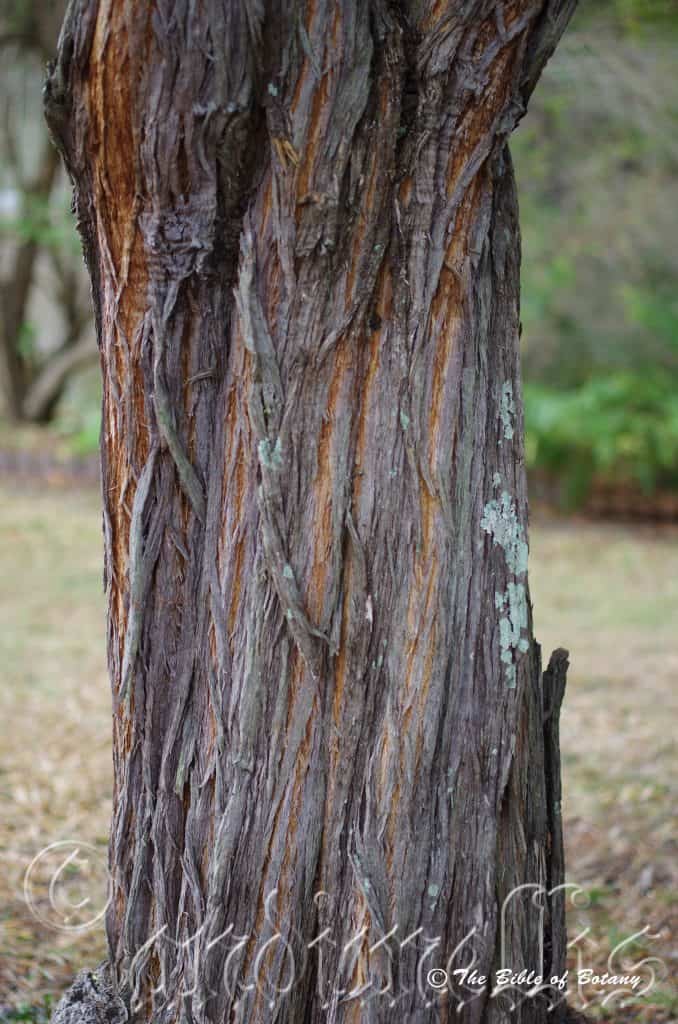
Mithcleton Qld.
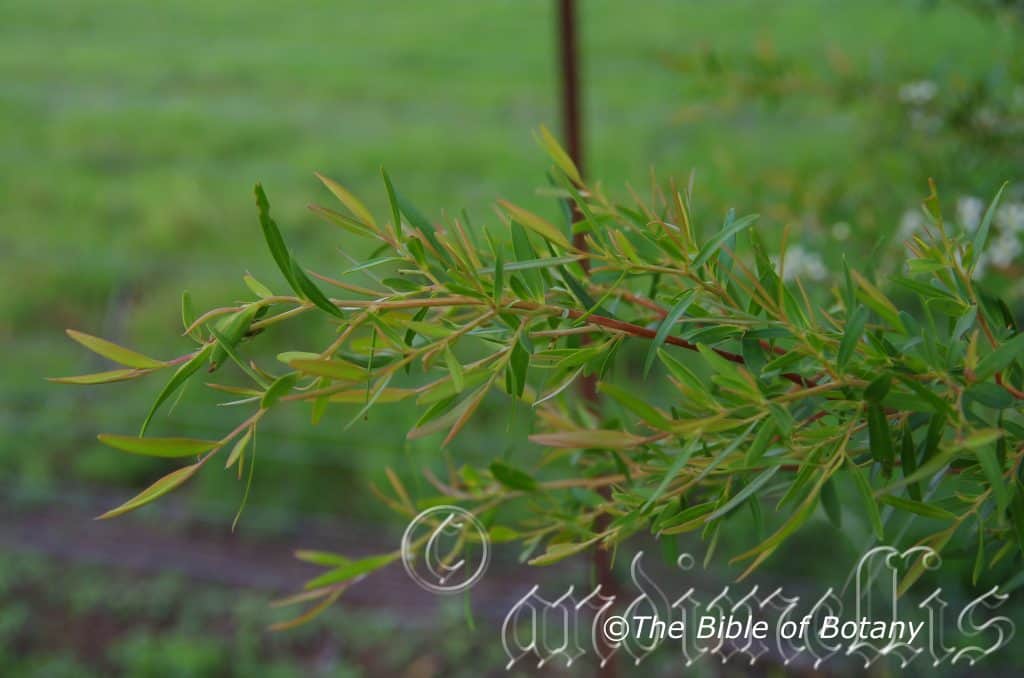
Wherrol Flat NSW
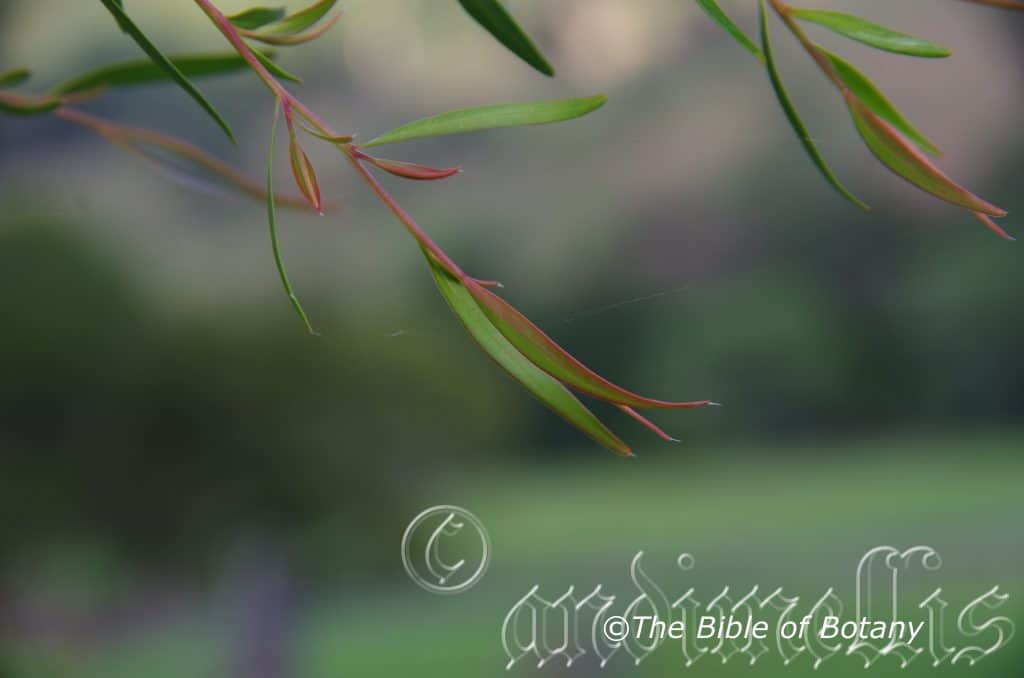
Wherrol Flat NSW
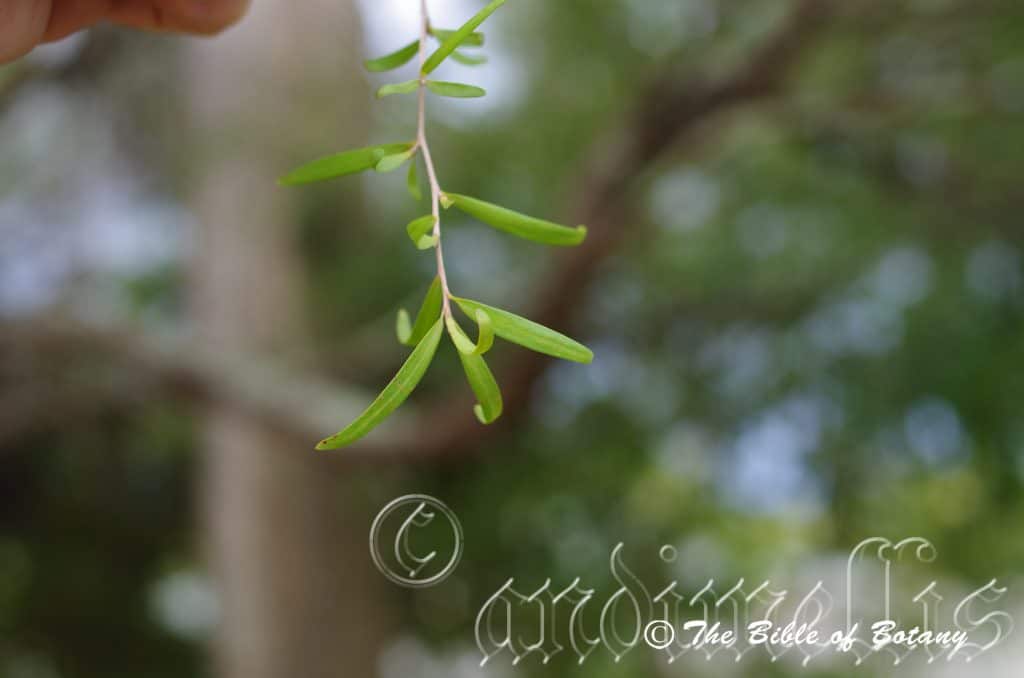
Mithcleton Qld.
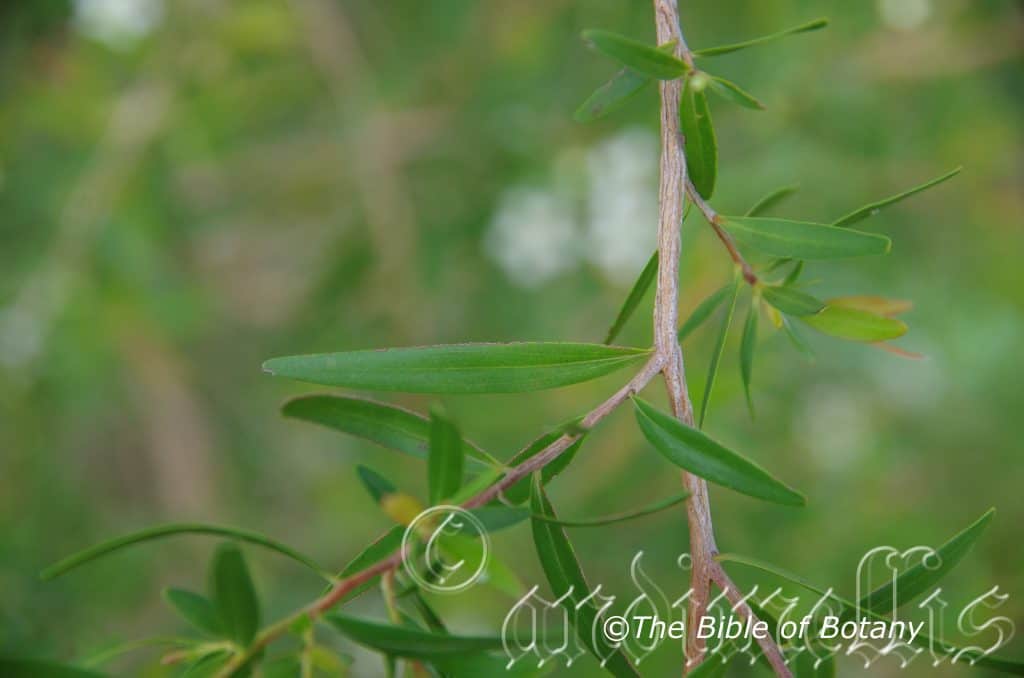
Wherrol Flat NSW
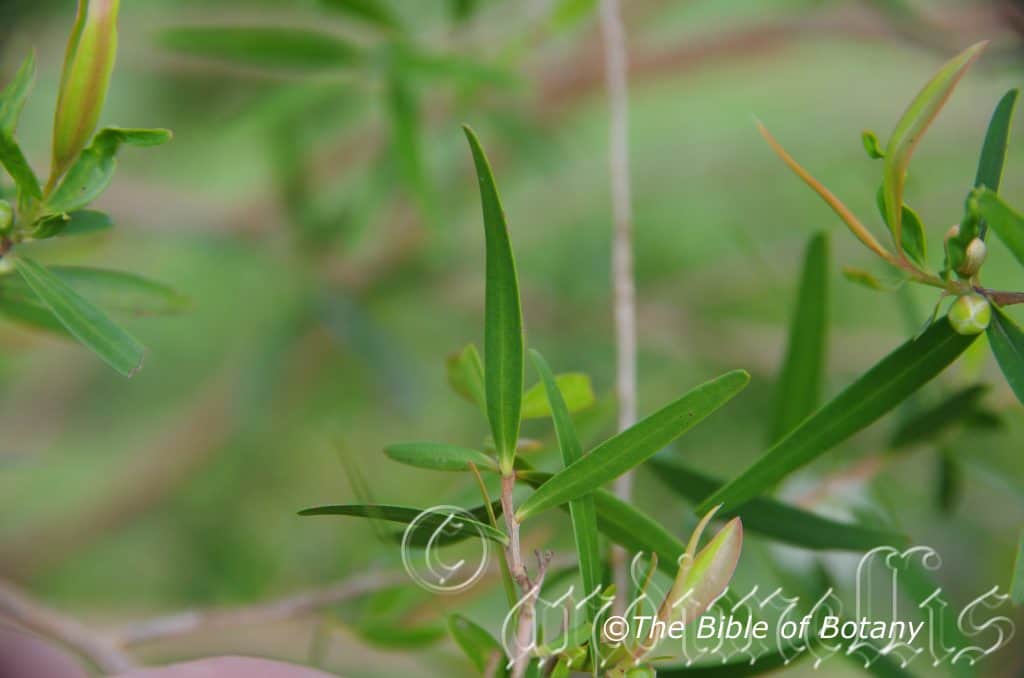
Wherrol Flat NSW
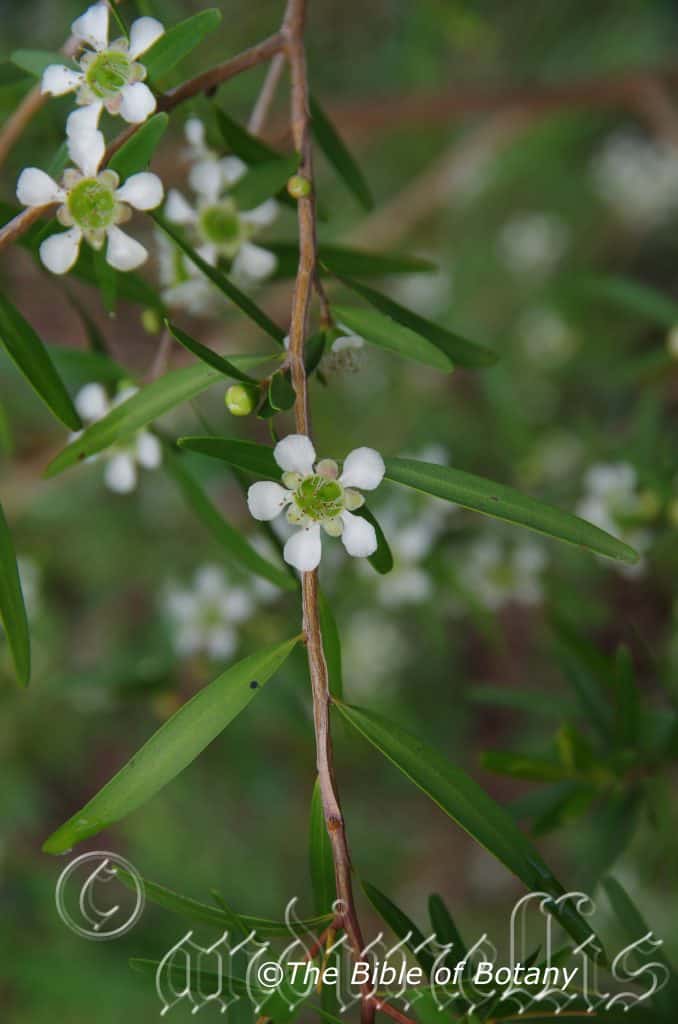
Wherrol Flat NSW
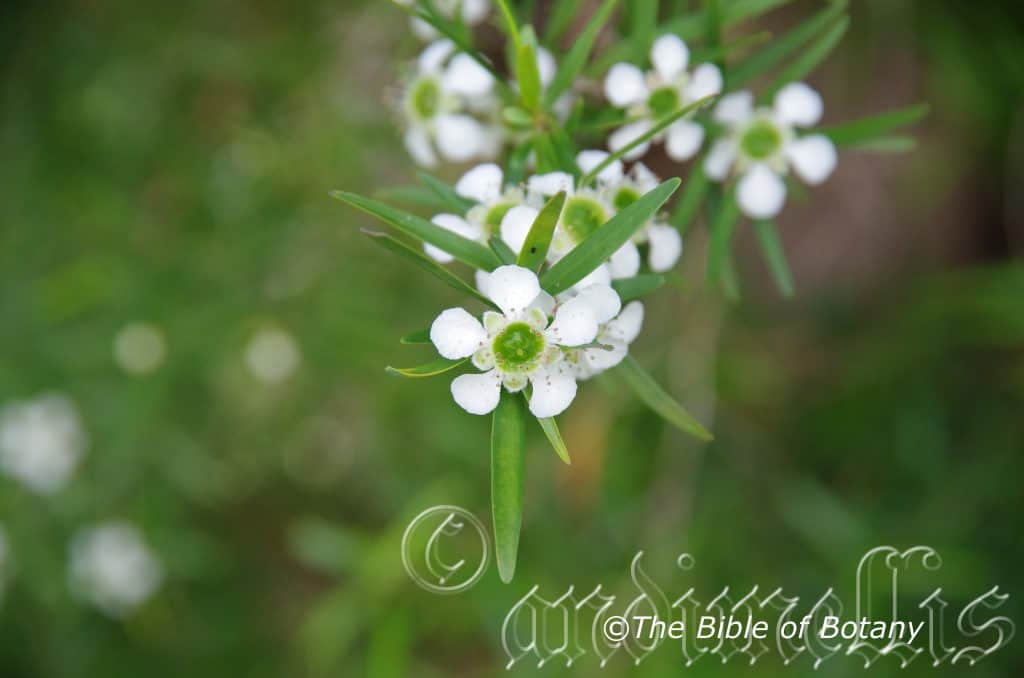
Wherrol Flat NSW
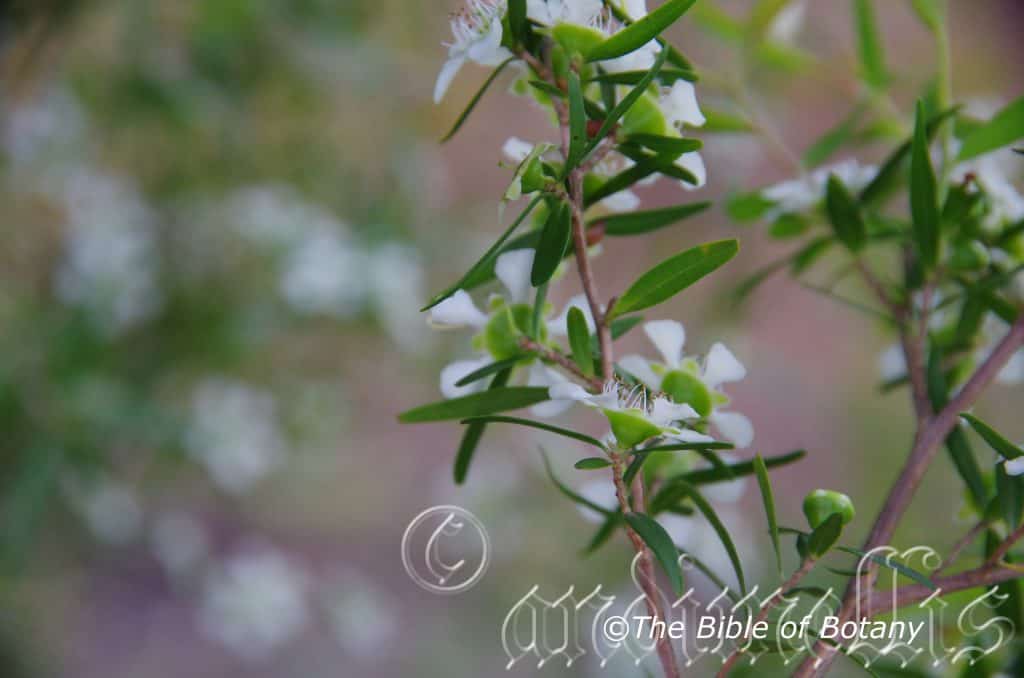
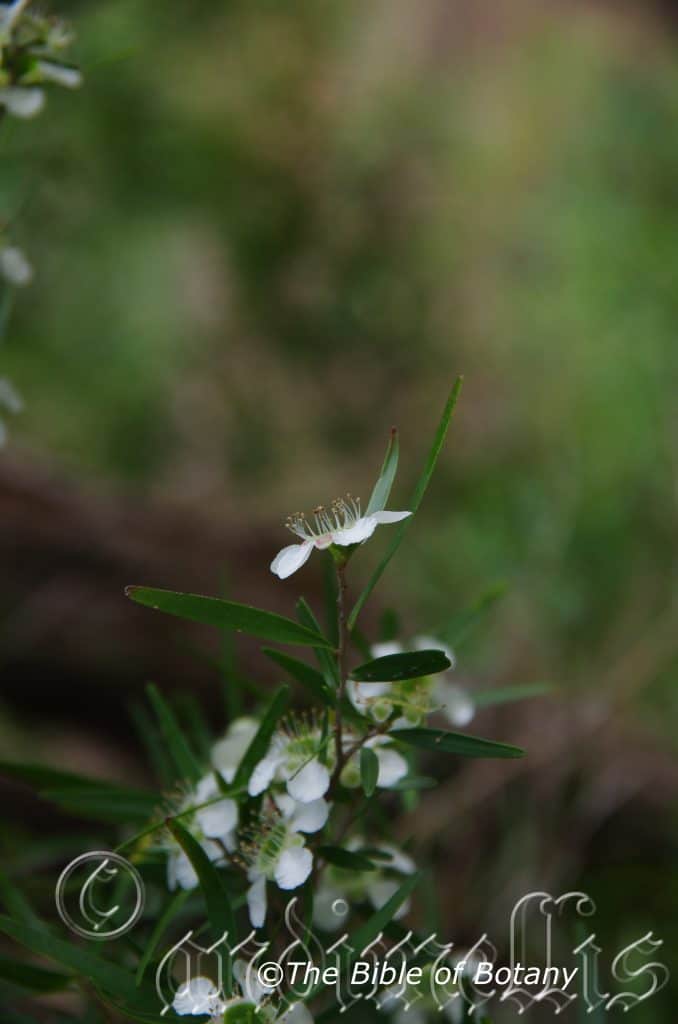
Wherrol Flat NSW
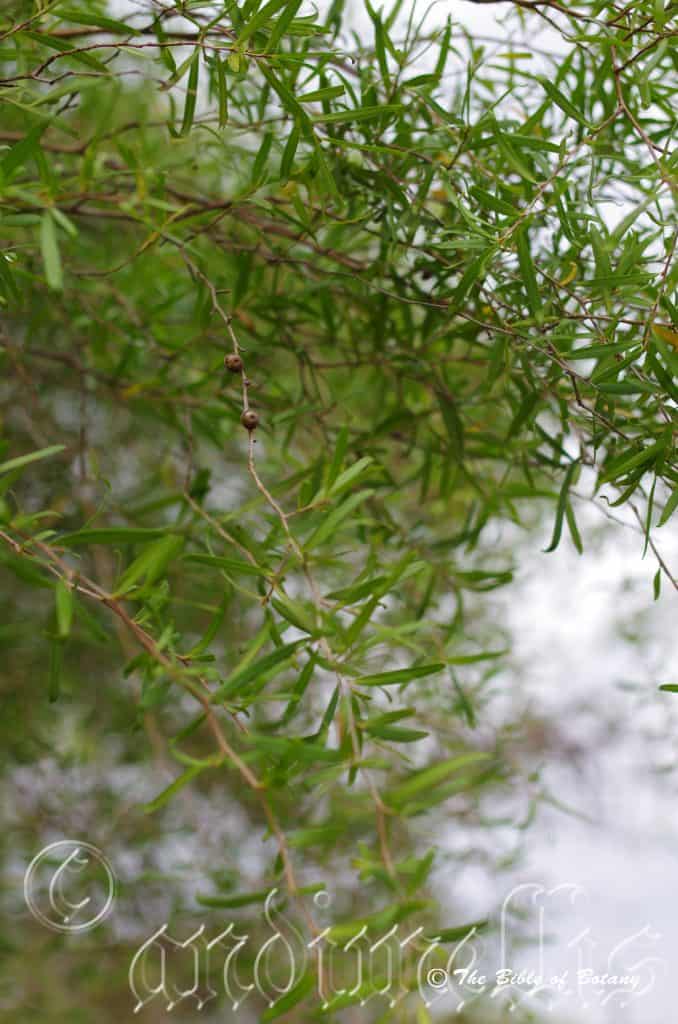
Wherrol Flat NSW
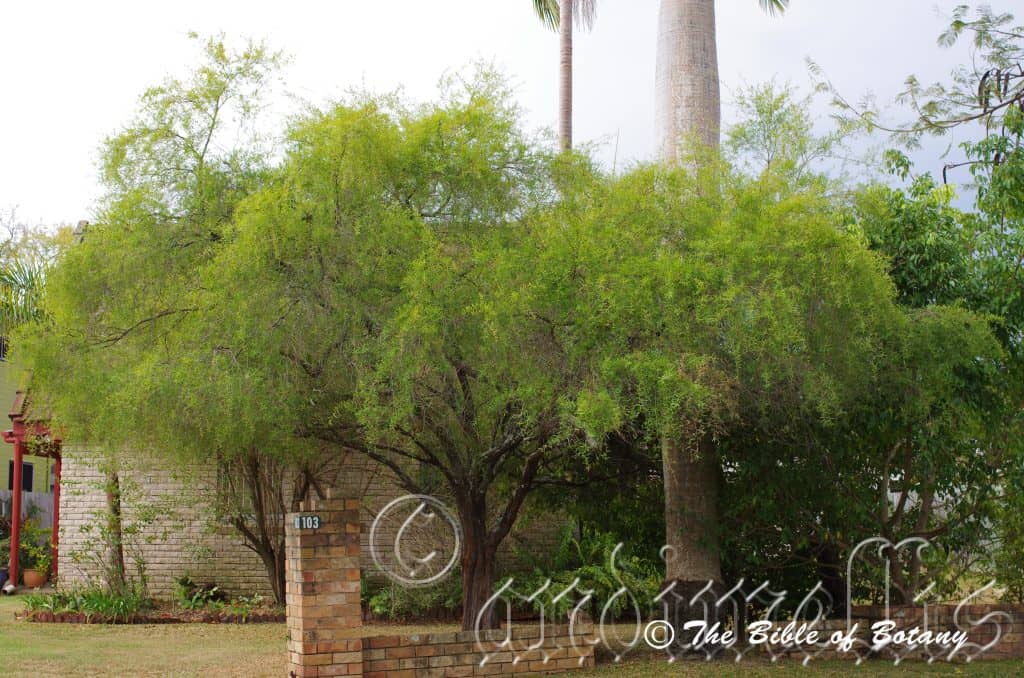
Mithcleton Qld.
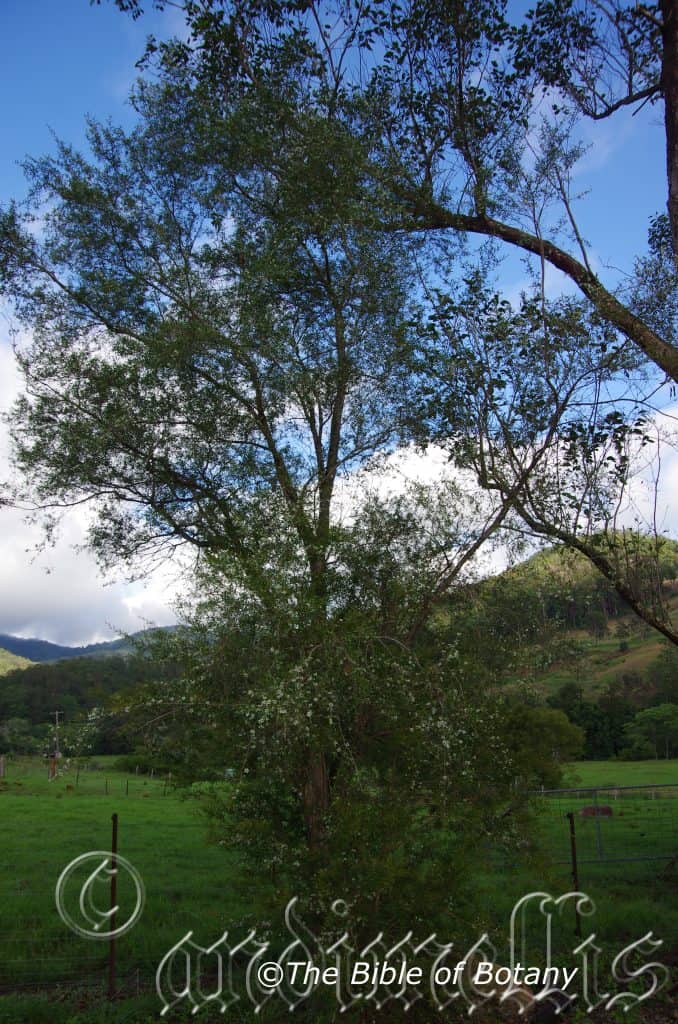
Wherrol Flat NSW
Leptospermum petersonii
Classification:
Unranked: Magnoliophyta
Class:Magnoliopsida
Order: Myrtales
Family: Myrtaceae
Genus: From Leptós, which is Ancient Greek for delicate, fine or slender and Spérma, which is Ancient Greek for a seed. It refers to seeds, which are rather fine and slenderer than other genus in the family.
Specie: Is named in honour of W. J. Peterson, who collected the type specimen from Wilsons Peak.
Sub species:
Common Name: Lemon Scented Tea Tree.
Distribution:
Leptospermum petersonii is found south from the Callide River in central coastal Queensland near Gladstone to Port Macquarie in central coastal New South Wales. Plants found further north and south are introduced to the area or garden escapees. There is an isolated population at Stannary Hills near Herberton in far north Queensland.
It is regarded as a sleeper weed in Western Australia and has been noted and studied as a sleeper weed in Frankston Victoria.
https://avh.ala.org.au/occurrences/search?taxa=Leptospermum+petersonii #tab_mapView
Habitat Aspect Climate:
Leptospermum petersonii prefer full sun to light dappled shade. It grows in dry schlerophyll forests to wet Eucalyptus forests along creek beds swamps and wallums. The altitude ranges from 30 meter ASL to 1180 meters ASL.
The Temperatures range from 2 degree in August to 38 degrees in January.
The rainfalls range from lows of 750mm to an average of 1200mm however this is of little consequence as the plants derive most their moisture from the creeks or streams they grow along.
Soil Requirements:
Leptospermum petersonii prefers skeletal to shallow, sandy loams to light sandy clays with a substratum where the bedrock is close to the surface and has pockets of sand or soil deposited in small crevices and pockets. These conditions prevail along rocky creek beds where the trees are prevalent. The soils are usually derived from decomposed sandstone, granites, brown basalts, black basalts or metamorphic rocks. The soils pH ranges from 5pH to 7pH. It tolerates waterlogged soils. Non saline soils to moderately saline soils are tolerated.
Height & Spread:
Wild Plants: 4m to 6m by 3m to 4.5m.
Characteristics:
Leptospermum petersonii’s grows as a small tree with tight, grey, fibrous, flaky bark. The bark is persistent on the trunk and lower branches thickening as the tree ages. The pale red-brown branchlets are covered in caduceus white hirsute hairs.
Leptospermum petersonii’s alternate, narrow elliptical to lanceolate leaves, measure 20mm to 40mm in length by 2mm to 5mm in width. The base is broadly cuneate to tapering, while the apex is retuse or rarely obtuse. The concolourous laminas are sea-green, semi glossy to glossy and covered in white caduceous hirsute hairs. The margins are entire or slightly recurved. The mid vein is slightly prominent on the lower lamina and is not visible on the upper lamina. The leaves are weakly to strongly aromatic smelling of citronella. The petioles measure less than 0.5mm in length
The new growth is tinged bronze to deep purple. This bronzing is more noticeable in colder climates.
The inflorescences of Leptospermum petersonii are born solitarily from the leaf axis and measure 10mm to 15mm in diameter. The pale green hypanthium measure 3mm to 4mm in length and is very sparsely covered in white hirtellous hairs. The pedicels measure less than 0.5mm in length. The 5 orbicular, white sepals measure 1.5mm to 2.5mm in length and are glabrous. The 5 white glabrous petals are broad spathulate and measure 5mm to 6mm in length by 4mm to 5mm in width.
The 20 or 25 white stamens are fused to the rim of the hypanthia and measure 2.5mm to 3.5mm in length. The anthers are white to pale fawn. The lime green pistil is centrally located on the bright, glossy lime green disc and measures 4mm to 5mm in length. The flowers appear from December to January.
Leptospermum petersonii’s fruit is a broad conical capsule. The 5 ocular capsules measure 5mm to 6mm in diameter at the rim. The pale green capsules turn brown on ripening. The valves are exerted and spread as wide as or wider than the rim on the hypanthium at maturity. The seeds are red-brown.
Wildlife:
The flowers of Leptospermum petersonii are fed upon by numerous small butterflies, native bees, native beetles, wasps and flies.
Cultivation:
Leptospermum petersonii are beautiful semi weeping small trees or large shrubs that grow particularly well on moisture problem soils. It is suitable for small, medium and large gardens close to the coast or high in the mountains in warm temperate, sub-tropical or tropical gardens. As garden subjects they will grow from 4 meters to 5 meters in height by 3 meters to 4 meters in width when grown in the open. It is cold tolerant to temperatures at least as low as minus 4 degrees once established.
They can be lightly tip pruned if a smaller bushier shrub is required or heavily pruned once it is fully established.
They make excellent hedges, screens and wildlife corridors because of their upright bushy growth habit and their abundance of flowers.
It is best used as a small park tree, placed in the background or planted centrally as a small feature tree in small gardens surrounded by other small native shrubs. Placed at the rear of a bush garden their striking display of flowers and bright green leaves will draw your attention so that you will want to investigate further. Plants with small red flowers and large or fine green leaves can be used in the mid ground while small red flowering prostrate shrubs are used in the front. Whether it is in flower or not these trees will catch your attention because of the proliferation of flowers, and pale beautiful and interesting bark.
It is also very good bonsai plants where it is very affective when highlighting the gnarled trunk.
Use a single tree or scatter 3 or 4 around near old stumps and roots to make the stumps or roots look larger and more gnarled. The deep grey gnarled trunk will blend both the horizontal gnarled logs and stumps with the vertical gnarled trunks. To achieve this all the lower branches and stems must be pruned and some training of the trunk in the early stages maybe necessary. Sparingly use other plants when planting and remember that deserted beach scenes are rolling flat barren places, not steep hills so it is best to use a gentle slope or a basin with a small pool in the bottom comer if water is to be added. Do not use a waterfall or cascades as they will be very difficult to blend in and look out of place. When using this plant as a feature only grow small plants that do not reach more than 400mm in height and have a compact habit with either blue or grey leaves, but be careful that these plants do not steal the stage. Use them sparingly. Annuals and perennials would really compliment the scene as would small ground covers and procumbent plants. Try Carpobrotus edulis, Hibertia linearis, Hibertia obtusifolia or Grevillea masonii. Select an area of ground and let your hair down and be imaginative but remember it is the trunk, the stumps or rocks that are the feature and the very small ground covers are the extras.
Leptospermum petersonii also make great beginners bonsai plant because of their fast growth and hardiness in containers. It is easy to maintain and the trunks will bulk up in about three years from a seedling.
I can imagine this shrub being used as a topiary specimen though I have not seen them used in this manner. So why not be the first.
Propagation:
Seeds: Leptospermum petersonii seeds can be sown directly into a seed raising mix after roughing the sides with fine sandpaper to assist in germination. Cover the seeds with 15mm to 20mm of fine weed free mulch and keep moist. Place the tray in a warm sunny position. When the seedlings are 20mm to 30mm tall, prick them out and plant them into 50mm native tubes using a good organic mix.
Once the seedlings reach 100mm to 150mm in height they can be planted out into their permanent position.
Cuttings: Use 80mm to 120mm long semi hardwood material when growing from cuttings from the present season’s growth. Take them in warmer months of the year. Remove half the leaves from the bottom section being careful not to tear the bark.
1 Prepare the cutting mix by adding one third sharp clean river sand, one third peat and one third perlite. These ingredients are sterilize,
2 Select good material from non diseased plants,
3 Select semi green stems for cuttings. Look for a stem with two or three nodes,
4 Place the cutting on a flat, hard surface, and make a clean cut down one side of the cutting at the base for 10mm with a sharp sterile knife or razor blade. – This scarification of the node will increase the chances of roots emerging from this spot. Now remove all but one or two the leaves, leaving the apex leaves in tact. If the leaves are very large in proportion to the stem, cut off the apical halves.
5 Fill a saucer with water, and place a little medium strength rooting hormone into another container like a milk bottle top. Dip the node end of the cutting into the water and then into the rooting hormone. Tap off any excess hormone,
6 Use a small dipple stick or old pencil to poke a hole into the soilless potting mix. Ensure the hole is slightly larger than the stem diameter and be careful not to wipe the rooting hormone off the cuttings base, place the cuttings in a pattern ensuring the cuttings are not touching each other,
7 I like to place the pots in Plastic bags to help maintain temperature and moisture. Place in a semi shaded place like under 50mm shade cloth.
8 When the cuttings have struck, open the bag to allow air circulation for a few days to a week,
9 Once hardened off remove the cuttings from the bag and allow to further hardening for a few more days,
10 Transplant into a good potting mix to grow on.
Fertilize using seaweed, fish emulsion or organic chicken pellets soaked in water on an alternate basis. Fertilize every two months until the plants are established then twice annually in early September or March to maintain health, vitality and better flowering.
Further Comments from Readers:
Hi reader, it seems you use The Bible of Botany a lot. That’s great as we have great pleasure in bringing it to you! It’s a little awkward for us to ask, but our first aim is to purchase land approximately 1,600 hectares to link several parcels of N.P. into one at The Pinnacles NSW Australia, but we need your help. We’re not salespeople. We’re amateur botanists who have dedicated over 30 years to saving the environment in a practical way. We depend on donations to reach our goal. If you donate just $5, the price of your coffee this Sunday, We can help to keep the planet alive in a real way and continue to bring you regular updates and features on Australian plants all in one Botanical Bible. Any support is greatly appreciated. Thank you.
In the spirit of reconciliation we acknowledge the Bundjalung, Gumbaynggirr and Yaegl and all aboriginal nations throughout Australia and their connections to land, sea and community. We pay our respect to their Elders past, present and future for the pleasures we have gained.
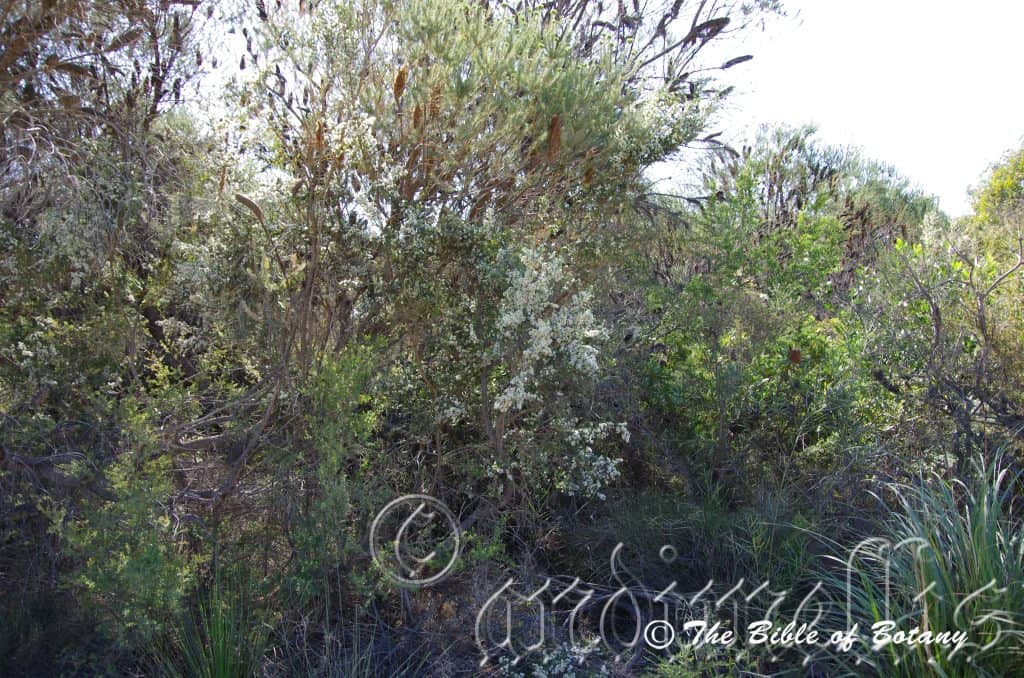
Diamond Beach to Kylie’s Beach Nature Reserve NSW
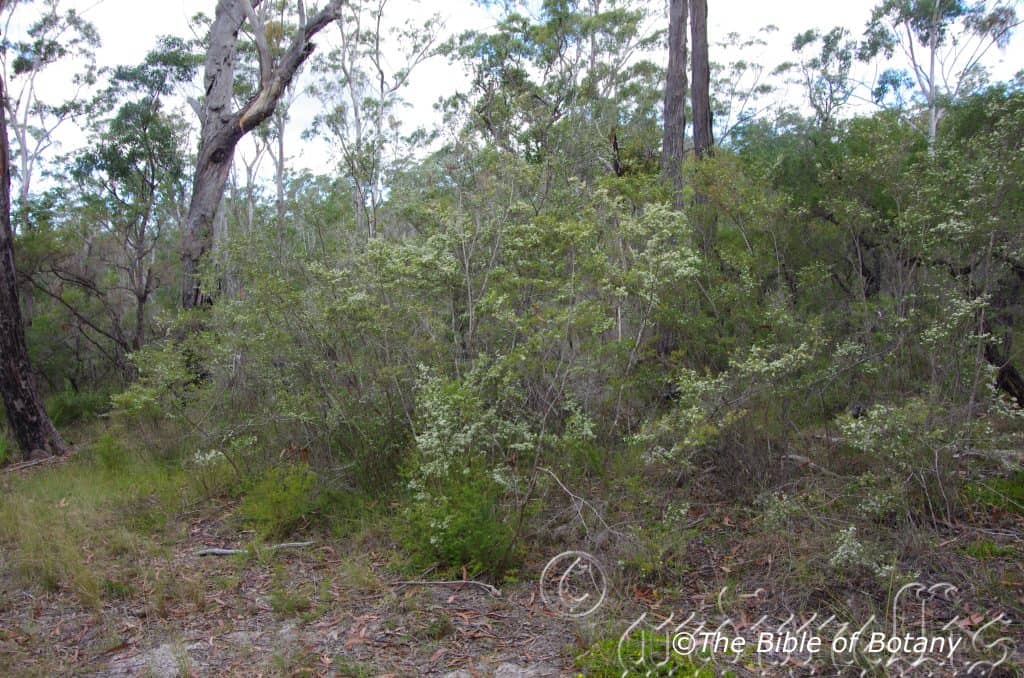
The Pinnacles NSW
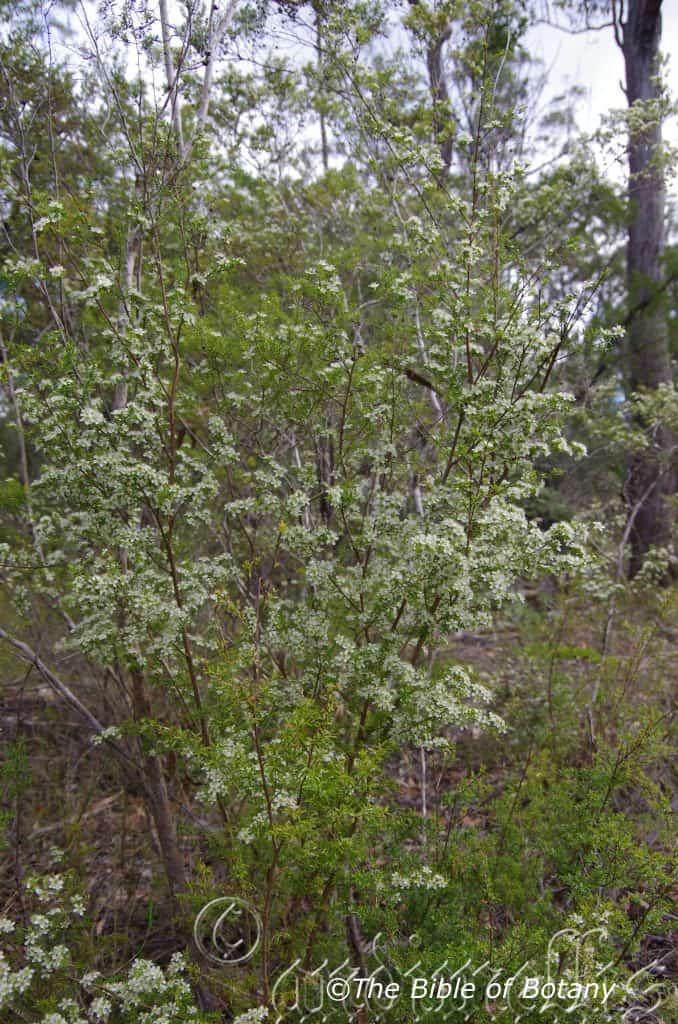
The Pinnacles NSW
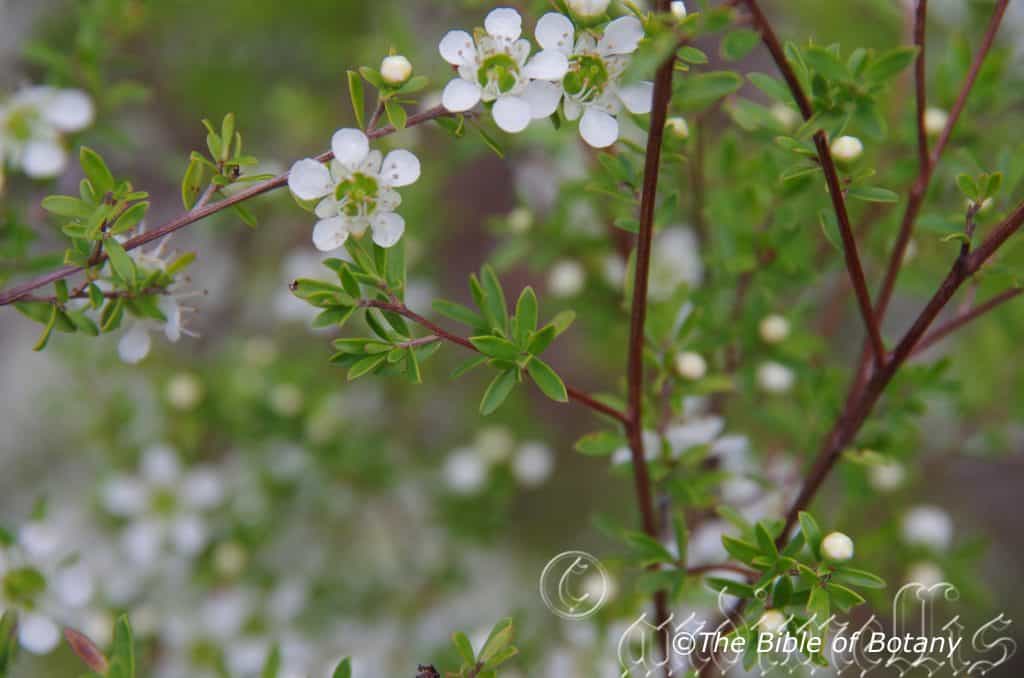
Diamond Beach to Kylie’s Beach Nature Reserve NSW
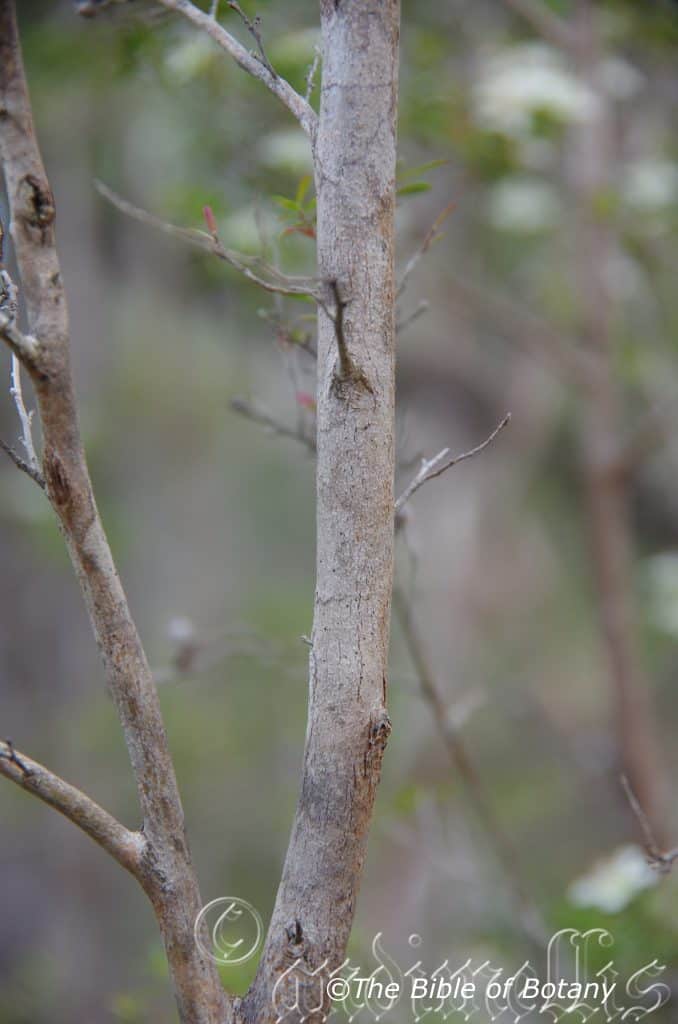
The Pinnacles NSW
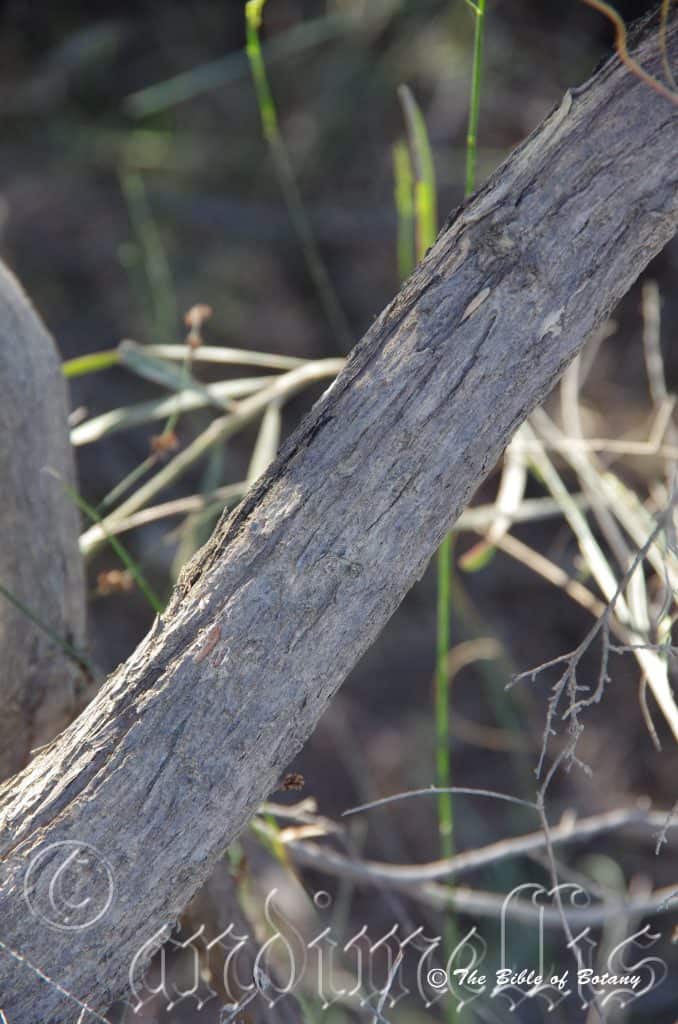
The Pinnacles NSW
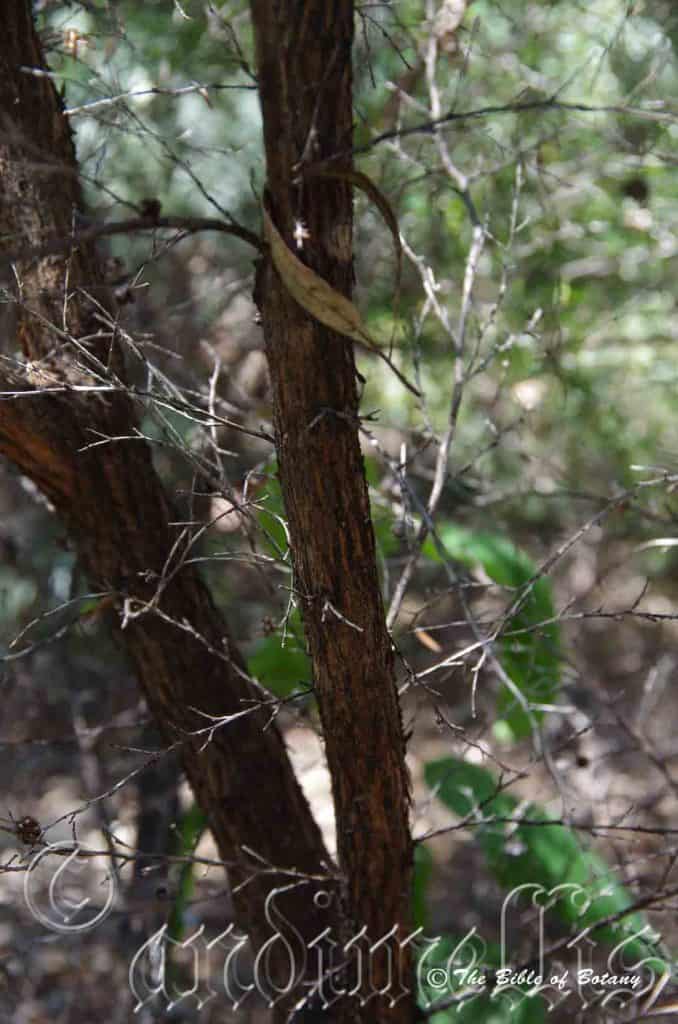
Mount Cootha Botanic Gardens NSW
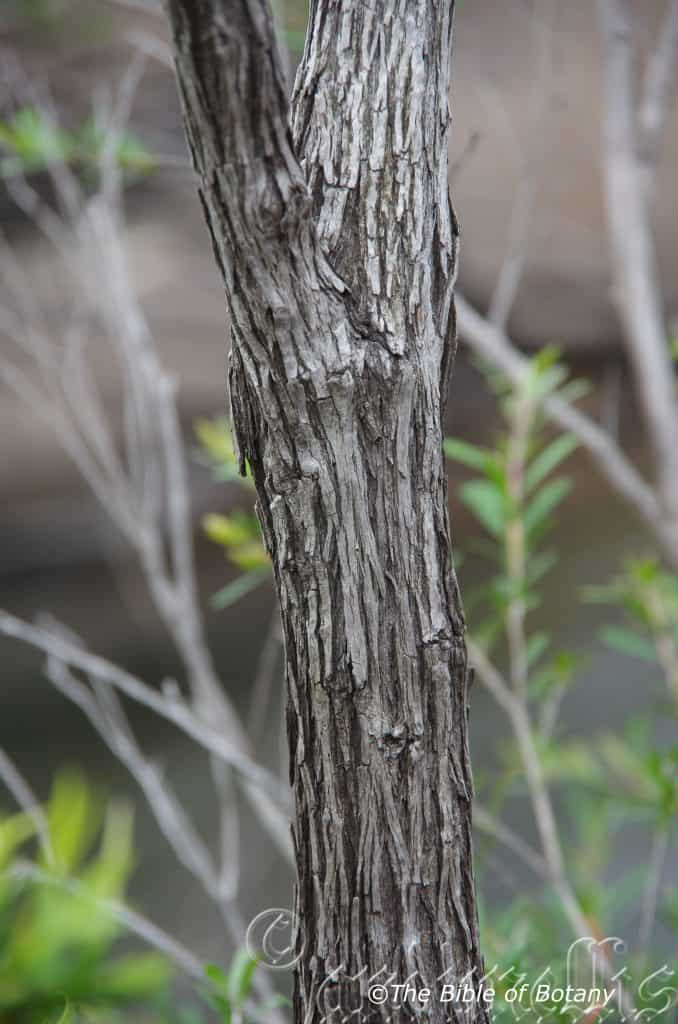
Rocky Creek The Pinnacles NSW
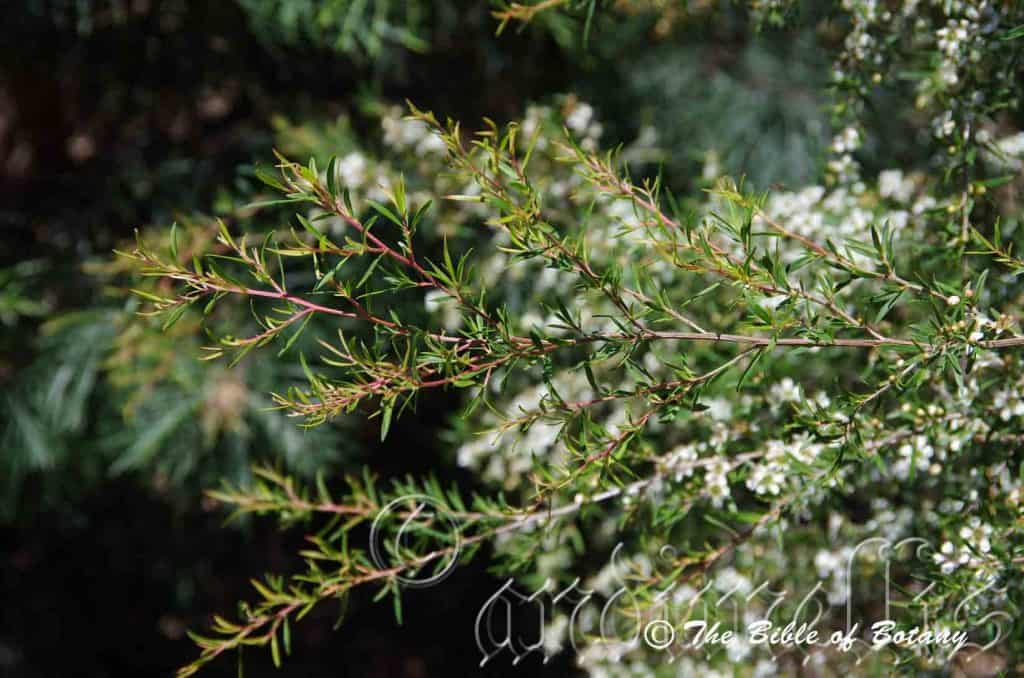
Mount Cootha Botanic Gardens Qld.
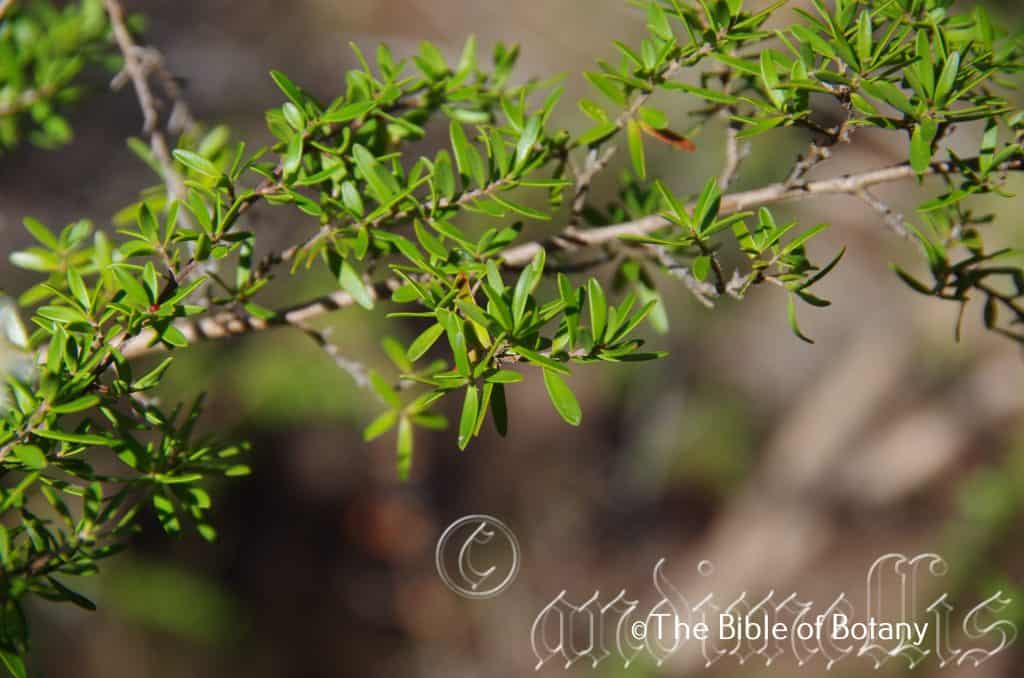
The Pinnacles NSW
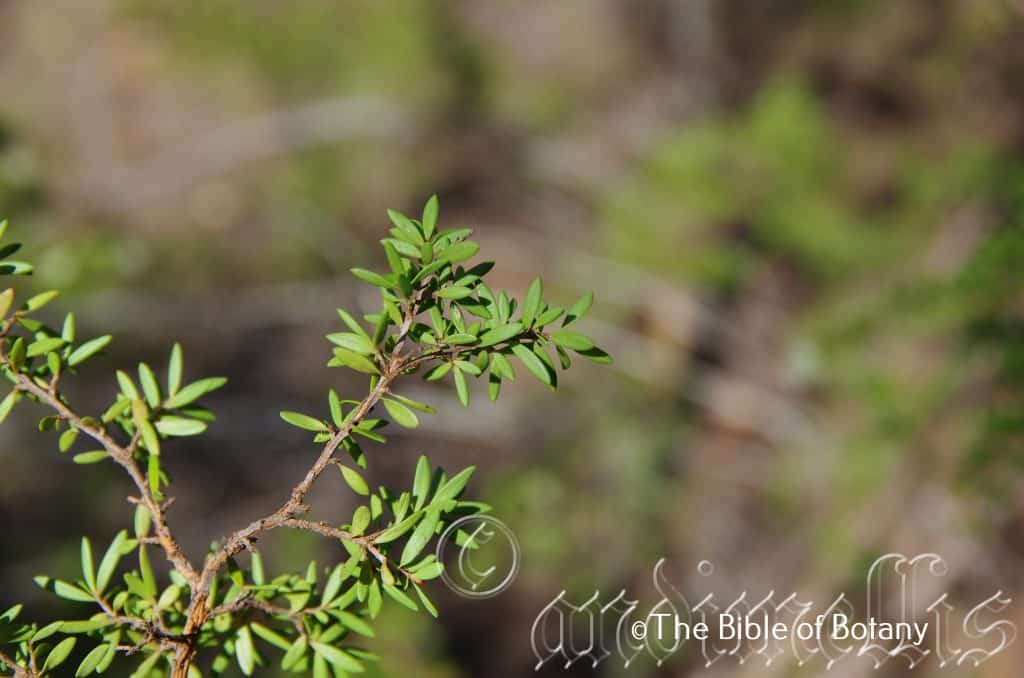
The Pinnacles NSW
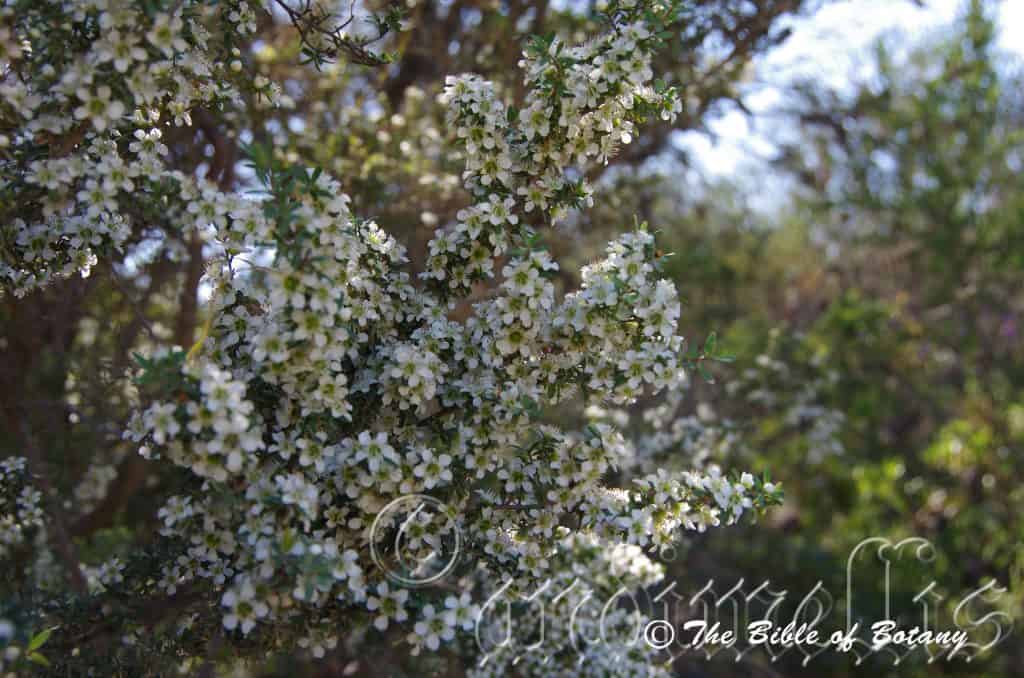
Diamond Beach to Kylie’s Beach Nature Reserve NSW
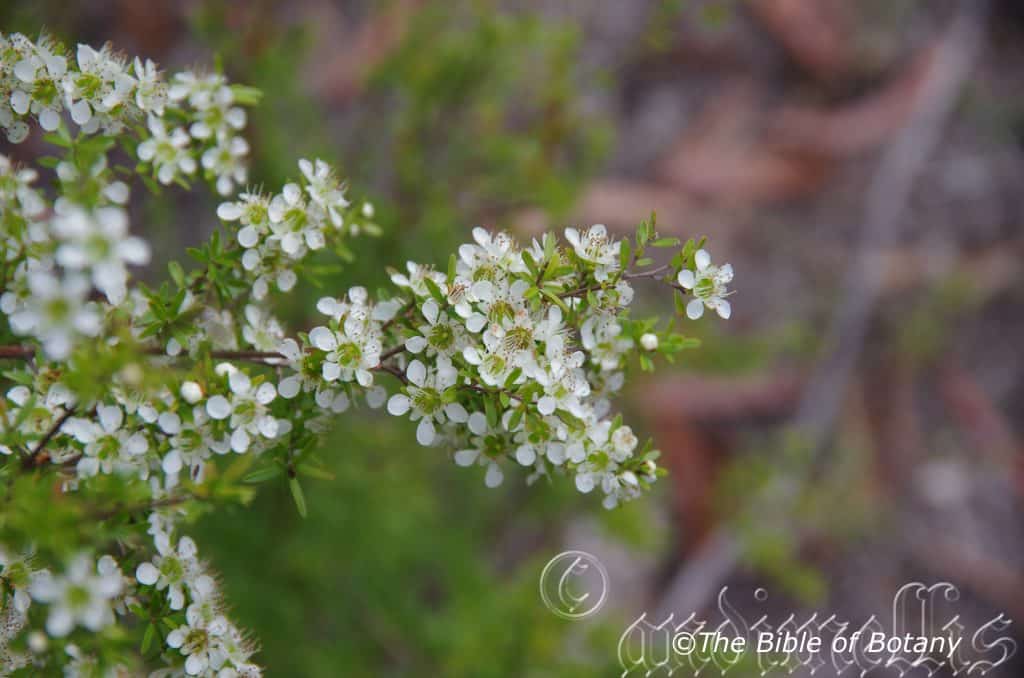
The Pinnacles NSW
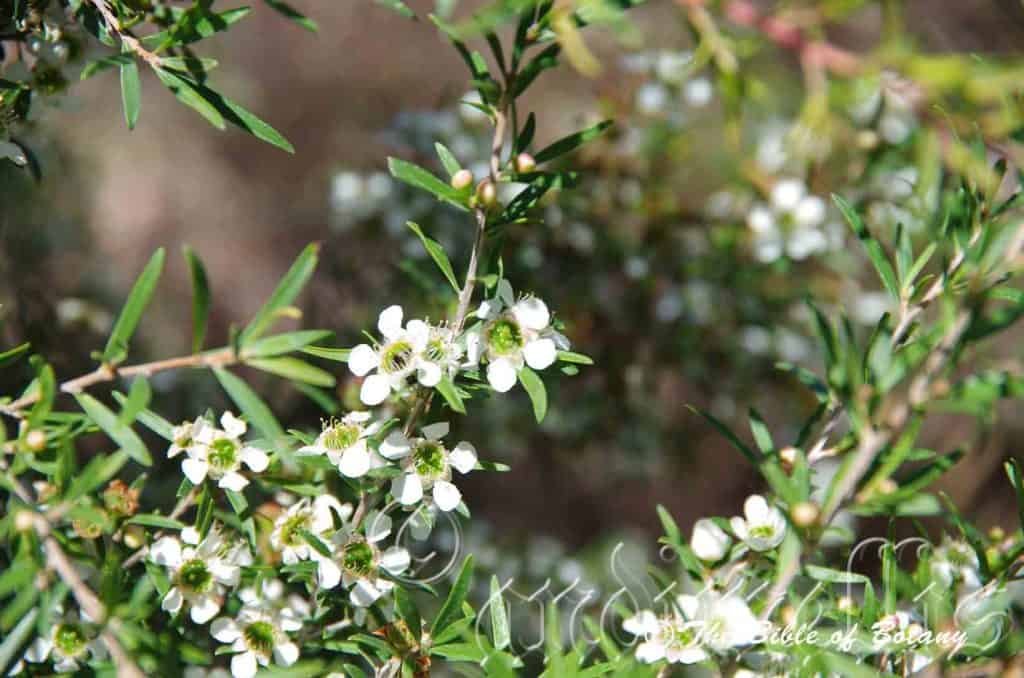
Diamond Beach to Kylie’s Beach Nature Reserve NSW
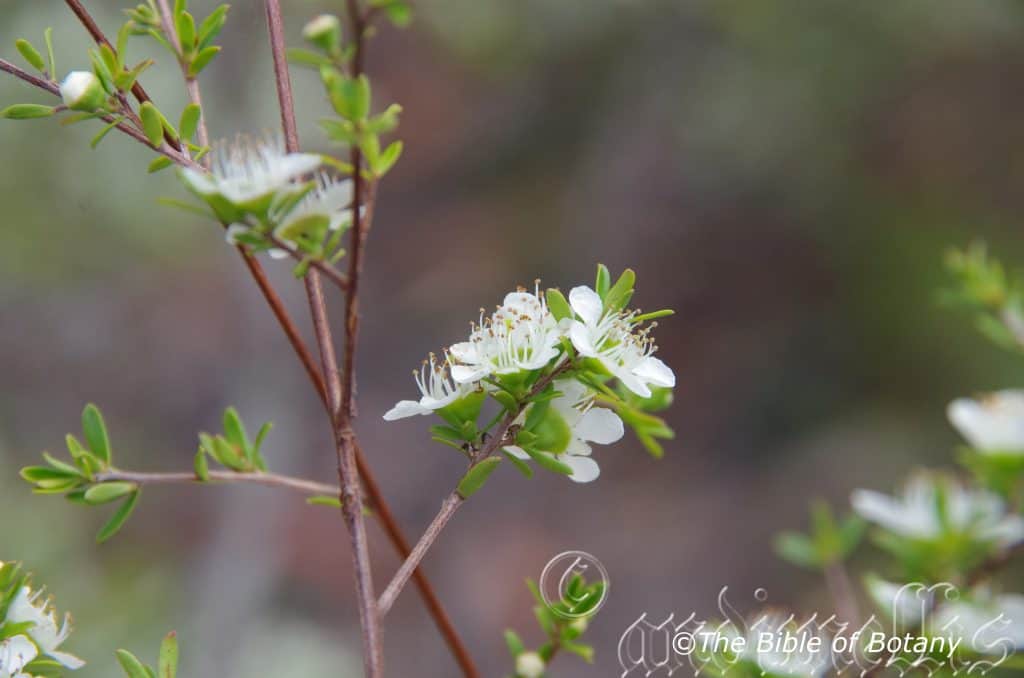
The Pinnacles NSW
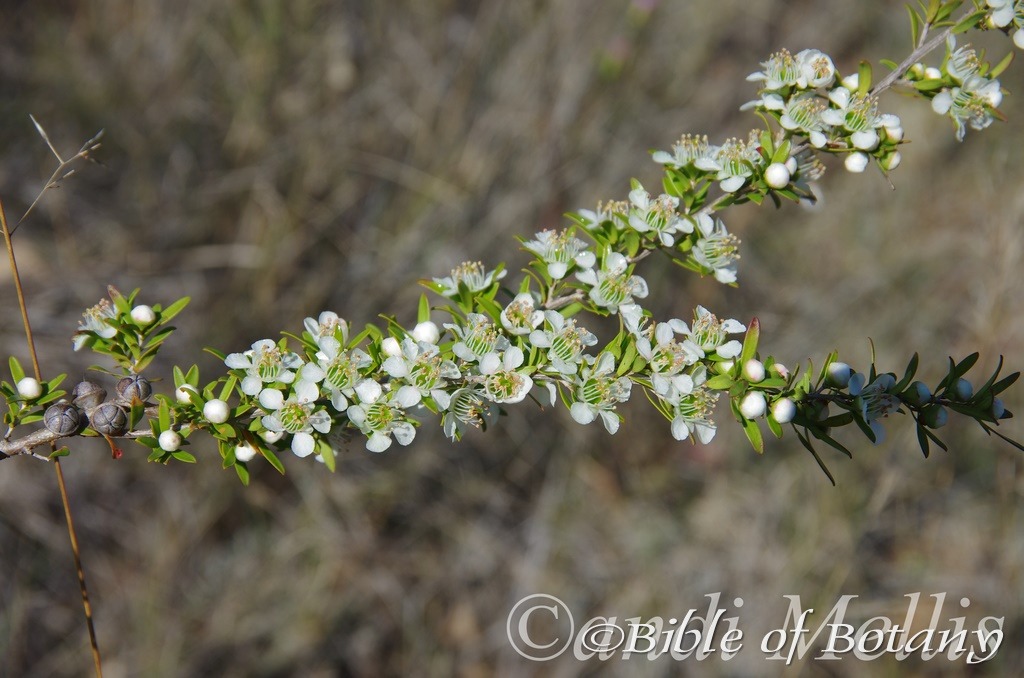
Clarence River NSW
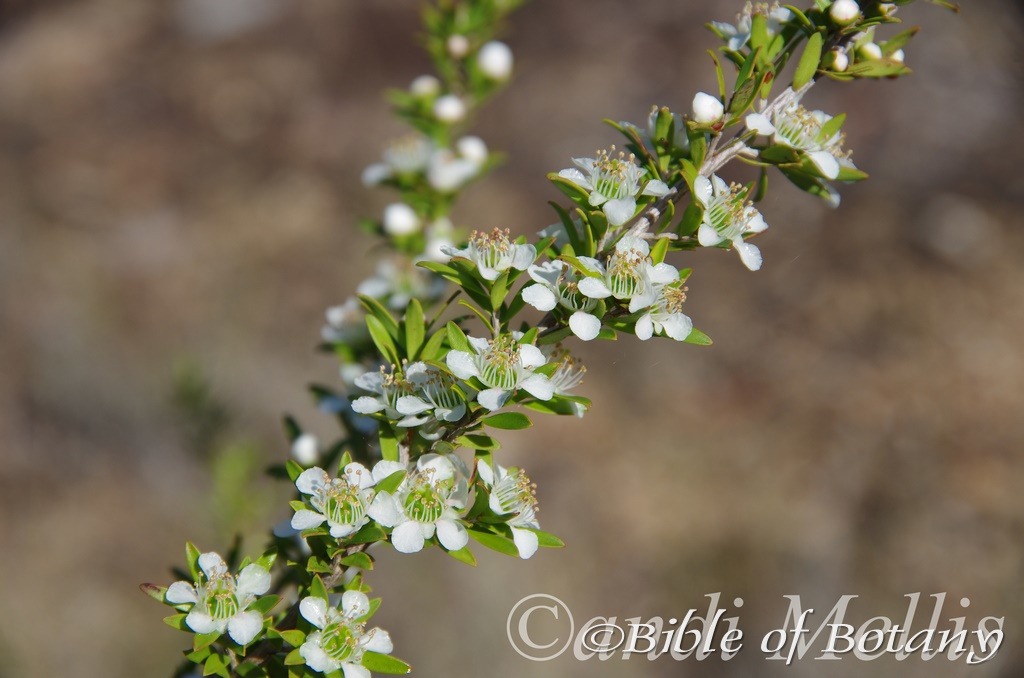
Clarence River NSW
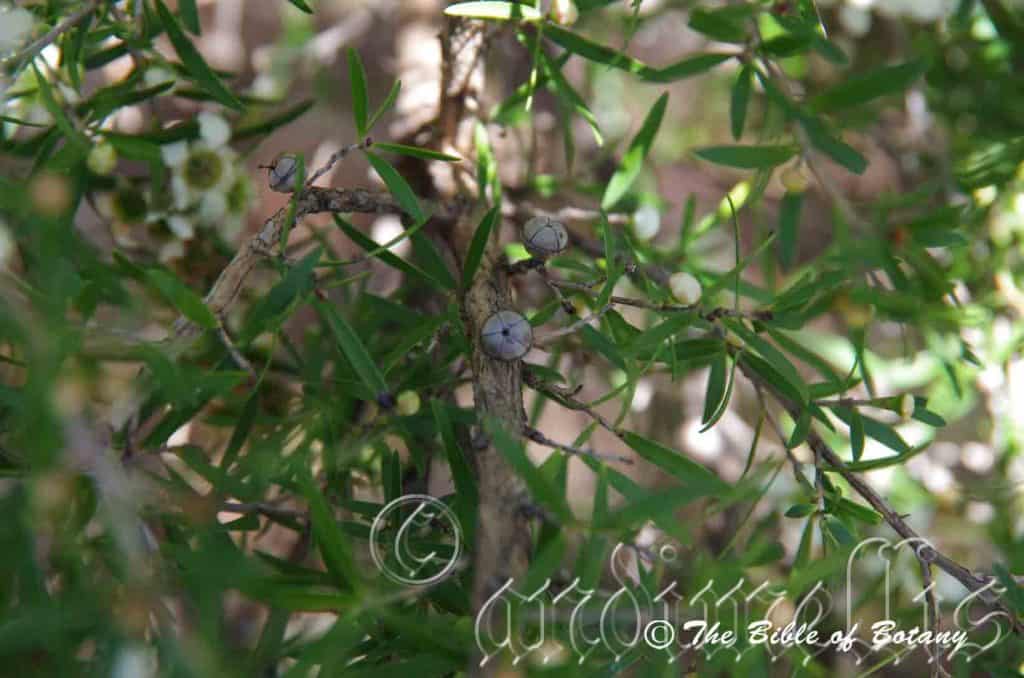
Banyabba National Park NSW
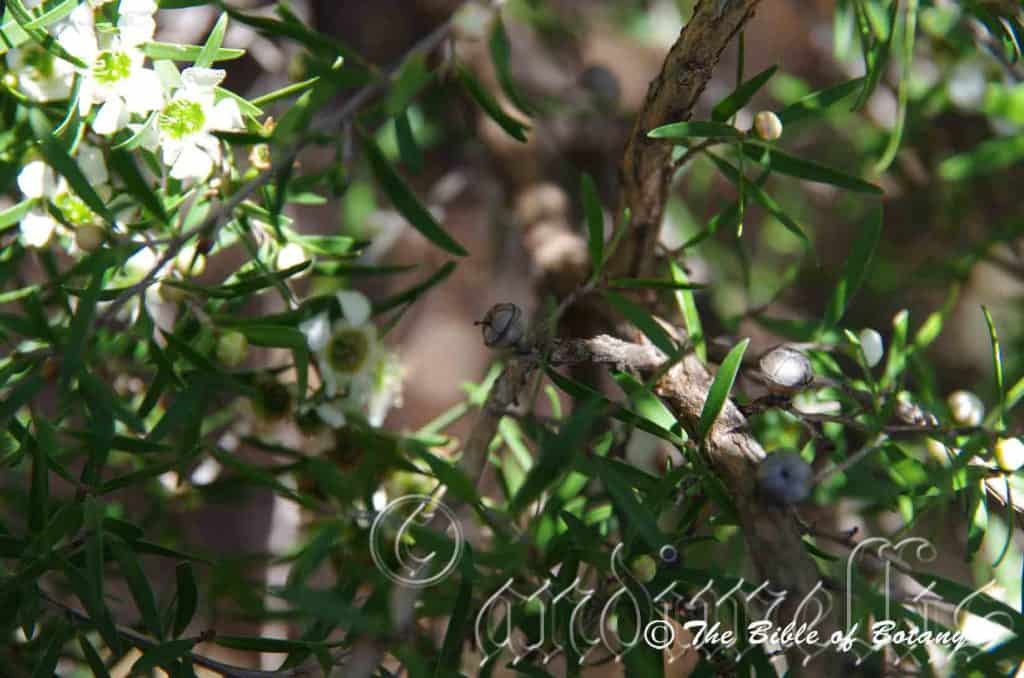
Banyabba National Park NSW
Leptospermum polygalifolium
Classification:
Unranked: Magnoliophyta
Class:Magnoliopsida
Order: Myrtales
Family: Myrtaceae
Genus: From Leptós, which is Ancient Greek for delicate, fine or slender and Spérma, which is Ancient Greek for a seed. It refers to seeds, which are rather fine and slenderer than other genus in the family.
Specie: From Polý, which is Ancient Greek for many or much, Galon/Gála, which are Greek for milk and Folium, which is Latin for foliage. It refers to leaves, which resemble those of the milkworts in the Polygala genus that were used to feed dairy cows.
Sub specie: Leptospermum polygalifolium subsp. cardwell. Is named in honour of Edward Cardwell; 1813-1886, who was a British politician and secretary to the colonies. It refers to the district surrounding Cardwell in far north eastern Queensland where the sub species grows.
Sub specie: Leptospermum polygalifolia subsp. cismontanum. From Cis, which is Latin for on the side of and Montanum, which is Latin for a mountain. It refers to habitats or environments, which positioned on the side of mountains.
Sub specie: Leptospermum polygalifolia subsp. howense. From Howe, which is Latinized for Lord Howe Island. (Richard Howe, 1st Earl Howe) It refers to plants which were first discovered on Lord Howe Island or are restricted to the Islands.
Sub specie: Leptospermum polygalifolia subsp. montanum. From Montana, which is Latinized from the Spanish word for a mountain.
Sub specie: Leptospermum polygalifolia subsp. polygalifolium. From Polý, which is Ancient Greek for many or much, Galon/Gála, which are Greek for milk and Folium, which is Latin for foliage. It refers to leaves, which resemble those of the milkworts in the Polygala genus that were used to feed dairy cows.
Sub specie: Leptospermum polygalifolia subsp. transmontanum. From Trans, which is Latin for across or beyond and Montanum which is Latin for a mountain. It refers to plants, which have habitats across the mountains.
Sub specie: Leptospermum polygalifolia subsp. tropicum. From Tropikós/Trópos, which is Ancient Greek or Tropicus, which is Latin for the tropics. It refers to plants, which grow closer to the tropics than other species in the genus or sub species in the species.
Common Name: Tantoon.
Distribution:
Leptospermum polygalifolium subsp. cardwell is found south the tip of Cape York Peninsula in far north Queensland to the Victorian border. It is also found on all the major Islands in Torres Strait and off the east coast with an isolated population on Norfolk Island.
Leptospermum polygalifolium subsp. cismontanum is found south from Bundaberg in central coastal Queensland to Shoalhaven in coastal New South Wales. There are two disjunct populations further north near Rockhampton and the Walsh River.
Leptospermum polygalifolium subsp. howense is found on Lord Howe Island with 2 isolated populations around The Great Lakes district and near Nowra in New South Wales.
Leptospermum polygalifolium subsp. montanum is found on the Great Dividing Range south from Marybough in Queensland to Eccleston in northern New South Wales.
Leptospermum polygalifolium subsp. polygalifolium is found around Wollongong with two disjunct populations further south to Malua Bay in New South Wales.
Leptospermum polygalifolium subsp. transmontanum is found mainly on the western slopes and on the Great Dividing Range south from The Blackdown tablelands in central Queensland to the Retreat River in central New South Wales.
Leptospermum polygalifolium subsp. tropicum is found south from
Saddle Hill on Cape York Peninsula to Howard and west to Hughenden
and the White Mountains in Queensland.
https://avh.ala.org.au/occurrences/search?taxa=Leptospermum+polygalifolium#tab_mapView
Habitat Aspect Climate:
Leptospermum polygalifolium prefers light dappled shade to full shade. It grows in dry schlerophyll forests to wet Eucalyptus forests along creek beds, coastal heaths rocky cliffs and mountain forests. The altitude ranges from 5 meter ASL to 1400 meters ASL.
The Temperatures range from minus 2 degrees in August to 40 degrees in January depending on the subsp.
The rainfalls range from lows of 350mm to an average of 3000mm however this depends a lot on the sub specie and the terrain it is growing in. In drier areas the plants have a tendency to favour moister ground and in high rainfall areas ridges and escarpments are favoured.
Soil Requirements:
Leptospermum polygalifolium prefers to grow on coarse sands, fine sands, and sandy loams, light fatty sands to light gritty clays or podsolic soils. The soils are usually derived from decomposed granites, sandstones, metamorphic rock, shale, brown basalt, black basalt, metagranites or accumulated peaty beach sands. The soils pH ranges from 4.5pH to 7pH. It tolerates waterlogged soils. Non saline soils to very saline soils are tolerated as are salt laden winds.
Height & Spread:
Leptospermum polygalifolium subsp. cardwell 1m to 1.5m by 1m to 1.5m.
Leptospermum polygalifolium subsp. cismontanum 1m to 4m by 1m to3m.
Leptospermum polygalifolium subsp. montanum 1m to 7m by 1.5m to 3.5m.
Leptospermum polygalifolium subsp. polygalifolium 1m to 3.5m by 1m to 3m.
Leptospermum polygalifolium subsp. transmontanum 1m to 4m by 1m to 3m.
Characteristics:
Leptospermum polygalifolium’s grows as a variable medium shrub to small tree with tight, grey, fibrous flaky bark. The bark often hangs on the trunk and lower branches. The persistent bark gets thicker as the trees age. The pale grey branchlets are glabrous and quickly develop the bark of the older branches.
Leptospermum polygalifolium subsp. cardwell’s crowded alternate almost opposite leaves are elliptical, oblanceolate-elliptical, to linear-elliptical. The leaves measure 14mm to 20mm in length by 1mm to 2mm in width. The bases are cuneate, sessile or petiole to 1mm in length while the apexes are acute to obtuse often with a mucronate point. The discolourous laminas are variable from dull deep green to grey green or blue green glabrous on the upper lamina while the lower lamina is paler. The margins are entire and slightly recurved. The mid vein is slightly prominent on the lower lamina and is not visible on the upper lamina.
Leptospermum polygalifolium subsp. crismontanum’s alternate almost opposite, elliptical, and elliptical to obovate leaves measure 8mm to 10mm in length by 2mm to 3mm in width. The bases are cunneate, sessile or petiole to 1mm in length while the apexes are obtuse often with a mucronate point. The discolourous laminas are dull grey-green and glabrous on the upper lamina while the lower lamina is paler. The margins are entire and recurved. The mid vein is slightly prominent on the lower lamina and is not visible on the upper lamina.
Leptospermum polygalifolium subsp. montanum’s alternate almost opposite, elliptical to oblanceolate leaves measure 10mm to 15mm in length by 3mm to 5mm in width. The base is cunneate, sessile or petiole to 1mm in length while the acute is obtuse often with a mucronate point. The discolourous laminas are variable from dull deep green to grey green or blue green and are covered in white caduceus, canescent hairs on the upper lamina while the lower lamina is paler. The margins are entire and slightly recurved. The mid vein is slightly prominent on the lower lamina and is not visible on the upper lamina.
Leptospermum polygalifolium subsp. polygalifolium’s alternate almost opposite, elliptical, oblanceolate-elliptical, to linear-elliptical leaves measure 10mm to 20mm in length by 2mm to 4mm in width. The base is cunneate, sessile or petiole to 1mm in length while the apex is acute to obtuse often with a mucronate point. The discolourous laminas are variable from dull deep green to grey green or blue-green glabrous on the upper lamina while the lower lamina is paler. The margins are entire and slightly recurved. The mid vein is slightly prominent on the lower lamina and is not visible on the upper lamina.
Leptospermum polygalifolium subsp. transmontanum’s alternate almost opposite narrow elliptical leaves measure 10mm to 15mm in length by 2mm to 2.5mm in width. The base is cuneate, sessile or petiole to 1mm in length while the apex is acute to with a slightly pungent tip. The concolourous laminas are mid green to mid yellow-green and glabrous or sometimes sparsely covered in white canescent hairs. The margins are entire and flat. The mid vein is slightly prominent on the lower lamina and is not visible on the upper lamina.
The inflorescence of Leptospermum polygalifolium subsp. cardwell’s are born singularly from the leaf axis and measure 9mm to 12mm in diameter. The pale grass-green, grey-green or blue-green, hypanthium measure 2.5mm to 3mm in length. The pedicels are sessile. The 5 pale pink, circular sepals measure 2.5mm to 3.5mm in length. The 5 white, glabrous, circular petals measure 5mm to 6mm in length by 5mm to 6mm in width.
The 30 white stamens are fused to the upper rim adjacent to the petals on the hypanthia and measure 3mm to 4mm in length. The anthers are brown. The green style has a deeper green or red-brown stigma and is centrally located on the bright glossy green disc. Flowers appear from late August to early October.
The inflorescence of Leptospermum polygalifolium subsp. cismontanum are born singularly from the leaf axis and measure 9mm to 12mm in diameter. The pale grass-green, grey-green or blue-green, hypanthium measure 25mm to 30mm in length. The pedicels are sessile. The 5 white to creamy white sepals measure 1.5mm to 2mm in length. The 5 white, glabrous, circular petals measure 5mm to 6mm in length by 5mm to 6mm in width.
The 30 white stamens are fused to the upper rim adjacent to the petals on the hypanthia and measure 3mm to 4mm in length. The anthers are brown. The green style has a deeper green or red-brown stigma and is centrally located on the bright glossy green disc. Flowers appear from September to October.
The inflorescence of Leptospermum polygalifolium subsp. montanum are born singularly from the leaf axis and measure 11mm to 13mm in diameter. The pale grass-green to grey-green, blue-green, hypanthium measure 1.5mm to 2mm in length. The pedicels are sessile. The 5 white sepals measure 2mm to 2.5mm in length. The 5 white glabrous, circular petals measure 5mm to 6mm in length by 5mm to 6mm in width.
The 30 white stamens are fused to the upper rim adjacent to the petals on the hypanthia and measure 3mm to 4mm in length. The anthers are brown. The green style has a deeper green or red-brown stigma and is centrally located on the bright glossy green disc. Flowers appear from August to January.
The inflorescence of Leptospermum polygalifolium subsp. polygalifolium are born singularly from the leaf axis and measure 9mm to 14mm in diameter. The pale grass-green, grey-green or blue-green, hypanthium measure 25mm to 30mm in length. The pedicels are sessile. The 5 white to creamy white sepals measure 2mm to 2.5mm in length. The 5 white glabrous, circular petals measure 5mm to 6mm in length by 5mm to 6mm in width.
The 30 white stamens are fused to the upper rim adjacent to the petals on the hypanthia and measure 3mm to 4mm in length. The anthers are brown. The green style has a deeper green or red-brown stigma and is centrally located on the bright glossy green disc. Flowers appear from August to January.
The inflorescence of Leptospermum polygalifolium subsp. transmontanum are born singularly from the leaf axis and measure 10mm to 12mm in diameter. The pale grey-green hypanthium measure 2.5mm to 3mm in length. The pedicels are sessile. The 5 sepals are white, measure 1.5mm to 2mm in length. The 5 pale greenish white or pale pink, circular petals measure 5mm to 6mm in length by 5mm to 6mm wide and are glabrous.
The 30 white stamens are fused to the upper rim adjacent to the petals on the hypanthia and measure 2.5mm to 3mm in length. The anthers are brown. The green style has a deeper green or red-brown stigma and is centrally located on the bright glossy green disc. Flowers appear from August to January depending on the subsp. and whether it is grown in the southern or northern part of their zone. Flowers appear from August to January.
Leptospermum polygalifolium subsp. cardwell’s fruit is a broad conical capsule. The 5 ocular capsules measure 5mm to 7mm in diameter at the rim. The grey-green capsules turn grey on ripening. The
Leptospermum polygalifolium subsp. crismontanum’s fruit is a broad conical capsule. The 5 ocular capsules measure 5mm to 7mm in diameter at the rim. The grey-green capsules turn grey on ripening. The valves are exerted.
Leptospermum polygalifolium subsp. montanum’s fruit is a broad conical capsule. The 5 ocular capsules measure 6mm to 9mm in diameter at the rim. The grey-green capsules turn grey on ripening. The valves are exerted.
Leptospermum polygalifolium subsp. polygalifolium’s fruit is a broad conical capsule. The 5 ocular capsules measure 7mm to 10mm in diameter at the rim. The grey-green capsules turn grey on ripening. The valves are exerted.
Leptospermum polygalifolium subsp. transmontanum’s fruit is a broad conical capsule. The 5 ocular capsules measure 6mm to 7mm in diameter at the rim. The grey-green capsules turn grey on ripening. The valves are exerted.
Wildlife:
The flowers are fed upon by numerous small honey eaters, butterflies, native bees, native beetles, wasps and pollen flies.
Cultivation:
Leptospermum polygalifolium is beautiful erect or cascading small tree or small to medium shrubs that grow equally well on moisture problem soils or dry sandstone escarpments. It is suitable for small, medium and large gardens close to the coast or high in the mountains in warm temperate, sub-tropical or tropical gardens. It is cold tolerant to temperatures at least as low as minus 5 degrees once established.
It can be lightly tip pruned if a smaller bushier shrub is required or to produce more lateral branches and a heath like plant.
Use a single small tree forms or scatter 3 or 4 around near old stumps and roots to make the stumps or roots look larger and more gnarled. The grey bark and short twisted trunks will contrast both the horizontal gnarled logs and stumps with a typical heath scene. To achieve this trim some of the lower branches so the canopy looks larger and more rounded or swept to one side. Some training of the trunk in the early stages maybe necessary, to gain certain weird shapes that may be desired. Sparingly use other plants when planting and remember that heath scenes are flat places that are wind swept not steep hills so it is best to use a gentle slope or a basin with a small pool near the bottom.
Waterfalls or cascades are very difficult to blend in but can be done. The important thing to remember is balance and size of the plants. When using this plant as a feature, only grow small plants that do not reach more than 400mm in height and have a compact habit with blue, green or grey leaves, but be careful that these plants do not steal the stage. Use them sparingly. Annuals and perennials would really compliment the scene as would small ground covers and procumbent plants.
Cram the plants at their maximum spreads when planting to gain a wallum or headland heath scene. That is if a plants maximum spread is 1 meter then plant it 1 meter from its neighbours. Only use Leptospermum polygalifolium as the tall plant and use a large number of different species and leaf types throughout the section. This is one of the layouts that I am most pleased with at home at the Pinnacles. I have been able to blend a rainforest scene through to the crowded heath and further down the path we walk amongst plants from a barren windswept scene. All this can be found within half an acre. In fact this is one of my favourite plants to work with as it is easy, hardy and grotesque to look at yet they make the scene and when in flower all the ugliness is quickly forgotten.
Try planting them with shrubs that have scarlet red or deep pink flowers for something that is truly outstanding. Here I think of Graptophyllum excelsa and various small Grevillea specie.
Try Blandfordia and other small flaxes or Lomandra with Hibertia linearis, Hibertia obtusifolia or Grevillea masonii to add colour beneath solitary trees.
In a barren rocky terrain use the above small plants but plant sparingly and make the rocks the most important feature while the Leptospermum specie attract all the attention while in flower or as a secondary view when visitors contrast the gnarled trunk and flaky bark with the rocks or stumps. Let your hair down and be imaginative but remember it is the trunk, the stumps or rocks that are the feature and the very small ground covers are the extras.
Leptospermum poligalifolium make excellent bonsai plants as it is easy to train and are hardy in confined containers.
Propagation:
Seeds: Leptospermum polygalifolium seeds can be sown directly into a seed raising mix after roughing the sides with fine sandpaper to assist in germination. Cover the seeds with 15mm to 20mm of fine weed free mulch and keep moist. Place the tray in a warm sunny position.
When the seedlings are 20mm to 30mm tall, prick them out and plant them into 50mm native tubes using a good organic mix.
Once the seedlings reach 100mm to 150mm in height they can be planted out into their permanent position.
Cuttings: Cuttings must be used if a particular form or size is required. Use 80mm to 120mm long semi hardwood material when growing from cuttings from the present season’s growth. Take them in warmer months of the year. Remove half the leaves from the bottom section being careful not to tear the bark.
1 Prepare the cutting mix by adding one third sharp clean river sand, one third peat and one third perlite. These ingredients are sterilize,
2 Select good material from non diseased plants,
3 Select semi green stems for cuttings. Look for a stem with two or three nodes,
4 Place the cutting on a flat, hard surface, and make a clean cut down one side of the cutting at the base for 10mm with a sharp sterile knife or razor blade. – This scarification of the node will increase the chances of roots emerging from this spot. Now remove all but one or two the leaves, leaving the apex leaves in tact. If the leaves are very large in proportion to the stem, cut off the apical halves.
5 Fill a saucer with water, and place a little medium strength rooting hormone into another container like a milk bottle top. Dip the node end of the cutting into the water and then into the rooting hormone. Tap off any excess hormone,
6 Use a small dipple stick or old pencil to poke a hole into the soilless potting mix. Ensure the hole is slightly larger than the stem diameter and be careful not to wipe the rooting hormone off the cuttings base, place the cuttings in a pattern ensuring the cuttings are not touching each other,
7 I like to place the pots in Plastic bags to help maintain temperature and moisture. Place in a semi shaded place like under 50mm shade cloth.
8 When the cuttings have struck, open the bag to allow air circulation for a few days to a week,
9 Once hardened off remove the cuttings from the bag and allow to further hardening for a few more days,
10 Transplant into a good potting mix to grow on.
Fertilize using seaweed, fish emulsion or organic chicken pellets soaked in water on an alternate basis. Fertilize every two months until the plants are established then twice annually in early September or March to maintain health, vitality and better flowering.
Further Comments from Readers:
Hi reader, it seems you use The Bible of Botany a lot. That’s great as we have great pleasure in bringing it to you! It’s a little awkward for us to ask, but our first aim is to purchase land approximately 1,600 hectares to link several parcels of N.P. into one at The Pinnacles NSW Australia, but we need your help. We’re not salespeople. We’re amateur botanists who have dedicated over 30 years to saving the environment in a practical way. We depend on donations to reach our goal. If you donate just $5, the price of your coffee this Sunday, We can help to keep the planet alive in a real way and continue to bring you regular updates and features on Australian plants all in one Botanical Bible. Any support is greatly appreciated. Thank you.
In the spirit of reconciliation we acknowledge the Bundjalung, Gumbaynggirr and Yaegl and all aboriginal nations throughout Australia and their connections to land, sea and community. We pay our respect to their Elders past, present and future for the pleasures we have gained.
Leptospermum rotundifolium
Classification:
Unranked: Magnoliophyta
Class:Magnoliopsida
Order: Myrtales
Family: Myrtaceae
Genus: From Leptós, which is Ancient Greek for delicate, fine or slender and Spérma, which is Ancient Greek for a seed. It refers to seeds, which are rather fine and slenderer than other genus in the family.
Specie: From Rotundātus, which is Latin for round and Folium, which is Latin for foliage. It refers to leaves, which are round or much rounder than other species in the genus.
Sub species:
Common Name: Manuka or Pink Flowering Tea Tree.
Distribution:
Leptospermum rotundifolium is found south from Mount Solitary in the Blue Mountains in southern central eastern New South Wales to Poddy creek in north eastern coastal Victoria.
https://avh.ala.org.au/occurrences/search?taxa=Leptospermum+rotundifolium#tab_mapView
Habitat:
Leptospermum rotundifolium prefers full sun to light dappled shade. It grows in dry schlerophyll forests to rocky heaths on escarpments. The altitude ranges from 21 meter ASL to 760meters ASL.
The Temperatures range from minus 4 degrees in August to 37 degrees in January.
The rainfalls range from lows of 600mm to an average of 1600mm.
Soil Requirements:
Leptospermum rotundifolium prefers sandy loams to light gritty clays. The soils are usually derived from decomposed sandstone, shale, brown basalt, black basalt or granites. The soils pH ranges from 5.5pH to 7pH. It does not tolerate waterlogged soils. Non saline soils to moderately saline soils are tolerated.
Height & Spread:
Wild Plants: 1.7m to 2.2m by 2m to 3m.
Characteristics:
Leptospermum rotundifolium’s grows as a medium shrub with grey-brown, close fitting, persistent bark. The bark is twisting giving a gnarled appearance to the tree. The pale red-brown branchlets are striated longitudinally and are densely covered in white caduceus pulverulent hairs. The new growth is a coppery red colour.
Leptospermum rotundifolium’s alternate, orbicular to oval leaves measure 4mm to 7mm in length by 3.5mm to 7mm in width. The petioles are covered in white pulverulent hairs and measures up to 1mm in length. The bases are rounded or cordate, while the apexes are obtuse with an acuminate or obtuse-broadly acute. The concolourous laminas are sea-green to deep green. The margins are entire, flat or curve slightly upwards from the middle.
The inflorescences of Leptospermum rotundifolium are born solitary from the leaf axis and measure 28mm to 33mm in diameter. The deep sea-green to lime green, hypanthium measures 4mm to 6mm in length by 6mm to 8mm in diameter. The hypanthium is glabrous or at times sparsely covered in white pannate hairs. The pedicels measure sessile to 1mm in length. The 5 semi orbicular sepals are red or crimson and measure 3mm to 4mm in length. The sepals are glabrous or sparsely covered in white puberulent hairs. The 5 glabrous circular, pale pink, deep pink or purple petals measure 8mm to 12mm in length by 8mm to 12mm in width.
The 30 to 35 white, rarely pink or crimson stamens are free and fused to the top of the rim of the hypanthia. They measure 4mm to 6mm in length. The anthers are fawn to pale brown. The lime green style is centrally located at the center of the bright glossy lime green to deep sea-green disc. The style is round in cross section with a funnel shaped stigma and measures 5.5mm to 7.5mm in length. Flowers appear from October to December.
Leptospermum rotundifolium’s fruit is a large broad semicircular bowled capsule. The 5 ocular capsules measure 8mm to 12mm in diameter at the rim. The pale purple-green capsules turn deep purple before turning grey on ripening. The valves are exerted and ultimately extend beyond the rim.
Wildlife:
The flowers of Leptospermum rotundifolium are fed upon by numerous small butterflies, native bees, native beetles, wasps and flies. Small nectar feeding birds are also attracted to the flowers.
Cultivation:
Leptospermum rotundifolium has many different hybrids bred from the pale pink and deeper pink flowers which are beautiful small erect shrubs. It grows particularly well on well drained soils in the garden. It is suitable for small, medium and large gardens close to the coast or high in the mountains in temperate or subtropical gardens. As garden subjects it grows from 0.2 meter to 2.5 meters in height by 1.5 meters to 2.5 meters in width depending upon which variety is selected. It is cold tolerant to temperatures at least as low as minus 6 degrees once established.
It can be lightly tip pruned if a smaller bushier shrub is required.
It is most suitable for use around swimming pools, bright courtyards, besides pathways, rockeries, along sandy clay banks or along drive ways or adjacent to natural bush gardens. Mass plantings of 5 or more plants even in small areas; really do the plants justification especially when it is in flower. Medium to large fish or frog ponds will benefit from this shrub planted around them in a crowded or mass planting using various flowering colour forms.
It is best used adjacent to small areas of bush close to paths or the house so their white, pale pink, deep pink, purple or red flowers can be viewed regularly. It is great in small rockeries as a fill in plant. Here they can be planted in small groups of 2 or 3 as a standalone plant to create a harsh barren look with other arid plants. If it is surrounded by shorter plants with broader leaves and paler coloured flowers they will dominate the scene at the center. It gives an elite look to the bed especially when it is in flower. This is one plant that benefits highly from being mass planted or planted in scattered clumps throughout a bush garden. Its small size enables this to be achieved even in small and medium size gardens. The deeper pink forms and smaller size blend fantastic with other Leptospermum like Leptospermum polygalifolia.
It would add some real colour to a small or large heath garden. When you design a flat heath garden which Leptospermum rotundifolium is well suited don’t use contours to display the plants as heath lands are almost always flat or have a slight rise. Plants must be planted close together and be short so you can see over the tallest ones with the exception of one or two plants at the most. These will be feature plants. The idea is to achieve a feeling of expansive flatness. This can be achieved with using Leptospermum rotundifolium’s deep green ovate leaves and having them contrasting with finer pale green or soft grey to glaucous coloured foliages. Use a lot of procumbent plants like Carpobrotus edulis or Hibbertia specie. Mix them with other smaller shrubs so none of them dominate the scene but blend in to give a mosaic of foliage colours that you oversee. Here I immediately think of Actinotis helianthi or Grevillea thelemanniana for two great contrasting foliages.
It can be used as a bonsai plant and responds very well to having their branches worked into different shapes.
Topiary is not popular in Australia however the plants would probably make excellent small topiary subjects.
Propagation:
Seeds:
Leptospermum rotundifolium seeds may not come true to parent type. If the parent form is required then plants should be grown from cuttings.
Seed can be sown directly into a seed raising mix after roughing the sides with fine sandpaper to assist in germination. Cover the seeds with 15mm to 20mm of fine weed free mulch and keep moist. Place the tray in a warm sunny position. When the seedlings are 20mm to 30mm tall, prick them out and plant them into 50mm native tubes using a good organic mix.
Once the seedlings reach 100mm to 150mm in height they can be planted out into their permanent position.
Cuttings: Use 80mm to 100mm long half ripened material when growing from cuttings from the present season’s growth. Take them in warmer months of the year. Remove half the leaves from the bottom section being careful not to tear the bark.
1 Prepare the cutting mix by adding one third sharp clean river sand, one third peat and one third perlite. These ingredients are sterilize,
2 Select good material from non diseased plants,
3 Select semi green stems for cuttings. Look for a stem with two or three nodes,
4 Place the cutting on a flat, hard surface, and make a clean cut down one side of the cutting at the base for 10mm with a sharp sterile knife or razor blade. – This scarification of the node will increase the chances of roots emerging from this spot. Now remove all but one or two the leaves, leaving the apex leaves in tact. If the leaves are very large in proportion to the stem, cut off the apical halves.
5 Fill a saucer with water, and place a little medium strength rooting hormone into another container like a milk bottle top. Dip the node end of the cutting into the water and then into the rooting hormone. Tap off any excess hormone,
6 Use a small dipple stick or old pencil to poke a hole into the soilless potting mix. Ensure the hole is slightly larger than the stem diameter and be careful not to wipe the rooting hormone off the cuttings base, place the cuttings in a pattern ensuring the cuttings are not touching each other,
7 I like to place the pots in Plastic bags to help maintain temperature and moisture. Place in a semi shaded place like under 50mm shade cloth.
8 When the cuttings have struck, open the bag to allow air circulation for a few days to a week,
9 Once hardened off remove the cuttings from the bag and allow to further hardening for a few more days,
10 Transplant into a good potting mix to grow on.
Fertilize using seaweed, fish emulsion or organic chicken pellets soaked in water on an alternate basis. Fertilize every two months until the plants are established then twice annually in early September or March to maintain health, vitality and better flowering.
Further Comments from Readers:
Hi reader, it seems you use The Bible of Botany a lot. That’s great as we have great pleasure in bringing it to you! It’s a little awkward for us to ask, but our first aim is to purchase land approximately 1,600 hectares to link several parcels of N.P. into one at The Pinnacles NSW Australia, but we need your help. We’re not salespeople. We’re amateur botanists who have dedicated over 30 years to saving the environment in a practical way. We depend on donations to reach our goal. If you donate just $5, the price of your coffee this Sunday, We can help to keep the planet alive in a real way and continue to bring you regular updates and features on Australian plants all in one Botanical Bible. Any support is greatly appreciated. Thank you.
In the spirit of reconciliation we acknowledge the Bundjalung, Gumbaynggirr and Yaegl and all aboriginal nations throughout Australia and their connections to land, sea and community. We pay our respect to their Elders past, present and future for the pleasures we have gained.
Leptospermum scoparium
Classification:
Unranked: Magnoliophyta
Class: Magnoliopsida
Order: Myrtales
Family: Myrtaceae
Genus: From Leptós, which is Ancient Greek for delicate, fine or slender and Spérma, which is Ancient Greek for a seed. It refers to seeds, which are rather fine and slenderer than other genus in the family.
Specie: It refers to smaller branches and twigs, which are similar looking to a broom or could be used as a broom.
Sub species:
Common Name: Manuka or Pink Flowering Tea Tree.
Distribution:
Leptospermum scoparium is found south of Mount Inlay in New South Wales south to Wilsons Promontory and west to The Grampians in several disjunct populations.
It is found throughout Tasmania except for the central highlands. It is also found on all the major Islands in Bass Strait including King Island and Flinders Island.
Leptospermum scoparium is also found in New Zealand where the common name of Manuka originated from.
https://avh.ala.org.au/occurrences/search?taxa=Leptospermum+scoparium #tab_mapView
Habitat Aspect Climate:
Leptospermum scoparium prefers full sun to light dappled shade. It grows in dry schlerophyll forests to wet Eucalyptus forests along creek, stream beds or on river banks often in the riparian zone where the plants are usually growing horizontal with the flow of water. It is also found in high altitude wallum heaths. The altitude ranges from 59 meter ASL to 950 meters ASL.
The temperatures range from minus 4 degrees in August to 38 degrees in January.
The rainfalls range from lows of 380mm to an average of 2500mm however this is of little consequence as the plants derive most their moisture from the creeks or streams they grow in and along.
Soil Requirements:
Leptospermum scoparium prefers skeletal to deep sandy loams to medium clays with copious quantities of gravel or river rock. These conditions prevail along rocky riparian zones where the plants are prevalent. The soils are usually derived from decomposed brown basalts, black basalts, sandstones, shale or granites. The soils pH ranges from 5pH to 6.5pH. It tolerates seasonally waterlogged soils. Non saline soils to moderately saline soils are tolerated.
Height & Spread:
Wild Plants: 1m to 2m by 1m to 2m.
Characteristics:
Leptospermum scoparius trunk is grey-brown and has shallow longitudinal furrows. Bark is persistent on the trunk and lower branches. The pale grey-brown branchlets are glabrous to densely covered in silky white caduceous, pubescent hairs.
Leptospermum scoparium’s alternate, broad lanceolate to lanceolate-linear leaves measure 7mm to 15mm in length by 2mm to 6mm in width. The glabrous petiole measures 0mm to 0.5mm in length. The bases are cuneate, while the apexes are acute with a pungent mucronate tip. The concolourous laminas are sea-green to deep green with a black or burgundy tinge. It is moderately covered in silvery white caduceous pubescent hairs. The margins are entire, flat and recurved. The mid vein is slightly prominent on the lower lamina and is not visible on the upper lamina.
The inflorescences of Leptospermum scoparium are born solitary from the leaf axils and measure 9mm to 12mm in diameter. The green, deep green; almost black, burgundy or maroon hypanthia measure 2mm to 3mm in length. The hypanthia are glabrous or rarely sparsely covered in white puberulent hairs. The pedicels are sessile or measure 0.5mm in length. The 5 glabrous sepals are white, rarely pink or crimson and measure 2mm in length. The 5 glabrous circular petals measure 5mm to 7mm in length by 5mm to 7mm wide.
The 15 to 25 white, rarely pink stamens are fused to the rim of the hypanthia and measure 2.5mm to 3.5mm in length. Anthers cream to fawn. The green or rarely red or deep purple style is centrally located at the center of the dome, bright glossy green, or red-purple to deep purple disc. Flowers appear from October to February.
Leptospermum scoparium’s fruit is a small broad conical capsule. The 5 locular capsules measure 6mm to 9mm in diameter at the rim by 2mm to 3mm in length below the rim. The valves are exerted as a narrow dome before spreading to the rim. They swell from 3mm to 4mm above the rim when ripe. The pale purple-green, pale green, deep green, burgundy or maroon capsules turn deep grey on ripening.
Wildlife:
The flowers are fed upon by numerous small butterflies, native bees, native beetles, wasps and flies. Small nectar feeding birds are also attracted to the flowers.
Cultivation:
Leptospermum scoparium has many different hybrids bred from the pale pink form. It is now found in from white to every shade of pink, red and crimson imaginable. The flowers also have single forms and double forms which have been very popular in the southern states and New Zealand for years. The flowers which are extraordinarily beautiful can be used for bouquets, as cut flowers or dried flowers. The growth habit is just as variable as the flowers from prostrate ground covers, spreading shrubs, small erect shrubs or small trees. They grow just as well on moisture problem or drier soils. It is suitable for small, medium and large gardens close to the coast or high in the mountains in temperate or subtropical gardens. As garden subjects they will grow from 0.2 meters to 4.5 meters in height by 1 meter to 3 meters in diameter depending on the hybrid selected. To add to the selection they have hybridized readily with Leptospermum rotundifolia.
It is cold tolerant to temperatures down to minus 10 degrees once established. They can be lightly tip pruned if a smaller bushier shrub is required.
It is most suitable for use around swimming pools, bright courtyards, besides pathways, rockeries, along sandy clay banks or along drive ways or adjacent to natural bush gardens. Mass plantings of 5 or more plants even in small areas; really do the plants justification especially when it is in flower. Medium to large fish or frog ponds will benefit from this shrub planted around them in a crowded or mass planting using various flowering colour forms.
It is best used adjacent to small areas of bush close to paths or the house so their white or deep pink and red flowers can be viewed regularly. It is great in small rockeries as a fill in plant. Here they can be planted in small groups of 2 or 3 as a standalone plant to create a harsh barren look with other arid plants. If it is surrounded by shorter plants with broader leaves and paler coloured flowers they will dominate the scene at the center. They will give an elite look to the bed especially when it is in flower. This is one plant that benefits highly from being mass planted or planted in scattered clumps. There small size enables this to be achieved even in small and medium size gardens. The red forms and smaller size blend fantastic with other Leptospermum like Leptospermum polygalifolia and prostrate forms or Leptospermum rotundifolium.
They would add some real colour to a small or large heath garden. When you design a flat heath garden which Leptospermum scoparium is well suited don’t use contours to display the plants as heath lands are almost always flat or have a slight rise. Plants must be planted close together and be short so you can see over the tallest ones with the exception of one or two plants at the most. These will be feature plants. The idea is to achieve a feeling of expansive flatness. This can be achieved with using Leptospermum scoparium’s deep green lanceolate leaves, having them contrasting with finer pale green or soft grey to glaucous coloured foliages. Use a lot of procumbent plants like Carpobrotus edulis or Hibbertia. Mix them with other smaller shrubs so none of them dominate the scene but blend in to give a mosaic of foliage colours that you oversee. Here I immediately think of Actinotis helianthi or Grevillea thelemanniana for two great contrasting foliages.
It makes a good bonsai specimen, is easy to work with and long lived.
Propagation:
Seeds: Leptospermum scoparium seeds may not come true to parent type. If the parent form is required then plants must be grown from cuttings.
Seed can be sown directly into a seed raising mix after roughing the sides with fine sandpaper to assist in germination. Cover the seeds with 15mm to 20mm of fine weed free mulch and keep moist. Place the tray in a warm sunny position. When the seedlings are 20mm to 30mm tall, prick them out and plant them into 50mm native tubes using a good organic mix.
Once the seedlings reach 100mm to 150mm in height they can be planted out into their permanent position.
Cuttings: Use 80mm to 100mm long half ripened material when growing from cuttings from the present season’s growth. Take them in warmer months of the year. Remove half the leaves from the bottom section being careful not to tear the bark.
1 Prepare the cutting mix by adding one third sharp clean river sand, one third peat and one third perlite. These ingredients are sterilize,
2 Select good material from non diseased plants,
3 Select semi green stems for cuttings. Look for a stem with two or three nodes,
4 Place the cutting on a flat, hard surface, and make a clean cut down one side of the cutting at the base for 10mm with a sharp sterile knife or razor blade. – This scarification of the node will increase the chances of roots emerging from this spot. Now remove all but one or two the leaves, leaving the apex leaves in tact. If the leaves are very large in proportion to the stem, cut off the apical halves.
5 Fill a saucer with water, and place a little medium strength rooting hormone into another container like a milk bottle top. Dip the node end of the cutting into the water and then into the rooting hormone. Tap off any excess hormone,
6 Use a small dipple stick or old pencil to poke a hole into the soilless potting mix. Ensure the hole is slightly larger than the stem diameter and be careful not to wipe the rooting hormone off the cuttings base, place the cuttings in a pattern ensuring the cuttings are not touching each other,
7 I like to place the pots in Plastic bags to help maintain temperature and moisture. Place in a semi shaded place like under 50mm shade cloth.
8 When the cuttings have struck, open the bag to allow air circulation for a few days to a week,
9 Once hardened off remove the cuttings from the bag and allow to further hardening for a few more days,
10 Transplant into a good potting mix to grow on.
Fertilize using seaweed, fish emulsion or organic chicken pellets soaked in water on an alternate basis. Fertilize every two months until the plants are established then twice annually in early September or March to maintain health, vitality and better flowering.
Further Comments from Readers:
Hi reader, it seems you use The Bible of Botany a lot. That’s great as we have great pleasure in bringing it to you! It’s a little awkward for us to ask, but our first aim is to purchase land approximately 1,600 hectares to link several parcels of N.P. into one at The Pinnacles NSW Australia, but we need your help. We’re not salespeople. We’re amateur botanists who have dedicated over 30 years to saving the environment in a practical way. We depend on donations to reach our goal. If you donate just $5, the price of your coffee this Sunday, We can help to keep the planet alive in a real way and continue to bring you regular updates and features on Australian plants all in one Botanical Bible. Any support is greatly appreciated. Thank you.
In the spirit of reconciliation we acknowledge the Bundjalung, Gumbaynggirr and Yaegl and all aboriginal nations throughout Australia and their connections to land, sea and community. We pay our respect to their Elders past, present and future for the pleasures we have gained.
Leptospermum semibaccatum
Classification:
Unranked: Magnoliophyta
Class:Magnoliopsida
Order: Myrtales
Family: Myrtaceae
Genus: From Leptós, which is Ancient Greek for delicate, fine or slender and Spérma, which is Ancient Greek for a seed. It refers to seeds, which are rather fine and slenderer than other genus in the family.
Specie: From Semi, which is Latin for a half and Baccata, which is Latin for a berry. It refers to fruits, which somewhat resemble a berry.
Sub species:
Common Name:
Distribution:
Leptospermum semibaccatum is found south from Miriam Vale in south eastern coastal Queensland to Wallis Island near Tuncurry in New South Wales. There is an isolated population near Mount Emu in far north Queensland.
https://avh.ala.org.au/occurrences/search?taxa=Leptospermum+semibaccatum#tab_mapView
Habitat Aspect Climate:
Leptospermum semibaccatum prefers full sun to light dappled shade. It grows in wet heaths in coastal swamps or wallums behind the frontal dunes. The altitude ranges from 5 meter ASL to 202 meters ASL.
The temperatures range from 2 degrees in August to 38 degrees in January.
The rainfalls range from lows of 900mm to an average of 2000mm however this is of little consequence as the plants derive most their moisture from the swamps and wallums it grows in.
Soil Requirements:
Leptospermum semibaccatum prefers course sands to fine sandy loams. The soils are usually derived from accumulated peaty beach sands. The soils pH ranges from 4.5pH to 6pH. It tolerates waterlogged soils. Non saline soils to moderately saline soils are tolerated as are salt laden winds.
Height & Spread:
Wild Plants: 0.3m to 0.5m by 0.3m to 0.5m.
Characteristics:
Leptospermum semibaccatum’s grows as a small heath shrub with grey-brown stems that are tight bark that is flaky on older shrubs. The mid grey-brown branchlets are covered in white caduceous puberulent hairs near.
Leptospermum semibaccatum’s crowded leaves eventually become alternate. The obovate to narrow elliptic leaves, measure 5mm to 10mm in length by 1.5mm to 2.5mm in width. The bases taper to the short flat petiole while the apexes are obtuse with a pungent mucronate tip. The laminas are concolourous laminas are grass-green and moderately covered in soft, white caduceous pubescent hairs at the base while the remainder is glabrous. The laminas are flat while the margins are entire. The mid vein is obscure on both laminas.
The inflorescences of Leptospermum semibaccatum are born solitary or in pairs from the leaf axils and measure 10mm to 15mm in diameter. The lime green to deep green, glabrous hypanthium measure 3mm to 4mm in length. The pedicels are sessile or measure up to 0.5mm in length. The 5 triangular sepals are greenish-white to greenish-pink and are moderately covered in soft, white caduceous puberulent hairs or are glabrous with white ciliate hairs. The sepals measure 1mm to 2mm in length. The 5 glabrous, lanceolate to spathulate petals are white, pale pink to mid pink and measure 5mm to 8.5mm in length by 2.5mm to 5mm in width.
The 30 white filaments are fused to the rim of the hypanthia. The stamens measure 1.5mm to 2.5mm in length. The anthers are white or cream with white pollen. The lime-green to deep green style is centrally located at the center of the disc. The disc and style turn red-purple to deep purple following anthesis. Flowers appear from October to February.
Leptospermum semibaccatum’s fruit is a small broad conical capsule. The 5 locular capsules measure 4mm to 6mm in diameter at the rim. The pale purple to red capsules turn deep grey on ripening. The shallow flat topped dome valves are exerted in the middle of the hypanthium.
Wildlife:
Leptospermum semibaccatum flowers are attractive to numerous small butterflies, native bees, native beetles, wasps and flies. Small nectar feeding birds are also attracted to the flowers.
Cultivation:
Leptospermum semibaccatum has many different hybrids bred from the deeper pink and red flowers which are beautiful small erect shrubs. They grow particularly well on moisture problem or drier soils. It is suitable for small, medium and large gardens close to the coast or high in the mountains in temperate or subtropical gardens. As garden subjects they will grow from 0.3 meter to 0.5 meters in height by 1 meter to 1.5 meters in diameter when grown in the open. It is cold tolerant to temperatures at least as low as minus 3 degrees once established. They can be lightly tip pruned if a smaller bushier shrub is required.
It is most suitable for use around swimming pools, bright courtyards, besides pathways, rockeries, along sandy clay banks or along drive ways or adjacent to natural bush gardens. Mass plantings of 5 or more plants even in small areas; really do the plants justification especially when it is in flower. Imagine 5 or 6 plants in the center of a bed surrounded by broader leaf plants that have an erect or even conical outline.
It is best used adjacent to small areas of bush close to paths or the house so their white or deep pink flowers can be viewed regularly. It is great in small rockeries as a fill in plant. Here the pink forms can be planted in small groups of 2 to 5 while the taller Leptospermum like Leptospermum polygalifolia or Leptospermum leuhmannii can be used as a standalone plant to create a great display amongst large boulders and rocks or in front of a hard vacant wall. They will soften a harsh scene especially when it is in flower. There small size enables this to be achieved even in small and medium size gardens. The pink, smaller forms blend fantastic with other leptospermum like Leptospermum polygalifolia, prostrate forms or Leptospermum rotundifolium or the deep reds of Leptospermum scoparium.
They would add some real colour to a small or large heath garden. When you design a flat heath garden which Leptospermum semibaccatum is well suited. Don’t use contours to display the plants as heath lands are almost always flat or have a slight rise. Plants must be planted close together and be short so you can see over the tallest ones with the exception of one or two plants at the most. These will be feature plants. The idea is to achieve a feeling of expansive flatness. This can be achieved with using Leptospermum squarrosum’s deep green leaves, having them contrasting with finer pale green or soft grey to glaucous coloured foliages. Use a lot of procumbent plants like Carpobrotus edulis or Hibbertia specie. Mix them with other smaller shrubs so none of them dominate the scene but blend in to give a mosaic of foliage colours that you oversee. Here I immediately think of Actinotis helianthi or Grevillea thelemanniana for two great contrasting foliages.
It has been used as a bonsai plant and I know of plants that are over 10 years old.
Propagation:
Seeds: Leptospermum semibaccatum seeds can be sown directly into a seed raising mix. Cover the seeds with 1mm to 2mm of fine weed free mulch and keep moist. Place the tray in a warm sunny position. When the seedlings are 20mm to 30mm tall, prick them out and plant them into 50mm native tubes using a good organic mix.
Once the seedlings reach 100mm to 150mm in height; nip the growing tips out and plant them into their permanent position.
Cuttings: Use 80mm to 100mm long half ripened material when growing from cuttings from the present season’s growth. Take them in warmer months of the year. Remove half the leaves from the bottom section being careful not to tear the bark.
1 Prepare the cutting mix by adding one third sharp clean river sand, one third peat and one third perlite. These ingredients are sterilize,
2 Select good material from non diseased plants,
3 Select semi green stems for cuttings. Look for a stem with two or three nodes,
4 Place the cutting on a flat, hard surface, and make a clean cut down one side of the cutting at the base for 10mm with a sharp sterile knife or razor blade. – This scarification of the node will increase the chances of roots emerging from this spot. Now remove all but one or two the leaves, leaving the apex leaves in tact. If the leaves are very large in proportion to the stem, cut off the apical halves.
5 Fill a saucer with water, and place a little medium strength rooting hormone into another container like a milk bottle top. Dip the node end of the cutting into the water and then into the rooting hormone. Tap off any excess hormone,
6 Use a small dipple stick or old pencil to poke a hole into the soilless potting mix. Ensure the hole is slightly larger than the stem diameter and be careful not to wipe the rooting hormone off the cuttings base, place the cuttings in a pattern ensuring the cuttings are not touching each other,
7 I like to place the pots in Plastic bags to help maintain temperature and moisture. Place in a semi shaded place like under 50mm shade cloth.
8 When the cuttings have struck, open the bag to allow air circulation for a few days to a week,
9 Once hardened off remove the cuttings from the bag and allow to further hardening for a few more days,
10 Transplant into a good potting mix to grow on.
Fertilize using seaweed, fish emulsion or organic chicken pellets soaked in water on an alternate basis. Fertilize every two months until the plants are established then twice annually in early September or March to maintain health, vitality and better flowering.
Further Comments from Readers:
Hi reader, it seems you use The Bible of Botany a lot. That’s great as we have great pleasure in bringing it to you! It’s a little awkward for us to ask, but our first aim is to purchase land approximately 1,600 hectares to link several parcels of N.P. into one at The Pinnacles NSW Australia, but we need your help. We’re not salespeople. We’re amateur botanists who have dedicated over 30 years to saving the environment in a practical way. We depend on donations to reach our goal. If you donate just $5, the price of your coffee this Sunday, We can help to keep the planet alive in a real way and continue to bring you regular updates and features on Australian plants all in one Botanical Bible. Any support is greatly appreciated. Thank you.
In the spirit of reconciliation we acknowledge the Bundjalung, Gumbaynggirr and Yaegl and all aboriginal nations throughout Australia and their connections to land, sea and community. We pay our respect to their Elders past, present and future for the pleasures we have gained.
Leptospermum speciosum
Classification:
Unranked: Magnoliophyta
Class:Magnoliopsida
Order: Myrtales
Family: Myrtaceae
Genus: From Leptós, which is Ancient Greek for delicate, fine or slender and Spérma, which is Ancient Greek for a seed. It refers to seeds, which are rather fine and slenderer than other genus in the family.
Specie: From Speciōsum, which is Latin for the appearance of. It refers to plants, structures or at times organs, which display an appearance of being very typical of the genus.
Sub species:
Common Name:
Distribution:
Leptospermum speciosum is found south from Fraser Island in south eastern coastal Queensland to north east of Iluka in New South Wales.
https://avh.ala.org.au/occurrences/search?taxa=Leptospermum+speciosum#tab_mapView
Habitat Aspect Climate:
Leptospermum speciosum prefer full sun to light dappled shade. It grows in dry schlerophyll forests to wet Eucalyptus woodlands along creek, stream and river beds often in the riparian zone. The altitude ranges from 2 meter ASL to 30 meters ASL.
The temperatures range from 2 degrees in August to 38 degrees in January.
The rainfalls range from lows of 900mm to an average of 2000mm however this is of little consequence as the plants derive most their moisture from the creeks or streams they grow in and along.
Soil Requirements:
Leptospermum speciosum prefers course sands, fine sands or course sandy loams. The soils are usually derived from accumulated beach sands. The soils pH ranges from 4.5pH to 6pH. It tolerates seasonal waterlogged soils and seasonal high water tables. Non saline soils to moderately saline soils are tolerated as are salt laden winds.
Height & Spread:
Wild Plants: 1m to 2m by 1m to 2.5m.
Characteristics:
Leptospermum speciosum’s trunk and main stems are grey-brown and spongy. The bark decorticates in short ribbons from the trunk and lower branches. The pale grey-brown stems are covered in white, caduceous pubescent hairs.
Leptospermum speciosum’s crowded leaves eventually become alternate. The broad lanceolate to elliptic leaves, measure 20mm to 30mm in length by 5mm to 10mm in width. The bases taper to the short petioles which sub cauline and densely covered in white pubescent hairs. The apexes are usually acute with a short pungent mucronate tip. The concolourous laminas are grass-green to deep grass-green and covered in white caduceous pulverulent hairs. The laminas are flat while the margins are entire and at times are slightly undulating. The mid vein and main lateral veins are slightly prominent on the lower lamina and are faintly visible on the upper lamina.
The inflorescences of Leptospermum speciosum are clustered along the upper leaf axils only and measure 8mm to 10mm in diameter. The grass-green hypanthium is densely covered in short pubescent hairs and measure 3mm to 3.5mm in length. The 5 green, triangular sepals are covered in short white pubescent hairs and white ciliate hairs on the margins. The sepals measure 2mm to 2.5mm in length. The 5 glabrous circular petals measure 3mm to 4mm in length by 3.5mm to 4.5mm in width.
The 15 white filaments fused to the rim of the hypanthia. The stamens measure 1.4mm to 1.6mm in length. The anthers are white or cream with white pollen. The grass-green style is centrally located at the center of the grass-green disc. The disc and style turn purple-red to deep purple following anthesis. The flowers appear from August to September.
Leptospermum speciosum’s fruits are globose capsules. The 3 locular capsules measure 5mm to 6mm in diameter at the rim. The sepals are persistent on the capsules. The pale purple to red capsules turn deep grey on ripening. The convex valves are exerted and spread to the rim.
Wildlife:
Leptospermum speciosum flowers are attractive to numerous small butterflies, native bees, native beetles, wasps and flies.
Cultivation:
Leptospermum speciosum are beautiful medium shrubs that grow particularly well on moisture problem soils. It is suitable for small, medium and large gardens close to the coast or high in the mountains in cool temperate to sub alpine or sub-tropical gardens. As garden subjects they will grow from 1.8 meters to 2.2 meters in height by 1.5 meters to 2 meters in diameter. It is cold tolerant to temperatures at least as low as minus 9 degrees once established. They can be tip pruned if a smaller bushier shrub is required.
It is best used adjacent to small areas of bush as the fill in plant or close to paths or the house so their white flowers can be viewed regularly. It is great in larger rockeries as the feature. Here they can be planted in small groups of 2 or 3 as a standalone plant to create a harsher more barren look with other arid plants. If it is surrounded by shorter plants with fine foliages and red flowers they will dominate at the center giving an expansive look to the bed especially when it is in flower. This is one plant that benefits highly from being mass planted or planted in scattered clumps. There small size enables this to be achieved even in small and medium size gardens.
It can be used as a single trunk small tree in a medium rockery or scattered 3 or 4 around near old stumps and roots to make the stumps or roots look larger and more gnarled.
It is also very good bonsai plants or are very affective when highlighting the gnarled trunk.
Propagation:
Seeds: Leptospermum speciosum seeds can be sown directly into a seed raising mix. Cover the seeds with 1mm to 2mm of fine weed free mulch and keep moist. Place the tray in a warm sunny position. When the seedlings are 20mm to 30mm tall, prick them out and plant them into 50mm native tubes using a good organic mix.
Once the seedlings reach 100mm to 150mm in height; nip the growing tips out and plant them into their permanent position.
Cuttings: Use 80mm to 100mm long half ripened material when growing from cuttings from the present season’s growth. Take them in warmer months of the year. Remove half the leaves from the bottom section being careful not to tear the bark.
1 Prepare the cutting mix by adding one third sharp clean river sand, one third peat and one third perlite. These ingredients are sterilize,
2 Select good material from non diseased plants,
3 Select semi green stems for cuttings. Look for a stem with two or three nodes,
4 Place the cutting on a flat, hard surface, and make a clean cut down one side of the cutting at the base for 10mm with a sharp sterile knife or razor blade. – This scarification of the node will increase the chances of roots emerging from this spot. Now remove all but one or two the leaves, leaving the apex leaves in tact. If the leaves are very large in proportion to the stem, cut off the apical halves.
5 Fill a saucer with water, and place a little medium strength rooting hormone into another container like a milk bottle top. Dip the node end of the cutting into the water and then into the rooting hormone. Tap off any excess hormone,
6 Use a small dipple stick or old pencil to poke a hole into the soil-less potting mix. Ensure the hole is slightly larger than the stem diameter and be careful not to wipe the rooting hormone off the cuttings base, place the cuttings in a pattern ensuring the cuttings are not touching each other,
7 I like to place the pots in Plastic bags to help maintain temperature and moisture. Place in a semi shaded place like under 50mm shade cloth.
8 When the cuttings have struck, open the bag to allow air circulation for a few days to a week,
9 Once hardened off remove the cuttings from the bag and allow to further hardening for a few more days,
10 Transplant into a good potting mix to grow on.
Fertilize using seaweed, fish emulsion or organic chicken pellets soaked in water on an alternate basis. Fertilize every two months until the plants are established then twice annually in early September or March to maintain health, vitality and better flowering.
Further Comments from Readers:
Hi reader, it seems you use The Bible of Botany a lot. That’s great as we have great pleasure in bringing it to you! It’s a little awkward for us to ask, but our first aim is to purchase land approximately 1,600 hectares to link several parcels of N.P. into one at The Pinnacles NSW Australia, but we need your help. We’re not salespeople. We’re amateur botanists who have dedicated over 30 years to saving the environment in a practical way. We depend on donations to reach our goal. If you donate just $5, the price of your coffee this Sunday, We can help to keep the planet alive in a real way and continue to bring you regular updates and features on Australian plants all in one Botanical Bible. Any support is greatly appreciated. Thank you.
In the spirit of reconciliation we acknowledge the Bundjalung, Gumbaynggirr and Yaegl and all aboriginal nations throughout Australia and their connections to land, sea and community. We pay our respect to their Elders past, present and future for the pleasures we have gained.
Leptospermum squarrosum
Classification:
Unranked: Magnoliophyta
Class:Magnoliopsida
Order: Myrtales
Family: Myrtaceae
Genus: From Leptós, which is Ancient Greek for delicate, fine or slender and Spérma, which is Ancient Greek for a seed. It refers to seeds, which are rather fine and slenderer than other genus in the family.
Specie: From Squarrōsus, which is Latin for scurfy or scaly. It refers to a description of a structures or organs, which is covered in scurfy like scales.
Sub species:
Common Name:
Distribution:
Leptospermum squarrosum is found south of Kuringai Chase National Park south to Braidwood in New South Wales. There are two outlying disjunct populations in Victoria near Timbilica and north of the Snowy River National Park.
It is also found on Flinders Island in Bass Strait.
https://avh.ala.org.au/occurrences/search?taxa=Leptospermum+squarrosum#tab_mapView
Habitat Aspect Climate:
Leptospermum squarrosum prefers full sun to light dappled shade. It grows in dry schlerophyll forests to moist Eucalyptus woodlands or wallum heaths. The altitude ranges from 29 meter ASL to 900 meters ASL.
The temperatures range from minus 4 degrees in August to 38 degrees in January.
The rainfalls range from lows of 700mm to an average of 1600mm however this is of little consequence as the plants derive most their moisture from the creeks or streams they grow in and along.
Soil Requirements:
Leptospermum squarrosum prefers to grow on skeletal to deep sandy loams to light fatty clays with copious quantities of gravel and forest litter. The soils are usually derived from decomposed sandstone. The soils pH ranges from 5pH to 6pH. It tolerates seasonal waterlogged soils. Non saline soils to moderately saline soils are tolerated.
Height & Spread:
Wild Plants: 2m to 4.5m by 1.5m to 3m.
Characteristics:
Leptospermum squarrosum’s grows as a medium shrub or small tree with a grey-brown firm bark that has shallow longitudinal furrows. The bark is persistent on the trunk and lower branches. The pale grey-brown branchlets are covered in white caduceus puberulent hairs near the apex which soon become glabrous.
Leptospermum squarrosum’s alternate, elliptical, broad lanceolate or ovate-lanceolate leaves, measure 7mm to 15mm in length by 2mm to 6mm in width. The base is cuneate while the apex is acute to obtuse with a pungent mucronate tip. The laminas are concolourous laminas are sea-green to deep green, and covered in white caduceous pulverulent hairs. The margins are entire, flat and slightly incurved. The mid vein is slightly prominent on the lower lamina and is not visible on the upper lamina. The petiole is sessile or measures up to 0.5mm in length
The inflorescences of Leptospermum squarrosum are born solitary from the leaf axils and measure 9mm to 20mm in diameter. The lime green to deep green, glabrous hypanthium measure 2.5mm to 4mm in length. The pedicels are sessile or measure up to 0.5mm in length. The 5 triangular sepals are white or pink and measure 2mm to 3mm in length. The 5 glabrous orbicular petals have a spathulate base while the apex is obtuse or emarginated. The wrinkled or flat petals measure 4mm to 7mm in length by 5mm to 7mm in width.
The 30 to 35 white, rarely pink or crimson stamens are free and fused to the rim of the hypanthia or are fused near the base where they join onto the hypanthium in groups of 6 or 7.The stamens measure 3mm to 4mm in length. The anthers are white or cream with white pollen. The lime green to deep green style is centrally located at the center of the disc. The disc and style turn red-purple to deep purple following anthesis. Flowers appear from October to February.
Leptospermum squarrosum’s fruit is a small broad conical capsule. The 5 locular capsules measure 8mm to 12mm in diameter at the rim. The pale purple to red capsules turn deep grey on ripening. The valves are exerted as a narrow dome before spreading to the rim.
Wildlife:
The flowers of Leptospermum squarrosum are fed upon by numerous small butterflies, native bees, native beetles, wasps and flies. Small nectar feeding birds are also attracted to the flowers.
Cultivation:
Leptospermum squarrosum has many different hybrids bred from the deeper pink and red flowers which are beautiful small erect shrubs. They grow particularly well on moisture problem or drier soils. It is suitable for small, medium and large gardens close to the coast or high in the mountains in temperate or subtropical gardens. As garden subjects they will grow from 1 meter to 4.5 meters in height by 1 meter to 3 meters in width when grown in the open. It is cold tolerant to temperatures at least as low as minus 6 degrees once established. They can be lightly tip pruned if a smaller bushier shrub is required.
It is cold tolerant to temperatures down to minus 4 degrees once established. They can be lightly tip pruned if a smaller bushier shrub is required.
It is most suitable for use around swimming pools, bright courtyards, besides pathways, rockeries, along sandy clay banks or along drive ways or adjacent to natural bush gardens. Mass plantings of 5 or more plants even in small areas; really do the plants justification especially when it is in flower. Medium to large fish or frog ponds will benefit from this shrub planted around them in a crowded or mass planting using various flowering colour forms.
It is best used adjacent to small areas of bush close to paths or the house so their white or deep pink flowers can be viewed regularly. It is great in small rockeries as a fill in plant. Here the dwarf forms can be planted in small groups of 2 or 3 while the taller forms can be used as a standalone plant to create a great display amongst large boulders and rocks. If it is surrounded by shorter plants with broader leaves and paler coloured flowers they will dominate the scene at the center. They will soften a harsh scene especially when it is in flower. This is one plant that benefits highly from being mass planted or planted in scattered clumps. There small size enables this to be achieved even in small and medium size gardens. The pink, smaller forms blend fantastic with other Leptospermum like Leptospermum polygalifolia, prostrate forms or Leptospermum rotundifolium or the deep reds of Leptospermum scoparium.
They would add some real colour to a small or large heath garden. When you design a flat heath garden which Leptospermum squarrosum is well suited. Don’t use contours to display the plants as heath lands are almost always flat or have a slight rise. Plants must be planted close together and be short so you can see over the tallest ones with the exception of one or two plants at the most. These will be feature plants. The idea is to achieve a feeling of expansive flatness. This can be achieved with using Leptospermum squarrosum’s deep green leaves, having them contrasting with finer pale green or soft grey to glaucous coloured foliages. Use a lot of procumbent plants like Carpobrotus edulis or Hibbertia specie. Mix them with other smaller shrubs so none of them dominate the scene but blend in to give a mosaic of foliage colours that you oversee. Here I immediately think of Actinotis helianthi or most small red flowering Grevillea specie for two great contrasting foliages.
They have been used as bonsai plants and I know of plants that are over 30 years old. Because of their hardiness and easy maintenance it is also suitable for topiary work in the garden.
Topiary is not popular in Australia however the plants would make excellent topiary subjects.
Propagation:
Seeds: Leptospermum squarrosum seeds may not come true to parent type. If the parent type is required then plants should be grown from cuttings. Seed can be sown directly into a seed raising mix after roughing the sides with fine sandpaper to assist in germination. Cover the seeds with 15mm to 20mm of fine weed free mulch and keep moist. Place the tray in a warm sunny position. When the seedlings are 20mm to 30mm tall, prick them out and plant them into 50mm native tubes using a good organic mix.
Once the seedlings reach 100mm to 150mm in height they can be planted out into their permanent position.
Cuttings: Cuttings must be used if a particular flower colour is desired or whether a slim erect form or a squat form is required. Use 80mm to 100mm long half ripened material when growing from cuttings from the present season’s growth. Take them in warmer months of the year. Remove half the leaves from the bottom section being careful not to tear the bark.
1 Prepare the cutting mix by adding one third sharp clean river sand, one third peat and one third perlite. These ingredients are sterilize,
2 Select good material from non diseased plants,
3 Select semi green stems for cuttings. Look for a stem with two or three nodes,
4 Place the cutting on a flat, hard surface, and make a clean cut down one side of the cutting at the base for 10mm with a sharp sterile knife or razor blade. – This scarification of the node will increase the chances of roots emerging from this spot. Now remove all but one or two the leaves, leaving the apex leaves in tact. If the leaves are very large in proportion to the stem, cut off the apical halves.
5 Fill a saucer with water, and place a little medium strength rooting hormone into another container like a milk bottle top. Dip the node end of the cutting into the water and then into the rooting hormone. Tap off any excess hormone,
6 Use a small dipple stick or old pencil to poke a hole into the soilless potting mix. Ensure the hole is slightly larger than the stem diameter and be careful not to wipe the rooting hormone off the cuttings base, place the cuttings in a pattern ensuring the cuttings are not touching each other,
7 I like to place the pots in Plastic bags to help maintain temperature and moisture. Place in a semi shaded place like under 50mm shade cloth.
8 When the cuttings have struck, open the bag to allow air circulation for a few days to a week,
9 Once hardened off remove the cuttings from the bag and allow to further hardening for a few more days,
10 Transplant into a good potting mix to grow on.
Fertilize using seaweed, fish emulsion or organic chicken pellets soaked in water on an alternate basis. Fertilize every two months until the plants are established then twice annually in early September or March to maintain health, vitality and better flowering.
Further Comments from Readers:
Hi reader, it seems you use The Bible of Botany a lot. That’s great as we have great pleasure in bringing it to you! It’s a little awkward for us to ask, but our first aim is to purchase land approximately 1,600 hectares to link several parcels of N.P. into one at The Pinnacles NSW Australia, but we need your help. We’re not salespeople. We’re amateur botanists who have dedicated over 30 years to saving the environment in a practical way. We depend on donations to reach our goal. If you donate just $5, the price of your coffee this Sunday, We can help to keep the planet alive in a real way and continue to bring you regular updates and features on Australian plants all in one Botanical Bible. Any support is greatly appreciated. Thank you.
In the spirit of reconciliation we acknowledge the Bundjalung, Gumbaynggirr and Yaegl and all aboriginal nations throughout Australia and their connections to land, sea and community. We pay our respect to their Elders past, present and future for the pleasures we have gained.
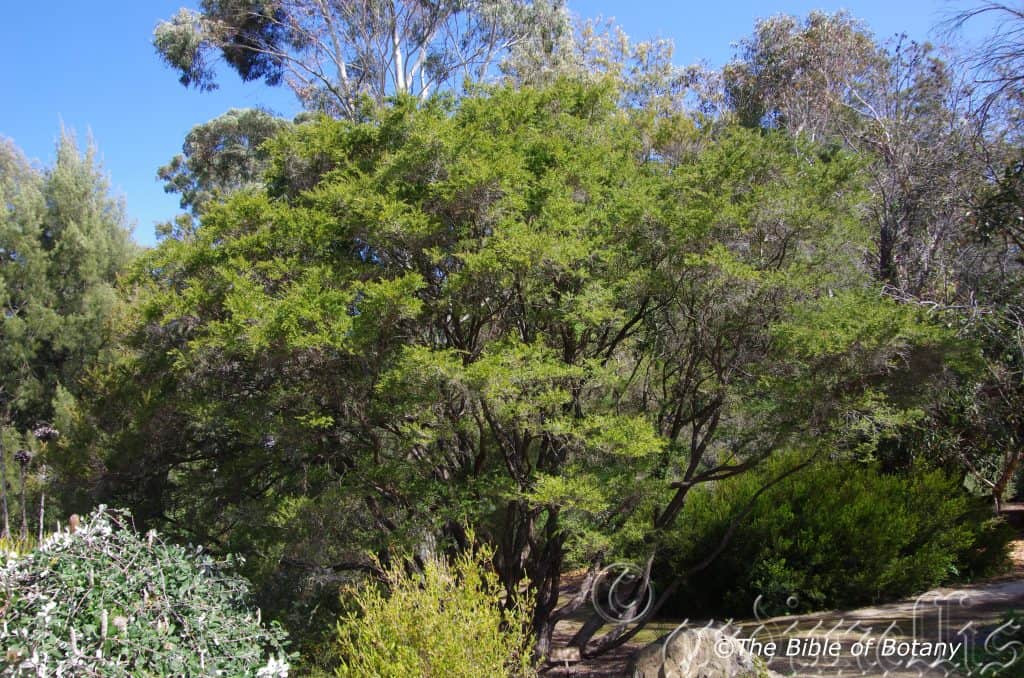
National Botanic Gardens ACT
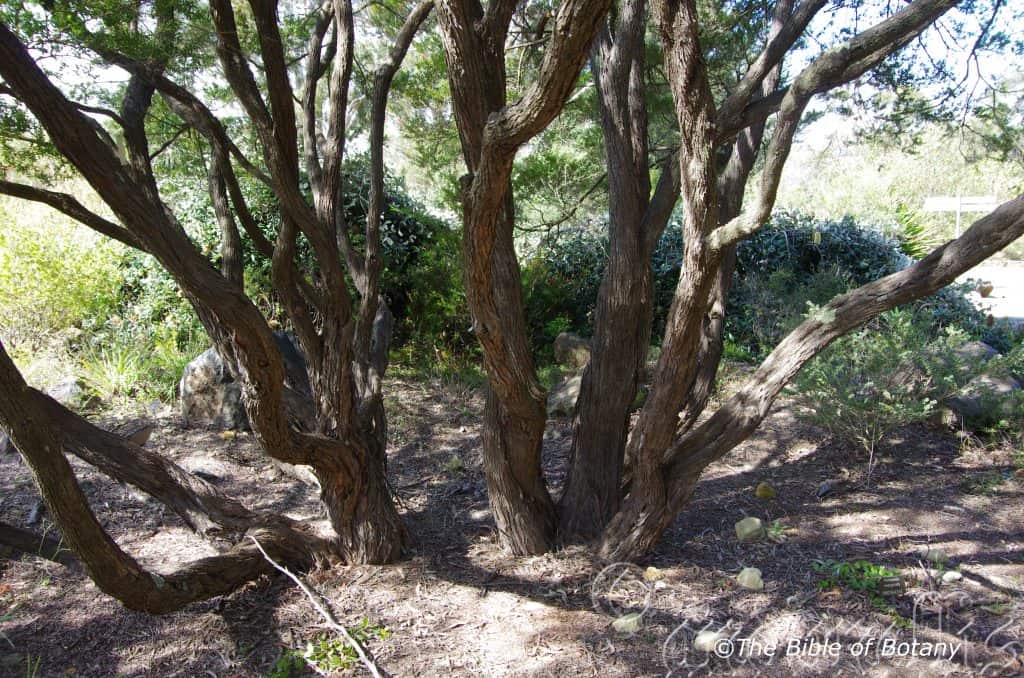
National Botanic Gardens ACT
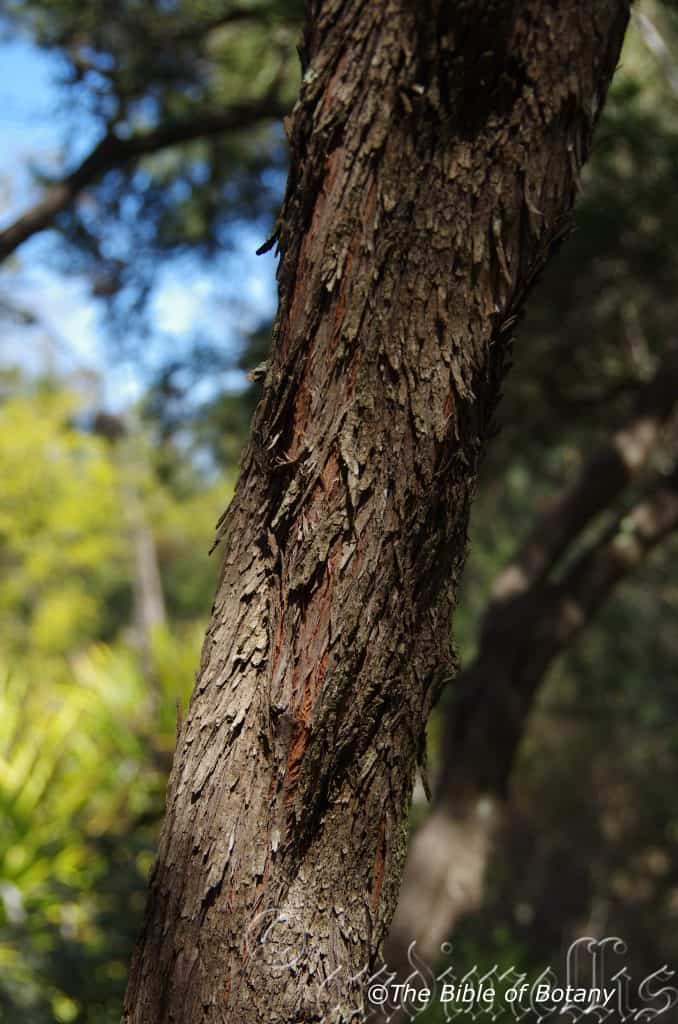
National Botanic Gardens ACT
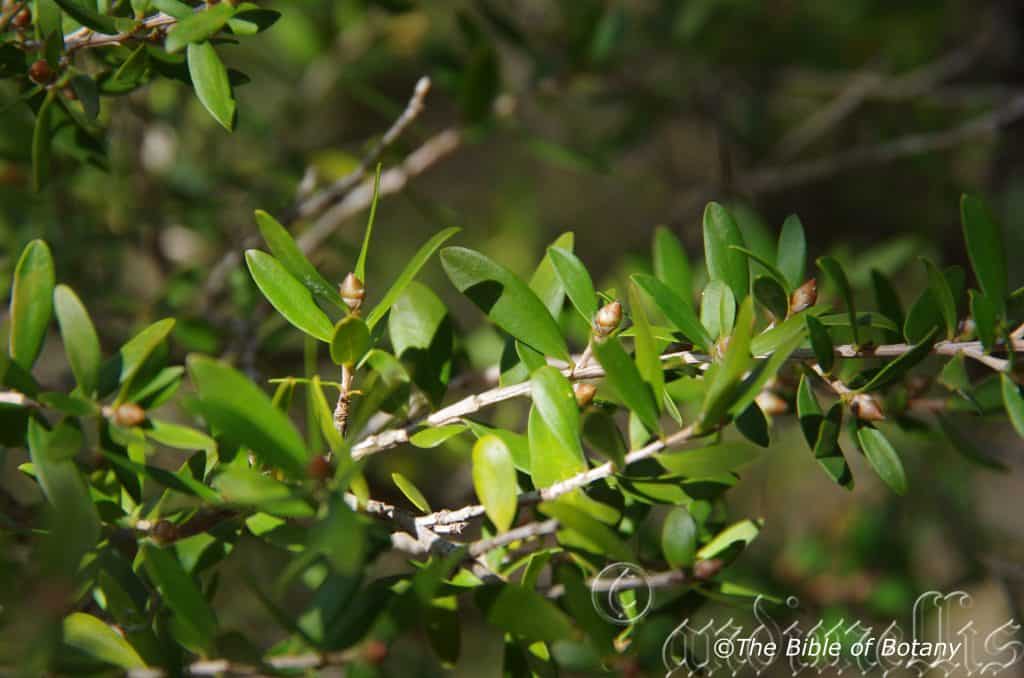
National Botanic Gardens ACT
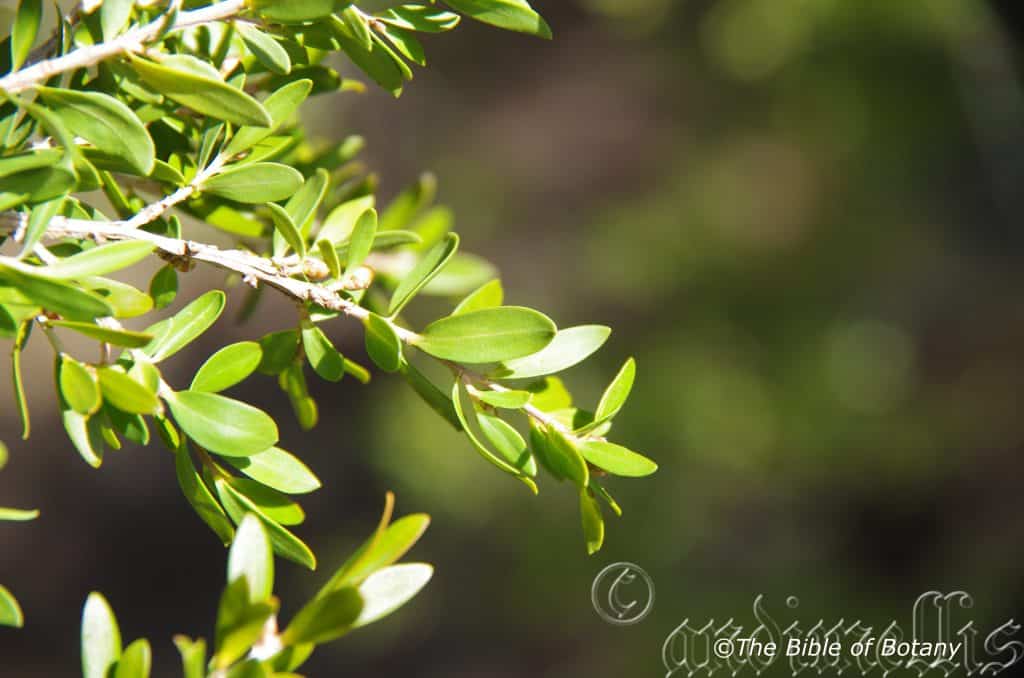
National Botanic Gardens ACT
Leptospermum variabile
Classification:
Unranked: Magnoliophyta
Class:Magnoliopsida
Order: Myrtales
Family: Myrtaceae
Genus: From Leptós, which is Ancient Greek for delicate, fine or slender and Spérma, which is Ancient Greek for a seed. It refers to seeds, which are rather fine and slenderer than other genus in the family.
Specie: From Varius, which is Latin for different. It refers to the leaves and or flowers, which have great variation in colour, shape or size.
Sub species:
Common Name:
Distribution:
Leptospermum variabile is found south from Miriam Vale in southern Queensland to Gloucester Buckets in New South Wales. There are two outlying disjunct populations in Victoria near Timbilica and north of the Snowy River National Park. It is found on Flinders Island in Bass Strait.
https://avh.ala.org.au/occurrences/search?taxa=Leptospermum+variabile#tab_mapView
Habitat:
Leptospermum variabile prefers full sun to light dappled shade. It grows in dry schlerophyll forests to dry Eucalyptus forests on ridge tops escarpments and cliff shelves. It is also found in higher altitude dry wallum heaths. The altitude ranges from 20 meter ASL to 760 meters ASL.
The temperatures range from minus 6 degrees in August to 38 degrees in January.
The rainfalls range from lows of 500mm to an average of 2000mm.
Soil Requirements:
Leptospermum variabile prefers to grow on shallow to deep light gravelly clays to medium clays. The soils are usually derived from decomposed granites, brown basalts, black basalts, metamorphic rocks and shale. The soils pH ranges from 4.5pH to 6pH. It does not tolerate waterlogged soils. Non saline soils to moderately saline soils are tolerated.
Height & Spread:
Wild Plants: 1m to 5m by 1.5m to 3m.
Characteristics:
Leptospermum variabile’s grows as a medium shrub or small tree with grey, closely appressed bark that becomes scaly and rough with age. The bark decorticates in small patches from the trunk and lower branches. The young branchlets are reddish-maroon and are covered in soft, white caduceous pubescent hairs which soon become glabrous.
Leptospermum variabile’s alternate to sub opposite, obovate to oblanceolate or elliptic leaves measure 10mm to 22mm in length by 2mm to 8mm in width. The bases taper to the minute slender petiole while the apexes are acute to obtuse with a short mucronate tip. The concolourous laminas are sea-green to deep green, and glabrous. The laminas are flat and recurve strongly near the apex while the margins are entire. The mid vein is slightly prominent on the lower lamina especially on the basal half and is visible on the upper lamina. The leaves are aromatic when crushed.
The inflorescence of Leptospermum variabile are born solitary from the leaf axils and measure 15mm to 20mm in diameter. The pale green, glabrous hypanthium are covered in conspicuous oil glands and measure 6mm to 8mm in length. The pedicels are sessile or measure up to 0.5mm in length. The 5 glabrous, ovate sepals are white to pale pinkish-green and measure 2.5mm to 3.5mm in length and decurve downwards. The 5 glabrous broad spathulate petals measure 6mm to 8mm in length by 5mm to 7mm in width.
The 30 white to pastel pink filaments are fused to the white rim of the green hypanthia. The stamens measure 3mm to 4mm in length. The anthers are fawn with white pollen. The lime-green to mid green style is centrally located on the lime-green to mid green disc. The stout style measures 2.5mm to 3.6mm in length. The disc and style turn red-purple to deep purple following anthesis. Flowers appear from September to October.
Leptospermum variabile’s fruits are very broad conical capsules. The 5 locular capsules measure 5mm to 12mm in diameter at the rim. The style remnant is persistent on the ripe capsules. The pale purple to red capsules turn deep grey on ripening. The dome valves are strongly exerted and usually spread almost to the margin or at times beyond the margin. The valves measure 3mm to 6mm in height whereas the hypanthium measures 1.5mm to 3.5mm in height when ripe.
Wildlife:
Leptospermum variabile flowers are attractive to most nectar eating insects which includes butterflies, native bees, native beetles, wasps and flies which in turn attract insectivorous birds. Small nectar feeding birds are also attracted to the flowers.
Cultivation:
Leptospermum variabile grows particularly well on drier soils to moisture retentive soils. It is suitable for small, medium and large gardens close to the coast or high in the mountains in temperate to subtropical gardens. As garden subjects they will grow from 4 meter to 5 meters in height by 3 meter to 3.5 meters in diameter when grown in the open.
It is cold tolerant to temperatures at least as low as minus 8 degrees once established. They can be lightly tip pruned if a smaller bushier shrub is required.
It is most suitable for use around swimming pools, bright courtyards, besides pathways, rockeries, along sandy clay banks or along drive ways or adjacent to natural bush gardens. Mass plantings of 5 or more plants even in small areas; really do the plants justification especially when it is in flower. Medium to large fish or frog ponds will benefit from this shrub planted around them in a crowded or mass planting using various flowering colour forms.
It is best used adjacent to small areas of bush close to paths or the house so their white or deep pink and red flowers can be viewed regularly. It is great in small rockeries as a fill in plant. Here they can be planted in small groups of 2 or 3 as a standalone plant to create a harsh barren look with other arid plants. If it is surrounded by shorter plants with broader leaves and paler coloured flowers they will dominate the scene at the center. They will give an elite look to the bed especially when it is in flower. This is one plant that benefits highly from being mass planted or planted in scattered clumps. There small size enables this to be achieved even in small and medium size gardens. The red forms and smaller size blend fantastic with other Leptospermum like Leptospermum scoparium and prostrate forms or Leptospermum rotundifolium.
They would add some real colour to a small or large heath garden. When you design a flat heath garden which Leptospermum scoparium is well suited don’t use contours to display the plants as heath lands are almost always flat or have a slight rise. Plants must be planted close together and be short so you can see over the tallest ones with the exception of one or two plants at the most. These will be feature plants. The idea is to achieve a feeling of expansive flatness. This can be achieved with using Leptospermum scoparium’s deep green lanceolate leaves, having them contrasting with finer pale green or soft grey to glaucous coloured foliages. Use a lot of procumbent plants like Carpobrotus edulis or Hibbertia specie. Mix them with other smaller shrubs so none of them dominate the scene but blend in to give a mosaic of foliage colours that you oversee. Here I immediately think of Actinotis helianthi or most small red flowering Grevillea specie for two great contrasting foliages.
It makes a good bonsai specimen, is easy to work with and long lived.
Propagation:
Seeds: Leptospermum variabile seeds may not come true to parent type. If the parent type is required then plants should be grown from cuttings. Seed can be sown directly into a seed raising mix after roughing the sides with fine sandpaper to assist in germination. Cover the seeds with 15mm to 20mm of fine weed free mulch and keep moist. Place the tray in a warm sunny position. When the seedlings are 20mm to 30mm tall, prick them out and plant them into 50mm native tubes using a good organic mix.
Once the seedlings reach 100mm to 150mm in height they can be planted out into their permanent position.
Cuttings: Use 80mm to 100mm long half ripened material when growing from cuttings from the present season’s growth. Take them in warmer months of the year. Remove half the leaves from the bottom section being careful not to tear the bark.
1 Prepare the cutting mix by adding one third sharp clean river sand, one third peat and one third perlite. These ingredients are sterilize,
2 Select good material from non diseased plants,
3 Select semi green stems for cuttings. Look for a stem with two or three nodes,
4 Place the cutting on a flat, hard surface, and make a clean cut down one side of the cutting at the base for 10mm with a sharp sterile knife or razor blade. – This scarification of the node will increase the chances of roots emerging from this spot. Now remove all but one or two the leaves, leaving the apex leaves in tact. If the leaves are very large in proportion to the stem, cut off the apical halves.
5 Fill a saucer with water, and place a little medium strength rooting hormone into another container like a milk bottle top. Dip the node end of the cutting into the water and then into the rooting hormone. Tap off any excess hormone,
6 Use a small dipple stick or old pencil to poke a hole into the soilless potting mix. Ensure the hole is slightly larger than the stem diameter and be careful not to wipe the rooting hormone off the cuttings base, place the cuttings in a pattern ensuring the cuttings are not touching each other,
7 I like to place the pots in Plastic bags to help maintain temperature and moisture. Place in a semi shaded place like under 50mm shade cloth.
8 When the cuttings have struck, open the bag to allow air circulation for a few days to a week,
9 Once hardened off remove the cuttings from the bag and allow to further hardening for a few more days,
10 Transplant into a good potting mix to grow on.
Fertilize using seaweed, fish emulsion or organic chicken pellets soaked in water on an alternate basis. Fertilize every two months until the plants are established then twice annually in early September or March to maintain health, vitality and better flowering.
Further Comments from Readers:
Hi reader, it seems you use The Bible of Botany a lot. That’s great as we have great pleasure in bringing it to you! It’s a little awkward for us to ask, but our first aim is to purchase land approximately 1,600 hectares to link several parcels of N.P. into one at The Pinnacles NSW Australia, but we need your help. We’re not salespeople. We’re amateur botanists who have dedicated over 30 years to saving the environment in a practical way. We depend on donations to reach our goal. If you donate just $5, the price of your coffee this Sunday, We can help to keep the planet alive in a real way and continue to bring you regular updates and features on Australian plants all in one Botanical Bible. Any support is greatly appreciated. Thank you.
In the spirit of reconciliation we acknowledge the Bundjalung, Gumbaynggirr and Yaegl and all aboriginal nations throughout Australia and their connections to land, sea and community. We pay our respect to their Elders past, present and future for the pleasures we have gained.
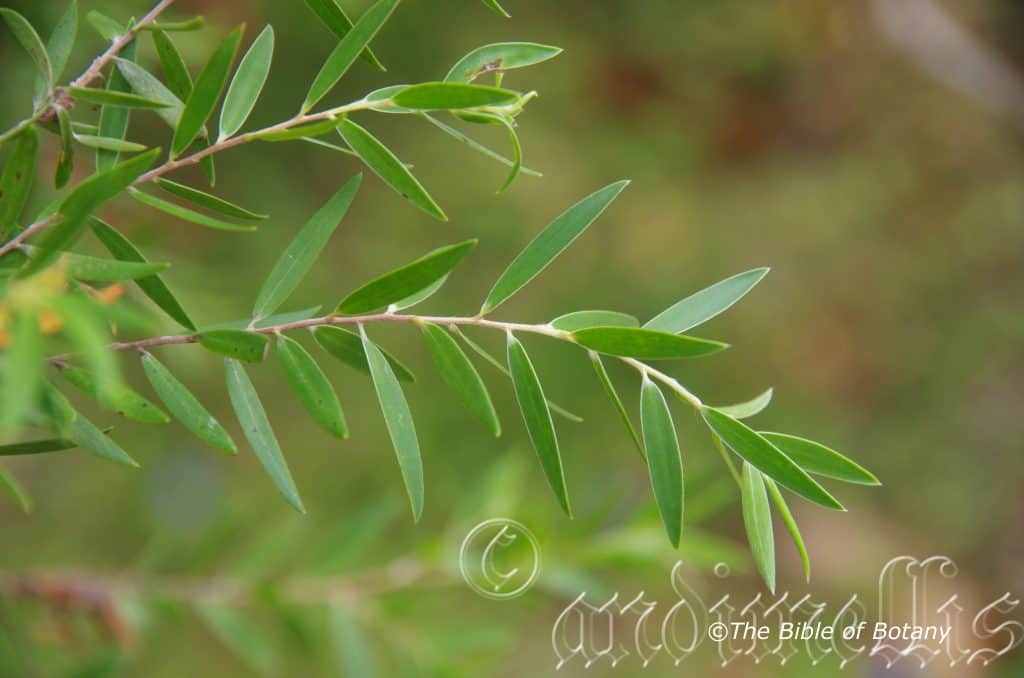
NCBG Coffs Harbour NSW
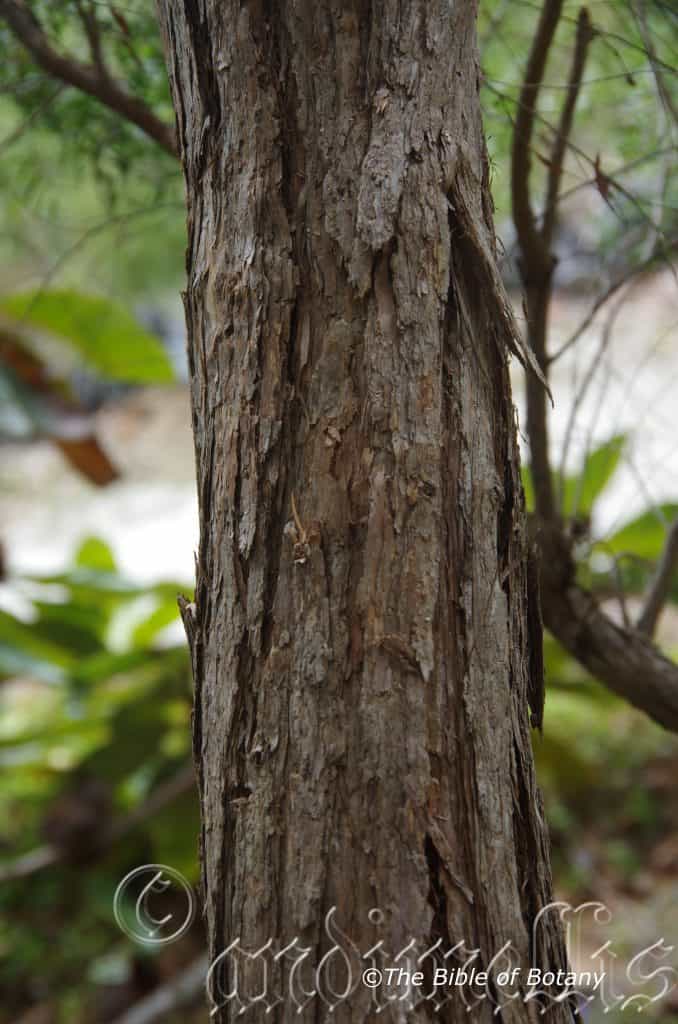
NCBG Coffs Harbour NSW
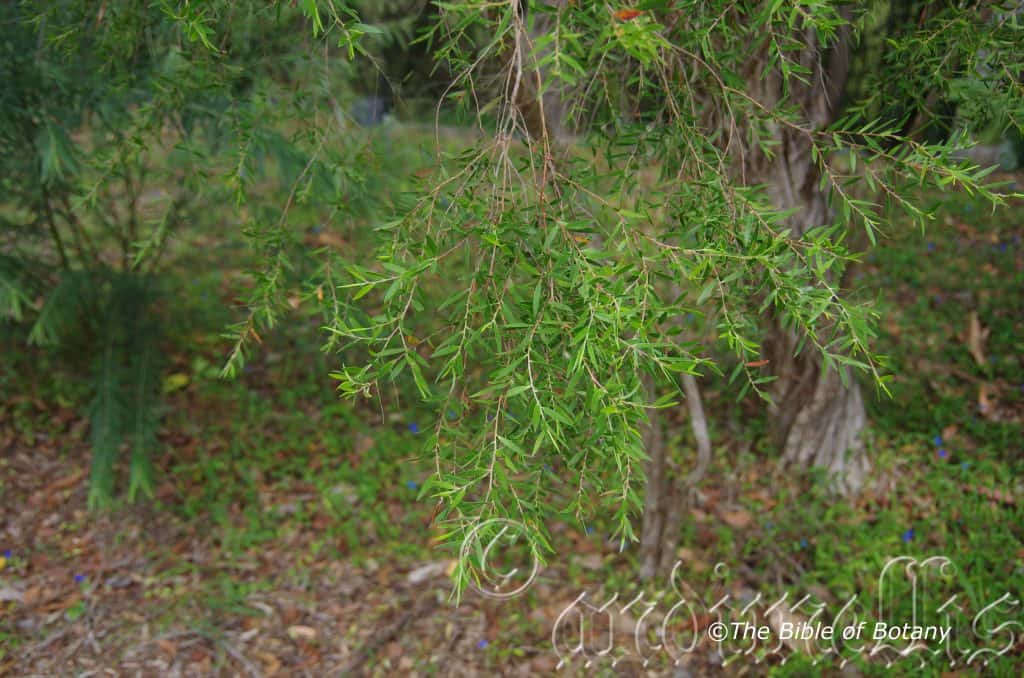
NCBG Coffs Harbour NSW
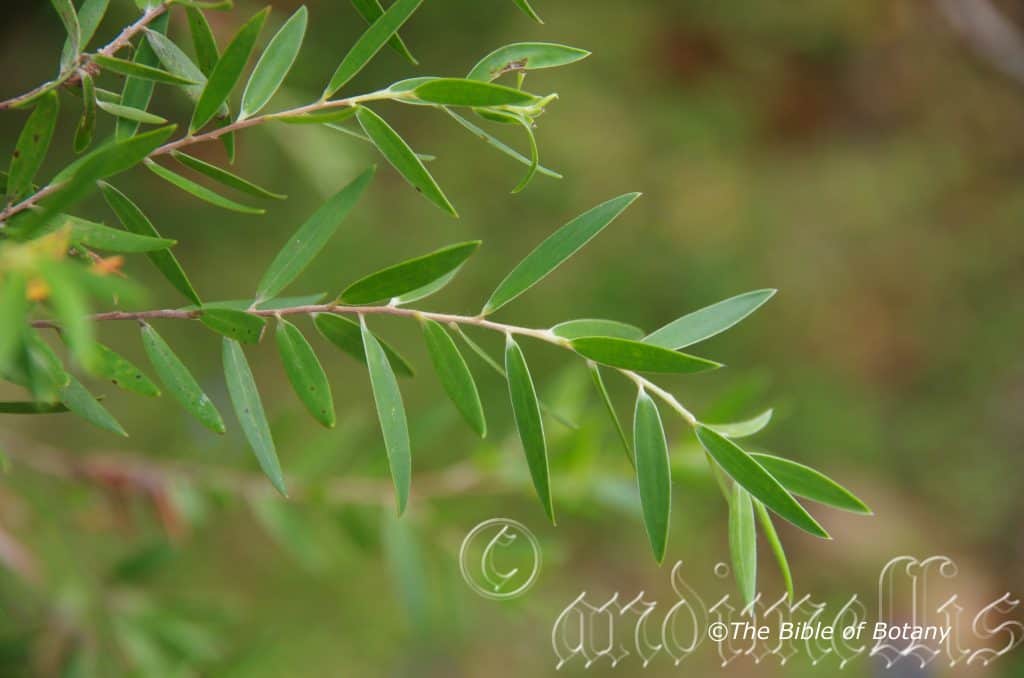
NCBG Coffs Harbour NSW
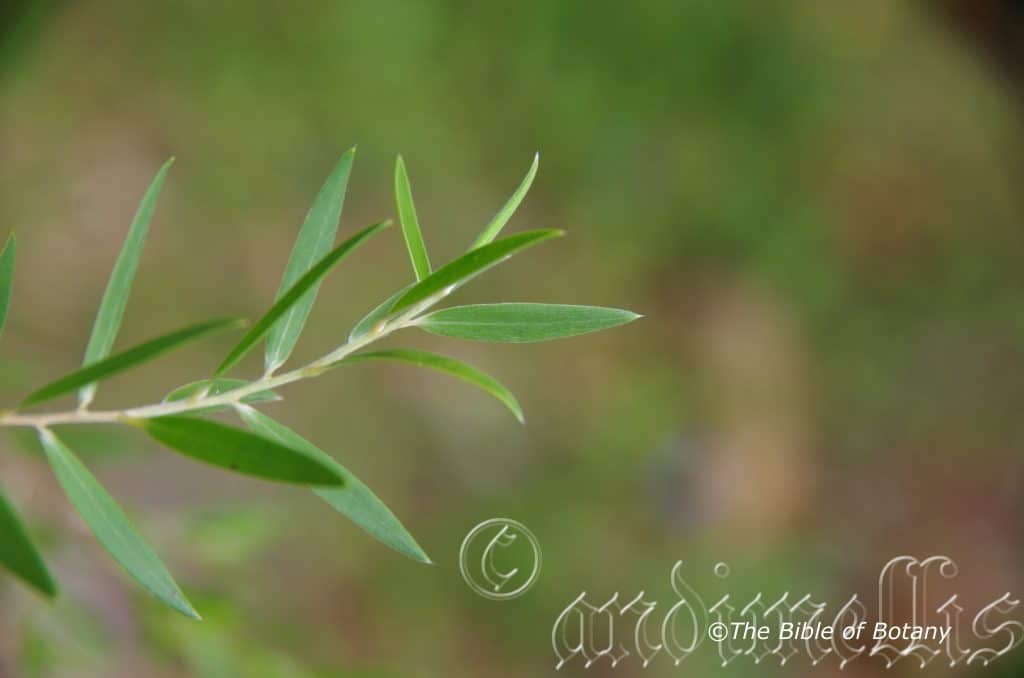
NCBG Coffs Harbour NSW
Leptospermum whitei
Classification:
Unranked: Magnoliophyta
Class:Magnoliopsida
Order: Myrtales
Family: Myrtaceae
Genus: From Leptós, which is Ancient Greek for delicate, fine or slender and Spérma, which is Ancient Greek for a seed. It refers to seeds, which are rather fine and slenderer than other genus in the family.
Specie: Is probably named in honour of Cyril Tennison White; 1890-1950, who was a Queensland botanist for 35 years.
Sub species:
Common Name:
Distribution:
Leptospermum whitei is found south from the Isis River in southern coastal Queensland to Scotts Head in northern coastal New South Wales.
https://avh.ala.org.au/occurrences/search?taxa=Leptospermum+whitei#tab_mapView
Habitat Aspect Climate:
Leptospermum whitei prefers full sun to light dappled shade. It grows in wet to moist coastal wallums, swamps and along creeks, streams, swamps or delta flats. The altitude ranges from 2 meters ASL to 30 meters ASL.
The temperatures range from 2 degrees in August to 38 degrees in January.
The rainfalls range from lows of 700mm to an average of 1600mm.
Soil Requirements:
Leptospermum whitei prefers to grow on sands, sandy loams to light clays and medium to heavy silts. The soils are usually derived from accumulated beach sands, river delta silts or river meander silts. The soils pH ranges from 5pH to 7pH. It tolerates seasonal waterlogged soils. Non saline soils to extremely saline soils are tolerated as are salt laden winds.
Height & Spread:
Wild Plants: 3m to 5m by 2m to 3m.
Characteristics:
Leptospermum whitei’s grows as a medium shrub or small tree with orange-brown to brown, fibrous, flaky bark. The bark decorticates in fibrous strips from the trunk and lower branches. The pale grey-brown branchlets turn pale grey then to pale yellow-green where the new growth exists and are covered in are covered in soft, white caduceous pubescent hairs.
Leptospermum whitei’s alternate leaves are broad elliptical to narrow elliptic and measure 16mm to 27mm in length by 3mm to 4.5mm in width. The bases are tapering to cuneate while the apexes are acute with a blunt tip. The discolourous laminas are deep grass-green and glabrous or sparsely covered in soft, white caduceous pubescent hairs on the upper laminas while the lower laminas are paler and moderately covered in soft white caduceous pulverulent hairs. The laminas are flat to recurve upwards from the midvein to the margins while the margins are entire. The mid vein is slightly prominent on the lower lamina on the basal half and is faintly visible on the upper lamina. The petiole measures 1mm to 2.5mm in length.
The inflorescences of Leptospermum whitei are born in small clusters of 1 to 5 individual flowers from the upper leaf axils. The flowers measure 10mm to 12mm in diameter. The lime-green hypanthium is covered in soft, white pubescent hairs and measure 2mm to 3mm in length. The pedicels measure 0mm to 0.5mm in length. The 5 elliptical, acute sepals are greenish-white and covered in soft white caduceous hairs. The sepals measure 1.5mm to 2mm in length. The 5 white, glabrous, usually circular, oblong or rarely partially and irregularly shallowly lobed at the base petals have an obtuse or emarginated apex. The wrinkled or flat petals measure 3mm to 5.5mm in length by 3mm to 5mm in width.
The 15 or 20 white filaments are fused to the rim of the bright lime-green hypanthia. The stamens measure 1.5mm to 2mm in length. The anthers are white or cream with white pollen and turn fawn after anthesis. The lime-green to deep green style is centrally located at the center of the inserted disc. The flowers appear from October to January.
Leptospermum whitei’s fruit is a small conical capsule. The 3 locular capsules measure 3mm to 4mm in diameter at the rim. The sepals are persistent and become erect on the ripe capsules. The capsules turn deep grey when ripe. The slightly raised valves are inserted and spread to the inner rim of the hypanthium.
Wildlife:
Leptospermum whitei flowers are attractive to numerous small butterflies, native bees, native beetles, wasps and flies which in turn attract many small insectivorous birds. Small nectar feeding birds are also attracted to the flowers.
Cultivation:
Leptospermum whitei grows particularly well on wet waterlogged saline soils. It is suitable for small, medium and large gardens close to the coast in warm temperate to subtropical gardens. As garden subjects they will grow from 4 meter to 5 meters in height by 3 meter to 4 meters in diameter when grown in the open.
It is cold tolerant to temperatures at least as low as minus 2 degrees once established.
They can be lightly tip pruned if a smaller bushier shrub if required however I believe it is best used in a bed where the trunk and bark can be displayed to its full potential.
It is most suitable for use around medium to large fish or frog ponds where the gnarled, fibrous trunk, small size and twisted branches look very natural.
It is also suitable adjacent to small areas of bush close to paths or the house so their white or deep pink and red flowers can be viewed regularly. It is great in small rockeries as the main feature. Here they can be planted in small groups of 2 or 3 or as a standalone plant to create a harsh barren look with other arid plants. If it is surrounded by shorter plants with broader leaves and deeper coloured flowers they will dominate the scene at the center. They will give a rustic look to the bed especially when it is in flower. This is one plant that does not benefit from being mass planted but is better planted in small scattered clumps or as solitary specimens. There small size enables this to be achieved even in small and medium size gardens. The red forms and smaller size blend fantastic with other leptospermum like Leptospermum scoparium and prostrate forms or Leptospermum rotundifolium.
They would add a new dimension in a medium or large heath garden. When you design a flat heath garden which Leptospermum whitei is well suited don’t use contours to display the plants as heath lands are almost always flat or have a slight rise. Plants must be planted close together and be short so you can see over the tallest ones with the exception of one or two plants at the most and this is where Leptospermum whitei distinguishes itself as the feature plant. The idea is to achieve a feeling of expansive flatness. This can be achieved with using Leptospermum whitei’s gnarled trunk and twisted branches to advantage standing over the surrounding heath contrasting the finer pale green or soft grey to glaucous coloured foliages below. Use a lot of procumbent plants like Carpobrotus edulis or Hibbertia to add extra height. Mix them with other smaller shrubs so none of them dominate the scene but blend in to give a mosaic of foliage colours that you oversee. Here I immediately think of Actinotis helianthi or Grevillea thelemanniana for two great contrasting foliages.
It makes a good bonsai specimen, is easy to work with and long lived.
Propagation:
Seeds: Leptospermum whitei seeds may not come true to parent type. If the parent type is required then plants should be grown from cuttings. Seed can be sown directly into a seed raising mix after roughing the sides with fine sandpaper to assist in germination. Cover the seeds with 15mm to 20mm of fine weed free mulch and keep moist. Place the tray in a warm sunny position. When the seedlings are 20mm to 30mm tall, prick them out and plant them into 50mm native tubes using a good organic mix.
Once the seedlings reach 100mm to 150mm in height they can be planted out into their permanent position.
Cuttings: Use 80mm to 100mm long half ripened material when growing from cuttings from the present season’s growth. Take them in warmer months of the year. Remove half the leaves from the bottom section being careful not to tear the bark.
1 Prepare the cutting mix by adding one third sharp clean river sand, one third peat and one third perlite. These ingredients are sterilize,
2 Select good material from non diseased plants,
3 Select semi green stems for cuttings. Look for a stem with two or three nodes,
4 Place the cutting on a flat, hard surface, and make a clean cut down one side of the cutting at the base for 10mm with a sharp sterile knife or razor blade. – This scarification of the node will increase the chances of roots emerging from this spot. Now remove all but one or two the leaves, leaving the apex leaves in tact. If the leaves are very large in proportion to the stem, cut off the apical halves.
5 Fill a saucer with water, and place a little medium strength rooting hormone into another container like a milk bottle top. Dip the node end of the cutting into the water and then into the rooting hormone. Tap off any excess hormone,
6 Use a small dipple stick or old pencil to poke a hole into the soilless potting mix. Ensure the hole is slightly larger than the stem diameter and be careful not to wipe the rooting hormone off the cuttings base, place the cuttings in a pattern ensuring the cuttings are not touching each other,
7 I like to place the pots in Plastic bags to help maintain temperature and moisture. Place in a semi shaded place like under 50mm shade cloth.
8 When the cuttings have struck, open the bag to allow air circulation for a few days to a week,
9 Once hardened off remove the cuttings from the bag and allow to further hardening for a few more days,
10 Transplant into a good potting mix to grow on.
Fertilize using seaweed, fish emulsion or organic chicken pellets soaked in water on an alternate basis. Fertilize every two months until the plants are established then twice annually in early September or March to maintain health, vitality and better flowering. Once the seedlings reach 100mm to 150mm in height they can be planted out into their permanent position.
Further Comments from Readers:
Hi reader, it seems you use The Bible of Botany a lot. That’s great as we have great pleasure in bringing it to you! It’s a little awkward for us to ask, but our first aim is to purchase land approximately 1,600 hectares to link several parcels of N.P. into one at The Pinnacles NSW Australia, but we need your help. We’re not salespeople. We’re amateur botanists who have dedicated over 30 years to saving the environment in a practical way. We depend on donations to reach our goal. If you donate just $5, the price of your coffee this Sunday, We can help to keep the planet alive in a real way and continue to bring you regular updates and features on Australian plants all in one Botanical Bible. Any support is greatly appreciated. Thank you.
In the spirit of reconciliation we acknowledge the Bundjalung, Gumbaynggirr and Yaegl and all aboriginal nations throughout Australia and their connections to land, sea and community. We pay our respect to their Elders past, present and future for the pleasures we have gained.
Lepyrodia anathria
Classification:
Unranked: Monocots
Unranked: Commelinids
Order: Poales
Family: Restinonaceae
Genus: From Lepyrodes, which is Ancient Greek for having bracts or Alepryon which is Ancient Greek for a shell or husk. It refers to a reference made by Theophrastus as being layered like an onion.
Specie: From Anarthría, which is Ancient Greek for a speech impairment in which the ability to articulate is lost completely. It refers to plants, which have a lost an organ or structure. Here it refers to the leaves being completely lost.
Sub specie:
Common Name:
Distribution:
Lepyrodia anarthria is found in several disjunct populations south from Girraween National Park in far north eastern New South Wales to Genoa in far north eastern coastal Victoria. It is found on and east of the Great Dividing Range to the coast in southern populations.
https://avh.ala.org.au/occurrences/search?taxa=Lepyrodia+anathria#tab_mapView
Habitat Aspect Climate:
Lepyrodia anarthria prefers full sunlight to very light dappled shade. It grows behind the frontal dunes along creeks, streams and rivers in heath lands and open woodlands especially at higher altitudes. The altitude ranges from 5 meter ASL to 1800 meters ASL.
The temperatures range from minus 5 degrees in August to 36 degrees in January.
The rainfall ranges from lows of 800mm to 1500mm average per annum.
Soil Requirements:
Lepyrodia anarthria prefer course sands to fine sharp sands. The soils are usually derived from light alluvial sands or accumulated beach sands. The soils pH ranges from 5pH to 7pH. It tolerates waterlogged soils. Non saline soils to the very saline soils are tolerated as are salt laden winds.
Height & Spread:
Wild Plants: 0.7m to 1.1m by 0.4m to 0.6m but can form very large thickets.
Characteristics:
Lepyrodia anarthria is a dioecious perennial densely tuffed herb or has short creeping rhizomes. The numerous, unbranched, erect culms are thin, weak and measure 300mm to 800mm in height by 0.8mm to 2mm in diameter. The 6 to 12 internodes are glabrous. The usually 3 or at times 4 or 5 loose cauline sheaths to a culm are aerial and measure 20mm to 40mm in length. The sheaths are usually absent from the aerial portion of the culm or if present, not more than 2 distally. They are glabrous. The basal sheaths are appressed and measure 10mm to 150mm in length, while the distal sheaths are loosely reflexed and measure 10mm to 40mm in length.
The dioecious inflorescences of Lepyrodia imitans are tight, open, compound panicles. The panicles are often spike like with the individual flowers crowded on the lateral branches. The panicles measure 12mm to 20mm in length by 8mm to 10mm in diameter near the base at anthesis.
The sparse to dense, erect, narrow spikes have male and female flowers are. There are 3 inner and 3 outer. The male inflorescence measure 10mm to 35mm in length, while the female inflorescence measure 10mm to 40mm or at times up to 65mm in length. The tepals of male flowers are lanceolate to narrow ovoid with an acuminate apex. The male are glabrous, yellow-brown with the outer tepals measuring 2.8mm to 3.8mm in length, while the inner tepals measure 2.4mm to 3.2mm in length. The female tepals similar but slightly larger than the male tepals on a given spike. The flowers appear from December to February.
The ovoidal caryopsis is pale fawn to pastel straw yellow and measure 0.7 mm to 2mm in length.
Wildlife:
Lepyrodia anarthria’s wildlife is unknown to the author.
Cultivation:
Lepyrodia anarthria is an unusual flowering rushes for drier sub-tropical to warm temperate gardens with sandy soils. It requires little water and attention though making it ideal for coastal sandy beach front homes. In cultivation they will grow 600mm to 900mm in height by 200mm to 300mm in diameter when grown in an open situation in full sun. Lepyrodia imitans offers the non-conforming gardener an astonishing new concept for rockeries or small heaths. The erect open growing culms are rigid but enticing offering a peaceful, tranquil setting.
It is easy to grow, harvest and propagate provided the soil is sandy and well drained. It needs other small fine or course leaf f horizontal plants around it to be successful. Low mounded plants with small bright green leaves would add to the fairy like scene. Hibbertia linearis, Hibbertia obtusifolia, isotoma axillaris, most of the dwarf Goodenia specie, Lechenaultia specie are a few that would be satisfactory as would and Viola betonicifolia.
Mass plantings are best achieved by leaving spaces between the individual plants so plant them at 1500mm to 2000mm centres.
Propagation:
Seeds: Collecting seeds from mature plants of Lepyrodia anarthria is not difficult but the collector must be vigilant as the seeds will disperse over in a matter of a couple of days to a week when fully ripe. The fresh seeds can be sown directly into a seed raising mix however better; more even germination is gained if the seeds are stratified for a short period and sown in spring. This can be achieved by placing the seeds in a paper bag in the vegetable crisper for a few weeks prior to sowing. Cover the seeds to a depth of 2mm. Seeds usually germinate rapidly with a strike rate of over 80mm.
When the seedlings are 20mm to 30mm tall, prick them out and plant them into 50mm native tubes using a good quality mix.
Once the seedlings reach 50mm in height they can be repotted for indoor use or 100mm to 150mm in height plant them out into their permanent position.
Fertilize using seaweed, fish emulsion or organic chicken pellets soaked in water on an alternate basis. Fertilize every two months until the plants are established to maintain health, vitality and better flowering.
Further Comments from Readers:
Hi reader, it seems you use The Bible of Botany a lot. That’s great as we have great pleasure in bringing it to you! It’s a little awkward for us to ask, but our first aim is to purchase land approximately 1,600 hectares to link several parcels of N.P. into one at The Pinnacles NSW Australia, but we need your help. We’re not salespeople. We’re amateur botanists who have dedicated over 30 years to saving the environment in a practical way. We depend on donations to reach our goal. If you donate just $5, the price of your coffee this Sunday, We can help to keep the planet alive in a real way and continue to bring you regular updates and features on Australian plants all in one Botanical Bible. Any support is greatly appreciated. Thank you.
In the spirit of reconciliation we acknowledge the Bundjalung, Gumbaynggirr and Yaegl and all aboriginal nations throughout Australia and their connections to land, sea and community. We pay our respect to their Elders past, present and future for the pleasures we have gained.
Lepyrodia imitans
Classification:
Unranked: Monocots
Unranked: Commelinids
Order: Poales
Family: Restinonaceae
Genus: From Lepyrodes, which is Ancient Greek for having bracts or Alepryon which is Ancient Greek for a shell or husk. It refers to a reference made by Theophrastus as being layered like an onion.
Specie: From Imago/Imitatus, which is Latin for to copy, ape or to imitate. It refers to structures or organs, which resemble those on another plant.
Sub specie:
Common Name:
Distribution:
Lepyrodia imitans is found in several disjunct populations south from Childers in southern coastal Queensland to Swan Bay in central coastal New South Wales. It is found on the coastal plains to the ranges.
https://avh.ala.org.au/occurrences/search?taxa=Lepyrodia+imitans#tab_mapView
Habitat Aspect Climate:
Lepyrodia imitans prefers full sunlight to very light dappled shade. It grows behind the frontal dunes along creeks, streams and rivers in heath lands and open woodlands. The altitude ranges from 1 meter ASL to 20 meters ASL.
The temperatures range from 2 degrees in August to 36 degrees in January.
The rainfall ranges from lows of 1050mm to 2100mm average per annum.
Soil Requirements:
Lepyrodia imitans prefer course sands to fine sharp sands. The soils are usually derived from light alluvial sands or accumulated beach sands. The soils pH ranges from 5pH to 7pH. It tolerates waterlogged soils. Non saline soils to the very saline soils are tolerated as are salt laden winds.
Height & Spread:
Wild Plants: 0.7m to 1.1m by 0.4m to 0.6m but can form very large thickets.
Characteristics:
Lepyrodia imitans is an open semi tufted perennial with long thin creeping rhizomes. The culms are erect and measure 700mm to 1100mm in height by 1.2mm to 2.8mm in diameter. The 6 to 12 internodes are glabrous. The usually 3 or at times 4 or 5 loose cauline sheaths to a culm are aerial and measure 20mm to 40mm in length. The sheaths are pale orange-brown to mid orange-brown, glabrous and have a perfoliata aristate appendage, just below the obtuse hyaline apex. The appendage measures 2.5mm to 5mm in length.
The dioecious inflorescences are tight, open, compound panicles. The panicles are often spike like with the individual flowers crowded on the lateral branches. The panicles measure 12mm to 20mm in length by 8mm to 10mm in diameter near the base at anthesis.
The male and female flowers are similar and are born terminal from within the terminal sheath. The 3 inner and 3 outer tepals are usually equal or at times with the outer tepals being slightly longer than the inner ones. The 6 orange-brown tepals are scarious, oblong lanceolate with an acuminate apex. The tepals measure 2.3mm to 3.3mm in length. The 3 stamens have filiform, cream to fawnish filaments and pale yellow obloidal anthers. The flowers appear from September to November.
The ovoidal caryopsis is pale fawn to pastel straw-yellow and measure 1.1mm to 1.2mm in length.
Wildlife:
Lepyrodia imitans’s wildlife is unknown to the author.
Cultivation:
It is an unusual flowering rushes for drier sub-tropical to warm temperate gardens with sandy soils. It requires little water and attention though making it ideal for coastal sandy beach front homes. In cultivation they will grow 600mm to 900mm in height by 200mm to 300mm in diameter when grown in an open situation in full sun.
Lepyrodia imitans offers the non-conforming gardener an astonishing new concept for rockeries or small heaths. The erect open growing culms are rigid but enticing offering a peaceful, tranquil setting.
It is easy to grow, harvest and propagate provided the soil is sandy and well drained. It needs other small fine or course leaf f horizontal plants around it to be successful. Low mounded plants with small bright green leaves would add to the fairy like scene. Hibbertia linearis, Hibbertia obtusifolia, Isotoma axillaris, most of the dwarf Goodenia specie, Lechenaultia specie are a few that would be satisfactory as would and Viola betonicifolia.
Mass plantings are best achieved by leaving spaces between the individual plants so plant them at 1500mm to 2000mm centres.
Propagation:
Seeds: Collecting seeds from mature plants of Lepyrodia imitans is not difficult but the collector must be vigilant as the seeds will disperse over in a matter of a couple of days to a week when fully ripe. The fresh seeds can be sown directly into a seed raising mix however better; more even germination is gained if the seeds are stratified for a short period and sown in spring. This can be achieved by placing the seeds in a paper bag in the vegetable crisper for a few weeks prior to sowing. Cover the seeds to a depth of 2mm. Seeds usually germinate rapidly with a strike rate of over 80mm.
When the seedlings are 20mm to 30mm tall, prick them out and plant them into 50mm native tubes using a good quality mix.
Once the seedlings reach 50mm in height they can be repotted for indoor use or 100mm to 150mm in height plant them out into their permanent position.
Fertilize using seaweed, fish emulsion or organic chicken pellets soaked in water on an alternate basis. Fertilize every two months until the plants are established to maintain health, vitality and better flowering.
Further Comments from Readers:
Hi reader, it seems you use The Bible of Botany a lot. That’s great as we have great pleasure in bringing it to you! It’s a little awkward for us to ask, but our first aim is to purchase land approximately 1,600 hectares to link several parcels of N.P. into one at The Pinnacles NSW Australia, but we need your help. We’re not salespeople. We’re amateur botanists who have dedicated over 30 years to saving the environment in a practical way. We depend on donations to reach our goal. If you donate just $5, the price of your coffee this Sunday, We can help to keep the planet alive in a real way and continue to bring you regular updates and features on Australian plants all in one Botanical Bible. Any support is greatly appreciated. Thank you.
In the spirit of reconciliation we acknowledge the Bundjalung, Gumbaynggirr and Yaegl and all aboriginal nations throughout Australia and their connections to land, sea and community. We pay our respect to their Elders past, present and future for the pleasures we have gained.
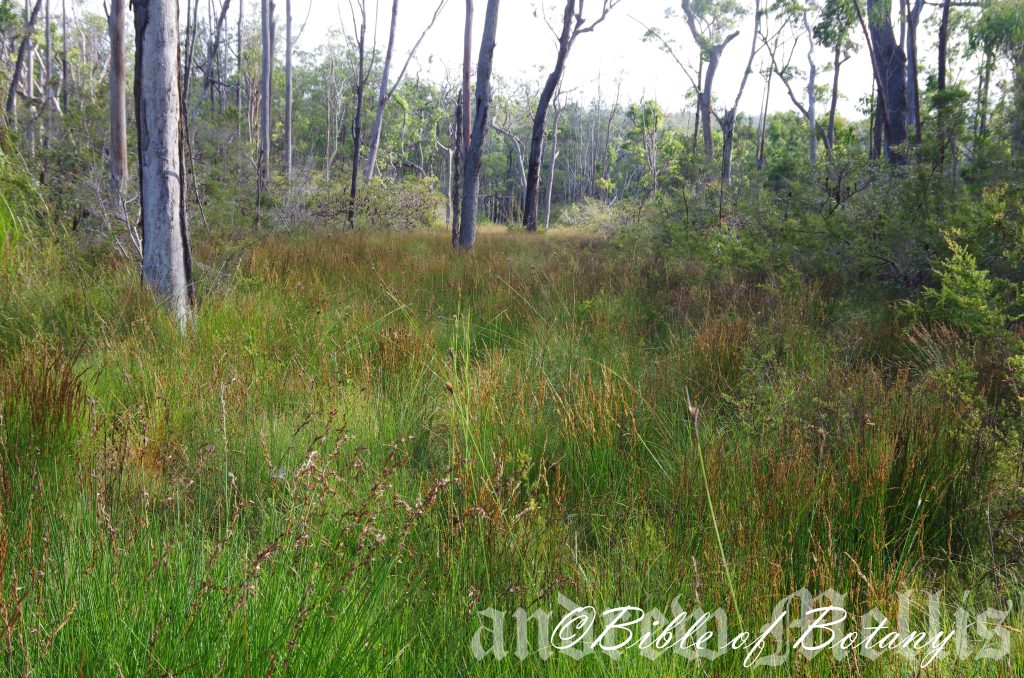
The Pinnacles NSW
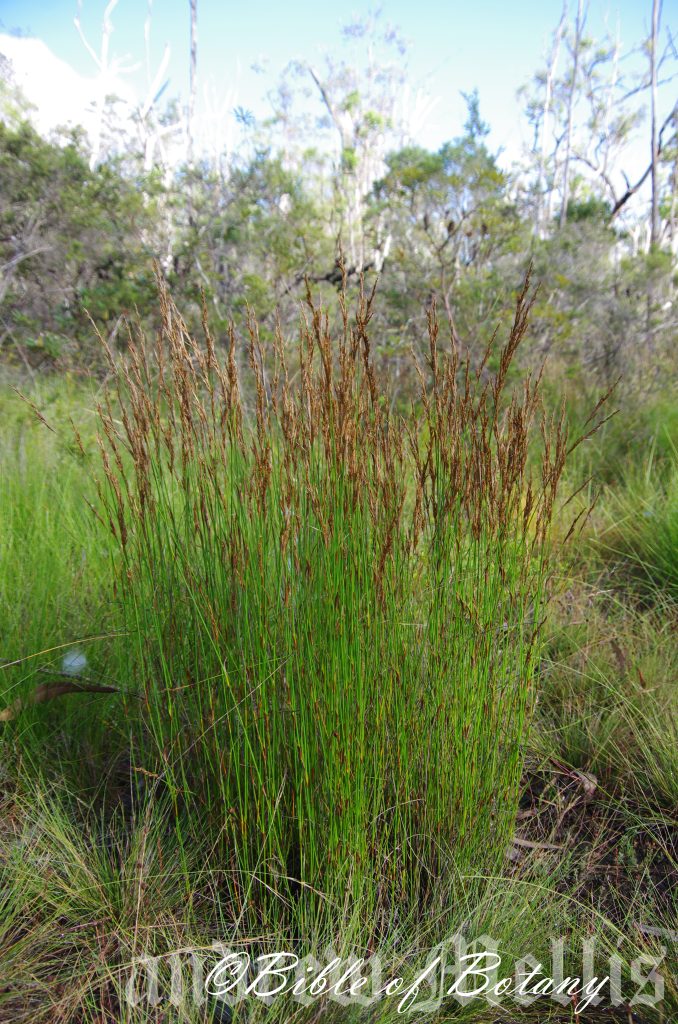
The Pinnacles NSW
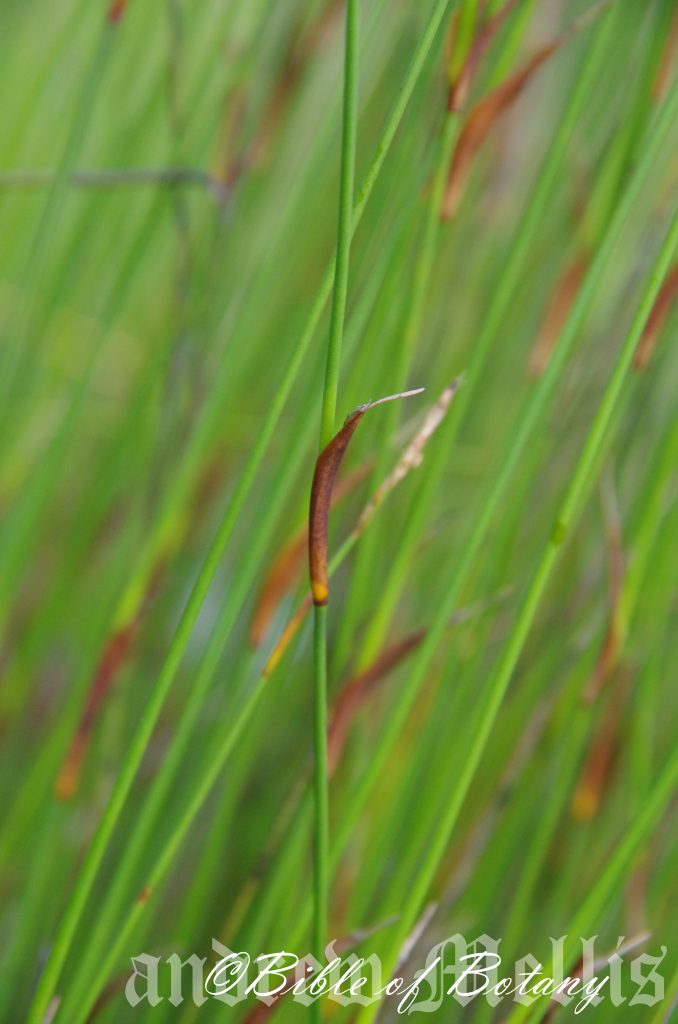
The Pinnacles NSW
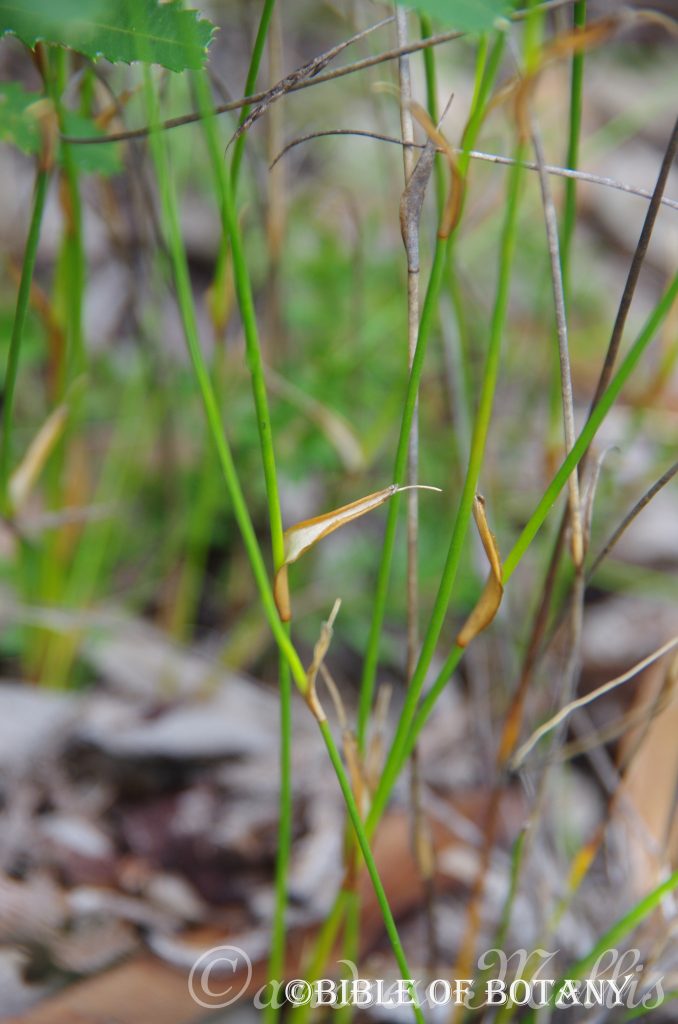
The Pinnacles NSW
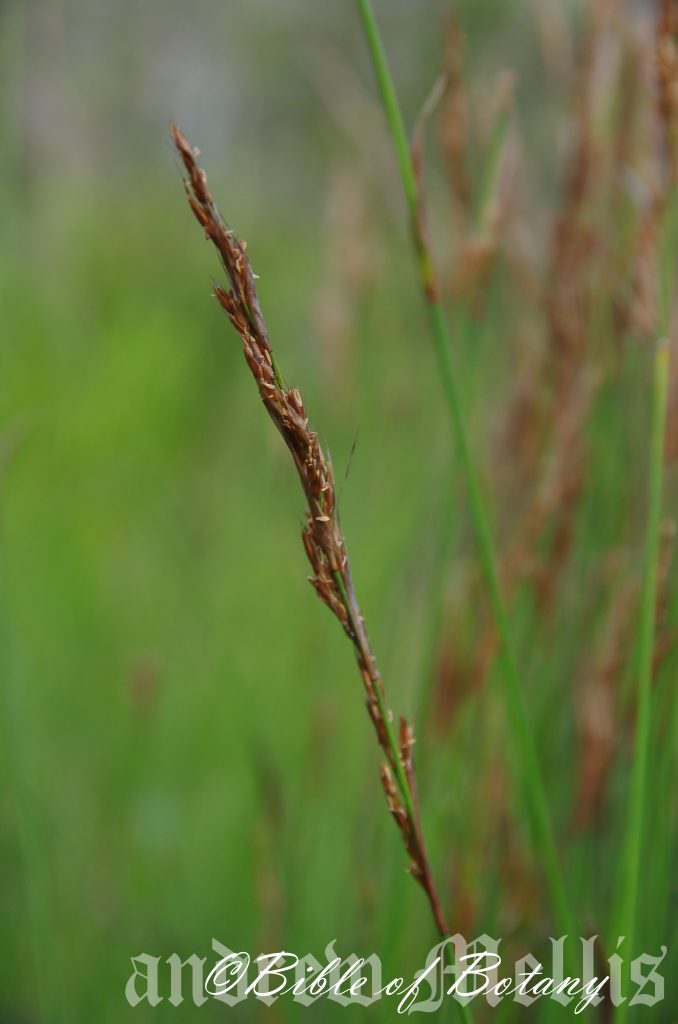
Rocky Creek The Pinnacles NSW
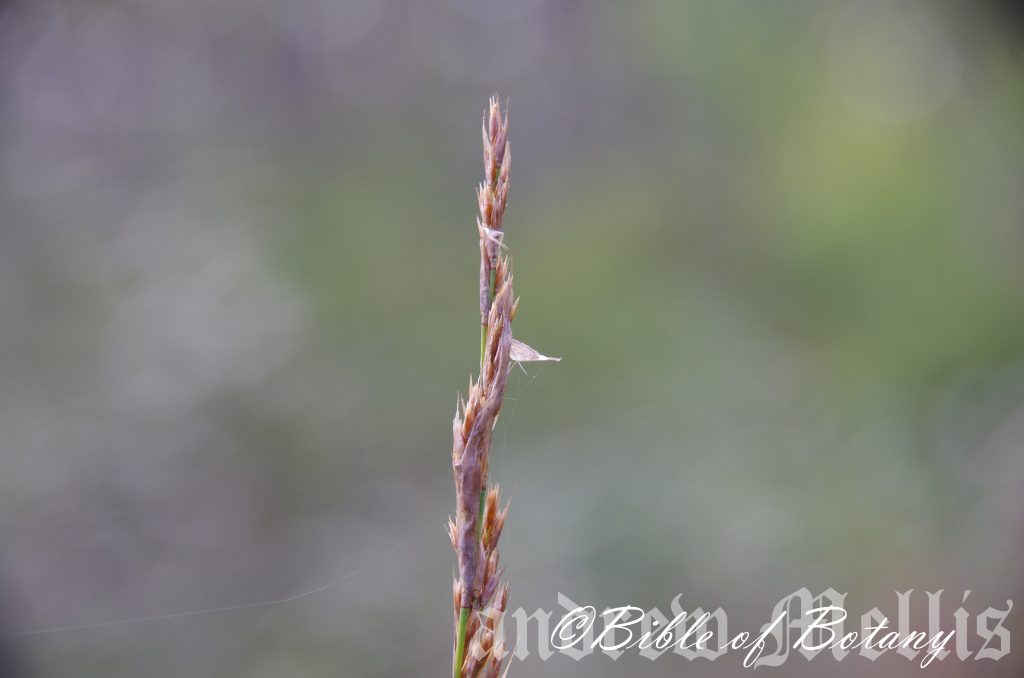
The Pinnacles NSW
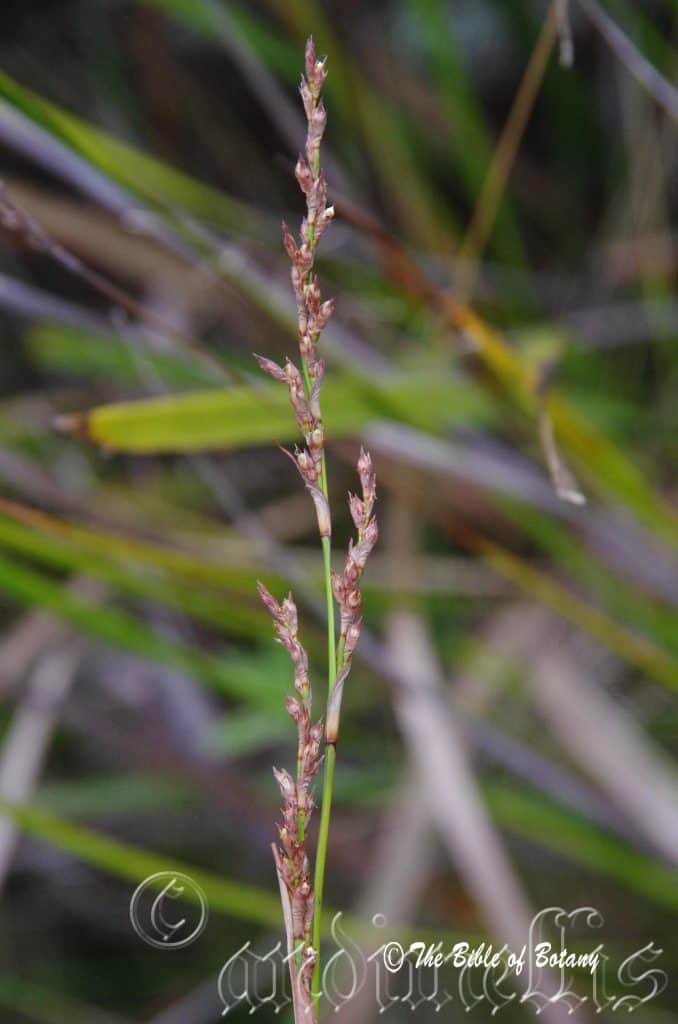
The Pinnacles NSW
Lepyrodia scariosa
Classification:
Unranked: Monocots
Unranked: Commelinids
Order: Poales
Family: Restinonaceae
Genus: From Lepyrodes, which is Ancient Greek for having bracts or Alepryon which is Ancient Greek for a shell or husk. It refers to a reference made by Theophrastus as being layered like an onion.
Specie: From Scariosusm, which is Latin for thin dry and membranous. It refers to structures or organs, which are thin, dry, membranous and papery.
Sub specie:
Common Name:
Distribution:
Lepyrodia scariosa is found south from Maryborough in southern coastal Queensland to Clyde Mountain in northern New South Wales with a further population found further south in the Bega Valley and an isolated population near Dubbo on the western side of the Great Dividing Range.
https://avh.ala.org.au/occurrences/search?taxa=Lepyrodia+scariosa#tab_mapView
Habitat Aspect Climate:
Lepyrodia scariosa prefers full sunlight to very light dappled shade. It grows in moist coastal heaths, moist coastal wallums behind the frontal dunes, near coastal ranges on river meander flats or river delta flats or moist mountain heaths swamps and drainage lines. The altitude ranges from 3 meter ASL to 920 meters ASL.
The temperatures range from minus 3 degrees in August to 37 degrees in January.
The rainfall ranges from lows of 850mm to 2000mm average per annum.
Soil Requirements:
Lepyrodia scariosa prefer course sands, fine sharp sands, and peaty sands to fatty sands. The soils are usually derived from accumulated beach sands, light alluvial sands or decomposed sandstones. The soils pH ranges from 6pH to 7.5pH. It does not tolerate waterlogged soils. Non saline soils to the high end of very saline soils are tolerated as are salt laden winds.
Height & Spread:
Wild Plants: 0.35m to 0.9m by 0.5m to 1m
Characteristics:
Lepyrodia scariosa is a semi tufted perennial with short thin creeping rhizomes. The culms are erect and measure 350mm to 900mm in height by 0.8mm to 1.8mm in diameter. The 3 to 6 internodes are glabrous. The usually 3 or at times 4 or 5 loose cauline sheaths to a culm are aerial and measure 15mm to 30mm in length. The sheaths are pale orange-brown to mid orange-brown externally and creamy internally, glabrous and have a perfoliate aristate appendage, just below the truncate or acute hyaline apex. The appendage measures 3mm to 5.5mm in length.
The dioecious inflorescences are tight, open, compound panicles. The panicles are often spike like with the individual flowers crowded on the lateral branches. The panicles measure 12mm to 20mm in length by 8mm to 10mm in diameter near the base at anthesis.
The male and female flowers are similar and are born terminally from within the terminal sheath. The pale creamy-fawn invocular bracts are linear and measure 12mm to 20mm in length. The 6 pale yellow-fawn tepals are scarious, oblong lanceolate with long acute apex. The 3 inner, tepals measure 3.2mm to 4.6mm in length while the 3 outer tepals are shorter and measure 2.8mm to 4mm in length.
The 3 white filiform filaments measure 1.8mm to 2mm in length while the deep pink to carmine-pink, dorsifixed stamens measure 3mm to 4mm in length by 1mm in diameter.
The trifid feathery styles are white and measure 8mm to 12mm in length. The flowers appear from September to November.
The ovoidal caryopsis is pale fawn to pastel straw-yellow and measure 2mm to 2.2mm in length.
Wildlife:
Lepyrodia scariosa’s wildlife is unknown to the author.
Cultivation:
Lepyrodia scariosa are unusual flowering rushes for dry sub-tropical to warm temperate gardens with sandy soils. It requires little water and attention though making it ideal for coastal sandy beach front homes. In cultivation they will grow 800mm to 900mm in height by 200mm to 800mm in diameter when grown in an open situation in full sun.
Lepyrodia scariosa offers the non-conforming gardener an astonishing new concept for rockeries or small heaths. The erect open growing culms are rigid but enticing offering a peaceful, tranquil setting.
It is easy to grow, harvest and propagate provided the soil is sandy and well drained. It needs other small fine or course leaf horizontal plants around it to be successful. Low mounded plants with small bright green leaves would add to the fairy like scene. Hibbertia linearis, Hibbertia obtusifolia, Isotoma axillaris, most of the dwarf Goodenia specie, Lechenaultia specie are a few that would be satisfactory as would and Viola betonicifolia.
Mass plantings are best achieved by leaving spaces between the individual plants so plant them at 1500mm to 2000mm centres.
Propagation:
Seeds: Collecting seeds from mature plants of Lepyrodia scariosa is not difficult but the collector must be vigilant as the seeds will disperse over in a matter of a couple of days to a week when fully ripe. The fresh seeds can be sown directly into a seed raising mix however better; more even germination is gained if the seeds are stratified for a short period and sown in spring. This can be achieved by placing the seeds in a paper bag in the vegetable crisper for a few weeks prior to sowing. Cover the seeds to a depth of 2mm. Seeds usually germinate rapidly with a strike rate of over 80mm.
When the seedlings are 20mm to 30mm tall, prick them out and plant them into 50mm native tubes using a good quality mix.
Once the seedlings reach 50mm in height they can be repotted for indoor use or 100mm to 150mm in height plant them out into their permanent position.
Fertilize using seaweed, fish emulsion or organic chicken pellets soaked in water on an alternate basis. Fertilize every two months until the plants are established to maintain health, vitality and better flowering.
Further Comments from Readers:
Hi reader, it seems you use The Bible of Botany a lot. That’s great as we have great pleasure in bringing it to you! It’s a little awkward for us to ask, but our first aim is to purchase land approximately 1,600 hectares to link several parcels of N.P. into one at The Pinnacles NSW Australia, but we need your help. We’re not salespeople. We’re amateur botanists who have dedicated over 30 years to saving the environment in a practical way. We depend on donations to reach our goal. If you donate just $5, the price of your coffee this Sunday, We can help to keep the planet alive in a real way and continue to bring you regular updates and features on Australian plants all in one Botanical Bible. Any support is greatly appreciated. Thank you.
In the spirit of reconciliation we acknowledge the Bundjalung, Gumbaynggirr and Yaegl and all aboriginal nations throughout Australia and their connections to land, sea and community. We pay our respect to their Elders past, present and future for the pleasures we have gained.
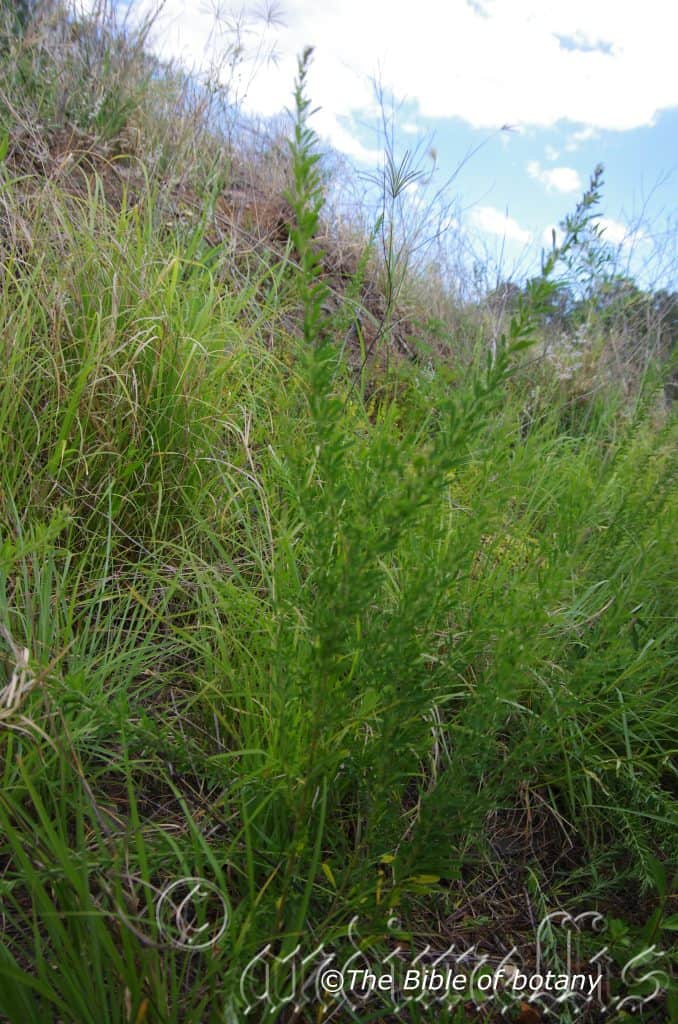
Orara Way Braunstone NSW
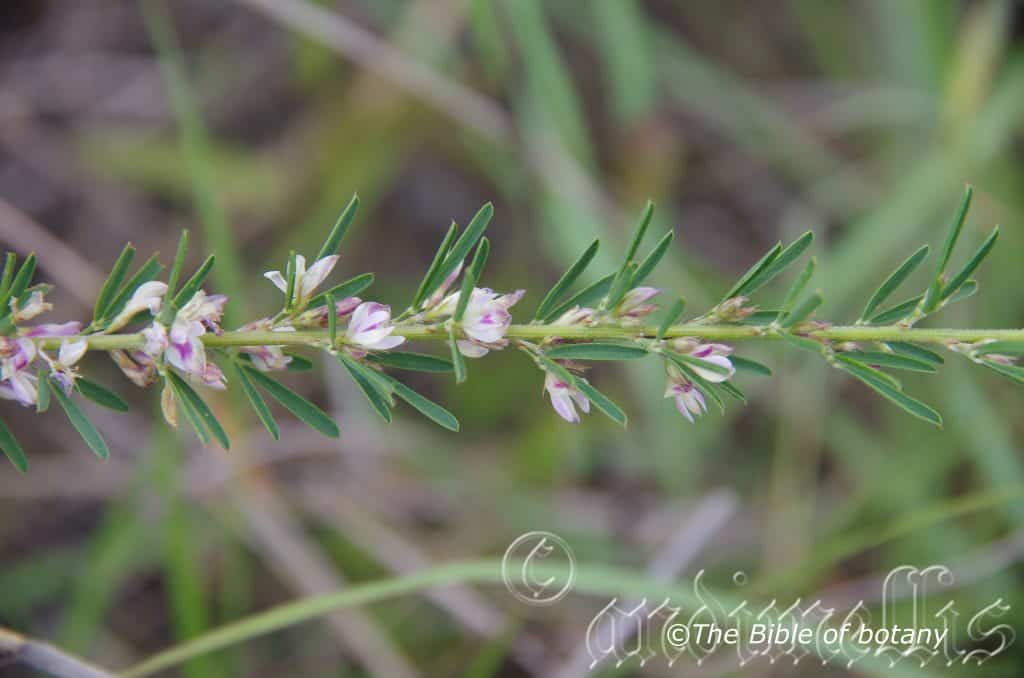
Orara Way Braunstone NSW
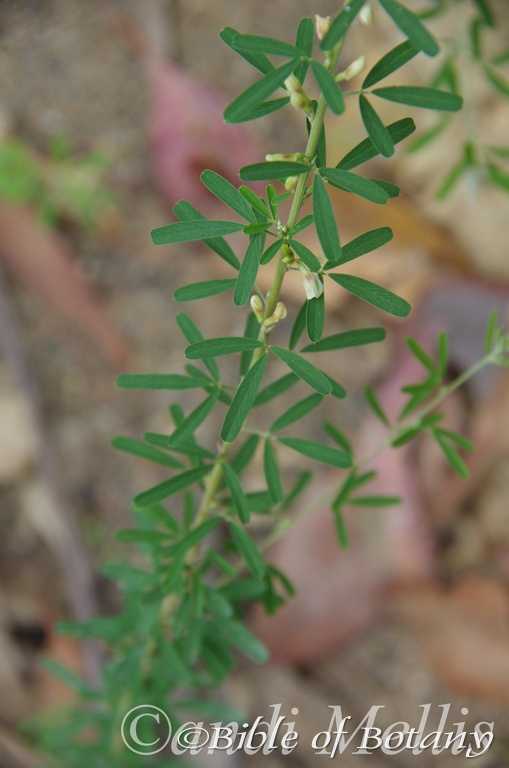
Cangai State Forest Cangai NSW

Cangai State Forest Cangai NSW
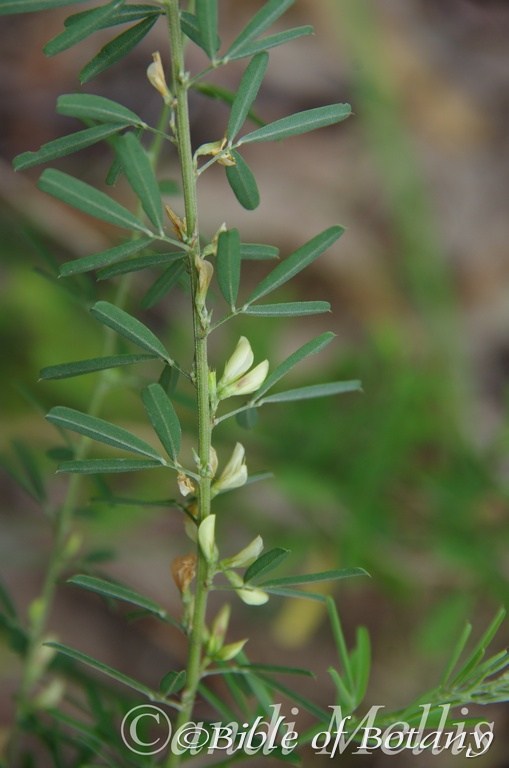
Cangai State Forest Cangai NSW
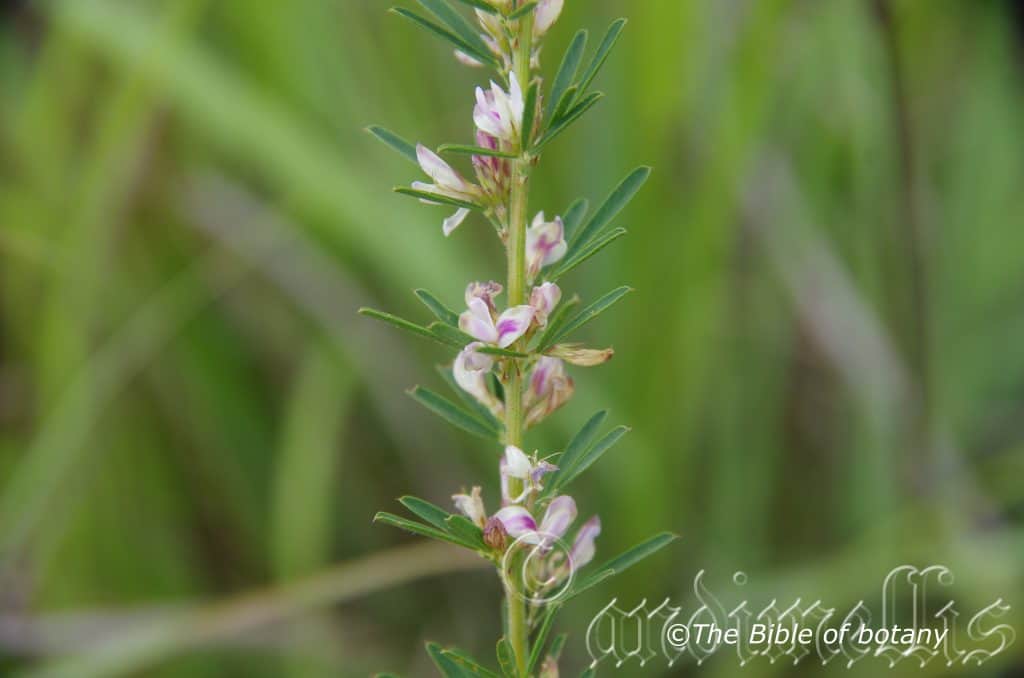
Orara Way Braunstone NSW
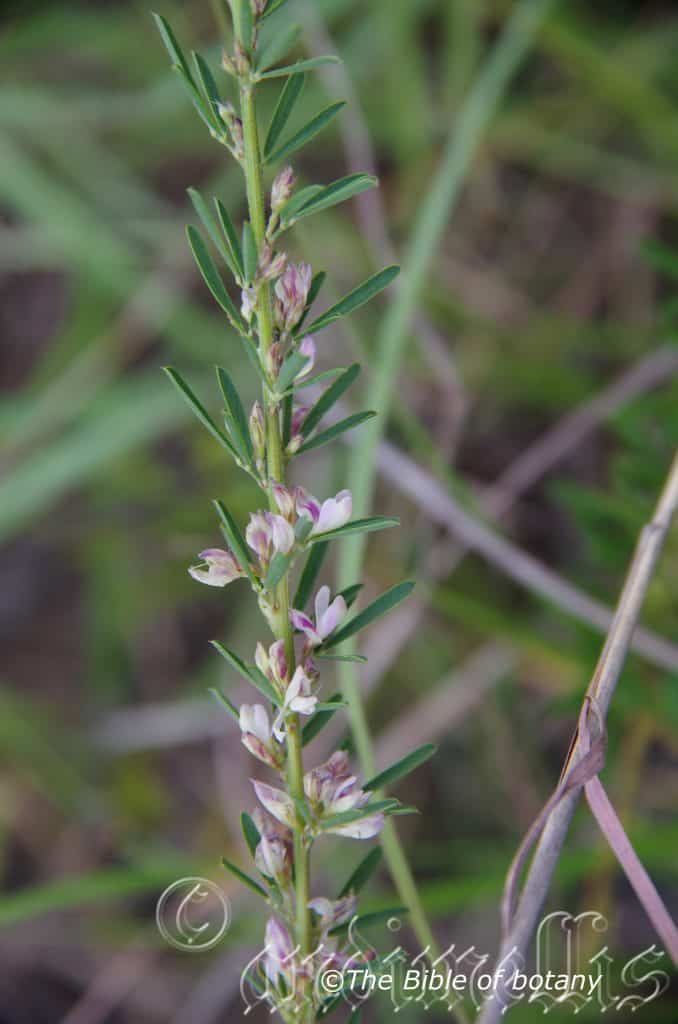
Orara Way Braunstone NSW
Lespedeza juncea
Classification:
Unranked: Eudicots
Unranked: Rosids
Order: Fabales
Family: Fabaceae
Subfamily: Faboideae
Tribe: Desmodieae
Subtribe: Lespedezinae
Genus: Is named in honour of Don Manual de Cespedez; 1721-1794, who was a Spanish Governor of Florida and a keen supporter of Botanists. An error in writing or reading, assumed his name was Zespedez and again misspelt on the naming of the Genus with an “L” instead of a “C”.
Specie: From Juncus, which is Ancient Greek for a rush or Jingere, which is Latin for to tie or bind. It refers to plants, which thrive wet places with reed like foliage which was used for weaving and tie articles together.
Sub Specie: Lespedeza juncea subsp. sericea. From Sericea, which is Latin for silky. It refers to plants, their organs or structures, which are covered in fine silky hairs. It is the only sub species found in Australia.
Common Name:
Distribution:
Lespedeza juncea subsp. sericea is found south from the Coorganga Plains in central coastal Queensland to Licola in central eastern Victoria. It is found on the western slopes, on and east of the Great Dividing Range.
It is also found in the Carnarvon National Park to Taroom in central Queensland. Lespedeza juncea is not found in Western Australia either naturally or introduced and all references indicating its presence there are incorrect.
It is also found in Timor and eastern New Guinee.
There are 30 subspecies of Lespedeza juncea which are found east of India through southern China the pacific islands and central and northern America
Lespedeza juncea subsp. juncea occurs further north in south East Asia to New Guinee.
https://avh.ala.org.au/occurrences/search?taxa=Lespedeza+juncea#tab_mapView
Habitat Aspect Climate:
Lespedeza juncea prefers full sunlight to very light dappled shade. It grows in open woodlands grasslands, on disturbed farmland and road side verges especially amongst rocks on river banks. The altitude ranges from 5 meter ASL to 1050 meters ASL while in Asians this Lespedeza juncea subsp. sericea is found at altitudes ranging from 1600 meters ASL to 2100 meters ASL.
The temperatures range from minus 3 degrees in August to 38 degrees in January.
The rainfall ranges from lows of 650mm to 2100mm average per annum.
Soil Requirements:
Lespedeza juncea subsp. sericea prefer course sands, fine sharp sands fatty light sandy clays to medium silty clays. The soils are derived from sandstones, granites, brown basalts, black basalts, metamorphic rocks and shale laid down as alluvial sands and silts or accumulated beach sands. The soils pH ranges from 6pH to 7.5pH. It does not tolerate waterlogged soils. Non saline soils to the high end of very saline soils are tolerated as are salt laden winds.
Height & Spread:
Wild Plants: 0.6m to 1.2m by 0.5m to 1.2m
Characteristics:
Lespedeza juncea subsp. sericea is an erect or decumbent perennial to sub shrub. The main stem is pale fawnish-brown with fine longitudinal striations. The new growth and smaller stems are pale blue-green and are covered in white sericeous hairs.
The alternate trifoliate leaves of Lespedeza juncea subsp. sericea measure 10mm to 30mm in length by 15mm to 30mm in width. The linear to obovate leaflets measure 7mm to 25mm in length by 2mm to 4mm in width. The bases are cuneate while the apexes are truncate to obtuse with a small mucronate tip. The concolourous laminas are pale blue-green to pale grey-green and glabrous on the upper laminas while the lower laminas are covered in soft, white appressed sericeous hairs. The laminas are flat to recurve slightly upwards from the mid vein to the margins while the margins are entire. The midvein is prominent on the lower lamina and is visible from the upper lamina. The stipules are subulate and measure 1mm to 5mm in length. The petioles measure 2mm to 5mm in length.
The inflorescences of Lespedeza juncea subsp. sericea are born solitary or in loose clusters of 2 to 7 individual flowers from the leaf axils. The pale green calyxes measure 3mm to 4mm while the long, narrow triangular teeth measure 3.5mm to 4.5mm in length. The pale pink to pale purple standards often have a deeper purple patch at the base and measure 10mm to 15mm in length by 12mm to 15mm in width. The pastel pink to lilac wings measure 6mm to 8mmin length. The keel is curved and measures 5mm to 7mm in length.
The white filaments are united; except for a single stamen, to form a column on the basal half. The flowers appear from December to May.
Lespedeza juncea subsp. sericea’s fruits are orbicular pods. The pale blue-green pods are covered in white sericeous hairs and measure 3mm to 5mm in length by 3mm to 5mm in diameter. The seeds are very variable in shape being ovate to ovoidal or orbicular and are just as variable in colour being glossy tan to glossy deep reddish-brown smooth or rugose. The seeds measure 1.5mm to 2.2mm in length by 1.3mm to 2.2mm in diameter.
Wildlife:
Lespedeza juncea subsp. sericea’s wildlife is unknown to the author.
Cultivation:
Lespedeza juncea subsp. sericea’s are beautiful small erect sub shrubs that grow particularly well on dry or moisture problem soils. It is suitable for small, medium and large gardens close to the coast or high in the mountains in warm temperate, sub-tropical or tropical gardens. As garden subjects they will grow from 1 meter to 1.2 meters in height by 0.8 meters to 1 meter in width when grown in the open. It is cold tolerant to temperatures at least as low as minus 1 degree once established.
It can be lightly tip pruned if a smaller bushier shrub is required in the earlier stages of growth.
It is best used as an understory shrub in warm rainforest gardens or in a moist Eucalyptus gardens where there is plenty of ground light. Placed in the midground or mass planted centrally as a feature offer qui quick coverage while adding nitrogen to the soil. Surrounded by other small native shrubs with red, pink, yellow or lilac flowers will look rather powerful or surrounded by white flowers will give a soft gentle scene.
Propagation:
Seeds: The seeds can be sown directly into a seed raising mix after roughing the sides with fine sandpaper to assist in germination. Cover the seeds with 1mm to 5mm of fine weed free mulch and keep moist. Place the tray in a warm sunny position and keep moist not wet.
When the seedlings are 20mm to 30mm tall, prick them out and plant them into 50mm native tubes using a good organic mix.
Once the seedlings reach 100mm to 150mm in height they can be planted out into their permanent position.
Cuttings: Use 80mm to 100mm long half ripened material when growing from cuttings from the present season’s growth. Take them in warmer months of the year. Remove half the leaves from the bottom section being careful not to tear the bark.
1 Prepare the cutting mix by adding one third sharp clean river sand, one third peat and one third perlite. These ingredients are sterilize,
2 Select good material from non diseased plants,
3 Select semi green stems for cuttings. Look for a stem with two or three nodes,
4 Place the cutting on a flat, hard surface, and make a clean cut down one side of the cutting at the base for 10mm with a sharp sterile knife or razor blade. – This scarification of the node will increase the chances of roots emerging from this spot. Now remove all but one or two the leaves, leaving the apex leaves in tact. If the leaves are very large in proportion to the stem, cut off the apical halves.
5 Fill a saucer with water, and place a little medium strength rooting hormone into another container like a milk bottle top. Dip the node end of the cutting into the water and then into the rooting hormone. Tap off any excess hormone,
6 Use a small dipple stick or old pencil to poke a hole into the soilless potting mix. Ensure the hole is slightly larger than the stem diameter and be careful not to wipe the rooting hormone off the cuttings base, place the cuttings in a pattern ensuring the cuttings are not touching each other,
7 I like to place the pots in Plastic bags to help maintain temperature and moisture. Place in a semi shaded place like under 50mm shade cloth.
8 When the cuttings have struck, open the bag to allow air circulation for a few days to a week,
9 Once hardened off remove the cuttings from the bag and allow to further hardening for a few more days,
10 Transplant into a good potting mix to grow on.
Fertilize using seaweed, fish emulsion or organic chicken pellets soaked in water on an alternate basis. Fertilize every two months until the plants are established then twice annually in early September or March to maintain health, vitality and better flowering. Once the seedlings reach 100mm to 150mm in height they can be planted out into their permanent position.
Further Comments from Readers:
Hi reader, it seems you use The Bible of Botany a lot. That’s great as we have great pleasure in bringing it to you! It’s a little awkward for us to ask, but our first aim is to purchase land approximately 1,600 hectares to link several parcels of N.P. into one at The Pinnacles NSW Australia, but we need your help. We’re not salespeople. We’re amateur botanists who have dedicated over 30 years to saving the environment in a practical way. We depend on donations to reach our goal. If you donate just $5, the price of your coffee this Sunday, We can help to keep the planet alive in a real way and continue to bring you regular updates and features on Australian plants all in one Botanical Bible. Any support is greatly appreciated. Thank you.
In the spirit of reconciliation we acknowledge the Bundjalung, Gumbaynggirr and Yaegl and all aboriginal nations throughout Australia and their connections to land, sea and community. We pay our respect to their Elders past, present and future for the pleasures we have gained.
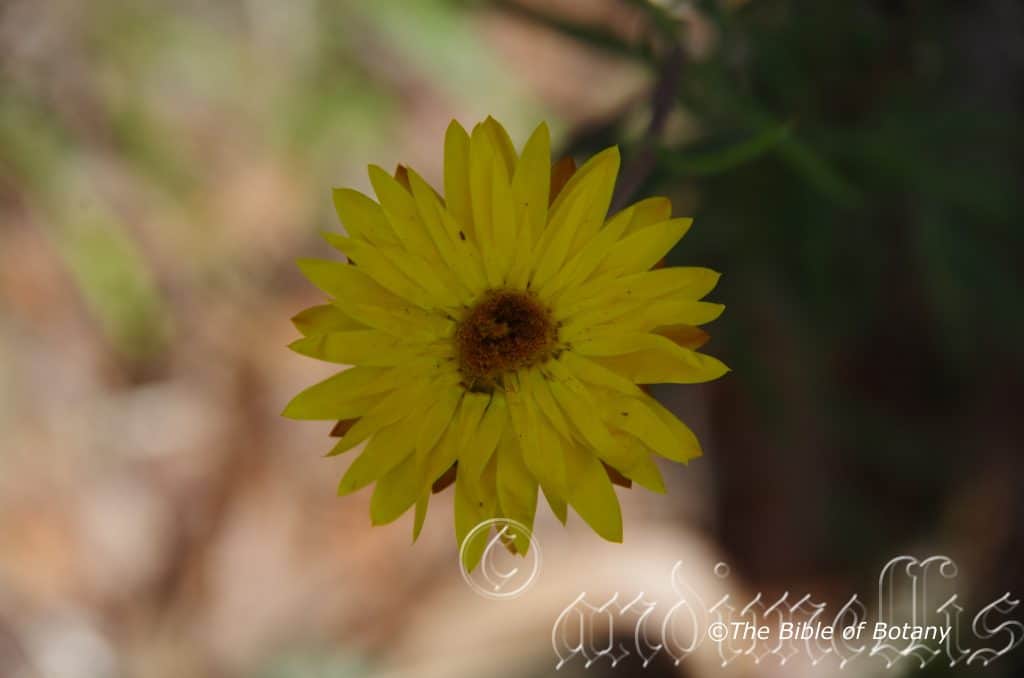
Ebor Falls National Park Ebor NSW
Leucochrysum albicans
Classification:
Class: Equisetopsida
Subclass: Magnoliidae
Superorder: Asteranae
Order: Asterales
Family: Asteraceae
Genus: From Leukós, which is Ancient Greek for white and Khrysos, which is Ancient Greek for gold. It refers to flowers, which usually have white ray florets with golden disc florets in the centres.
Specie: From Albus, which is Latin for white. It refers to the flowers, which are whitish in colour.
Sub specie: Leucochrysum albicans subsp. albicans. From Albus, which is Latin for white. It refers to the flowers, which are whitish in colour.
Sub specie: Leucochrysum albicans subsp. alpinum. From Alpīnum, which is Latin for the Alps. It refers to plants, which have their environments in subalpine areas of mountains below the permanent snow line.
Sub specie: Leucochrysum albicans var. buffaloensis. From Boúbalos, which is Ancient Greek for an antelope or wild Ox or later Būfalus, which is Latin for a buffalo and Anum/Ensis, which is Latin for originating from. It refers to plants, which were first discovered on Mount Buffalo in Victoria.
Sub specie: Leucochrysum albicans var. tricolor. From Treîs/Tría, which are Ancient Greek or Tri, which is Latin for three Khrôma, which is Ancient Greek for the intensity or saturation of colour or density of a hue in refraction of light from a, surface. It refers to structures or organs, which have three different colours.
Common Name: Alpine Sunray or Hoary Sunray.
Distribution:
Leucochrysum albicans subsp. albicans is found in a line south and east from Charleville to the Burnett River in central Queensland to Broken Hill in New South Wales and the Glenelg River on the Naracoort Coastal Plain in Victoria. In South Australia it occurs on the northern section of the Flinders Range at Blinman and is also widespread in Tasmania.
Leucochrysum albicans subsp. alpinum is found south from Canberra in the ACT to Mansfield in the central Victorian highlands.
Leucochrysum albicans var. buffaloensis is the most widespread sub species being found in far southern Queensland, New South Wales Victoria mainly on the Great Dividing Range and Western slopes.
Leucochrysum albicans var. tricolour is found south of Ulan in New South Wales to Mount Hotham with a large disjunct population in the and around the Grampians in Victoria. It is also found on the high Country in Tasmania
https://avh.ala.org.au/occurrences/search?taxa=Leucochrysum+albicans#tab_mapView
Habitat Aspect Climate:
Leucochrysum albicans prefers full sunlight to very light dappled shade. It grows in open forests and open woodlands. The altitude ranges from 60 meters ASL to 1900 meters ASL.
The temperatures range from minus 8 degrees in August to 40 degrees in January.
The rainfall ranges from lows of 200mm to 2100mm average per annum.
Soil Requirements:
Leucochrysum albicans prefers coarse peaty sands to medium clays. The soils are usually derived from decomposed granites or sandstones. The soils pH ranges from 6pH to 7pH. It does not tolerate waterlogged soils. Non saline soils to the high end of moderately saline soils are tolerated.
Height & Spread:
Wild Plants: 0.25m to 0.45m by 0.25m to 0.4m
Characteristics:
It is an open erect perennial with pale blue-green stems. The stems are covered in long, soft, white, woolly, pilose or floccose hairs. The root stock is rather woody and thick for an annual.
The alternate leaves are crowded near the base while the cauline leaves are disjunct. The linear to oblong or broad obovate leaves measure 25mm to 100mm in length by 1mm to 10mm in width. The bases are cauline while the apexes are acute. The concolourous laminas are pale blue-green to pale grey-green and covered in long, soft, white, woolly, pilose or floccose hairs. The laminas are flat and decurve on the apical half while the margins are entire. The midvein is not prominent on either lamina.
The inflorescences are solitary heads on a long peduncle from the lower leaf axils. The peduncles are covered in long, soft, white, woolly, pilose or floccose hairs and measure 70mm to 160mm in length. The 4 to 7 reddish-brown to reddish-purple outer bracts are oblong to ovate and measure 1mm to 4mm in length. The 3 to 6 white inner bracts are opaque to translucent with divided margins and measure 1mm to 3mm in length. The pale pink to deep pink or white flowers open in the evenings. The outer tepals are broad elliptical and measure 4mm to 6mm in length while the inner tepals are semi erect and measure 5mm to 8mm in length. The involucres spread from the base and measure 20mm to 40mm in diameter. The involucral bracts are multiseriate with the outer row being sessile, oblong to ovate with obtuse to acute apexes. The outer row of bracts is pale fawnish-yellow to pale brown or purple. The inner row of bracts has long stipes and is triangular to narrow elliptic. The bracts laminas are white or yellow and covered in long, soft, white, woolly, pilose or floccose hairs base.
The flowers begin to appear from late September to mid-February December.
The fruits are linear cypselas. The cypselas measure 2mm to 3mm in length. It is glabrous with translucent tuberculate lumps while the pappus is covered in fine plumose like bristles.
Confusing Subspecie Varieties:
Leucochrysum albicans subsp. albicans’s leaves are linear to narrow oblong and measure 1mm to 3mm in width.
Leucochrysum albicans subsp. alpine var. albicans’ leaves are narrow to broad obovate and measure 5mm to 9mm in width. The inner involucral bracts are yellow.
Leucochrysum albicans subsp. alpine var. tricolour’s leaves are narrow to broad obovate and measure 5mm to 9mm in width. The inner involucral bracts are white.
Wildlife:
Leucochrysum albicans wildlife is unknown to the author.
Cultivation:
Leucochrysum albicans are unusual, small flowering daisies for cool sub-tropical cool temperate gardens. It requires little water and attention once established making it ideal for small fill in spots around the home. In cultivation they will grow 350mm to 500mm in height by 300mm to 500mm in diameter when grown in an open situation in full sun.
Leucochrysum albicans offers great colour contrasting foliage and flowers for the gardener with an amazing new variation for rockeries or small drier type heaths. Mass planted with plants that have both fine pale green or large deep green leaves and pink or red flowers the look is really stunning.
It is easy to grow, harvest and propagate but needs other small broad leaf plants or an open space around it to be successful. Low mounded plants like Hibbertia linearis, Hibbertia obtusifolia, Isotoma axillaris; most of the dwarf Goodenia specie and even Viola betonicifolia all suffice beautifully offering something different in each scenario.
Leucochrysum albicans make great bowel and tub plants. When used in tubs plant them at around 100mm to 150mm centers.
Mass plantings are best achieved by leaving spaces between the individual plants as the floccose stems are more likely to suffer fungal problems or attract and harbour detrimental insect attract so plant them at 600mm to 700mm centres.
Most everlasting daisies attract garden pests which include slugs, snails, aphids, caterpillars and red spider mites.
Slugs are easily controlled by placing the rind of half an orange face down around the plants. Inspect the rinds daily and remove and squash or feed the birds with any slugs that are there being careful to release the native slugs which are for the most part carnivorous or consume algae and lichens. The red triangle slug (Triboniophorus graeffei) is well known in humid locations as an algae consumer so poses little or no threat to our beloved garden treasures.
The other pests are usually held at bay naturally with the occasional relocation of lady Birds or the placement of safe watering sites for birds. I never feed birds directly but encourage them around the garden with the use of portable water stations moving the stations to areas where the birds need to be attracted.
Propagation:
Seeds: Collecting seeds from mature plants of Leucochrysum albicans is not difficult but the collector must be vigilant as the seeds will disperse over in a matter of a couple of days to a week when fully ripe. As soon as the first seeds begin to be released cut the heads and place them in dry paper bag for further drying. The fresh seeds can be sown directly into a seed raising mix however; better, more even germination is gained if the seeds are stratified for a short period over winter and sown in spring. This can be achieved by placing the seeds in a paper bag in a calico bag and place it in the vegetable crisper over winter prior to sowing.
Cover the seeds to a depth of 2mm in the seed trays. Seeds usually germinate rapidly within 6 to 10 days and are completed within 3 weeks with a strike rate of over 80mm. Place the trays beneath 30mm shade cloth and keep moist not wet.When the seedlings are 20mm to 30mm tall, prick them out and plant them into 50mm native tubes using a good quality mix.
Once the seedlings reach 70mm to 80mm in height they can be repotted into 100mm to 150mm for patio use or into planted out into their permanent position. Displays in large urns or mixed colours or similar varieties look spectacular depending on the position.
Cuttings: Use 80mm to 100mm long half ripened material when growing from cuttings from the present season’s growth. Take them in warmer months of the year where heavy frosts or snow ocurrs or at any time of the year in frost free zones or where light frosts ocurr. Remove half the leaves from the bottom section being careful not to tear the bark.
1 Prepare the cutting mix by adding one third sharp clean river sand, one third peat and one third perlite. These ingredients are sterilize,
2 Select good material from non diseased plants,
3 Select semi green stems for cuttings. Look for a stem with two or three nodes,
4 Place the cutting on a flat, hard surface, and make a clean cut down one side of the cutting at the base for 10mm with a sharp sterile knife or razor blade. – This scarification of the node will increase the chances of roots emerging from this spot. Now remove all but one or two the leaves, leaving the apex leaves in tact. If the leaves are very large in proportion to the stem, cut off the apical halves.
5 Fill a saucer with water, and place a little medium strength rooting hormone into another container like a milk bottle top. Dip the node end of the cutting into the water and then into the rooting hormone. Tap off any excess hormone,
6 Use a small dipple stick or old pencil to poke a hole into the soilless potting mix. Ensure the hole is slightly larger than the stem diameter and be careful not to wipe the rooting hormone off the cuttings base, place the cuttings in a pattern ensuring the cuttings are not touching each other,
7 I like to place the pots in Plastic bags to help maintain temperature and moisture. Place in a semi shaded place like under 50mm shade cloth.
8 When the cuttings have struck, open the bag to allow air circulation for a few days to a week,
9 Once hardened off remove the cuttings from the bag and allow to further hardening for a few more days,
10 Transplant into a good potting mix to grow on.
Fertilize using seaweed, fish emulsion or organic chicken pellets soaked in water on an alternate basis. Fertilize every two months until the plants are established then twice annually in early September or March to maintain health, vitality and better flowering. Once the seedlings reach 100mm to 150mm in height they can be planted out into their permanent position.
Further Comments from Readers:
Hi reader, it seems you use The Bible of Botany a lot. That’s great as we have great pleasure in bringing it to you! It’s a little awkward for us to ask, but our first aim is to purchase land approximately 1,600 hectares to link several parcels of N.P. into one at The Pinnacles NSW Australia, but we need your help. We’re not salespeople. We’re amateur botanists who have dedicated over 30 years to saving the environment in a practical way. We depend on donations to reach our goal. If you donate just $5, the price of your coffee this Sunday, We can help to keep the planet alive in a real way and continue to bring you regular updates and features on Australian plants all in one Botanical Bible. Any support is greatly appreciated. Thank you.
In the spirit of reconciliation we acknowledge the Bundjalung, Gumbaynggirr and Yaegl and all aboriginal nations throughout Australia and their connections to land, sea and community. We pay our respect to their Elders past, present and future for the pleasures we have gained.
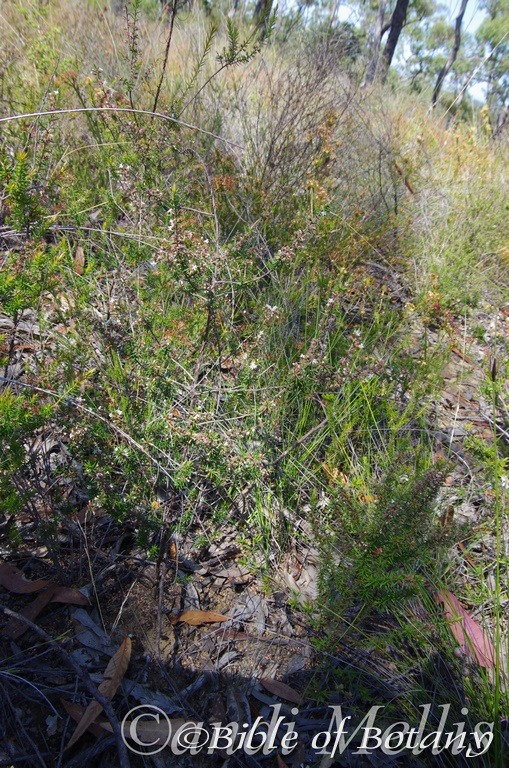
Morgan’s Camp Trail Fortis Creek National Park NSW

Banyabba National Park NSW
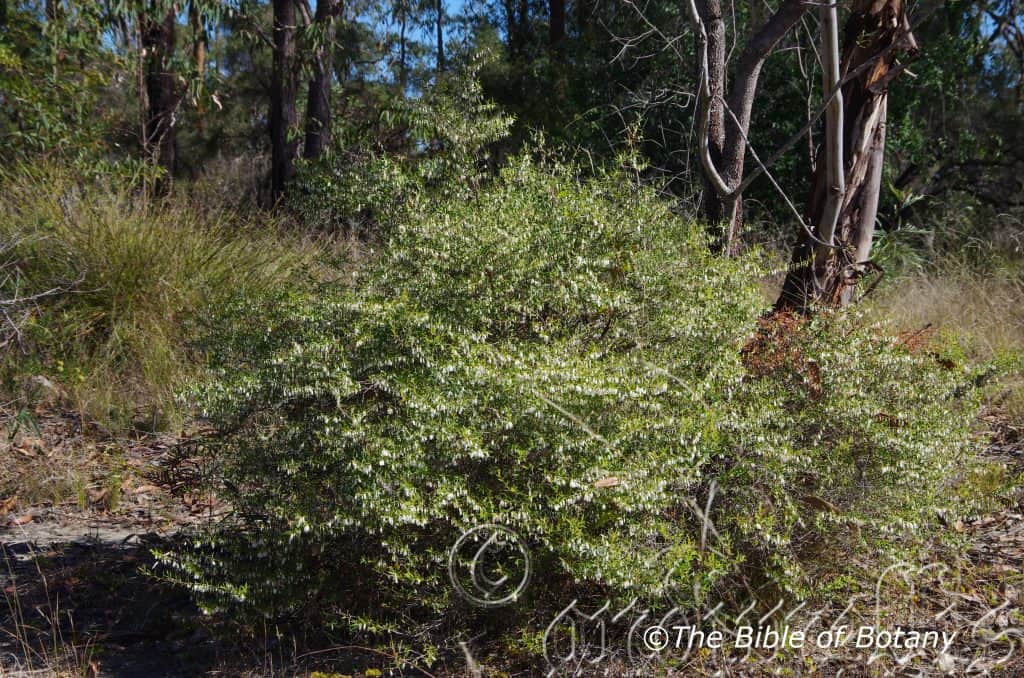
The Pinnacles NSW
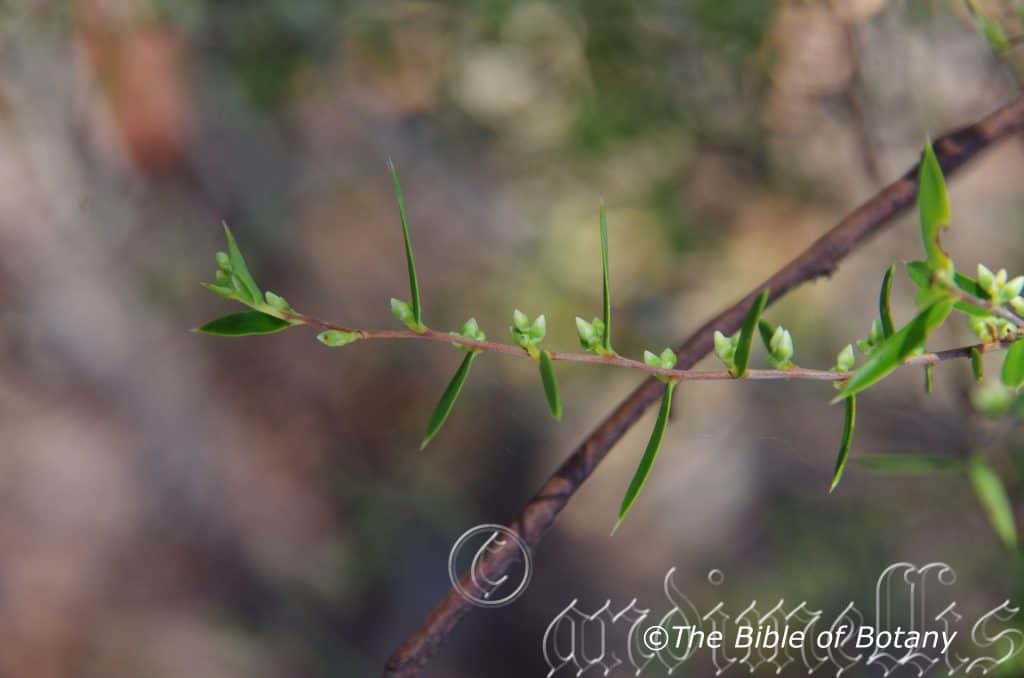
The Pinnacles NSW
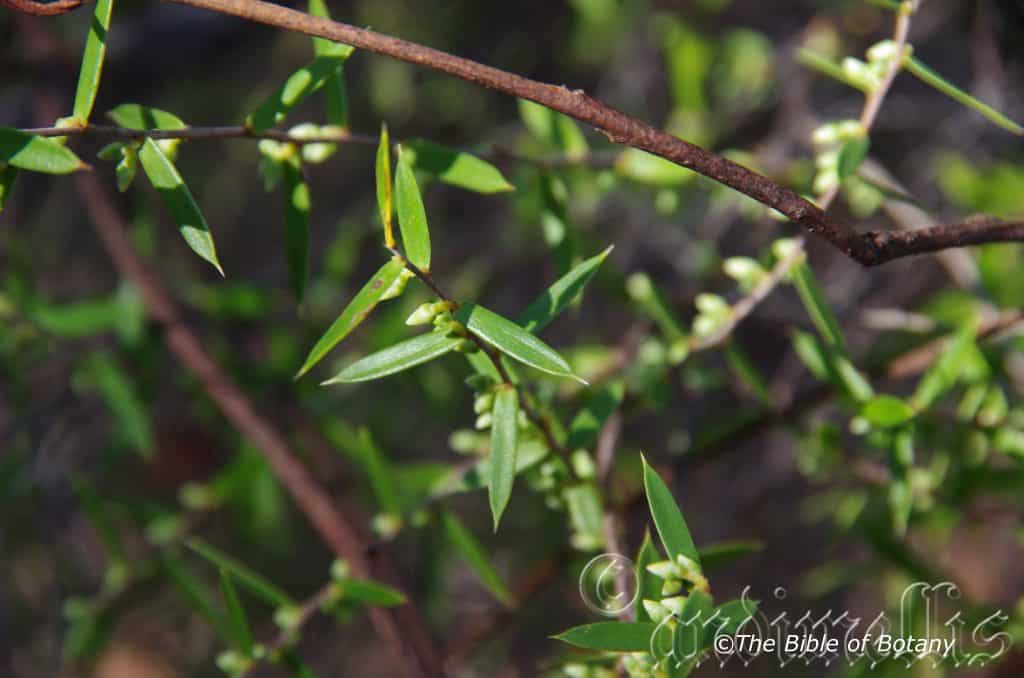
The Pinnacles NSW
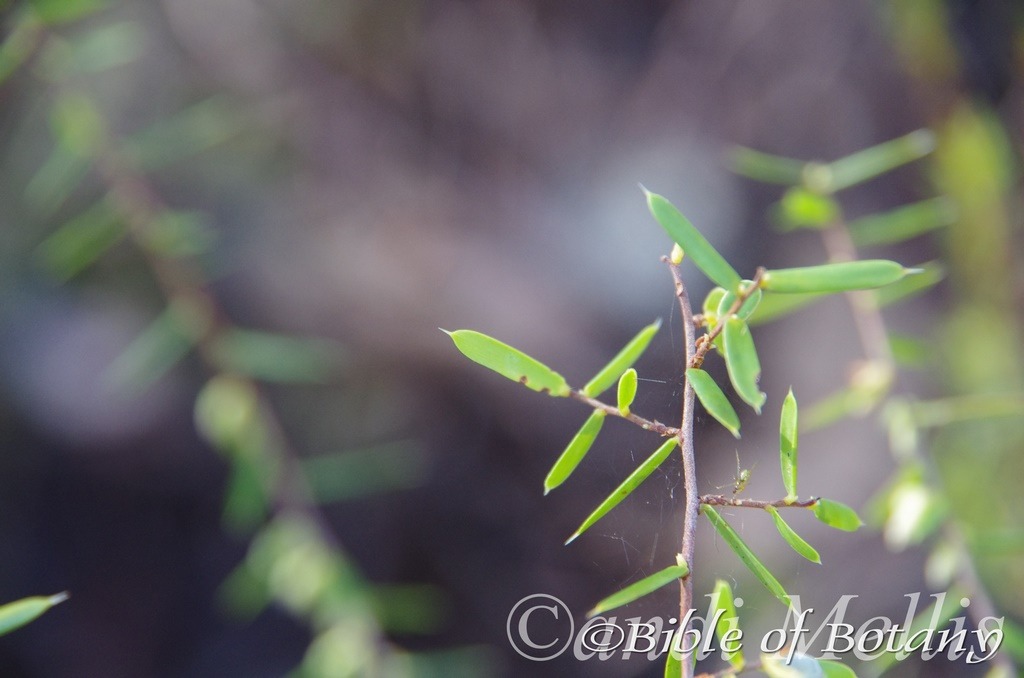
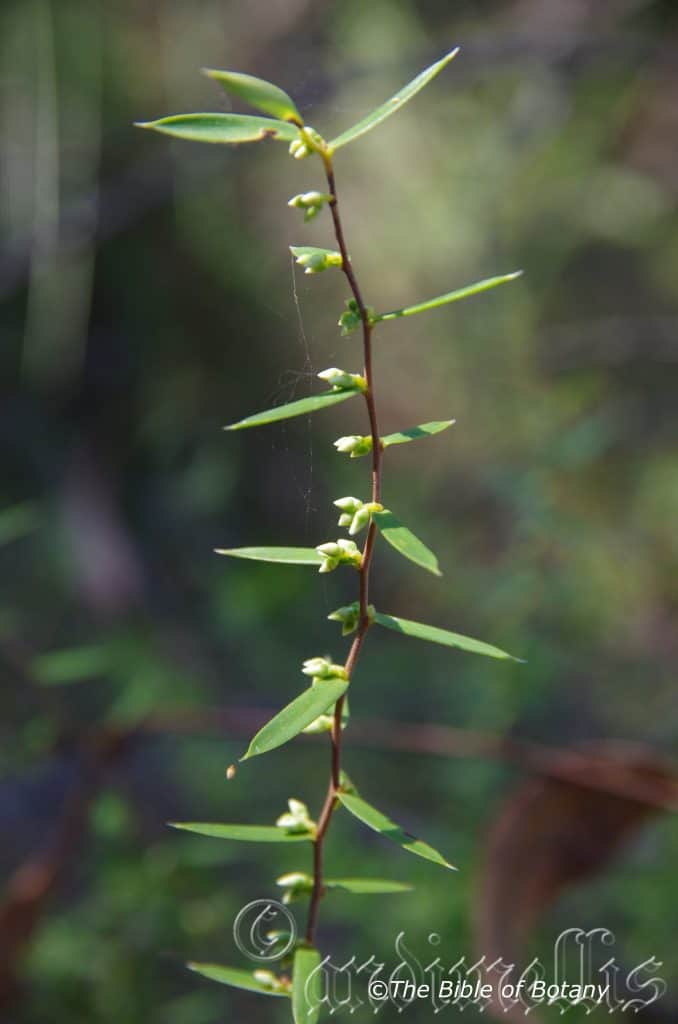
The Pinnacles NSW
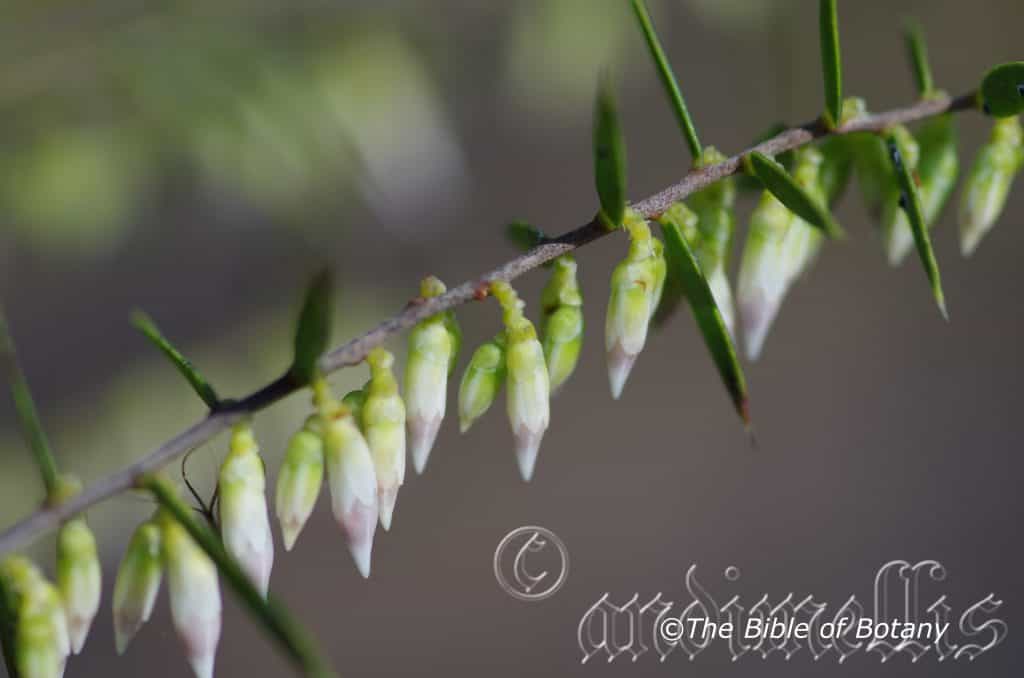
The Pinnacles NSW
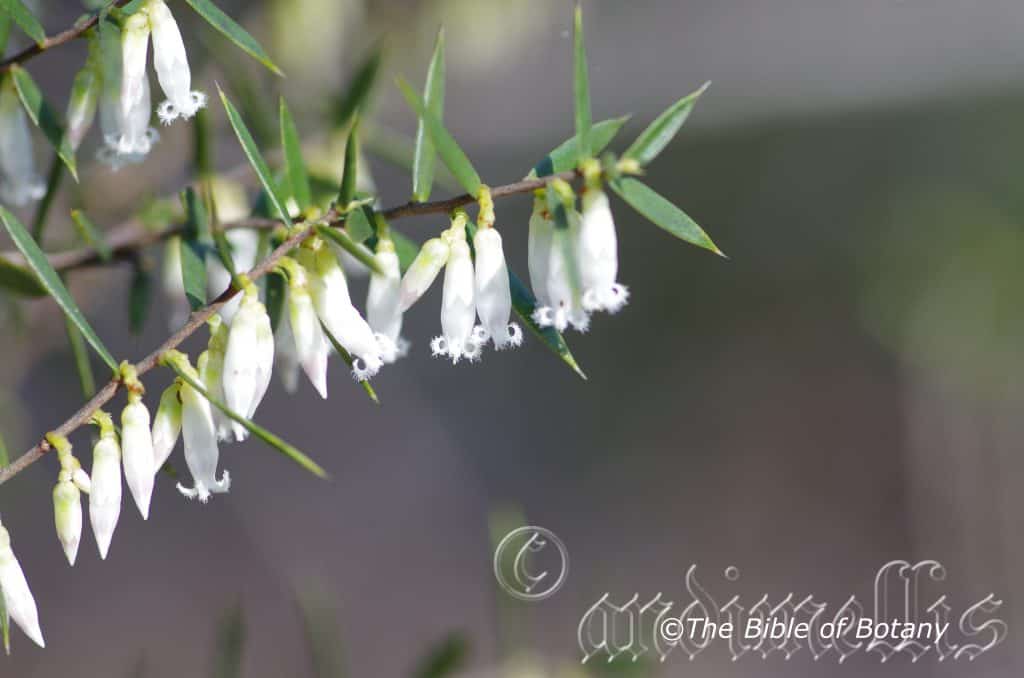
The Pinnacles NSW
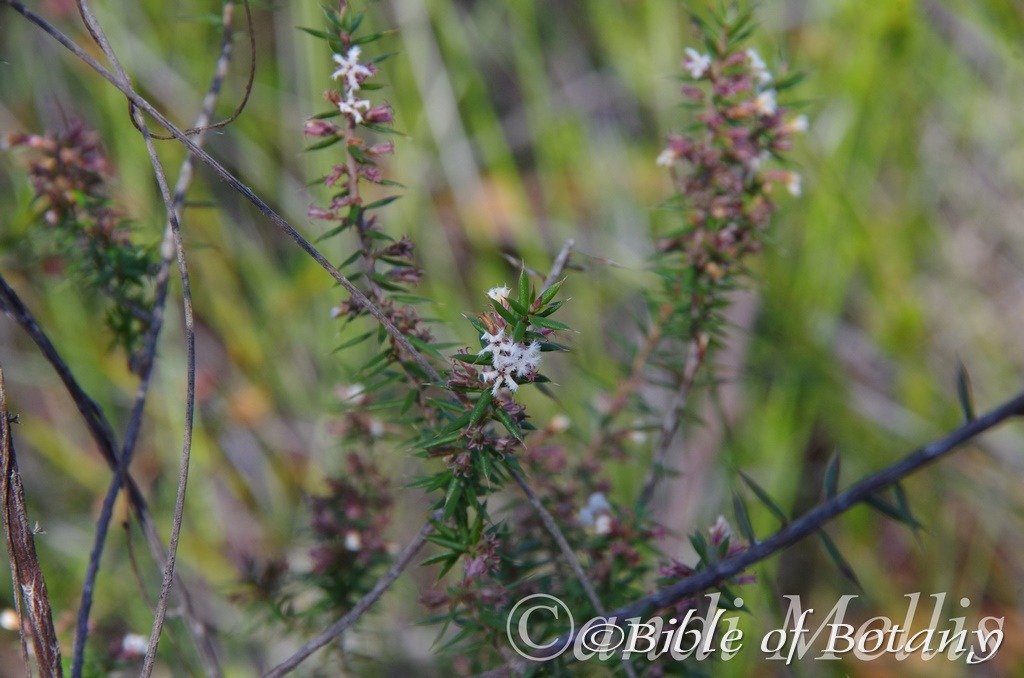
Morgan’s Camp Trail Fortis Creek National Park NSW
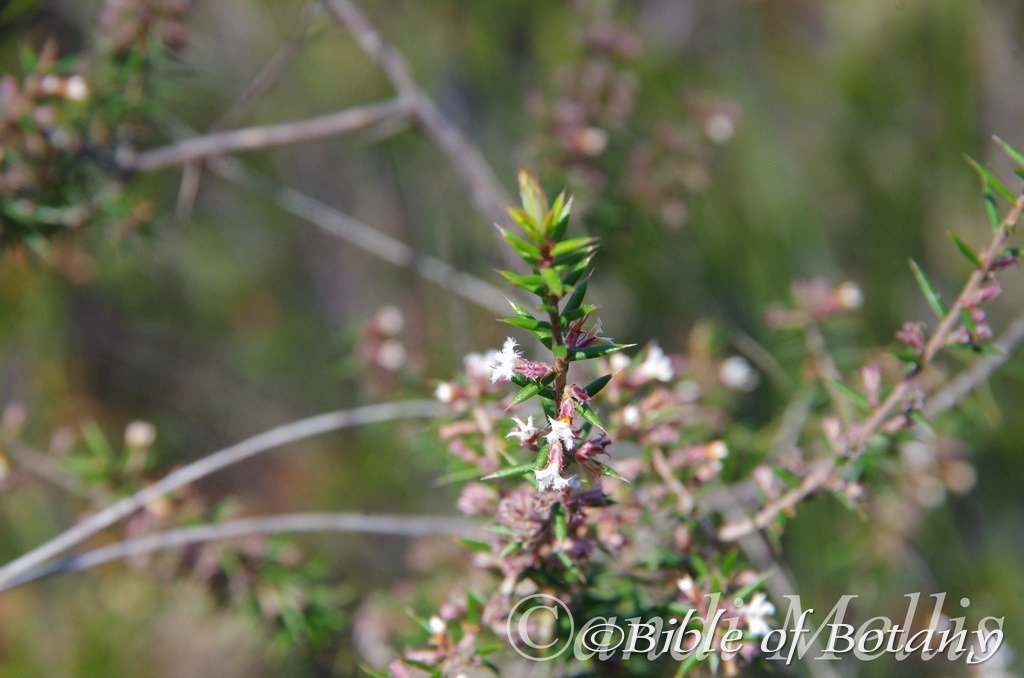
Morgan’s Camp Trail Fortis Creek National Park NSW
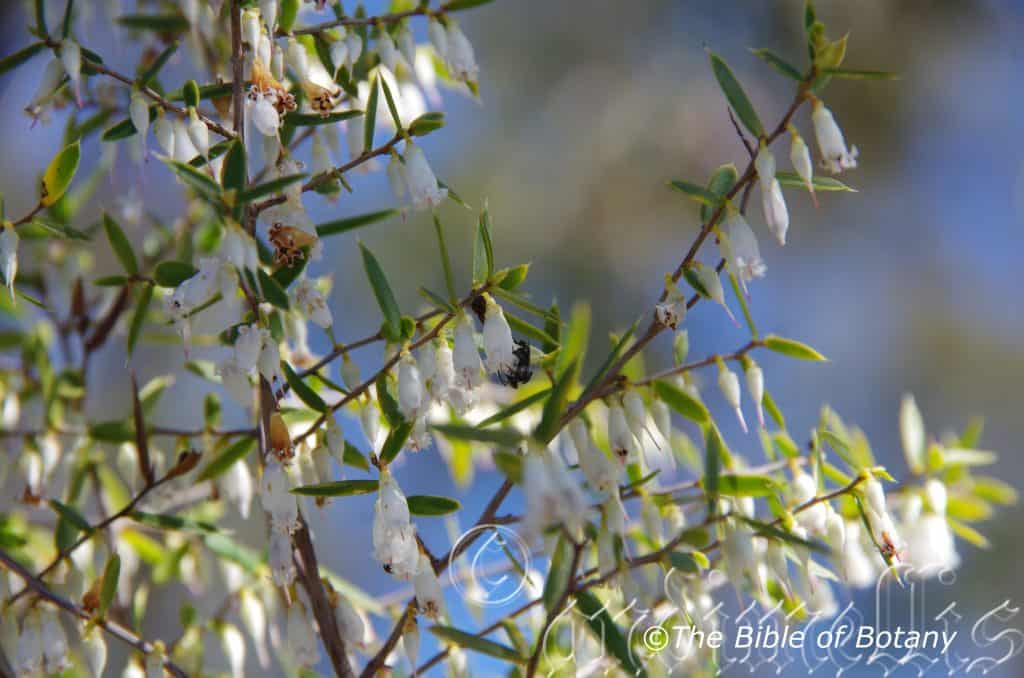
Tetragonula carbonaria The Pinnacles NSW
Leucopogon biflorus
Classification:
Unranked: Magnoliophyta
Class:Magnoliopsida
Superorder: Magnoliidae
Order: Ericales
Family: Ericaceae
Genus: From Leukós, which is Ancient Greek for white and Pogon, which is Ancient Greek for a bristly beard. It refers to the corolla lobes, which have a white beard.
Specie: From Bi/Bis, which is Greek/Latin for two and Flōris, which is Latin for a flower or Flōs which is Roman for the Goddess of spring and flowers, which is the Roman goddess for spring and flowers. It refers to plants, which have two flowers at each leaf node.
Sub species:
Common Name:
Distribution:
Leucopogon biflorus is found in 3 disjunct populations. The first is found south and east of a line from St Lawrence to, Tambo and Elemna Springs in central and southern Queensland to the Chandler and Oakey Rivers then north to Diggers beach on the Clarence coast in northern New South Wales.
The second population is bounded by the Pilliga scrub near Narrabri to Coonabarabran to south of Dubbo, Dunedoo, the Liver Plains and Gunnedah with an isolated population further west on the Cobar Peneplain and further east on the Comboyne Plain in Northern New South Wales.
The third population is widely disjunct and scattered bounded by the Mount Kosciusko National Park to Blue Mountains, Mitta Mitta, in New South Wales and Fryers Creek and Elphinstone to Walhalla, the Nicholson River near Bairnsdale and in the Rupilus Montis Cobboras in Victoria.
https://avh.ala.org.au/occurrences/search?taxa=Leucopogon+biflorus#tab_mapView
Habitat Aspect Climate:
Leucopogon biflorus prefers full sun to light dappled shade. It grows in dry sclerophyll woodlands, moist sclerophyll woodlands mainly on rocky outcrops associated with flat terrain. It is also found at high altitude flats associated with rocky outcrops. The altitude ranges from 15 meters ASL to 1700 meters ASL.
The temperatures range from minus 6 degrees in August to 36 degrees in January.
The rainfalls range from lows of 300mm to an average of 1600mm.
Soil Requirements:
Leucopogon biflorus prefers to grow on skeletal sandy soils and on rocky outcrops. The soils are usually derived from decomposed shale, sandstones, metamorphic rocks or granites. The soils pH ranges from 5pH to 6.5pH. It does not tolerate waterlogged soils. Non saline soils to moderately saline soils are tolerated.
Height & Spread:
Wild Plants: 0.4m to 2m by 1m to 1.5m.
Characteristics:
It grows as a small multi stemmed shrub with reddish-brown, fine longitudinal flakes on the bark. The bark is persistent on the short trunk and lower stems. The reddish-brown stems are mainly glabrous while the new growth is sparsely covered in white caduceous, hispid hairs.
The alternate disjunct leaves are oblong and measure 9mm to 17mm in length by 2mm to 3mm in width. The flattened petioles are orange-red, yellow-orange or pale green and measure 0.5mm to 1mm in length. The bases are truncate while the apexes are obtuse with a 1.5mm pungent spine that has a reddish and yellow base. The concolourous laminas are sea-green to deep sea-green and glabrous. The laminas are flat or gently decurve near the margins while the margins are entire. The mid vein and parallel lateral veins are obscure on both laminas but can be seen as paler longitudinal striations on the lower lamina.
The inflorescences are born solitary and in pairs with rudimentary buds from the leaf axils. The peduncles measure 1mm to 1.5mm in length. The pastel fawnish-yellow to cream ovate bracteoles apexes are obtuse. The bracteoles measure 1.2mm to 1.6mm in length. The white sepals are united on the basal two thirds before dividing into 5 lobes with acute apexes. The sepals measure 2.3mm to 3.2mm in length. The white corolla tube measures 2.5mm to 3.8mm in length and is sparsely covered in white hirtellous hairs on the basal half. The 5 white lobes are densely covered in white pilose hairs externally and are glabrous internally. The lobes apexes are obtuse and measure 3.2mm to 3.6mm in length.
The 5 white filaments are inserted and have fawn to creamy fawn anthers. The deep pink to red style is exserted, has a greenish-yellow stigma and measures 7mm to 9mm in length. The fragrant flowers appear from July to October.
The fruits are ellipsoidal drupes. The drupes measure 3.2mm to 3.7mm in length by 3mm to 3.5mm in diameter. The pale green glabrous drupes turn translucent green with fine pale brown ridges when ripe. The style is persistent on the ripe fruits.
Wildlife:
The flowers are attractive to small butterflies and pollen flies. The leaves are the food source for the Australian Cranberry moth (Poecilasthena pulchraria).
The fruits are eaten by various small honeyeaters.
Cultivation:
Despites its beauty in flower Leucopogon biflorus its small size, erect status as a sub shrub and that it grows particularly well on dry or moisture retentive soils it is rarely seen in cultivation. It is suitable for small, medium and large gardens close to the coast or high in the mountains in warm temperate, sub-tropical or tropical gardens. As garden subjects they will grow from 1.5 meter to 2 meters in height by 1 meter to 1.5 meters in diameter when grown in the open. It is cold tolerant to temperatures at least as low as minus 7 degrees once established.
It can be lightly tip pruned if a smaller bushier shrub is required in the earlier stages of growth.
It is best used as an understory shrub in cool moist Eucalyptus gardens where there is plenty of ground light or moist to dry heaths. Placed in the midground or foreground on the lower side of a path or mass planted centrally as a feature offer quick coverage while adding interest. Surrounded by other small native shrubs with small, deep red or deep purple flowers really do make for great talking points. Here I immediately think of Hovea acutifolia, Hovea similis, Graptophyllum excelsum and Graptophyllum illicifolium.
When mass or group planting Leucopogon biflorus use curves and irregular patterns so they can be viewed from different angles around the garden. The flowers are really highlighted against the deep sea green leaves so place them where it is highly visible. Mass plant them at 0.7 meters to 1.2 meter centers.
The plants make excellent tub specimens for the patio, veranda or sunny court yard.
Propagation:
Seeds: Collecting seeds from mature plants of Leucopogon biflorusis not difficult to collect. Remove the seeds from the ripe fruits. The fresh seeds can be sown directly into a seed raising mix. Cover the seeds to a depth of 1mm in the seed trays.
However stratification over winter may enhance germination rates. This can be achieved by placing the seeds in the fridge for two or three weeks before sowing. Stratification is often a necessity for alpine plants and Leucopogon specie may be no different.
Place the trays in a warm position beneath 30mm shade cloth and keep moist not wet. The seeds can take from 40 to over 100 days to germinate with a strike rate of between 20mm and 60mm. Place the trays beneath 30mm shade cloth and keep moist not wet.When the seedlings are 20mm to 30mm tall, prick them out and plant them into 50mm native tubes using a good quality mix.
The seedlings are slow initially but once the seedlings reach 70mm to 80mm in height they can be repotted into 100mm to 150mm for patio use or into their permanent position in the garden.
Cuttings: Cuttings of Leucopogon biflorus are difficult to strike. Methods described are based on our experiences with Leucopogon lanceolatus.
Use 70mm to 100mm long half ripened material when growing from cuttings from the present season’s growth which will give the best results.
Take them in early spring as soon as the plants can cope with the removal of growing shoots. Remove a few cuttings from each plant while it is in active growth. Remove any flowers buds that may be emerging.
1 Prepare the cutting mix by adding one third sharp clean river sand, one third peat and one third perlite. These ingredients are sterilize,
2 Select good material from non diseased plants,
3 Select semi green stems for cuttings. Look for a stem with two or three nodes,
4 Place the cutting on a flat, hard surface, and make a clean cut down one side of the cutting at the base for 10mm with a sharp sterile knife or razor blade. – This scarification of the node will increase the chances of roots emerging from this spot. Now remove all but one or two the leaves, leaving the apex leaves in tact. If the leaves are very large in proportion to the stem, cut off the apical halves.
5 Fill a saucer with water, and place a little medium strength rooting hormone into another container like a milk bottle top. Dip the node end of the cutting into the water and then into the rooting hormone. Tap off any excess hormone,
6 Use a small dipple stick or old pencil to poke a hole into the soilless potting mix. Ensure the hole is slightly larger than the stem diameter and be careful not to wipe the rooting hormone off the cuttings base, place the cuttings in a pattern ensuring the cuttings are not touching each other,
7 Place the cuttings in a moist sterile seed raising mix at 45 degrees to 70 degree angle with half the cutting below the mix and half above the mix.
8 When the cuttings have struck, open the bag to allow air circulation for a few days to a week,
9 Once hardened off remove the cuttings from the bag and allow to further hardening for a few more days,
10 Transplant into a good potting mix to grow on.
Fertilize using seaweed, fish emulsion or organic chicken pellets soaked in water on an alternate basis. Fertilize every two months until the plants are established then twice annually in early September or March to maintain health, vitality and better flowering. Once the seedlings reach 100mm to 150mm in height they can be planted out into their permanent position.
Further Comments from Readers:
Hi reader, it seems you use The Bible of Botany a lot. That’s great as we have great pleasure in bringing it to you! It’s a little awkward for us to ask, but our first aim is to purchase land approximately 1,600 hectares to link several parcels of N.P. into one at The Pinnacles NSW Australia, but we need your help. We’re not salespeople. We’re amateur botanists who have dedicated over 30 years to saving the environment in a practical way. We depend on donations to reach our goal. If you donate just $5, the price of your coffee this Sunday, We can help to keep the planet alive in a real way and continue to bring you regular updates and features on Australian plants all in one Botanical Bible. Any support is greatly appreciated. Thank you.
In the spirit of reconciliation we acknowledge the Bundjalung, Gumbaynggirr and Yaegl and all aboriginal nations throughout Australia and their connections to land, sea and community. We pay our respect to their Elders past, present and future for the pleasures we have gained.

Yuraygir National Park Wooli NSW
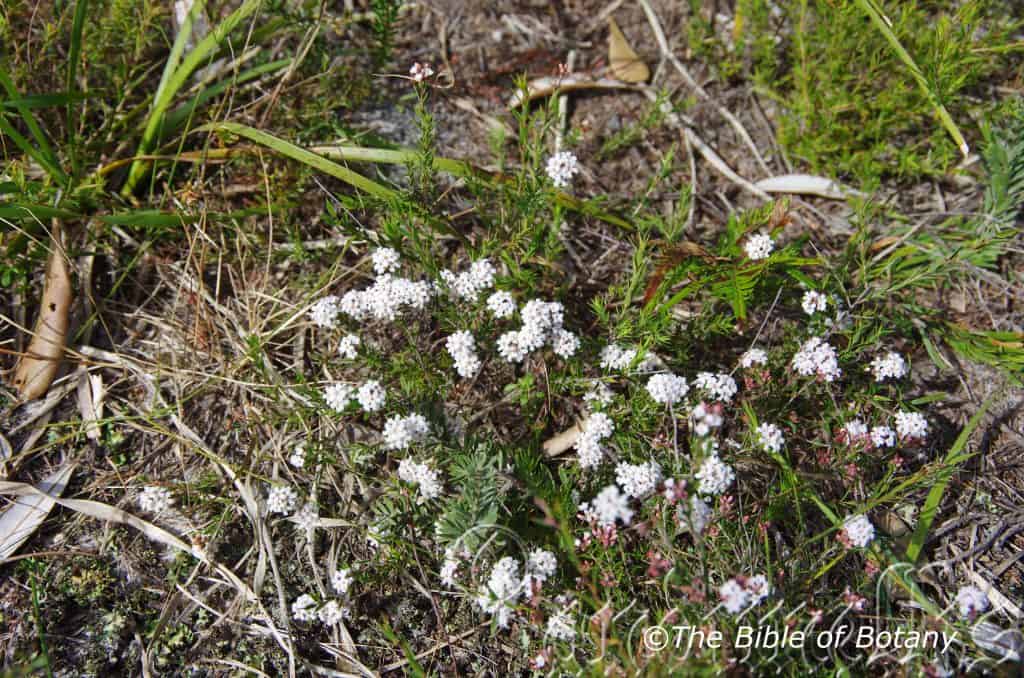
Yuraygir National Park Wooli NSW
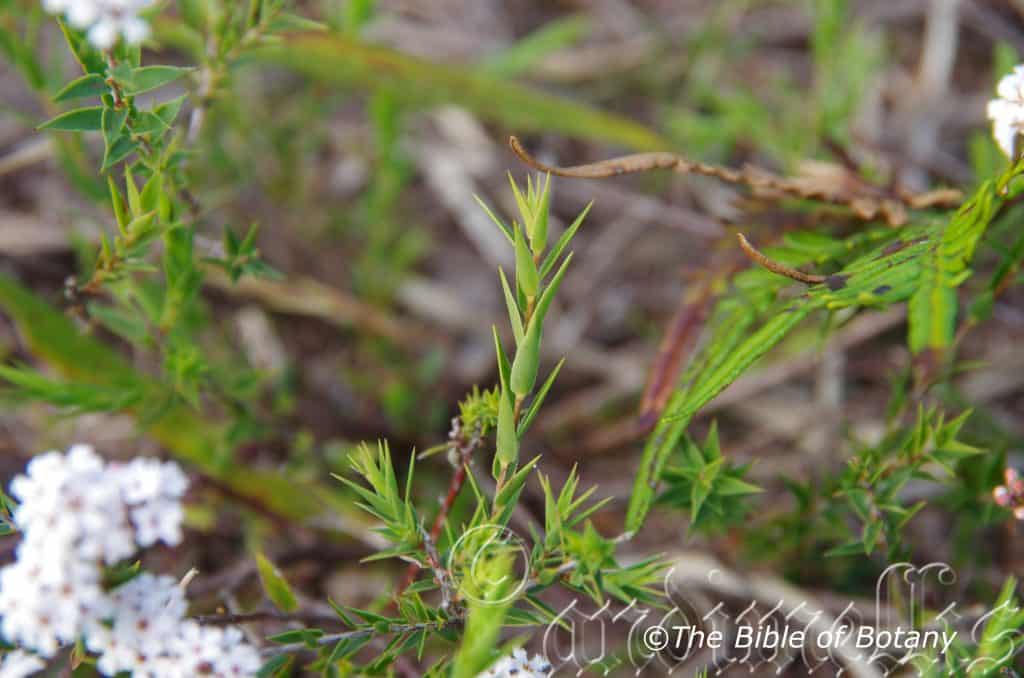
Yuraygir National Park Wooli NSW
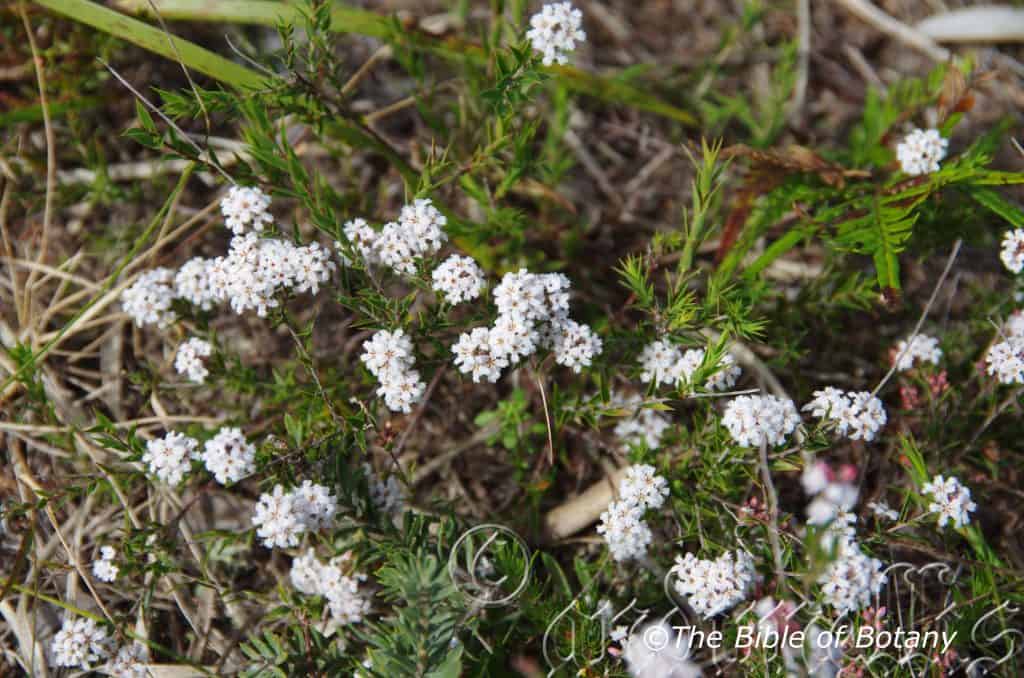
Yuraygir National Park Wooli NSW

Yuraygir National Park Wooli NSW
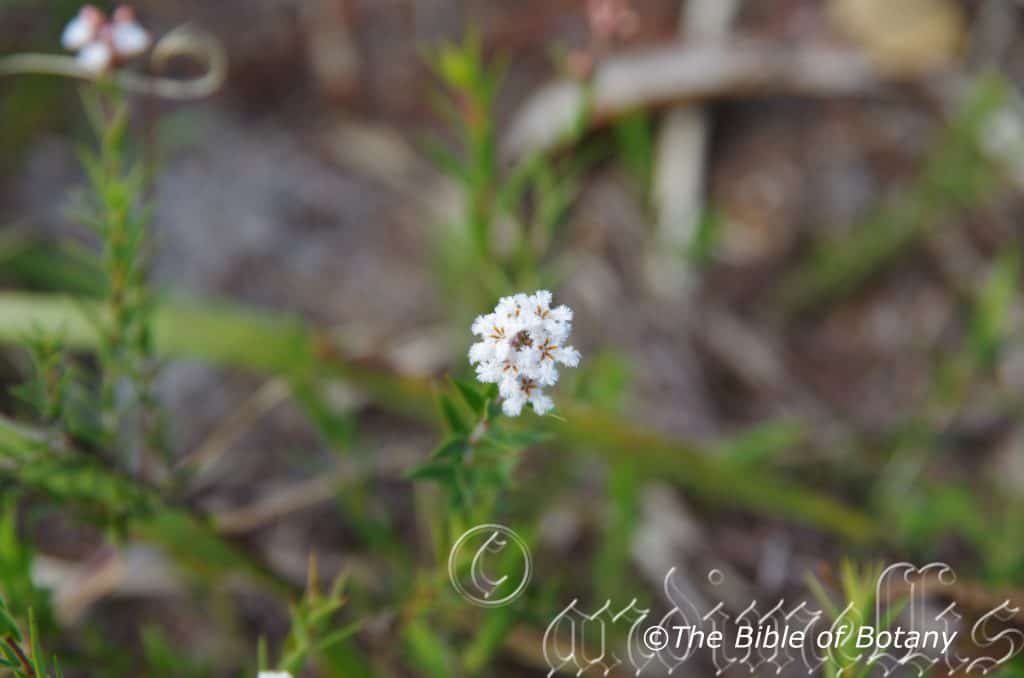
Yuraygir National Park Wooli NSW
Leucopogon deformis
Classification:
Unranked: Magnoliophyta
Class:Magnoliopsida
Superorder: Magnoliidae
Order: Ericales
Family: Ericaceae
Genus: From Leukós, which is Ancient Greek for white and Pogon, which is Ancient Greek for a bristly beard. It refers to the corolla lobes, which have a white beard.
Genus: From Leukós, which is Ancient Greek for white and Pogon, which is Ancient Greek for a bristly beard. It refers to the corolla lobes, which have a white beard.
Specie: From De, which is Latin for down and Forme, which is Latin for to take the shape or form of or Disformare, which is Latin for to disfigure. It refers to the stems or branches, which are twisted and appear to be deformed in all different directions.
Sub species:
Common Name:
Distribution:
Leucopogon deformis is found in several disjunct populations south from Woodgate in central coastal Queensland to Port Stevens in central coastal New South Wales.
https://avh.ala.org.au/occurrences/search?taxa=Leucopogon+deformis#tab_mapView
Habitat Aspect Climate:
Leucopogon deformis prefers full sun to light dappled shade. It grows in dry coastal heath plains. The altitude ranges from 2 meters ASL to 17 meters ASL.
The temperatures range from minus 1 degree in August to 38 degrees in January.
The rainfalls range from lows of 1000mm to an average of 2000mm.
Soil Requirements:
Leucopogon deformis prefers to grow on deep white sands to grey or white peaty sands. The soils are usually derived from accumulated peaty beach sands. The soils pH ranges from 4.5pH to 7pH. It does not tolerate waterlogged soils. Non saline soils to moderately saline soils are tolerated.
Height & Spread:
Wild Plants: 0.5m to 1m by 0.4m to 1m.
Characteristics:
Leucopogon deformis grows as a small heath shrub with grey, strongly twisted, crooked or gnarled stems. The bark is slightly flaky. The new growth and young stems are reddish-brown and glabrous.
Leucopogon deformis’s alternate disjunct leaves are narrow ovate and measure 5mm to 7mm in length by 1mm to 1.2mm in width. The flattened petioles are yellow or pale yellow-green and measure 0.4mm to 0.6mm in length. The bases taper slightly to the petioles while the apexes are acute with a short pungent spine that has a reddish and yellow base. The concolourous laminas are grass-green and glabrous. The stiff laminas are flat while the margins are entire or minutely toothed and covered in fine, white ciliate hairs. The mid vein and parallel lateral veins are obscure on both laminas but can be seen as paler longitudinal striations on the lower lamina.
The inflorescences are born solitary and in pairs with rudimentary buds from the leaf axils. The pale yellow-green bracteoles measure 1.3mm to 1.8mm in length. The white sepals are united on the basal two thirds before dividing into 5 lobes with acute apexes. The sepals measure 2.5mm to 3.2mm in length. The white corolla tubes are erect and measure 12mm to 3mm in length and are glabrous externally and covered in white pulverulent hairs on the apical half internally. The 5 white lobes are strongly reflexed, glabrous externally and densely covered in white pubescent hairs internally. The lobes apexes are acute and measure 1.7mm to 2.6mm in length.
The 5 white filaments are slightly exserted and have fawn to creamy fawn anthers. The white style is exserted, has a white stigma and measures 4mm to 6mm in length. The fragrant flowers appear from March to May.
The fruits are oblong drupes. The berries measure 2.5mm to 3mm in length by 2mm to 2.5mm in diameter. The pale green glabrous drupes turn translucent green with fine pale brown ridges when ripe. The style is persistent on the ripe fruits.
Wildlife:
Leucopogon deformis’s flowers are attractive to small butterflies and pollen flies. The leaves are the food source for the Mountain Blue (Neolucia hobartensis) and the Australian Cranberry moth (Poecilasthena pulchraria).
The fruits are eaten by various small honeyeaters.
The fruits are sweet and have a pleasant taste despite being rather small and difficult to gain without being scratched.
Cultivation:
Despites its beauty in flower Leucopogon biflorus its small size, erect status as a sub shrub and that it grows particularly well on dry or moisture retentive soils it is rarely seen in cultivation. It is suitable for small, medium and large gardens close to the coast or high in the mountains in warm temperate, sub-tropical or tropical gardens. As garden subjects they will grow from 1.5 meter to 2 meters in height by 1 meter to 1.5 meters in diameter when grown in the open. It is cold tolerant to temperatures at least as low as minus 7 degrees once established.
It can be lightly tip pruned if a smaller bushier shrub is required in the earlier stages of growth.
It is best used as an understory shrub in cool moist Eucalyptus gardens where there is plenty of ground light or moist to dry heaths. Placed in the midground or foreground on the lower side of a path or mass planted centrally as a feature offer quick coverage while adding interest. Surrounded by other small native shrubs with small, deep red or deep purple flowers really do make for great talking points. Here I immediately think of Hovea acutifolia, Hovea similis, Graptophyllum excelsum and Graptophyllum illicifolium.
When mass or group planting Leucopogon biflorus use curves and irregular patterns so they can be viewed from different angles around the garden. The flowers are really highlighted against the deep sea green leaves so place them where it is highly visible. Mass plant them at 0.7 meters to 1.2 meter centers.
Though being more problemsome and difficult to grow are long lived and would look good as a bonsai specimen. It could be tried as tub specimen for the patio, veranda or sunny court yard.
Propagation:
Seeds: Collecting seeds from mature plants of Leucopogon deformisis not difficult to collect. Remove the seeds from the ripe fruits. The fresh seeds can be sown directly into a seed raising mix. Cover the seeds to a depth of 1mm in the seed trays.
However stratification over winter may enhance germination rates. This can be achieved by placing the seeds in the fridge for two or three weeks before sowing. Stratification is often a necessity for alpine plants and Leucopogon specie may be no different.
Place the trays in a warm position beneath 30mm shade cloth and keep moist not wet. The seeds can take from 40 to over 100 days to germinate with a strike rate of between 20mm and 60mm. Place the trays beneath 30mm shade cloth and keep moist not wet.When the seedlings are 20mm to 30mm tall, prick them out and plant them into 50mm native tubes using a good quality mix.
The seedlings are slow initially but once the seedlings reach 70mm to 80mm in height they can be repotted into 100mm to 150mm for patio use or into their permanent position in the garden.
Cuttings: Cuttings of Leucopogon deformis are difficult to strike. Methods described are based on our experiences with Leucopogon lanceolatus.
Use 70mm to 100mm long half ripened material when growing from cuttings from the present season’s growth which will give the best results.
Take them in early spring as soon as the plants can cope with the removal of growing shoots. Remove a few cuttings from each plant while it is in active growth. Remove any flowers buds that may be emerging.
1 Prepare the cutting mix by adding one third sharp clean river sand, one third peat and one third perlite. These ingredients are sterilize,
2 Select good material from non diseased plants,
3 Select semi green stems for cuttings. Look for a stem with two or three nodes,
4 Place the cutting on a flat, hard surface, and make a clean cut down one side of the cutting at the base for 10mm with a sharp sterile knife or razor blade. – This scarification of the node will increase the chances of roots emerging from this spot. Now remove all but one or two the leaves, leaving the apex leaves in tact. If the leaves are very large in proportion to the stem, cut off the apical halves.
5 Fill a saucer with water, and place a little medium strength rooting hormone into another container like a milk bottle top. Dip the node end of the cutting into the water and then into the rooting hormone. Tap off any excess hormone,
6 Use a small dipple stick or old pencil to poke a hole into the soilless potting mix. Ensure the hole is slightly larger than the stem diameter and be careful not to wipe the rooting hormone off the cuttings base, place the cuttings in a pattern ensuring the cuttings are not touching each other,
7 Place the cuttings in a moist sterile seed raising mix at 45 degrees to 70 degree angle with half the cutting below the mix and half above the mix.
8 When the cuttings have struck, open the bag to allow air circulation for a few days to a week,
9 Once hardened off remove the cuttings from the bag and allow to further hardening for a few more days,
10 Transplant into a good potting mix to grow on.
Fertilize using seaweed, fish emulsion or organic chicken pellets soaked in water on an alternate basis. Fertilize every two months until the plants are established then twice annually in early September or March to maintain health, vitality and better flowering. Once the seedlings reach 100mm to 150mm in height they can be planted out into their permanent position.
Further Comments from Readers:
Hi reader, it seems you use The Bible of Botany a lot. That’s great as we have great pleasure in bringing it to you! It’s a little awkward for us to ask, but our first aim is to purchase land approximately 1,600 hectares to link several parcels of N.P. into one at The Pinnacles NSW Australia, but we need your help. We’re not salespeople. We’re amateur botanists who have dedicated over 30 years to saving the environment in a practical way. We depend on donations to reach our goal. If you donate just $5, the price of your coffee this Sunday, We can help to keep the planet alive in a real way and continue to bring you regular updates and features on Australian plants all in one Botanical Bible. Any support is greatly appreciated. Thank you.
In the spirit of reconciliation we acknowledge the Bundjalung, Gumbaynggirr and Yaegl and all aboriginal nations throughout Australia and their connections to land, sea and community. We pay our respect to their Elders past, present and future for the pleasures we have gained.
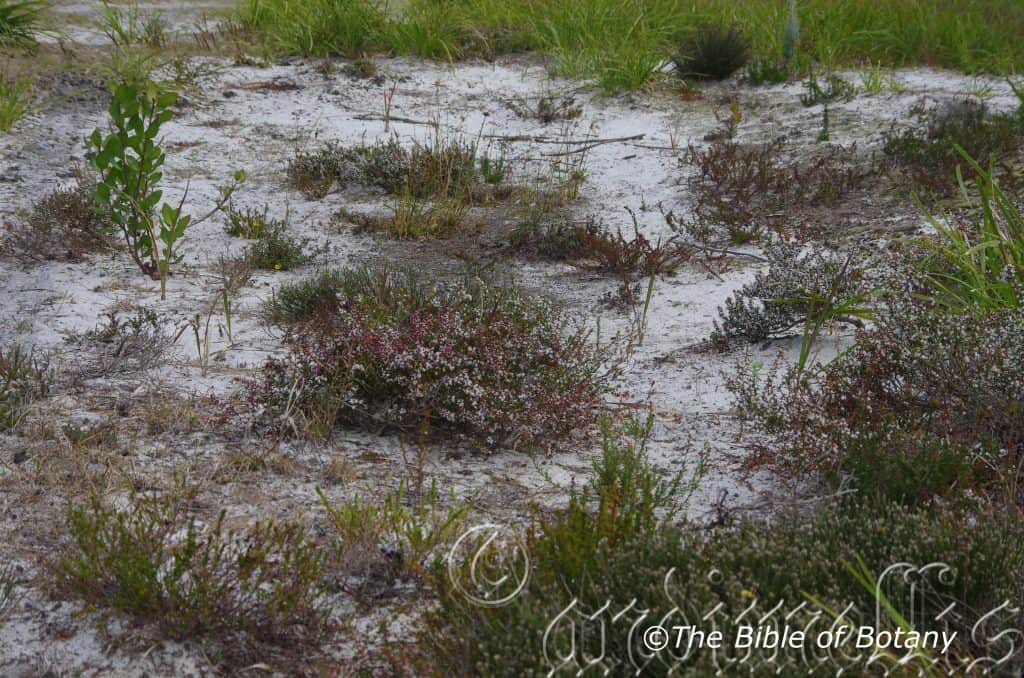
Yuraygir National Park Wooli NSW
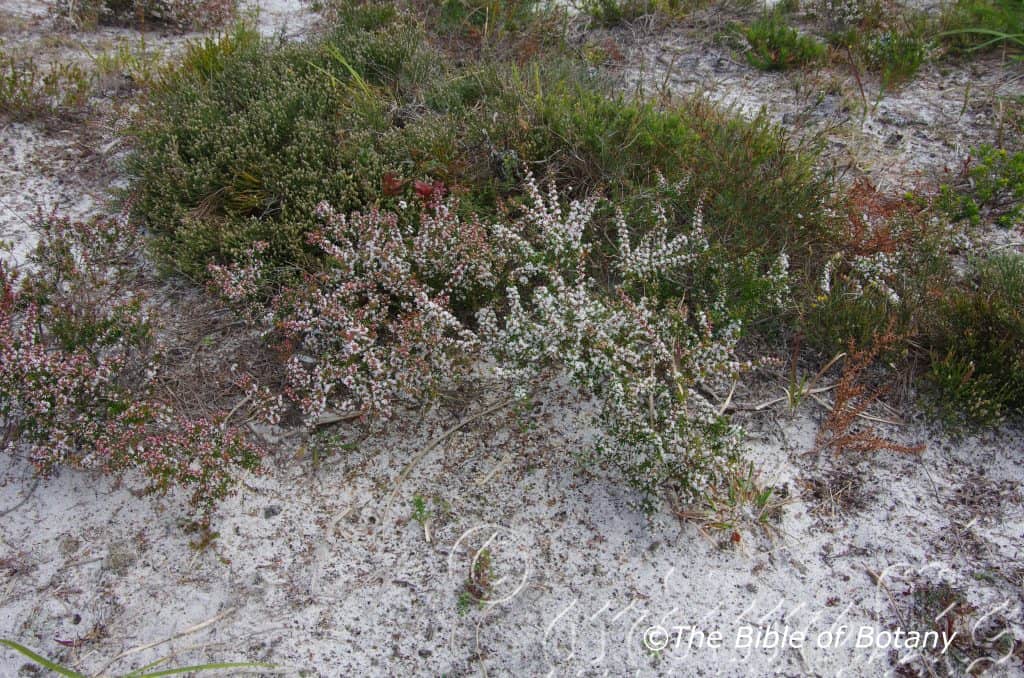
Yuraygir National Park Wooli NSW
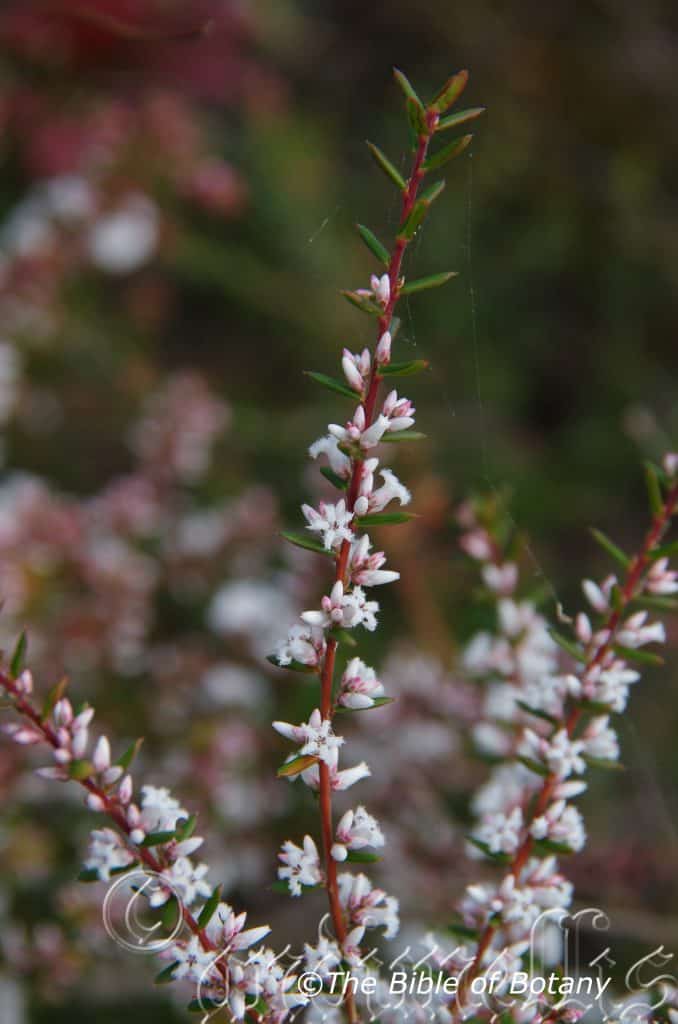
Yuraygir National Park Wooli NSW
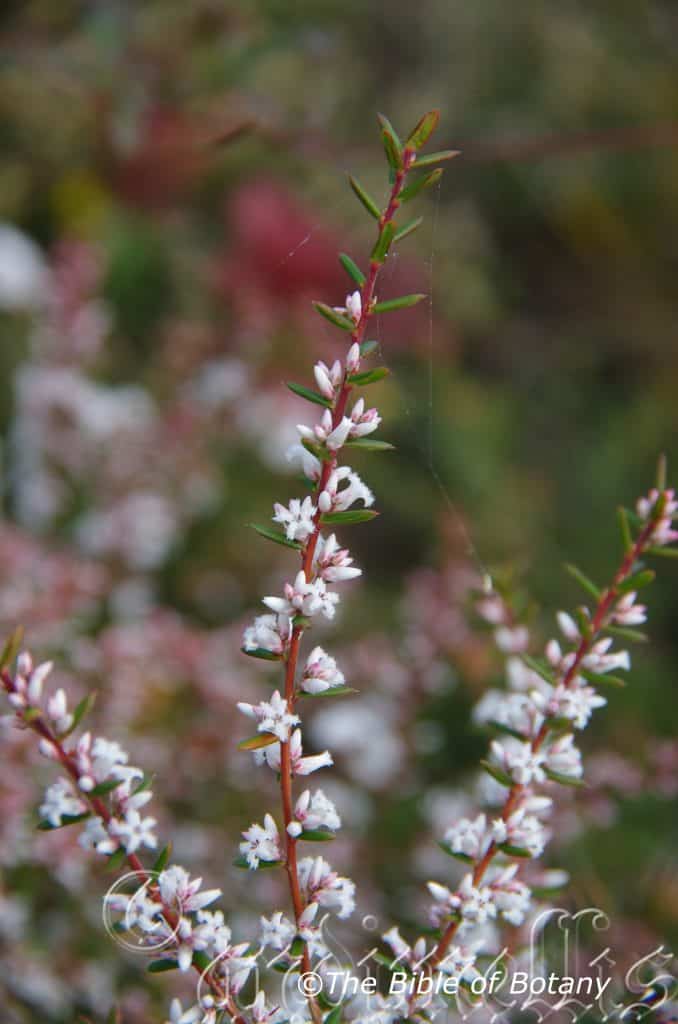
Yuraygir National Park Wooli NSW
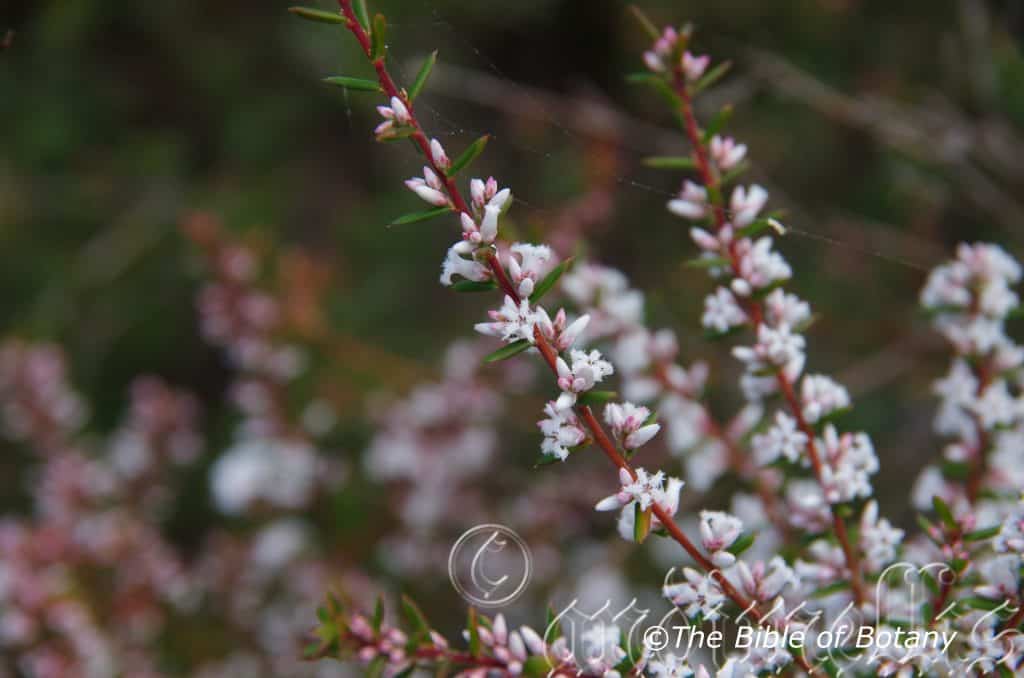
Yuraygir National Park Wooli NSW
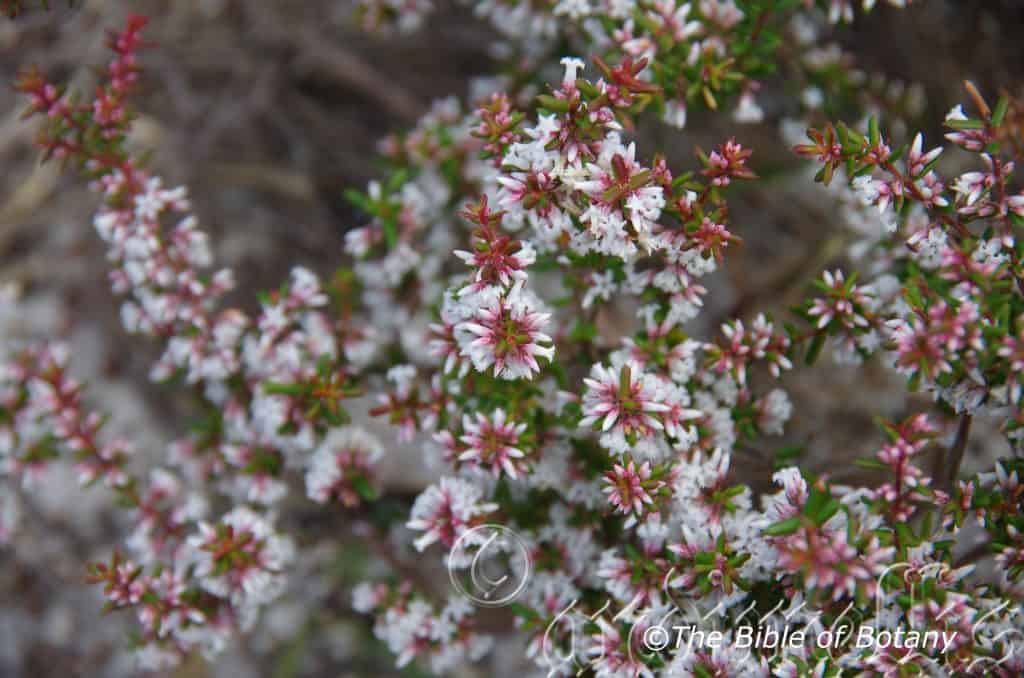
Yuraygir National Park Wooli NSW
Leucopogon ericoides
Classification:
Unranked: Magnoliophyta
Class:Magnoliopsida
Superorder: Magnoliidae
Order: Ericales
Family: Ericaceae
Genus: From Leukós, which is Ancient Greek for white and Pogon, which is Ancient Greek for a bristly beard. It refers to the corolla lobes, which have a white beard.
Specie: From Erica, which is Latin for heath and Eîdos/Oides, which is Ancient Greek for alike or similar to. It refers to plants, which have foliage similar to the exotic Erica genus.
Sub species:
Common Name: Pink Bearded Heath.
Distribution:
Leucopogon ericoides is found south and east of a line from Caloundra to the Warrumba Range and Pine Mountain Range near Tumit in New South Wales Castlemaine and Mount Williams Range, Redman Gap South of Mount Cassel in Victoria and Mount Scott Conservation Park with 2 disjunct populations at Maggea on the Murray River and Hindmarsh Falls in south eastern South Australia. There is a disjunct population much further north on the Fitzroy River and an isolated population on the Cobar Penelope plain.
It is found in most of Tasmania except for the central and eastern highlands including King Island and the Flinders Island group as well as most of the major Islands in Bass Strait.
https://avh.ala.org.au/occurrences/search?taxa=Leucopogon+ericoides#tab_mapView
Habitat Aspect Climate:
Leucopogon ericoides prefers full sun to light dappled shade. It grows in dry sclerophyll forest, drier coastal heaths, and ridge heaths from the coast to the mountains below the alpine regions. The altitude ranges from 5 meters ASL to 1550 meters ASL.
The temperatures range from minus 6 degrees in August to 38 degrees in January.
The rainfalls range from lows of 300mm to an average of 3000mm.
Soil Requirements:
Leucopogon ericoides prefers to grow on sands, sandy loams to light gritty clays with copious quantities of gravel or rock. The soils are usually derived from partially decomposed to decomposed sandstones and granites or accumulated beach sands. The soils pH ranges from 5pH to 6.5pH. It does not tolerate waterlogged soils. Non saline soils to moderately saline soils are tolerated.
Height & Spread:
Wild Plants: 0.5m to 1.5m by 0.5m to 1m.
Characteristics:
Leucopogon ericoides’s stems are grey and erect to divaricate. The bark is slightly flaky. The new growth and young stems are reddish-brown and sparsely to moderately covered in fine, white pubescent hairs.
]The alternate disjunct leaves are usually narrow oblong or rarely narrow elliptical and measure 4.2mm to 15.5mm in length by 0.7mm to 2.3mm in width. The bases are truncate while the apexes are acute with a long pungent spine that has a reddish or yellow base and measures 0.5mm to 1.5mm in length. The concolourous laminas are grass-green, stiff, glabrous or sparsely to moderately covered in white pubescent hairs. The laminas are convex on the upper lamina and are revolute close to the margins while the margins are entire. The mid vein and parallel lateral veins are obscure on both laminas but can be seen as paler longitudinal striations on the lower lamina.
The inflorescences are born solitary or in small clusters of 2 to 3 or rarely 4 individual flowers from the leaf axil or 1 to 11 individual flowers on short spikes that measure 4mm to 10mm in length. The peduncles measure 1mm to 3mm in length. The pastel yellow-green and white bracteoles’ apexes are obtuse while the bracteoles measure 0.9mm to 1.5mm in length. The white sepals are united on the basal third before dividing into 5 lobes with acute apexes. The sepals measure 1.5mm to 2.5mm in length. The white to pastel pink corolla tubes are erect and measure 2mm to 2.5mm in length and are glabrous externally and densely covered in white pulverulent hairs on the apical third internally. The 5 white lobes are reflexed, glabrous externally and densely covered in white pubescent hairs internally. The lobes apexes are acute and measure 1.8mm to 2.3mm in length.
The 5 white filaments are level with the base of the lobes while the obloidal, brown anthers are exserted and measure 0.3mm to 0.4mm in length. The pastel fawn to pastel pinkish-fawn style is level to slightly exsert and has a white stigma. The fragrant flowers appear from July to October.
The fruits are curved obloidal drupes. The drupes measure 2.5mm to 5.8mm in length by 2mm to 5mm in diameter. The pale green glabrous drupes turn translucent brown with prominent brown ridges when ripe. The berries are sparsely covered in white puberulent hairs. The style remnant is persistent on the ripe fruits.
Wildlife:
Leucopogon ericoides’ flowers are attractive to small butterflies and pollen flies. The leaves are the food source for the Mountain Blue (Neolucia hobartensis) and the Australian Cranberry moth (Poecilasthena pulchraria).
The fruits are eaten by various small honeyeaters.
The fruits are sweet and have a pleasant taste despite being rather small and difficult to gain without being scratched.
Cultivation:
Leucopogon ericoides are beautiful small erect sub shrubs that grow particularly well on dry or moisture retentive soils. It is suitable for small, medium and large gardens close to the coast or high in the mountains in warm temperate, sub-tropical or tropical gardens. As garden subjects they will grow from 0.8 meters to 1 meter in height by 0.6 meter to 0.8 meters in diameter when grown in the open. It is cold tolerant to temperatures at least as low as minus 4 degrees once established.
It can be lightly tip pruned if a smaller bushier shrub is required in the earlier stages of growth.
It is best used as an understory shrub in cool moist Eucalyptus gardens where there is plenty of ground light or moist to dry heaths. Placed in the midground or foreground on the lower side of a path or mass planted centrally as a feature offer quick coverage while adding interest. Surrounded by other small native shrubs with small, deep red or deep purple flowers really do make for great talking points. Here I immediately think of Hovea acutifolia, Hovea similis, Graptophyllum excelsum and Graptophyllum illicifolium.
When mass or group planting Leucopogon ericoides use curves and irregular patterns so they can be viewed from different angles around the garden. The flowers are really highlighted against the deep sea green leaves so place them where it is highly visible. Mass plant them at 0.5 meters to 0.7 meter centers.
The plants make excellent tub specimens for the patio, veranda or sunny court yard.
Propagation:
Seeds: Collecting seeds from mature plants of Leucopogon ericoides is not difficult to collect. Remove the seeds from the ripe fruits. The fresh seeds can be sown directly into a seed raising mix. Cover the seeds to a depth of 1mm in the seed trays.
However stratification over winter may enhance germination rates. This can be achieved by placing the seeds in the fridge for two or three weeks before sowing. Stratification is often a necessity for alpine plants and Leucopogon specie may be no different.
Place the trays in a warm position beneath 30mm shade cloth and keep moist not wet. The seeds can take from 40 to over 100 days to germinate with a strike rate of between 20mm and 60mm. Place the trays beneath 30mm shade cloth and keep moist not wet.When the seedlings are 20mm to 30mm tall, prick them out and plant them into 50mm native tubes using a good quality mix.
The seedlings are slow initially but once the seedlings reach 70mm to 80mm in height they can be repotted into 100mm to 150mm for patio use or into their permanent position in the garden.
Cuttings: Cuttings of Leucopogon ericoides are apparently difficult to strike. Methods described are based on our experiences with Leucopogon lanceolatus.
Use 70mm to 100mm long half ripened material when growing from cuttings from the present season’s growth which will give the best results.
Take them in early spring as soon as the plants can cope with the removal of growing shoots. Remove a few cuttings from each plant while it is in active growth. Remove any flowers buds that may be emerging.
1 Prepare the cutting mix by adding one third sharp clean river sand, one third peat and one third perlite. These ingredients are sterilize,
2 Select good material from non diseased plants,
3 Select semi green stems for cuttings. Look for a stem with two or three nodes,
4 Place the cutting on a flat, hard surface, and make a clean cut down one side of the cutting at the base for 10mm with a sharp sterile knife or razor blade. – This scarification of the node will increase the chances of roots emerging from this spot. Now remove all but one or two the leaves, leaving the apex leaves in tact. If the leaves are very large in proportion to the stem, cut off the apical halves.
5 Fill a saucer with water, and place a little medium strength rooting hormone into another container like a milk bottle top. Dip the node end of the cutting into the water and then into the rooting hormone. Tap off any excess hormone,
6 Use a small dipple stick or old pencil to poke a hole into the soilless potting mix. Ensure the hole is slightly larger than the stem diameter and be careful not to wipe the rooting hormone off the cuttings base, place the cuttings in a pattern ensuring the cuttings are not touching each other,
7 Place the cuttings in a moist sterile seed raising mix at 45 degrees to 70 degree angle with half the cutting below the mix and half above the mix.
8 When the cuttings have struck, open the bag to allow air circulation for a few days to a week,
9 Once hardened off remove the cuttings from the bag and allow to further hardening for a few more days,
10 Transplant into a good potting mix to grow on.
Fertilize using seaweed, fish emulsion or organic chicken pellets soaked in water on an alternate basis. Fertilize every two months until the plants are established then twice annually in early September or March to maintain health, vitality and better flowering. Once the seedlings reach 100mm to 150mm in height they can be planted out into their permanent position.
Further Comments from Readers:
Hi reader, it seems you use The Bible of Botany a lot. That’s great as we have great pleasure in bringing it to you! It’s a little awkward for us to ask, but our first aim is to purchase land approximately 1,600 hectares to link several parcels of N.P. into one at The Pinnacles NSW Australia, but we need your help. We’re not salespeople. We’re amateur botanists who have dedicated over 30 years to saving the environment in a practical way. We depend on donations to reach our goal. If you donate just $5, the price of your coffee this Sunday, We can help to keep the planet alive in a real way and continue to bring you regular updates and features on Australian plants all in one Botanical Bible. Any support is greatly appreciated. Thank you.
In the spirit of reconciliation we acknowledge the Bundjalung, Gumbaynggirr and Yaegl and all aboriginal nations throughout Australia and their connections to land, sea and community. We pay our respect to their Elders past, present and future for the pleasures we have gained.
Leucopogon esquamatus
Classification:
Unranked: Magnoliophyta
Class:Magnoliopsida
Superorder: Magnoliidae
Order: Ericales
Family: Ericaceae
Genus: From Leukós, which is Ancient Greek for white and Pogon, which is Ancient Greek for a bristly beard. It refers to the corolla lobes, which have a white beard.
Specie: From A/E, which is Greek/Latin for without or not having and Squamae, which is Latin for scaly. It refers to species, which do not have scales when compared to other species in the genus.
Sub species:
Common Name:
Distribution:
Leucopogon esquamatus is found south from Caloundra in southern coastal Queensland to Marlon in Victoria. It is mainly found on and east of the Great Dividing Range except for a disjunct population in the Warrumbungles.
It is also found on the Flinders Island group of islands in Bass Strait.
https://avh.ala.org.au/occurrences/search?taxa=Leucopogon+esquamatus#tab_mapView
Habitat Aspect Climate:
Leucopogon esquamatus prefers full sun to light dappled shade. It grows in swampy heaths, moist heaths or dry sclerophyll forest in stony areas and below cliff faces. The altitude ranges from 5 meter ASL to 1200 meters ASL.
The temperatures range from minus 4 degrees in August to 38 degrees in January.
The rainfalls range from lows of 600mm to an average of 1600mm.
Soil Requirements:
Leucopogon esquamatus prefers to grow on poor sands, peaty sands, poor sandy loams or screes below sandstone cliffs. The soils are deep or shallow. The soils are usually derived from decomposed sandstones or accumulated beach sands. The soils pH ranges from 5pH to 6.5pH. It does not tolerate waterlogged soils. Non saline soils to moderately saline soils are tolerated.
Height & Spread:
Wild Plants: 0.5m to 1m by 0.5m to 0.8m.
Characteristics:
Leucopogon esquamatus grows as a small sub shrub grey, erect to divaricate stems. The bark is slightly flaky. The new growth and young stems are reddish-brown and glabrous or covered in fine, white hispid hairs.
The alternate leaves are usually elliptic or at times obovate and measure 7mm to 15mm in length by 2mm to 3.2mm in width. The petioles measure 0.8mm to 1.5mm in length. The bases taper to the petiole while the apexes are acute with a long grey pungent spine that has a black base and measures 0.5mm to 1mm in length. The discolourous laminas are grass-green to blue-green or olive-green, stiff and glabrous on the upper laminas while the lower laminas are paler. The laminas are flat while the margins are entire on the basal half to two thirds and very finely toothed on the apical half to third. The mid vein and parallel lateral veins are obscure on both laminas but can be seen as paler longitudinal striations on the lower lamina.
The inflorescences are born solitary with a rudimentary bud or in pairs from the upper leaf axils. The peduncles measure 1mm to 1.5mm in length. The pastel yellow-green, pastel ochre or pale olive–yellow bracteoles’ apexes are obtuse while the bracteoles measure 1.2mm to 1.5mm in length. The white sepals are united on the basal third before dividing into 5 lobes with acute apexes. The sepals measure 2.5mm to 3mm in length. The white corolla tubes measure 1.2mm to 2mm in length and are glabrous externally and densely covered in white, reflexed hirsute hairs on the apical two thirds internally. The 5 white lobes are reflexed, glabrous externally and densely covered in white, reflexed hirtellous hairs internally. The lobes apexes are tapered obtuse and measure 2.3mm to 3.3mm in length.
The 5 white filaments are level or slightly exserted with the base of the lobes while the obloidal, pink anthers are exserted and measure 0.4mm to 0.7mm in length. The pale pinkish style is slightly exserted and has a white stigma. The fragrant flowers appear from August to September.
The fruits are curved obloidal drupes. The drupes measure 3.8mm to 4.5mm in length by 1.3m to 1.5mm in diameter. The pale green glabrous drupes turn translucent ochre when ripe. The style remnant is persistent on the ripe fruits.
Wildlife:
Leucopogon esquamatus’s flowers are attractive to small butterflies and pollen flies. The leaves are the food source for the Australian Cranberry moth, Poecilasthena pulchraria.
The fruits are eaten by various small honeyeaters.
The fruits are sweet and have a pleasant taste despite being rather small.
Cultivation:
Leucopogon esquamatus are beautiful small erect sub shrubs that grow particularly well on dry or moisture retentive but well drained soils. It is suitable for small, medium and large gardens close to the coast or high in the mountains in warm temperate, sub-tropical or tropical gardens. As garden subjects they will grow from 0.8 meters to 1 meter in height by 0.6 meters to 0.8 meters in diameter when grown in the open. It is cold tolerant to temperatures at least as low as minus 3 degrees once established.
It can be lightly tip pruned if a smaller bushier shrub is required in the earlier stages of growth.
It is best used as an understory shrub in cool moist Eucalyptus gardens where there is plenty of ground light or moist to dry heaths. Scattered throughout the bush or heath garden its large bright green or drab olive-yellow leaves are stand out point. It is not a plant for mass planting and is far better suited to heath gardens to break the monotony of fine leaf plants especially when few plants are in flower. Surrounded by other small native shrubs with fine grey-green foliage and small, deep red or deep purple flowers it really does make for a great talking point. Here I immediately think of Leucopogon scariosa, Juncus usitatus, Isopogon mnoraifolius, Isopogon anemonifolius, Grevillea sericea, Acacia brownii orAcacia baileyana prostrate form.
When mass or group planting Leucopogon esquamatus use curves and irregular patterns so they can be viewed from different angles around the garden. The flowers are really highlighted against the deep sea green leaves so place them where it is highly visible. Mass plant them at 0.6 meters to 1 meter centers.
The plants make excellent tub specimens for the patio, veranda or sunny court yard.
Propagation:
Seeds: Collecting seeds from mature plants of Leucopogon esquamatus is not difficult to collect. Remove the seeds from the ripe fruits. The fresh seeds can be sown directly into a seed raising mix. Cover the seeds to a depth of 1mm in the seed trays.
However stratification over winter may enhance germination rates. This can be achieved by placing the seeds in the fridge for two or three weeks before sowing. Stratification is often a necessity for alpine plants and Leucopogon specie may be no different.
Place the trays in a warm position beneath 30mm shade cloth and keep moist not wet. The seeds can take from 40 to over 100 days to germinate with a strike rate of between 20mm and 60mm. Place the trays beneath 30mm shade cloth and keep moist not wet.When the seedlings are 20mm to 30mm tall, prick them out and plant them into 50mm native tubes using a good quality mix.
The seedlings are slow initially but once the seedlings reach 70mm to 80mm in height they can be repotted into 100mm to 150mm for patio use or into their permanent position in the garden.
Cuttings: Cuttings are apparently difficult to strike. Methods described are based on our experiences with Leucopogon lanceolatus.
Use 70mm to 100mm long half ripened material when growing from cuttings from the present season’s growth which will give the best results.
Take them in early spring as soon as the plants can cope with the removal of growing shoots. Remove a few cuttings from each plant while it is in active growth. Remove any flowers buds that may be emerging.
1 Prepare the cutting mix by adding one third sharp clean river sand, one third peat and one third perlite. These ingredients are sterilize,
2 Select good material from non diseased plants,
3 Select semi green stems for cuttings. Look for a stem with two or three nodes,
4 Place the cutting on a flat, hard surface, and make a clean cut down one side of the cutting at the base for 10mm with a sharp sterile knife or razor blade. – This scarification of the node will increase the chances of roots emerging from this spot. Now remove all but one or two the leaves, leaving the apex leaves in tact. If the leaves are very large in proportion to the stem, cut off the apical halves.
5 Fill a saucer with water, and place a little medium strength rooting hormone into another container like a milk bottle top. Dip the node end of the cutting into the water and then into the rooting hormone. Tap off any excess hormone,
6 Use a small dipple stick or old pencil to poke a hole into the soilless potting mix. Ensure the hole is slightly larger than the stem diameter and be careful not to wipe the rooting hormone off the cuttings base, place the cuttings in a pattern ensuring the cuttings are not touching each other,
7 Place the cuttings in a moist sterile seed raising mix at 45 degrees to 70 degree angle with half the cutting below the mix and half above the mix.
8 When the cuttings have struck, open the bag to allow air circulation for a few days to a week,
9 Once hardened off remove the cuttings from the bag and allow to further hardening for a few more days,
10 Transplant into a good potting mix to grow on.
Fertilize using seaweed, fish emulsion or organic chicken pellets soaked in water on an alternate basis. Fertilize every two months until the plants are established then twice annually in early September or March to maintain health, vitality and better flowering. Once the seedlings reach 100mm to 150mm in height they can be planted out into their permanent position.
Further Comments from Readers:
Hi reader, it seems you use The Bible of Botany a lot. That’s great as we have great pleasure in bringing it to you! It’s a little awkward for us to ask, but our first aim is to purchase land approximately 1,600 hectares to link several parcels of N.P. into one at The Pinnacles NSW Australia, but we need your help. We’re not salespeople. We’re amateur botanists who have dedicated over 30 years to saving the environment in a practical way. We depend on donations to reach our goal. If you donate just $5, the price of your coffee this Sunday, We can help to keep the planet alive in a real way and continue to bring you regular updates and features on Australian plants all in one Botanical Bible. Any support is greatly appreciated. Thank you.
In the spirit of reconciliation we acknowledge the Bundjalung, Gumbaynggirr and Yaegl and all aboriginal nations throughout Australia and their connections to land, sea and community. We pay our respect to their Elders past, present and future for the pleasures we have gained.
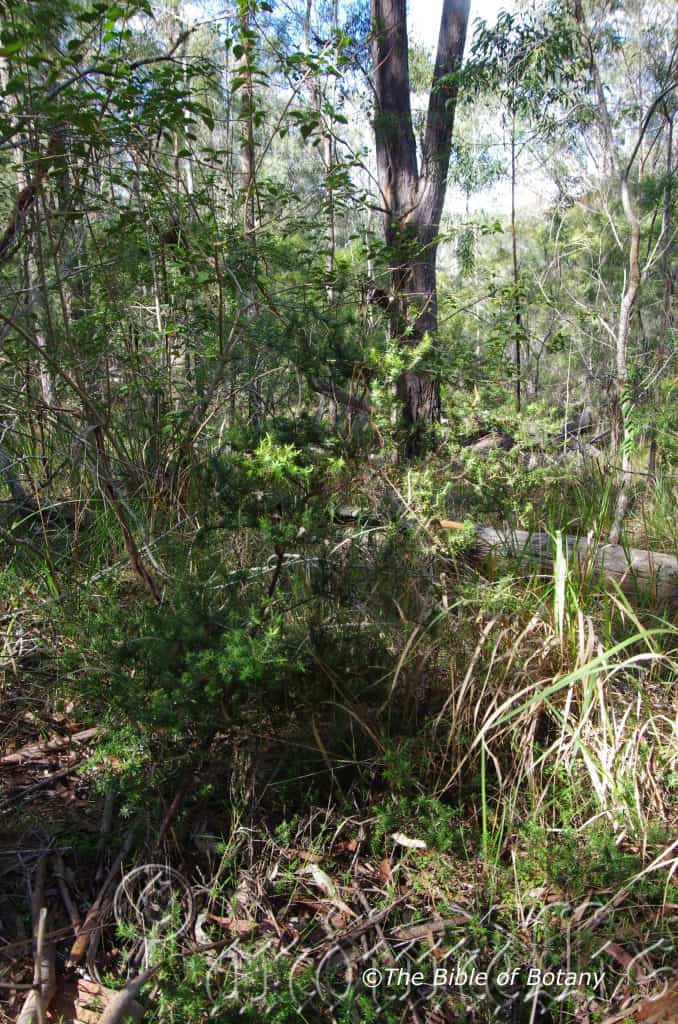
Pillar Valley NSW

Pillar Valley NSW

Pillar Valley NSW
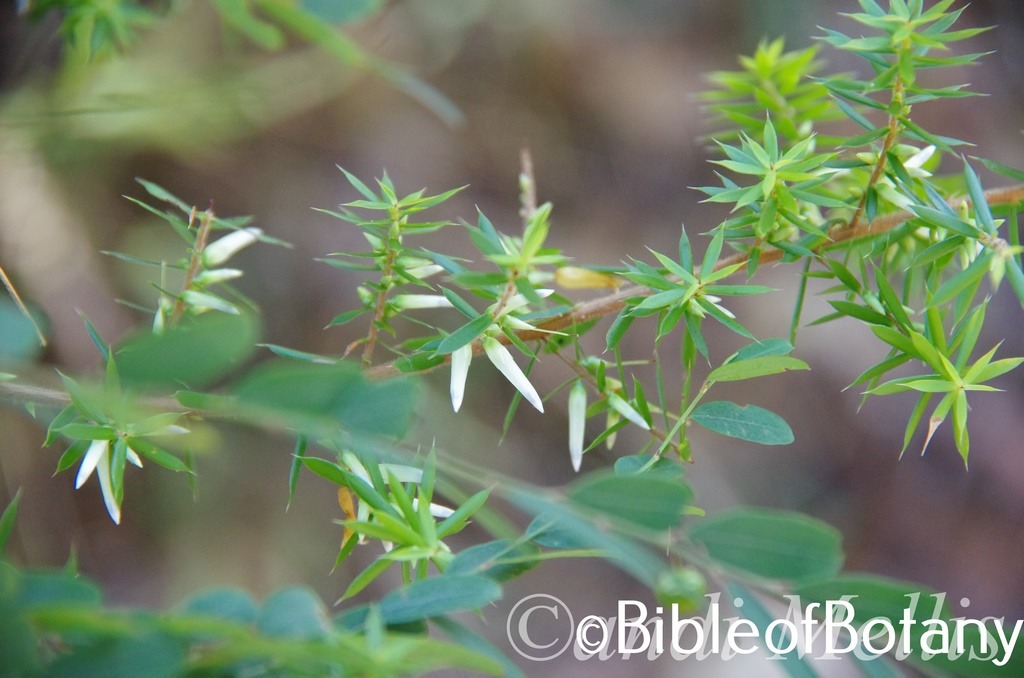
Yuraygir National Park NSW
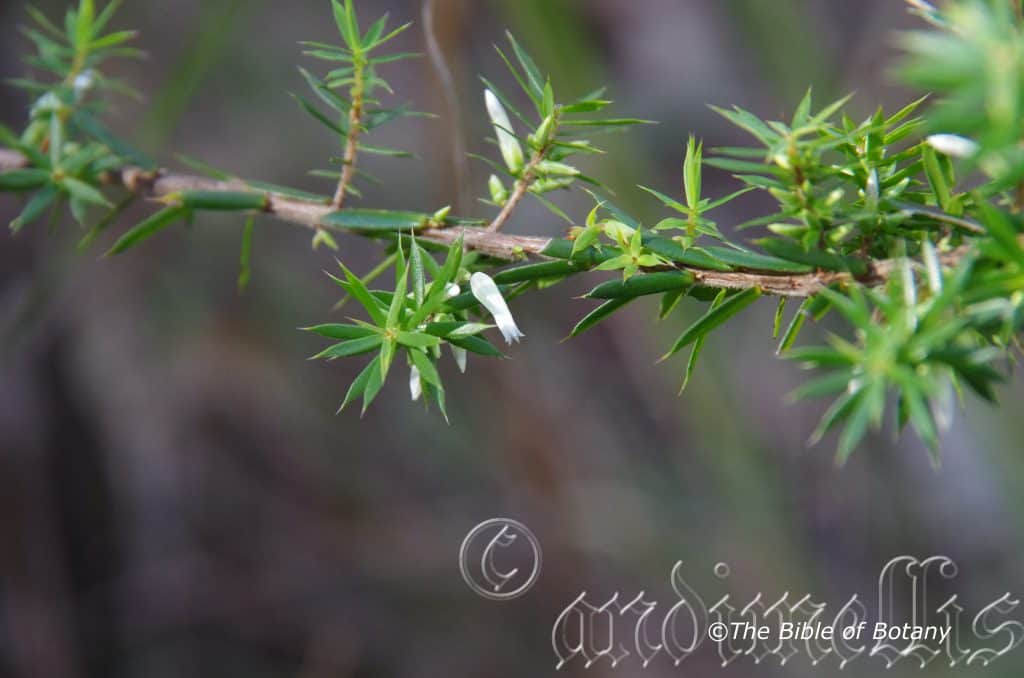
Pillar Valley NSW

Yuraygir National Park NSW
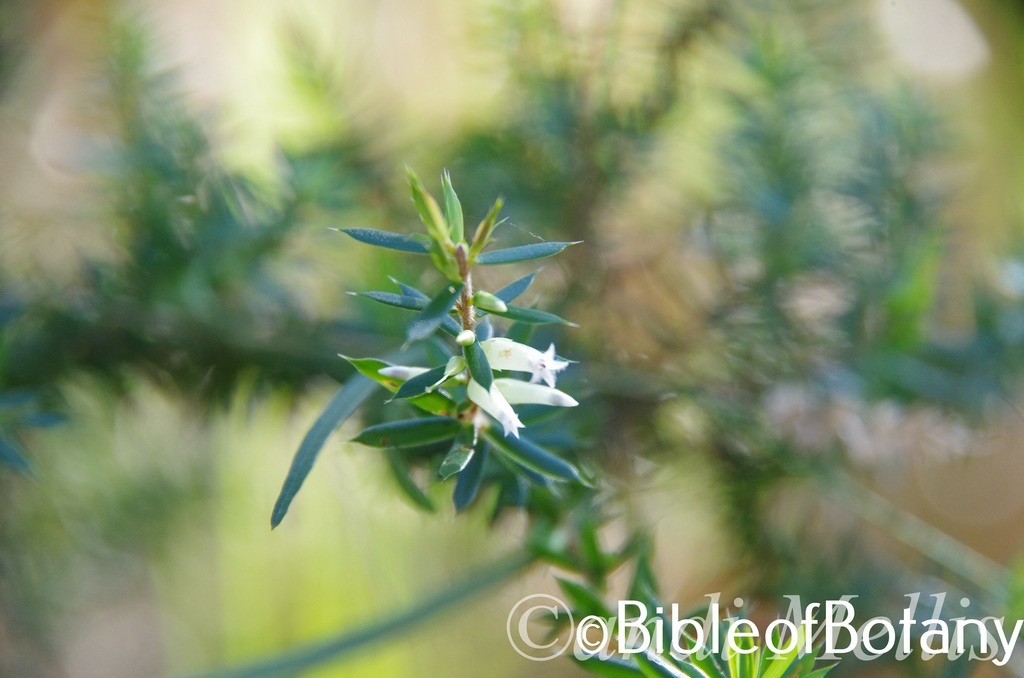
Yuraygir National Park NSW
Leucopogon juniperinus
Classification:
Unranked: Magnoliophyta
Class:Magnoliopsida
Superorder: Magnoliidae
Order: Ericales
Family: Ericaceae
Genus: From Leukós, which is Ancient Greek for white and Pogon, which is Ancient Greek for a bristly beard. It refers to the corolla lobes, which have a white beard.
Specie: From Juniperus, which is Latin for a pine tree. It refers to plants, which resemble a pine tree or conifer.
Sub species:
Common Name: Prickly Bearded Heath.
Distribution:
Leupcoogon juniperinus is found south from Mount Woocoo near Maryborough in south eastern coastal Queensland to the Mitchell River Gorge in eastern Victoria. It is also found in 5 disjunct populations in the Eungella National Park in Queensland, on the western slopes at Warialda and Mount Lindsey in New South Wales and near Mount Beauty and Newtown in Victoria.
https://avh.ala.org.au/occurrences/search?taxa=Leucopogon+juniperinus#tab_mapView
Habitat Aspect Climate:
Leupcoogon juniperinus prefers full sun to light dappled shade. It grows in dry open sclerophyll forests wet open sclerophyll forest or Eucalyptus woodlands. The altitude ranges from 1 meter ASL to 320 meters ASL.
The temperatures range from minus 4 degrees in August to 38 degrees in January.
The rainfalls range from lows of 500mm to an average of 1500mm.
Soil Requirements:
Leupcoogon juniperinus prefers to grow on various sandy loams to medium clays with copious quantities of gravel or rock over shale or sandstone. The soils are usually derived from decomposed sandstones, shale or accumulated beach sands. The soils pH ranges from 5pH to 6.5pH. It does not tolerate waterlogged soils. Non saline soils to moderately saline soils are tolerated.
Height & Spread:
Wild Plants: 0.5m to 1m by 0.5m to 0.8m.
Characteristics:
Leupcoogon juniperinus grows as an erect shrub with densely branched grey stems and longitudinal striations. The apical stems are reddish-brown while the new growth and young stems are pale yellow-green often tinged pink. It is sparsely covered in fine, white puberulent hairs.
The alternate, oblong to obovate leaves measure 5.6mm to 12mm in length by 1.2mm to 2.5mm in width. The petioles measure 0.3mm to 0.6mm in length. The bases taper slightly and are truncate while the apexes are acute with a long green pungent spine that has a sea-green base and measures 0.6mm to 1mm in length. The concolourous laminas are deep green to sea-green, thin, stiff and glabrous. The laminas are gently convex on the upper surface while the margins are recurve and are finely toothed. The mid vein is obscure on the basal half and prominent on the apical half of the lower lamina while the parallel lateral veins are obscure on both laminas but can be seen as paler longitudinal striations on the lower lamina.
The inflorescences are born solitary with a rudimentary bud from the upper leaf axils. The peduncles measure 1mm to 1.2mm in length. The pale green bracteoles’ apexes are broad obtuse while the bracteoles measure 1.3mm to 1.7mm in length. The pastel green and white sepals are united on the basal third before dividing into 5 lobes with long, narrow acute apexes. The sepals measure 2.8mm to 3.3mm in length. The white corolla tubes are glabrous externally and sparsely to moderately covered in short, white, puberulent hairs on the apical two thirds internally and measure 5.4mm to 8mm in length. The 5 white lobes are erect to divaricate, glabrous externally and sparsely to moderately covered in white, pubescent hairs internally. The lobes apexes are acute and measure 2mm to 3mm in length.
The 5 brown to chocolate brown stamens are slightly inserted below the base of the lobes. The pale pinkish style is slightly exserted and has a white stigma. The fragrant flowers appear from May to October.
Leupcoogon juniperinus’s fruits are curved ovoidal to ellipsoidal drupes. The drupes measure 3.2mm to 4mm in length by 1.3m to 1.5mm in diameter. The deep green glabrous drupes turn translucent yellow when ripe. The style remnant is persistent on the ripe fruits.
Wildlife:
Leupcoogon juniperinus’s flowers are attractive to small butterflies and pollen flies. The leaves are the food source for the Mountain Blue (Neolucia hobartensis) and the Australian Cranberry moth (Poecilasthena pulchraria).
The fruits are eaten by various small honeyeaters.
Cultivation:
Leupcoogon juniperinus are beautiful small erect sub shrubs that grow particularly well on dry or moisture retentive but well drained soils. It is suitable for small, medium and large gardens close to the coast or high in the mountains in warm temperate, sub-tropical or tropical gardens. As garden subjects they will grow from 0.8 meter to 1 meter in height by 0.6 meter to 0.8 meters in diameter when grown in the open. It is cold tolerant to temperatures at least as low as minus 2 degrees once established.
It can be lightly tip pruned if a smaller bushier shrub is required in the earlier stages of growth.
It is best used as an understory shrub in cool moist Eucalyptus gardens where there is plenty of ground light or moist to dry heaths. Placed in the foreground on the lower side of a path or mass planted centrally as a feature offer quick coverage while adding interest. Surrounded by other small native shrubs with small, deep red or deep purple flowers really do make for great talking points. Here I immediately think of Hovea acutifolia, Hovea similis, Graptophyllum excelsum and Graptophyllum illicifolium.
When mass or group planting Leupcoogon juniperinus use curves and irregular patterns so they can be viewed from different angles around the garden. The flowers are really highlighted against the deep sea green leaves so place them where it is highly visible.
The plants make excellent tub specimens for the patio, veranda or sunny court yard.
Propagation:
Seeds: Collecting seeds from mature plants is not difficult. Remove the seeds from the ripe fruits. The fresh seeds can be sown directly into a seed raising mix. Cover the seeds to a depth of 1mm in the seed trays.
However stratification over winter may enhance germination rates. This can be achieved by placing the seeds in the fridge for two or three weeks before sowing. Stratification is often a necessity for alpine plants and Leucopogon specie may be no different.
Place the trays in a warm position beneath 30mm shade cloth and keep moist not wet. The seeds can take from 40 to over 100 days to germinate with a strike rate of between 20mm and 60mm. Place the trays beneath 30mm shade cloth and keep moist not wet.When the seedlings are 20mm to 30mm tall, prick them out and plant them into 50mm native tubes using a good quality mix.
The seedlings are slow initially but once the seedlings reach 70mm to 80mm in height they can be repotted into 100mm to 150mm for patio use or into their permanent position in the garden.
Cuttings: Cuttings of Leucopogon juniperinus are difficult to strike. Methods described are based on our experiences with Leucopogon lanceolatus.
Use 70mm to 100mm long half ripened material when growing from cuttings from the present season’s growth which will give the best results.
Take them in the warmer months where heavy frosts or snow occurs or throughout the year in frost free zones or where frosts are only light.
1 Prepare the cutting mix by adding one third sharp clean river sand, one third peat and one third perlite. These ingredients are sterilize,
2 Select good material from non diseased plants,
3 Select semi green stems for cuttings. Look for a stem with two or three nodes,
4 Place the cutting on a flat, hard surface, and make a clean cut down one side of the cutting at the base for 10mm with a sharp sterile knife or razor blade. – This scarification of the node will increase the chances of roots emerging from this spot. Now remove all but one or two the leaves, leaving the apex leaves in tact. If the leaves are very large in proportion to the stem, cut off the apical halves.
5 Fill a saucer with water, and place a little medium strength rooting hormone into another container like a milk bottle top. Dip the node end of the cutting into the water and then into the rooting hormone. Tap off any excess hormone,
6 Use a small dipple stick or old pencil to poke a hole into the soilless potting mix. Ensure the hole is slightly larger than the stem diameter and be careful not to wipe the rooting hormone off the cuttings base, place the cuttings in a pattern ensuring the cuttings are not touching each other,
7 Place the cuttings in a moist sterile seed raising mix at 45 degrees to 70 degree angle with half the cutting below the mix and half above the mix.
8 When the cuttings have struck, open the bag to allow air circulation for a few days to a week,
9 Once hardened off remove the cuttings from the bag and allow to further hardening for a few more days,
10 Transplant into a good potting mix to grow on.
Fertilize using seaweed, fish emulsion or organic chicken pellets soaked in water on an alternate basis. Fertilize every two months until the plants are established then twice annually in early September or March to maintain health, vitality and better flowering. Once the seedlings reach 100mm to 150mm in height they can be planted out into their permanent position.
Further Comments from Readers:
Hi reader, it seems you use The Bible of Botany a lot. That’s great as we have great pleasure in bringing it to you! It’s a little awkward for us to ask, but our first aim is to purchase land approximately 1,600 hectares to link several parcels of N.P. into one at The Pinnacles NSW Australia, but we need your help. We’re not salespeople. We’re amateur botanists who have dedicated over 30 years to saving the environment in a practical way. We depend on donations to reach our goal. If you donate just $5, the price of your coffee this Sunday, We can help to keep the planet alive in a real way and continue to bring you regular updates and features on Australian plants all in one Botanical Bible. Any support is greatly appreciated. Thank you.
In the spirit of reconciliation we acknowledge the Bundjalung, Gumbaynggirr and Yaegl and all aboriginal nations throughout Australia and their connections to land, sea and community. We pay our respect to their Elders past, present and future for the pleasures we have gained.
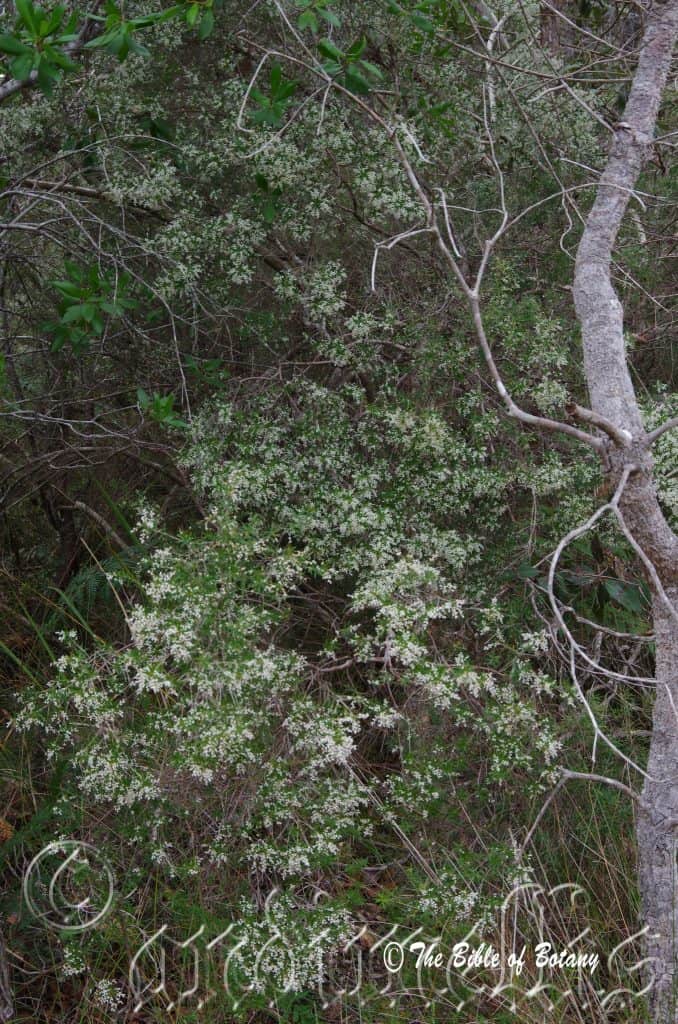
Yuraygir National Park Wooli NSW
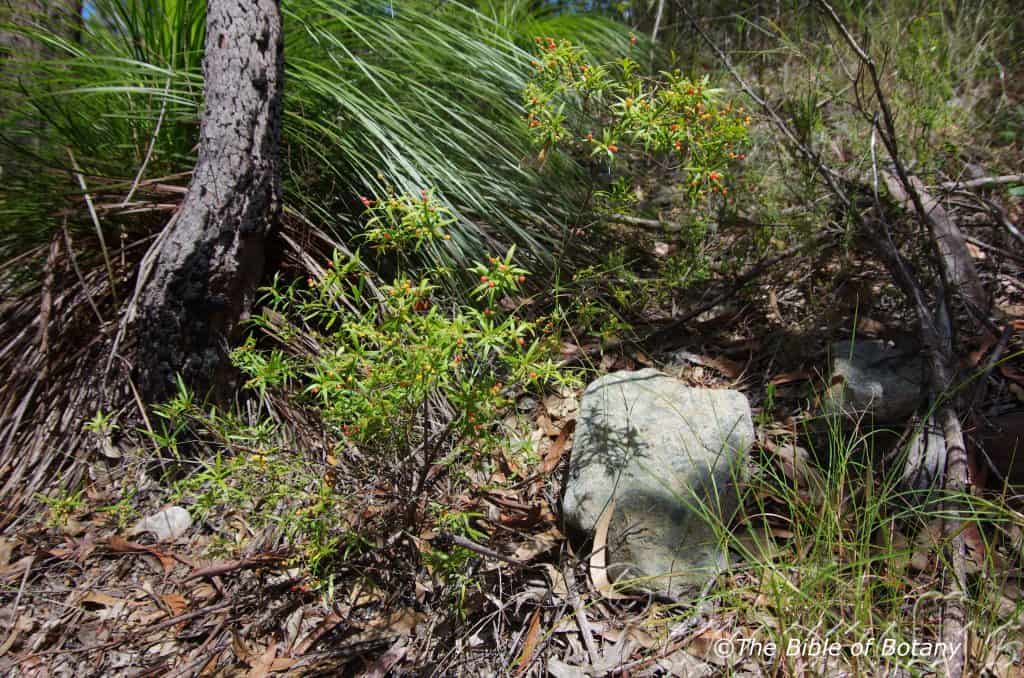
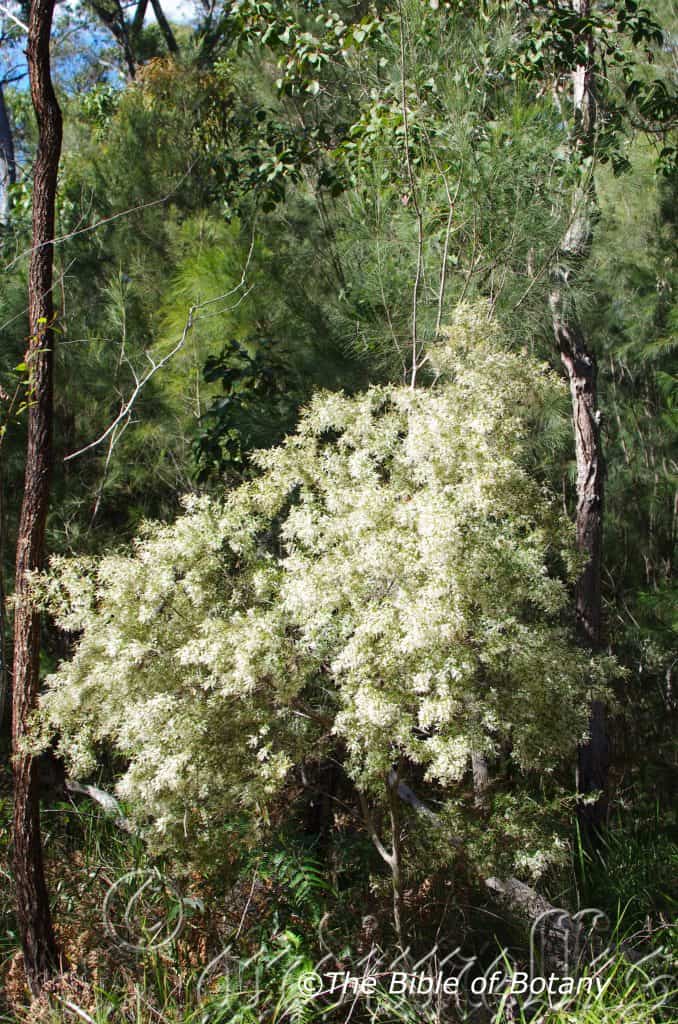
Yuraygir National Park Wooli NSW
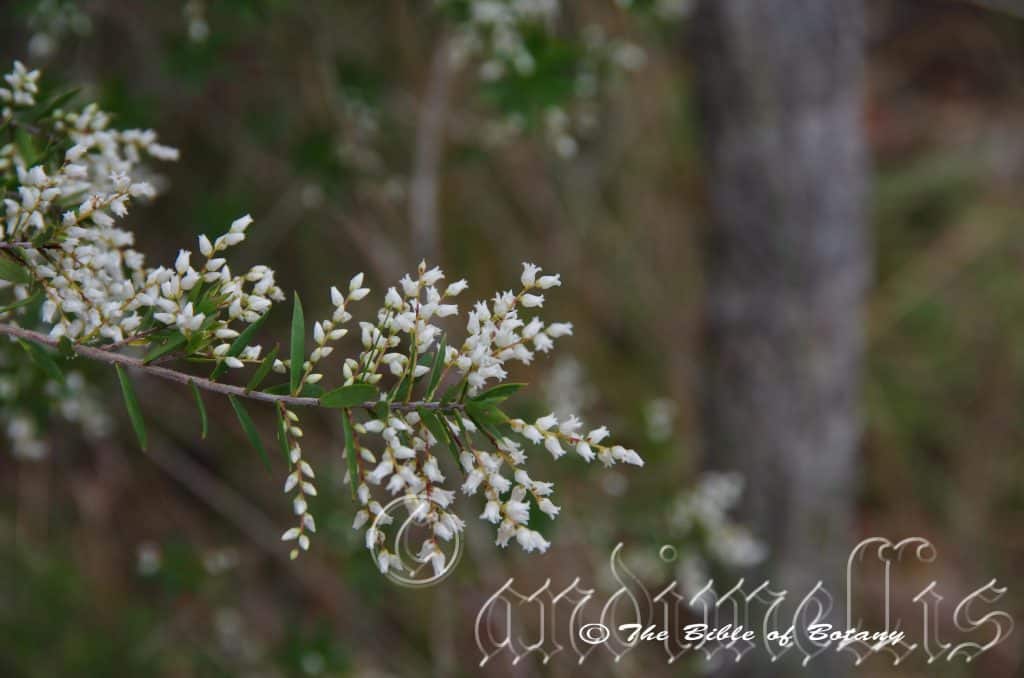
Yuraygir National Park Wooli NSW
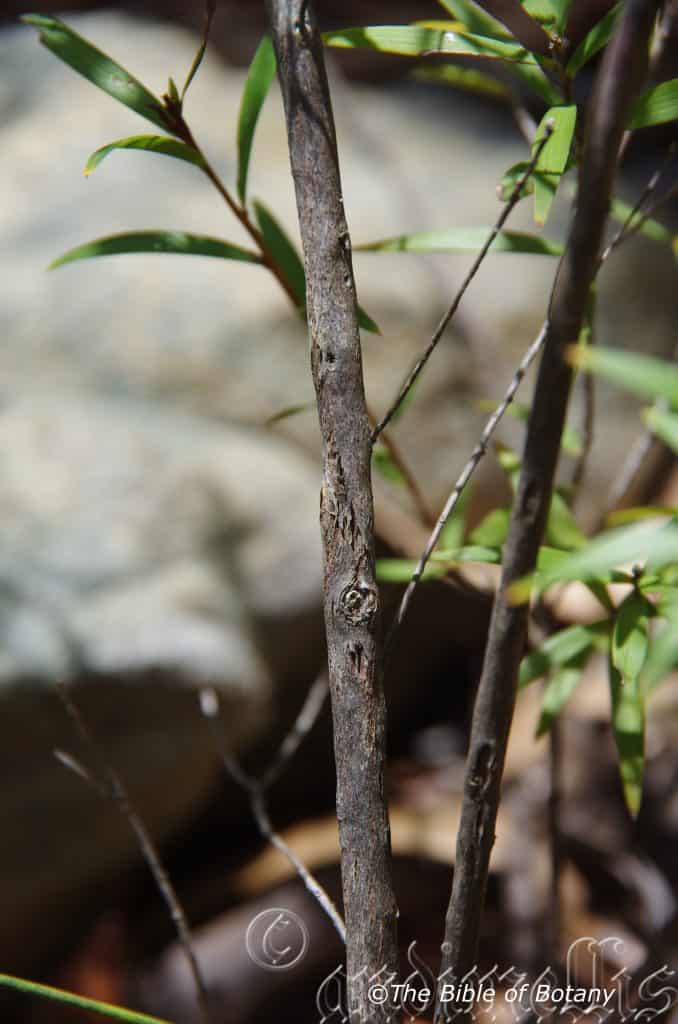
The Pinnacles NSW
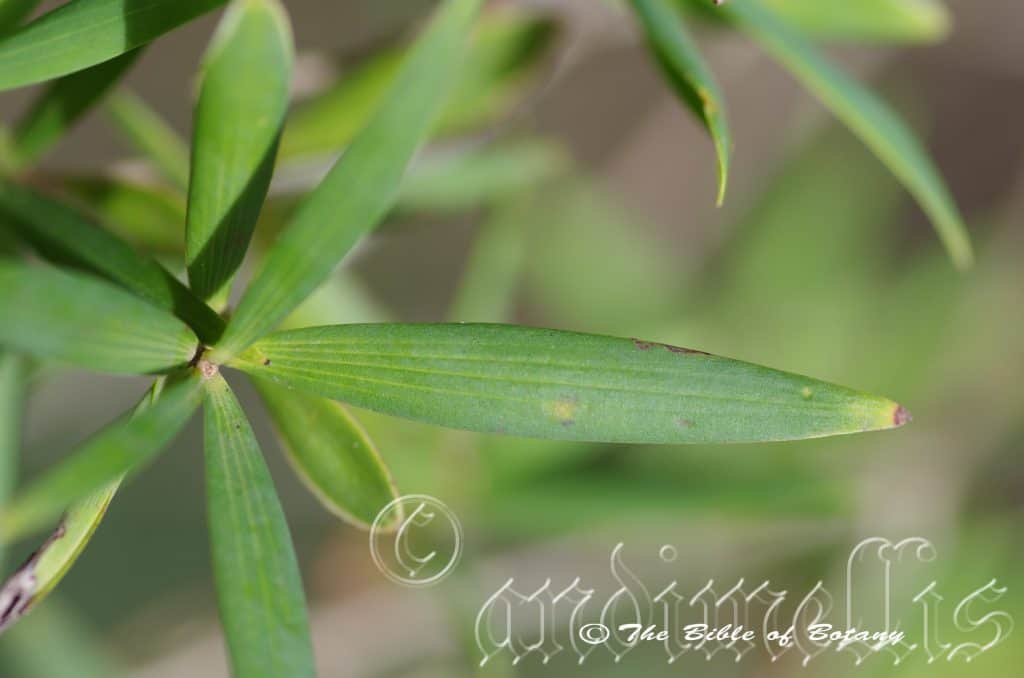
Ebor NSW
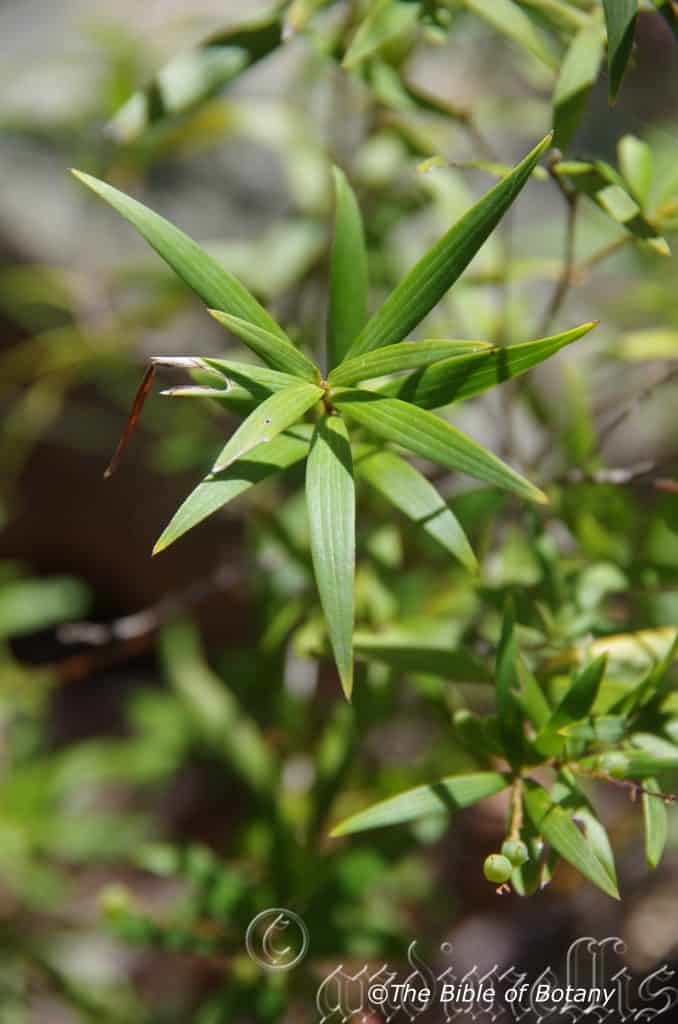
The Pinnacles NSW
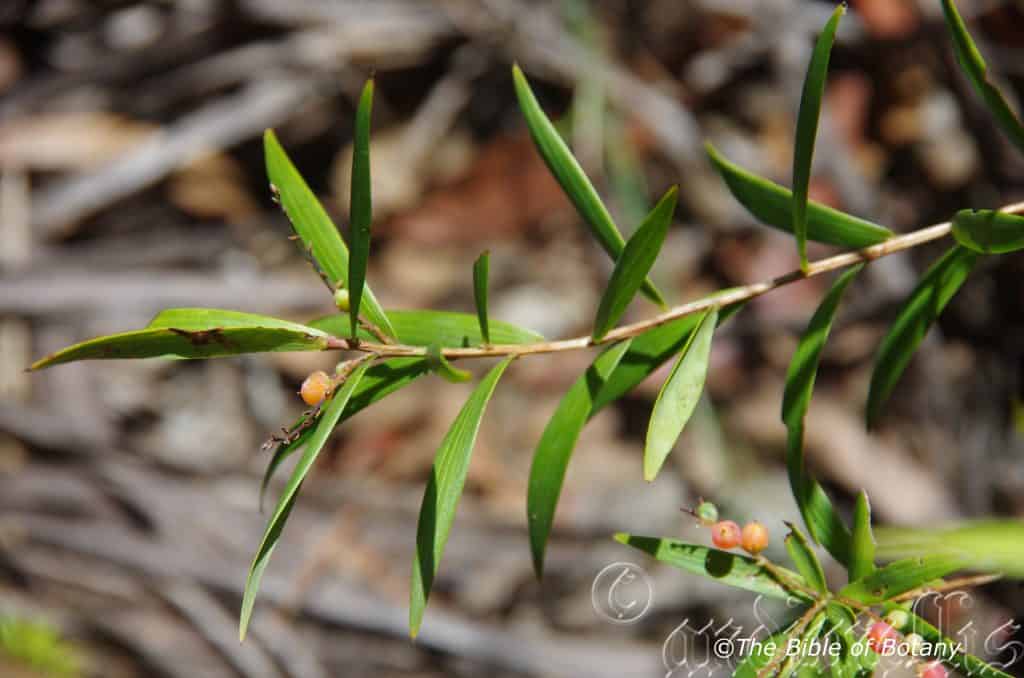
The Pinnacles NSW
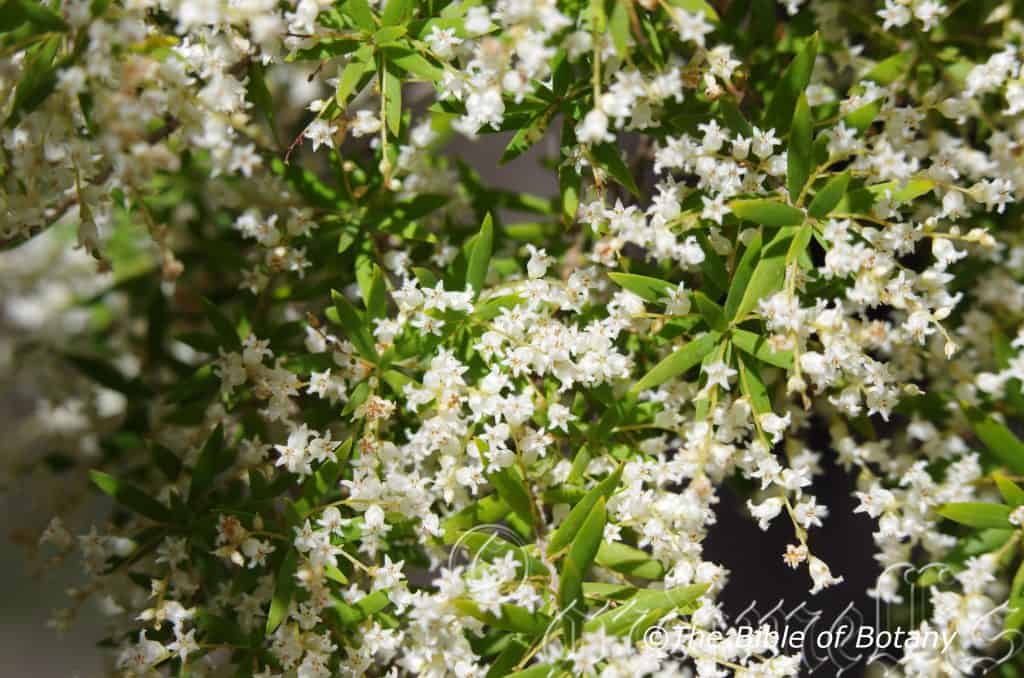
Yuraygir National Park Wooli NSW
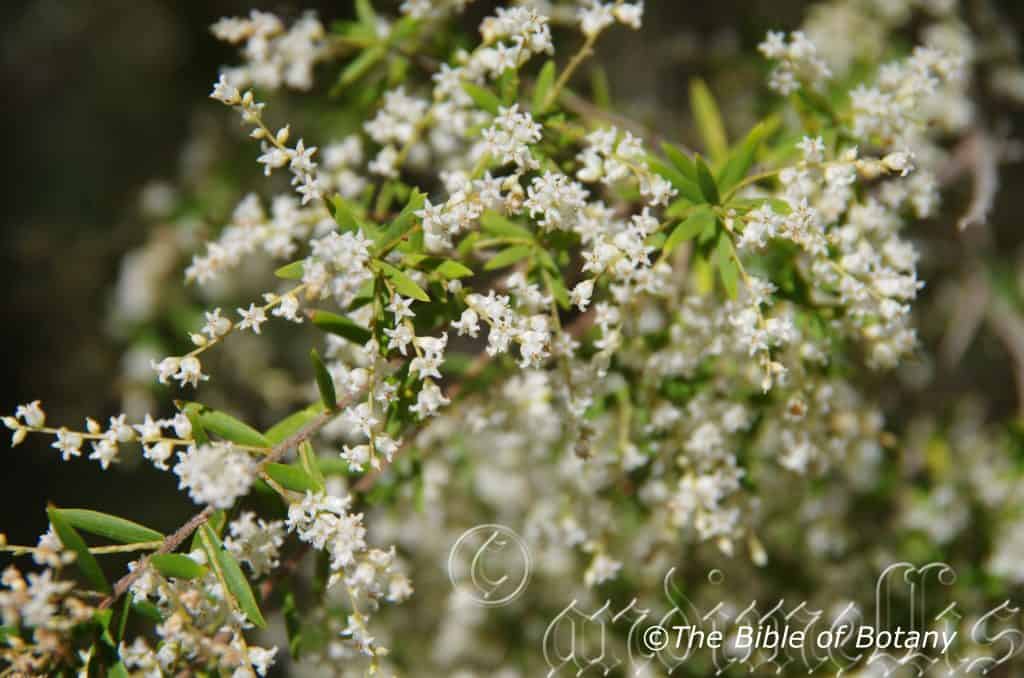
Yuraygir National Park Wooli NSW
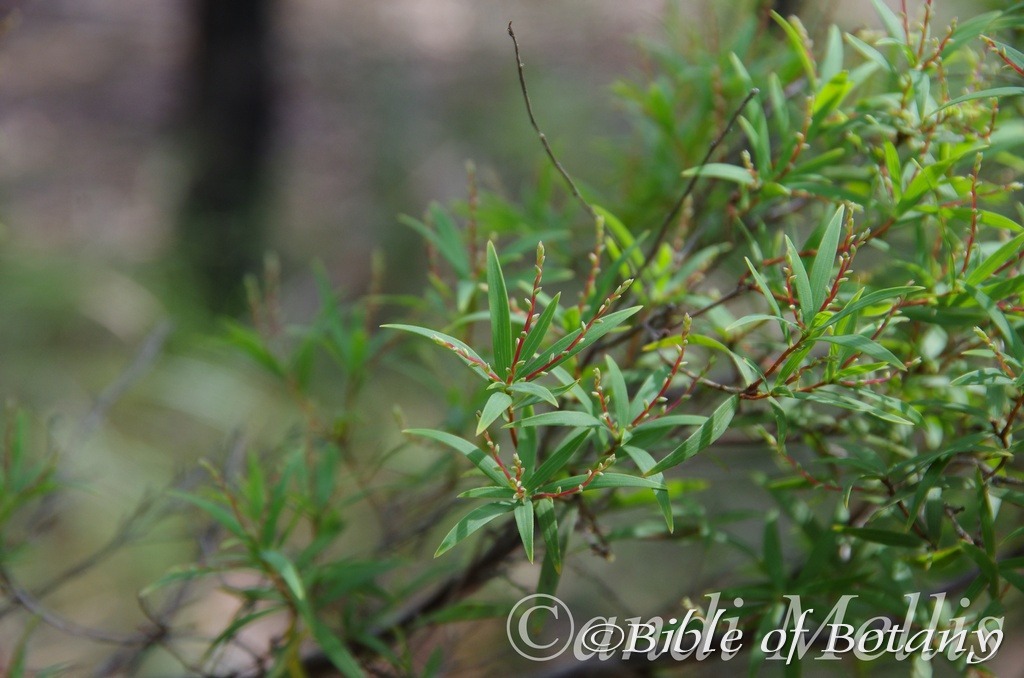
Fortis Creek National Park NSW
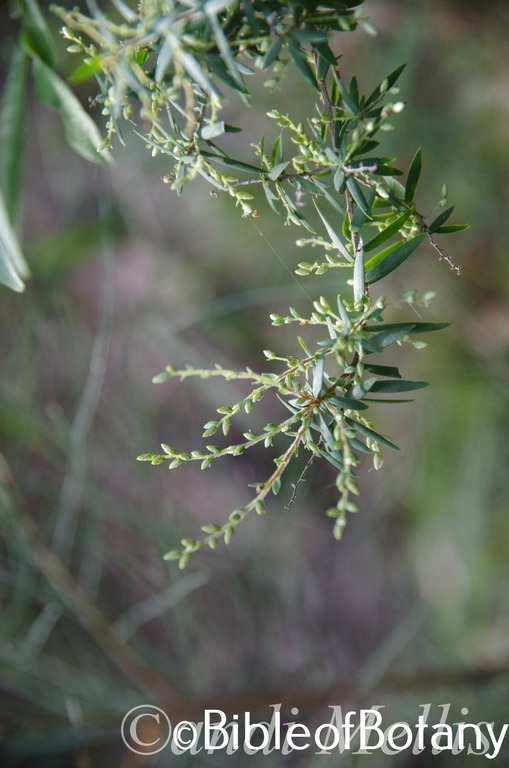
Yuraygir National Park NSW
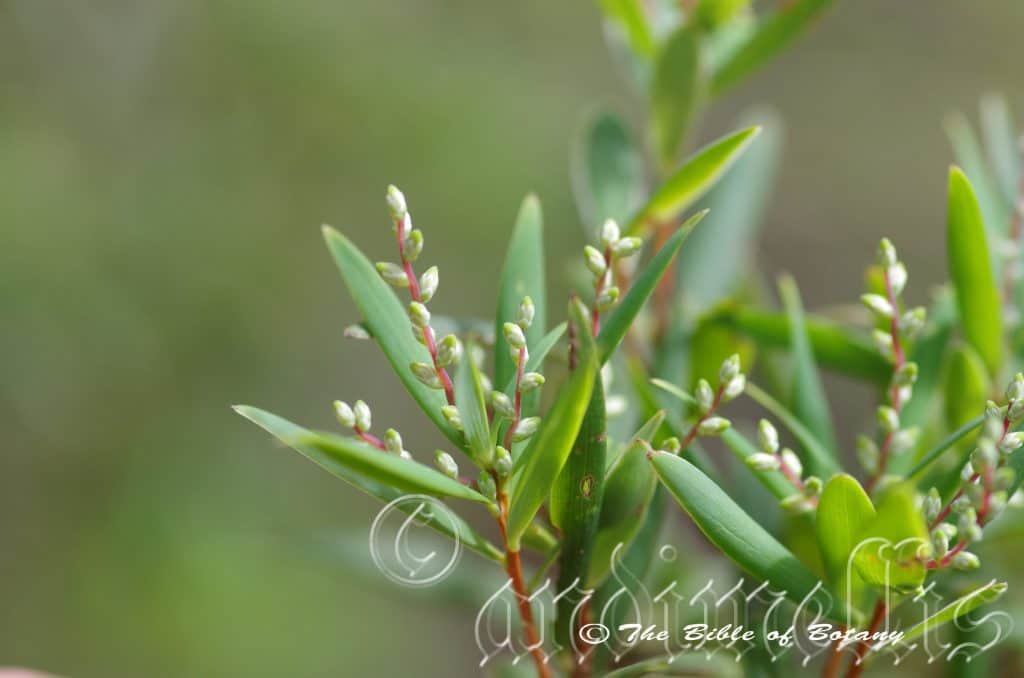
Ebor NSW
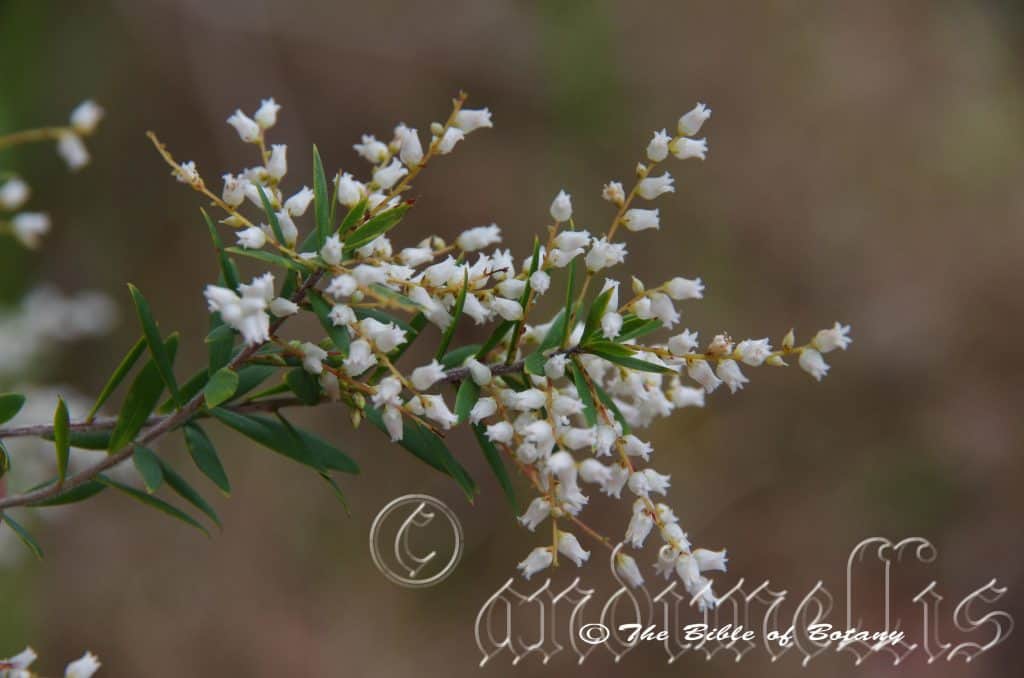
Yuraygir National Park Wooli NSW
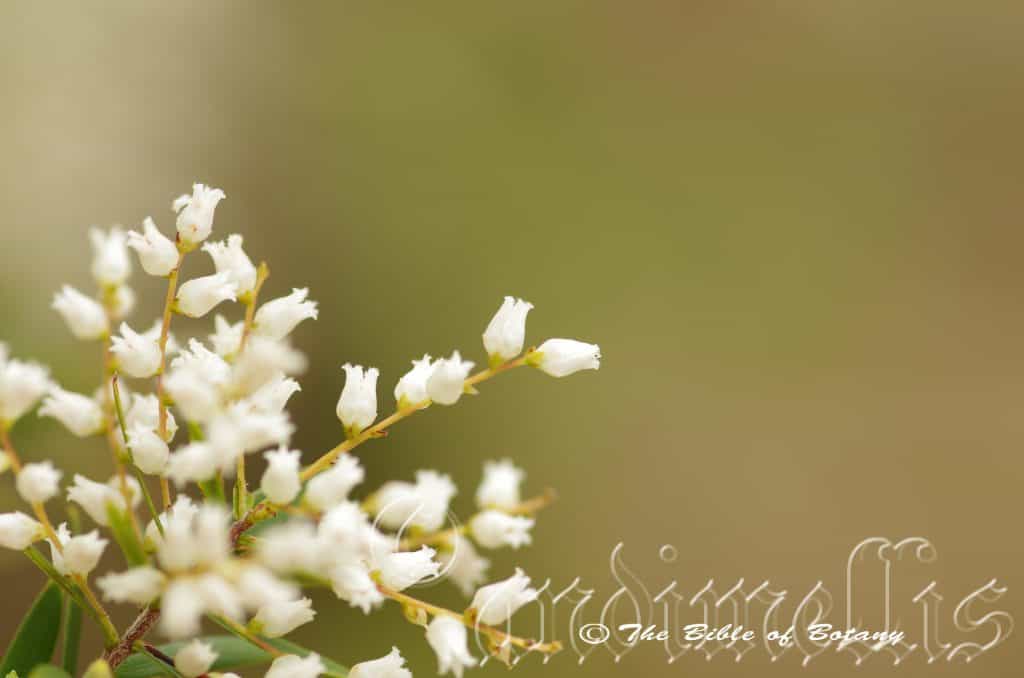
Yuraygir National Park Wooli NSW
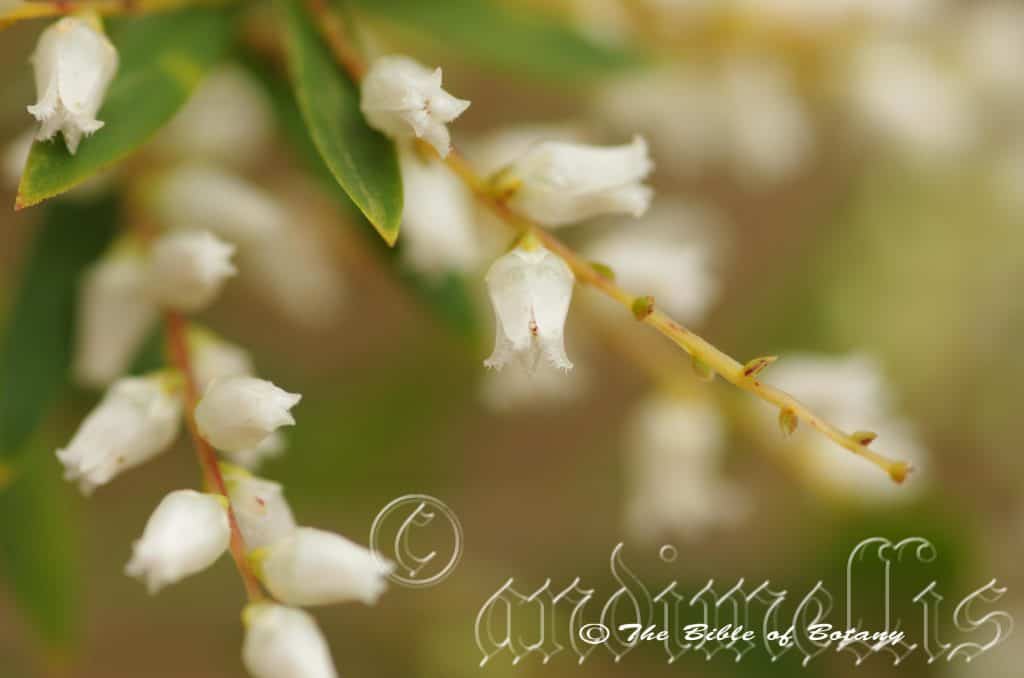
Yuraygir National Park Wooli NSW
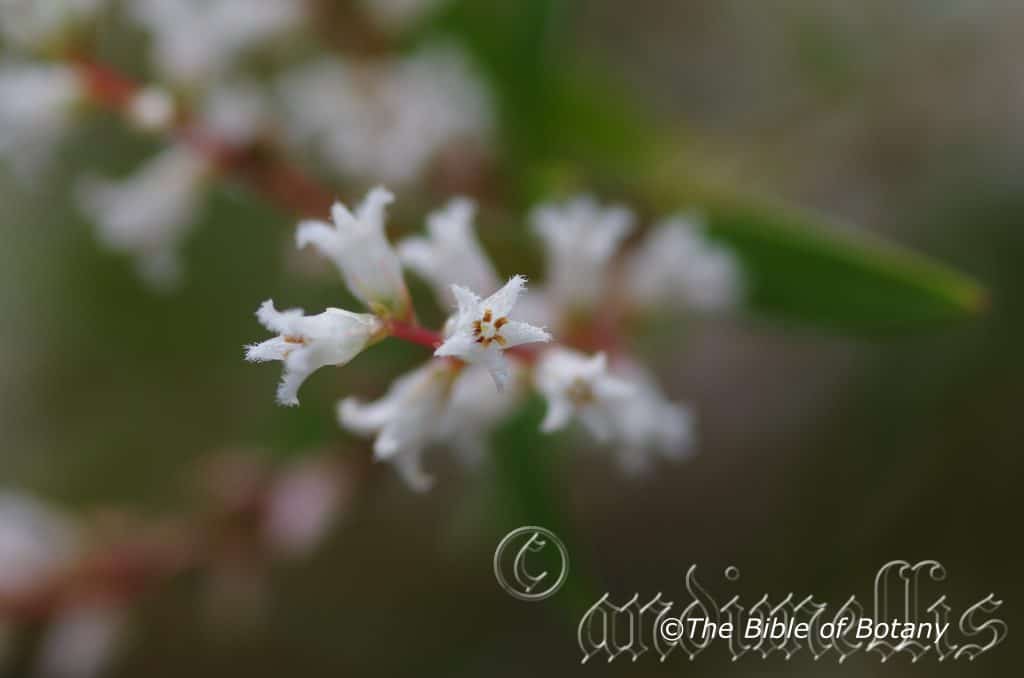
The Pinnacles NSW
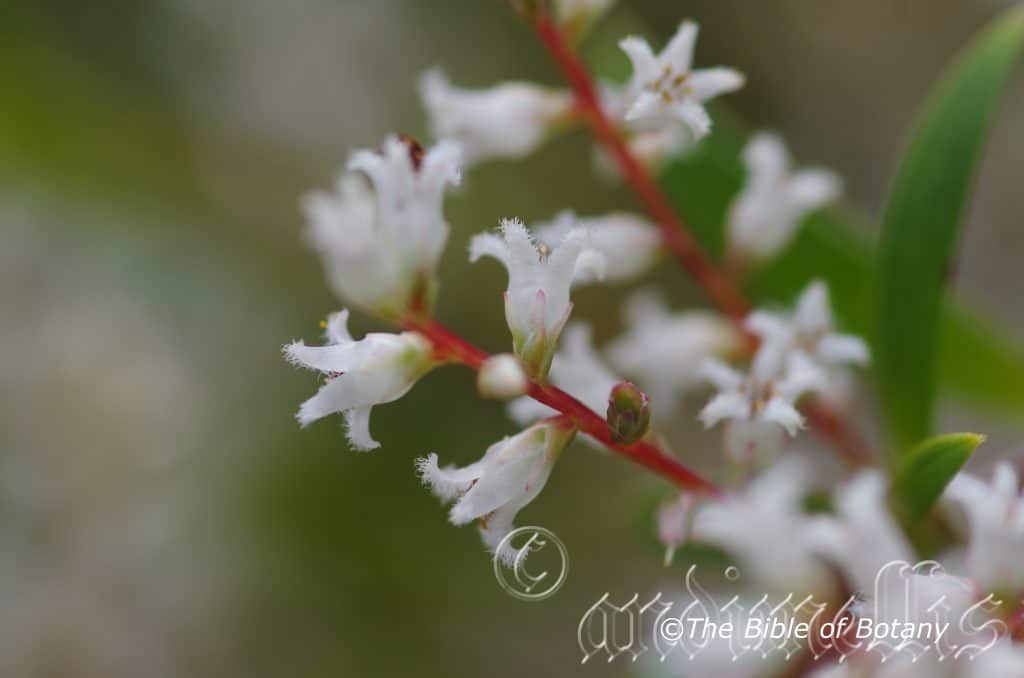
The Pinnacles NSW
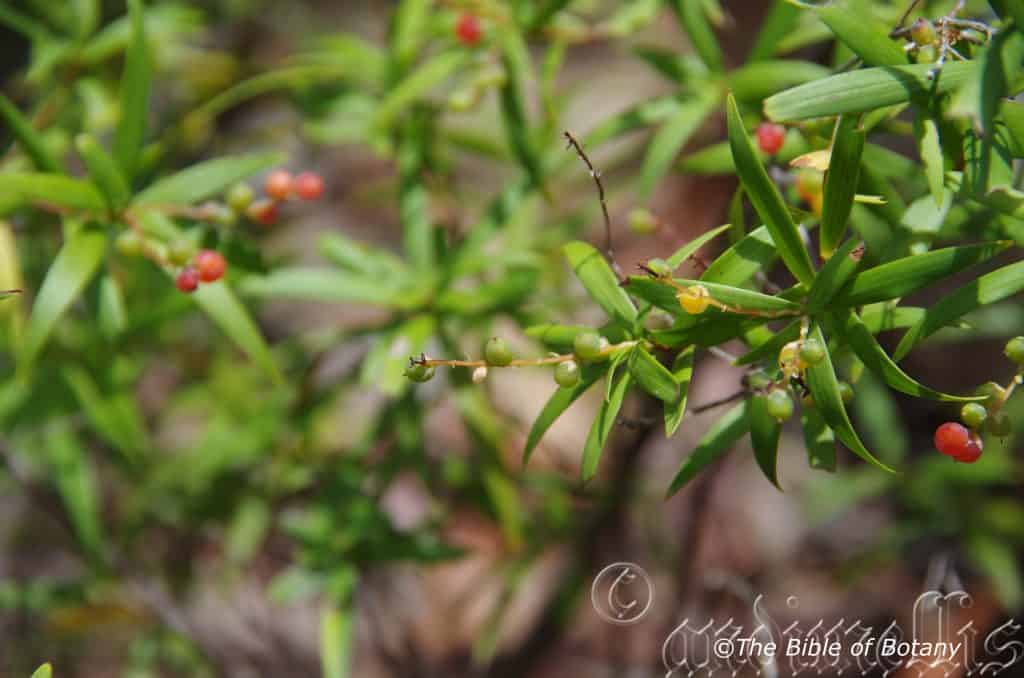
The Pinnacles NSW
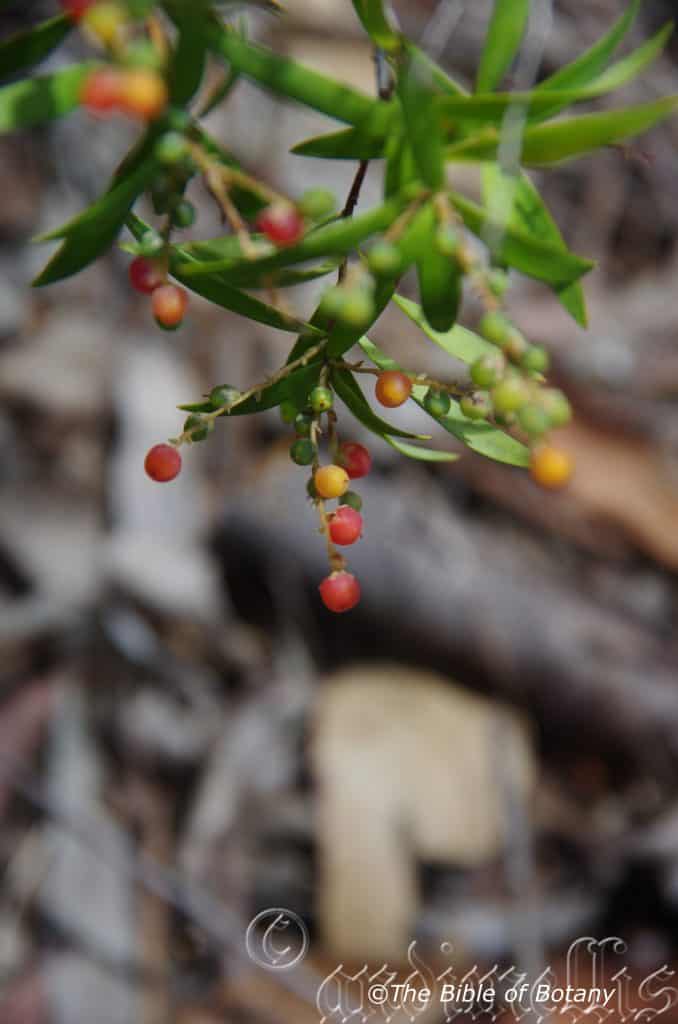
The Pinnacles NSW
Leucopogon lanceolatus
Classification:
Unranked: Magnoliophyta
Class: Magnoliopsida
Superorder: Magnoliidae
Order: Ericales
Family: Ericaceae
Genus: From Leukós, which is Ancient Greek for white and Pogon, which is Ancient Greek for a bristly beard. It refers to the corolla lobes, which have a white beard.
Specie: From Lanceola, which is Latin for a small lance. It usually refers to leaves, which are several times longer than it is wide with one side broader than the other and tapering after the broadest point in the middle.
Variety Leucopogon lanceolatus var. alpestris. From Gracilis, which is Latin for slender and graceful and Us, which is Greek/Latin for the degree. It refers to plants, which are the more graceful and have more slender stems than other species in the genus.
Variety: Leucopogon lanceolatus var. gelida. From Gelidum, which is Latin for frosty, icy, iced water or chilly. It refers to the plants, which prefer cold habitats where snow and ice exist for several months of the year.
Variety: Leucopogon lanceolatus var. gelidus. From Gelidum, which is Latin for frosty, icy, iced water or chilly. It refers to the plants, which prefer cold habitats where snow and ice exist for several months of the year.
Variety: Leucopogon lanceolatus var. gracilis. From Alpestris, which is Latin for the Alps. It refers to plants, which prefer subalpine areas of mountains below the permanent snow line in warmer pockets.
Variety: Leucopogon lanceolatus var. lanceolatus. From Lanceola, which is Latin for a small lance. It usually refers to leaves, which are several times longer than it is wide with one side broader than the other and tapering after the broadest point in the middle.
Su Variety: Leucopogon lanceolatus var. lophanthus. From Lanceola, which is Latin for a small lance. It usually refers to leaves, which are several times longer than it is wide with one side broader than the other and tapering after the broadest point in the middle.
Common Name:
Distribution:
Leucopogon lanceolatus subsp. alpestris is mainly found in and around the Grampians in Victoria. Leucopogon lanceolatus var. gelida is found from Canberra to Mount Gwinear in south eastern Victoria. It is found on the more exposed positions on the Great Dividing Range.
Leucopogon lanceolatus var. gelidus is found from Canberra to Mount Gwinear and the Thompson River in south eastern Victoria. It is found on the more exposed positions on and east of the Great Dividing Range.
Leucopogon lanceolatus var. gracilis is found south from Fraser Island to Newcastle close to the coast.
Leucopogon lanceolatus subsp. lanceolatus is found south from Bundaberg in southern coastal Queensland to Kangaroo Island in South Australia, the Bass strait Islands and Tasmania. It is mainly found on and east of the Great Dividing Range.
Leucopogon lanceolatus var. lophanthus is found south from the Lockyer valley in far south eastern Queensland to southern Tasmania on the eastern slopes and east of the Great Dividing Range. It is also found in a few disjunct populations north to Mackay on the coast. In Western Australia it is found along the coast south from Queens Park Ecological reserve to Ongerup.
https://avh.ala.org.au/occurrences/search?taxa=Leucopogon+lanceolatus#tab_mapView
Habitat Aspect Climate:
Leucopogon lanceolatus prefers full sun to light dappled shade. It grows in dry Eucalyptus forests to moist Eucalyptus forests from riparian zones just above the flood lines to ridge tops. The altitude ranges from 5 meter ASL to 900 meters ASL.
The temperatures range from minus 4 degrees in August to 38 degrees in January.
The rainfalls range from lows of 400mm to an average of 2000mm.
Fertilize using seaweed, fish emulsion or organic chicken pellets soaked in water on an alternate basis. Fertilize every two months until the plants are established then twice annually in early September and March to maintain health, vitality and better flowering.
Soil Requirements:
Leucopogon lanceolatus prefers to grow on sandy loams to medium clays. The soils are usually derived from decomposed brown basalts, black basalts, sandstones, shale or granites. The soils pH ranges from 4.5pH to 6.5pH. It does not tolerate waterlogged soils. Non saline soils to moderately saline soils are tolerated.
Height & Spread:
Wild Plants: 0.7m to 3m by 1m to 2m.
Characteristics:
Leucopogon lanceolatus grows as a small erect shrub with densely pale brown branching stems. The apical stems are ochre-brown while the new growth and young stems are pale yellow-green often tinged pink. It is sparsely covered in fine, white puberulent hairs.
The alternate leaves are elliptical, ovate or narrow lanceolate and measure 6mm to 34mm in length by 1.3mm to 5.5mm in width. The glabrous petioles measure 0mm to 1.5mm in length. The bases taper slightly to the petiole while the apexes are narrow acute. The concolourous laminas are mid green thin, stiff and glabrous. The laminas are flat or slightly convex on the upper surface and are straight or may decurve gently on the apical half. The margins are entire or finely toothed on the apical third. The mid vein and parallel lateral veins are obscure on both laminas but can be seen as faint longitudinal striations on the lower lamina.
The inflorescences are born short spikes of 2 to 16 individual flowers from the upper leaf axils. The spikes measure 3mm to 40mm in length. The peduncles measure 0mm to 0.5mm in length. The pale green bracteoles’ apexes are broad obtuse while the bracteoles measure 0.7mm to 1.5mm in length. The pastel green, pastel fawn or white sepals is united on the basal third before dividing into 5 lobes with broad accuminate apexes. The sepals measure 1.1mm to 2mm in length. The white corolla tubes are glabrous externally and moderately to densely covered in white, pubescent hairs on the apical two thirds internally. They measure 2.4mm to 4mm in length. The 5 white lobes are divaricate to slightly reflex, glabrous externally and moderately to densely covered in white, pulverulent hairs internally. The lobes apexes are narrow acute and measure 2mm to 3mm in length.
The 5 pale brown filaments are inserted while the pale brown, obloidal anthers are slightly inserted to slightly exsert. The basifixed anthers dehisce longitudinally. The pale creamy fawn style is slightly inserted and has a white stigma. The fragrant flowers appear from mid-February to early December.
The fruits are ellipsoidal to obovoidal drupes. The drupes measure 2.1mm to 3.3mm in length by 2mm to 3.3mm in diameter. The green glabrous drupes turn translucent orange-red to translucent red when ripe. The style base is persistent on the ripe fruits.
Subspecie Differences:
Leucopogon lanceolatus subsp. lanceolatus’s branchlets are glabrous to slightly covered in white puberulent hairs. The leaves are usually elliptic. There are 6 to 11 individual followers on a spike that measures 8mm to 17mm in length. The bracteoles and sepals are broad-acute to obtuse and the corolla tube is equal to or longer than the sepals.
Leucopogon lanceolatus subsp. gracilus’s branchlets are moderately to densely covered in fine, soft white pulverulent hairs. The leaves are narrow ovate. There are 2 to 16 individual flowers on spikes that measures 3mm to 39mm in length. The bracteoles and sepals are acute. The corolla tube is shorter than the sepals.
Wildlife:
Leucopogon lanceolatus flowers are fed upon by numerous small butterflies, native bees, native beetles, wasps and flies. The leaves are the food source for the Australian Cranberry moth (Poecilasthena pulchraria). Small nectar feeding birds are also attracted to the flowers.
The fruits are eaten by various small honeyeaters.
The fruits have a pleasant sweet taste similar to cherries to which my daughters referred to them as bush cherries as pre-schoolers.
Cultivation:
Leucopogon lanceolatus are beautiful small erect sub shrubs that grow particularly well on dry or moisture retentive but well drained soils. It is suitable for small, medium and large gardens close to the coast or high in the mountains in warm temperate, sub tropical or tropical gardens. As garden subjects they will grow from 2 meters to 2.5 meters in height by 1.5 meter to 2 meters in diameter when grown in the open. It is cold tolerant to temperatures at least as low as minus 4 degrees once established however the flowers are more likely to appear during the warmer months.
Plants that have been fertilized using Hood’s blood and bone, seaweed extract and rock min at Nana Glen and the Pinnacles produced larger fruit and more that measured 4mm to 6mm in length by 4mm to 6mm in diameter. This is one plant that looks very attractive in cultivation and makes an excellent hedge and will produce copious quantities of good quality fruit though a little small for rural production.
It can be lightly tip pruned if a smaller bushier shrub is required in the earlier stages of growth.
It is best used as an understory shrub in cool moist Eucalyptus gardens where there is plenty of ground light or moist to dry heaths. It looks best when placed in the midground or background, on the lower side of a path or medium size heath garden. When it is mass planted centrally as a feature, it offers quick coverage while adding plenty of interest with its white flowers and red fruits. Surrounded by other small native shrubs with small, deep red or deep purple flowers really do make for great talking points. Here I immediately think of Hovea acutifolia, Hovea similis, Graptophyllum excelsum, Graptophyllum illicifolium Boronia pinnata or Philotheca myoporoides.
When mass or group planting the useithe use of irregular patterns can aid in better viewing from different angles around the garden. The flowers are really highlighted against the deep sea green leaves so place them where it is highly visible.
The plants make excellent tub specimens for the patio, veranda or sunny court yard.
Propagation:
Seeds: Collecting seeds from mature plants of Leucopogon lanceolatus are not difficult to collect. Remove the seeds from the ripe fruits. The fresh seeds can be sown directly into a seed raising mix. Cover the seeds to a depth of 1mm in the seed trays.
However stratification over winter may enhance germination rates. This can be achieved by placing the seeds in the fridge for two or three weeks before sowing. Stratification is often a necessity for alpine plants and Leucopogon specie may be no different.
Place the trays in a warm position beneath 30mm shade cloth and keep moist not wet. The seeds can take from 40 to over 100 days to germinate with a strike rate of between 20mm and 60mm. Place the trays beneath 30mm shade cloth and keep moist not wet.When the seedlings are 20mm to 30mm tall, prick them out and plant them into 50mm native tubes using a good quality mix.
Cuttings: Cuttings of Leucopogon lanceolatus are difficult to strike.
Use 70mm to 100mm long half ripened material when growing from cuttings from the present season’s growth which will give the best results.
Take them in the warmer months where heavy frosts or snow occurs or throughout the year in frost free zones or where frosts are only light.
1 Prepare the cutting mix by adding one third sharp clean river sand, one third peat and one third perlite. These ingredients are sterilize,
2 Select good material from non diseased plants,
3 Select semi green stems for cuttings. Look for a stem with two or three nodes,
4 Place the cutting on a flat, hard surface, and make a clean cut down one side of the cutting at the base for 10mm with a sharp sterile knife or razor blade. – This scarification of the node will increase the chances of roots emerging from this spot. Now remove all but one or two the leaves, leaving the apex leaves in tact. If the leaves are very large in proportion to the stem, cut off the apical halves.
5 Fill a saucer with water, and place a little medium strength rooting hormone into another container like a milk bottle top. Dip the node end of the cutting into the water and then into the rooting hormone. Tap off any excess hormone,
6 Use a small dipple stick or old pencil to poke a hole into the soilless potting mix. Ensure the hole is slightly larger than the stem diameter and be careful not to wipe the rooting hormone off the cuttings base, place the cuttings in a pattern ensuring the cuttings are not touching each other,
7 Place the cuttings in a moist sterile seed raising mix at 45 degrees to 70 degree angle with half the cutting below the mix and half above the mix.
8 When the cuttings have struck, open the bag to allow air circulation for a few days to a week,
9 Once hardened off remove the cuttings from the bag and allow to further hardening for a few more days,
10 Transplant into a good potting mix to grow on.
Fertilize using seaweed, fish emulsion or organic chicken pellets soaked in water on an alternate basis. Fertilize every two months until the plants are established then twice annually in early September or March to maintain health, vitality and better flowering. Once the seedlings reach 100mm to 150mm in height they can be planted out into their permanent position.
Further Comments from Readers:
Hi reader, it seems you use The Bible of Botany a lot. That’s great as we have great pleasure in bringing it to you! It’s a little awkward for us to ask, but our first aim is to purchase land approximately 1,600 hectares to link several parcels of N.P. into one at The Pinnacles NSW Australia, but we need your help. We’re not salespeople. We’re amateur botanists who have dedicated over 30 years to saving the environment in a practical way. We depend on donations to reach our goal. If you donate just $5, the price of your coffee this Sunday, We can help to keep the planet alive in a real way and continue to bring you regular updates and features on Australian plants all in one Botanical Bible. Any support is greatly appreciated. Thank you.
In the spirit of reconciliation we acknowledge the Bundjalung, Gumbaynggirr and Yaegl and all aboriginal nations throughout Australia and their connections to land, sea and community. We pay our respect to their Elders past, present and future for the pleasures we have gained.
Leucopogon leptospermioides
Classification:
Unranked: Magnoliophyta
Class:Magnoliopsida
Superorder: Magnoliidae
Order: Ericales
Family: Ericaceae
Genus: From Leukós, which is Ancient Greek for white and Pogon, which is Ancient Greek for a bristly beard. It refers to the corolla lobes, which have a white beard.
Specie: From Leptós, which is Ancient Greek for delicate, fine or slender, Spérma, which is Ancient Greek for a seed and Eîdos/Oides, which is Ancient Greek for alike or similar to. It refers to seeds, or leaves which resemble those of the Leptospermum genus.
Sub species:
Common Name:
Distribution:
Leucopogon leptospermoides is found south from the Temple Bay in far north Queensland to Kangaroo Creek on Newnes Plateau in New South Wales. It is found on and east of the Great Dividing Range including the off shore Islands. There is an isolated population on the Central Darling’s plain.
https://avh.ala.org.au/occurrences/search?taxa=Leucopogon+leptospermoides#tab_mapView
Habitat Aspect Climate:
Leucopogon leptospermoides prefers full sun to light dappled shade. It grows in moist coastal heaths or moist open woodlands. The altitude ranges from 5 meter ASL to 315 meters ASL.
The temperatures range from minus 2 degrees in August to 40 degrees in January.
The rainfalls range from lows of 200mm to an average of 2500mm.
Soil Requirements:
Leucopogon leptospermoides prefers to grow on course sands to sandy loams. The soils are usually derived from accumulated beach sands or accumulated coral sands. The soils pH ranges from 5.5pH to 7.5pH. It does not tolerate waterlogged soils. Non saline soils to moderately saline soils are tolerated.
Height & Spread:
Wild Plants: 0.6m to 1m by 0.4m to 0.8m.
Characteristics:
Leucopogon leptospermoides grows as an erect shrub with densely branched deep brown stems. The apical stems are mid brown while the new growth and young stems are pale brown often tinged yellow. It is sparsely covered in fine, white puberulent hairs.
The alternate leaves are crowded near the apexes. The elliptical to broad lanceolate or oblong-obovate leaves measure 8.5mm to 12mm in length by 1.5mm to 2.2mm in width. The glabrous petioles measure 0.3mm to 0.5mm in length. The bases taper slightly to the petiole while the apexes are narrow acute with a short grey pungent spine with a yellow and reddish-brown base. The concolourous laminas are mid green thin, stiff and glabrous. The laminas are flat and decurve gently on the apical third. The margins are entire and are sparsely covered in white ciliate hairs. The mid vein and parallel lateral veins are obscure on both laminas but can be seen as faint longitudinal striations on the lower lamina.
The inflorescences are usually solitary or rarely 2 or 3 individual flowers with a rudimentary bud born from the upper leaf axils. The pale green bracteoles’ apexes are broad acute to broad accuminata while the bracteoles measure 1.2mm to 1.9mm in length. The pastel yellow or pale cream sepals have white hyaline margins and are united near the basal before dividing into 5 lobes which have broad acute apexes. The sepals measure 2.3mm to 4mm in length. The white corolla tubes are glabrous externally and internally on the basal half and densely covered in long white hirsute hairs on the apical half internally. They measure 3.9mm to 4.5mm in length. The 5 white lobes are divaricate and strongly reflex on the apical half. It is glabrous externally and densely covered in long white, pulverulent hairs internally. The lobes apexes are narrow acute and measure 1.2mm to 3mm in length.
The 5 pale brown stamens are inserted. The basifixed anthers dehisce longitudinally. The white pistil is slightly inserted. The fragrant flowers usually appear from mid-August to January but can appear as late as April under favourable conditions with a peak from September to November.
Leucopogon leptospermoides’s fruits are ovoidal to ellipsoidal drupes with 5 faint angles. The drupes measure 3.3mm to 4mm in length by 3mm to 4mm in diameter. The green glabrous drupes turn translucent orange-red to translucent red when ripe. The style base is persistent on the ripe fruits.
Wildlife:
Leucopogon leptospermoides flowers are fed upon by numerous small butterflies, native bees, native beetles, wasps and flies. The leaves are the food source for the Australian Cranberry moth (Poecilasthena pulchraria).
The fruits are eaten by various small honeyeaters.
The fruits have a pleasant sweet taste similar to cherries to which my daughters referred to them as bush cherries as pre-schoolers.
Cultivation:
Leucopogon leptospermoides are beautiful small erect sub shrubs that grow particularly well on moisture retentive but well drained soils. It is suitable for small, medium and large gardens close to the coast or high in the mountains in warm temperate, sub tropical or tropical gardens. As garden subjects they will grow from 0.8 meters to 1 meter in height by 0.6 meters to 1 meter in diameter when grown in the open. It is cold tolerant to temperatures at least as low as minus 7 degrees once established.
It can be lightly tip pruned if a smaller bushier shrub is required in the earlier stages of growth.
It is best used as an understory shrub in cool moist Eucalyptus gardens where there is plenty of ground light or moist to dry heaths. Placed in the midground or foreground on the lower side of a path or mass planted centrally as a feature offer quick coverage while adding interest. Surrounded by other small native shrubs with small, deep red or deep purple flowers really do make for great talking points. Here I immediately think of Hovea acutifolia, Hovea similis, Graptophyllum excelsum and Graptophyllum illicifolium.
When mass or group planting leptospermoides use curves and irregular patterns so they can be viewed from different angles around the garden. The flowers are really highlighted against the deep sea green leaves so place them where it is highly visible.
The plants make excellent tub specimens for the patio, veranda or sunny court yard.
Propagation:
Seeds: Collecting seeds from mature plants of Leucopogon leptospermoides are not difficult to collect. Remove the seeds from the ripe fruits. The fresh seeds can be sown directly into a seed raising mix. Cover the seeds to a depth of 1mm in the seed trays.
However stratification over winter may enhance germination rates. This can be achieved by placing the seeds in the fridge for two or three weeks before sowing. Stratification is often a necessity for alpine plants and Leucopogon specie may be no different.
Place the trays in a warm position beneath 30mm shade cloth and keep moist not wet. The seeds can take from 40 to over 100 days to germinate with a strike rate of between 20mm and 60mm. Place the trays beneath 30mm shade cloth and keep moist not wet.When the seedlings are 20mm to 30mm tall, prick them out and plant them into 50mm native tubes using a good quality mix.
Cuttings: Cuttings of Leucopogon leptospermoides are difficult to strike. Below is the methods we employed when growing Leucopogon lanceolatus.
Use 70mm to 100mm long half ripened material when growing from cuttings from the present season’s growth which will give the best results.
Take them in the warmer months where heavy frosts or snow occurs or throughout the year in frost free zones or where frosts are only light.
1 Prepare the cutting mix by adding one third sharp clean river sand, one third peat and one third perlite. These ingredients are sterilize,
2 Select good material from non diseased plants,
3 Select semi green stems for cuttings. Look for a stem with two or three nodes,
4 Place the cutting on a flat, hard surface, and make a clean cut down one side of the cutting at the base for 10mm with a sharp sterile knife or razor blade. – This scarification of the node will increase the chances of roots emerging from this spot. Now remove all but one or two the leaves, leaving the apex leaves in tact. If the leaves are very large in proportion to the stem, cut off the apical halves.
5 Fill a saucer with water, and place a little medium strength rooting hormone into another container like a milk bottle top. Dip the node end of the cutting into the water and then into the rooting hormone. Tap off any excess hormone,
6 Use a small dipple stick or old pencil to poke a hole into the soilless potting mix. Ensure the hole is slightly larger than the stem diameter and be careful not to wipe the rooting hormone off the cuttings base, place the cuttings in a pattern ensuring the cuttings are not touching each other,
7 Place the cuttings in a moist sterile seed raising mix at 45 degrees to 70 degree angle with half the cutting below the mix and half above the mix.
8 When the cuttings have struck, open the bag to allow air circulation for a few days to a week,
9 Once hardened off remove the cuttings from the bag and allow to further hardening for a few more days,
10 Transplant into a good potting mix to grow on.
Fertilize using seaweed, fish emulsion or organic chicken pellets soaked in water on an alternate basis. Fertilize every two months until the plants are established then twice annually in early September or March to maintain health, vitality and better flowering. Once the seedlings reach 100mm to 150mm in height they can be planted out into their permanent position.
Further Comments from Readers:
Hi reader, it seems you use The Bible of Botany a lot. That’s great as we have great pleasure in bringing it to you! It’s a little awkward for us to ask, but our first aim is to purchase land approximately 1,600 hectares to link several parcels of N.P. into one at The Pinnacles NSW Australia, but we need your help. We’re not salespeople. We’re amateur botanists who have dedicated over 30 years to saving the environment in a practical way. We depend on donations to reach our goal. If you donate just $5, the price of your coffee this Sunday, We can help to keep the planet alive in a real way and continue to bring you regular updates and features on Australian plants all in one Botanical Bible. Any support is greatly appreciated. Thank you.
In the spirit of reconciliation we acknowledge the Bundjalung, Gumbaynggirr and Yaegl and all aboriginal nations throughout Australia and their connections to land, sea and community. We pay our respect to their Elders past, present and future for the pleasures we have gained.
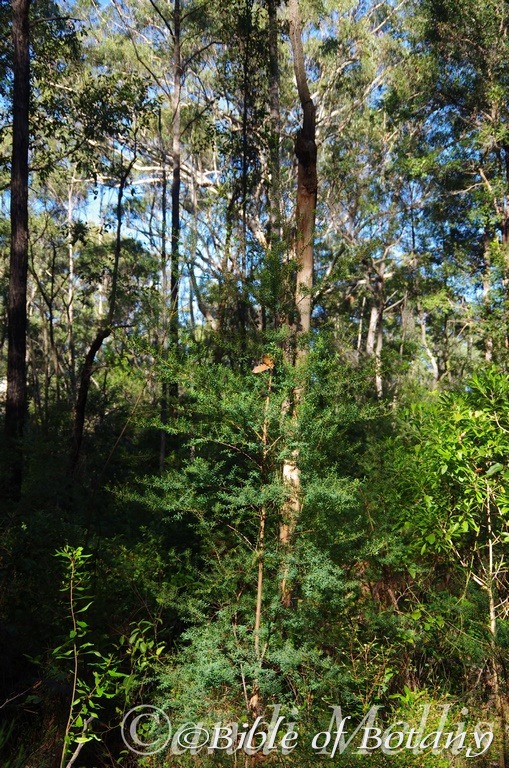
The Pinnacles NSW
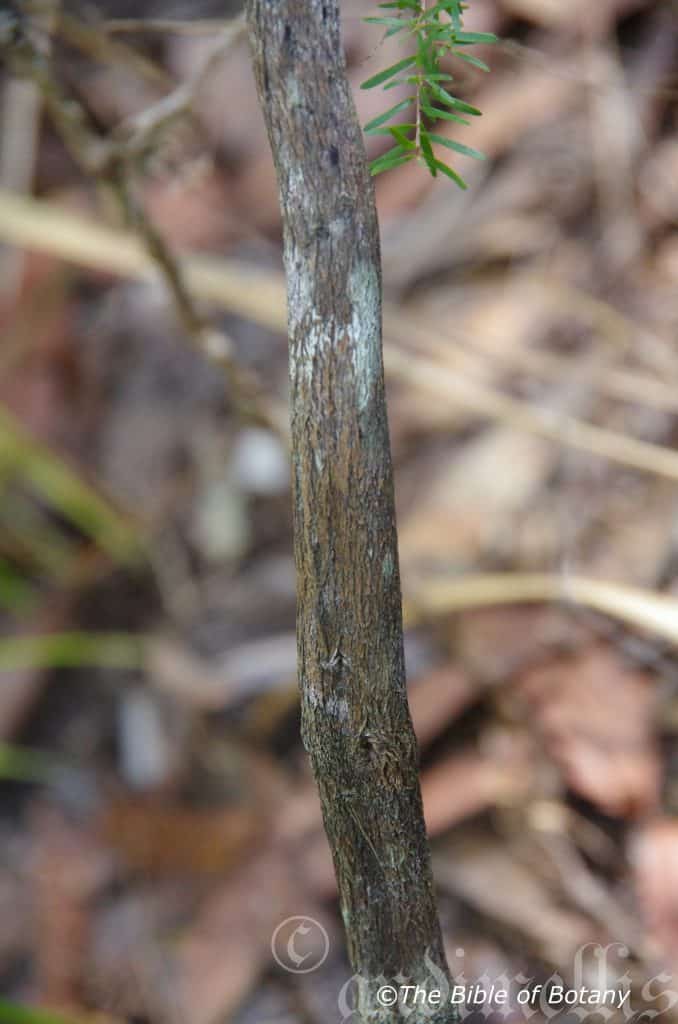
Rosser Gardens Benowa Qld.
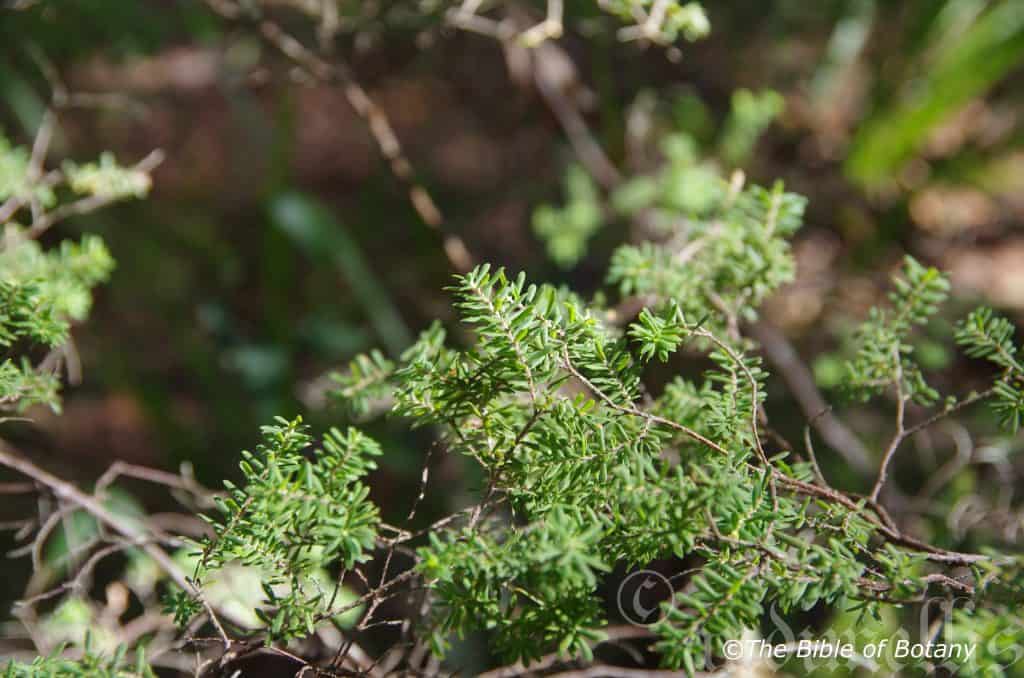
Rosser Gardens Benowa Qld.
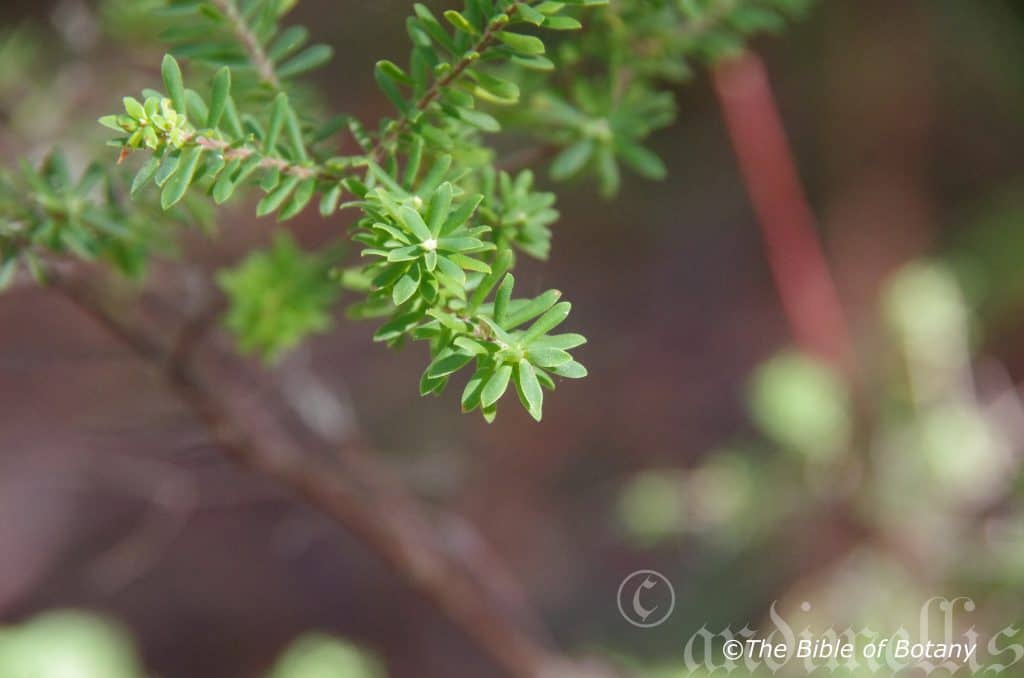
Rosser Gardens Benowa Qld.
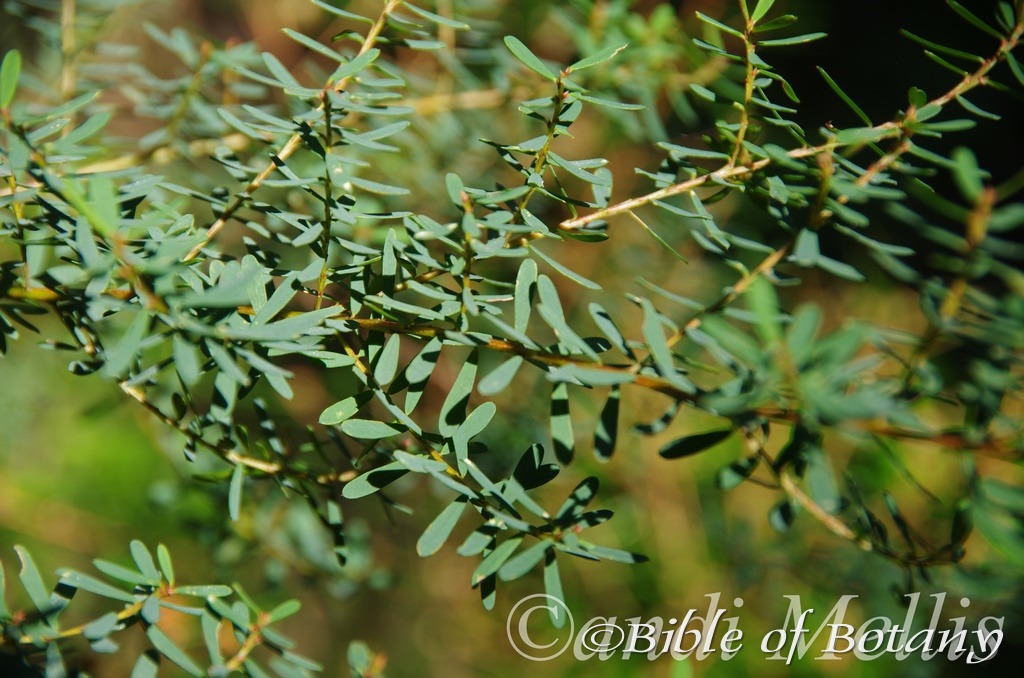
The Pinnacles NSW

The Pinnacles NSW
Leucopogon margarodes
Classification:
Unranked: Magnoliophyta
Class: Magnoliopsida
Superorder: Magnoliidae
Order: Ericales
Family: Ericaceae
Genus: From Leukós, which is Ancient Greek for white and Pogon, which is Ancient Greek for a bristly beard. It refers to the corolla lobes, which have a white beard.
Specie: It maybe from Margarítēs, which is Ancient Greek or later Margarīta, which is Latin for a pearl and probably Eîdos/Oides, which is Ancient Greek for alike or similar to., which is unknown to the author.
Sub species:
Common Name:
Distribution:
Leucopogon margarodes is found south from Fraser Island in central coastal Queensland to Kincumber Wondabyne in central coastal New South Wales including the off coast Islands.
https://avh.ala.org.au/occurrences/search?taxa=Leucopogon+margarodes#tab_mapView
Habitat Aspect Climate:
Leucopogon margarodes prefers full sun to light dappled shade. It grows in dry coastal open woodlands to moist coastal wallum heaths. The altitude ranges from 3 meter ASL to 20 meters ASL.
The temperatures range from 1 degree in August to 38 degrees in January.
The rainfalls range from lows of 1200mm to an average of 2100mm.
Soil Requirements:
Leucopogon margarodes prefers to grow on white and grey course peaty sands or grey light silts to heavy silts. The soils are usually derived from accumulated beach sands or at times accumulated coral sands or alluvial silts. The soils pH ranges from 5pH to 7pH. It does not tolerate waterlogged soils. Non saline soils to moderately saline soils are tolerated as well as salt laden winds.
Height & Spread: Wild Plants: 2m to 3m by 2m to 3m.
Characteristics:
It grows as an erect, densely branched reddish-brown stems. The apical stems are mid brown while the new growth and young stems are pale green to pale blue-green. The apical stems are moderately to densely covered in off white hispid hairs.
The alternate obovate or at times oblong leaves measure 6mm to 11.2mm in length by 1.2mm to 2.5mm in width. The glabrous petioles measure 0.3mm to 0.6mm in length. The bases are cuneate while the apexes are mucronate. The concolourous laminas are deep green thick, stiff and are sparsely covered in white hirtellous hairs. The laminas are convex on the upper surface and decurve gently at the apex. The margins decurve sharply and are finely toothed. The mid vein and parallel lateral veins are obscure on both laminas but can be seen as faint longitudinal striations on the lower lamina.
The inflorescences are usually solitary or in pairs with a rudimentary bud born from the leaf axils. The pastel green bracteoles’ apexes are broad accuminate while the bracteoles measure 1mm to 1.3mm in length. The pastel yellow or pastel creamy sepals are united on the basal half before dividing into the 5 broad acute lobes. The sepals are moderately covered in white hirtellous hairs and measure 1.5mm to 1.9mm in length. The white corolla tubes are glabrous to sparsely covered in white hirtellous hairs externally while it is moderately covered in white pilose hairs on the basal half internally and the apical half is covered in long white villous hairs. The corolla tubes measure 2mm to 4mm in length. The 5 white lobes are divaricate and are gently reflexed on the apical half. It is glabrous externally and densely covered in long white, villous hairs internally. The lobes apexes are narrow acute and measure 1.3mm to 2.5mm in length.
The 5 pale brown stamens are inserted. The basifixed anthers dehisce longitudinally. The white pistil is slightly inserted. The fragrant flowers usually appear from mid-August to January but can appear as late as April under favourable conditions with a peak from September to February.
The fruits are obovoidal drupes. The drupes measure 3mm to 4mm in length by 3mm to 4mm in diameter. The green glabrous or sparsely covered in white hirtellous hairy drupes turn translucent lime-green with a white base when ripe. The style base is persistent on the ripe fruits.
Wildlife:
Leucopogon margarodes’s flowers are fed upon by numerous small butterflies, native bees, native beetles, wasps and flies. The leaves are the food source for the Australian Cranberry moth (Poecilasthena pulchraria).
The fruits are eaten by various small honeyeaters.
The small fruits have a pleasant sweet taste similar to cherries.
Cultivation:
Leucopogon margarodes are beautiful small erect sub shrubs that grow particularly well on dry or moisture retentive but well drained soils. It is suitable for small, medium and large gardens close to the coast or high in the mountains in warm temperate, sub tropical or tropical gardens. As garden subjects they will grow from 2 meters to 2.5 meters in height by 1.5 meters to 2 meters in diameter when grown in the open. It is cold tolerant to temperatures at least as low as minus 1 degree once established.
It can be lightly tip pruned if a smaller bushier shrub is required in the earlier stages of growth.
It is best used as an understory shrub in cool moist Eucalyptus gardens where there is plenty of ground light or moist to dry heaths. Placed in the midground or foreground on the lower side of a path or mass planted centrally as a feature offer quick coverage while adding interest. Surrounded by other small native shrubs with small, deep red or deep purple flowers really do make for great talking points. Here I immediately think of Hovea acutifolia, Hovea similis, Graptophyllum excelsum and Graptophyllum illicifolium.
When mass or group planting Leucopogon margarodes use curves and irregular patterns so they can be viewed from different angles around the garden. The flowers are really highlighted against the deep sea green leaves so place them where it is highly visible.
The plants make excellent tub specimens for the patio, veranda or sunny court yard.
Propagation:
Seeds: Collecting seeds from mature plants of Leucopogon margarodes is not difficult to collect. Remove the seeds from the fruits. The fresh seeds can be sown directly into a seed raising mix. Cover the seeds to a depth of 1mm in the seed trays. Place the trays in a warm position beneath 30mm shade cloth and keep moist not wet. The seeds can take from 40 to over 100 days to germinate with a strike rate of between 20mm and 60mm. Place the trays beneath 30mm shade cloth and keep moist not wet.When the seedlings are 20mm to 30mm tall, prick them out and plant them into 50mm native tubes using a good quality mix.
Stratification over winter may enhance strike rates. I have not tested seeds using stratification however it is often a necessity for alpine plants and Leucopogon specie may be no different.
The seedlings are slow initially but once the seedlings reach 70mm to 80mm in height they can be repotted into 100mm to 150mm for patio use or into planted out into their permanent position.
Cuttings: Cuttings of Leucopogon margarodes are difficult to strike. Below is the methods we employed when growing Leucopogon lanceolatus.
Use 70mm to 100mm long half ripened material when growing from cuttings from the present season’s growth which will give the best results.
Take them in the warmer months where heavy frosts or snow occurs or throughout the year in frost free zones or where frosts are only light.
1 Prepare the cutting mix by adding one third sharp clean river sand, one third peat and one third perlite. These ingredients are sterilize,
2 Select good material from non diseased plants,
3 Select semi green stems for cuttings. Look for a stem with two or three nodes,
4 Place the cutting on a flat, hard surface, and make a clean cut down one side of the cutting at the base for 10mm with a sharp sterile knife or razor blade. – This scarification of the node will increase the chances of roots emerging from this spot. Now remove all but one or two the leaves, leaving the apex leaves in tact. If the leaves are very large in proportion to the stem, cut off the apical halves.
5 Fill a saucer with water, and place a little medium strength rooting hormone into another container like a milk bottle top. Dip the node end of the cutting into the water and then into the rooting hormone. Tap off any excess hormone,
6 Use a small dipple stick or old pencil to poke a hole into the soilless potting mix. Ensure the hole is slightly larger than the stem diameter and be careful not to wipe the rooting hormone off the cuttings base, place the cuttings in a pattern ensuring the cuttings are not touching each other,
7 Place the cuttings in a moist sterile seed raising mix at 45 degrees to 70 degree angle with half the cutting below the mix and half above the mix.
8 When the cuttings have struck, open the bag to allow air circulation for a few days to a week,
9 Once hardened off remove the cuttings from the bag and allow to further hardening for a few more days,
10 Transplant into a good potting mix to grow on.
Fertilize using seaweed, fish emulsion or organic chicken pellets soaked in water on an alternate basis. Fertilize every two months until the plants are established then twice annually in early September or March to maintain health, vitality and better flowering. Once the seedlings reach 100mm to 150mm in height they can be planted out into their permanent position.
Further Comments from Readers:
Hi reader, it seems you use The Bible of Botany a lot. That’s great as we have great pleasure in bringing it to you! It’s a little awkward for us to ask, but our first aim is to purchase land approximately 1,600 hectares to link several parcels of N.P. into one at The Pinnacles NSW Australia, but we need your help. We’re not salespeople. We’re amateur botanists who have dedicated over 30 years to saving the environment in a practical way. We depend on donations to reach our goal. If you donate just $5, the price of your coffee this Sunday, We can help to keep the planet alive in a real way and continue to bring you regular updates and features on Australian plants all in one Botanical Bible. Any support is greatly appreciated. Thank you.
In the spirit of reconciliation we acknowledge the Bundjalung, Gumbaynggirr and Yaegl and all aboriginal nations throughout Australia and their connections to land, sea and community. We pay our respect to their Elders past, present and future for the pleasures we have gained.
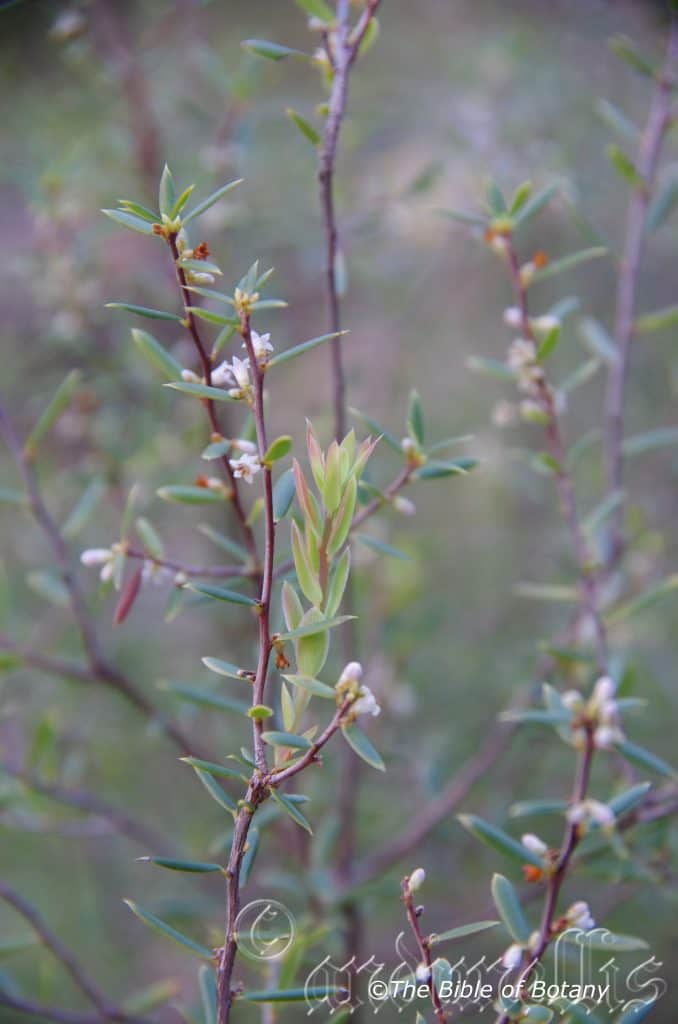
The Pinnacles NSW
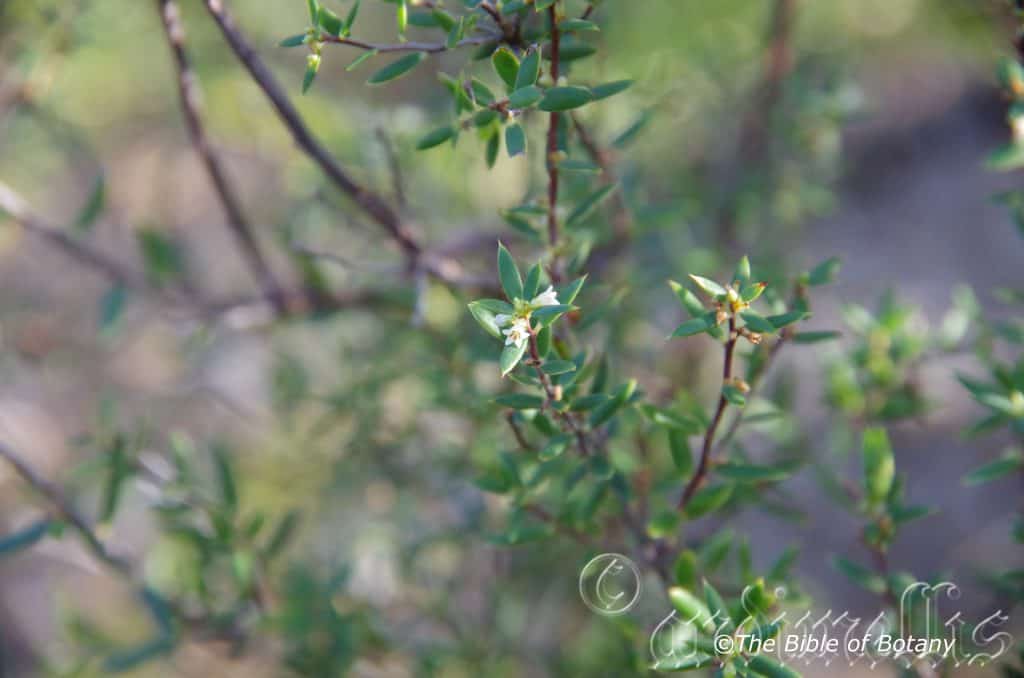
The Pinnacles NSW
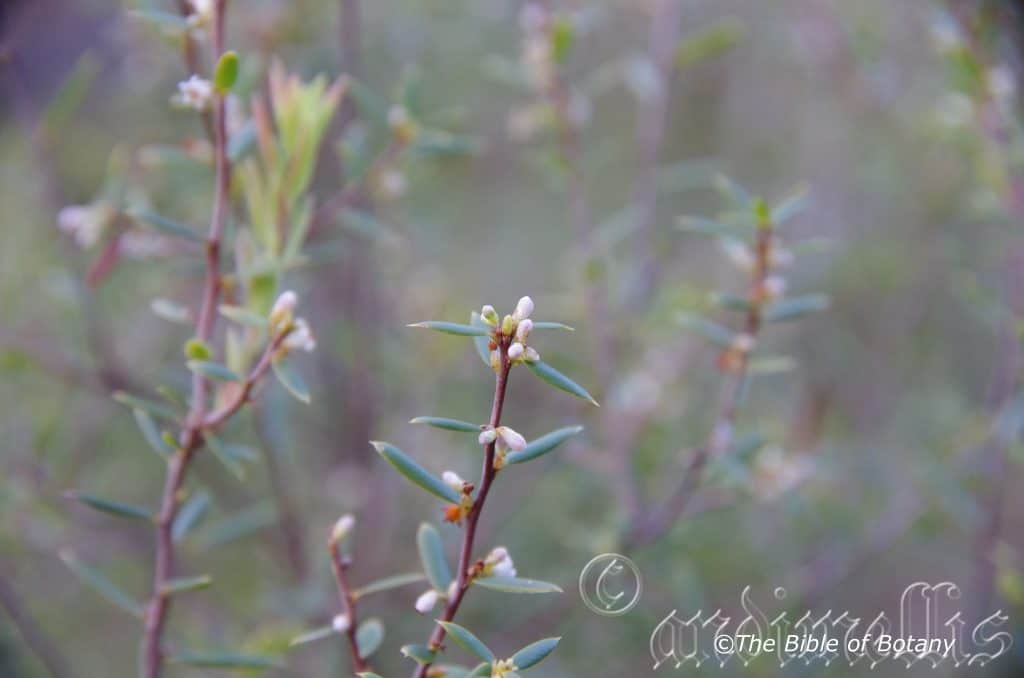
The Pinnacles NSW
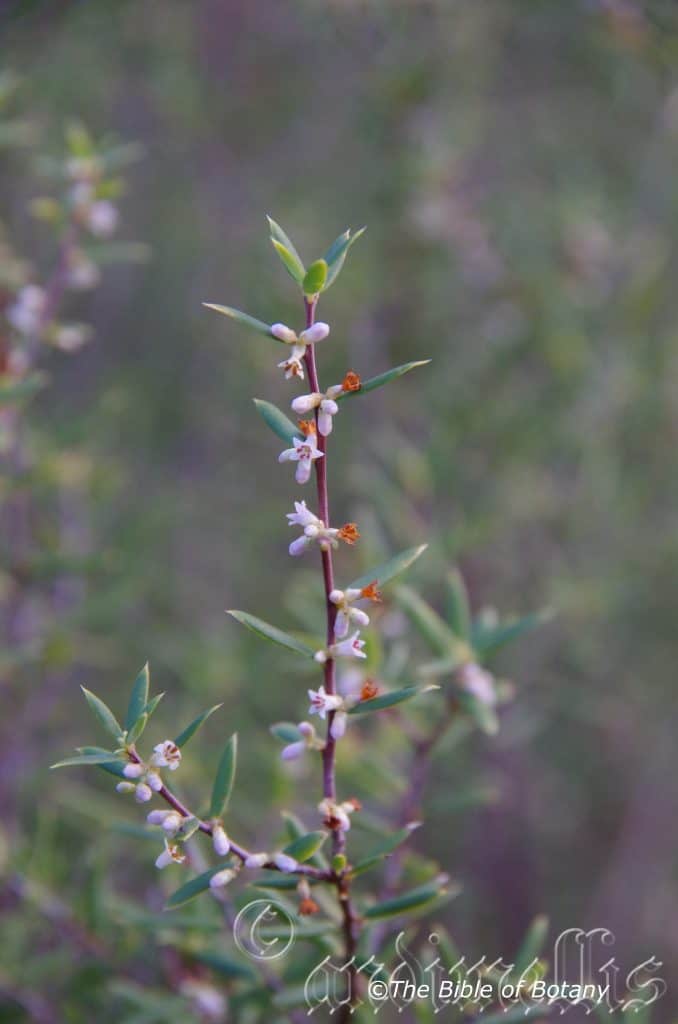
The Pinnacles NSW
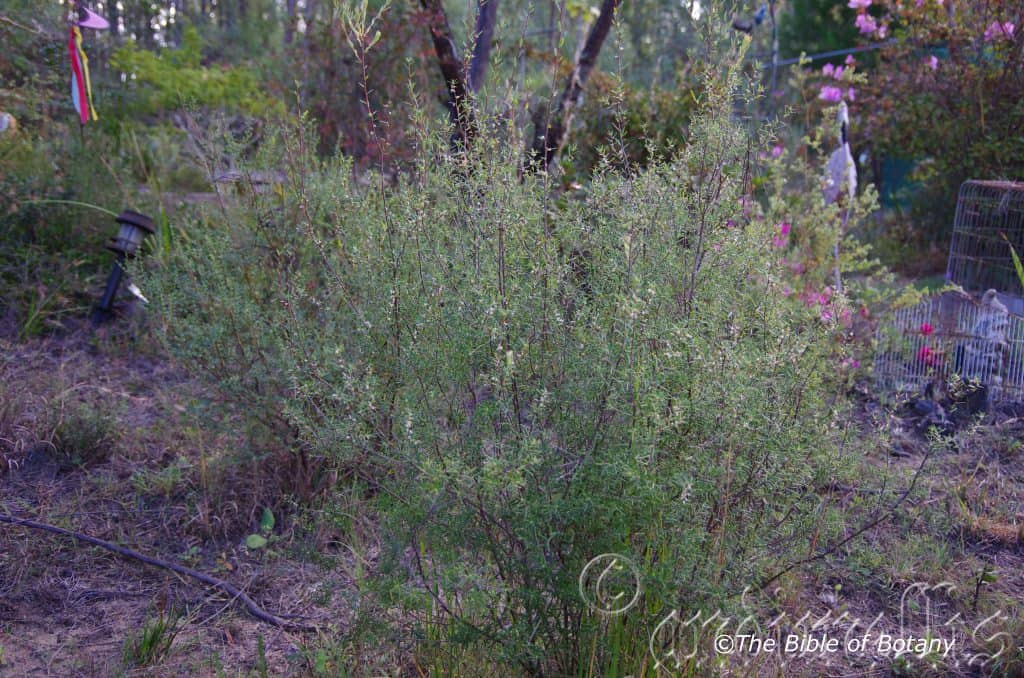
The Pinnacles NSW
Leucopogon melaleucoides
Classification:
Unranked: Magnoliophyta
Class: Magnoliopsida
Superorder: Magnoliidae
Order: Ericales
Family: Ericaceae
Genus: From Leukós, which is Ancient Greek for white and Pogon, which is Ancient Greek for a bristly beard. It refers to the corolla lobes, which have a white beard.
Specie: From Mélas, which is Ancient Greek for black and Leukós, which is Ancient Greek for white and Eîdos/Oides, which is Ancient Greek for alike or similar to. It refers to plants, which resemble the Melaleuca genus in that they usually have white papery bark that are often charred by fire thus the bark is black and white or the leaves are very similar.
Sub species:
Common Name:
Distribution:
Leucopogon melaleucoides is found in an area bounded by Byron to the Macpherson ranges to Mount Ernest, Tea Tree Creek Armidale, Upper Forbes River and Whiskey Gulley near Stanthorpe in far north eastern New South Wales and far south eastern Queensland. It is found on and east of the Great Dividing Range except for a single population further west at Lake Pure near Wyberba with one further south at Mussellbrook.
https://avh.ala.org.au/occurrences/search?taxa=Leucopogon+melaleucoides#tab_mapView
Habitat Aspect Climate:
Leucopogon melaleucoides prefers full sun to light dappled shade. It grows in dry schlerophyll forests to wet Eucalyptus forests along creek, stream or river beds often in the riparian zone where the plant usually grows horizontal with the flow of water. It is also found in higher altitude wallum heaths. The altitude usually ranges from 700 meters ASL to 1209 meters ASL but can be as low as 265 meters ASL near Byron.
The temperatures range from minus 4 degrees in August to 36 degrees in January.
The rainfalls range from lows of 650mm to an average of 2100mm.
Soil Requirements:
Leucopogon melaleucoides prefers to grow on sandy loams to light fatty clays with sharp grains of sand. The soils are usually derived from decomposed granites over granite. The soils pH ranges from 5pH to 6pH. It does not tolerate waterlogged soils. Non saline soils to moderately saline soils are tolerated.
Height & Spread:
Wild Plants: 0.7m to 1m by 0.7m to 1m.
Characteristics:
Leucopogon melaleucoides erect, densely branching stems are mid brown. The apical stems are mid brown while the new growth and young stems are pale green to pale blue-green. The apical stems are moderately to densely covered in soft, white appressed pubescent hairs.
Leucopogon melaleucoides’s alternate lanceolate to obovate leaves measure 5mm to 21mm in length by 0.6mm to 2.8mm in width. The bases are rounded while the apexes are mucronate. The discolourous laminas are deep green to sea-green thick, stiff and are glabrous to sparsely covered in white hirtellous hairs on the upper laminas while the lower laminas are paler and moderately covered in soft, white pulverulent hairs. The laminas are flat or gently recurve upwards from the mid vein then decurve gently downwards near the margins while the margins are entire or finely toothed. The mid vein and parallel lateral veins are obscure on both laminas but can be seen as faint longitudinal striations on the lower lamina. The appressed petioles are covered in soft, white appressed pulverulent hairs and measure 0.5mm to 1.2mm in length.
The inflorescences are short spikes of 3 to 15 individual flowers born from the leaf axils. The spikes measure 10mm to 23mm in length. The pale green tinged pink to pale pink bracteoles’ apexes is obtuse while the bracteoles measure 1.1mm to 1.3mm in length. The pale green tinged pink with white hyaline margin or pinkish sepals are united on the basal third before dividing into the 5 broad obtuse lobes. The sepals are glabrous and measure 2mm to 2.5mm in length. The white corolla tubes are glabrous externally and are densely covered in white pilose hairs on the apical half internally. The corolla tubes measure 2.5mm to 3.2mm in length. The 5 white lobes are reflex, glabrous externally and densely covered in long white, pilose hairs internally. The linear lobes apexes are acute and measure 2.5mm to 3mm in length.
The 5 pale mid brown stamens are inserted. The pinkish pistil is inserted. The fragrant flowers appear from June to November.
Leucopogon melaleucoides’s fruits are obovoidal drupes. The drupes measure 2.5mm to 3mm in length by 2.5mm to 3mm in diameter. The green glabrous drupes turn glossy orange-red to glossy scarlet red with obtuse longitudinal ribs when ripe. The style is persistent on the ripe fruits.
Wildlife:
Leucopogon melaleucoides flowers are fed upon by numerous small butterflies, native bees, native beetles, wasps and flies. The leaves are the food source for the Australian Cranberry moth (Poecilasthena pulchraria).
The fruits are eaten by various small honeyeaters.
The fruits have a pleasant sweet taste similar to cherries.
Cultivation:
Leucopogon melaleucoides are beautiful small erect sub shrubs that grow particularly well on dry or moisture retentive but well drained soils. It is suitable for small, medium and large gardens close to the coast or high in the mountains in warm temperate, sub tropical or tropical gardens. As garden subjects they will grow from 0.8 meter to 1.2 meters in height by 0.8 meter to 1 meter in diameter when grown in the open. It is cold tolerant to temperatures at least as low as minus 7 degrees once established.
It can be lightly tip pruned if a smaller bushier shrub is required in the earlier stages of growth.
It is best used as an understory shrub in cool moist Eucalyptus gardens where there is plenty of ground light or moist to dry heaths. Placed in the midground or foreground on the lower side of a path or mass planted centrally as a feature offer quick coverage while adding interest. Surrounded by other small native shrubs with small, deep red or deep purple flowers really do make for great talking points. Here I immediately think of Hovea acutifolia, Hovea similis, Graptophyllum excelsum and Graptophyllum illicifolium.
When mass or group planting Leucopogon melaleucoides use curves and irregular patterns so they can be viewed from different angles around the garden. The flowers are really highlighted against the deep sea green leaves so place them where it is highly visible.
The plants make excellent tub specimens for the patio, veranda or sunny court yard.
Propagation:
Seeds: Collecting seeds from mature plants of Leucopogon margarodes is not difficult to collect. Remove the seeds from the fruits. The fresh seeds can be sown directly into a seed raising mix. Cover the seeds to a depth of 1mm in the seed trays. Place the trays in a warm position beneath 30mm shade cloth and keep moist not wet. The seeds can take from 40 to over 100 days to germinate with a strike rate of between 20mm and 60mm. Place the trays beneath 30mm shade cloth and keep moist not wet.When the seedlings are 20mm to 30mm tall, prick them out and plant them into 50mm native tubes using a good quality mix.
Stratification over winter may enhance strike rates. I have not tested seeds using stratification however it is often a necessity for alpine plants and Leucopogon specie may be no different.
The seedlings are slow initially but once the seedlings reach 70mm to 80mm in height they can be repotted into 100mm to 150mm for patio use or into planted out into their permanent position.
Cuttings: Cuttings of Leucopogon margarodes are difficult to strike. Below is the methods we employed when growing Leucopogon lanceolatus.
Use 70mm to 100mm long half ripened material when growing from cuttings from the present season’s growth which will give the best results.
Take them in the warmer months where heavy frosts or snow occurs or throughout the year in frost free zones or where frosts are only light.
1 Prepare the cutting mix by adding one third sharp clean river sand, one third peat and one third perlite. These ingredients are sterilize,
2 Select good material from non diseased plants,
3 Select semi green stems for cuttings. Look for a stem with two or three nodes,
4 Place the cutting on a flat, hard surface, and make a clean cut down one side of the cutting at the base for 10mm with a sharp sterile knife or razor blade. – This scarification of the node will increase the chances of roots emerging from this spot. Now remove all but one or two the leaves, leaving the apex leaves in tact. If the leaves are very large in proportion to the stem, cut off the apical halves.
5 Fill a saucer with water, and place a little medium strength rooting hormone into another container like a milk bottle top. Dip the node end of the cutting into the water and then into the rooting hormone. Tap off any excess hormone,
6 Use a small dipple stick or old pencil to poke a hole into the soilless potting mix. Ensure the hole is slightly larger than the stem diameter and be careful not to wipe the rooting hormone off the cuttings base, place the cuttings in a pattern ensuring the cuttings are not touching each other,
7 Place the cuttings in a moist sterile seed raising mix at 45 degrees to 70 degree angle with half the cutting below the mix and half above the mix.
8 When the cuttings have struck, open the bag to allow air circulation for a few days to a week,
9 Once hardened off remove the cuttings from the bag and allow to further hardening for a few more days,
10 Transplant into a good potting mix to grow on.
Fertilize using seaweed, fish emulsion or organic chicken pellets soaked in water on an alternate basis. Fertilize every two months until the plants are established then twice annually in early September or March to maintain health, vitality and better flowering. Once the seedlings reach 100mm to 150mm in height they can be planted out into their permanent position.
Further Comments from Readers:
Hi reader, it seems you use The Bible of Botany a lot. That’s great as we have great pleasure in bringing it to you! It’s a little awkward for us to ask, but our first aim is to purchase land approximately 1,600 hectares to link several parcels of N.P. into one at The Pinnacles NSW Australia, but we need your help. We’re not salespeople. We’re amateur botanists who have dedicated over 30 years to saving the environment in a practical way. We depend on donations to reach our goal. If you donate just $5, the price of your coffee this Sunday, We can help to keep the planet alive in a real way and continue to bring you regular updates and features on Australian plants all in one Botanical Bible. Any support is greatly appreciated. Thank you.
In the spirit of reconciliation we acknowledge the Bundjalung, Gumbaynggirr and Yaegl and all aboriginal nations throughout Australia and their connections to land, sea and community. We pay our respect to their Elders past, present and future for the pleasures we have gained.
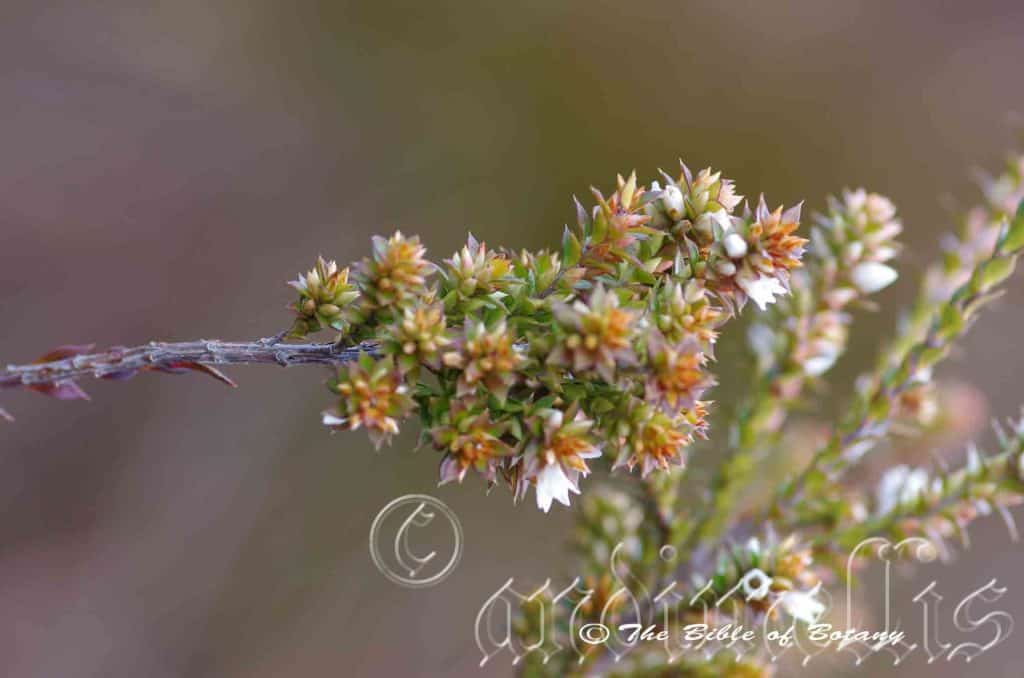
Cathedral Rocks National Park Wallum Ebor NSW
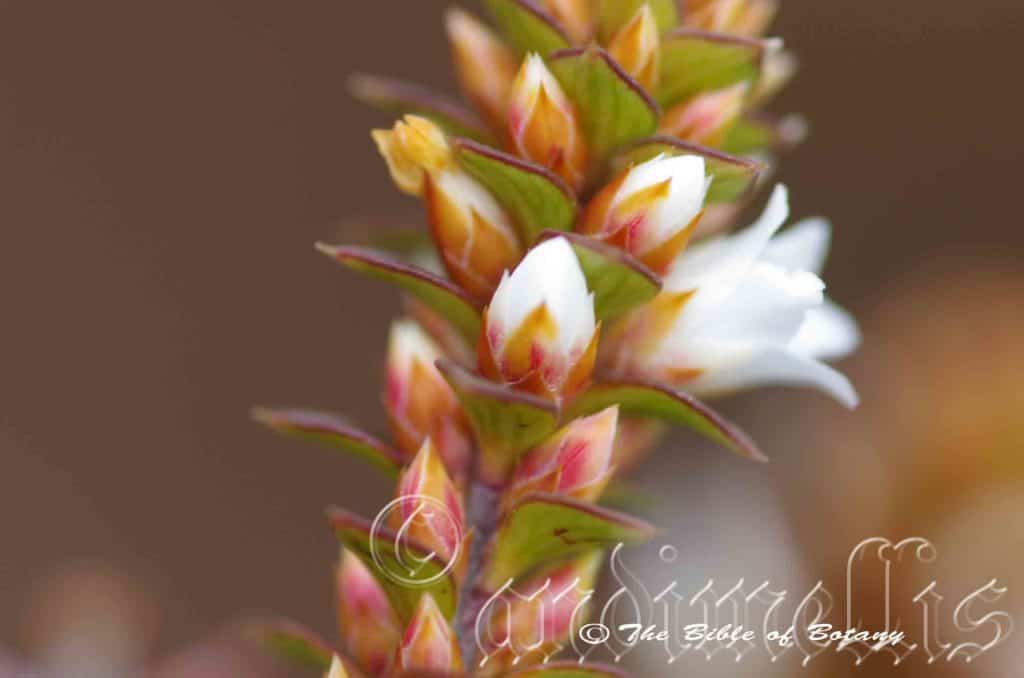
Cathedral Rocks National Park Wallum Ebor NSW
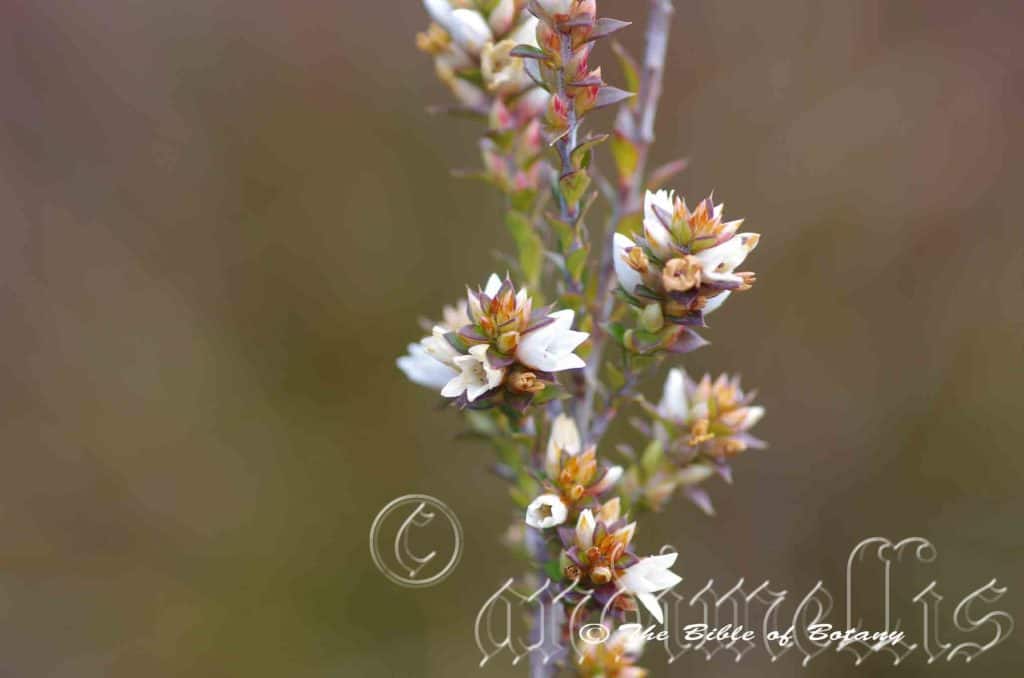
Cathedral Rocks National Park Wallum Ebor NSW
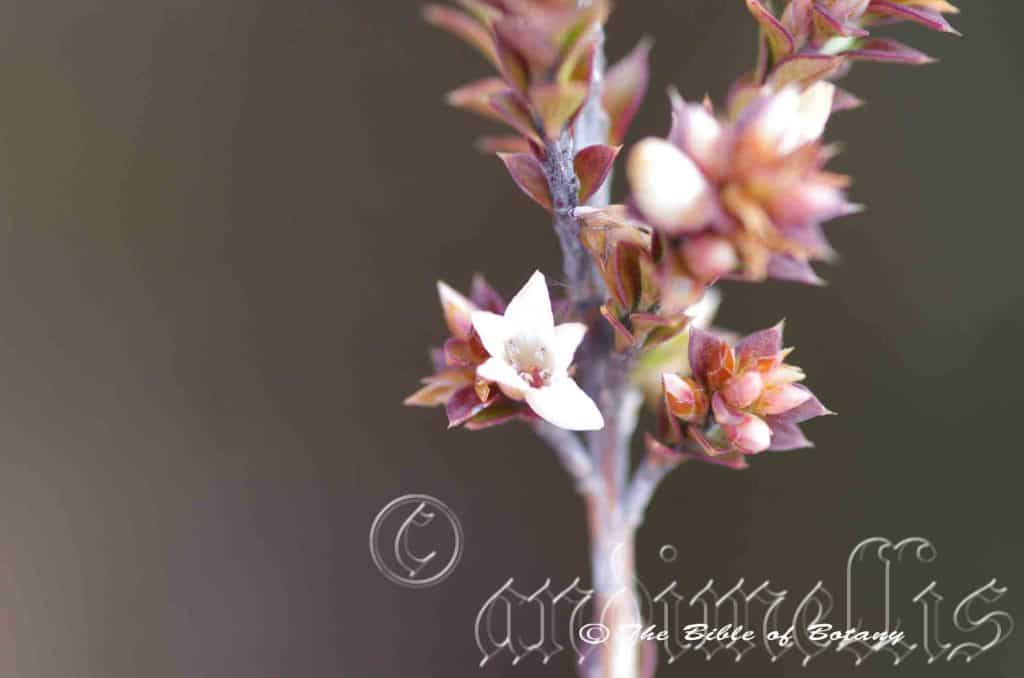
Cathedral Rocks National Park Wallum Ebor NSW
Leucopogon neoanglicus
Classification:
Unranked: Magnoliophyta
Class: Magnoliopsida
Superorder: Magnoliidae
Order: Ericales
Family: Ericaceae
Genus: From Leukós, which is Ancient Greek for white and Pogon, which is Ancient Greek for a bristly beard. It refers to the corolla lobes, which have a white beard.
Specie: From Neoa, which is Ancient Greek for new or recent and Anglicus, which is Latinized for England. It refers to plants, which grow in the New England district in north eastern New South Wales.
Sub species:
Common Name:
Distribution:
Leucopogon neoanglicus is found in 2 disjunct populations. The northern population is bounded by Mount Cotton to Cooyar, Bald Rock near Tenterfield, Narrabri and Wauchope in northern New South Wales and far south eastern Queensland.
The southern population is found south from the coast and Badgery’s Crossing to Mount Palarang and Budawang Range in southern New South Wales. There is a disjunct population further south at Kydra Reefs and an isolated population further north on the Blackdown Tablelands National Park.
https://avh.ala.org.au/occurrences/search?taxa=Leucopogon+neoanglicus#tab_mapView
Habitat Aspect Climate:
Leucopogon neoanglicus prefers full sun to light dappled shade. It grows in dry woodland heaths to dry Eucalyptus woodlands on rocky ledges and rock outcrops. The altitude ranges from 59 meter ASL to 950 meters ASL.
The temperatures range from minus 4 degrees in August to 38 degrees in January.
The rainfalls range from lows of 650mm to an average of 1500mm. These areas gain additional moisture through orographic precipitation.
Soil Requirements:
Leucopogon neoanglicus prefers to grow on white and grey sands to fatty sandy loams which often have copious quantities of gravel and stones. The soils are usually derived from decomposed granites. The soils pH ranges from 5pH to 6pH. It does not tolerate waterlogged soils. Non saline soils to moderately saline soils are tolerated.
Height & Spread:
Wild Plants: 0.4m to 1m by 0.6m to 1.2m.
Characteristics:
Leucopogon neoanglicus grows as a small spreading to erect, densely to sparsely branched small shrub. The stems are grey and scabrous. The apical stems are mid grey while the new growth and young stems are pale green to pale blue-green. The apical stems are softly scabrous.
The alternate broad ovate to obovate leaves are appressed to semi appressed and measure 5.5mm to 10.5mm in length by 2.3mm to 4.6mm in width. The glabrous petioles measure 0.3mm to 0.5mm in length. The bases are rounded to truncate while the apexes are acute with a long pale grey spine which is reddish and yellow at the base. The spines measure 3mm to 4.5mm in length. The discolourous laminas are deep green, blue-green or deep olive-green tinged red especially when the temperatures are consistently below zero on the upper laminas while the lower laminas are paler. The thick, stiff leaves are glabrous. The laminas are flat and straight while the margins are hyaline and minutely toothed. The mid vein and 2 parallel lateral veins are prominent on the lower lamina and are faintly visible from the upper lamina.
The inflorescences are born solitary from the leaf axils. The pale green tinged pink to pinkish bracteoles’ apexes are obtuse while the bracteoles measure 2mm to 3mm in length. The pastel blue-green sepals are united on the basal half before dividing into the 5 broad obtuse lobes. The sepals are glabrous and measure 4mm to 5mm in length. The white corolla tubes are glabrous externally and are sparsely to densely covered in white pilose hairs internally. The corolla tubes measure 5mm to 8mm in length. The 5 reflex white lobes are glabrous externally and densely covered in long white, pilose hairs internally. The elliptical lobes apexes are acute and measure 3.7mm to 4.5mm in length.
The 5 pale mid brown stamens are inserted. The white style is inserted and has a crimson-red stigma. The fragrant flowers appear from March to October.
The fruits are ellipsoidal drupes. The drupes measure 3.2mm to 4mm in length by 3mm to 3.5mm in diameter. The green glabrous drupes turn glossy reddish-brown to grey-brown when ripe. The style is persistent on the ripe fruits.
Wildlife:
Leucopogon neoanglicus’s flowers are fed upon by numerous small butterflies, native bees, native beetles, wasps and flies. The leaves are the food source for the Australian Cranberry moth, Poecilasthena pulchraria.
The fruits are eaten by most small honeyeaters.
Cultivation:
Leucopogon neoanglicus are beautiful small erect sub shrubs that grow particularly well on dry or moisture retentive but well drained soils. It is suitable for small, medium and large gardens close to the coast or high in the mountains in warm temperate, sub tropical or tropical gardens. As garden subjects they will grow from 1.5 meter to 2 meters in height by 1 meter to 1.5 meters in diameter when grown in the open. It is cold tolerant to temperatures at least as low as minus 7 degrees once established.
It can be lightly tip pruned if a smaller bushier shrub is required in the earlier stages of growth.
It is best used as an understory shrub in cool moist Eucalyptus gardens where there is plenty of ground light or moist to dry heaths. Placed in the midground or foreground on the lower side of a path or mass planted centrally as a feature offer quick coverage while adding interest. Surrounded by other small native shrubs with small, deep red or deep purple flowers really do make for great talking points. Here I immediately think of Hovea acutifolia, Hovea similis, Graptophyllum excelsum and Graptophyllum illicifolium.
When mass or group planting Leucopogon neoanglicus use curves and irregular patterns so they can be viewed from different angles around the garden. The flowers are really highlighted against the deep sea green leaves so place them where it is highly visible.
The plants make excellent tub specimens for the patio, veranda or sunny court yard.
Propagation:
Seeds: Collecting seeds from mature plants of Leucopogon margarodes is not difficult to collect. Remove the seeds from the fruits. The fresh seeds can be sown directly into a seed raising mix. Cover the seeds to a depth of 1mm in the seed trays. Place the trays in a warm position beneath 30mm shade cloth and keep moist not wet. The seeds can take from 40 to over 100 days to germinate with a strike rate of between 20mm and 60mm. Place the trays beneath 30mm shade cloth and keep moist not wet.When the seedlings are 20mm to 30mm tall, prick them out and plant them into 50mm native tubes using a good quality mix.
Stratification over winter may enhance strike rates. I have not tested seeds using stratification however it is often a necessity for alpine plants and Leucopogon specie may be no different.
The seedlings are slow initially but once the seedlings reach 70mm to 80mm in height they can be repotted into 100mm to 150mm for patio use or into planted out into their permanent position.
Cuttings: Cuttings of Leucopogon margarodes are difficult to strike. Below is the methods we employed when growing Leucopogon lanceolatus.
Use 70mm to 100mm long half ripened material when growing from cuttings from the present season’s growth which will give the best results.
Take them in the warmer months where heavy frosts or snow occurs or throughout the year in frost free zones or where frosts are only light.
1 Prepare the cutting mix by adding one third sharp clean river sand, one third peat and one third perlite. These ingredients are sterilize,
2 Select good material from non diseased plants,
3 Select semi green stems for cuttings. Look for a stem with two or three nodes,
4 Place the cutting on a flat, hard surface, and make a clean cut down one side of the cutting at the base for 10mm with a sharp sterile knife or razor blade. – This scarification of the node will increase the chances of roots emerging from this spot. Now remove all but one or two the leaves, leaving the apex leaves in tact. If the leaves are very large in proportion to the stem, cut off the apical halves.
5 Fill a saucer with water, and place a little medium strength rooting hormone into another container like a milk bottle top. Dip the node end of the cutting into the water and then into the rooting hormone. Tap off any excess hormone,
6 Use a small dipple stick or old pencil to poke a hole into the soilless potting mix. Ensure the hole is slightly larger than the stem diameter and be careful not to wipe the rooting hormone off the cuttings base, place the cuttings in a pattern ensuring the cuttings are not touching each other,
7 Place the cuttings in a moist sterile seed raising mix at 45 degrees to 70 degree angle with half the cutting below the mix and half above the mix.
8 When the cuttings have struck, open the bag to allow air circulation for a few days to a week,
9 Once hardened off remove the cuttings from the bag and allow to further hardening for a few more days,
10 Transplant into a good potting mix to grow on.
Fertilize using seaweed, fish emulsion or organic chicken pellets soaked in water on an alternate basis. Fertilize every two months until the plants are established then twice annually in early September or March to maintain health, vitality and better flowering. Once the seedlings reach 100mm to 150mm in height they can be planted out into their permanent position.
Further Comments from Readers:
Hi reader, it seems you use The Bible of Botany a lot. That’s great as we have great pleasure in bringing it to you! It’s a little awkward for us to ask, but our first aim is to purchase land approximately 1,600 hectares to link several parcels of N.P. into one at The Pinnacles NSW Australia, but we need your help. We’re not salespeople. We’re amateur botanists who have dedicated over 30 years to saving the environment in a practical way. We depend on donations to reach our goal. If you donate just $5, the price of your coffee this Sunday, We can help to keep the planet alive in a real way and continue to bring you regular updates and features on Australian plants all in one Botanical Bible. Any support is greatly appreciated. Thank you.
In the spirit of reconciliation we acknowledge the Bundjalung, Gumbaynggirr and Yaegl and all aboriginal nations throughout Australia and their connections to land, sea and community. We pay our respect to their Elders past, present and future for the pleasures we have gained.
Leucopogon parviflorus
Classification:
Unranked: Magnoliophyta
Class: Magnoliopsida
Superorder: Magnoliidae
Order: Ericales
Family: Ericaceae
Genus: From Leukós, which is Ancient Greek for white and Pogon, which is Ancient Greek for a bristly beard. It refers to the corolla lobes, which have a white beard.
Specie: From Paûros, which is Ancient Greek or Parvum which is Latin for small and Flōris which is Latin for a flower or Flōs from the Roman goddess of spring and flowers. It refers to flowers, which are somewhat smaller when compared to other species in the genus.
Sub species:
Common Name: Coastal Bearded Heath or Native Currant.
The local Gumbaynggirr know it as Nyam-nyam.
Distribution:
Leucopogon parviflorus circumnavigates the southern half of Australia south from Dongara in central coastal Western Australia to Israelite Bay in the south coast of Western Australia near Esperance and the off coast islands.
In the east it is found from Fraser Island in central coastal Queensland to Yanerbie on Eyre Peninsula in South Australia including the off coast islands and Lord Howe Island.
In Tasmania it is found on all the Bass Strait Islands as well as circumnavigating the main Island itself.
There are 3 isolated populations found on Mount Spec, near Gillgandra and in the Mount Buffalo National Park.
https://avh.ala.org.au/occurrences/search?taxa=Leucopogon+parviflorus#tab_mapView
Habitat Aspect Climate:
Leucopogon parviflorus prefers full sun to light dappled shade. It grows in dry schlerophyll forests to wet Eucalyptus forests along creek, stream and river beds often in the riparian zone where the plants are usually growing horizontal with the flow of water. It is also found at higher altitude wallum heaths. The altitude usually ranges from 2 meter ASL to 90 meters ASL which does not including the 3 isolated populations which rise to 900 meters ASL, 287 meters ASL and 1500 meters ASL respectively.
The temperatures range from minus 4 degrees in August to 39 degrees in January.
The rainfalls range from lows of 400mm to an average of 2100mm however this is of little consequence as the plants derive most their moisture from the creeks or streams they grow in and along.
Soil Requirements:
Leucopogon parviflorus prefers to grow on peaty sands to sandy loams or medium silts to heavy silts. The soils are usually derived from accumulated beach sands or at times accumulated coral sands or alluvial delta silts. The soils pH ranges from 5pH to 7pH. It does not tolerate waterlogged soils. Non saline soils to moderately saline soils are tolerated.
Height & Spread:
Wild Plants: 1.2m to 5m by 1m to 3m.
Characteristics:
Leucopogon parviflorus’s is spreading to erect, densely branched shrub to small tree. The main stem or trunk is pale brown with longitudinal fissures. The stems are pale grey-brown and scabrous. The apical stems are mid grey while the new growth and young stems are pale green to pale blue-green. The apical stems are glabrous while the new growth is sparsely covered in white puberulent hairs.
The alternate, erect narrow elliptical to oblanceolate leaves measure 11mm to 29mm in length by 2.2mm to 7.5mm in width. The bases taper to the petioles while the apexes are acute. The stiff discolourous laminas are deep green to blue-green and glabrous on the upper laminas while the lower laminas are paler. The laminas are flat and straight and decurve gently downwards close to the apex while the margins are entire. The mid vein and parallel lateral veins are obscure on both laminas and are faintly striated on the lower lamina. The glabrous petioles measure 0mm to 0.5mm in length.
The inflorescences are born on short spikes of 7 to 13 individual flowers from the leaf axils. The spikes are covered in white pulverulent hairs and measure 10mm to 32mm in length. The pale green tinged pink to pinkish bracteoles’ apexes are broad accuminate while the bracteoles measure 1mm to 1.4mm in length. The white to pastel pink sepals are united on the basal half before dividing into the 5 broad obtuse lobes. The glabrous sepals measure 1.5mm to 1.8mm in length. The white corolla tubes are glabrous externally and are densely covered in white pilose and pubescent hairs internally near the opening. The corolla tubes measure 3mm to 4mm in length. The 5 white, linear, reflex lobes are glabrous externally and densely covered in long white, pilose and pulverulent hairs internally. The lobes apexes are acute and measure 2mm to 3.5mm in length.
The 5 pale white filaments are level with the base of the lobes while the tan to yellow ochre stamens are exserted and measure 1.5mm to 1.6mm in length with a 0.5mm cream appendage. The white or tan pistil is inserted. The fragrant flowers appear throughout the year.
The fruits are globose to orbicular drupes. The drupes measure 4.5mm to 5mm in length by 4.5mm to 5mm in diameter. The green glabrous drupes turn glossy white when ripe. The style is persistent on the ripe fruits.
Wildlife:
Leucopogon parviflorus’s wildlife is unknown to the author.
Cultivation:
Leucopogon parviflorus are beautiful small erect sub shrubs that grow particularly well on dry or moisture retentive but well drained soils. It is suitable for small, medium and large gardens close to the coast or high in the mountains in warm temperate, sub tropical or tropical gardens. As garden subjects they will grow from 2 meters to 3 meters in height by 1.5 meters to 3.5 meters in diameter when grown in the open. It is cold tolerant to temperatures at least as low as minus 6 degrees once established.
It can be lightly tip pruned if a smaller bushier shrub is required in the earlier stages of growth.
It is best used as an understory shrub in cool moist Eucalyptus gardens where there is plenty of ground light or moist to dry heaths. Placed in the midground or background on the lower side of a path or mass planted centrally as a feature offer quick coverage while adding interest. Surrounded by other smaller native shrubs with small, deep red or deep purple flowers really do make for great a talking point. Here I immediately think of Hovea acutifolia, Hovea similis, Graptophyllum excelsum and Graptophyllum illicifolium.
When mass or group planting Leucopogon parviflorus use curves and irregular patterns so they can be viewed from different angles around the garden. The flowers are really highlighted against the deep sea green leaves so place them where it is highly visible.
The plants make excellent tub specimens for the patio, veranda or sunny court yard.
Propagation:
Seeds: Collecting seeds from mature plants of Leucopogon margarodes is not difficult to collect. Remove the seeds from the fruits. The fresh seeds can be sown directly into a seed raising mix. Cover the seeds to a depth of 1mm in the seed trays. Place the trays in a warm position beneath 30mm shade cloth and keep moist not wet. The seeds can take from 40 to over 100 days to germinate with a strike rate of between 20mm and 60mm. Place the trays beneath 30mm shade cloth and keep moist not wet.When the seedlings are 20mm to 30mm tall, prick them out and plant them into 50mm native tubes using a good quality mix.
Stratification over winter may enhance strike rates. I have not tested seeds using stratification however it is often a necessity for alpine plants and Leucopogon specie may be no different.
The seedlings are slow initially but once the seedlings reach 70mm to 80mm in height they can be repotted into 100mm to 150mm for patio use or into planted out into their permanent position.
Cuttings: Cuttings of Leucopogon margarodes are difficult to strike. Below is the methods we employed when growing Leucopogon lanceolatus.
Use 70mm to 100mm long half ripened material when growing from cuttings from the present season’s growth which will give the best results.
Take them in the warmer months where heavy frosts or snow occurs or throughout the year in frost free zones or where frosts are only light.
1 Prepare the cutting mix by adding one third sharp clean river sand, one third peat and one third perlite. These ingredients are sterilize,
2 Select good material from non diseased plants,
3 Select semi green stems for cuttings. Look for a stem with two or three nodes,
4 Place the cutting on a flat, hard surface, and make a clean cut down one side of the cutting at the base for 10mm with a sharp sterile knife or razor blade. – This scarification of the node will increase the chances of roots emerging from this spot. Now remove all but one or two the leaves, leaving the apex leaves in tact. If the leaves are very large in proportion to the stem, cut off the apical halves.
5 Fill a saucer with water, and place a little medium strength rooting hormone into another container like a milk bottle top. Dip the node end of the cutting into the water and then into the rooting hormone. Tap off any excess hormone,
6 Use a small dipple stick or old pencil to poke a hole into the soilless potting mix. Ensure the hole is slightly larger than the stem diameter and be careful not to wipe the rooting hormone off the cuttings base, place the cuttings in a pattern ensuring the cuttings are not touching each other,
7 Place the cuttings in a moist sterile seed raising mix at 45 degrees to 70 degree angle with half the cutting below the mix and half above the mix.
8 When the cuttings have struck, open the bag to allow air circulation for a few days to a week,
9 Once hardened off remove the cuttings from the bag and allow to further hardening for a few more days,
10 Transplant into a good potting mix to grow on.
Fertilize using seaweed, fish emulsion or organic chicken pellets soaked in water on an alternate basis. Fertilize every two months until the plants are established then twice annually in early September or March to maintain health, vitality and better flowering. Once the seedlings reach 100mm to 150mm in height they can be planted out into their permanent position.
Further Comments from Readers:
Hi reader, it seems you use The Bible of Botany a lot. That’s great as we have great pleasure in bringing it to you! It’s a little awkward for us to ask, but our first aim is to purchase land approximately 1,600 hectares to link several parcels of N.P. into one at The Pinnacles NSW Australia, but we need your help. We’re not salespeople. We’re amateur botanists who have dedicated over 30 years to saving the environment in a practical way. We depend on donations to reach our goal. If you donate just $5, the price of your coffee this Sunday, We can help to keep the planet alive in a real way and continue to bring you regular updates and features on Australian plants all in one Botanical Bible. Any support is greatly appreciated. Thank you.
In the spirit of reconciliation we acknowledge the Bundjalung, Gumbaynggirr and Yaegl and all aboriginal nations throughout Australia and their connections to land, sea and community. We pay our respect to their Elders past, present and future for the pleasures we have gained.
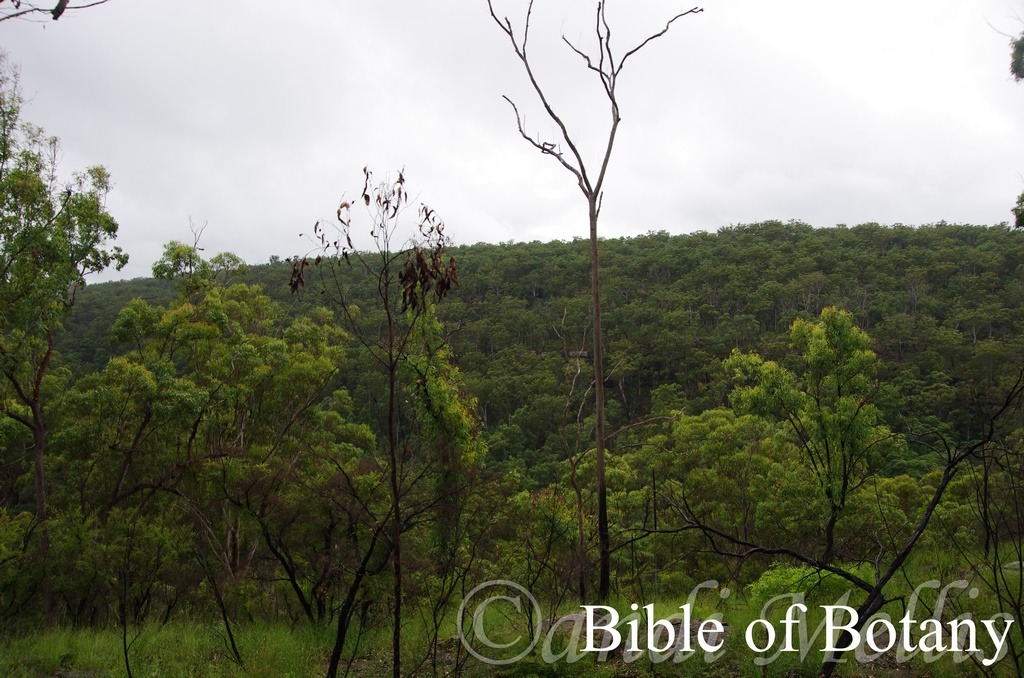
Wombat Creek National Park NSW

Wombat Creek National Park NSW
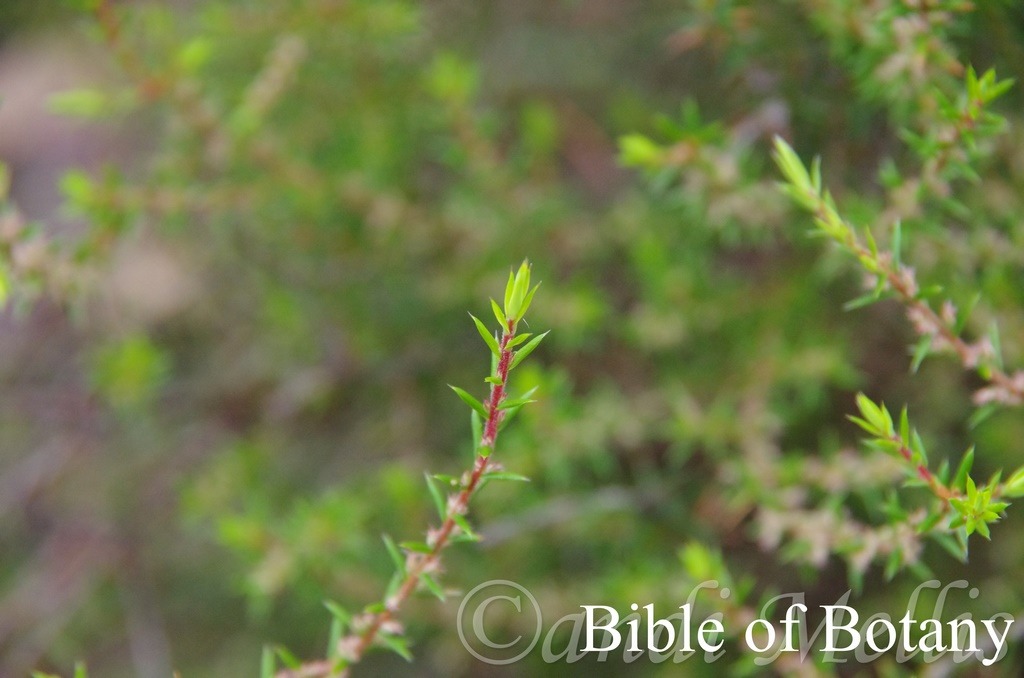
Wombat Creek National Park NSW
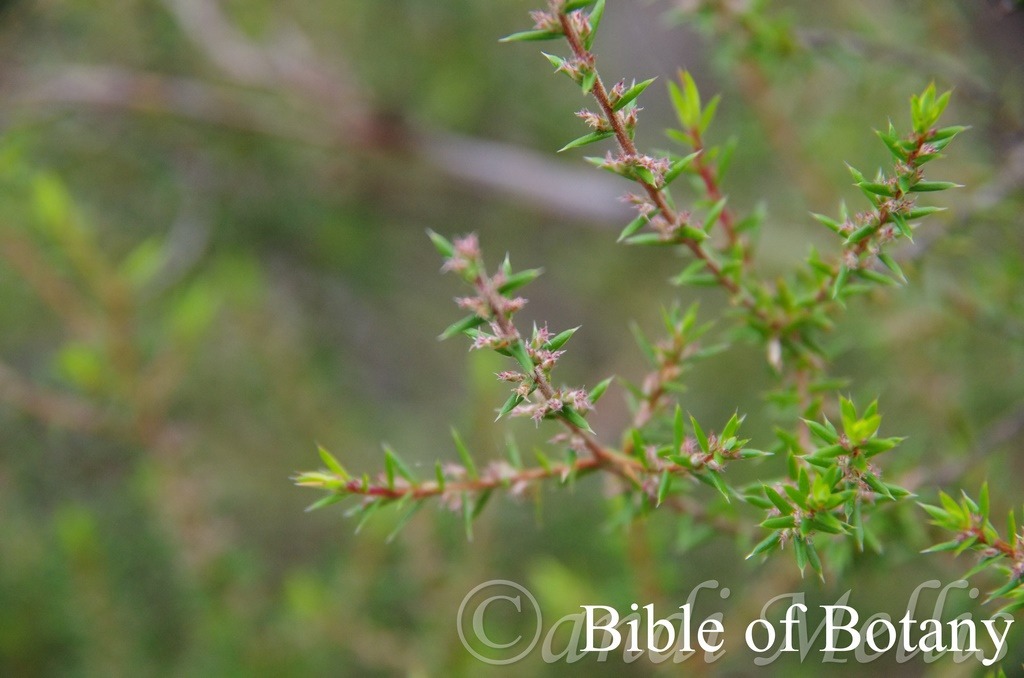
Wombat Creek National Park NSW
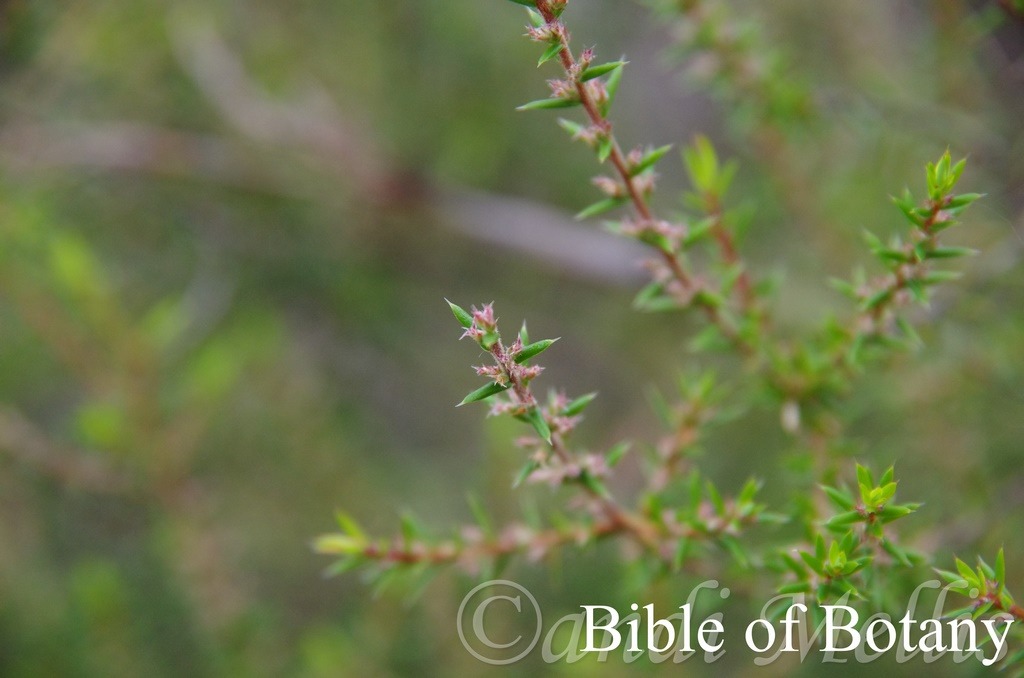
Wombat Creek National Park NSW
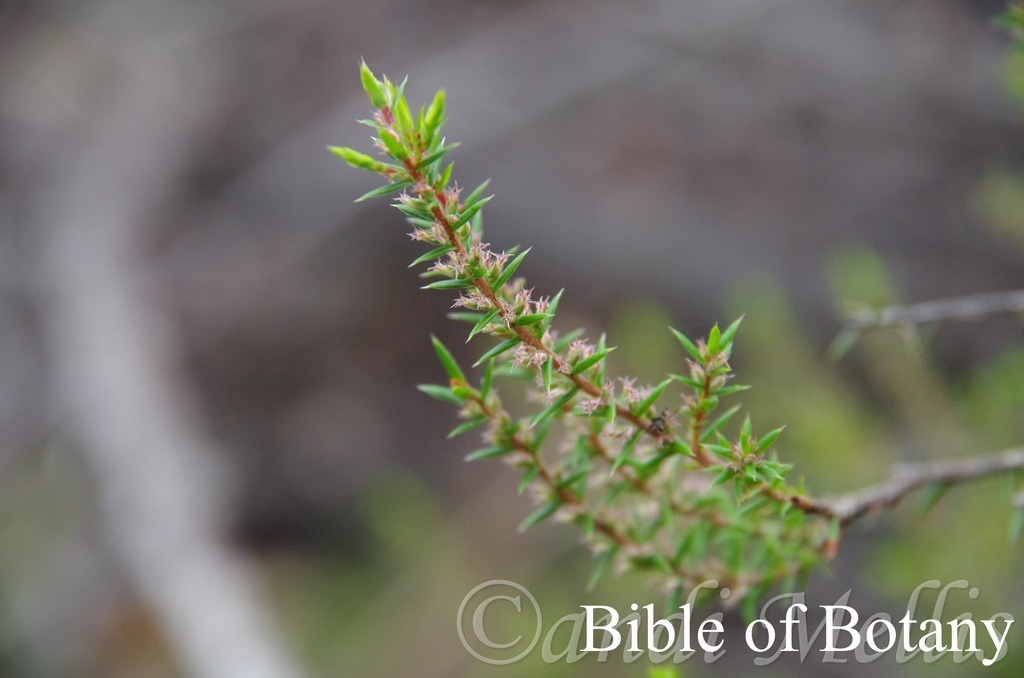
Wombat Creek National Park NSW
Leucopogon recurisepalus
Classification:
Unranked: Magnoliophyta
Class: Magnoliopsida
Superorder: Magnoliidae
Order: Ericales
Family: Ericaceae
Genus: From Leukós, which is Ancient Greek for white and Pogon, which is Ancient Greek for a bristly beard. It refers to the corolla lobes, which have a white beard.
Specie: From Re, which is Latin for again, Curvare, which is Latin for to bend backwards and Sképē, which is Ancient Greek or Sepalum, which is Latin for a roof or covering. It refers to sepals, which recurve upwards from the base before curving downwards on the apical half.
Sub species:
Common Name:
Distribution:
Leucopogon recurvisepalus is found in 5 disjunct populations from Coochin Hills on the Glass House Mountains, Mount Mee and Plunkett in south eastern Queensland and Mount Neville, Stockyard Creek north east of Grafton and Waihou Floral Reserve in far north eastern New South Wales.
https://avh.ala.org.au/occurrences/search?taxa=Leucopogon+recurvisepalus#tab_mapView
Habitat Aspect Climate:
Leucopogon recurvisepalus prefers full sun to light dappled shade. It grows in dry schlerophyll forests dry heaths. The altitude ranges from 35 meter ASL to 360 meters ASL.
The temperatures range from zero degrees in August to 38 degrees in January.
The rainfalls range from lows of 880mm to an average of 2100mm.
Soil Requirements:
Leucopogon recurvisepalus prefers to grow on reddish light fatty sandy loams, black light sandy clays to brown or pale yellow light clays. The soils are usually derived from decomposed sandstones or brown basalts. The soils pH ranges from 4.3pH to 5pH. It does not tolerate waterlogged soils. Non saline soils to moderately saline soils are tolerated.
Height & Spread:
Wild Plants: 1m to 1.3m by 2m to 2.5m.
Characteristics:
Leucopogon recurvisepalus grows as a densely branched, spreading small shrub. The main stem or trunk is pale brown with longitudinal fissures. The stems are pale grey-brown and scabrous. The apical stems are mid grey while the new growth and young stems are pale green to pale blue-green. The apical stems are glabrous while the new growth is moderately covered in white villous hairs.
The alternate, erect linear to linear-oblong leaves measure 4.5mm to 8.5mm in length by 1.3mm to 2mm in width. The bases taper to near the petioles then are truncate while the apexes are acuminate. The concolourous to discolourous laminas are deep green to blue-green, stiff and glabrous or scabrous with short white hispid hairs on the upper laminas while the lower laminas are slightly paler and sparsely covered in short, white puberulent hairs. The laminas are slightly convex on the upper surface, straight and decurve gently downwards close to the apex while the margins decurve downwards and are entire or finely toothed and sparsely covered in white ciliate hairs. The mid vein and parallel lateral veins are obscure on both laminas and are faintly striated on the lower lamina. The petioles are sparsely covered in short, white puberulent hairs and measure 0.3mm to 0.5mm in length.
The inflorescences are born solitary or on short spikes of 2 or 3 individual flowers with a rudimentary bud from the leaf axils. The spikes are covered in white puberulent hairs and measure 2mm to 7mm in length while the peduncles measure 0.5mm to 1mm in length. The pale green tinged pink to pinkish bracteoles’ apexes are broad obtuse while the bracteoles measure 1.2mm to 1.8mm in length. The white to pastel pink sepals are united on the basal half before dividing into the 5 broad obtuse lobes. The glabrous sepals measure 2mm to 3mm in length. The white corolla tubes are glabrous externally and are densely covered in white villous and hirsute hairs internally near the opening. The corolla tubes measure 3.4mm to 6.5mm in length. The 5 white, linear, reflex lobes are glabrous externally and densely covered in long white, villous hairs internally. The lobes apexes are acute and measure 1.8mm to 3.2mm in length.
The 5 pale white filaments are level with the base of the lobes while the tan to yellow ochre stamens are exserted. The white or tan pistil is inserted. The fragrant flowers appear from June to July in New South Wales and from January to September in the Queensland populations.
The fruits are ellipsoidal drupes. The drupes measure 3mm to 3.3mm in length by 2.8mm to 3mm in diameter. The green glabrous drupes turn brown when ripe. The style is persistent on the ripe fruits.
Wildlife:
Leucopogon recurvisepalus’s wildlife is unknown to the author.
Cultivation:
Leucopogon recurvisepalus are beautiful small erect sub shrubs that grow particularly well on dry or moisture retentive but well drained soils. It is suitable for small, medium and large gardens close to the coast or high in the mountains in warm temperate, sub tropical or tropical gardens. As garden subjects they will probably grow from 1 meter to 1.5 meters in height by 1 meter to 1.5 meters in diameter when grown in the open. It is cold tolerant to temperatures at least as low as minus 2 degrees once established.
It can be lightly tip pruned if a smaller bushier shrub is required in the earlier stages of growth.
It is best used as an understory shrub in cool moist Eucalyptus gardens where there is plenty of ground light or moist to dry heaths. Placed in the midground or foreground on the lower side of a path or mass planted centrally as a feature offer quick coverage while adding interest. Surrounded by other small native shrubs with small, deep red or deep purple flowers really do make for great talking points. Here I immediately think of many of the small Grevillea specie Hovea acutifolia, Hovea similis, Graptophyllum excelsum and Graptophyllum illicifolium.
When mass or group planting Leucopogon recurvisepalus use curves and irregular patterns so they can be viewed from different angles around the garden. The flowers are really highlighted against the deep sea green leaves so place them where it is highly visible.
The plants make excellent tub specimens for the patio, veranda or sunny court yard.
While the individual numbers of around 400,000 plants looks secure it is found in 5 disjunct dense populations which are all susceptible to fire. The fact that the populations are dense may indicate that it is reliant on a particular insect for pollicisation and their long term survival.
Propagation:
Seeds: Collecting seeds from mature plants of Leucopogon recurvisepalus is not difficult to collect. Remove the seeds from the fruits. The fresh seeds can be sown directly into a seed raising mix. Cover the seeds to a depth of 1mm in the seed trays. Place the trays in a warm position beneath 30mm shade cloth and keep moist not wet. The seeds can take from 40 to over 100 days to germinate with a strike rate of between 20mm and 60mm. Place the trays beneath 30mm shade cloth and keep moist not wet.When the seedlings are 20mm to 30mm tall, prick them out and plant them into 50mm native tubes using a good quality mix.
Stratification over winter may enhance strike rates. I have not tested seeds using stratification however it is often a necessity for alpine plants and Leucopogon specie may be no different.
The seedlings are slow initially but once the seedlings reach 70mm to 80mm in height they can be repotted into 100mm to 150mm for patio use or into planted out into their permanent position.
Cuttings: Cuttings of Leucopogon recurvisepalus are difficult to strike. Below is the methods we employed when growing Leucopogon lanceolatus.
Use 70mm to 100mm long half ripened material when growing from cuttings from the present season’s growth which will give the best results.
Take them in the warmer months where heavy frosts or snow occurs or throughout the year in frost free zones or where frosts are only light.
1 Prepare the cutting mix by adding one third sharp clean river sand, one third peat and one third perlite. These ingredients are sterilize,
2 Select good material from non diseased plants,
3 Select semi green stems for cuttings. Look for a stem with two or three nodes,
4 Place the cutting on a flat, hard surface, and make a clean cut down one side of the cutting at the base for 10mm with a sharp sterile knife or razor blade. – This scarification of the node will increase the chances of roots emerging from this spot. Now remove all but one or two the leaves, leaving the apex leaves in tact. If the leaves are very large in proportion to the stem, cut off the apical halves.
5 Fill a saucer with water, and place a little medium strength rooting hormone into another container like a milk bottle top. Dip the node end of the cutting into the water and then into the rooting hormone. Tap off any excess hormone,
6 Use a small dipple stick or old pencil to poke a hole into the soilless potting mix. Ensure the hole is slightly larger than the stem diameter and be careful not to wipe the rooting hormone off the cuttings base, place the cuttings in a pattern ensuring the cuttings are not touching each other,
7 Place the cuttings in a moist sterile seed raising mix at 45 degrees to 70 degree angle with half the cutting below the mix and half above the mix.
8 When the cuttings have struck, open the bag to allow air circulation for a few days to a week,
9 Once hardened off remove the cuttings from the bag and allow to further hardening for a few more days,
10 Transplant into a good potting mix to grow on.
Fertilize using seaweed, fish emulsion or organic chicken pellets soaked in water on an alternate basis. Fertilize every two months until the plants are established then twice annually in early September or March to maintain health, vitality and better flowering. Once the seedlings reach 100mm to 150mm in height they can be planted out into their permanent position.
Further Comments from Readers:
Hi reader, it seems you use The Bible of Botany a lot. That’s great as we have great pleasure in bringing it to you! It’s a little awkward for us to ask, but our first aim is to purchase land approximately 1,600 hectares to link several parcels of N.P. into one at The Pinnacles NSW Australia, but we need your help. We’re not salespeople. We’re amateur botanists who have dedicated over 30 years to saving the environment in a practical way. We depend on donations to reach our goal. If you donate just $5, the price of your coffee this Sunday, We can help to keep the planet alive in a real way and continue to bring you regular updates and features on Australian plants all in one Botanical Bible. Any support is greatly appreciated. Thank you.
In the spirit of reconciliation we acknowledge the Bundjalung, Gumbaynggirr and Yaegl and all aboriginal nations throughout Australia and their connections to land, sea and community. We pay our respect to their Elders past, present and future for the pleasures we have gained.
Leucopogon rodwayi
Classification:
Unranked: Magnoliophyta
Class: Magnoliopsida
Superorder: Magnoliidae
Order: Ericales
Family: Ericaceae
Genus: From Leukós, which is Ancient Greek for white and Pogon, which is Ancient Greek for a bristly beard. It refers to the corolla lobes, which have a white beard.
Specie: Is named in honour of Leonard R. Rodway; 1853-1936, who was a Tasmanian dentist and amateur herbarium collector who had 6398 specimens in his collection mainly from Tasmania.
Sub species:
Common Name:
Distribution:
Leucopogon rodwayi is found in several disjunct populations south from Mullumbimby to Jervis Bay in coastal New South Wales.
https://avh.ala.org.au/occurrences/search?taxa=Leucopogon+rodwayi#tab_mapView
Habitat Aspect Climate:
Leucopogon rodwayi prefer full sun to light dappled shade. It grows in coastal heath on ridge tops and rocky platforms. The altitude ranges from 20 meter ASL to 80 meters ASL.
The temperatures range from zero degrees in August to 38 degrees in January.
The rainfalls range from lows of 1100mm to an average of 1600mm.
Soil Requirements:
Leucopogon rodwayi prefer to grow on skeletal sandy loams to light clays with coarse sand particles. The soils are usually derived from decomposed sandstones. The soils pH ranges from 5pH to 6pH. It does not tolerate waterlogged soils. Non saline soils to moderately saline soils are tolerated as are salt laden winds.
Height & Spread:
Wild Plants: 0.25m to 0.8m by 0.5m to 1.2m.
Characteristics:
Leucopogon rodwayi’s is densely branched, spreading small shrub. The main stems are pale brown with and glabrous. The stems are pale orange-brown to reddish-brown and glabrous. The apical stems and new growth are pale orange-brown to reddish-brown and sparsely covered in white puberulent hairs.
Leucopogon rodwayi’s alternate, narrow ovate, elliptical or broad linear leaves measure 3.8mm to 10.5mm in length by 0.9mm to 2mm in width. The bases taper slightly to the petioles while the apexes are acute with a small spine which has a yellowish and red base. The concolourous laminas are grey-green, appressed, stiff and glabrous. The laminas are flat to slightly convex on the upper surface, straight or slightly twisted while the margins decurve downwards and are sparsely toothed and sparsely covered in white ciliate hairs. The mid vein and parallel lateral veins are obscure on both laminas and are faintly striated on the lower lamina. The glabrous petioles measure 0.6mm to 1mm in length.
The inflorescences are born on short pendulant spikes of 6 to15 individual flowers from the leaf axils. The spikes measure 3mm to 8mm in length. The pale green tinged pink to pinkish bracteoles’ apexes are broad acuminate and measure 0.8mm to 1mm in length. The pastel pink to pinkish sepals are united near the base before dividing into the 5 tapering obtuse lobes. The glabrous sepals measure 1mm to 1.35mm in length. The white corolla tubes are glabrous and measure 1.6mm to 2.2mm in length. The 5 white, divaricate, triangular lobes are glabrous and measure 0.6mm to 0.9mm in length.
The 5 pale cream filaments are opposite the lobes and are inserted while the pinkish-brown stamens are basifixed and dehisce longitudinally are with level the base of the lobes or slightly exserted. The stocky, cream pistil is inserted. The fragrant flowers appear February to October with a peak in April and again in mid-August to mid-September.
The fruits are ovoidal to obovoidal drupes. The drupes measure 2.3mm to 2.8mm in length by 2.2mm to 2.8mm in diameter. The style is persistent on the ripe fruits.
Wildlife:
Leucopogon rodwayi’s wildlife is unknown to the author.
Cultivation:
Leucopogon rodwayi are beautiful small erect sub shrubs that grow particularly well on dry or moisture retentive but well drained soils. It is suitable for small, medium and large gardens close to the coast or high in the mountains in warm temperate, sub tropical or tropical gardens. As garden subjects they will grow from 0.7 meters to 1 meter in height by 1 meter to 1.5 meters in diameter when grown in the open. It is cold tolerant to temperatures at least as low as 0 degrees once established.
It can be lightly tip pruned if a smaller bushier shrub is required in the earlier stages of growth.
It is best used as an understory shrub in cool moist Eucalyptus gardens where there is plenty of ground light or moist to dry heaths. Placed in the midground or foreground on the lower side of a path or mass planted centrally as a feature offer quick coverage while adding interest. Surrounded by other small native shrubs with small, deep red or deep purple flowers really do make for great talking points. Here I immediately think of Hovea acutifolia, Hovea similis, Graptophyllum excelsum and Graptophyllum illicifolium. Another method would be to mass plant them between Hibbertia scandens. Mass plantings are best achieved by planting them at 0.5 meters to 0.6 meter centers.
When mass or group planting Leucopogon rodwayi use curves and irregular patterns so they can be viewed from different angles around the garden. The flowers are really highlighted against the deep sea-green leaves so place them where it is highly visible.
The plants make excellent tub specimens for the patio, veranda or sunny court yard.
Propagation:
Seeds: Collecting seeds from mature plants of Leucopogon rodwayi is not difficult to collect. Remove the seeds from the fruits. The fresh seeds can be sown directly into a seed raising mix. Cover the seeds to a depth of 1mm in the seed trays. Place the trays in a warm position beneath 30mm shade cloth and keep moist not wet. The seeds can take from 40 to over 100 days to germinate with a strike rate of between 20mm and 60mm. Place the trays beneath 30mm shade cloth and keep moist not wet.When the seedlings are 20mm to 30mm tall, prick them out and plant them into 50mm native tubes using a good quality mix.
Stratification over winter may enhance strike rates. I have not tested seeds using stratification however it is often a necessity for alpine plants and Leucopogon specie may be no different.
The seedlings are slow initially but once the seedlings reach 70mm to 80mm in height they can be repotted into 100mm to 150mm for patio use or into planted out into their permanent position.
Cuttings: Cuttings of Leucopogon rodwayi are difficult to strike. Below is the methods we employed when growing Leucopogon lanceolatus.
Use 70mm to 100mm long half ripened material when growing from cuttings from the present season’s growth which will give the best results.
Take them in the warmer months where heavy frosts or snow occurs or throughout the year in frost free zones or where frosts are only light.
1 Prepare the cutting mix by adding one third sharp clean river sand, one third peat and one third perlite. These ingredients are sterilize,
2 Select good material from non diseased plants,
3 Select semi green stems for cuttings. Look for a stem with two or three nodes,
4 Place the cutting on a flat, hard surface, and make a clean cut down one side of the cutting at the base for 10mm with a sharp sterile knife or razor blade. – This scarification of the node will increase the chances of roots emerging from this spot. Now remove all but one or two the leaves, leaving the apex leaves in tact. If the leaves are very large in proportion to the stem, cut off the apical halves.
5 Fill a saucer with water, and place a little medium strength rooting hormone into another container like a milk bottle top. Dip the node end of the cutting into the water and then into the rooting hormone. Tap off any excess hormone,
6 Use a small dipple stick or old pencil to poke a hole into the soilless potting mix. Ensure the hole is slightly larger than the stem diameter and be careful not to wipe the rooting hormone off the cuttings base, place the cuttings in a pattern ensuring the cuttings are not touching each other,
7 Place the cuttings in a moist sterile seed raising mix at 45 degrees to 70 degree angle with half the cutting below the mix and half above the mix.
8 When the cuttings have struck, open the bag to allow air circulation for a few days to a week,
9 Once hardened off remove the cuttings from the bag and allow to further hardening for a few more days,
10 Transplant into a good potting mix to grow on.
Fertilize using seaweed, fish emulsion or organic chicken pellets soaked in water on an alternate basis. Fertilize every two months until the plants are established then twice annually in early September or March to maintain health, vitality and better flowering. Once the seedlings reach 100mm to 150mm in height they can be planted out into their permanent position.
Further Comments from Readers:
Hi reader, it seems you use The Bible of Botany a lot. That’s great as we have great pleasure in bringing it to you! It’s a little awkward for us to ask, but our first aim is to purchase land approximately 1,600 hectares to link several parcels of N.P. into one at The Pinnacles NSW Australia, but we need your help. We’re not salespeople. We’re amateur botanists who have dedicated over 30 years to saving the environment in a practical way. We depend on donations to reach our goal. If you donate just $5, the price of your coffee this Sunday, We can help to keep the planet alive in a real way and continue to bring you regular updates and features on Australian plants all in one Botanical Bible. Any support is greatly appreciated. Thank you.
In the spirit of reconciliation we acknowledge the Bundjalung, Gumbaynggirr and Yaegl and all aboriginal nations throughout Australia and their connections to land, sea and community. We pay our respect to their Elders past, present and future for the pleasures we have gained.
Leucopogon trichostylus
Classification:
Unranked: Magnoliophyta
Class: Magnoliopsida
Superorder: Magnoliidae
Order: Ericales
Family: Ericaceae
Genus: From Leukós, which is Ancient Greek for white and Pogon, which is Ancient Greek for a bristly beard. It refers to the corolla lobes, which have a white beard.
Specie: From Thrix, which is Ancient Greek for a hair or hair like and Stŷlos, which is Ancient Greek for a column or the female reproductive organs on a flower. It refers to styles, which are rather hairy.
Sub species:
Common Name: Daphne Heath.
Distribution:
Leucopogon trichostylus is found in 2 separate disjunct populations. The northern population is bounded by Proston, Warwick, Ipswich and Murgon in south eastern Queensland.
The New South Wales population is bounded by Nymboida to Armidale and Gloucester in north east. It is found on the coastal ranges and the Great Dividing Range.
https://avh.ala.org.au/occurrences/search?taxa=Leucopogon+trichostylus#tab_mapView
Habitat Aspect Climate:
Leucopogon trichostylus prefers full sun to light dappled shade. It grows in dry schlerophyll woodlands to dry open Eucalyptus forests on rocky outcrops, cliff faces and ledges. The altitude ranges from 55 meters ASL to 1050 meters ASL.
The temperatures range from minus 3 degrees in August to 38 degrees in January.
The rainfalls range from lows of 380mm to an average of 2500mm.
Soil Requirements:
Leucopogon trichostylus prefers to grow on sandy loams to medium clays with copious quantities of gravel or rock and forest litter. The soils are usually derived from decomposed granites or at times black basalts. The soils pH ranges from 5pH to 6pH. It does not tolerate waterlogged soils. Non saline soils to moderately saline soils are tolerated.
Height & Spread:
Wild Plants: 1m to 1.5m by 1.5m to 2m.
Characteristics:
Leucopogon trichostylus’s is an erect to spreading densely branched, spreading small shrub. The stems are pale orange-brown to reddish-brown and glabrous to scabrous. The apical stems and new growth are pale orange-brown to reddish-brown, slightly scabrous and covered in white hispid hairs.
The alternate, elliptic to narrow obovate leaves measure 8.4mm to 14mm in length by 2.1mm to 3.7mm in width. The glabrous petioles measure 0.8mm to 1.2mm in length. The bases taper to the petioles while the apexes are acuminate with a small spine which has a yellowish and red base. The discolourous laminas are mid green, stiff and glabrous on the upper laminas while the lower laminas are paler. The laminas are flat on the upper lamina and slightly concave on the lower lamina, straight or slightly twisted while the margins are sparsely toothed. The mid vein and parallel lateral veins are obscure on both laminas and are faintly striated on the lower lamina.
The inflorescences are born singularly or in pairs or rarely 3 with a rudimentary bud from the leaf axils. The peduncles measure 1mm to 1.5mm in length. The pale green tinged pink to pinkish bracteoles’ apexes are broad acuminate and measure 1.2mm to 2.8mm in length. The pastel pink to pinkish sepals are united near the base before dividing into the 5 tapering obtuse lobes. The glabrous sepals measure 2.7mm to 4.8mm in length. The white corolla tubes are glabrous externally and sparsely covered in white hirsute hairs internally and measure 6mm to 11mm in length. The 5 white, divaricate, triangular lobes are glabrous externally and are covered in white hirsute hairs internally and measure 2.7mm to 4.6mm in length.
The 5 pale cream filaments are opposite the lobes and are inserted while the pinkish-brown stamens are basifixed, dehisce longitudinally and are level the base of the lobes or slightly exserted. The stocky, cream pistil is inserted. The fragrant flowers appear from April to June and again from September to October.
The fruits are ellipsoidal drupes. The drupes measure 3.5mm to 4.2mm in length by 3mm to 4mm in diameter. The green glabrous drupes turn brown when ripe with 5 shallow obtuse ribs. The style is persistent on the ripe fruits.
Wildlife:
Leucopogon trichostylus’s wildlife is unknown to the author.
Cultivation:
Leucopogon trichostylus are beautiful small erect sub shrubs that grow particularly well on dry or moisture retentive but well drained soils. It is suitable for small, medium and large gardens close to the coast or high in the mountains in warm temperate, sub tropical or tropical gardens. As garden subjects they will grow from 1 meter to 1.5 meters in height by 1.5 meters to 2.5 meters in diameter when grown in the open. It is cold tolerant to temperatures at least as low as minus 5 degrees once established.
It can be lightly tip pruned if a smaller bushier shrub is required in the earlier stages of growth.
It is best used as an understory shrub in cool moist Eucalyptus gardens where there is plenty of ground light or moist to dry heaths. Placed in the midground or foreground on the lower side of a path or mass planted centrally as a feature offer quick coverage while adding interest. Surrounded by other small native shrubs with small, deep red or deep purple flowers really do make for great talking points. Here I immediately think of Hovea acutifolia, Hovea similis, Graptophyllum excelsum and Graptophyllum illicifolium.
When mass or group planting Leucopogon trichostylus use curves and irregular patterns so they can be viewed from different angles around the garden. The flowers are really highlighted against the deep sea green leaves so place them where it is highly visible.
The plants make excellent tub specimens for the patio, veranda or sunny court yards.
Propagation:
Seeds: Collecting seeds from mature plants of Leucopogon trichostylus is not difficult to collect. Remove the seeds from the fruits. The fresh seeds can be sown directly into a seed raising mix. Cover the seeds to a depth of 1mm in the seed trays. Place the trays in a warm position beneath 30mm shade cloth and keep moist not wet. The seeds can take from 40 to over 100 days to germinate with a strike rate of between 20mm and 60mm. Place the trays beneath 30mm shade cloth and keep moist not wet.When the seedlings are 20mm to 30mm tall, prick them out and plant them into 50mm native tubes using a good quality mix.
Stratification over winter may enhance strike rates. I have not tested seeds using stratification however it is often a necessity for alpine plants and Leucopogon specie may be no different.
The seedlings are slow initially but once the seedlings reach 70mm to 80mm in height they can be repotted into 100mm to 150mm for patio use or into planted out into their permanent position.
Cuttings: Cuttings of Leucopogon trichostylus are difficult to strike. Below is the methods we employed when growing Leucopogon lanceolatus.
Use 70mm to 100mm long half ripened material when growing from cuttings from the present season’s growth which will give the best results.
Take them in the warmer months where heavy frosts or snow occurs or throughout the year in frost free zones or where frosts are only light.
1 Prepare the cutting mix by adding one third sharp clean river sand, one third peat and one third perlite. These ingredients are sterilize,
2 Select good material from non diseased plants,
3 Select semi green stems for cuttings. Look for a stem with two or three nodes,
4 Place the cutting on a flat, hard surface, and make a clean cut down one side of the cutting at the base for 10mm with a sharp sterile knife or razor blade. – This scarification of the node will increase the chances of roots emerging from this spot. Now remove all but one or two the leaves, leaving the apex leaves in tact. If the leaves are very large in proportion to the stem, cut off the apical halves.
5 Fill a saucer with water, and place a little medium strength rooting hormone into another container like a milk bottle top. Dip the node end of the cutting into the water and then into the rooting hormone. Tap off any excess hormone,
6 Use a small dipple stick or old pencil to poke a hole into the soilless potting mix. Ensure the hole is slightly larger than the stem diameter and be careful not to wipe the rooting hormone off the cuttings base, place the cuttings in a pattern ensuring the cuttings are not touching each other,
7 Place the cuttings in a moist sterile seed raising mix at 45 degrees to 70 degree angle with half the cutting below the mix and half above the mix.
8 When the cuttings have struck, open the bag to allow air circulation for a few days to a week,
9 Once hardened off remove the cuttings from the bag and allow to further hardening for a few more days,
10 Transplant into a good potting mix to grow on.
Fertilize using seaweed, fish emulsion or organic chicken pellets soaked in water on an alternate basis. Fertilize every two months until the plants are established then twice annually in early September or March to maintain health, vitality and better flowering. Once the seedlings reach 100mm to 150mm in height they can be planted out into their permanent position.
Further Comments from Readers:
Hi reader, it seems you use The Bible of Botany a lot. That’s great as we have great pleasure in bringing it to you! It’s a little awkward for us to ask, but our first aim is to purchase land approximately 1,600 hectares to link several parcels of N.P. into one at The Pinnacles NSW Australia, but we need your help. We’re not salespeople. We’re amateur botanists who have dedicated over 30 years to saving the environment in a practical way. We depend on donations to reach our goal. If you donate just $5, the price of your coffee this Sunday, We can help to keep the planet alive in a real way and continue to bring you regular updates and features on Australian plants all in one Botanical Bible. Any support is greatly appreciated. Thank you.
In the spirit of reconciliation we acknowledge the Bundjalung, Gumbaynggirr and Yaegl and all aboriginal nations throughout Australia and their connections to land, sea and community. We pay our respect to their Elders past, present and future for the pleasures we have gained.
Leucopogon virgatus
Classification:
Unranked: Magnoliophyta
Class: Magnoliopsida
Superorder: Magnoliidae
Order: Ericales
Family: Ericaceae
Genus: From Leukós, which is Ancient Greek for white and Pogon, which is Ancient Greek for a bristly beard. It refers to the corolla lobes, which have a white beard.
Specie: From Virgātus, which is Latin for a wand. It refers to stems, which are straight and thin like a wand or stick.
Sub species:
Common Name:
Distribution:
Leucopogon virgatus is found south and east of a line from Tiaro in central coastal Queensland then south south west to Garden Range in Victoria then west to Diapur then south west to Guichen Bay in south eastern South Australia. It is also found south from Nuriootpa on the Flinders Ranges to Boat Harbour Creek and Lake Alexandria with several disjunct populations further west at Highburg, between Minoltan and Stansbury on the lower York Eyre Peninsula, on the lower Eyre Peninsula and on Flinders Island off the South Australian Coast. There is an isolated population near Burke in western New South Wales.
In Tasmania it is also found on all the eastern two thirds from King Island in the north west to Circular head on the west coast and to Huon Valley National Park on the south east coast. It is also found on the Flinders Island group of Islands.
https://avh.ala.org.au/occurrences/search?taxa=Leucopogon+virgatus#tab_mapView
Habitat Aspect Climate:
Leucopogon virgatus prefers full sun to light dappled shade. It grows in dry sclerophyll woodland heaths or drier coastal heaths. The altitude ranges from 2 meters ASL to 950 meters ASL.
The temperatures range from minus 4 degrees in August to 38 degrees in January.
The rainfalls range from lows of 400mm to an average of 2600mm.
Soil Requirements:
Leucopogon virgatus prefers to grow on white, grey or red sands, peaty sands and sandy loams to light clays with copious quantities of gravel or rock. The soils are usually derived from decomposed sandstones, shale, granites, metasediments or accumulated beach sands. The soils pH ranges from 5pH to 6.5pH. It does not tolerate waterlogged soils. Non saline soils to very saline soils are tolerated as are salt laden winds.
Height & Spread:
Wild Plants: 0.35m to 0.45m by 0.2m to 0.35m.
Characteristics:
Leucopogon virgatus’s branches are greyish-brown while the new stems and branchlets are mid brown and moderately covered in white pubescent hairs.
The alternate, ovate to ovate-lanceolate leaves measure 5mm to 22mm in length by 1mm to 3.3mm in width. The bases taper to the petiole while the apexes are narrow acute with a long rigid pungent spine. The concolourous laminas are olive-green to mid grass-green and glabrous. The laminas are slightly concave on the upper surface while the margins are strongly revolute along the middle edges but not at the base or apex and are sparsely and finely toothed. There are 3 prominent parallel veins on the lower lamina. The petiole is sparsely covered in white puberulent hairs and measures 0.5mm to 1mm in length
The inflorescences are born on short spikes of 4 to 7 individual flowers from the leaf axils. The spikes measure 5mm to 10mm in length. The greenish tinged pink bracteoles measure 1mm to 2mm in length. The 5 pinkish-green to pale carmine sepals measure 1.9mm to 2.9mm in length. The white corolla tubes measure 1.6mm to 2.2mm length and are glabrous externally and are densely covered in long white villous hairs inside near the throat. The 5 lobes are glabrous externally and are covered in long white villous hairs internally. The lobes measure 2mm to 2.5mm in length. The fragrant flowers appear from July to December with a peak from September to October.
The fruits are small obloidal drupes. The succulent, glabrous drupes measure 2.3mm to 2.5mm in length and 2.3mm to 2.5mm in diameter. The fruits ripen from October to December.
Wildlife:
Leucopogon virgatus’s flowers are probably fed upon by numerous small butterflies, native bees, native beetles, wasps and pollen flies. The leaves like most of the Ericaceae family are probably the food source for the Australian Cranberry moth, Poecilasthena pulchraria.
The fruits are eaten by various small honeyeaters.
Cultivation:
Leucopogon virgatus are beautiful small erect sub shrubs that grow particularly well on dry or moisture retentive but well drained soils. It is suitable for small and medium gardens close to the coast or high in the mountains in warm temperate, sub tropical or tropical gardens. As garden subjects they will grow from 0.4 meter to 0.5 meters in height by 0.4 meter to 0.6 meters in diameter when grown in the open. It is cold tolerant to temperatures at least as low as minus 4 degrees once established.
It is best used as an understory shrub in cool moist Eucalyptus gardens where there is plenty of ground light or moist to dry heaths. Placed in the foreground on the upper side of a path or mass planted centrally as a feature. It is slow to establish but longed lived for such a small plant. It will add a of interest, surrounded by other small native shrubs with small, deep red or deep purple flowers can be the center of attraction in a formal garden. Here I immediately think of Hovea acutifolia, Hovea similis, Graptophyllum excelsum and Graptophyllum illicifolium.
It can be easily incorporated and used as a border plant mixed with small annuals or perennials like Leschenaultia biloba, Hibbertia linearis, Isotoma axillaris, Goodenia ovata or a mass planting of Viola betonicifolia.
When mass or group planting Leucopogon virgatus use curves and irregular patterns for an informal look or straight lines for that formal look. The flowers are really highlighted against the deep sea green leaves so place them where it is highly visible.
The plants make excellent tub specimens for the patio, veranda or sunny court yard.
Propagation:
Seeds: Collecting seeds from mature plants of Leucopogon virgatusis not difficult to collect. Remove the seeds from the fruits. The fresh seeds can be sown directly into a seed raising mix. Cover the seeds to a depth of 1mm in the seed trays. Place the trays in a warm position beneath 30mm shade cloth and keep moist not wet. The seeds can take from 40 to over 100 days to germinate with a strike rate of between 20mm and 60mm. Place the trays beneath 30mm shade cloth and keep moist not wet.When the seedlings are 20mm to 30mm tall, prick them out and plant them into 50mm native tubes using a good quality mix.
Stratification over winter may enhance strike rates. I have not tested seeds using stratification however it is often a necessity for alpine plants and Leucopogon specie may be no different.
The seedlings are slow initially but once the seedlings reach 70mm to 80mm in height they can be repotted into 100mm to 150mm for patio use or into planted out into their permanent position.
Cuttings: Cuttings are apparently difficult to strike. Methods described are based on our experiences Leucopogon lanceolatus.
Use 50mm to 60mm long half ripened material when growing from cuttings from the present season’s growth which will give the best results.
Take them in early spring as soon as the plants can cope with the removal of growing shoots. Remove a few cuttings from each plant while it is in active growth. Remove any flowers buds that may be emerging.
Place the cuttings in a moist sterile seed raising mix at 45 degrees to 70 degree angle with half the cutting below emulsion the mix and half above the mix.
Place the trays under 30mm shade and keep the trays warm. Bottom heat is beneficial when striking the cuttings. Ideally temperatures should be maintained at between 20 to 22 degrees with air temperatures maintained at 18 to 26 degrees. Even under these conditions strike rates were very variable and inconsistent.
When the cuttings have obviously struck and have developed good roots treat them as for seedlings.
Fertilize using seaweed, fish or organic chicken pellets soaked in water on an alternate basis. Fertilize every two months until the plants are established then twice annually in early September or March to maintain health, vitality and better flowering. Until the last of the flower buds appear.
Further Comments from Readers:
Hi reader, it seems you use The Bible of Botany a lot. That’s great as we have great pleasure in bringing it to you! It’s a little awkward for us to ask, but our first aim is to purchase land approximately 1,600 hectares to link several parcels of N.P. into one at The Pinnacles NSW Australia, but we need your help. We’re not salespeople. We’re amateur botanists who have dedicated over 30 years to saving the environment in a practical way. We depend on donations to reach our goal. If you donate just $5, the price of your coffee this Sunday, We can help to keep the planet alive in a real way and continue to bring you regular updates and features on Australian plants all in one Botanical Bible. Any support is greatly appreciated. Thank you.
In the spirit of reconciliation we acknowledge the Bundjalung, Gumbaynggirr and Yaegl and all aboriginal nations throughout Australia and their connections to land, sea and community. We pay our respect to their Elders past, present and future for the pleasures we have gained.
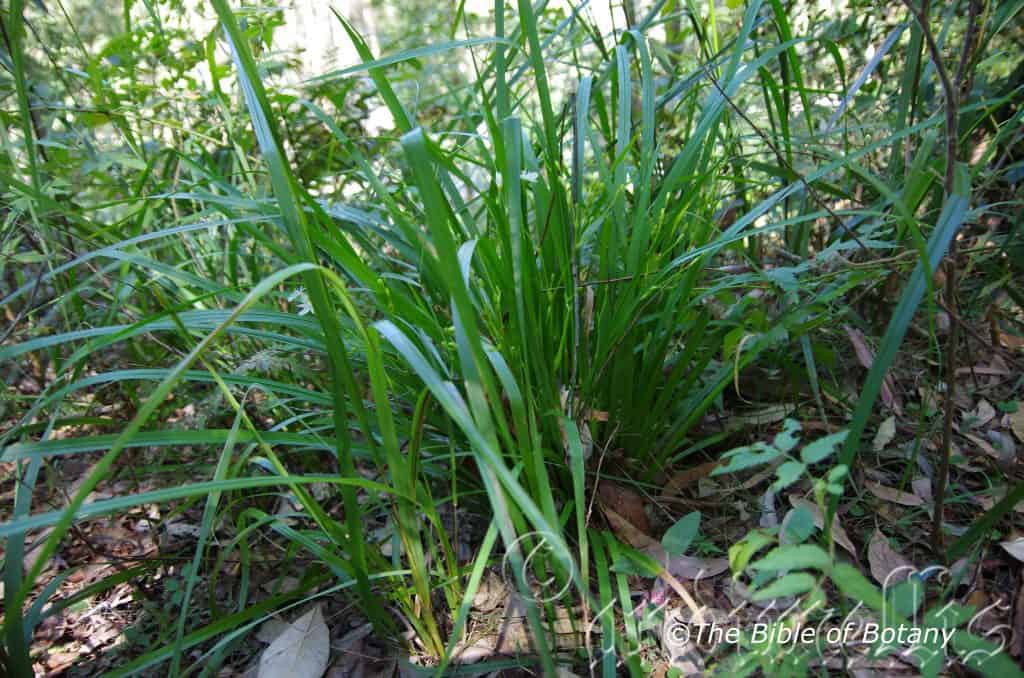
Washpool National Park NSW
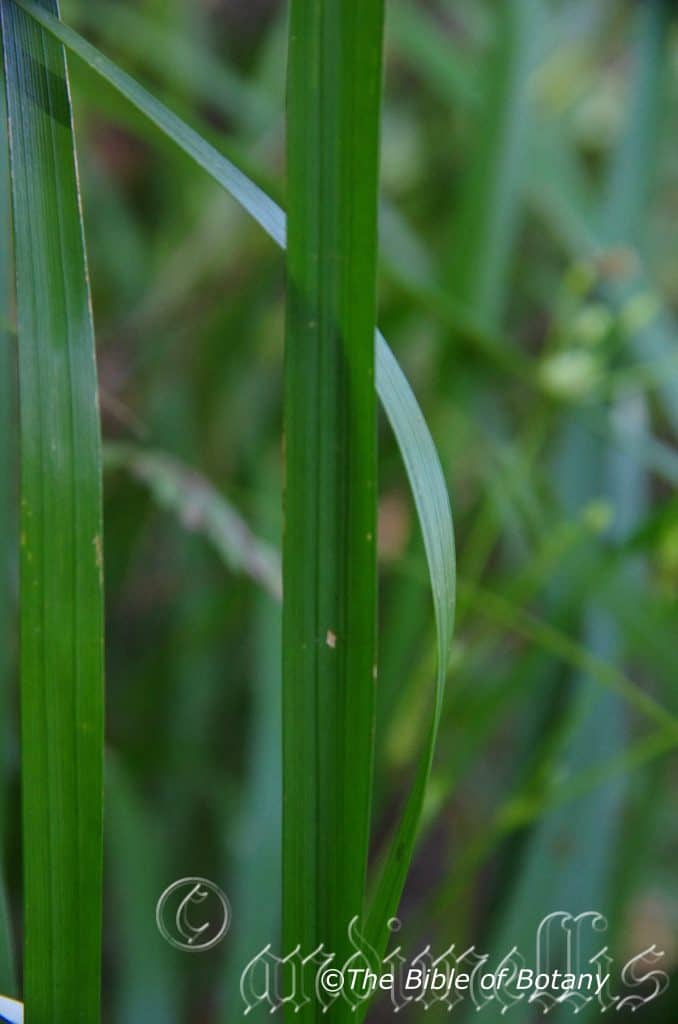
Washpool National Park NSW
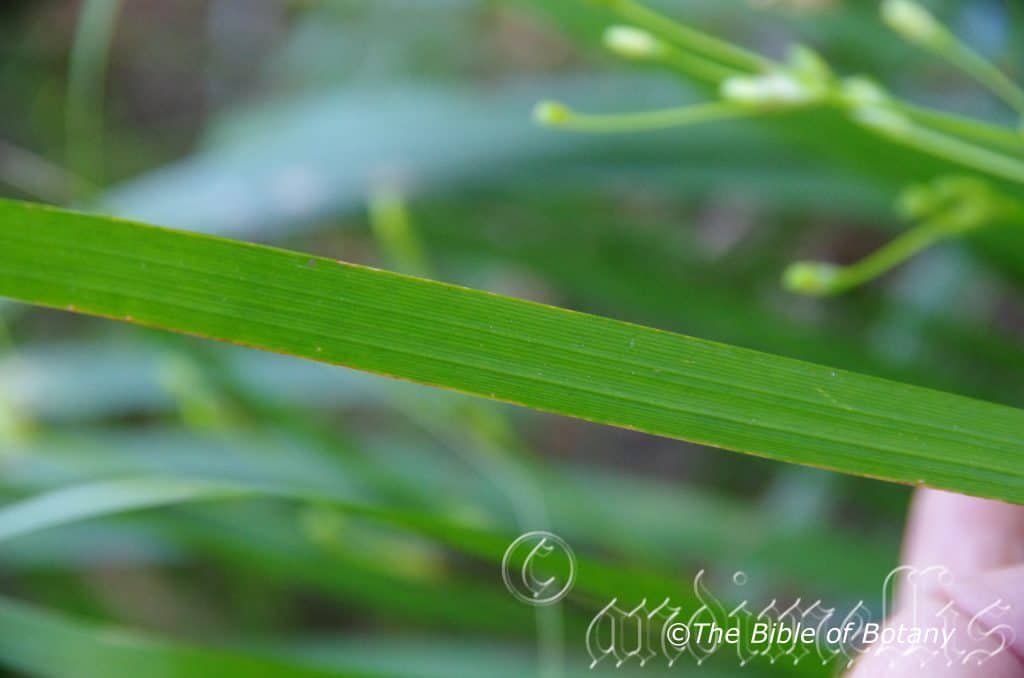
Washpool National Park NSW
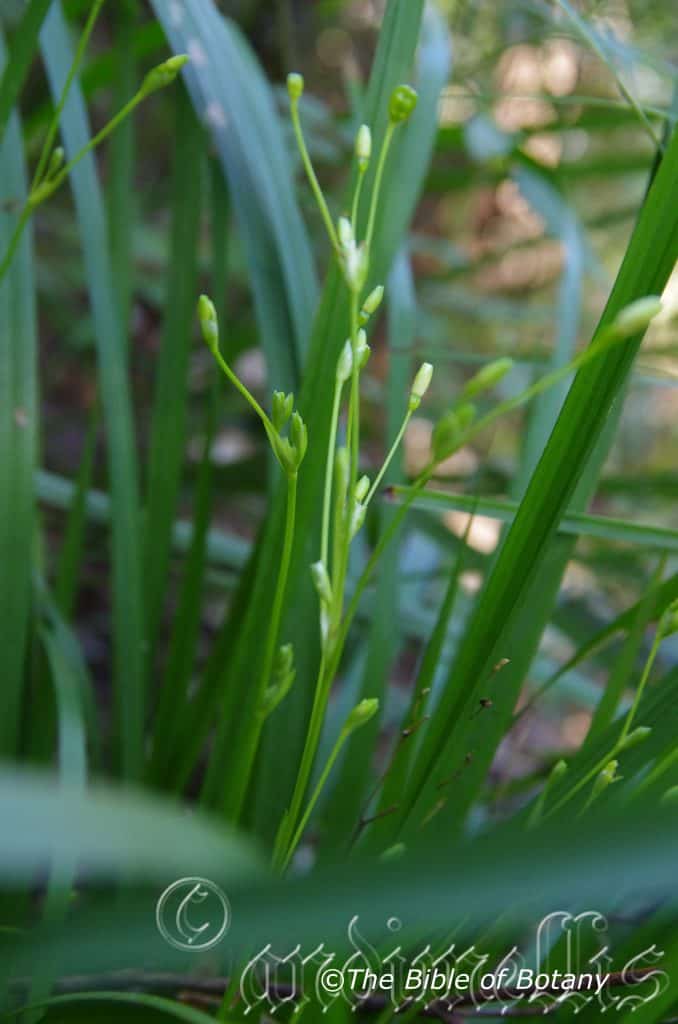
Washpool National Park NSW
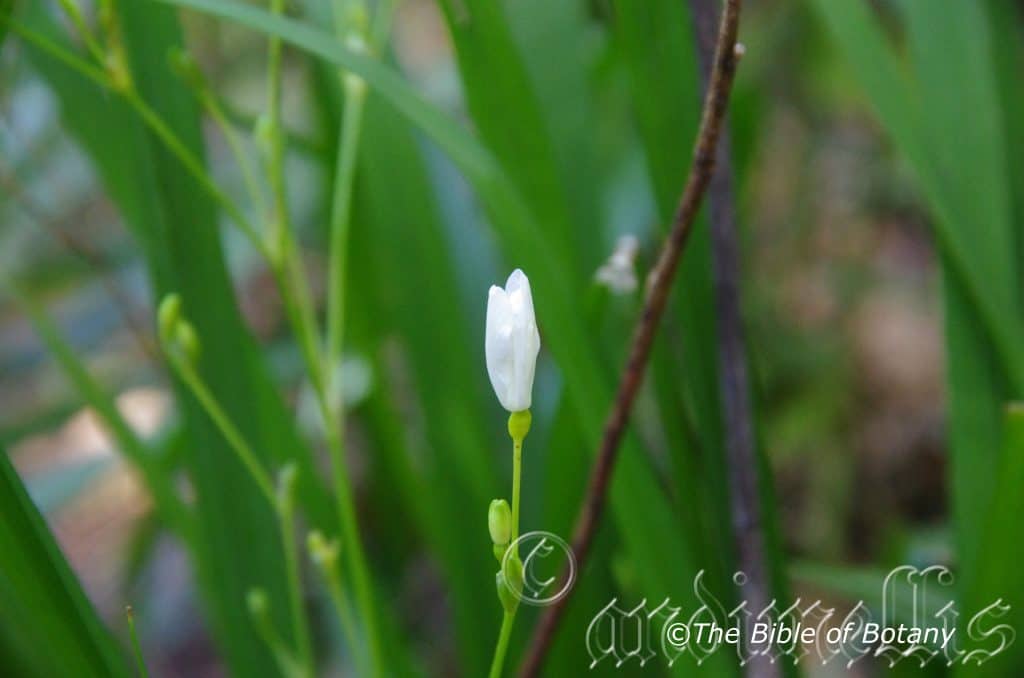
Washpool National Park NSW
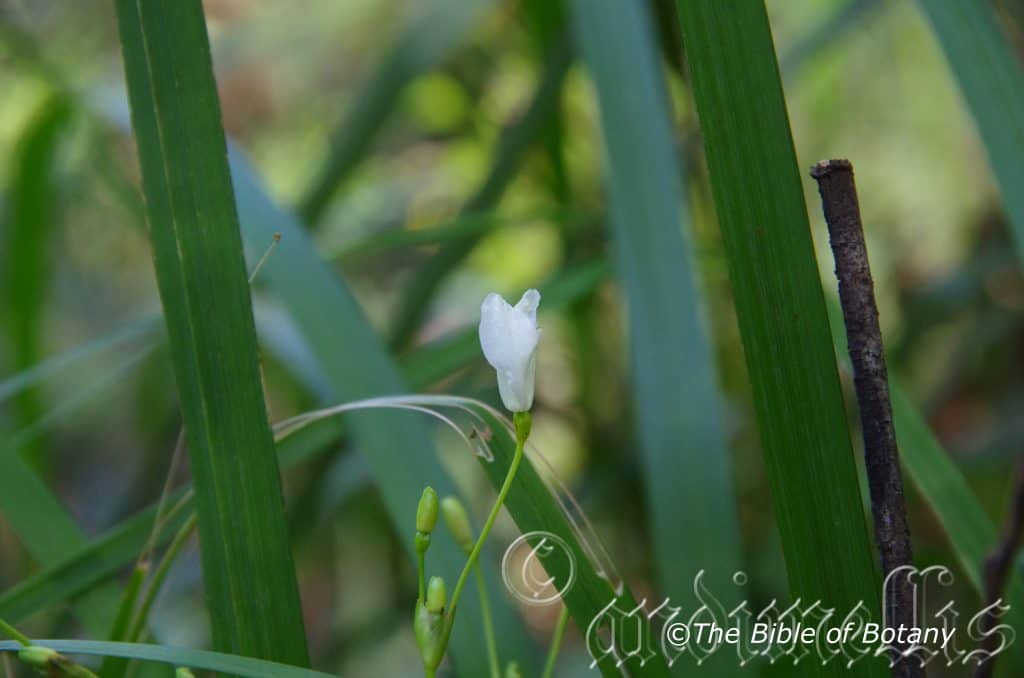
Washpool National Park NSW
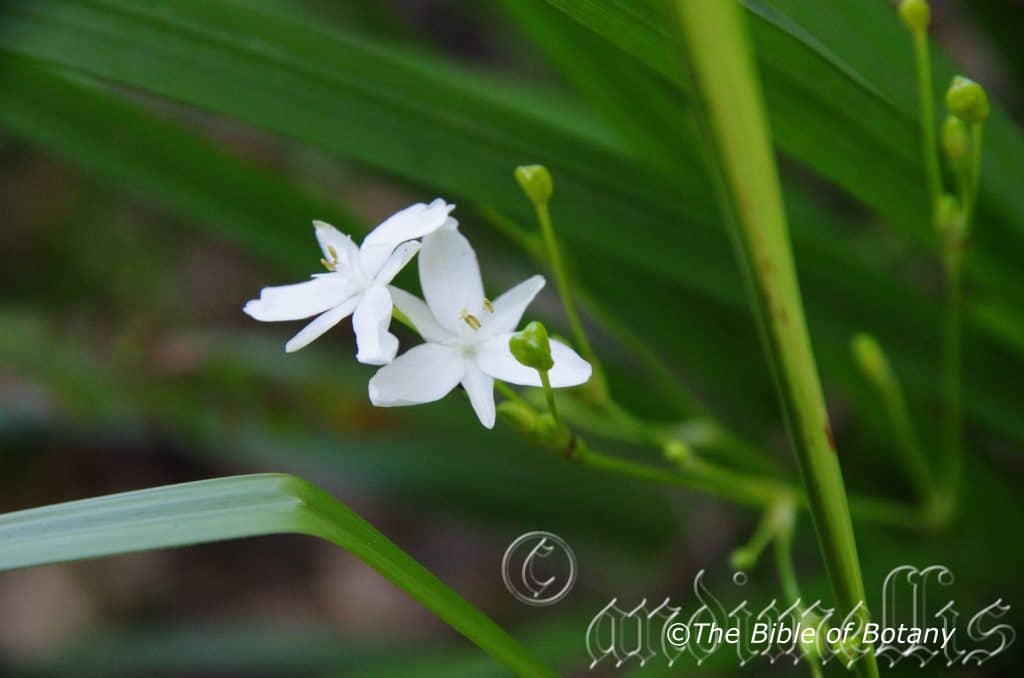
Washpool National Park NSW
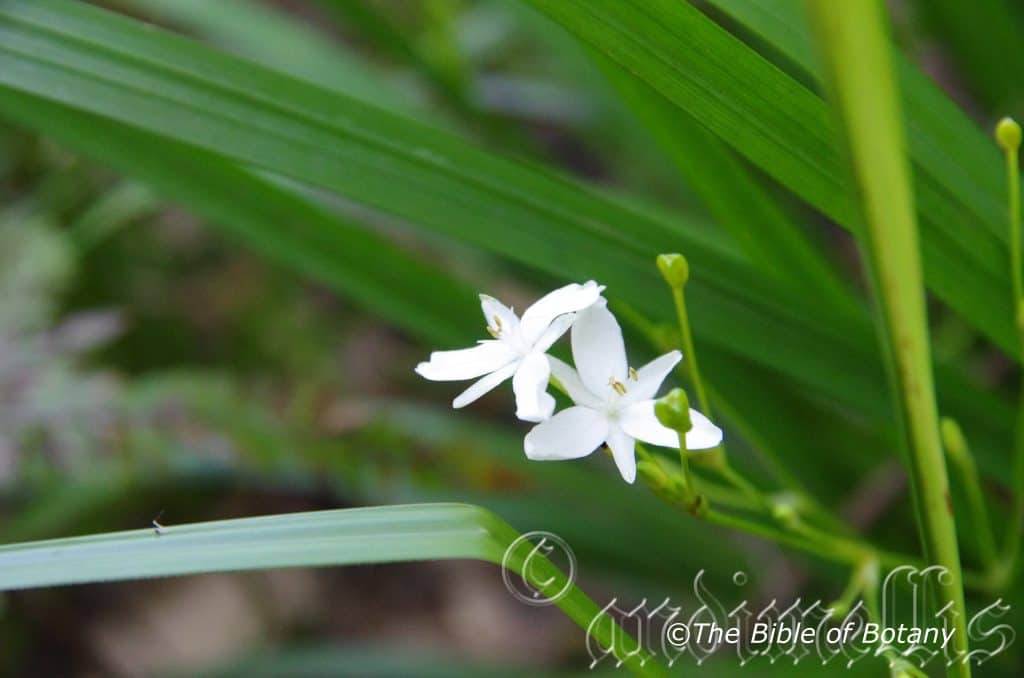
Washpool National Park NSW
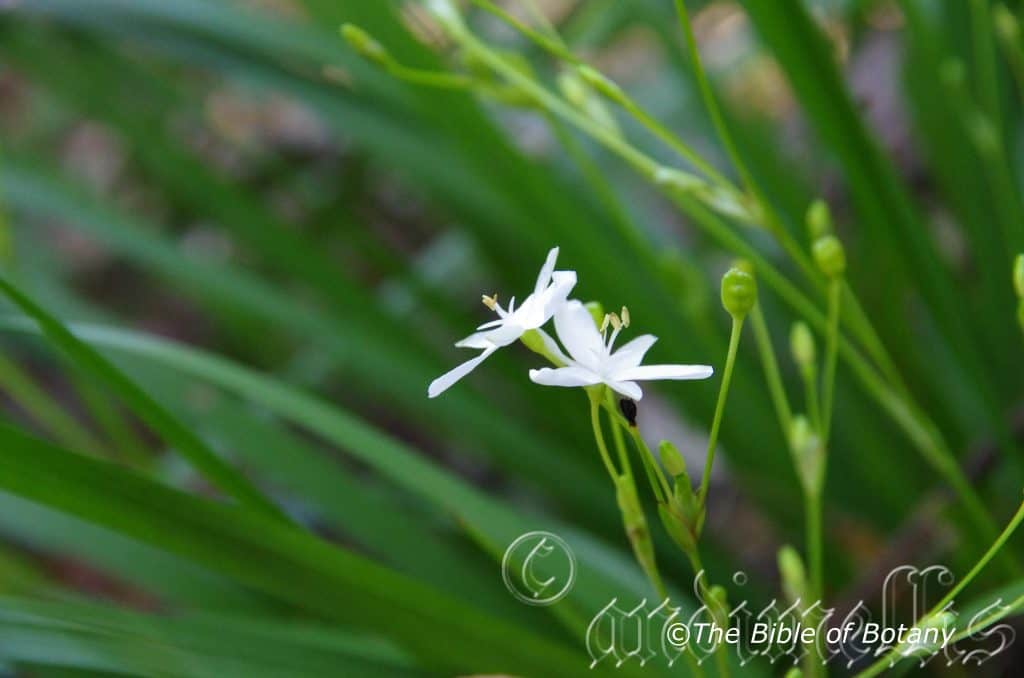
Washpool National Park NSW
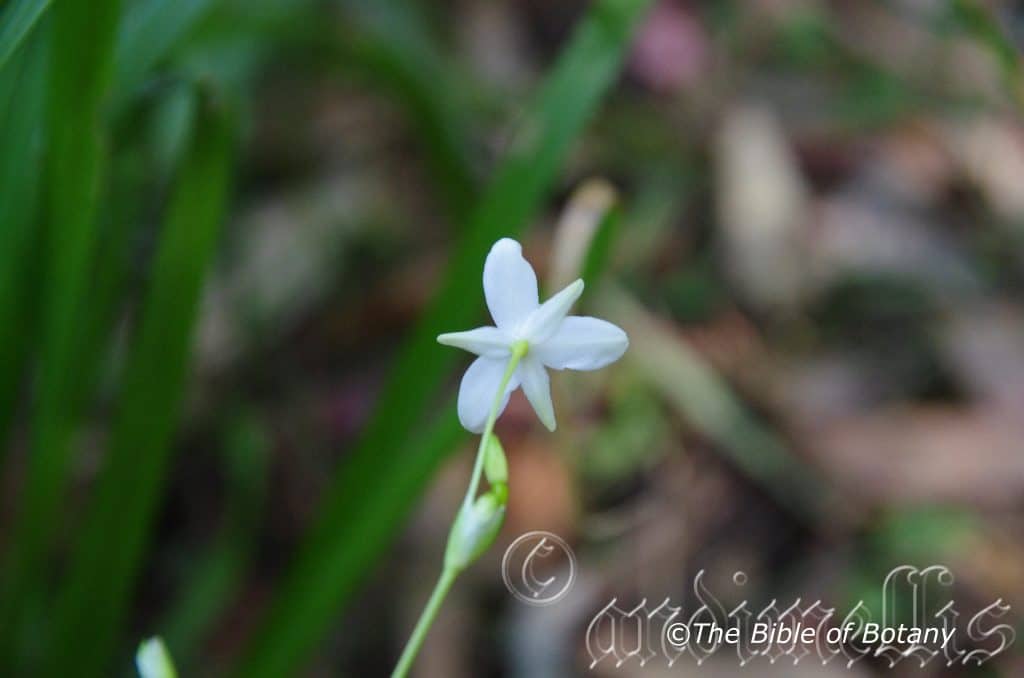
Washpool National Park NSW
Libertia paniculata
Classification:
Unranked: Traceobionta
Division: Magnoliophyta
Class: Magnoliopsidas
Sub Class: Liliidalae
Order: Asparagales
Family: Laxmanniaceae
Genus: Is named in honour of Marie Libert; 1782-1863, who was a Belgian botanist who studied the Liverworts extensively with great passion.
Specie: From Panos, which is Ancient Greek or Pānicula, which is Latin for a flower head. It refers to flowers, which are arranged in a head.
Sub species:
Common Name: Branching Grass Flag.
Distribution:
Libertia paniculata is found south from Cooktown to near Innisfail in far north Queensland and from Brisbane and Redland in south east Queensland to the border.
In New South Wales it is found between Grafton to Coffs Harbour and from Kempsey to Taree.
https://avh.ala.org.au/occurrences/search?taxa=Libertia+paniculata#tab_mapView
Habitat Aspect Climate:
Libertia paniculata prefers light dappled shade to dense shade. It grows along creeks alluvial plains in most types of open moist forests. The altitude ranges from 10 meters ASL to 950 meters ASL
The temperatures range from minus 4 degrees in August to 38 degrees in January.
The rainfalls range from lows of 900mm to an average of 4000mm.
Soil Requirements:
Libertia paniculata prefers to grow on sandy loams to medium clays. The soils are derived from decomposed sandstone, granite, shale, brown basalt, black basalt or metamorphic rocks. The soils ph ranges from 6pH to 7pH. It does not tolerate consistant waterlogged soils though seasonal waterlogged soils are tolerated for short periods, even where the plants maybe submerged or partly submerged for short periods. Non saline soils to moderately saline soils are tolerated.
Height & Spread:
Wild Plants: 900mm to 1300mm by 900mm to 1800mm
Characteristics:
Libertia paniculata grows as a densely tufted perennial with glabrous stems. The stems are mid green with multi branching off white rhizomes.
Its long linear leaves measure 200mm to 600mm in length by 4mm to 12mm in width. The bases are cauline while the apexes are tapering acute. The sheath is absent on this species. The concolourous laminas are mid grass-green to deep green, semi glossy and glabrous. The parallel veins are obscure from both surfaces. The laminas are flat while the margins are entire.
The inflorescences are long open panicles born from the base of the tufts. The scapes measure 100mm to 500mm in length including the peduncle by 1mm to 3mm in diameter. The spikes at times have one reduced leaf with 4 to 6 branches while each branch has 3 to 6 individual flowers. The spathe bracts are lanceolate and measure 10mm to 40mm in length while the inner bracts measure 5mm to 8mm in length. The outer obovate tepals are grass-green externally and are white internally. The outer tepals measure 8mm to 13mm in length by 3.5mm to 5.5mm in width. The inner ovate tepals are white and measure 6mm to 10mm in length by 8mm to 14mm in width. The pedicels measure 8mm to 10mm in length.
The staminal filaments are fused at base and measure 5mm to 9mm in length while the obloidal dorsifixed anthers dehisce longitudinally. The yellow-ochre anthers measure 2mm to 3mm in length. The ovary is obovoidal. The flowers appear from September to November.
The fruits are globose capsules. The 3 furrowed capsules measure 5mm to 8mm in length by 4mm to 6mm in diameter. The pale green capsules turn deep grey almost black when ripe. Each locule husk spreads at right angles to reveal the deep brown seeds. The angular seeds measure 1mm in diameter.
Wildlife:
Libertia paniculata is unknown to the author.
Cultivation:
Libertia paniculata makes an excellent rockery or bank stabilizer plants. It always look green and fresh especially where adequate ground moisture is retained whether it is grown in shade or full sun. It is very suitable for waterlogged acid soils. It is most suitable for small, medium and large gardens close to the coast in sub tropical gardens or tropical gardens and would be worthwhile trying in semi-arid zones. As garden subjects it will grow from 500m to 600mm by 600mm to 900mm wide. It is cold tolerant to temperatures at least as low as minus 5 degrees once established.
It is most suitable for use around semi shaded to sunny swimming pools, courtyards, besides pathways, semi shady moist rockeries, along light clay banks or along drive ways or adjacent to moist natural bush gardens. Mass plantings of 5 or more plants even in small areas; really do the plants justification especially when it is in flower. Medium fish or frog ponds will benefit from Libertia paniculata. Cut flowers last for short periods indoors.
If it is placed around a pool, courtyards or other confined spaces then plant them in small groups or scatter plant them for a more informal natural look against walls to help soften them. Using rocks and small boulders can make garden features or water scenes appear like an oasis. The leaves and flowers can make a great start for the larger wallum, heath scenes come to life.
If companion plants are sought then the choice of plants to use either side is limited only by size of the area to be landscaped and the size of the other plants as they should be no more than 200mm in height to emphasize Libertia paniculata or plant them in the for ground with larger but small shrubs behind.
It is great to break up horizontal lines along driveways. They can be used to great affect where a dry creek bed is the theme by using them to mark out the banks of a small drainage line running through the property. They can be used to stabilize banks along creeks and streams or to help soak up water in wet areas.
Propagation:
Seeds: Libertia paniculata seeds can be sown directly into a seed raising mix. Cover the seeds with 1mm to 2mm of fine weed free mulch and keep moist. Place the tray in a warm sunny position. When the seedlings are 30mm to 50mm tall, prick them out and plant them into 50mm native tubes using a good organic mix.
The seeds are slow to germinate and may be erratic in germination at the same time.
Once the seedlings reach 100mm to 150mm in height they can be planted out into their permanent position.
Division: Most bulb flowers, pseudo bulbs or clump plants can be easily divided once large clumps have developed.
1. Do not water before you start.
2. Cut back foliage to around 70mm to 100mm in length,
3. Use a garden fork or shovel to dig around the clump you want to divide (about 50mm to 100mm greater circumference than the clump),
4. Lift the whole of the root ball out of the ground,
5. Remove the soil by shaking. If the soil is hard allow to sit in a container of water for 15 minutes to half an hour. Repeat the shaking in the water and hose off excess soil,
6. Once the clump can be seen clearly it is easier to pry and split the clump apart.
7. Leave a small number of growing points in each new clump,
8. Replant in the prepared bed using half a hand full of blood and bone in the hole and mix,
9. Level off at the same level the clump was at prior to starting the division.
10. Water regularly and feed fortnightly until the plants have re-established themselves.
Further Comments from Readers:
Hi reader, it seems you use The Bible of Botany a lot. That’s great as we have great pleasure in bringing it to you! It’s a little awkward for us to ask, but our first aim is to purchase land approximately 1,600 hectares to link several parcels of N.P. into one at The Pinnacles NSW Australia, but we need your help. We’re not salespeople. We’re amateur botanists who have dedicated over 30 years to saving the environment in a practical way. We depend on donations to reach our goal. If you donate just $5, the price of your coffee this Sunday, We can help to keep the planet alive in a real way and continue to bring you regular updates and features on Australian plants all in one Botanical Bible. Any support is greatly appreciated. Thank you.
In the spirit of reconciliation we acknowledge the Bundjalung, Gumbaynggirr and Yaegl and all aboriginal nations throughout Australia and their connections to land, sea and community. We pay our respect to their Elders past, present and future for the pleasures we have gained.
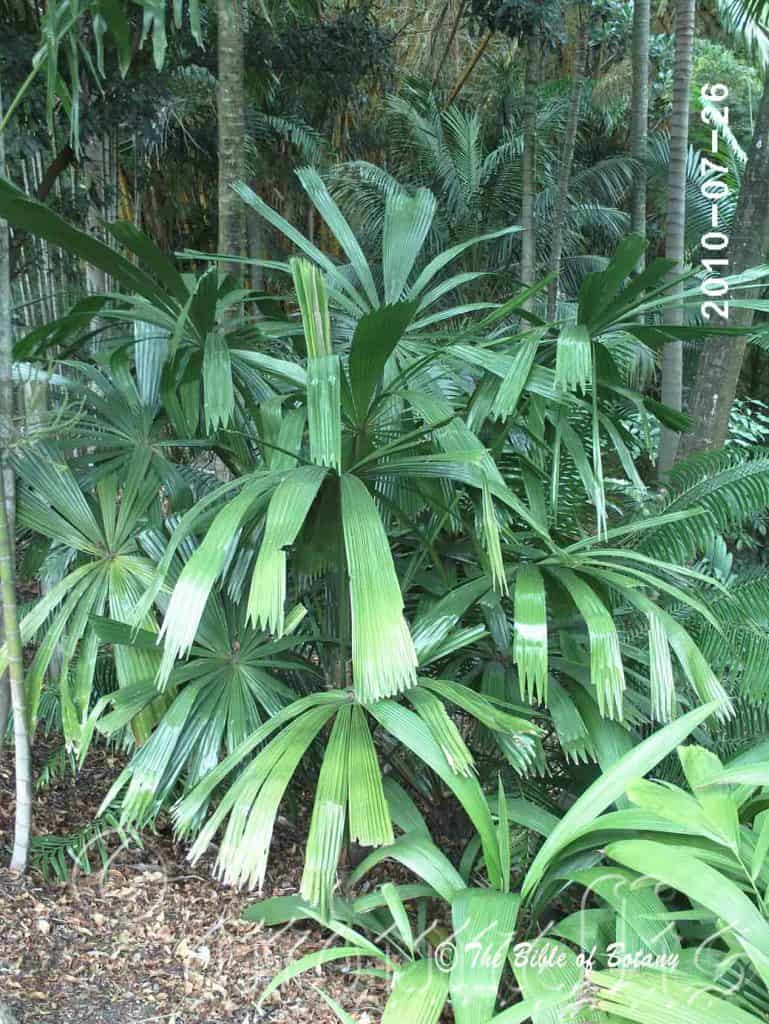
Mount Cootha Botanic Gardens Qld.
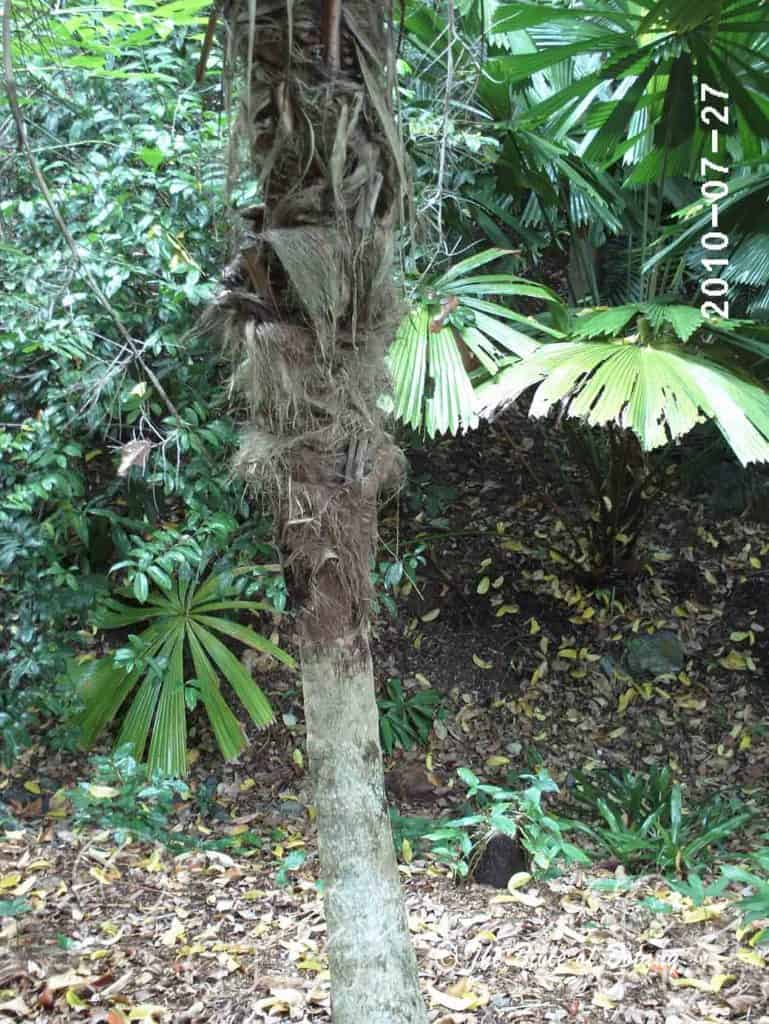
Mount Cootha Botanic Gardens Qld.
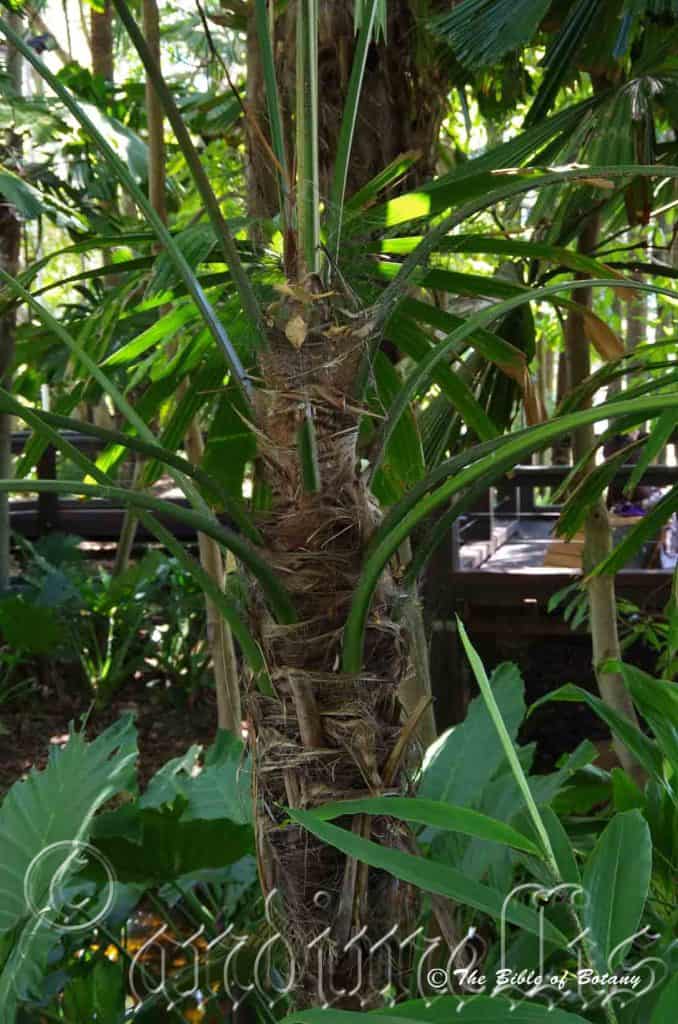
Mount Cootha Botanic Gardens Qld.
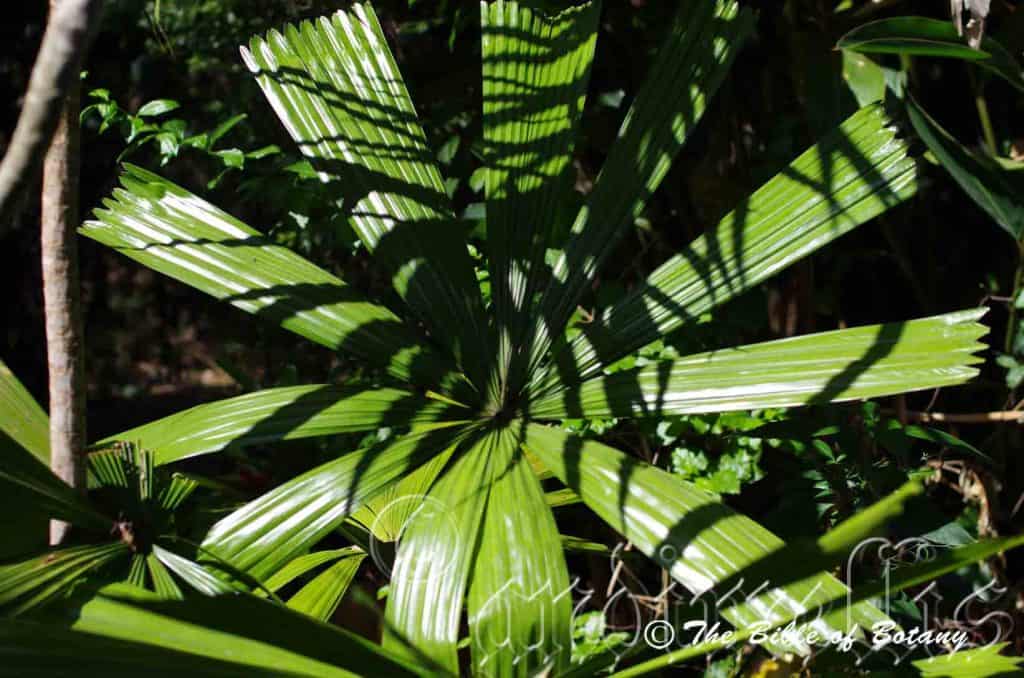
Grange Qld.
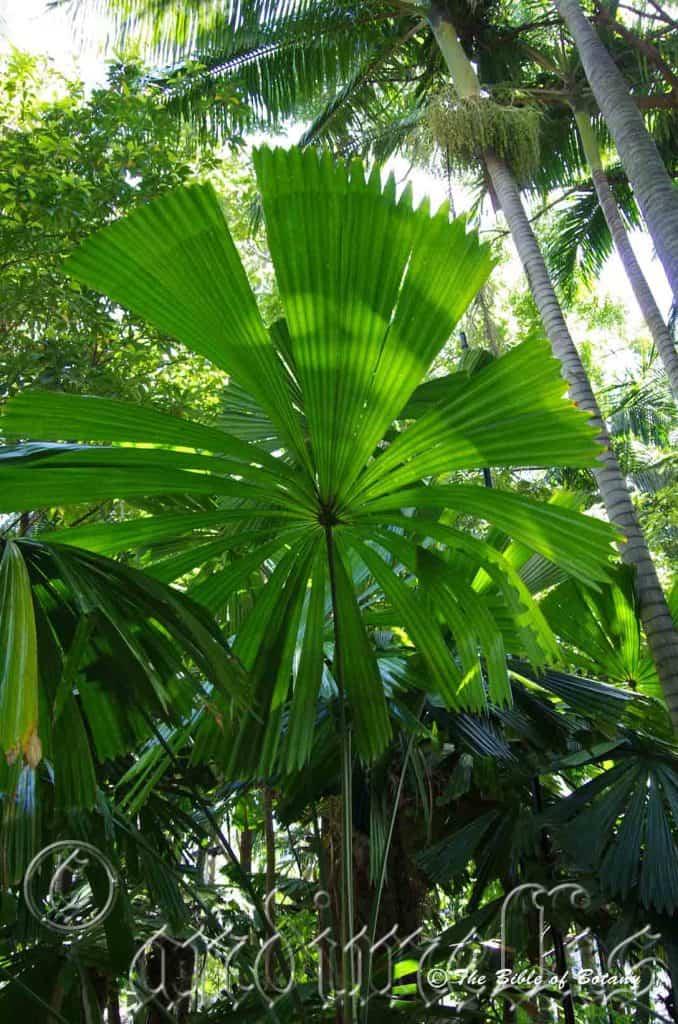
Roma Street Floral Gardens NSW
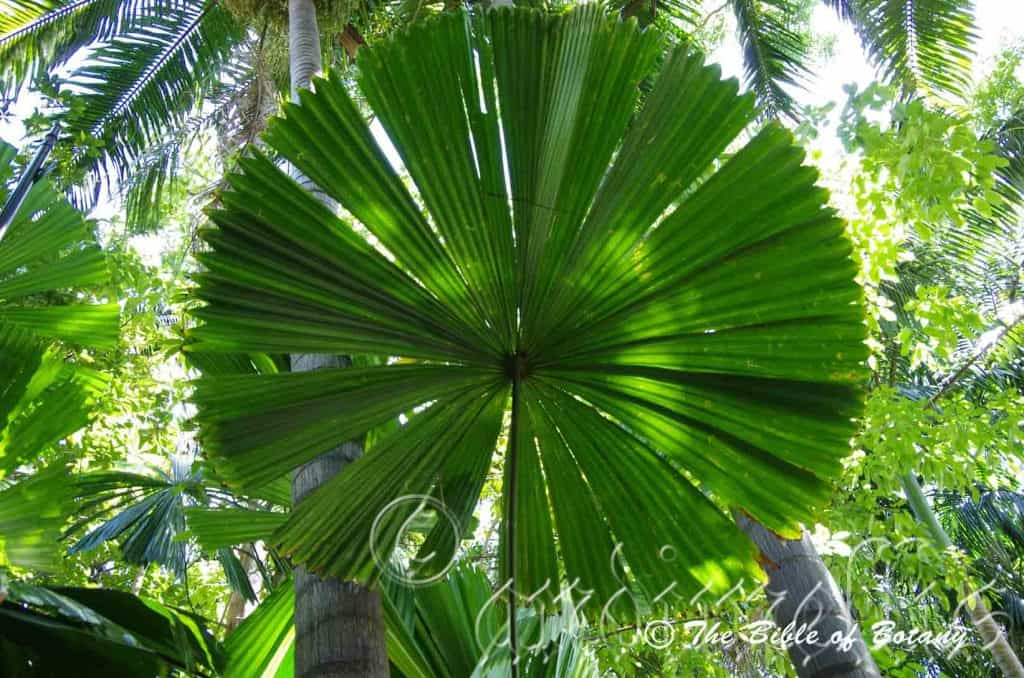
Roma Street Floral Gardens NSW
Licuala ramsayi
Classification:
Unranked: Monocots
Unranked: Commelinids
Order: Arecales
Family: Arecaceae
Subfamily: Coryphoideae
Tribe: Corypheae
Genus: From Licuala, which is Latinized from the Moluccan Language for the palm. It refers to the name given to the palms on their Islands.
Specie: Is named in honour of Ramsay, but which Ramsay cannot be substantiated.
Variety: Licuala ramsayi var. ramsayi. Is named in honour of Ramsay, but which Knight cannot be substantiated.
Variety: Licuala ramsayi var. tuckeri. Is named in honour of Gerald Tucker; 1854-1930, who was an Australian farmer and plant collector.
Distribution:
Licuala ramsayi var. ramsayi is found in far north Queensland south from the Bloomfield National Park to Bullocky Tom’s creek at the foot of Mount Spec.
Licuala ramsayi var. tuckeri is found in far north Queensland south for the tip of Cape York Peninsula to the Edward River Community on the west coast and Cooktown on the east coast.
https://avh.ala.org.au/occurrences/search?taxa=Liquala+ramsayi#tab_mapView
Habitat Aspect Climate:
Licuala ramsayi prefers light dappled shade to full shade. It grows along creek banks in well-developed warm rainforests wet littoral rainforests or Melaleuca forests. The altitude ranges from 15 meters ASL to 1100 meters ASL.
The temperatures range from minus 13 degrees in August to 36 degrees in January.
The rainfalls range from lows of 1200mm to an average of 2800mm.
Soil Requirements:
Licuala ramsayi prefers to grow on sandy loams, podsolic soils to light gritty clays. The soils are usually derived from decomposed granites or accumulated beach sands. The soils pH. ranges from 5pH to 7pH. It tolerates waterlogged soils and prefers seasonal water where the plants are partly submerged for short periods. Non saline soils to very saline soils are tolerated.
Height & Spread:
Wild Plants: 8m to 12m by 3.5m to 4.5m.
Characteristics: Licuala ramsayi’s lower trunk is pale grey patterned with lichens while the upper trunk is covered in fibre from old leaf bases old fruiting spikes and the old leaf bases themselves. It is a single, slender trunk palm. The trunk measures 100mm to 150mm in diameter.
Licuala ramsayi sub sp. ramsayi’s crown has 9 to 12 leaves. The leaves have a 1000mm sheath which disintegrates into a fibrous mesh which eventually breaks down after several years. The petiole measures 1.6 meters to 2 meters in length with a diameter of 14mm to 18mm near the base. The petiole is slightly furrowed from the base and becomes flattened only near the leaf blades. There is a row of straight or slightly recurved spines to 5mm along the length of the ridges on the petiole.
The chartaceous, orbicular leaves measure 1,200mm to 1,800mm in diameter. It is divided into 17 to 23 uneven wedge shaped segments. The lateral 1 to 3 segments are inserted into a thick costa. The remaining segments are costate and measure 600mm to 800mm in length by 200mm to 400mm in width. The apexes of each segment are truncate.
Licuala ramsayi sub sp. tuckeri’s crown has 9 to 12 leaves. The leaves have a 1000mm sheath which remains attached to the leaf. The petiole measures 1.6 meters to 2 meters in length with a diameter of 14mm to 18mm near the base. The petiole is slightly furrowed from the base and becomes flattened only near the leaf blades. The petiole ridges are devoid of spines or have a few undeveloped spines.
The chartaceous, orbicular leaves measure 1,200mm to 1,800mm in diameter. It is divided into 17 to 23 even wedge shaped segments. The lateral 1 to 3 segments are inserted into a thick costa. The remaining segments are costate and measure 600mm to 800mm in length by 200mm to 400mm in width. The apexes of each segment are truncate.
The inflorescence of Licuala ramsayi is born on a long pendulous panicle measuring 2500mm to 3500mm in length. The first branches measure 250mm to 550mm in length and decrease in size with each division.
Licuala ramsayi sub sp. ramsayi flowers are born in clusters of 3 or 4 while Licuala ramsayi sub sp. tuckeri are born singly along the rachis.
The cream calyxes are urn shaped and measure 2.5mm to 3mm in length. The 3 lobes measure 0.3mm to 0.5mm in length. The cream, glabrous corolla turns black after anthesis and measures 3.3mm to 3.5mm in length. The semi oval outer tepals are cream and measure 2.5mm to 3.5mm in length.
The awl shape filaments are fused to the corolla and measure 2mm to 2.3mm in length. The round or ovate anthers measure 0.3mm to 0.4mm in length. The style measures 1.2mm to 1.3mm in length.
Licuala ramsayi’s fruit is a small ovoid berry. The berries measure 12mm to 15mm in length by 8mm to 10mm in diameter. The pale green berries turn deep orange-red on ripening. The hard cream, globose seed measures 6mm to 9mm diameter and are surrounded by raphe known as coconut fibre.
Wildlife:
Licuala ramsayi’s wildlife is unknown to the author.
Cultivation:
Licuala ramsayi are beautiful tall palms that grow particularly well on moisture problem soils or adjacent to swampy ground. It is suitable for small, medium and large gardens close to the coast or high in the mountains in sub tropical or tropical gardens. As garden subjects they will grow from 10 meters to 12 meters by 3 meters to 4 meters wide. It is cold tolerant to temperatures at least as low as 3 degrees once established but are very slow in establishing themselves. I have grown this plant in Nana Glen where outside temperatures had dropped to minus 6 yet the plants inside and under the canopy of taller trees survived without any protection. They were not exposed to frosts at any stage. The plants were very slow in growth and after 12 years had just started to trunk. It is a very attractive plant for growing in rainforest gardens. Exposed plants tend to be yellow and bend excessively with the prevailing winds.
Licuala ramsayi make very good coastal palms where some tidal inundation may occur from time to time.
Propagation:
Seeds: Licuala ramsayi seeds can be sown directly into a seed raising mix after roughing the sides with fine sandpaper to assist in germination. Cover the seeds with 5mm to 10mm of fine weed free mulch and keep moist. Place the tray in a warm sunny position. When the seedlings are 30mm to 50mm tall, prick them out and plant them into 50mm native tubes using a good organic mix.
Once the seedlings reach 100mm to 150mm in height they can be planted out into their permanent position.
Fertilize using seaweed, fish emulsion or organic chicken pellets soaked in water on an alternate basis. Fertilize every two months until the plants are established then twice annually in early September or March to maintain health and vitality.
Further Comments from Readers:
Hi reader, it seems you use The Bible of Botany a lot. That’s great as we have great pleasure in bringing it to you! It’s a little awkward for us to ask, but our first aim is to purchase land approximately 1,600 hectares to link several parcels of N.P. into one at The Pinnacles NSW Australia, but we need your help. We’re not salespeople. We’re amateur botanists who have dedicated over 30 years to saving the environment in a practical way. We depend on donations to reach our goal. If you donate just $5, the price of your coffee this Sunday, We can help to keep the planet alive in a real way and continue to bring you regular updates and features on Australian plants all in one Botanical Bible. Any support is greatly appreciated. Thank you.
In the spirit of reconciliation we acknowledge the Bundjalung, Gumbaynggirr and Yaegl and all aboriginal nations throughout Australia and their connections to land, sea and community. We pay our respect to their Elders past, present and future for the pleasures we have gained.
Ligustrum australianum
Classification:
Unranked: Eudicots
Unranked: Asterids
Order: Lamiales
Family: Oleaceae
Tribe: Oleeae
Genus: From Ligustrum, which is the old Latin name for Privet. It refers to leaves, which resemble the Chinese Privet, Ligustrum sinense.
Specie: From Terra Australis, which is Latin for land of the south. It refers to plants, which were first discovered from the land down under.
Sub species:
Common Name: Native Privet.
Distribution:
Ligustrum australianum is found in 2 disjunct populations south from Cairns in far north Queensland to near Bundaberg in central Queensland east of the Great Dividing Range to the coast.
https://avh.ala.org.au/occurrences/search?taxa=Ligustrum+australianum#tab_mapView
Habitat Aspect Climate:
Ligustrum australianum prefers full sun to partial shade. It grows adjacent to tropical rainforests or subtropical rainforests. The altitude ranges from 50 meters ASL to 850 meters ASL
The temperatures range from minus 7 degrees in August to 38 degrees in January.
The rainfalls range from lows of 700mm to an average of 3200mm.
Soil Requirements:
Ligustrum australianum prefers to grow on sandy loams to medium clays. The soils are derived from decomposed sandstone, granite and accumulated beach sands. The soils pH. ranges from 5.5pH to 7pH. It does not tolerate waterlogged soils. Non saline soils to moderately saline soils are tolerated.
Height & Spread:
Wild Plants: 3m to 6m by 4m to 6m.
Characteristics:
Ligustrum australianum grows as a small tree with scabrous, pale brown to yellow-brown bark on the r trunk and lower branches. The pale olive green to creamy-green or white branchlets are glabrous and covered in fine creamy lenticels.
Ligustrum australianum’s alternate even pinnate leaves have 6 to 8 opposite leaflets. The 2 base leaflets are elliptical and are reduced so much that they resemble stipules. They measure 4mm to 8mm in length by 3mm to 6mm in width. The remaining leaflets are elliptical to broad elliptical and measure 40mm to 90mm in length by 16mm to 40mm in width progressively getting larger as they approach the apex. The petioles measure 4mm to 6mm in length. The bases are broadly cuneate while the apexes are broadly acute to acuminate-apiculate. The concolourous laminas are dull, mid green to sea-green and glabrous. The margins are entire, flat or curve slightly downwards from the mid vein. The mid vein is prominent on the lower lamina and is clearly visible on the upper lamina.
The inflorescences of Ligustrum australianum are born on short loose panicles from the terminals and measure 150mm to 200mm in length by 100mm to 150mm in diameter. The pale green glabrous calyxes measure 0.8mm to 1mm in length. The pedicels measure 0.5mm to 1mm in length. The white, glabrous corollas measure 4mm to 5mm in length by 1mm to 1.5mm in diameter. The 5 white, glabrous lobes are elliptical with an acute apex and measure 4mm to 5.5mm in length by 3.5mm to 4mm in width.
The 2 white, exserted filaments measure 7mm to 10mm in length while the creamy fawn, obloidal anthers measure 2.5mm to 3mm in length. The pastel green style measures 4mm to 4.5mm in length and has a capitate white stigma. The flowers appear from October to January.
Ligustrum australianum’s fruit is a globular drupe. The 2 locular drupes measure 6mm to 7mm in length by 6mm to 7mm in diameter. The pastel green drupes turn a deep purple-black on ripening. The globose grey-brown seeds measure 4.5mm to 5.5mm in length by 4.5mm to 5.5mm in diameter.
Wildlife:
The flowers are fed upon by numerous small nectar eating butterflies, native bees, native beetles, wasps and flies.
The fruits are eaten by fruit eating doves like the brown cukoo dove Macropygia phasianella.
Cultivation:
Ligustrum australianum should be cultivated further south where ever the exotic privets Ligustrum sinensis and lucidum are pests. I believe this species will outperform or at least perform equally well and compete with the two exotic pests. Pigeons eating the fruits are the main reason the exotic species have become environmental pests on farm and with the pigeons spreading the seeds of Ligustrum australianum real competition and a balance could be attained.
It is suitable for small, medium and large gardens close to the coast in warm temperate, sub tropical or tropical gardens. As garden subjects they will grow from 4 meters to 5 meters in height by 3 meters to 5 meters in diameter when grown in the open. It is cold tolerant to temperatures at least as low as minus 2 degrees once established.
They can be tip pruned if a smaller bushier shrub is required.
They make excellent hedges, screens and wildlife corridors because of their upright bushy growth habit and their abundance of flowers supporting native insects.
It is best used as a small park tree, placed in the background or planted centrally as a small feature tree in small gardens surrounded by other small native shrubs. Placed at the rear of a bush garden their striking display of flowers will draw your attention so that you will want to investigate further. Plants with small red flowers and large or fine green leaves can be used in the mid ground while small red flowering prostrate shrubs are used in the front. Whether it is in flower or not these trees will catch your attention because of the proliferation of flowers, and pale beautiful and interesting bark.
They would be particularly suitable for growing in riparian zones where restoration work is needed urgently.
It is also very good bonsai plants or are very affective when highlighting the gnarled trunk. This is the only plant I have ever used as a bonsai and found it easy to work with, hardy and quick to regain all its foliage after reshaping.
Propagation:
Seeds: Ligustrum australianum seeds can be sown directly into a seed raising mix after roughing the sides with fine sandpaper to assist in germination. Cover the seeds with 15mm to 20mm of fine weed free mulch and keep moist. Place the tray in a warm sunny position. When the seedlings are 20mm to 30mm tall, prick them out and plant them into 50mm native tubes using a good organic mix.
Once the seedlings reach 100mm to 150mm in height they can be planted out into their permanent position.
Cuttings: Use 80mm to 100mm long half ripened material when growing from cuttings from the present season’s growth. Take them in warmer months of the year. Remove half the leaves from the bottom section being careful not to tear the bark.
1 Prepare the cutting mix by adding one third sharp clean river sand, one third peat and one third perlite. These ingredients are sterilize,
2 Select good material from non diseased plants,
3 Select semi green stems for cuttings. Look for a stem with two or three nodes,
4 Place the cutting on a flat, hard surface, and make a clean cut down one side of the cutting at the base for 10mm with a sharp sterile knife or razor blade. – This scarification of the node will increase the chances of roots emerging from this spot. Now remove all but one or two the leaves, leaving the apex leaves in tact. If the leaves are very large in proportion to the stem, cut off the apical halves.
5 Fill a saucer with water, and place a little medium strength rooting hormone into another container like a milk bottle top. Dip the node end of the cutting into the water and then into the rooting hormone. Tap off any excess hormone,
6 Use a small dipple stick or old pencil to poke a hole into the soilless potting mix. Ensure the hole is slightly larger than the stem diameter and be careful not to wipe the rooting hormone off the cuttings base, place the cuttings in a pattern ensuring the cuttings are not touching each other,
7 I like to place the pots in Plastic bags to help maintain temperature and moisture. Place in a semi shaded place like under 50mm shade cloth.
8 When the cuttings have struck, open the bag to allow air circulation for a few days to a week,
9 Once hardened off remove the cuttings from the bag and allow to further hardening for a few more days,
10 Transplant into a good potting mix to grow on.
Fertilize using seaweed, fish emulsion or organic chicken pellets soaked in water on an alternate basis. Fertilize every two months until the plants are established then twice annually in early September or March to maintain health, vitality and better flowering.
Further Comments from Readers:
Hi reader, it seems you use The Bible of Botany a lot. That’s great as we have great pleasure in bringing it to you! It’s a little awkward for us to ask, but our first aim is to purchase land approximately 1,600 hectares to link several parcels of N.P. into one at The Pinnacles NSW Australia, but we need your help. We’re not salespeople. We’re amateur botanists who have dedicated over 30 years to saving the environment in a practical way. We depend on donations to reach our goal. If you donate just $5, the price of your coffee this Sunday, We can help to keep the planet alive in a real way and continue to bring you regular updates and features on Australian plants all in one Botanical Bible. Any support is greatly appreciated. Thank you.
In the spirit of reconciliation we acknowledge the Bundjalung, Gumbaynggirr and Yaegl and all aboriginal nations throughout Australia and their connections to land, sea and community. We pay our respect to their Elders past, present and future for the pleasures we have gained.
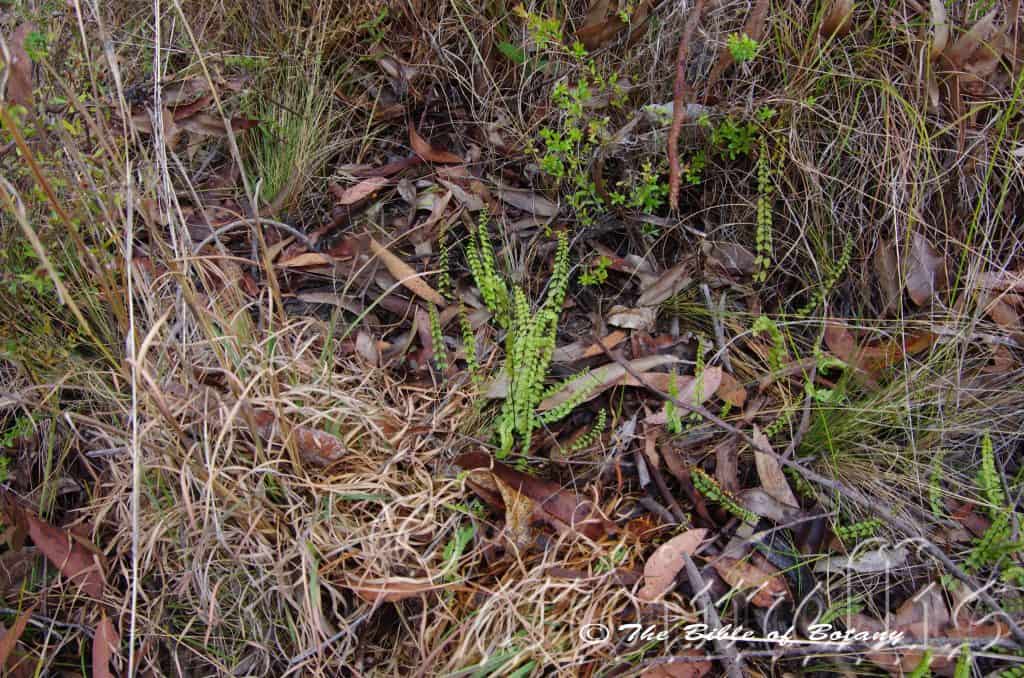
Grafton-Woolli Road NSW
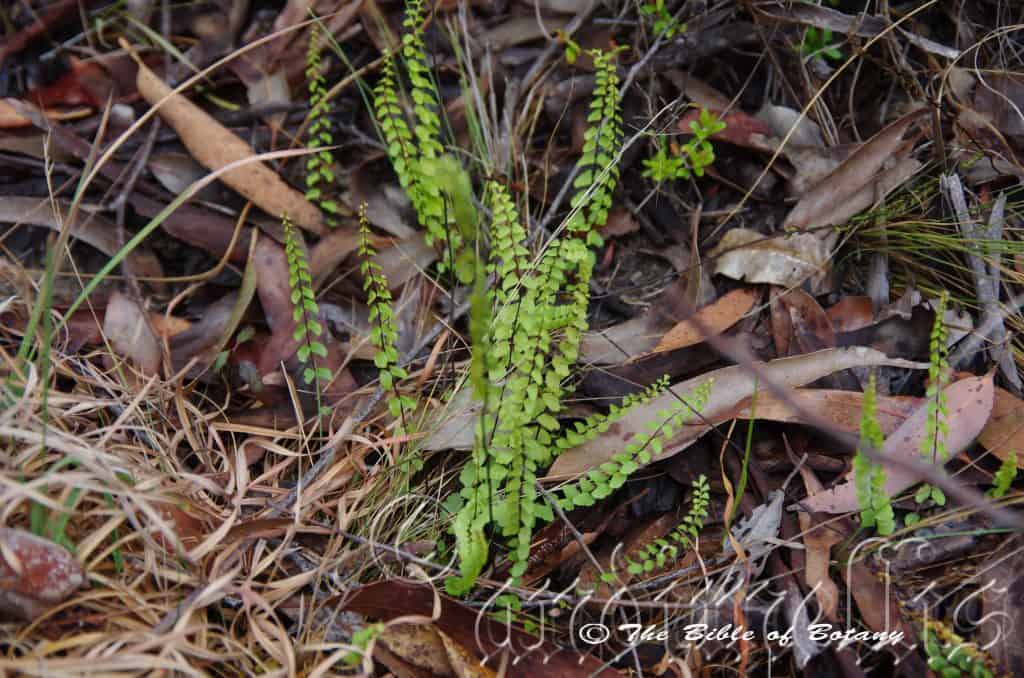
Grafton-Woolli Road NSW
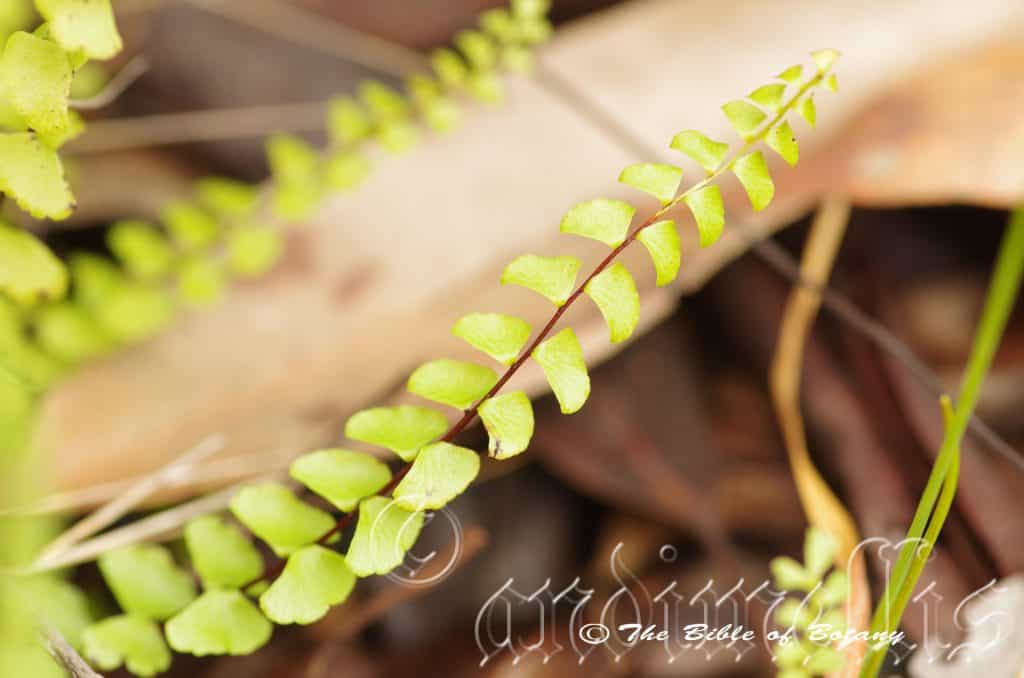
Grafton-Woolli Road NSW
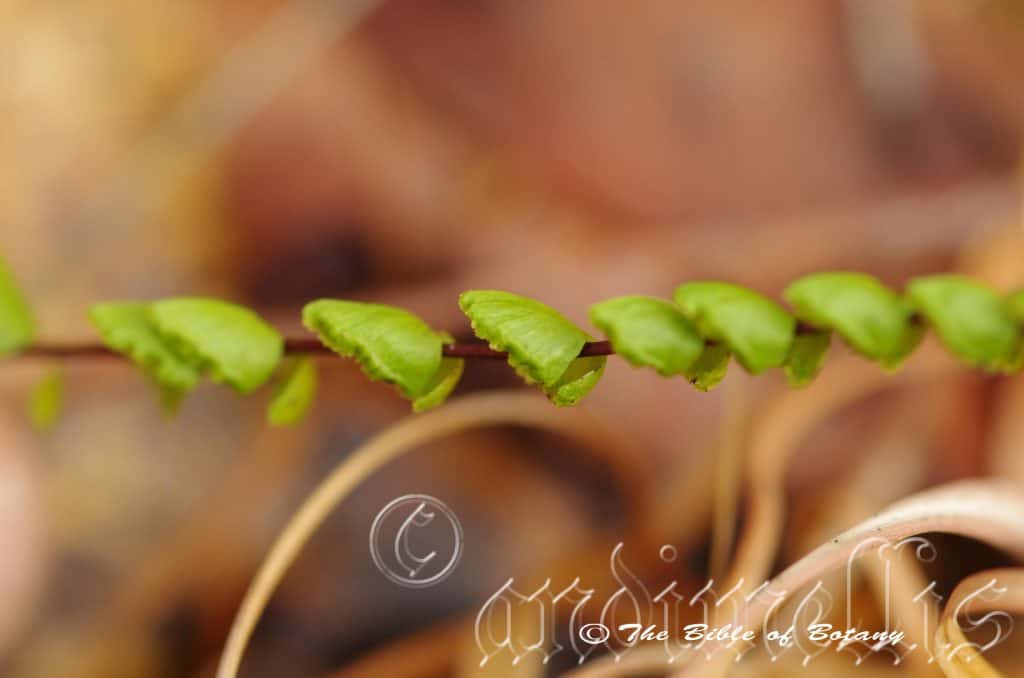
Grafton-Woolli Road NSW
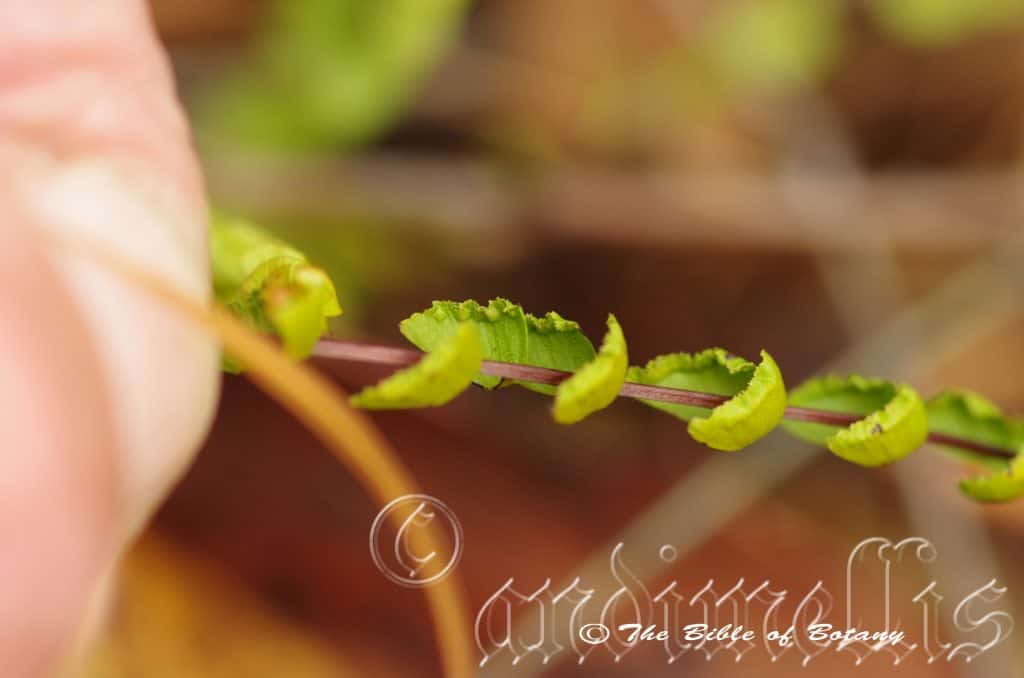
Grafton-Woolli Road NSW
xxxxxxxxxxxxxxxxxxxxxxxxxxxxxxxxxxxxxxxxxxxxxxxxxLindsaea dimorpha
Classification:
Division: Trachyophytes
Subdivision: Polypodiophyta
Class: Polypodiopsida
Order: Polypodiales
Family: Lindsaeaceae
Genus: Is named in honour of John Lindsay; 1750?-1803, who was a Scottish born Jamaican surgeon who first discovered the way in which ferns reproduced from spore.
Specie: From Di/Dis, which are Ancient Greek for two and Morphos, which is Ancient Greek for a form or structure. It refers to plant structures or organs, which have two distinct forms.
Sub specie:
Common Name:
Distribution:
Lindsaea dimorpha is found in 4 widely disjunct populations close to the coast south from the Windsor Tablelands in far north Queensland to Jervis Bay in central coastal New South Wales.
https://avh.ala.org.au/occurrences/search?taxa=Lindsaea+dimorpha#tab_mapView
Habitat Aspect Climate:
Lindsaea dimorpha prefers dense shade on moisture retentive soils in mountain rainforests. It grows in cool moist gullies and rainforests especially along creek banks, near water falls, between rock crevices or along road culverts, where moisture is always apparent. The altitude ranges from 5 meters ASL to 1100 meters ASL.
Temperatures range from minus 4 degrees in August to 30 degrees in January.
Rainfall ranges from lows of 600mm to 3200mm average per annum.
Soil Requirements:
Lindsaea dimorpha prefers to grow on better quality fertile loams to medium clays. The soils are derived from decomposed black basalts. The soils pH. ranges from 5pH to 6pH. It does not tolerate waterlogged soils however soil moisture is usually maintained throughout the year. Non saline soils to slightly saline soils are tolerated.
Height & Spread:
Wild Plants: 250mm to 550mm by 50mm to 150mm.
Characteristics:
It grows as a fern with a short, slim, creeping rhizome which is covered in narrow, pale yellow-ochre scales.
Its fronds are tuft, erect and strongly dimorphic. The single pinnate fronds pinnae are fan shaped. The yellow-ochre stipes and rachises are semi glossy and glabrous. The stipes and rachises are approximately equal in length.
The sterile fronds usually measure 20mm to 55mm in length by 15mm in width. The concolourous laminas are deep green and glossy. The margins are irregularly crenate.
The fertile fronds are usually measure100mm to 200mm in length by 10mm to 15mm in width. The margins are entire or once or twice incised. The sori are continuous at the apex of the pinnae or interrupted by marginal incisions. The indusium pale creamy ochre with an uneven margin.
Wildlife:
I have never seen anything attack Lindsaea dimorpha in the wild.
Cultivation:
Lindsaea dimorpha is a magnificent small fern for indoors bathrooms, courtyards or in the garden where moister, darker conditions prevail. It is an excellent squat pot fern that does best in mixes with high levels of good quality mulches added. When the sterile and fertile fronds are on display together the rich golden ochre colour of the spore and deep green fronds are at their best.
It is ideal for rainforest gardens once dense shade has been established or on the southern side of buildings. This is a small fern that needs to be mass planted to see it at its absolute best.
It often reaches its full potential of 50mm to 550mm in the garden in just 1 year.
Propagation:
Spores: All ferns that are declared rare, vulnerable or endangered are protected by Federal and State Laws and must not be removed from the wild unless you are a land developer, mining company or main Roads department etc. This includes bulbs, roots, leaves and flowers. No part of any plant can be removed from Federal, State or Local Government land without the prior permission of the authority and this includes the spore.
Most people are put off at the thought of growing ferns from spore. Like all plants that produce their offspring from seed or spore the methods are basically the same. Remember nature has been doing this for millions of years and has been very successful. I have had excellent results growing over 200 different species of Australian ferns so don’t be afraid. Give it a go.
Step 1. Select spore from the fern fronds. Wait until the fern is just starting to release its spore. Rinse the fronds under clean running water and dry. This is to wash off any other spores from rogue ferns that may have settled onto the fronds. (There is nothing worse than having common brake or common soft bracken contaminating a prized tree fern or epiphyte.)
Step 2. Place the dry fronds in a clean brown paper bag and keep them in a cool dark place like the linen closet for about a week to ten days before you are ready to sow the spore. The exception to this rule applies to ferns, which produce green spores. These must be sown immediately that they are released. Todea Barbara is a good example of a fern, which produces green spore.
Step 3. Take a large ice cream container, a small ice cream container and a clean clear plastic bag large enough to seal the large ice cream container and three or four milk bottle tops.
Step 4. Punch or drill 6 to 10 5mm holes in the bottom of the small ice cream container.
Step 5. Wash both containers, tops and plastic bag so that they are very clean and sterile.
Step 6. Use a clean fine seed raising mix. We used 30mm fine sand, 30mm peat and 30mm perlite and 10mm vermiculite. We used crushed basalt, crusher dust and peat in a 50:50 ratio for epiphytes. Moisten the mix enough that water does not run out when the mix is squeezed between the fingers.
Step 7. Place the moisten mix (Enough to half fill the small ice cream container) in the microwave oven with a large glass of water for 7 or 8 minutes, until the water is boiling. Allow them to cool in the oven. You will need the water later so do not tip it out.
Step 8. Take the brown paper bag out of the linen closet. Shake the bag and remove the fronds. You should have a yellow, brown, black or rarely greenish brown or ochre powder or very fine, small round pin head size spore depending on the specie involved.
Step 9. Remove the mixture from the oven once it has cooled and place it in the small ice cream container and level.
Step 10. Sprinkle the spore sparsely over the mixture in the small ice cream container.
Step 11. Place the milk bottle tops in the large ice cream container with the flat surface facing down. Place the small ice cream container in the large ice cream container so that it is sitting on the milk bottle tops.
Step 12. Remove the water from the microwave and pour it into the larger ice cream container so there is 25mm to 30mm of water in the bottom.
Step 13. Place the ice cream containers in the plastic bag and seal. Step 14. Place the contents and bag in a warm shady place preferably 50mm to 70mm shade depending on the specie. Shade houses and some window sills are ideal.
Step 15. The surface should turn green within a week to two weeks. The prothallus will then develop. From the prthalus the first true fronds will appear. Wait until the ferns are 20mm to 35mm in height before you attempt to transplant them. Once they are ready open the bag up slightly and allow the air to flow around the little ferns. Every 3 to 5 days open the bag a little further so the ferns get use to their new environment. Allow them a week to two weeks to harden off before you transplant them following the removal of the plastic bag. Carefully prick them out into 50mm standard squat tubes as you would any seedling.
Do not try to transplant them as single plants as they are still a little delicate still.
Once the smaller ones again reach 50mm to 70mm you may wish to divide the stronger and hardier individual plants into smaller clumps in 100mm squat pots.
Step 16. We fertilized with seaweed, fish emulsion or organic chicken pellets soaked in water on an alternate basis until established. Fertilize every two months for one year even when in the ground.
Further Comments from Readers:
Hi reader, it seems you use The Bible of Botany a lot. That’s great as we have great pleasure in bringing it to you! It’s a little awkward for us to ask, but our first aim is to purchase land approximately 1,600 hectares to link several parcels of N.P. into one at The Pinnacles NSW Australia, but we need your help. We’re not salespeople. We’re amateur botanists who have dedicated over 30 years to saving the environment in a practical way. We depend on donations to reach our goal. If you donate just $5, the price of your coffee this Sunday, We can help to keep the planet alive in a real way and continue to bring you regular updates and features on Australian plants all in one Botanical Bible. Any support is greatly appreciated. Thank you.
In the spirit of reconciliation we acknowledge the Bundjalung, Gumbaynggirr and Yaegl and all aboriginal nations throughout Australia and their connections to land, sea and community. We pay our respect to their Elders past, present and future for the pleasures we have gained.
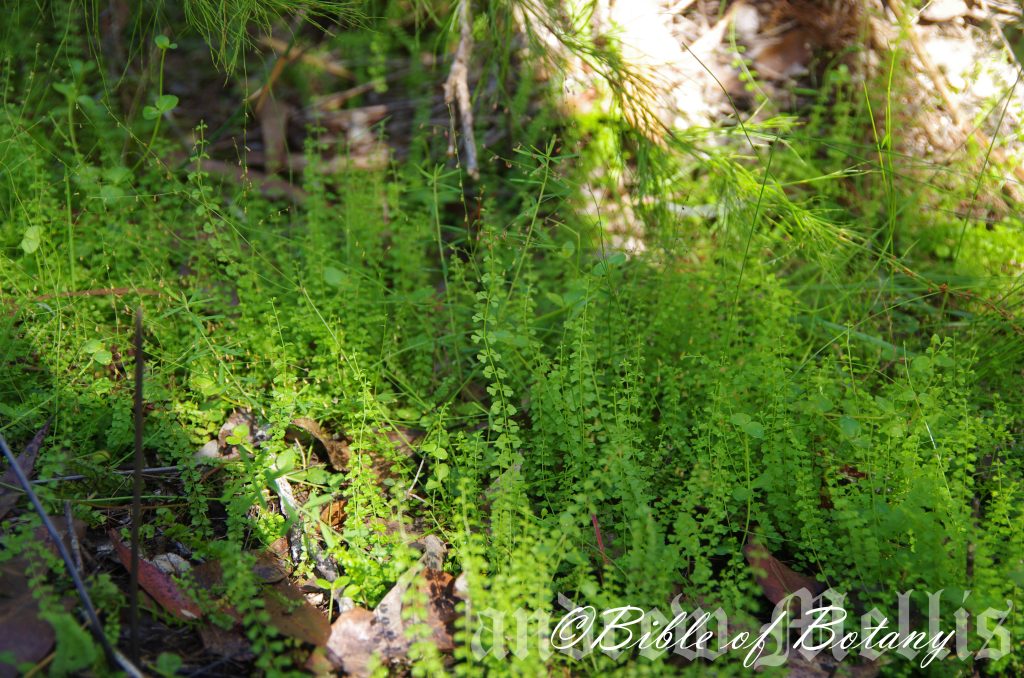
The Pinnacles NSW
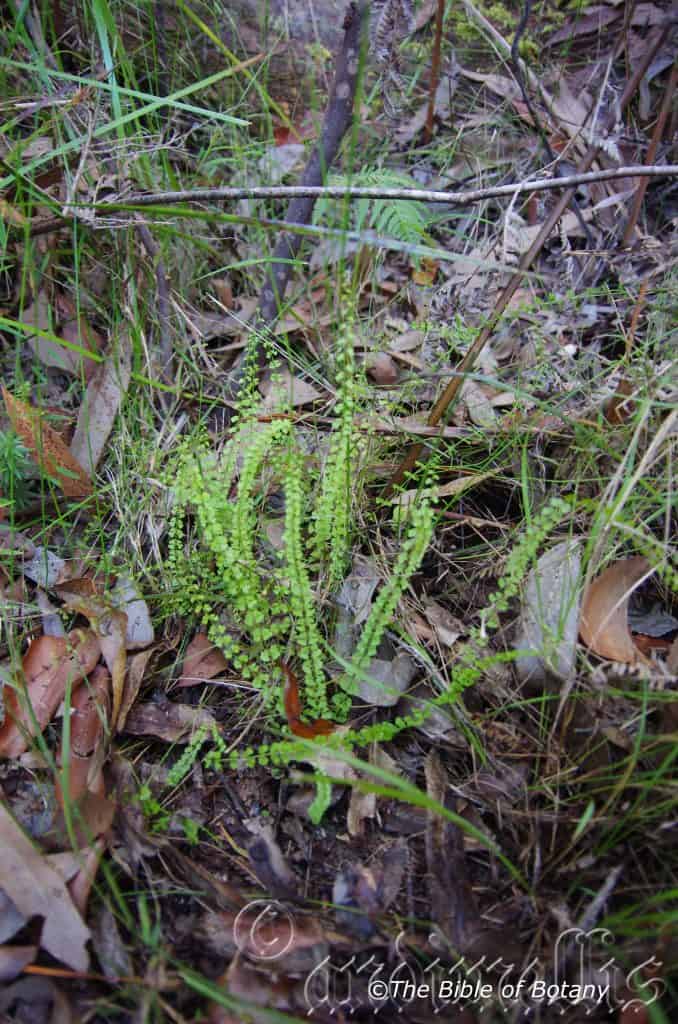
The Pinnacles NSW
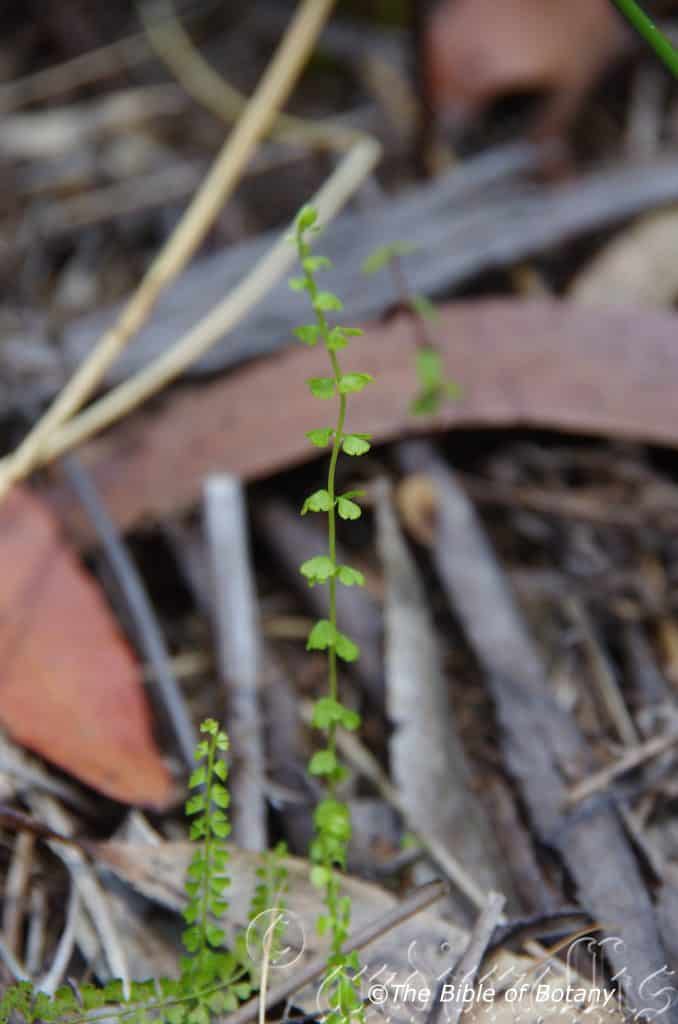
The Pinnacles NSW
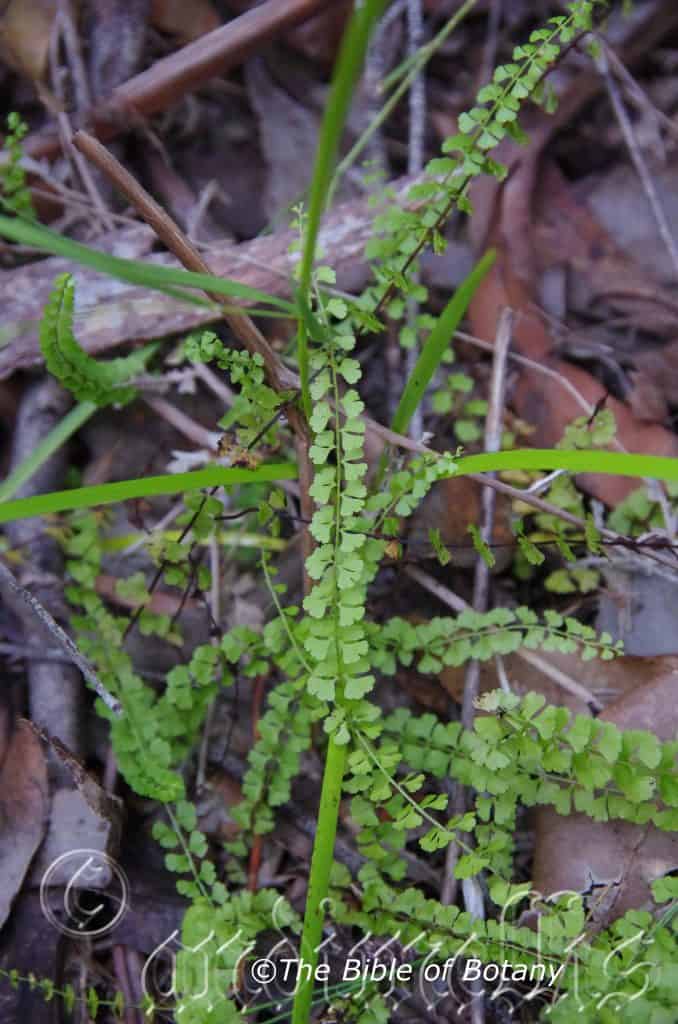
The Pinnacles NSW
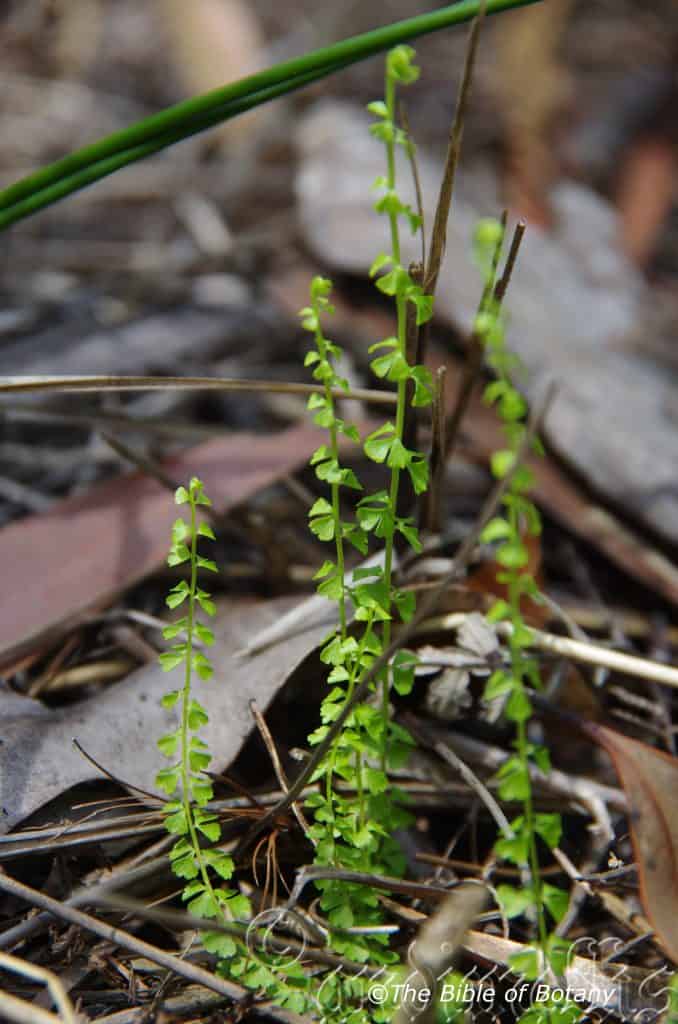
The Pinnacles NSW
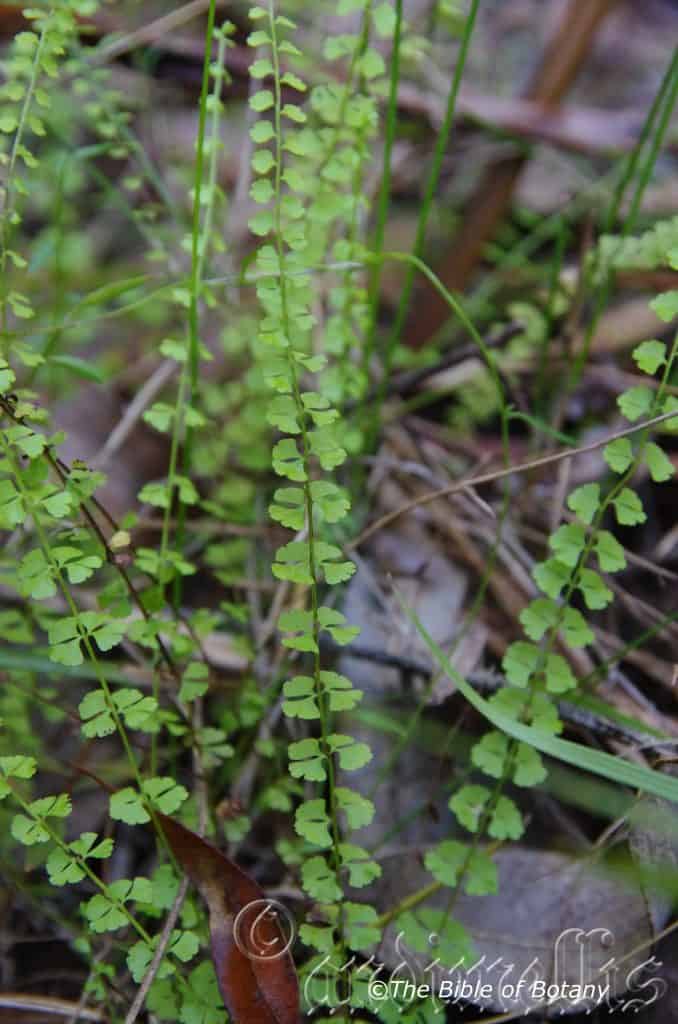
The Pinnacles NSW
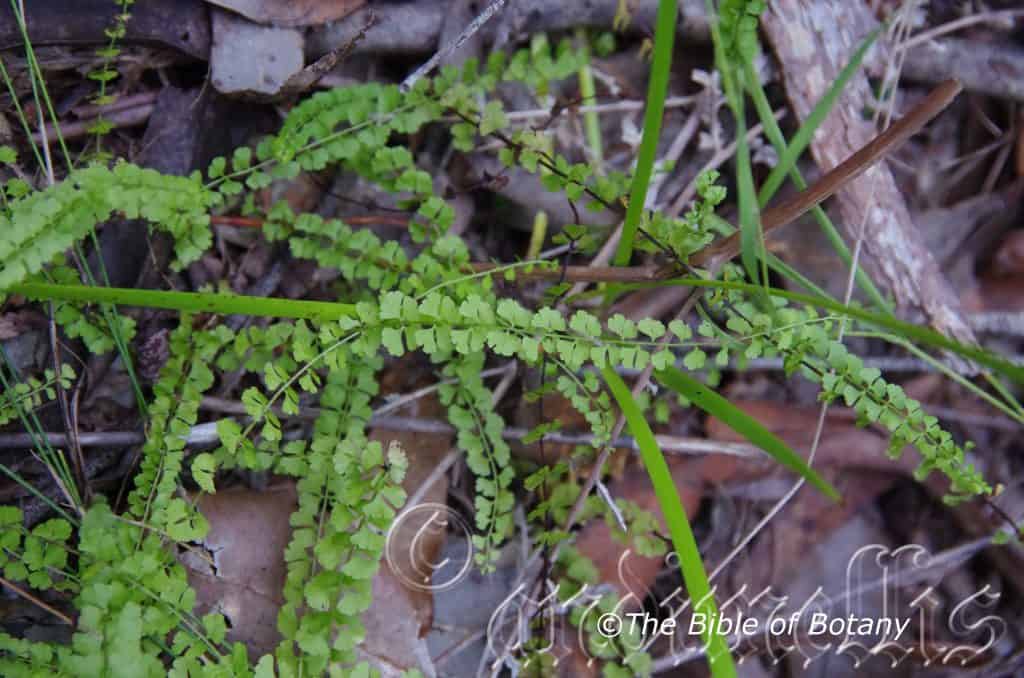
The Pinnacles NSW
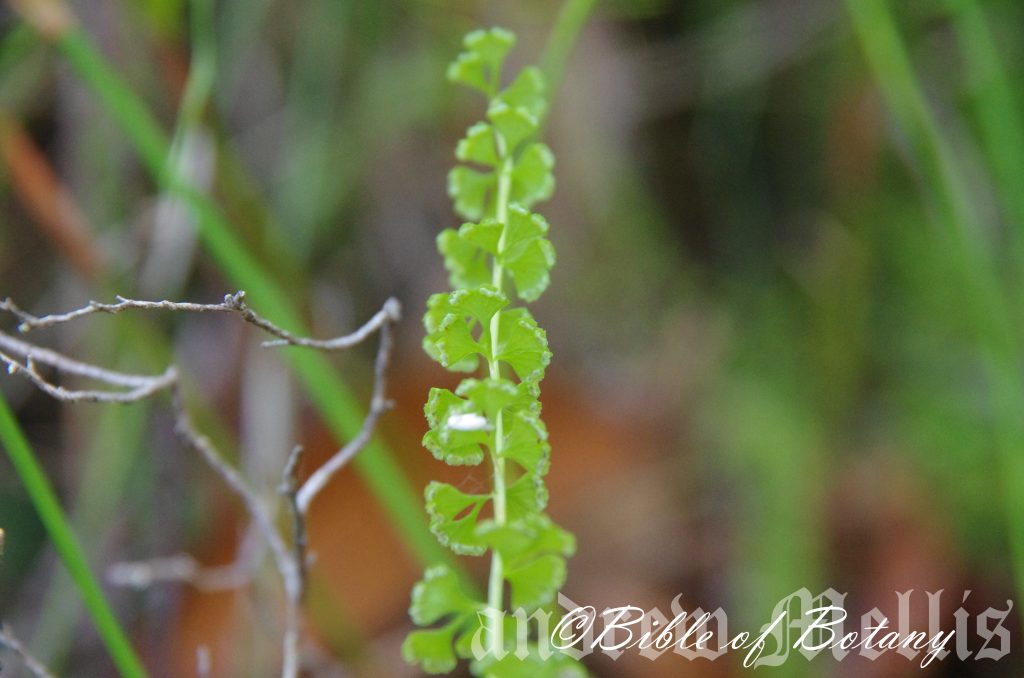
The Pinnacles NSW
Lindsaea incisa
Classification:
Division: Trachyophytes
Subdivision: Polypodiophyta
Class: Polypodiopsida
Order: Polypodiales
Family: Lindsaeaceae
Genus: Is named in honour of John Lindsay; 1750?-1803, who was a Scottish born Jamaican surgeon who first discovered the way in which ferns reproduced from spore.
Specie: From Incisus, which is Latin for to be deeply cut. It refers to leaf margins, which are deeply cut or torn in appearance.
Sub specie:
Common Name:
Distribution:
Lindsaea incisa is found in several disjunct populations south from Herberton to Taravale and Fraser Island south to Brisbane’s northern suburbs in eastern Queensland to a small area between the Clarence Valley and Corindi in coastal north eastern New South Wales with an isolated population at Linden near Cunnamulla.
https://avh.ala.org.au/occurrences/search?taxa=Lindsaea+incisa#tab_mapView
Habitat Aspect Climate:
Lindsaea incisa prefers light shade to dappled sunlight. It grows in moist shallow depressions in open woodlands. The altitude ranges from 26 meters ASL to 900 meters ASL.
Temperatures range from minus 4 degrees in August to 30 degrees in January.
Rainfall ranges from lows of 600mm to 3200mm average per annum.
Soil Requirements:
Lindsaea incisa prefers grey podzolic forest soils with plenty of forest litter. The soils are derived from decomposed heavy sandstone, granites, shales or metamorphic rocks. The soils pH. ranges from 4.5pH to 5pH. It does not tolerate waterlogged soils though the soils generally are moist throughout the year. Slightly saline soils to moderately saline soils are tolerated.
Height & Spread:
Wild Plants: 200mm to 500mm by 200mm to 500mm.
Characteristics:
Lindsaea incisa grows is a small fern with a short slim, creeping rhizomes which are covered in narrow, pale yellowish-brown scales.
Lindsaea incisa fronds are erect and only slightly dimorphic. The single or double pinnate fronds pinnae are fan shaped. The yellowish-brown stipes and yellow-ochre rachises and are semi glossy and glabrous. The stipes are shorter than the rachises.
The sterile fronds are slightly shorter than the fertile fronds. The fertile fronds usually measure100mm to 200mm in length by 10mm to 15mm in width. The margins are entire or once or twice incised. The sori are continuous at the apex of the pinnae or interrupted by marginal incisions. The indusium is white with an uneven margin.
Wildlife:
Lindsaea incisa wildlife is unknown to the author.
Cultivation:
Lindsaea incisa is a magnificent small fern for indoors bathrooms, courtyards or in the garden where moister, darker conditions prevail. It is an excellent squat pot fern that does best in mixes with high levels of good quality mulches added. When the sterile and fertile fronds are on display together the rich brown colour of the spore and deep green fronds are at their best.
It is ideal for rainforest gardens once dense shade has been established or on the southern side of buildings. This is a small fern that needs to be mass planted to see it at its absolute best.
It often reaches its full potential of 350mm to 500mm in the garden in just 1 year.
Propagation:
Spores: All ferns that are declared rare, vulnerable or endangered are protected by Federal and State Laws and must not be removed from the wild unless you are a land developer, mining company or main Roads department etc. This includes bulbs, roots, leaves and flowers. No part of any plant can be removed from Federal, State or Local Government land without the prior permission of the authority and this includes the spore.
Most people are put off at the thought of growing ferns from spore. Like all plants that produce their offspring from seed or spore the methods are basically the same. Remember nature has been doing this for millions of years and has been very successful. I have had excellent results growing over 200 different species of Australian ferns so don’t be afraid. Give it a go.
Step 1. Select spore from the fern fronds. Wait until the fern is just starting to release its spore. Rinse the fronds under clean running water and dry. This is to wash off any other spores from rogue ferns that may have settled onto the fronds. (There is nothing worse than having common brake or common soft bracken contaminating a prized tree fern or epiphyte.)
Step 2. Place the dry fronds in a clean brown paper bag and keep them in a cool dark place like the linen closet for about a week to ten days before you are ready to sow the spore. The exception to this rule applies to ferns, which produce green spores. These must be sown immediately that they are released. Todea Barbara is a good example of a fern, which produces green spore.
Step 3. Take a large ice cream container, a small ice cream container and a clean clear plastic bag large enough to seal the large ice cream container and three or four milk bottle tops.
Step 4. Punch or drill 6 to 10 5mm holes in the bottom of the small ice cream container.
Step 5. Wash both containers, tops and plastic bag so that they are very clean and sterile.
Step 6. Use a clean fine seed raising mi. We used 30mm fine sand, 30mm peat and 30mm perlite and 10mm vermiculite. We used crushed basalt, crusher dust and peat in a 50:50 ratio for epiphytes. Moisten the mix enough that water does not run out when the mix is squeezed between the fingers.
Step 7. Place the moisten mix (Enough to half fill the small ice cream container) in the microwave oven with a large glass of water for 7 or 8 minutes, until the water is boiling. Allow them to cool in the oven. You will need the water later so do not tip it out.
Step 8. Take the brown paper bag out of the linen closet. Shake the bag and remove the fronds. You should have a yellow, brown, black or rarely greenish brown or ochre powder or very fine, small round pin head size spore depending on the specie involved.
Step 9. Remove the mixture from the oven once it has cooled and place it in the small ice cream container and level.
Step 10. Sprinkle the spore sparsely over the mixture in the small ice cream container.
Step 11. Place the milk bottle tops in the large ice cream container with the flat surface facing down. Place the small ice cream container in the large ice cream container so that it is sitting on the milk bottle tops.
Step 12. Remove the water from the microwave and pour it into the larger ice cream container so there is 25mm to 30mm of water in the bottom.
Step 13. Place the ice cream containers in the plastic bag and seal. Step 14. Place the contents and bag in a warm shady place preferably 50mm to 70mm shade depending on the specie. Shade houses and some window sills are ideal.
Step 15. The surface should turn green within a week to two weeks. The prothallus will then develop. From the prthalus the first true fronds will appear. Wait until the ferns are 20mm to 35mm in height before you attempt to transplant them. Once they are ready open the bag up slightly and allow the air to flow around the little ferns. Every 3 to 5 days open the bag a little further so the ferns get use to their new environment. Allow them a week to two weeks to harden off before you transplant them following the removal of the plastic bag. Carefully prick them out into 50mm standard squat tubes as you would any seedling.
Do not try to transplant them as single plants as they are still a little delicate still.
Once the smaller ones again reach 50mm to 70mm you may wish to divide the stronger and hardier individual plants into smaller clumps in 100mm squat pots.
Step 16. We fertilized with seaweed, fish emulsion or organic chicken pellets soaked in water on an alternate basis until established. Fertilize every two months for one year even when in the ground.
Further Comments from Readers:
Hi reader, it seems you use The Bible of Botany a lot. That’s great as we have great pleasure in bringing it to you! It’s a little awkward for us to ask, but our first aim is to purchase land approximately 1,600 hectares to link several parcels of N.P. into one at The Pinnacles NSW Australia, but we need your help. We’re not salespeople. We’re amateur botanists who have dedicated over 30 years to saving the environment in a practical way. We depend on donations to reach our goal. If you donate just $5, the price of your coffee this Sunday, We can help to keep the planet alive in a real way and continue to bring you regular updates and features on Australian plants all in one Botanical Bible. Any support is greatly appreciated. Thank you.
In the spirit of reconciliation we acknowledge the Bundjalung, Gumbaynggirr and Yaegl and all aboriginal nations throughout Australia and their connections to land, sea and community. We pay our respect to their Elders past, present and future for the pleasures we have gained.

The Pinnacles NSW
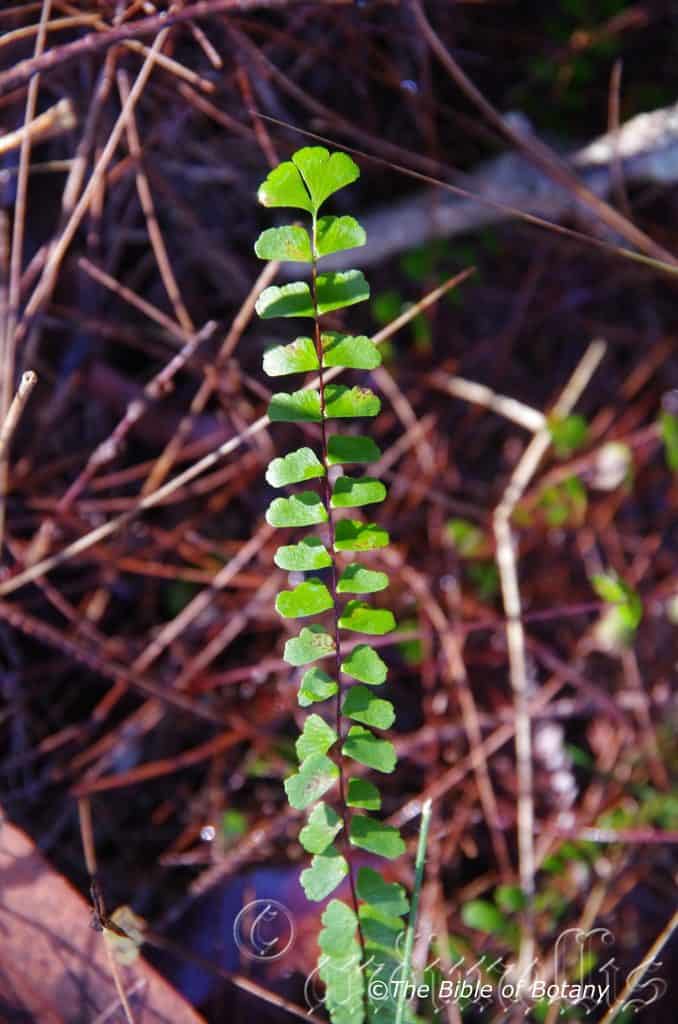
The Pinnacles NSW
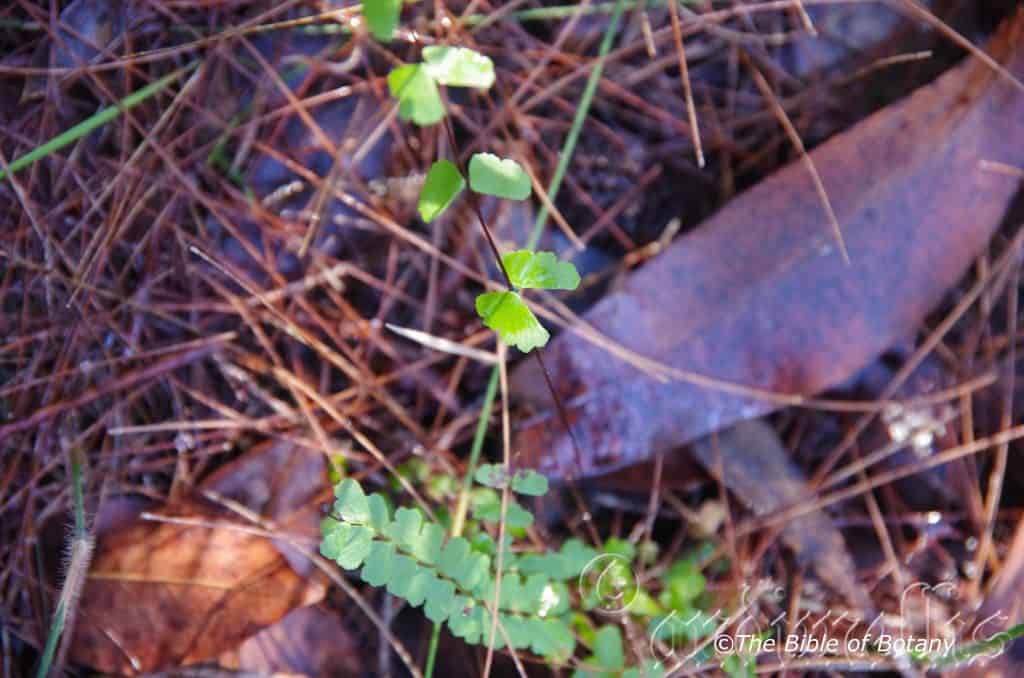
The Pinnacles NSW
Lindsaea linearis
Classification:
Division: Trachyophytes
Subdivision: Polypodiophyta
Class: Polypodiopsida
Order: Polypodiales
Family: Lindsaeaceae
Genus: Is named in honour of John Lindsay; 1750?-1803, who was a Scottish born Jamaican surgeon who first discovered the way in which ferns reproduced from spore.
Specie: From Linearis, which is Latin for straight lines. It refers to leaves, phyllodes or fronds, which are narrow where the veins appear as straight lines or have uniformly coloured lines.
Sub specie:
Common Name: Screw Fern.
Distribution:
Lindsaea linearis is widespread south from the Swan River to Mount Melville on the Esperance in coastal Western Australia with a disjunct population further east near Mount Le Grand to Howick Plains. It is found within 70 kilometres of the coast.
In the east it is found south from Caloundra in southern coastal Queensland to the Grampians in south western Victoria and Mount Gambier in south eastern South Australia. It is also found from Adelaide south to the western tip of Kangaroo Island. There is a disjunct population between Mingga Mountain and Mount Bayfield near the Byfield National Park. It is usually found within 200 kilometres of the coast on the Western Slopes on and east of the Great Dividing Range except for the southern highlands.
In Tasmania it is found on most of the Bass Straight Islands and the Tasmanian mainland except for the north eastern and central highlands.
https://avh.ala.org.au/occurrences/search?taxa=Lindsaea+linearis#tab_mapView
Habitat Aspect Climate:
Lindsaea linearis grows in medium dappled shade to very light shade in areas where moisture retentive soils exist. It is often found amongst rocks in open Eucalyptus forest heaths or near swamps. It can be found in cool moist open gullies close to the coast or warmer northerly aspects at higher altitudes and adjacent rainforests. The altitude ranges from 10 meters ASL to 900 meters ASL.
Temperatures range from minus 4 degrees in August to 30 degrees in January.
Rainfall ranges from lows of 600mm to 3200mm average per annum.
Soil Requirements:
Lindsaea linearis prefers sandy loams to light gritty clays. The soils are derived from decomposed sandstone, granite, metamorphic rocks, brown basalts or black basalts. The soils pH. ranges from 5.5pH to 7pH. It does not tolerate waterlogged soils. Non saline soils to slightly saline soils are tolerated.
Height & Spread:
Wild Plants: 200mm to 500mm by 200mm to 500mm.
Characteristics:
Lindsaea linearis grows as a small, soft, erect fern short, slim, creeping rhizome which is covered in narrow oblong, rich golden-brown scales.
The fronds are erect and dimorphic. The usually single or rarely double pinnate fronds pinnae are fan shaped or rhombic. The deep reddish-brown to almost black stipes and rachises and are glossy and glabrous. The stipes are shorter than the rachises.
The sterile fronds usually measure 50mm to 300mm in length by 8mm to 15mm in width. The concolourous laminas are deep green and glossy. The margins are irregularly crenate.
The fertile fronds are usually measure150mm to 400mm in length by 4mm to 9mm in width or at times measure up to 600mm in length. The margins are usually entire or at times once incised. The sori are usually continuous along the apex of the pinnae or interrupted by marginal incision. The indusium is off white to pale grey with an uneven margin.
Wildlife:
I have never seen anything attack Lindsaea linearisin the wild.
Cultivation:
Lindsaea linearis is a magnificent small fern for indoors bathrooms, courtyards or in the garden where moister, darker conditions prevail. It is an excellent squat pot fern that does best in mixes with high levels of good quality mulches added. When the sterile and fertile fronds are on display together the rich brown colour of the spore and deep green fronds are at their best.
It is ideal for rainforest gardens once dense shade has been established or on the southern side of buildings. This is a small fern that needs to be mass planted to see it at its absolute best.
It often reaches its full potential of 350mm to 500mm in the garden in just 1 year.
Propagation:
Spores: All ferns that are declared rare, vulnerable or endangered are protected by Federal and State Laws and must not be removed from the wild unless you are a land developer, mining company or main Roads department etc. This includes bulbs, roots, leaves and flowers. No part of any plant can be removed from Federal, State or Local Government land without the prior permission of the authority and this includes the spore.
Most people are put off at the thought of growing ferns from spore. Like all plants that produce their offspring from seed or spore the methods are basically the same. Remember nature has been doing this for millions of years and has been very successful. I have had excellent results growing over 200 different species of Australian ferns so don’t be afraid. Give it a go.
Step 1. Select spore from the fern fronds. Wait until the fern is just starting to release its spore. Rinse the fronds under clean running water and dry. This is to wash off any other spores from rogue ferns that may have settled onto the fronds. (There is nothing worse than having common brake or common soft bracken contaminating a prized tree fern or epiphyte.)
Step 2. Place the dry fronds in a clean brown paper bag and keep them in a cool dark place like the linen closet for about a week to ten days before you are ready to sow the spore. The exception to this rule applies to ferns, which produce green spores. These must be sown immediately that they are released. Todea Barbara is a good example of a fern, which produces green spore.
Step 3. Take a large ice cream container, a small ice cream container and a clean clear plastic bag large enough to seal the large ice cream container and three or four milk bottle tops.
Step 4. Punch or drill 6 to 10 5mm holes in the bottom of the small ice cream container.
Step 5. Wash both containers, tops and plastic bag so that they are very clean and sterile.
Step 6. Use a clean fine seed raising mi. We used 30mm fine sand, 30mm peat and 30mm perlite and 10mm vermiculite. We used crushed basalt, crusher dust and peat in a 50:50 ratio for epiphytes. Moisten the mix enough that water does not run out when the mix is squeezed between the fingers.
Step 7. Place the moisten mix (Enough to half fill the small ice cream container) in the microwave oven with a large glass of water for 7 or 8 minutes, until the water is boiling. Allow them to cool in the oven. You will need the water later so do not tip it out.
Step 8. Take the brown paper bag out of the linen closet. Shake the bag and remove the fronds. You should have a yellow, brown, black or rarely greenish brown or ochre powder or very fine, small round pin head size spore depending on the specie involved.
Step 9. Remove the mixture from the oven once it has cooled and place it in the small ice cream container and level.
Step 10. Sprinkle the spore sparsely over the mixture in the small ice cream container.
Step 11. Place the milk bottle tops in the large ice cream container with the flat surface facing down. Place the small ice cream container in the large ice cream container so that it is sitting on the milk bottle tops.
Step 12. Remove the water from the microwave and pour it into the larger ice cream container so there is 25mm to 30mm of water in the bottom.
Step 13. Place the ice cream containers in the plastic bag and seal. Step 14. Place the contents and bag in a warm shady place preferably 50mm to 70mm shade depending on the specie. Shade houses and some window sills are ideal.
Step 15. The surface should turn green within a week to two weeks. The prothallus will then develop. From the prthalus the first true fronds will appear. Wait until the ferns are 20mm to 35mm in height before you attempt to transplant them. Once they are ready open the bag up slightly and allow the air to flow around the little ferns. Every 3 to 5 days open the bag a little further so the ferns get use to their new environment. Allow them a week to two weeks to harden off before you transplant them following the removal of the plastic bag. Carefully prick them out into 50mm standard squat tubes as you would any seedling.
Do not try to transplant them as single plants as they are still a little delicate still.
Once the smaller ones again reach 50mm to 70mm you may wish to divide the stronger and hardier individual plants into smaller clumps in 100mm squat pots.
Step 16. We fertilized with seaweed, fish emulsion or organic chicken pellets soaked in water on an alternate basis until established. Fertilize every two months for one year even when in the ground.
Further Comments from Readers:
Hi reader, it seems you use The Bible of Botany a lot. That’s great as we have great pleasure in bringing it to you! It’s a little awkward for us to ask, but our first aim is to purchase land approximately 1,600 hectares to link several parcels of N.P. into one at The Pinnacles NSW Australia, but we need your help. We’re not salespeople. We’re amateur botanists who have dedicated over 30 years to saving the environment in a practical way. We depend on donations to reach our goal. If you donate just $5, the price of your coffee this Sunday, We can help to keep the planet alive in a real way and continue to bring you regular updates and features on Australian plants all in one Botanical Bible. Any support is greatly appreciated. Thank you.
In the spirit of reconciliation we acknowledge the Bundjalung, Gumbaynggirr and Yaegl and all aboriginal nations throughout Australia and their connections to land, sea and community. We pay our respect to their Elders past, present and future for the pleasures we have gained.
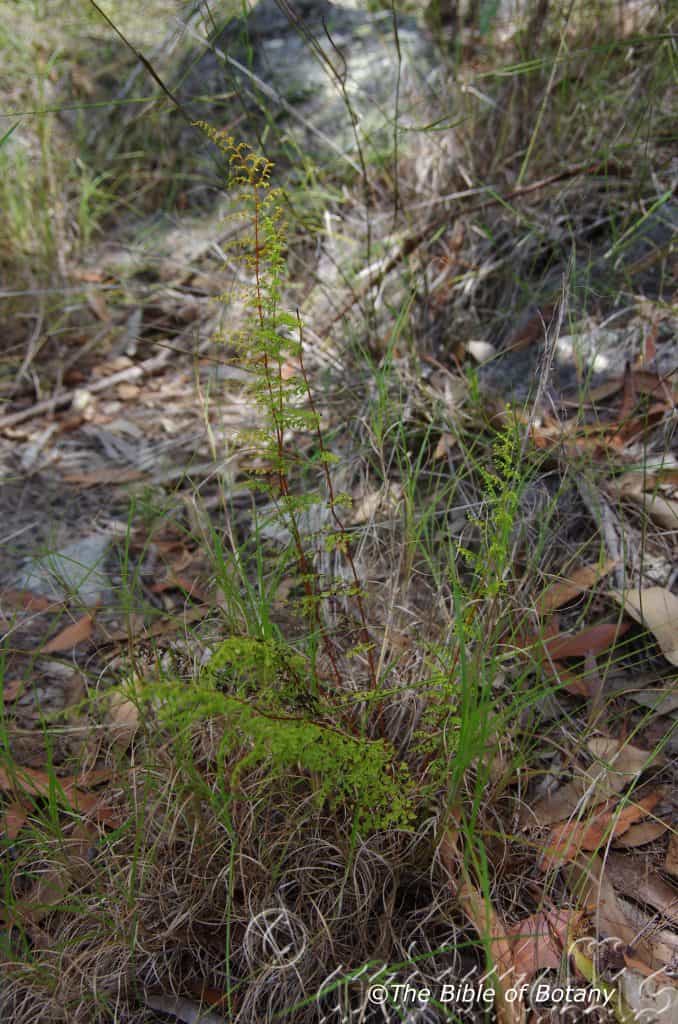
The Pinnacles NSW
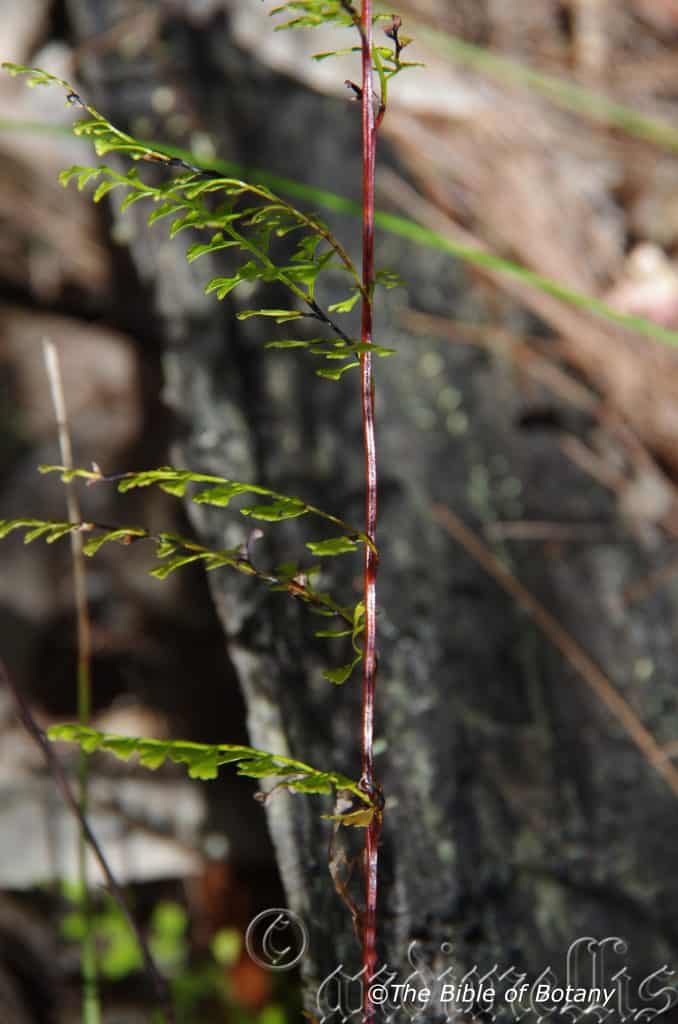
The Pinnacles NSW
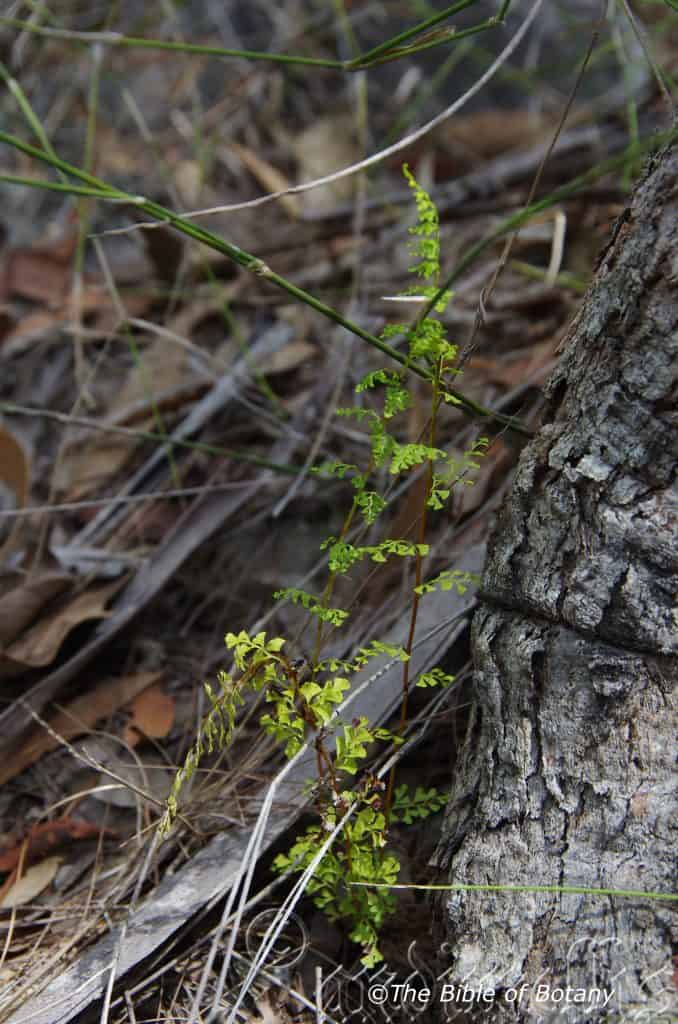
The Pinnacles NSW
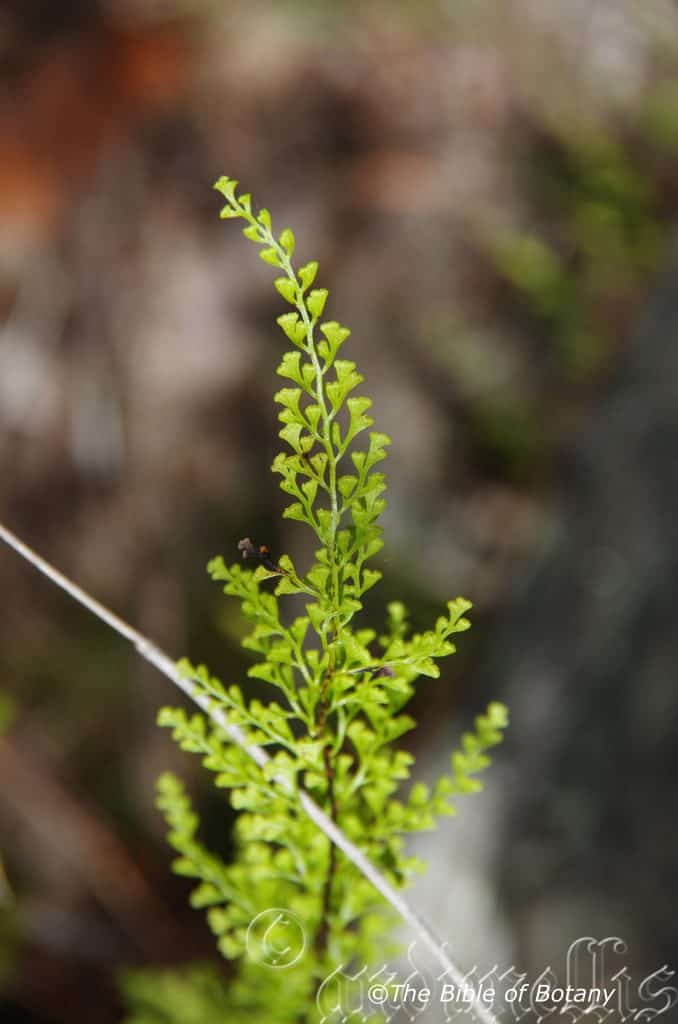
The Pinnacles NSW
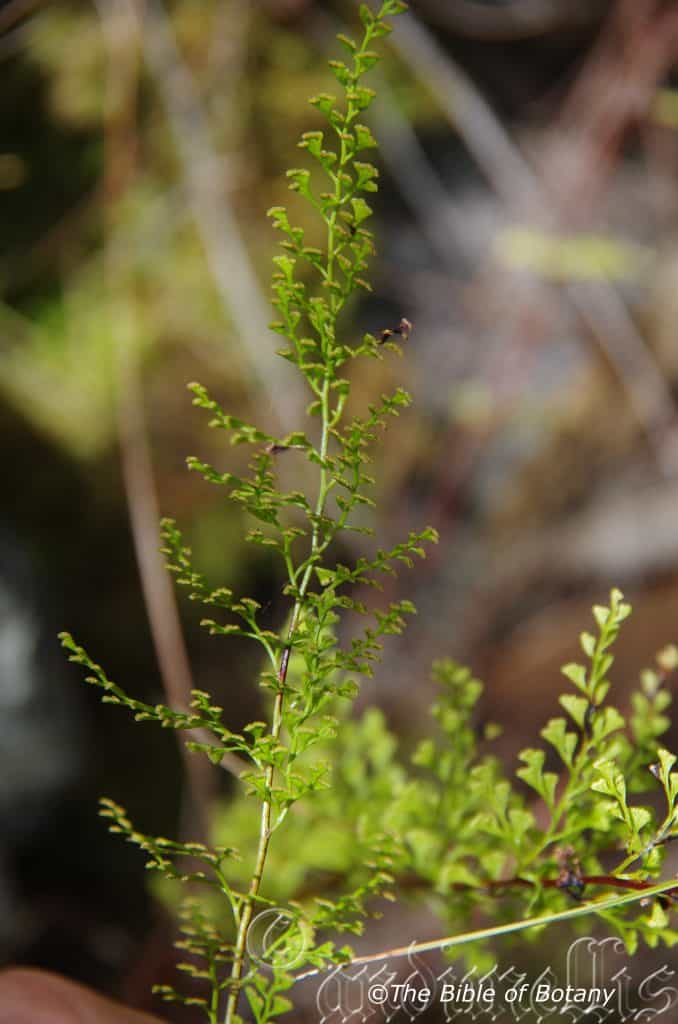
The Pinnacles NSW
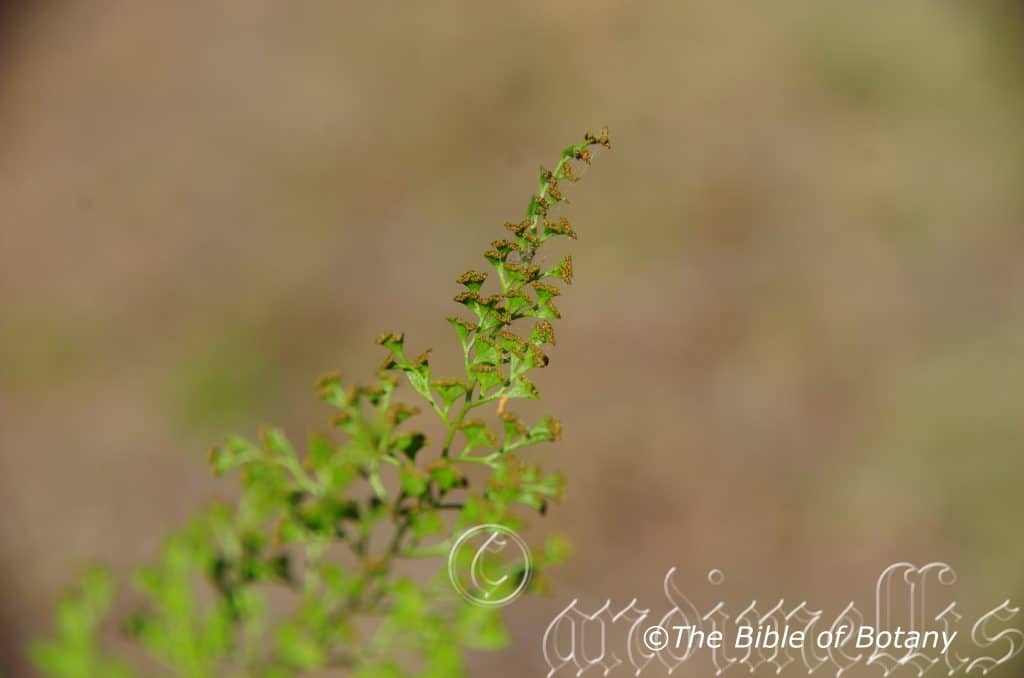
Yuraygir National Park NSW
Lindsaea microphylla
Classification:
Division: Trachyophytes
Subdivision: Polypodiophyta
Class: Polypodiopsida
Order: Polypodiales
Family: Lindsaeaceae
Genus: Is named in honour of John Lindsay; 1750?-1803, who was a Scottish born Jamaican surgeon who first discovered the way in which ferns reproduced from spore.
Specie: From Mikrós, which is Ancient Greek for small or very small and Phullon/Phýllon, which is Ancient Greek for a leaf. It refers to leaves, phyllodes or fronds, which are notably smaller or finer than other species in the genus.
Sub specie:
Common Name: Lacy Wedge Fern.
Distribution:
Lindsaea microphylla is found in 3 disjunct populations on and east of the Great Dividing Range to the coast. It is bounded by Trinity Bay to the Blackdown Tableland, White Mountains and Cleveland Bay in far north Queensland.
The central population is found south from the Byfield National Park and Carnarvon Gorge National Park to Raymond Creek near Orbost in north eastern Victoria.
The southern population is bounded by Labertouche to Nelson’s Creek and Welshpool in south eastern Victoria with an isolated population at Castle Cove.
https://avh.ala.org.au/occurrences/search?taxa=Lindsaea+microphylla#tab_mapView
Habitat Aspect Climate:
Lindsaea microphylla prefers light dappled shade to medium shade. It grows in damp places in woodland, open forest especially adjacent to rainforests where moisture retentive soils exist. The altitude ranges from 5 meters ASL to 900 meters ASL.
Temperatures range from minus 4 degrees in August to 37 degrees in January.
Rainfall ranges from lows of 500mm to 3200mm average per annum. The lower rainfall areas are associated with orographic precipitation.
Soil Requirements:
Lindsaea microphylla prefers to grow on sandy loams to medium clays. The soils are derived from decomposed sandstone, granite, metamorphic rocks, brown basalt, black basalts or podsolic soils. The soils pH. ranges from 5.5pH to 7pH. It does not tolerate waterlogged soils. Non saline soils to slightly saline soils are tolerated.
Height & Spread:
Wild Plants: 200mm to 500mm by 200mm to 500mm.
Characteristics:
Lindsaea microphylla has a short, slim, creeping rhizome which is covered in narrow oblong, rich golden-brown to reddish-brown scales.
The fronds are erect, tufted and slightly dimorphic. The usually tripinnate or at times bipinnate fronds with the ultimate pinnae segments pinnatifid and fan shape. The deep yellow-ochre stipes and yellow-ochre rachises and are glossy and glabrous. The stipes are much shorter than the rachises and measure 150mm to 600mm in length overall.
The sterile fronds usually measure 100mm to 500mm in length by 20mm to 60mm in width. The concolourous laminas are deep yellow-green and glossy. The margins are irregularly crenate to entire.
The fertile fronds are usually measure150mm to 500mm in length by 4mm to 9mm in width. The margins are usually regularly crenate. The sori are continuous or divided along the apex of the pinnae. The indusium is off white to pale grey and membranous.
Wildlife:
I have never seen anything attack Lindsaea microphyllain the wild.
Cultivation:
Lindsaea microphylla is a magnificent small fern for indoors bathrooms, courtyards or in the garden where moister, darker conditions prevail. It is an excellent squat pot fern that does best in mixes with high levels of good quality mulches added. When the sterile and fertile fronds are on display together the rich brown colour of the spore and deep green fronds are at their best.
It is ideal for rainforest gardens once dense shade has been established or on the southern side of buildings. This is a small fern that needs to be mass planted to see it at its absolute best.
It often reaches its full potential of 350mm to 500mm in the garden in just 1 year.
Propagation:
Spores: All ferns that are declared rare, vulnerable or endangered are protected by Federal and State Laws and must not be removed from the wild unless you are a land developer, mining company or main Roads department etc. This includes bulbs, roots, leaves and flowers. No part of any plant can be removed from Federal, State or Local Government land without the prior permission of the authority and this includes the spore.
Most people are put off at the thought of growing ferns from spore. Like all plants that produce their offspring from seed or spore the methods are basically the same. Remember nature has been doing this for millions of years and has been very successful. I have had excellent results growing over 200 different species of Australian ferns so don’t be afraid. Give it a go.
Step 1. Select spore from the fern fronds. Wait until the fern is just starting to release its spore. Rinse the fronds under clean running water and dry. This is to wash off any other spores from rogue ferns that may have settled onto the fronds. (There is nothing worse than having common brake or common soft bracken contaminating a prized tree fern or epiphyte.)
Step 2. Place the dry fronds in a clean brown paper bag and keep them in a cool dark place like the linen closet for about a week to ten days before you are ready to sow the spore. The exception to this rule applies to ferns, which produce green spores. These must be sown immediately that they are released. Todea Barbara is a good example of a fern, which produces green spore.
Step 3. Take a large ice cream container, a small ice cream container and a clean clear plastic bag large enough to seal the large ice cream container and three or four milk bottle tops.
Step 4. Punch or drill 6 to 10 5mm holes in the bottom of the small ice cream container.
Step 5. Wash both containers, tops and plastic bag so that they are very clean and sterile.
Step 6. Use a clean fine seed raising mi. We used 30mm fine sand, 30mm peat and 30mm perlite and 10mm vermiculite. We used crushed basalt, crusher dust and peat in a 50:50 ratio for epiphytes. Moisten the mix enough that water does not run out when the mix is squeezed between the fingers.
Step 7. Place the moisten mix (Enough to half fill the small ice cream container) in the microwave oven with a large glass of water for 7 or 8 minutes, until the water is boiling. Allow them to cool in the oven. You will need the water later so do not tip it out.
Step 8. Take the brown paper bag out of the linen closet. Shake the bag and remove the fronds. You should have a yellow, brown, black or rarely greenish brown or ochre powder or very fine, small round pin head size spore depending on the specie involved.
Step 9. Remove the mixture from the oven once it has cooled and place it in the small ice cream container and level.
Step 10. Sprinkle the spore sparsely over the mixture in the small ice cream container.
Step 11. Place the milk bottle tops in the large ice cream container with the flat surface facing down. Place the small ice cream container in the large ice cream container so that it is sitting on the milk bottle tops.
Step 12. Remove the water from the microwave and pour it into the larger ice cream container so there is 25mm to 30mm of water in the bottom.
Step 13. Place the ice cream containers in the plastic bag and seal. Step 14. Place the contents and bag in a warm shady place preferably 50mm to 70mm shade depending on the specie. Shade houses and some window sills are ideal.
Step 15. The surface should turn green within a week to two weeks. The prothallus will then develop. From the prothalus the first true fronds will appear. Wait until the ferns are 20mm to 35mm in height before you attempt to transplant them. Once they are ready open the bag up slightly and allow the air to flow around the little ferns. Every 3 to 5 days open the bag a little further so the ferns get use to their new environment. Allow them a week to two weeks to harden off before you transplant them following the removal of the plastic bag. Carefully prick them out into 50mm standard squat tubes as you would any seedling.
Do not try to transplant them as single plants as they are still a little delicate still.
Once the smaller ones again reach 50mm to 70mm you may wish to divide the stronger and hardier individual plants into smaller clumps in 100mm squat pots.
Step 16. We fertilized with seaweed, fish emulsion or organic chicken pellets soaked in water on an alternate basis until established. Fertilize every two months for one year even when in the ground.
Further Comments from Readers:
Hi reader, it seems you use The Bible of Botany a lot. That’s great as we have great pleasure in bringing it to you! It’s a little awkward for us to ask, but our first aim is to purchase land approximately 1,600 hectares to link several parcels of N.P. into one at The Pinnacles NSW Australia, but we need your help. We’re not salespeople. We’re amateur botanists who have dedicated over 30 years to saving the environment in a practical way. We depend on donations to reach our goal. If you donate just $5, the price of your coffee this Sunday, We can help to keep the planet alive in a real way and continue to bring you regular updates and features on Australian plants all in one Botanical Bible. Any support is greatly appreciated. Thank you.
In the spirit of reconciliation we acknowledge the Bundjalung, Gumbaynggirr and Yaegl and all aboriginal nations throughout Australia and their connections to land, sea and community. We pay our respect to their Elders past, present and future for the pleasures we have gained.
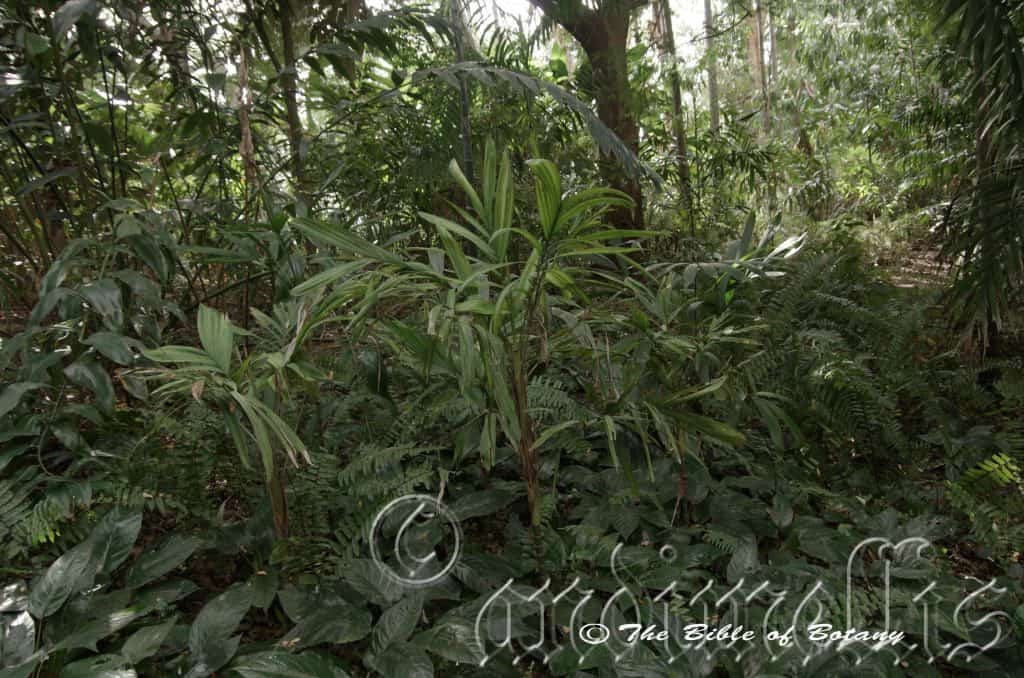
Townsville Qld.
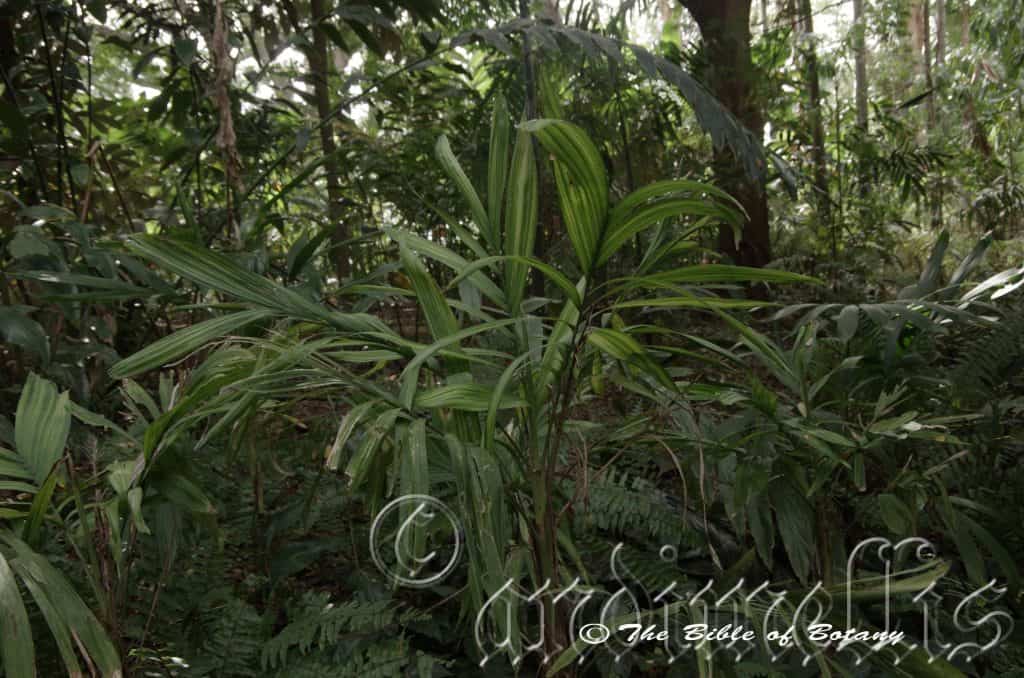
Townsville Qld.
Linospadix minor
Classification:
Unranked: Monocots
Unranked: Commelinids
Order: Arecales
Family: Arecaceae
Genus: From Lînos, which is Ancient Greek for a son of Apollo and Psammate and Spadix, which is Ancient Greek for a palm frond. It refers plants, which have narrow, linear spikes that hang down in respect to his parents.
Specie: From Minor, which is Latin for smaller. It refers to plants, which are smaller than other species in the genus.
Sub species:
Common Name: Walking Stick Palm or Minor Walking Stick or Jakarungle.
Distribution:
Linospadix minor is found in 2 disjunct populations south from the head waters of the Nesbitt River to the McIlwraith Range and from the Home Rule Falls south to Licuala State Forest near Mission Beach on Cape York Peninsula in far north eastern Queensland.
https://avh.ala.org.au/occurrences/search?taxa=Linospadix+minor#tab_mapView
Habitat Aspect Climate:
Linospadix minor prefers light dappled shade to full shade. It grows in well-developed warm tropical rainforests from the coast to the mountains. The altitude ranges from 20 meters ASL to 1300 meters ASL.
The temperatures range from 6 degrees in August to 36 degrees in January.
The rainfalls range from lows of 1600mm to an average of 3200mm.
Soil Requirements:
Linospadix minor prefers better quality loams to medium clays. The soils are usually derived from decomposed brown basalts, black basalts, granite or accumulated peaty beach sands. The soils pH. ranges from 5pH to 7pH. It tolerates seasonal waterlogged soils and seasonal high water tables. Non saline soils to moderately saline soils are tolerated.
Height & Spread:
Wild Plants: 1m to 2m but at times can reach 5m when there are fewer trunks in the cluster by 0.75m to 1m.
Characteristics:
Linospadix minor’s grows as a small clustering bamboo type palm with a grey lower trunk while the upper trunk is grey-green to green. The individual, slender trunks are covered in leaf scars. The very top is not self-cleaning and has a lower crown of dead leaves and fruiting spikes. The trunk measures 20mm to 30mm in diameter. The base does not swell.
Linospadix minor’s has 4 to 12 leaves in the crown. The leaves measure 400mm to 600mm in length including the 100mm to 150mm petiole. The 2 to 24 sessile linear pinnae measure 180mm to 230mm in length by 10mm to 60mm in width with the terminal pair being united with a broad base while the apex is a distinct “V”. It is much broader than the lateral leaflets. The bases are truncate while the apexes are wider than the base, are angled and praemorse. The leaves gently and evenly decurve from the base to the apex. The 4 to 5 lateral, parallel veins are strongly prominent on the lower lamina.
The inflorescences of Linospadix minor are born on a long pendulous spike measuring 380mm to 800mm in length. The male and female flowers may appear to be on separate spikes due to the plants being strongly protandrous and the male flowers being shed immediately after pollen dispersal. That is where the male flowers produce pollen prior to the carpel on the same flower and stigma becoming receptive.
The semi ovate outer tepals of the male flowers are fused, pale cream and measure 2mm to 3mm. The oblong inner tepals are white with an acuminate to obtuse apex and measure 6mm to 8mm in length by 2.5mm to 3mm in width in length on the male flowers. The 7 to 10 anthers produce a white pollen.
The female flowers tepals measure 8mm to 12 mm in length. There are 8 to 12 cream stamens.
The petals of the female flowers are free. The stigma is bilobed.
Linospadix minor’s fruit is a small cylindrical drupes. The infructescens measure 500mm to 900mm in length with the drupes measuring 15mm to 18mm in long by 3mm to 8mm in diameter. The pale green drupes turn deep pink to carmine-red, orange or at times yellow-orange when ripe. The ellipsoidal seeds measure 10mm to 15mmin length by 2mm to 3mm in diameter. The outer surface has fine longitudinal ribs.
Confusing Species:
Linospadix minor’s pinnate are irregularly segmented pinnate with a longpetiole. The oblong fruits are densely clustered along the spike.
Linospadix microcaryus’s pinnate are usually less irregularly segmented. The globose fruits are moderately clustered along the spike.
The alternate pinnate are sessile with irregularly segmented sections. The fruits are loosely clustered along the spike. The plants are restricted to rainforests in far south eastern Queensland to central coastal New South Wales.
Wildlife:
The fruits are eaten by native White Tail Rats and probably other native rats and marsupial mice and rats.
Cultivation:
Linospadix minor is a beautiful small palm for use as an understory plant that grow particularly well on moisture problem soils. It is suitable for small, medium and large gardens close to the coast or high in the mountains in warm temperate, sub tropical or tropical gardens. As garden subjects it grows from 2.5 meters to 3 meters in height by 1 meter to 1.5 meters diameter. It is cold sensitive at temperatures below 4 degrees even when established.
It is most suitable for use around shaded swimming pools, courtyards, besides pathways, shady rockeries. Mass plantings of 5 or more plants even in small areas; really do the plants justification especially when it is in fruit. Medium to large fish or frog ponds look particularly attractive with Linospadix minor giving a dwarf rainforest appearance that is cooling and relaxing. They look their best when plants of different heights are blended together.
It can also be used for extended periods indoors provided the air is humid. It is slow growing which stands them in good stead as an indoor plant or bush house plant. In small or miniature rainforest gardens they come to the fore as they can take relatively dark conditions, moist soils and can be mass planted using plants of different ages to great effect. In the miniature rainforest garden do not use any palms that grow taller or too much wider than these or the affect will be lost and look weedy. Plants start flowering and fruiting when it is about 750mm in height.
Propagation:
Seeds: Linospadix minor seeds can be sown directly into a seed raising mix after roughing the sides with fine sandpaper to assist in germination. Cover the seeds with 5mm to 10mm of fine weed free mulch and keep moist. Place the tray in a warm sunny position. When the seedlings are 30mm to 50mm tall, prick them out and plant them into 50mm native tubes using a good organic mix.
Once the seedlings reach 100mm to 150mm in height they can be planted out into their permanent position.
Fertilize using seaweed, fish emulsion or organic chicken pellets soaked in water on an alternate basis. Fertilize every two months until the plants are established then twice annually in early September or March to maintain better colour health and vitality.
Further Comments from Readers:
Hi reader, it seems you use The Bible of Botany a lot. That’s great as we have great pleasure in bringing it to you! It’s a little awkward for us to ask, but our first aim is to purchase land approximately 1,600 hectares to link several parcels of N.P. into one at The Pinnacles NSW Australia, but we need your help. We’re not salespeople. We’re amateur botanists who have dedicated over 30 years to saving the environment in a practical way. We depend on donations to reach our goal. If you donate just $5, the price of your coffee this Sunday, We can help to keep the planet alive in a real way and continue to bring you regular updates and features on Australian plants all in one Botanical Bible. Any support is greatly appreciated. Thank you.
In the spirit of reconciliation we acknowledge the Bundjalung, Gumbaynggirr and Yaegl and all aboriginal nations throughout Australia and their connections to land, sea and community. We pay our respect to their Elders past, present and future for the pleasures we have gained.
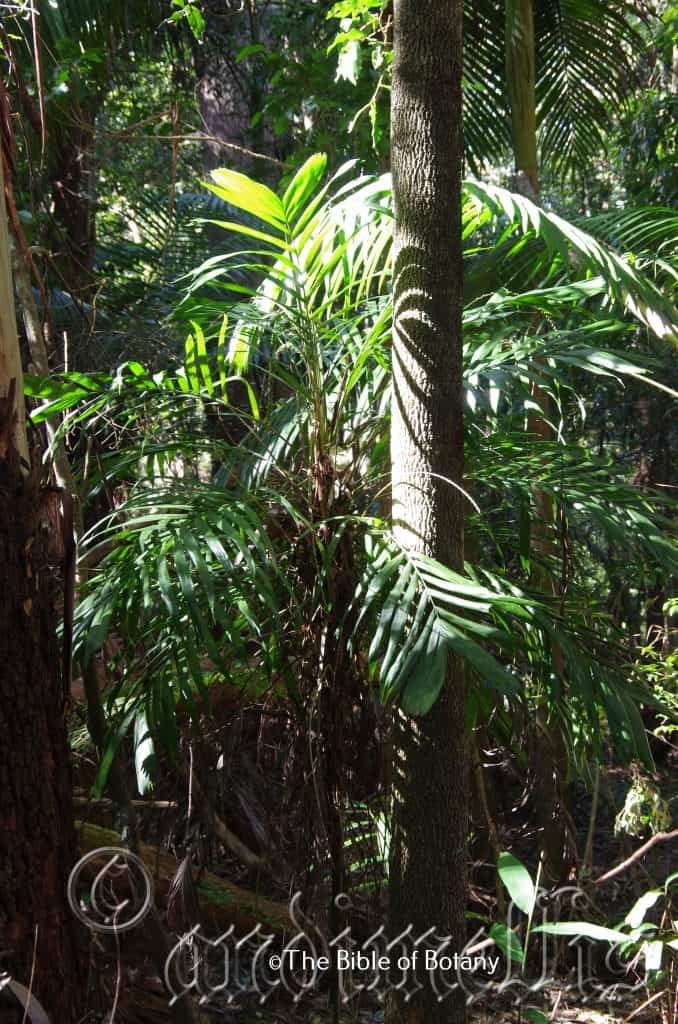
Washpool National Park NSW
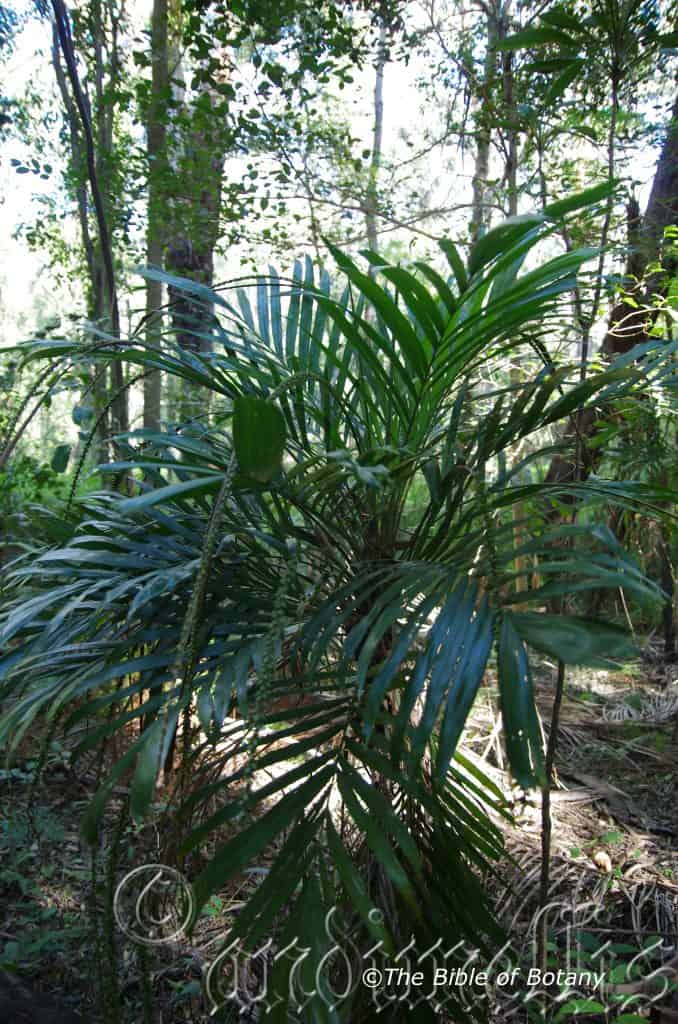
NCBG Coffs Harbour NSW
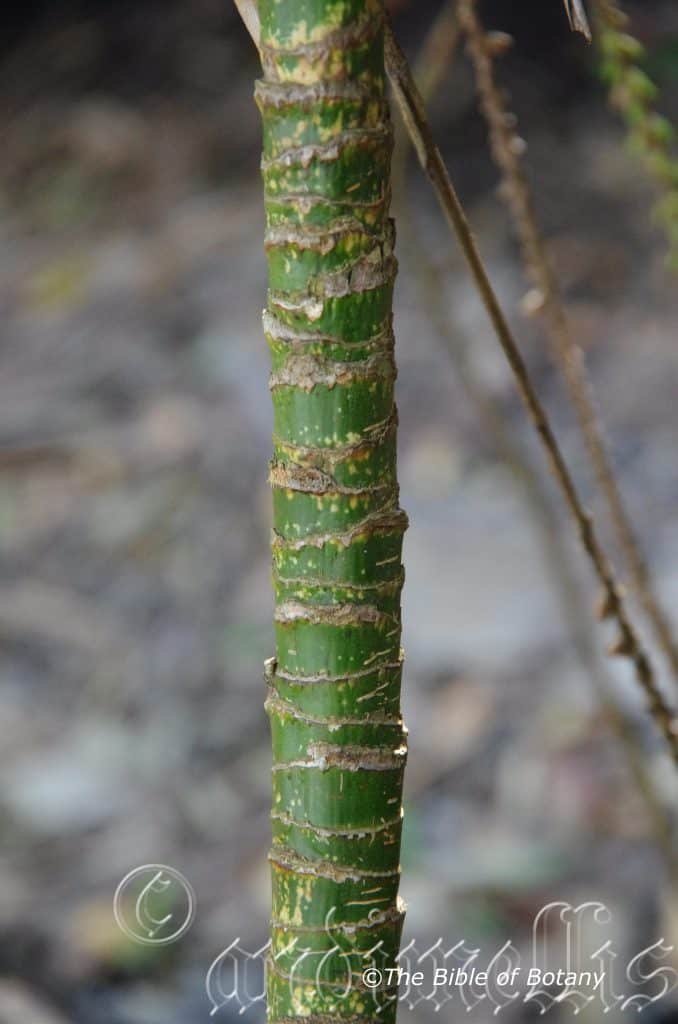
NCBG Coffs Harbour NSW
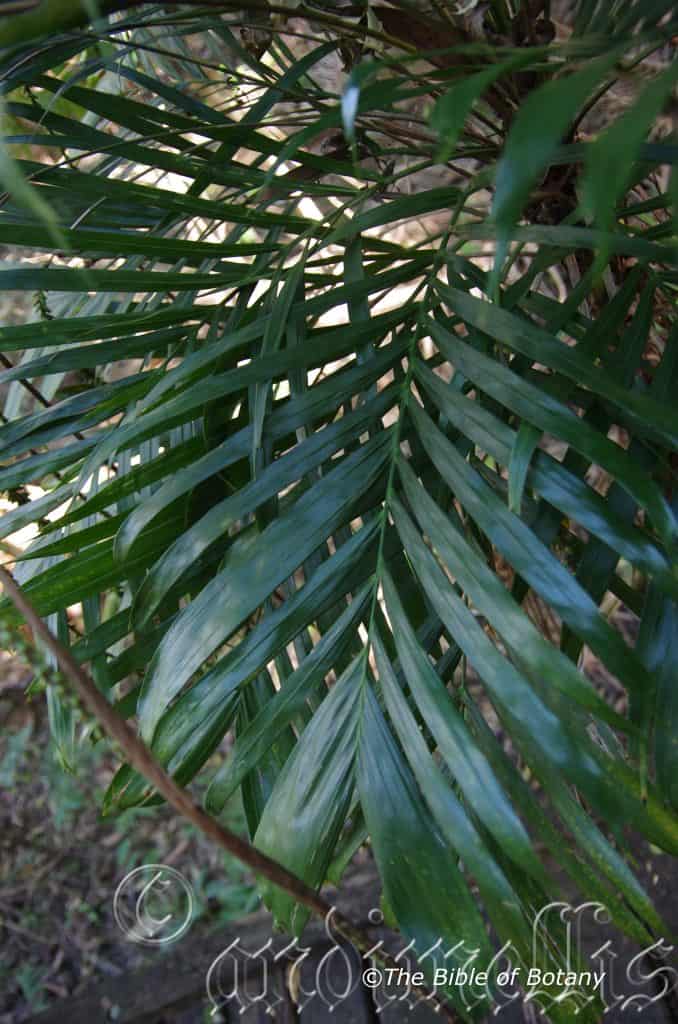
NCBG Coffs Harbour NSW
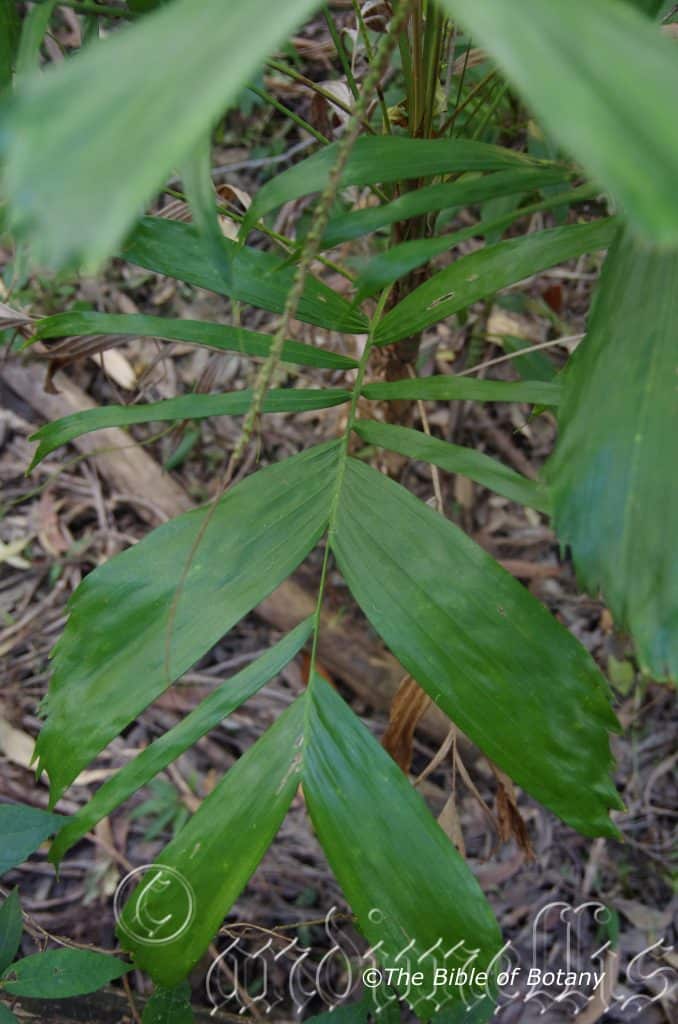
NCBG Coffs Harbour NSW
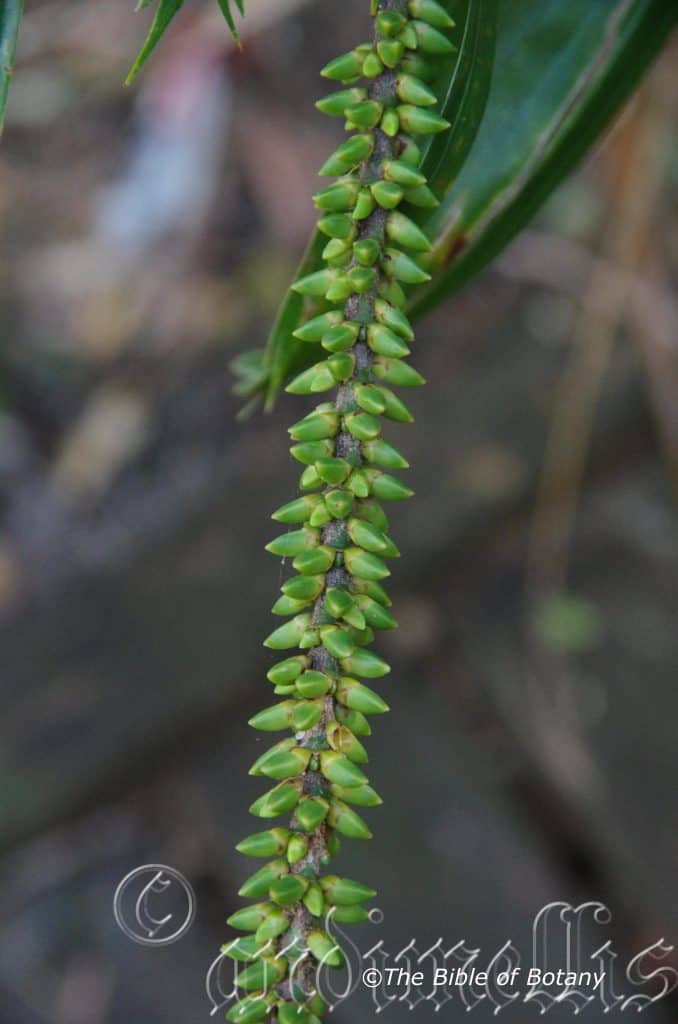
Washpool National Park NSW
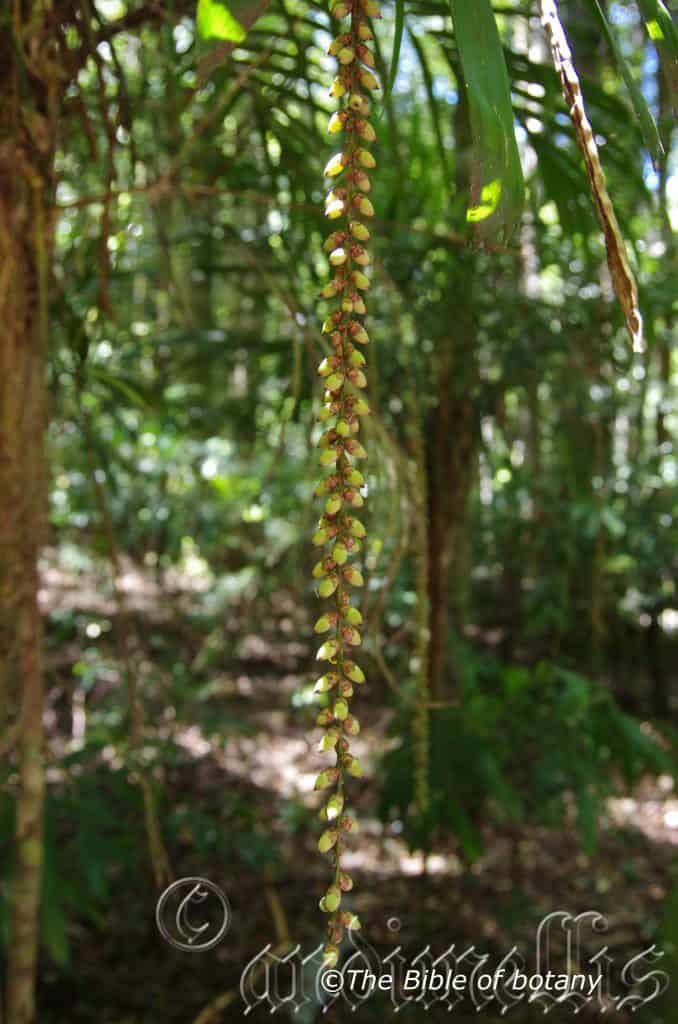
NCBG Coffs Harbour NSW
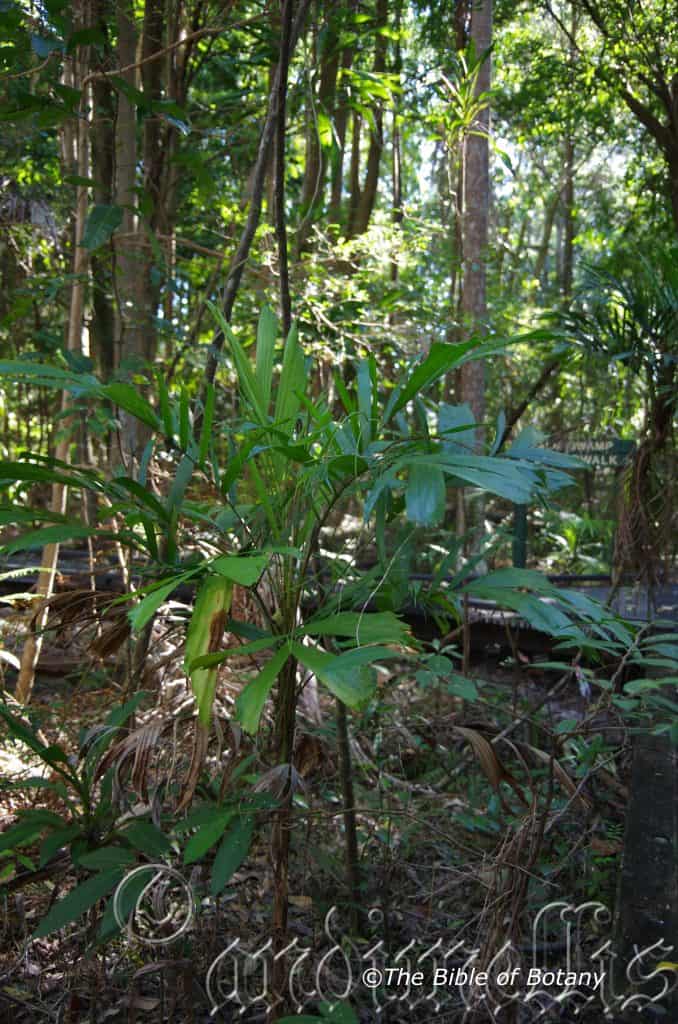
NCBG Coffs Harbour NSW
Linospadix monostachya
Classification:
Unranked: Monocots
Unranked: Commelinids
Order: Arecales
Family: Arecaceae
Genus: From Lînos, which is Ancient Greek for a son of Apollo and Psammate and Spadix, which is Ancient Greek for a palm frond. It refers plants, which have narrow, linear spikes that hang down in respect to his parents.
Specie: From Monos, which is Ancient Greek for one or singular and Stákhus, which is Ancient Greek or later Stachys which is Latin for a flowering spike. It refers to plants, which produce a single spike at a time, or a single spike from each leach axis or a single spike annually.
Sub species:
Common Name: Walking Stick Palm.
Distribution:
Linospadix monostachya is found in several disjunct populations south from the Daintree National Park to the headwaters of the Mitchell River in far north eastern Queensland.
In the south it is found south from the McPherson Ranges in south eastern Queensland to Singleton in central eastern New South Wales.
https://avh.ala.org.au/occurrences/search?taxa=Linospadix+monostachya#tab_mapView
Habitat Aspect Climate:
Linospadix monostachya prefers light dappled shade to full shade. It grows in riparian zones in well-developed warm tropical rainforests. The altitude ranges from 100 meters ASL to 750 meters ASL.
The temperatures range from minus 3 degrees in August to 34 degrees in January.
The rainfalls range from lows of 900mm to an average of 1550mm.
Soil Requirements:
Linospadix monostachya prefers better quality loams to medium clays. The soils are derived from decomposed sandstone, granite and accumulated beach sands. The soils pH. ranges from 5pH to 6.5pH. It does not tolerate waterlogged soils. Non saline soils to moderately saline soils are tolerated.
Height & Spread:
Wild Plants: 2.5m to 3m by 0.75m to 1m.
Characteristics:
Linospadix monostachya’s grows as a small palm with a grey lower trunk is while the upper trunk is grey green to green. The single, slender trunk of this palm is covered in leaf scars. The very top is not self-cleaning and has a lower crown of dead leaves and fruiting spikes. The trunk measures 20mm to 30mm in diameter and swells at the base to 40mm to 60mm in diameter.
Linospadix monostachya’s leaves are irregular in distribution and shape of the pinnae. The leaves measure 500mm to 1300mm in length including the 200mm to 300mm petiole. The linear pinnae measure 450mm to 550mm in length by 30mm to 80mm in width with the terminal pair being united in a “V”. It is much broader than the lateral leaflets. The base is truncate while the apexes are wider than the base and are angled and torn.
The inflorescence of Linospadix monostachya is born on a long pendulous spike measuring 900mm to 1500mm in length. The flowers are unisexual. The semi oval outer tepals are pale purple-brown and measure 2mm to 3mm. The oblong inner tepals are creamy yellow with an acuminate to acute apex and measure 6mm to 8mm in length by 2.5mm to 3mm in width in length on the male flowers while the female flowers tepals measure 8mm to 12 mm in length. There are 8 to 12 cream stamens.
Linospadix monostachya’s fruit is a small globose drupes. The drupes measure 6mm to 8mm in long by 6mm to 8mm in diameter. The pale green drupes turn deep pink to red when ripe.
Wildlife:
The fruits are eaten by native White Tail Rats and probably other native rats and marsupial mice and rats.
Cultivation:
Linospadix monostachya are beautiful small palms for use as an understory plant that grow particularly well on moisture problem soils. It is suitable for small, medium and large gardens close to the coast or high in the mountains in warm temperate, sub tropical or tropical gardens. As garden subjects they will grow from 2.5 meters to 3 meters by 1 meter to 1.2 meters wide. It is cold tolerant to temperatures at least as low as 1 degree once established.
It is most suitable for use around shaded swimming pools, courtyards, besides pathways, shady rockeries. Mass plantings of 5 or more plants even in small areas; really do the plants justification especially when it is in fruit. Medium to large fish or frog ponds look particularly attractive with Linospadix monostachya giving a dwarf rainforest appearance that is cooling and relaxing. They look their best when plants of different heights are blended together.
They can also be used for extended periods indoors provided the air is humid. It is slow growing which stands them in good stead as an indoor plant or bush house plant. In small or miniature rainforest gardens they come to the fore as they can take relatively dark conditions, moist soils and can be mass planted using plants of different heights to great effect. In the miniature rainforest garden do not use any palms that grow taller or too much wider than these or the affect will be lost and look weedy. Plants start flowering and fruiting when it is about 750mm in height.
The fruits are edible and very sweet reminiscent of a cherry. It was the fruits of this palm that kept the survivors of the Stinson plane crash alive in February 1937.
Propagation:
Seeds: Linospadix monostachya seeds can be sown directly into a seed raising mix after roughing the sides with fine sandpaper to assist in germination. Cover the seeds with 5mm to 10mm of fine weed free mulch and keep moist. Place the tray in a warm sunny position. When the seedlings are 30mm to 50mm tall, prick them out and plant them into 50mm native tubes using a good organic mix.
Once the seedlings reach 100mm to 150mm in height they can be planted out into their permanent position.
Fertilize using seaweed, fish emulsion or organic chicken pellets soaked in water on an alternate basis. Fertilize every two months until the plants are established then twice annually in early September or March to maintain better colour health and vitality.
Further Comments from Readers:
Hi reader, it seems you use The Bible of Botany a lot. That’s great as we have great pleasure in bringing it to you! It’s a little awkward for us to ask, but our first aim is to purchase land approximately 1,600 hectares to link several parcels of N.P. into one at The Pinnacles NSW Australia, but we need your help. We’re not salespeople. We’re amateur botanists who have dedicated over 30 years to saving the environment in a practical way. We depend on donations to reach our goal. If you donate just $5, the price of your coffee this Sunday, We can help to keep the planet alive in a real way and continue to bring you regular updates and features on Australian plants all in one Botanical Bible. Any support is greatly appreciated. Thank you.
In the spirit of reconciliation we acknowledge the Bundjalung, Gumbaynggirr and Yaegl and all aboriginal nations throughout Australia and their connections to land, sea and community. We pay our respect to their Elders past, present and future for the pleasures we have gained.
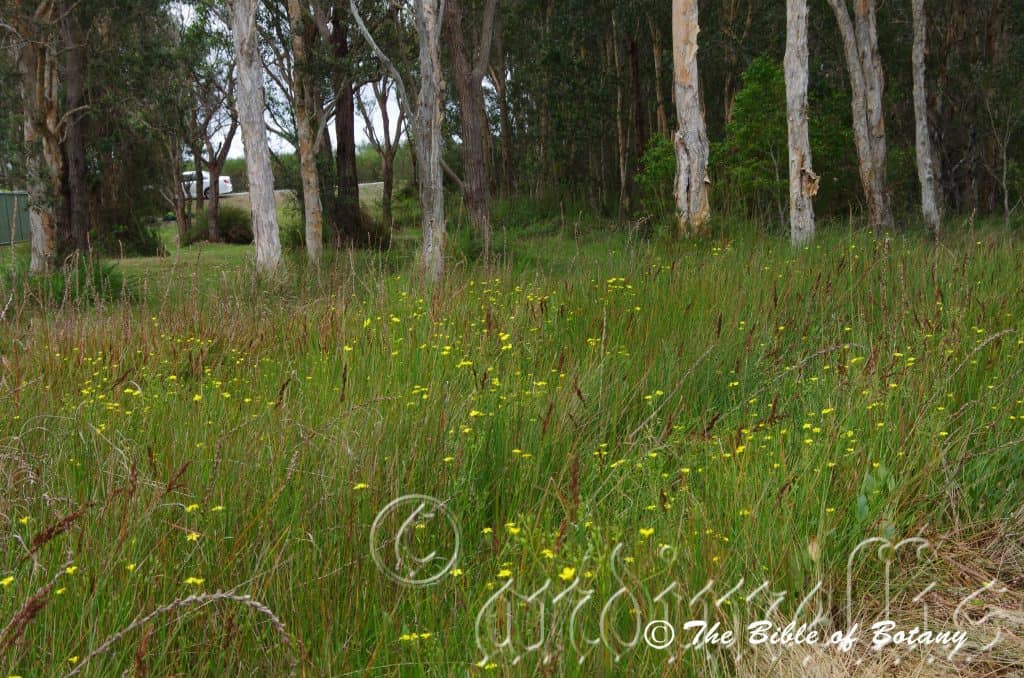
North Haven to Laurieton NSW
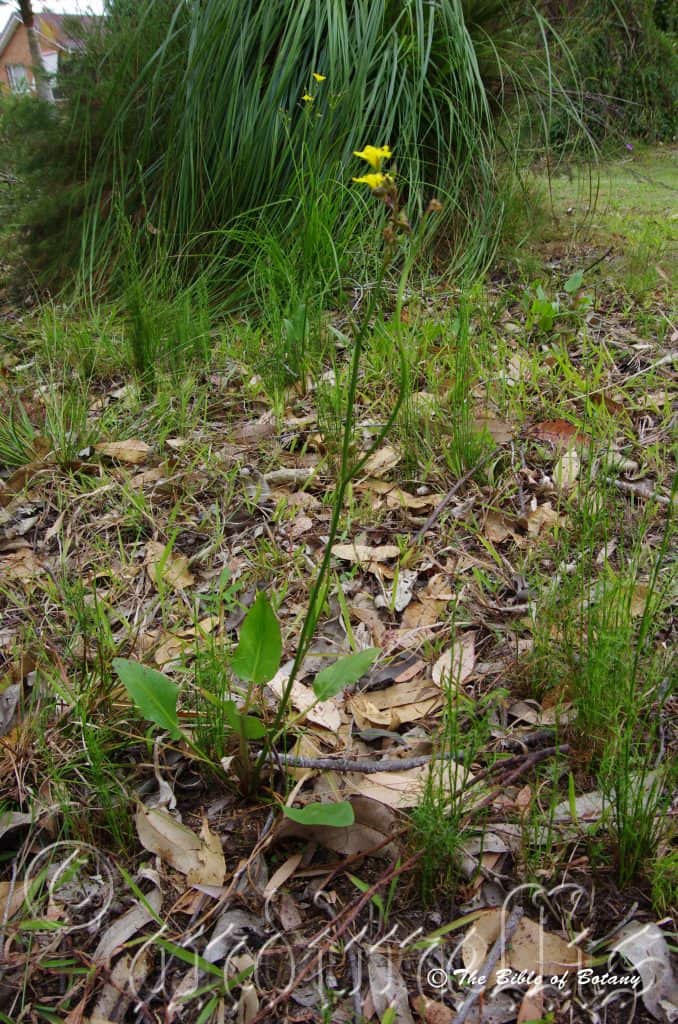
North Haven to Laurieton NSW
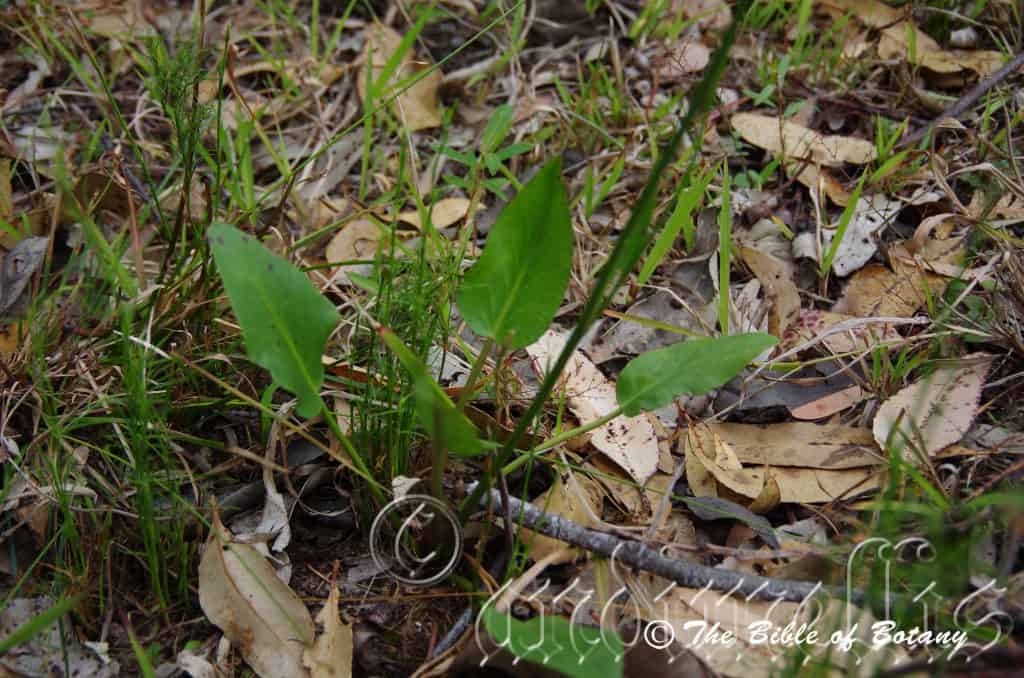
North Haven to Laurieton NSW
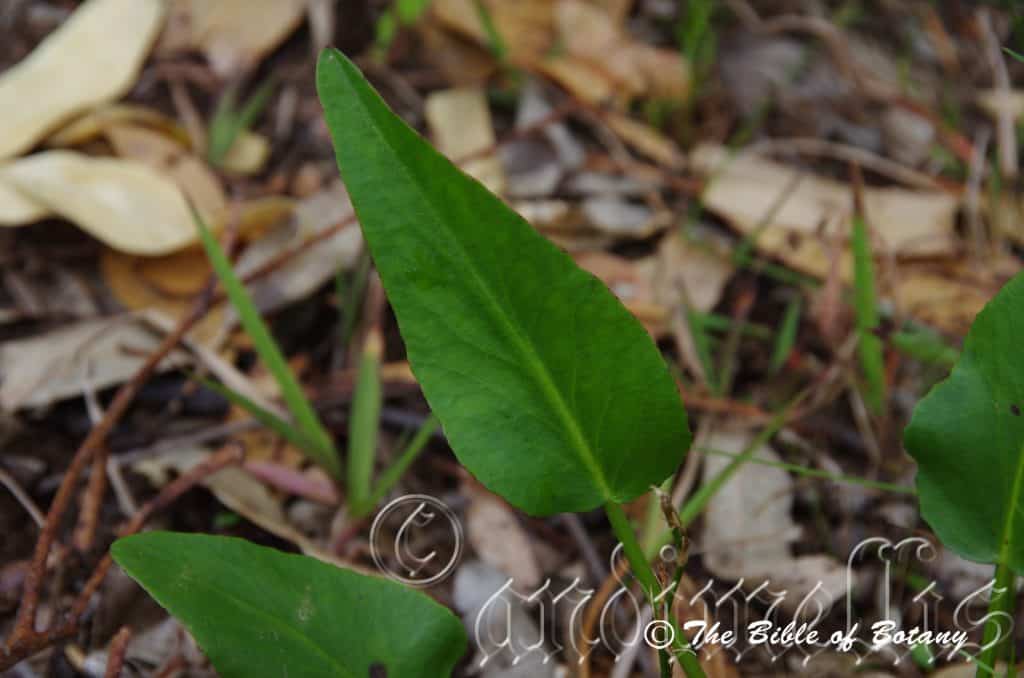
North Haven to Laurieton NSW
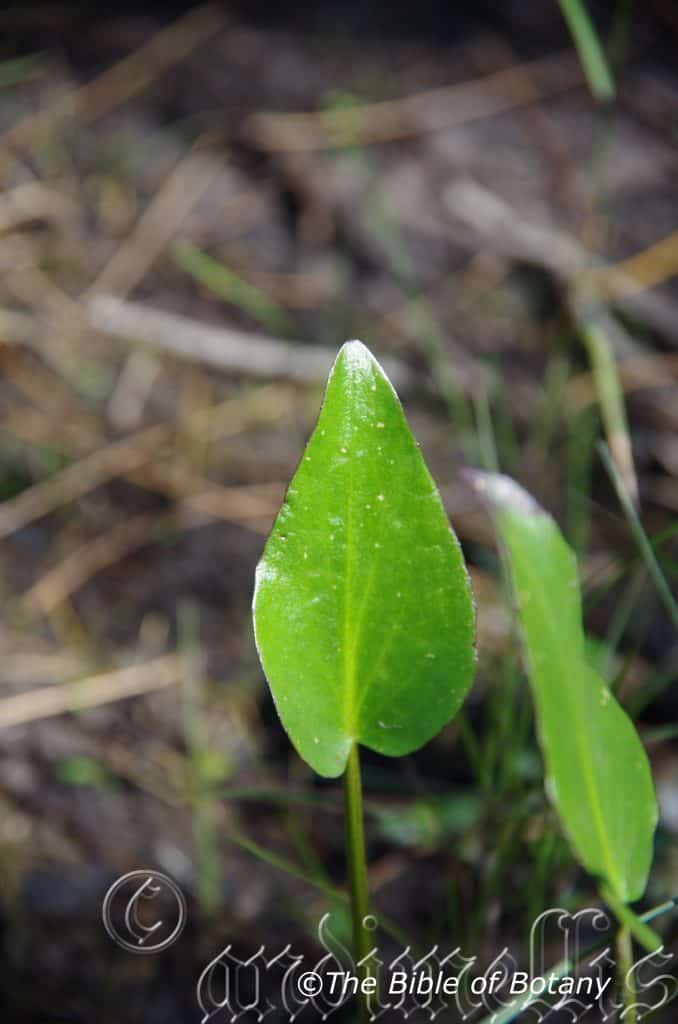
Yuraygir National Park NSW
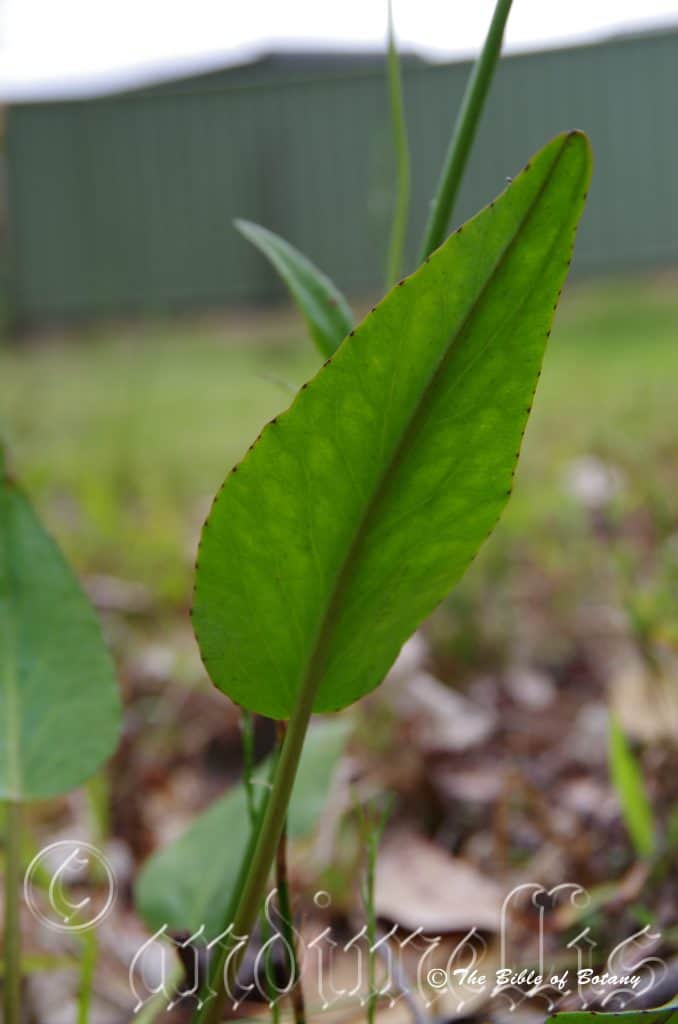
North Haven to Laurieton NSW
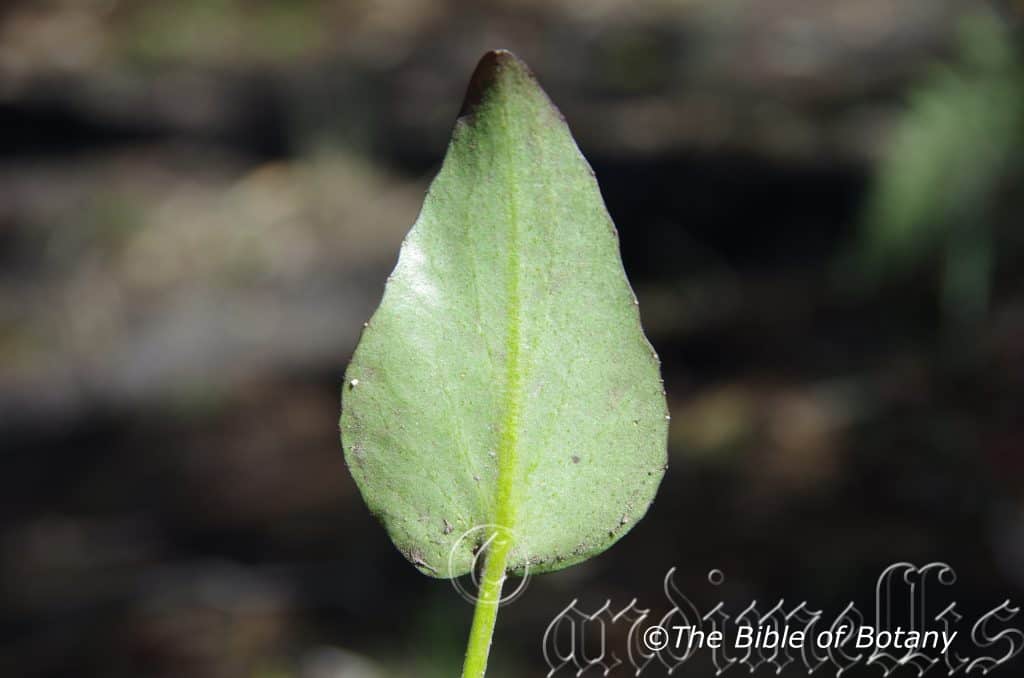
Yuraygir National Park NSW
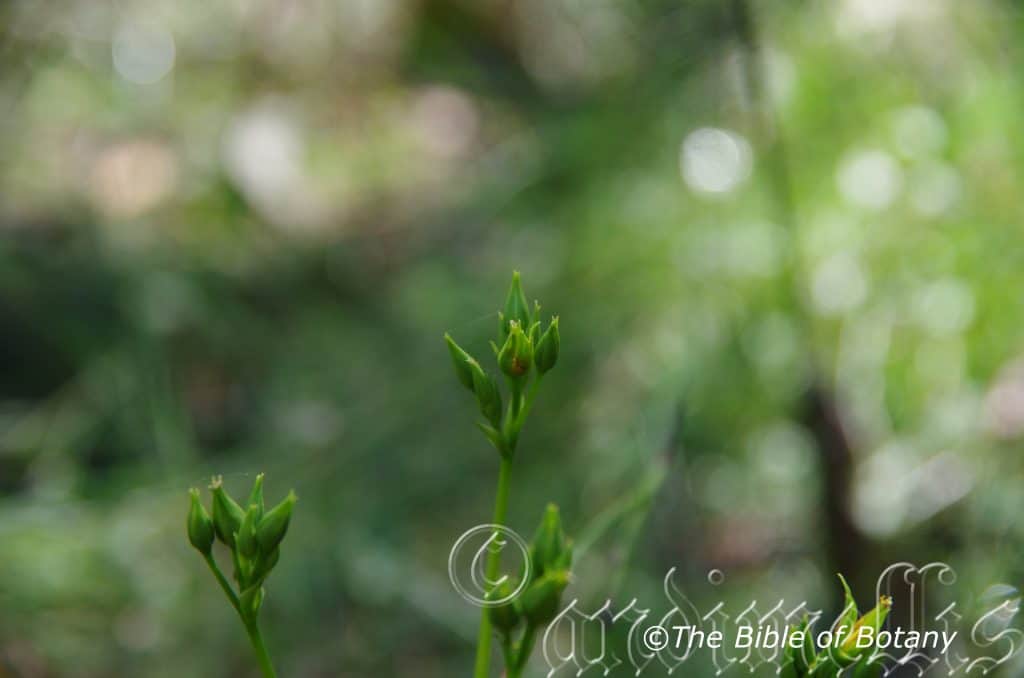
Yuraygir National Park NSW
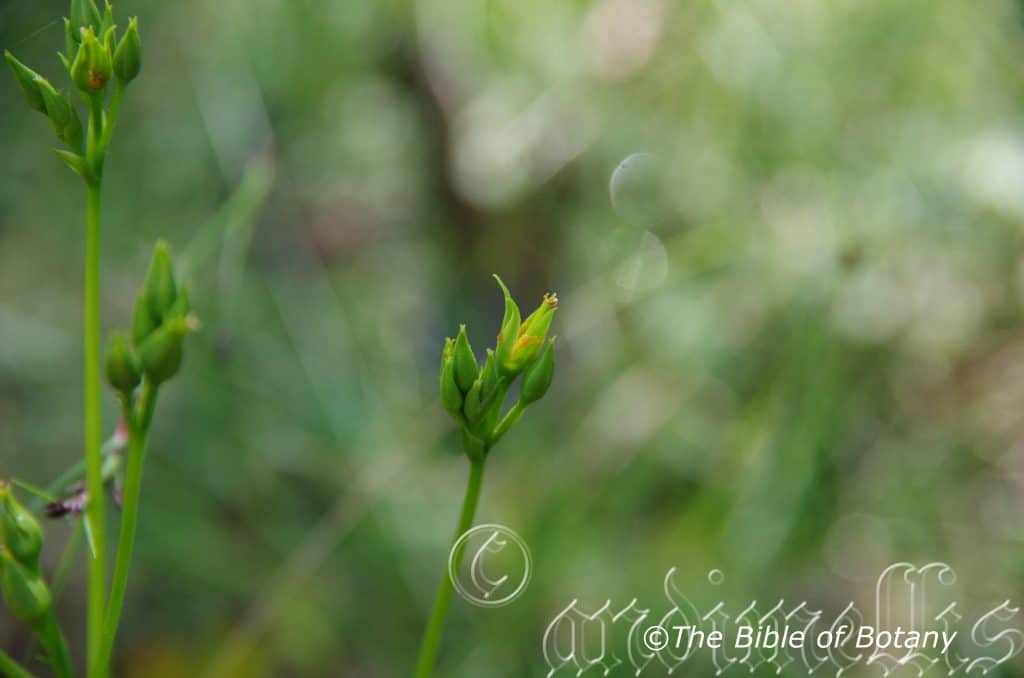
Yuraygir National Park NSW
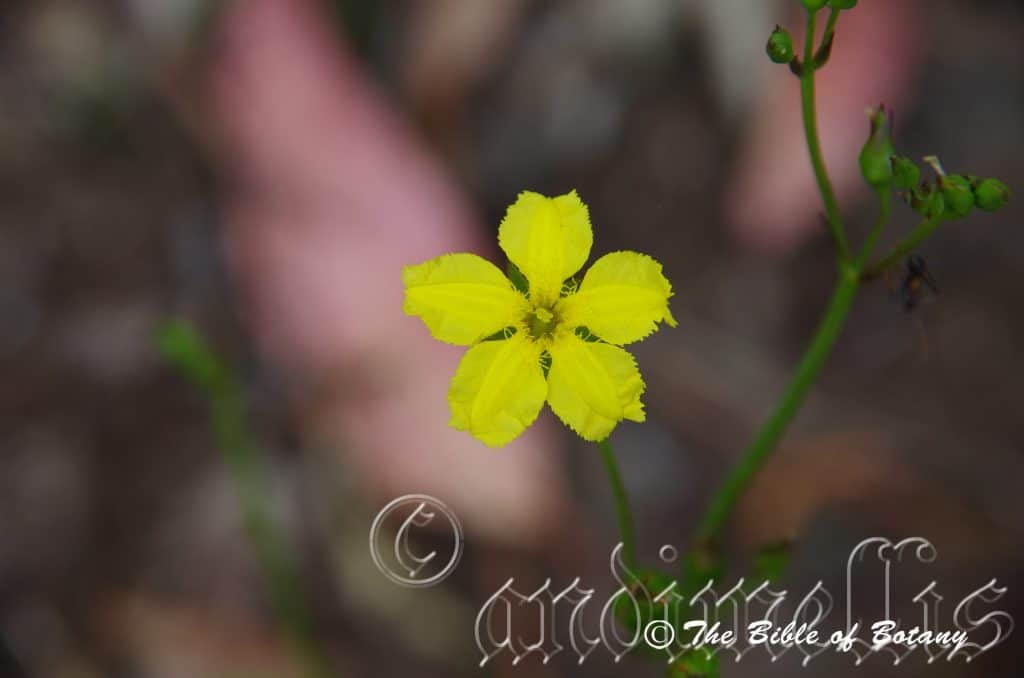
North Haven to Laurieton NSW
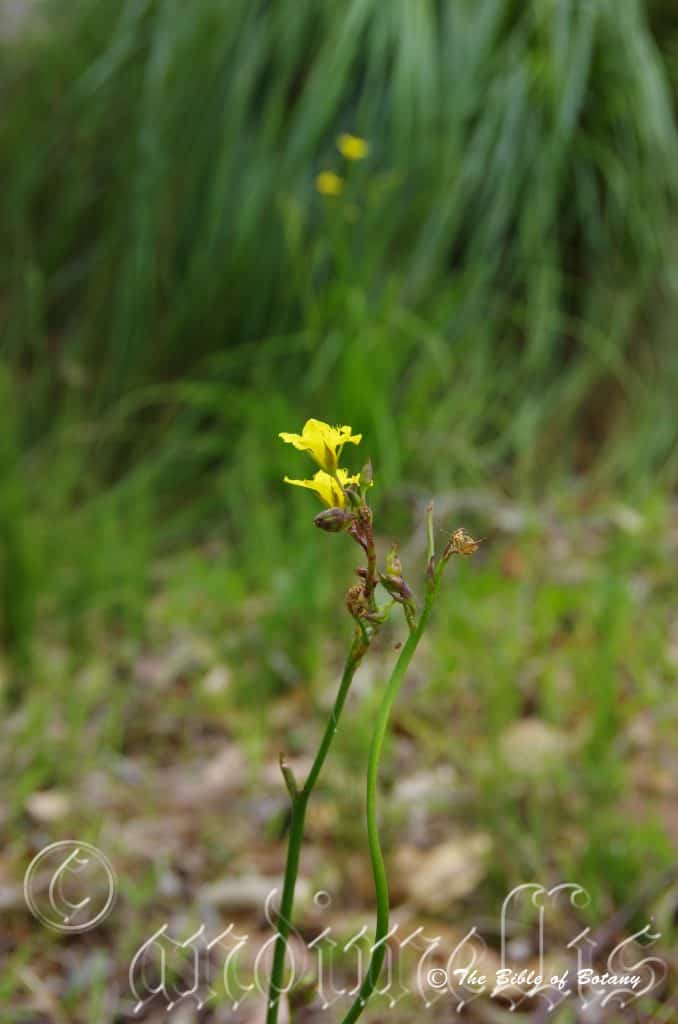
North Haven to Laurieton NSW
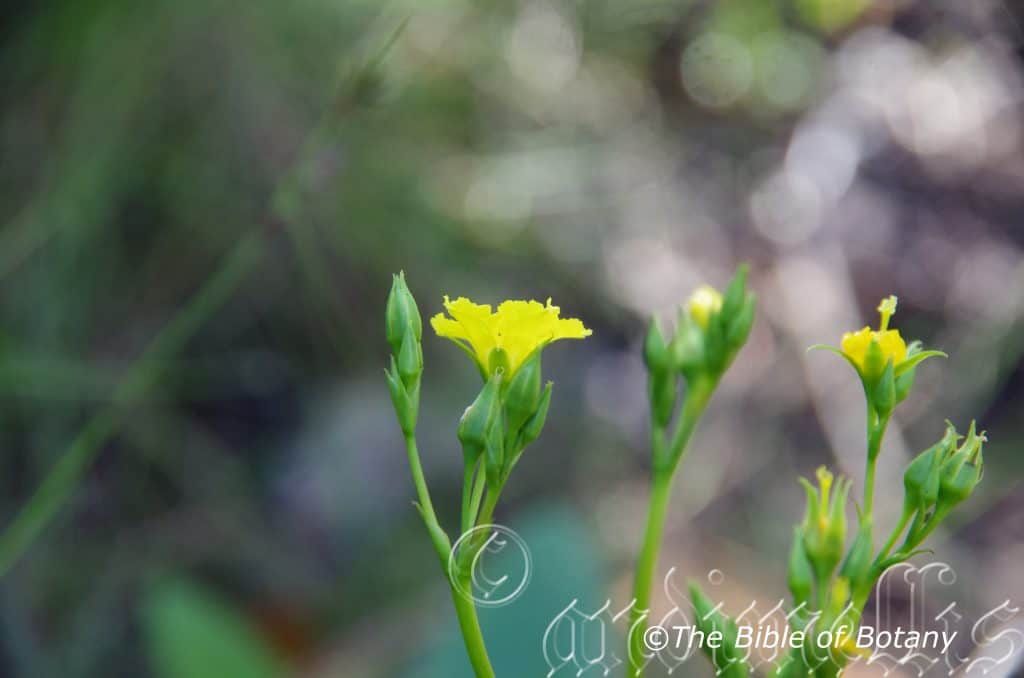
Yuraygir National Park NSW
Liparophyllum exaltatum
Classification:
Unranked: Eudicots
Unranked: Asterids
Subclass: Magnoliidae
Superorder: Asteranae
Order: Asterales
Family: Menyanthaceae
Genus: From Liparos, which is Ancient Greek for smooth and oily and Phullon/Phýllon, which is Ancient Greek for foliage or the leaves. It refers to leaves, which are similar to those of the Liparis genus.
Specie: From Ex, which is Ancient Greek for out of the ordinary or outside or external and Alatus, which is Latin for lofty or tall. It refers to shrubs, which are much taller than all the other species in the genus.
Sub specie:
Common Name: Yellow Marsh Flower, Erect Marsh-flower.
Distribution:
Liparophyllum exaltatum is found south from Miriam Vale in central coastal Queensland to east Melbourne.
It is found further west on the Grampians in Victoria and between Inman Valley and Spring Mountain near Victor Harbour in South Australia.
In Tasmania It is found from Saint Helens to the Friendly Beaches on the east coast.
https://avh.ala.org.au/occurrences/search?taxa=Liparophyllum+exaltatum#tab_mapView
Habitat Aspect Climate:
Liparophyllum exaltatum prefers full sunlight to very light dappled shade. It grows in wet boggy sandy soils with subsurface water or open stationary or slow flowing water to 30 degrees centigrade. It favours the inner sanctums of swamps and wet wallums well away from the edges to ephemeral pools. The altitude ranges from 5 meter ASL to 65 meters ASL.
The temperatures range from minus 2 degrees in August to 38 degrees in January.
The rainfall ranges from lows of 500mm to 2100mm average per annum.
Soil Requirements:
Liparophyllum exaltatum prefers course sands, fine sharp sands fatty light sandy clays to medium silty clays or fine silts to medium silts. The soils are usually derived from sandstones, granites, brown basalts, black basalts, metamorphic rocks, shale, alluvial deposits or accumulated peaty beach sands behind the frontal dunes. The soils pH ranges from 6pH to 7.5pH. It tolerates waterlogged soils growing in shallow water throughout its life. Non saline soils to moderately saline soils are tolerated.
Height & Spread:
Wild Plants: 1m to 1.5m by 0.3m to 0.5m
Characteristics:
Liparophyllum exaltatum is an erect an erect, tufted, perennial aquatic herb. The 1 to 3 emergent stems and leaves measure 0.2 meters to 1.5 meters in height overall. The leafy stems terminate in the inflorescence.
The ovate to lanceolate leaves of Liparophyllum exaltatum measure 60mm to 150mm in length by 45mm to 115mm in width. The stipules are absent on this specie. The petioles measure 130mm to 400mm in length. The bases are rounded to cordate while the apexes are obtuse-acute. The concolourous laminas are deep green to deep olive green, dull to semi glossy and glabrous. The laminas are flat to recurve slightly upwards from the mid vein to the margins while the margins are entire and reddish to reddish maroon or green on the lower surface with the veins terminating in deep reddish-maroon. The midvein is very strongly obtusely prominent on the lower lamina and is distinctly visible from the upper lamina. The lateral veins are prominent on the lower laminas and are clearly visible from the upper laminas.
The inflorescences of Liparophyllum exaltatum are panicles born from the stem terminal. The open panicles have 4 to 8 branches with 3 to 8 individual flowers. The panicles measure 200mm to 400mm in length. The heterostylous flowers measure 16mm to 30mm in diameter. The narrow lanceolate bracts are deep green to deep olive green often tinged deep maroon and measure 15mm to 25mm in length. The 5 mid green to mid olive green often tinged deep maroon, lanceolate calyx lobes measure 4.5mm to 8mm in length. The bright yellow corolla tube measures 9.5mm to 18mm in length. The 5 corolla lobes are oblong to oblong-elliptical with an acuminate apex which extends slightly beyond the deeply mucronate winged apexes. The bases of the lobes are covered in long bright yellow pilose hairs while the wings margins are deeply lacerated. The lobes measure 7mm to 12mm in length by 1.5mm to 2mm in width while the wings measure 8mm to 14mm in length by 1.6mm to 2mm in width each side of the lobe.
The 5 deep maroon-brown sagittate anthers are opposite the lobes at the entrance of the corolla tube and measure 2mm to 2.5mm in length. The style is bright yellow, is inserted or exserted and measures 3mm to 23mm in length while the bilobed clavate stigma is bright yellow to bright yellow-green. The flowers appear from late September to May.
Liparophyllum exaltatum’s fruits are globose capsules. The deep green to deep olive green often tinged deep maroon capsules are glabrous and measure 4mm to 5mm in length by 3mm to 4.5mm in diameter. The mid reddish-brown to deep brown seeds are covered in an off white caruncle while the surfaces are tuberculate. The seeds measure 1.7mm to 2.8mm in length by 1.5mm to 2.5mm in diameter.
Wildlife:
Liparophyllum exaltatum’s are attended by unknown ants when in flower. The ants do not harvest mites or aphids.
Cultivation:
Liparophyllum exaltatum’s are beautiful small erect herbs that grow particularly well on wet problemsome soils. It is suitable for small, medium or large gardens close to the coast or high in the mountains in warm temperate, sub tropical or tropical gardens. As garden subjects it grows from 1 meter to 1.5 meters in height by 0.3 meters to 0.5 meters in diameter when grown in the open. It is cold tolerant to temperatures at least as low as minus 1 degree once established.
It is best used as an understory perennial in warm moist heath gardens or in a moist Eucalyptus gardens where there is plenty of ground light. Placed in the foreground or midground and mass planted centrally as a feature offer quick coverage while adding nitrogen to the soil. Surrounded by other small native shrubs with red, pink, orange or lilac flowers will look very powerful or surrounded by white flowers will give a soft gentle scene.
Mass plantings are best achieved by planting them at 0.4 meters to 0.7 meter centres.
Propagation:
Seeds: Liparophyllum exaltatum seeds can be sown directly into a seed raising mix. Cover the seeds with 1mm to 5mm of fine weed free mulch and keep moist. Place the tray in a warm sunny position and keep moist not wet. When the seedlings are 20mm to 30mm tall, prick them out and plant them into 50mm native tubes using a good organic mix.
Once the seedlings reach 100mm to 150mm in height they can be planted out into their permanent position.
Fertilize using seaweed, fish emulsion or organic chicken pellets soaked in water on an alternate basis. Fertilize every two months until the plants are established then twice annually in early September or March to maintain health, vitality and better flowering.
Further Comments from Readers:
Hi reader, it seems you use The Bible of Botany a lot. That’s great as we have great pleasure in bringing it to you! It’s a little awkward for us to ask, but our first aim is to purchase land approximately 1,600 hectares to link several parcels of N.P. into one at The Pinnacles NSW Australia, but we need your help. We’re not salespeople. We’re amateur botanists who have dedicated over 30 years to saving the environment in a practical way. We depend on donations to reach our goal. If you donate just $5, the price of your coffee this Sunday, We can help to keep the planet alive in a real way and continue to bring you regular updates and features on Australian plants all in one Botanical Bible. Any support is greatly appreciated. Thank you.
In the spirit of reconciliation we acknowledge the Bundjalung, Gumbaynggirr and Yaegl and all aboriginal nations throughout Australia and their connections to land, sea and community. We pay our respect to their Elders past, present and future for the pleasures we have gained.
Lipocarpha microcephala
Classification:
Unranked: Monocots
Unranked: Commelinids
Order: Poales
Family: Cyperaceae
Genus: From Leipor, which is Ancient Greek for to fall and Karpha, which is Ancient Greek for chaff. It probably refers to the chaff, which falls early or easily when knocked.
Specie: From Mikrós, which is Ancient Greek for small or very small and Kephalḗ, which is Ancient Greek for a head. It refers to the seed heads, which are rather small and compact when compared to other species in the genus.
Sub specie:
Common Name: Button Rush.
Distribution:
Lipocarpha microcephala is widespread over most of the northern half of mainland Australia. It is not found in the southern part of Western Australia or the western half of South Australia.
https://avh.ala.org.au/occurrences/search?taxa=Lipocarpha+microcephala#tab_mapView
Habitat Aspect Climate:
Lipocarpha microcephala prefers full sunlight to very light dappled shade. It grows in exposed situations in open country especially in shallow depressions that remain damp or wet for prolonged periods along seasonal and permanent creek and stream riparian zones. While it is widespread it never dominates its habitat. The altitude ranges from 15 meter ASL to 1160 meters ASL.
The temperatures range from minus 4 degrees in August to 40 degrees in January.
The rainfall ranges from lows of 250mm to 3000mm average per annum.
Soil Requirements:
Lipocarpha microcephala prefers course sands, fine sharp sands fatty sands to light clays. The soils are usually derived from sandstones, granites, metamorphic rocks or alluvial deposits. The soils pH ranges from 4.5pH to 7pH. It tolerates seasonally waterlogged soils with prolonged dampness. Non saline soils to moderately saline soils are tolerated.
Height & Spread:
Wild Plants: 0.2m to 0.3m by 0.25m to 0.8m
Characteristics:
It grows as an open perennial with medium rhizomes. The culms are rigid, erect, smooth and glabrous. The culms measure 20mm to 350mmm in length by 0.7mm to 1mm in diameter.
The linear leavesmeasure 20mm to 300mm in length by 1mm microcephala to 2mm in width. The leaf sheaths are absent. The leaf bases are clasping while the apexes are acute. The concolourous laminas are grass-green, smooth and semi glossy. The laminas are flat while the margins are entire.
The inflorescences are ovoidal spikes. The 1 to 4 spikes measure 2mm to 8mm in length by 2mm to 4mm in diameter. The 2 or 3 involucral bracts are divaricate and measure 8mm to 12mm in length.
The few spikelet bract is oblong to obovate with either no nerves or 1 or 2 distinct nerves on each side. The pale brown often tinged reddish-brown linear bracts measure 1mm to 1.7mm in length and have a mucronate apex which measures 0.5mm to 0.7mm in length. The hyaline scales usually measure 0.6mm to 1mm in length or at times are reduced or rarely absent.
The 1 or 2 stamens have filiform, white filaments while the white obloidal anthers measure 0.2mm 0.4mm length while the appendage measures 0.5mm to 0.6mm in length. The white style is usually bifid or at times is trifid. The flowers appear from September to March.
The fruits are narrow ellipsoidal nuts. The pale brown nuts are glabrous and measure 0.7mm to 1mm in length by 1.7mm to 2mm in diameter.
Wildlife:
Lipocarpha microcephala’s wildlife is unknown to the author.
Cultivation:
Lipocarpha microcephala are small sedges that can be used for a lawn in a sunny to partially shaded areas in moisture problem soils.
Propagation:
Seeds: Collecting seeds from mature plants of Lipocarpha microcephala is not difficult. The seeds can be sown directly into a seed raising mix. Cover the seeds with 1mm to 5mm of fine weed free mulch and keep moist. Place the tray in a warm sunny position and keep moist not wet. When the seedlings are 20mm to 30mm tall, prick them out and plant them into 50mm native tubes using a good organic mix.
Once the seedlings reach 60mm to 100mm in height they can be planted out into their permanent position.
Alternatively the seeds can be sown into a prepared plot, raked over and thoroughly watered.
Fertilize using seaweed, fish emulsion or organic chicken pellets soaked in water on an alternate basis. Fertilize every two months until the plants are established then twice annually in early September or March to maintain health, vitality and better flowering.
Further Comments from Readers:
Hi reader, it seems you use The Bible of Botany a lot. That’s great as we have great pleasure in bringing it to you! It’s a little awkward for us to ask, but our first aim is to purchase land approximately 1,600 hectares to link several parcels of N.P. into one at The Pinnacles NSW Australia, but we need your help. We’re not salespeople. We’re amateur botanists who have dedicated over 30 years to saving the environment in a practical way. We depend on donations to reach our goal. If you donate just $5, the price of your coffee this Sunday, We can help to keep the planet alive in a real way and continue to bring you regular updates and features on Australian plants all in one Botanical Bible. Any support is greatly appreciated. Thank you.
In the spirit of reconciliation we acknowledge the Bundjalung, Gumbaynggirr and Yaegl and all aboriginal nations throughout Australia and their connections to land, sea and community. We pay our respect to their Elders past, present and future for the pleasures we have gained.